The Perfect 3 Week Japan Itinerary
This page may contain affiliate links which earn us a commission at no extra cost to you to support the site. Thank you!
Wondering how to spend 3 weeks in Japan? Our itinerary below gives you a perfect starting point for your first time in Japan!
Japan is an absolute dream destination. From traditional temples to beautiful nature reserves and high-tech cities – it has something for everybody. It’s a world on its own and spending three weeks in Japan is a perfect amount to get a good impression of what this country is all about.
This 3 week Japan itinerary will hopefully help you plan a trip to Japan – or inspire you to finally book those flights! From Tokyo to Miyajima Island, let’s dive in!

Day 5 in Tokyo – Tokyo Tower and Roppongi
Miyajima island (1 day), international money card, 3 week japan itinerary.
From Tokyo, all the way to Miyajima Island, stopping at some of the best highlights of Japan. In three weeks, you’re able to see so much of what Japan has to offer . Feel free to adjust the itinerary to your needs and wishes – this is just an idea/inspiration for you!
Tokyo (5 days)
We start these 3 weeks in Japan in Tokyo. Tokyo has two airports, Haneda and Narita , and while it doesn’t really matter which one you fly into, Haneda is a lot closer to the centre. Make sure you know how to get to your hotel from either airport before you fly – especially after such a long flight, the last thing you want is to stress about getting to your hotel!
When you have three weeks to explore Japan, you want to take some time to explore its capital city. Tokyo is BIG. You can literally spend a month here and still find new and exciting hotspots. Five days may seem like a long time, but it’s barely enough to scrape the surface. We divide these five days in Tokyo in some of the most popular wards of the city.
I’d recommend booking a hotel for 8 nights in Tokyo. Even though you will only spend 5 days in Tokyo itself, the three days afterwards will be day trips from Tokyo. To avoid problems with carrying your suitcases from hotel to hotel, it’s much easier to just stay at the same hotel.
Wondering where to stay in Tokyo ? We stayed at Sotetsu Fresa Inn Higashi Shinjuku. Shinjuku is located in the heart of Tokyo, which makes it easy to get to any other part of the city by metro (which is literally located next to the hotel). I really enjoyed staying here and would definitely recommend it.
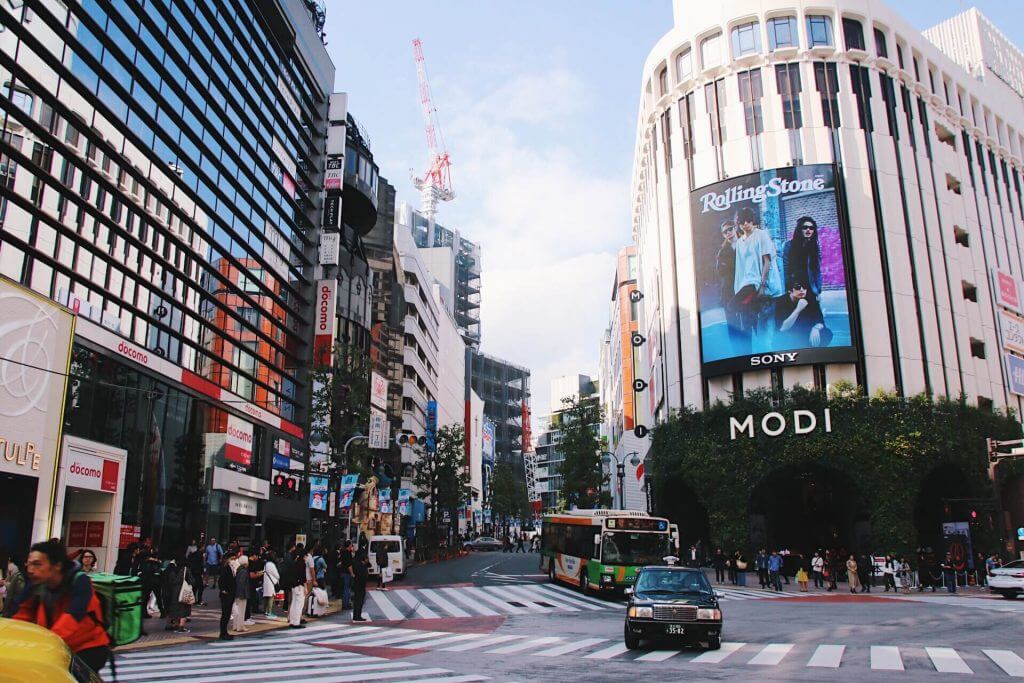
Day 1 in Tokyo – Shibuya and Harajuku
On the very first day of your trip to Japan, we dive right into the busy streets of Tokyo. There are so many things to do in Tokyo ! But we’ll start by making our way to Shibuya in the morning to see:
- Shibuya crossing: The busiest crossing on the planet can be found in the middle of Shibuya. It’s quite an experience to walk across the street yourself, alongside the sea of others. Head over to the Starbucks across the road for a coffee and an amazing view over the crossing. Perfect for a timelapse or some photos 😉
- Hachiko statue: A statue to commemorate Tokyo’s favourite and most famous dog, Hachiko. You can find the statue right outside Shibuya station.
- Shopping in Shibuya: Shibuya is known to be one of the business and shopping wards of Tokyo, so it makes sense to have a little look around for some souvenirs. Some of the best shops include Vanguard Village, MODI, Shibuya109, Disney Store and Tokyo Hands.
In the afternoon, you can walk from Shibuya to Harajuku. You can take the metro but it’s only a 15-minute walk from Shibuya and it gives you the chance to walk through this beautiful Japanese neighbourhood. Harajuku is known for its vibrant fashion style and pop culture. Here are some things to check out when in Harajuku:
- Shopping in Harajuku: Harajuku is filled with the cutest little fashion boutiques and fun shops that sell the craziest items. The two main streets for the best shops in Harajuku are Takeshita Street and Omotesando Avenue.
- Harajuku crepe: When in Harajuku, try one of the popular Harajuku Crepes. They have multiple shops all over the area and literally hundreds of fillings (from sweet to savoury).
- Purikura: Japanese photo booths are very popular among teens and a must-try when in Tokyo. After taking some photos, you can edit them to look more kawaii and get a little print to remember your time in Harajuku.
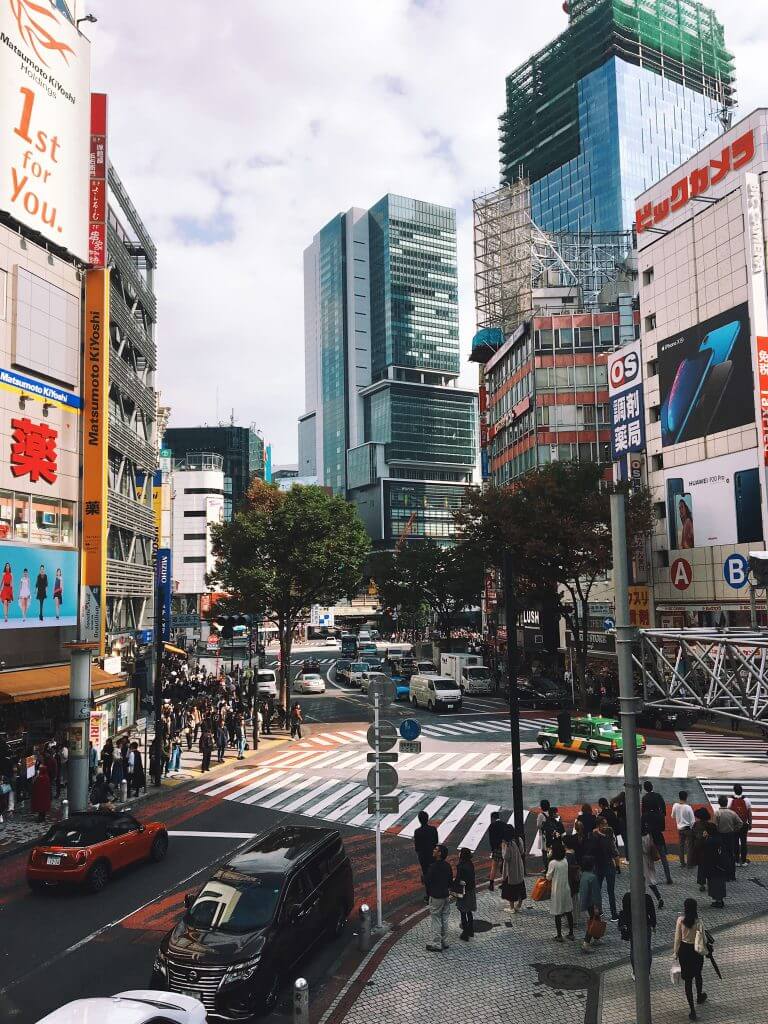
Day 2 in Tokyo – Ikebukuro and Meiji Shrine
Start the second day in Japan with some shopping in the upcoming Ikebukuro, then head over to one of the main shrines in the city, Meiji Shrine.
- Shopping in Ikebukuro : This Tokyo ward is huge in shopping, filled with high street stores and restaurants. Some fun ones to check out are Bic Camera, Loft and Sun Drug.
- Tokyo Pokemon Mega Store: One of the main highlights in Ikebukuro is the biggest Pokemon Centre in Japan, Tokyo Pokemon Mega Store. You can find this shop on the second floor of the Sunshine City shopping centre.
- Coco curry: Japan is filled with the most amazing dishes, but one you should really try is Japanese curries. CoCo Curry Ichibanya is a chain in Japan that can be found in quite a few places, but also in the Sunshine City shopping mall. A perfect spot to grab some lunch before continuing your day in Tokyo.
In the afternoon, head back to Harajuku Station. The entrance of Meiji shrine can be found not far from here.
Because Meiji Shrine is so close to Harajuku, it makes sense to grab some dinner in this part of Tokyo. Harajuku is also home to many karaoke bars, where you can experience another piece of Japanese culture.
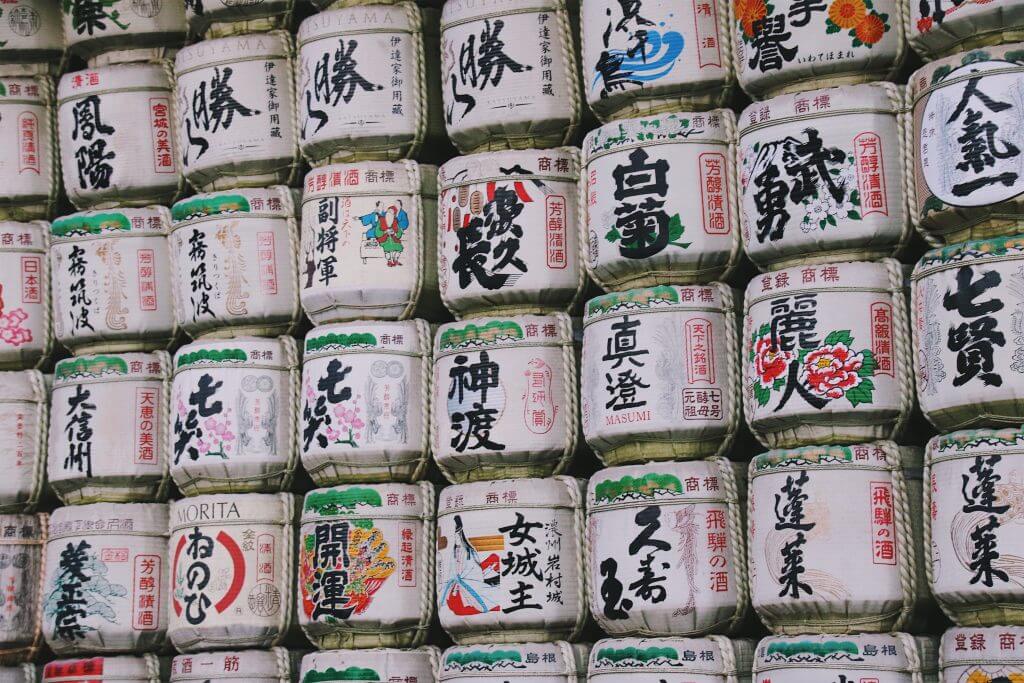
Day 3 in Tokyo – Asakusa and Akihabara
Day three in Tokyo is a day filled with contrasts. Starting at the traditional Sensoji temple and heading towards the hyper-modern Akihabara (also known as electronic town ) in the afternoon.
Sensoji is located in Asakusa. After arriving at Asakusa station, you can find Tokyo’s oldest temple just a few minutes away. The temple dates back to the year 645. On the temple grounds, you can find many smaller shrines alongside the big attraction. A fun thing to do at Senso-ji is O-mikuji : a Japanese form of fortune-telling. It only costs ¥100 and – if you happen to get bad fortune – you can leave your bad fortune at the temple for a better future.
From Asakusa, make your way to Akihabara by metro. Akihabara is literal heaven for those who like electronics, anime, video games and other pop-culture references. It’s got that real high-tech Japan feel to it and it’s a really cool place to explore. Some highlights to check out include:
- Shop at retro game camp: Akihabara has some amazing retro-game stores which really kick in the nostalgia. Retro Game Camp is by far the best one in Tokyo – all games come with newly fitted batteries and you can barely see any scratches on them!
- Visit a maid cafe: Japan has some crazy cafes. One of the most popular and well-known is the maid cafe – and there are quite a few in Akihabara. Even though it may be a bit strange, it definitely makes for an amazing experience.
- Play in one of the many arcades: As you may expect, Akihabara is also filled with the most amazing arcades. Make sure to explore more than just the first floor (where you can find mainly claw machines). There are some awesome games to play from the second floor up.
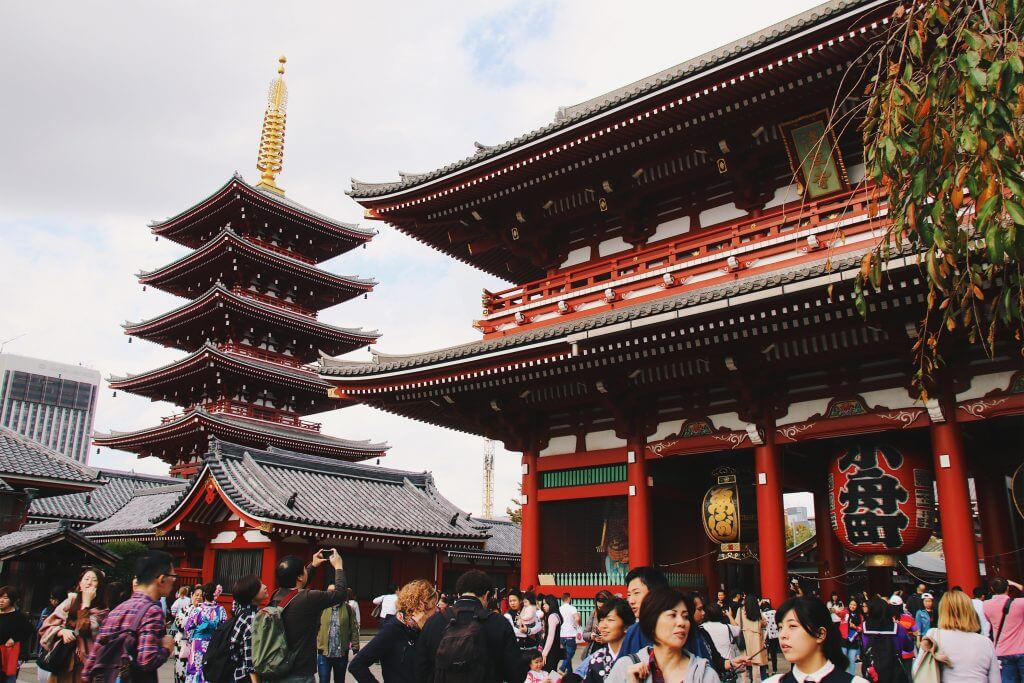
Day 4 in Tokyo – Koto City
In Koto City, you can find the interactive art exhibitions Teamlab Planets and Teamlab Borderless . We decided to go to Teamlab Planets and absolutely loved it. It’s such a unique experience (walking up a waterfall, through an infinity room and more) that you really shouldn’t miss when you’re in Japan before they end it.
Just a couple of metro stops from the Teamlabs exhibitions, you can find the Gundam base . Even though I wasn’t very familiar with the anime, my boyfriend absolutely loved it. And to be honest, it was pretty cool 😉 They have a life-sized Gundam outside the shopping mall that moves every hour on the hour.
If your hotel is located in Shinjuku (would highly recommend this!), you’re in for a bit of fun! Shinjuku has a lively night scene, which is perfect for an evening to unwind. Whether you want to drink some sake in one of the many bars or play the famous pachinko game – definitely spend a few hours here before heading to bed.
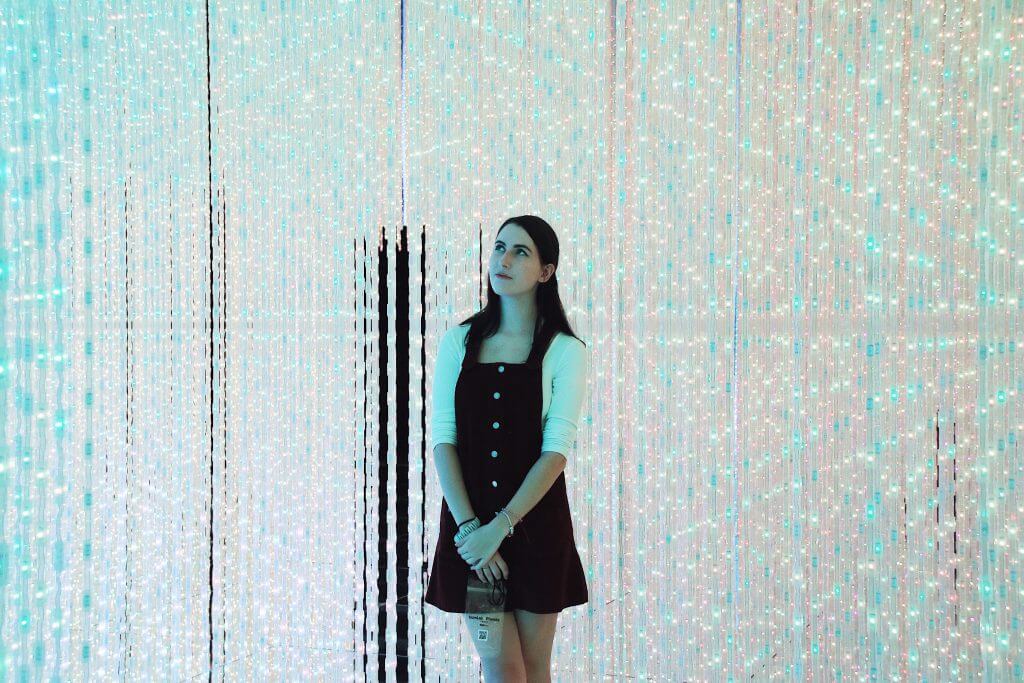
The fifth and last day to explore Tokyo will be spent at the famous Tokyo Tower and the Roppongi ward. Make your way to Hamamatsuchō station first. From there you can stop by the beautiful Zojoji Temple before heading to Tokyo Tower.
Tokyo Tower itself is obviously one of the most iconic sights of Japan’s capital, and therefore deserves a little visit. You can head all the way to the top for a little fee, but you can also nose around the many shops on the first few floors for free.
In the late afternoon, keep walking towards Roppongi . This part of Tokyo is one of dazzling nightlife for both locals and tourists. Some things to do before heading to the nearest bar:
- Mori Art Museum: The largest contemporary art museum in Tokyo. It’s located at the top of the central Mori Tower where you can take some amazing photos of Tokyo.
- Nogi Shrine: A beautiful samurai shrine.
- Tokyo City View: If you missed the view at Mori Art Museum, definitely check out Tokyo City View in the Roppongi Hills – another opportunity to take some stunning photos of Tokyo.
For a more detailed Tokyo guide, check out my 6-day Tokyo itinerary . This is basically the same 5 days as described in this itinerary, but with an additional day at Tokyo Disney Sea or Tokyo Disney Land.
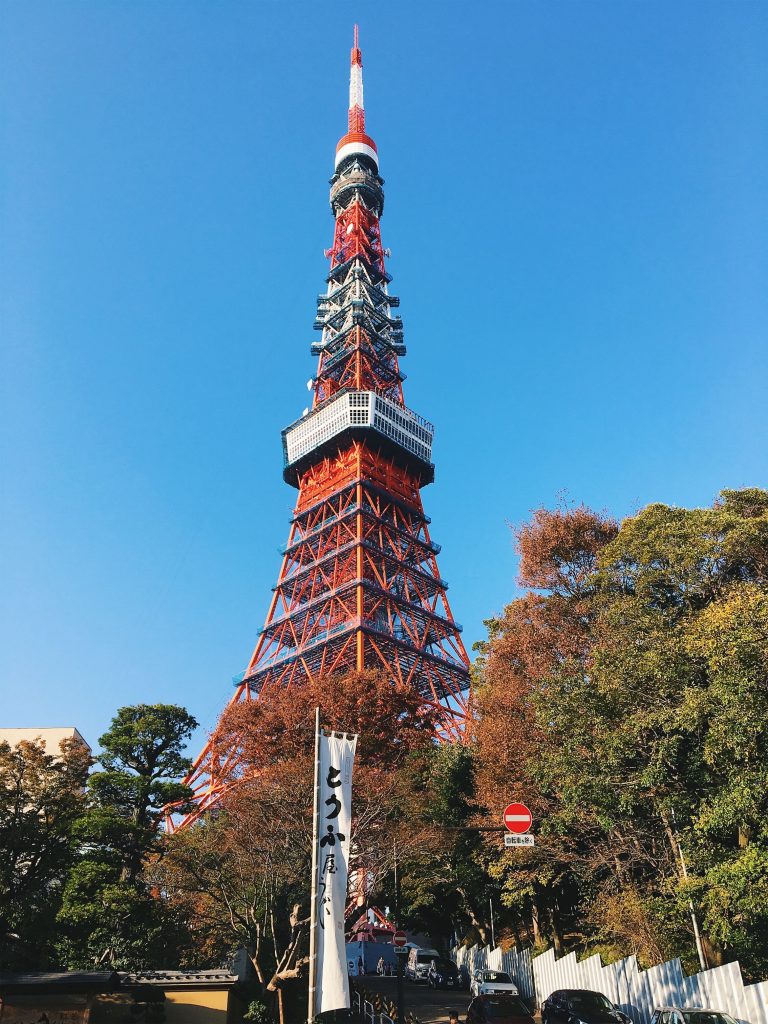
Get Your Free Japan Guide
Subscribe to our monthly newsletter and receive my FREE downloadable Japan Travel Guide . Including everything you need to know before visiting Japan!
You can unsubscribe anytime. For more details, review our Privacy Policy . (We promise not to spam!)
Almost there!
Thank you! Make sure to go to your inbox to confirm your newsletter subscription for your free Japan travel guide.
Nikko (1 day)
While staying in the same hotel in Tokyo, we’re going to make a few day trips from the city. Rather than having to move all your luggage with you to a new hotel for one night, staying at the same hotel makes life just a little easier 😉 On the sixth day of our Japan itinerary, we take a day trip to Nikko. You can use the Nikko Pass for this day trip.
Nikko lies north of Tokyo in the Tochigi Prefecture. It takes about 2 hours each way to get there and back from Tokyo. Nikko is known for its forests, waterfalls and natural hot springs – a perfect and peaceful day away from the busyness of Tokyo.
You can check out my one day Nikko itinerary , which includes a map and route to take for an optimal day trip from Tokyo. Some of the best things to do in Nikko include:
- Shinkyo Bridge: Not far from the train station, the Shinkyo bridge is our first stop of the day. This sacred bridge is the gateway to the shrines and temples that can be found inside the city.
- Rinnoji Temple: This UNESCO world heritage site was originally founded by the Buddist monk who brought Buddism to the city in the 8th century.
- Toshogu Temple: Nikko’s most notable temple, Toshogu Temple, is the last resting place of Tokugawa Ieyasu. The beautifully decorated temple is unlike any other temple in Japan. It’s absolutely stunning.
- Kegon Falls: In the afternoon, head over to Nikko National Park for an afternoon in Nikko’s beautiful nature reserve. There are many hiking trails inside the park, but when you only have a short time, I’d recommend going to Kegon Falls. At 100 meters in height, this is one of the most beautiful waterfalls in Japan.
- Ryuzu Falls: Add Ryuzu Falls (translated: Dragon Head Falls ) to your day if you have enough time. There is a small observation deck that you can visit for free that gives you a beautiful view over it.

Hakone (1 day)
Hakone is another popular day trip from Tokyo due to it being such a charming little town. You can find a gorgeous view of Mount Fuji here, as well as onsens, shrines and more. When visiting Hakone for the day , check out the following:
- Hakone Shrine: Possibly Hakone’s most famous and iconic sight is Hakone Shrine. Looking out across Lake Ashi, this torii gate gives you such a peaceful and calming feeling. It’s an absolute must when in Hakone to visit this spot.
- Hakone Open-Air Museum: Alongside tons of sculptures and other amazing pieces of art, Hakone open-air museum also hosts some of Picasso’s drawings and paintings.
- Onsen: Hakone is known for its many onsens. If you want to try one of these typical Japanese hot spring spas, check out Yunessun. This onsen allows you to wear a swimsuit and don’t separate men and women. It’s the perfect place to try an onsen out for the first time.
- Owakudani (Boiling Valley): Taking a gondola up the mountain you can already take a peek into the ominous volcanic landscape. Even though this volcano erupted 3000 years ago, the landscape has been forever changed. Walking near the volcanic zone, you can purchase a black egg. This egg has been boiled in naturally boiling water and is said to prolong your life – worth a shot, I’d say 😉
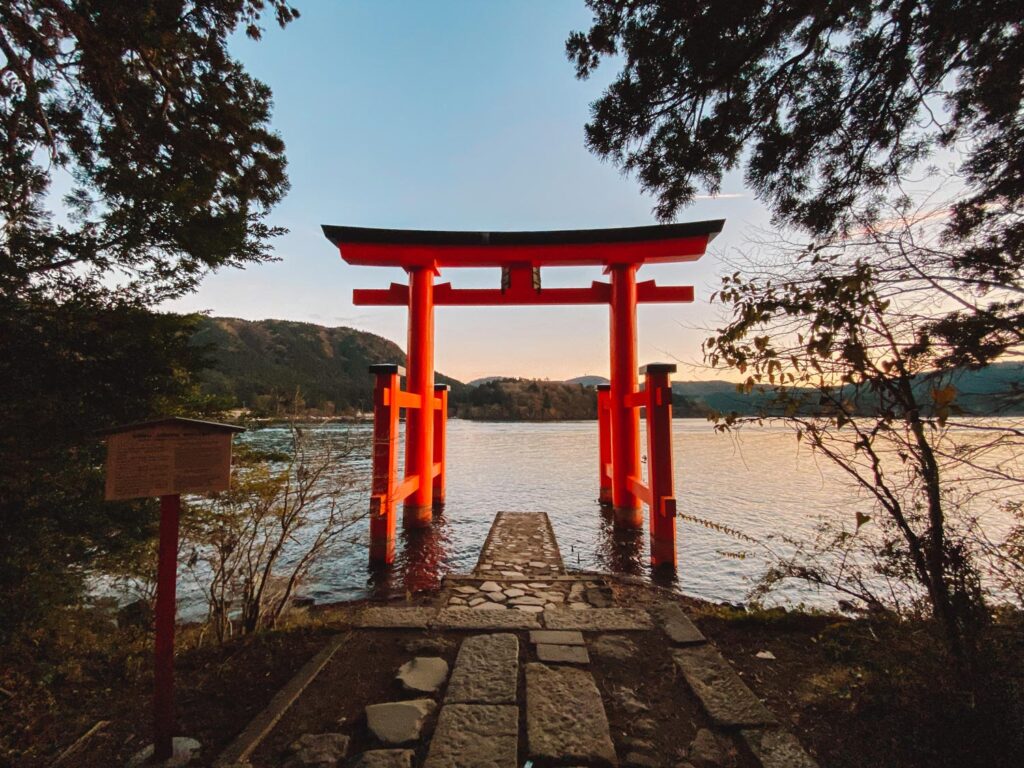
Mt Fuji (1 day)
When spending three weeks in Japan, you kinda have to see the iconic Mount Fuji. From Tokyo, you can easily take a day trip out to visit some of the best Mount Fuji viewing spots. This iconic mountain isn’t one of Japan’s most iconic sights just because of its aesthetics, this volcano is also Japan’s highest mountain at 3776 meters. You can choose to climb Mount Fuji during the climbing season (July-September), but the hiking trails usually take a full day – I’d recommend finding a hotel nearby if you want to climb it!
But you won’t be able to see Mount Fuji when climbing it 😉 There are quite a few places where you can see Mount Fuji – like Hakone – but the Fuji Five Lake region is your best chance of seeing Mount Fuji in all its glory. The mountain is known to hide in the mist quite often, so visiting this area gives you the best chance of capturing it.
- Chureito Pagoda: If you think of Mount Fuji, chances are that you imagine a photo with a red pagoda in the front. This is probably the most photographed spot in the whole of Japan! Especially when the sakura is blooming, this spot embodies so much of what is classic Japan.
- North shore of Lake Kawaguchiko: One of the most breathtaking places to see Mount Fuji is from the north shore of Lake Kawaguchiko. Especially if you’re visiting in spring or autumn, nature makes it look even more beautiful.
You can book a Mount Fuji tour from Tokyo that takes you to the best viewing spots! This way, you don’t have to worry about making it to all the best spots on your own.

Kyoto (3 days)
After those day trips from Tokyo, it really is time to leave Tokyo and head over to Kyoto. Using the shinkansen, it takes about two and a half hours to get to Kyoto.
Wondering where to stay in Kyoto for three nights? I recommend staying in downtown Kyoto, as it’s close to all the major sights, it’s easy to get around, and you can walk to the Geisha district in under 10 minutes. My hotel recommendation is Hotel Resol Kyoto Kawaramachi Sanjo .
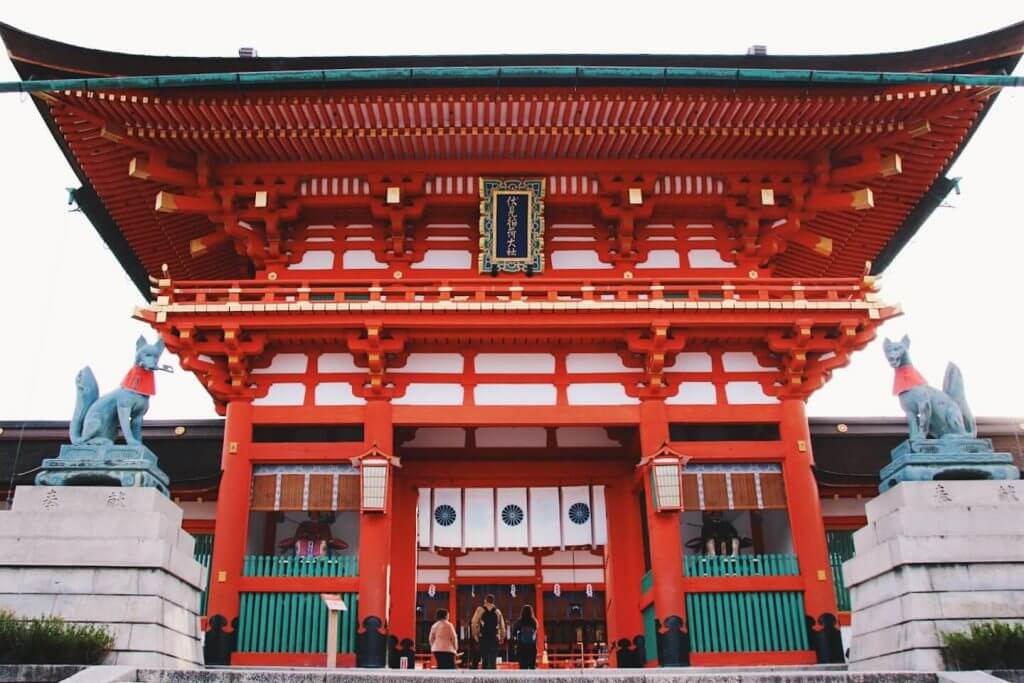
Kyoto represents Japan very well. In a way, the city has such big contrasts between traditional and hyper modernity. From temples that have been there for over a thousand years to skyscrapers in Kyoto’s centre.
On the first day in Kyoto, I wouldn’t plan too much. You’ll be travelling by Shinkansen from Tokyo and checking into your hotel. Maybe head into the city centre for a first glimpse of the city – but when travelling through a country for three weeks, it’s not a bad idea to take a little rest day.
Because you only really have two full days in Kyoto , I’d recommend seeing the following highlights:
- Fushimi Inari Taisha: My personal favourite sight in Kyoto. The thousands of red torii gates that lead you up to Mount Inari. The hike to the summit of Mount Inari and back takes about 2-3 hours but is totally worth your time. I’d recommend going early in the morning to avoid the huge seas of tourists.
- Higashiyama and Gion: After Fushimi Inari, head over to the old geisha districts of Kyoto. Higashiyama and Gion lay next to each other and are filled with the most beautiful old tea houses and shrines. Take the afternoon to walk through the neighbourhoods and stop by several sights as Kiyomizu-Dera, Kodaiji Temple and the Yasaka Pagoda. In the evening, stop by Pontocho Alley to dine in one of the most beautiful streets of the city.
- Kinkaku-ji: Start the next day by visiting the Golden Pavillion (also known as Kinkaku-ji). Being one of Kyoto’s 17 UNESCO world heritage sites, this gorgeous zen temple has to be on your Kyoto itinerary.
- Arashiyama Bamboo Grove: Head over to Arashiyama in the afternoon, where you can find the Arashiyama Bamboo Grove.
- Arashiyama Iwatayama Monkey Park: Not far from the Bamboo Grove, you can find Iwatayama Monkey Park. Located on top of a hill, you’ll be rewarded with a beautiful view over this part of Kyoto. 120 monkeys roam around the park freely and you can buy little bags of food to feed them (¥100 per bag).
- Kyoto Tower: In the evening, grab some dinner in Central Kyoto and stop by Kyoto Tower. Even though it’s not as famous as the Tokyo Tower, it’s still worth a visit. You can go to the top for ¥770, where you will find a 360 view over Kyoto (which is especially pretty at night)!
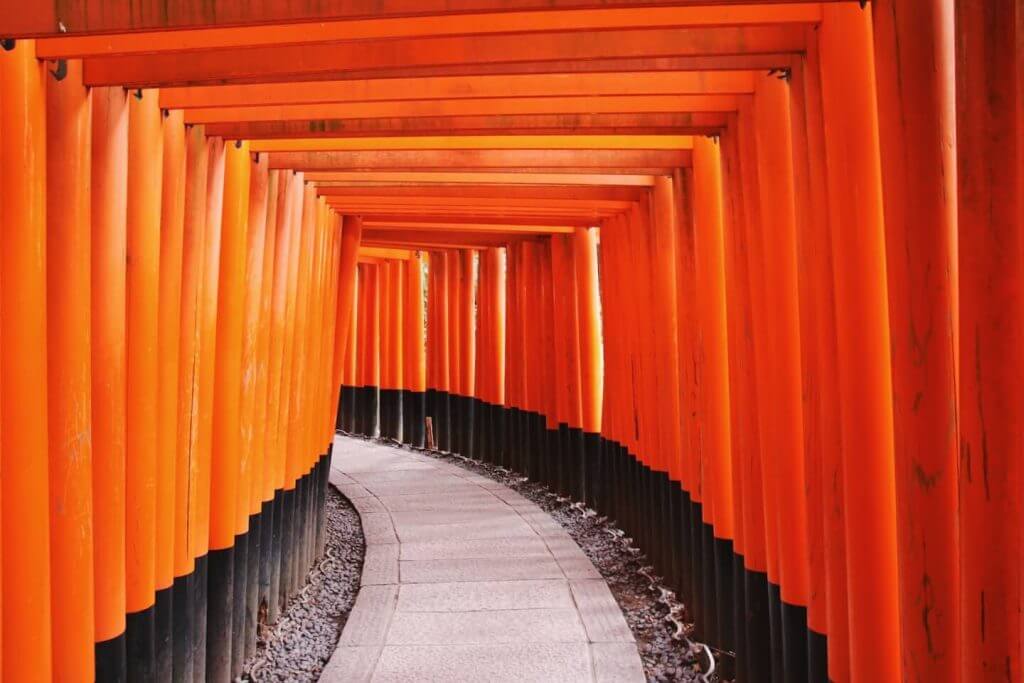
Osaka (2 days)
Using the Shinkansen, head over to Osaka in the morning. You will be staying in Osaka for 4 nights. We stayed in the Sonezaki Luxe Hotel in Osaka and even though it was the cheapest hotel we stayed in, it was also the best hotel we stayed in during our entire trip. Only 5-10 minutes by foot from the train station, lots of things to do around the hotel and a huge room (for Japanese standards).
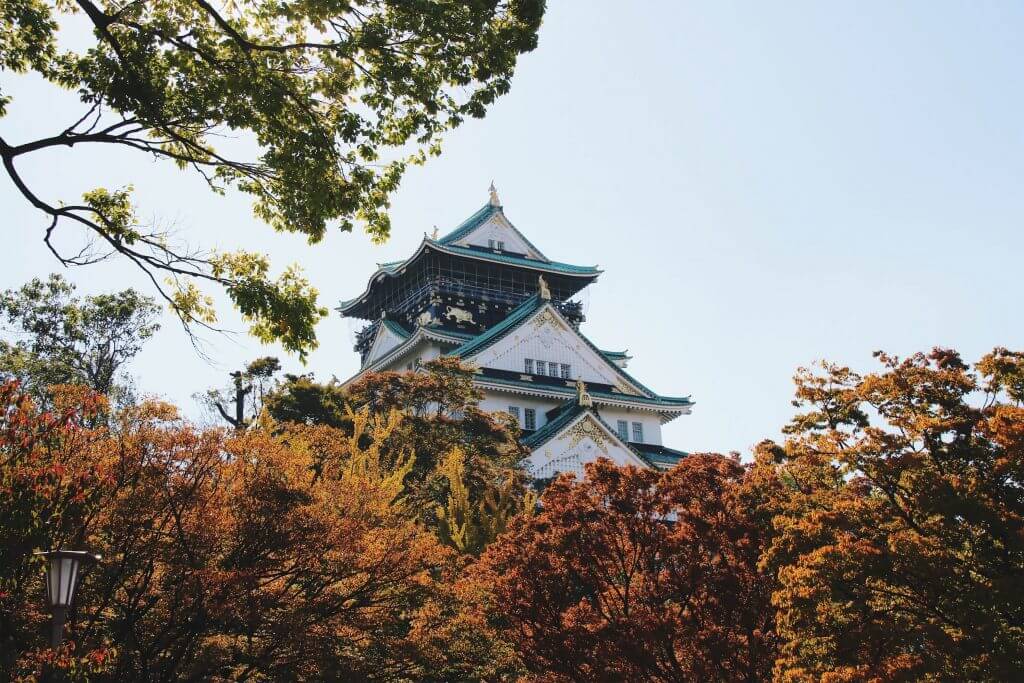
When spending 2 full days in Osaka , make sure to check out:
- Umeda Sky Building: Almost next to Osaka’s train station, the Umeda Sky Building stands tall. The Floating Garden Observatory is located on the 39th floor for a beautiful view across the city.
- Osaka Castle: Osaka’s pride and joy, the beautiful Osaka Castle. Inside, you can find a museum to learn more about the history of the castle and how it played a huge role in unifying Japan in the 16th century. Personally, I’m not quite sure if the entrance fee was worth it, but the view from the top was stunning!
- Shitennoji Temple: One of Japan’s oldest temples is also located in Osaka. When at the temple, also check out the 5-storied pagoda and the Gokuraku-Jodo Garden.
- Shinsekai : This Osaka district was developed in the early 1900s and modelled after Paris (as you can see looking at the Tsutenkaku Tower, which resembles the Eifel Tower). It’s the perfect place to try some of Osaka’s famous street foods such as Takoyaki and Okonomiyaki.
- Kuromon Market: Another spot to let your inner foodie live its best life. In this market, you can try tons more amazing dishes. Because Osaka stands so close to the sea, they have some of the best and freshest fish dishes in the whole of Japan!
- Minami/Dotonbori: This part of Osaka is filled with life. A sea of neon lights, music and the most amazing smells (street food everywhere!). In this district, you can find the famous Glico Man, the Moving Crab, and Hozenji Yokocho.
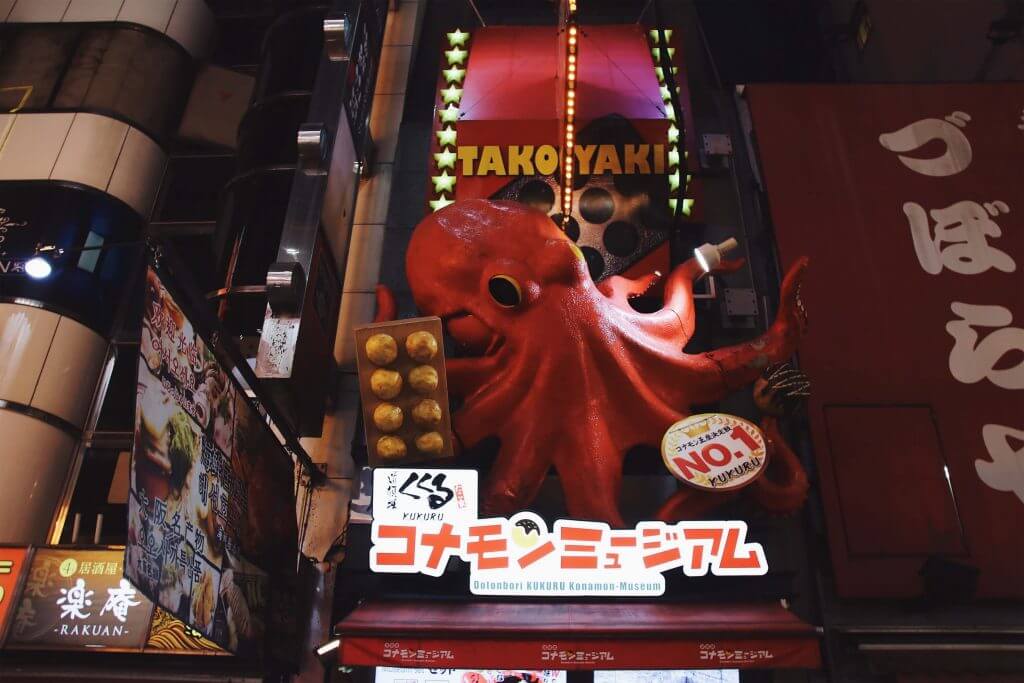
Nara (1 day)
From Osaka, it’s super easy to make your way over to Nara for a little day trip. Nara is a city that should not be missed when in Japan, especially if you’re in Osaka or Kyoto. This gorgeous little traditional town was Japan’s first capital city and hosts 8 UNESCO world heritage sites. Alongside the stunning temples and rich history of the city, Nara is mainly known for its deer park. In this park, 1200 deer roam around freely, posing for pictures and begging tourists for some of the tasty deer crackers that are sold all over the park. When in Nara , make sure to check out the following:
- Kōfuku-ji: You can find the first temple of the day just a few minutes from Nara’s train station. The Kōfuku-ji temple site includes the country’s second-tallest wooden pagoda, the southern Octagonal Halls and the Central Golden Hall. The temple grounds are free to enter, but the temples themselves require a small fee.
- Isuien Garden: A stunning Japanese garden that dates back to the 17th century.
- Todai-ji: The world’s biggest wooden structure (and one of Nara’s UNESCO world heritage sites), Todai-ji, was one of my favourite sights in Nara. Todai-ji dates back to the year 752 and its size is so incredible. To know that it’s made from wood only simply blows my mind. Inside, you can find the world’s largest Daibutsu-san (bronze Buddha statue).
- Kasuga-Taisha: Another UNESCO world heritage site, the Kasuga-Taisha. Known for its 3000 stone lanterns lining up towards the entrance.
- Nara Deer Park: And of course, Nara Deer Park. The icons of the city. You can buy some special crackers to feed them at stands all over the park. One fun thing to try is to bow for them. They’ve learned to bow back for a little treat 😉
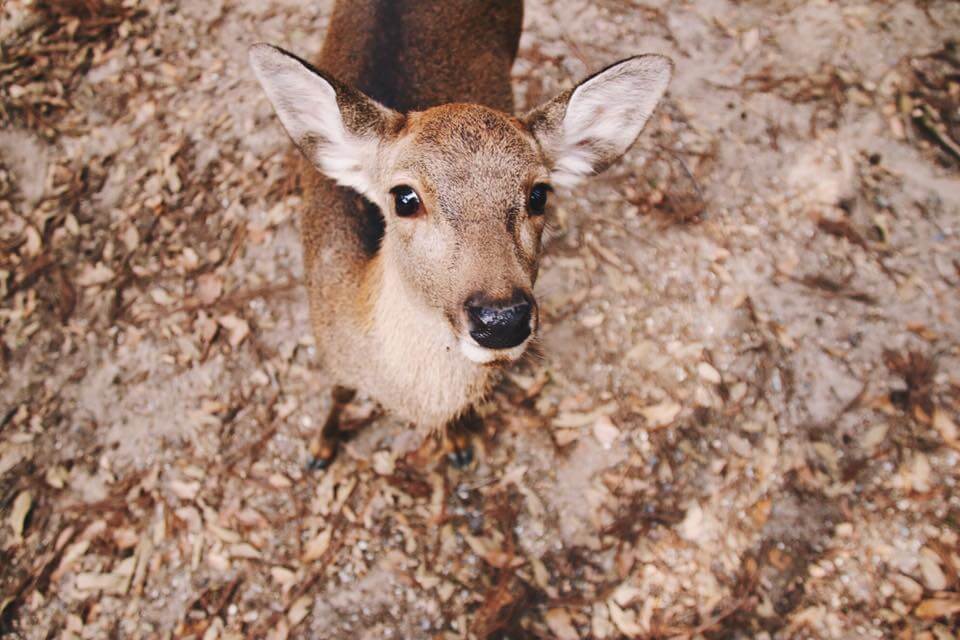
Kobe (1 day)
Another city you can visit for the day from Osaka is Kobe. The harbour town is mainly known for the tasty (and expensive) Kobe beef steak, but Kobe has way more to offer! From Osaka, it takes about an hour to get to Kobe by train – you can use your JR pass for this trip.
- Ropeway up Mount Rokko: Taking the cable cart up Mount Rokko gives you a stunning view across Hanshin region (Kobe and Osaka). On top of the mountain, you can find some more things to do such as a botanical garden and an observation deck.
- Soraku-en Garden: A traditional Japanese garden in the middle of Kobe. A bit of peace and quiet amidst the busy city.
- Kobe Port Tower: Possibly the most iconic Japan landmark in Kobe city, the port tower. With 5 different observation decks, it’s definitely worth a visit. You’ll be able to see all the way to Osaka on a clear day. As well as the observation decks, you will find many restaurants (including a 360 view restaurant) and shops in the tower.
- Nada Sake Museum: You can’t leave Japan without trying its popular rice wine, Sake. The Nada district in Kobe is actually Japan’s top sake production region. As well as many Sake breweries, you can find some museums here to learn all about this tasty alcoholic drink.
- Try Kobe Beef: Kobe’s claim to fame has to be its special beef. It is considered to be the tastiest beef on the planet. Only 3000 cattle qualify each year to be considered Kobe beef cows and the animals are raised with extraordinary care. No wonder it’s so expensive!
Check out our full Kobe day trip itinerary for a route to optimise your day in Kobe.
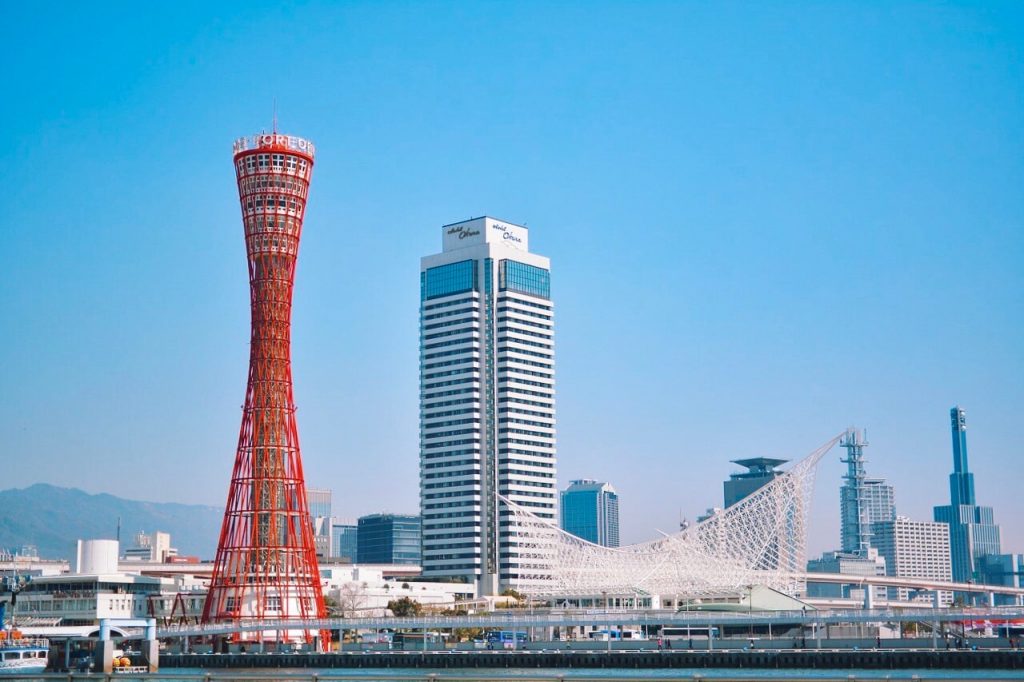
Himeji Castle (1 day)
Today, we leave Osaka and make our way to Okayama, where we will sleep for 2 nights. It takes about one hour and forty minutes to get to Okayama from Osaka. But we make a little stop at the famous Himeji Castle on the way to Okayama.
Himeji Castle is one of Japan’s most beautiful castles. Due to its elegant and white appearance, it immediately catches your attention. As the castle has never been destroyed by war or natural disaster, it’s one of 12 original castles in Japan.
For some more information, you can check our one day Himeji itinerary .

Okayama (1 day)
Capital of the prefecture that shares its name, Okayama is a transport hub where the Sanyo Shinkansen meets with the railway connecting to Shikoku. Okayama gets more sun than any other part of Japan, claiming the nickname “Land of Sunshine”. When spending a day in Okayama, check out the following highlights:
- Okayama Castle: Nicknames the Crow Castle due to its black appearance, the Okayama Castle is one of the main highlights of the city. The castle was completed in 1597 after 8 years of building.
- Korakuen Gardens: This 300-year-old Japanese garden is one of the three most beautiful gardens in Japan.
- Kibiji Cycling Road: This 2-hour bike ride takes you along shrines, farmhouses and the beautiful rural Japanese countryside of Okayama. You can hire a bike at either Bizen Ichinomiya or Soja bike shop. It’s a fun and unique way to see this part of Japan.
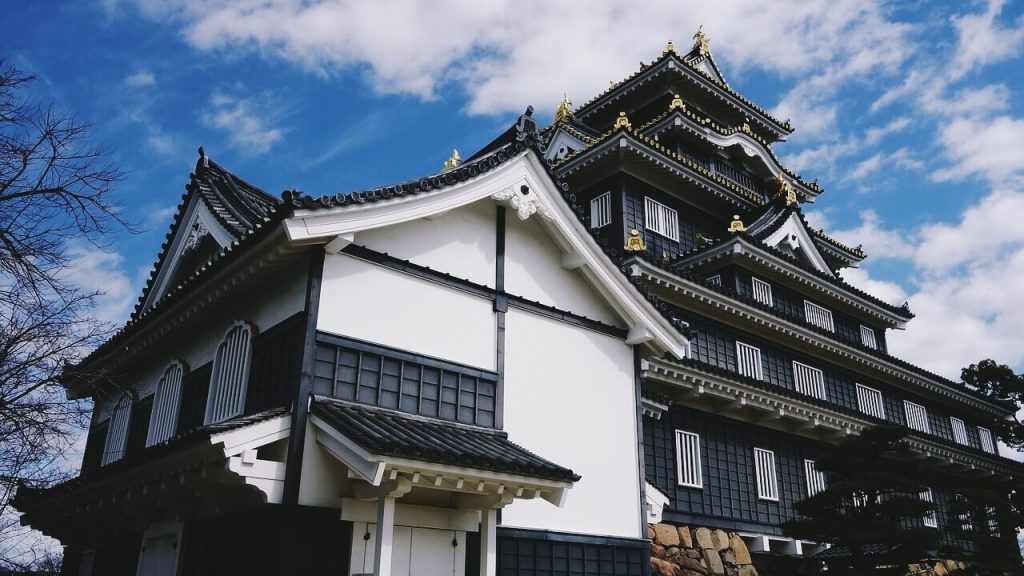
Hiroshima (2 days)
Hiroshima will forever be connected with the terrible atomic bombing that happened on August 6th 1945, killing between 129.000 and 226.000 people.
The bomb destroyed nearly everything within a 2-kilometre radius. But rather than being a radioactive wasteland, Hiroshima has been rebuilt into a thriving city. You will be staying in Hiroshima for three nights.
- Atomic Bomb Dome: Even though this building was located almost directly underneath the very first atomic bomb dropping in history, it somehow survived. The ruins are now a monument with world heritage status.
- Peace Park: Before the dropping of the bomb, the location of the Peace Park was the political and economic centre of Hiroshima. While rebuilding the city, it was decided to turn this place into a memorial.
- Shukkei-en Garden: A stunning Japanese garden in the middle of Hiroshima.
- Hiroshima Castle: Nicknamed the Carp Castle, Hiroshima Castle was first built in 1589. It was the centre of the city. Unfortunately, it got destroyed in the bombing in 1945. The castle was rebuilt and now hosts a museum where you can learn about Japan’s history. On the top, you can find a beautiful panoramic view of the city.
Our one day Hiroshima itinerary shows you exactly how you can make the most of your time here.
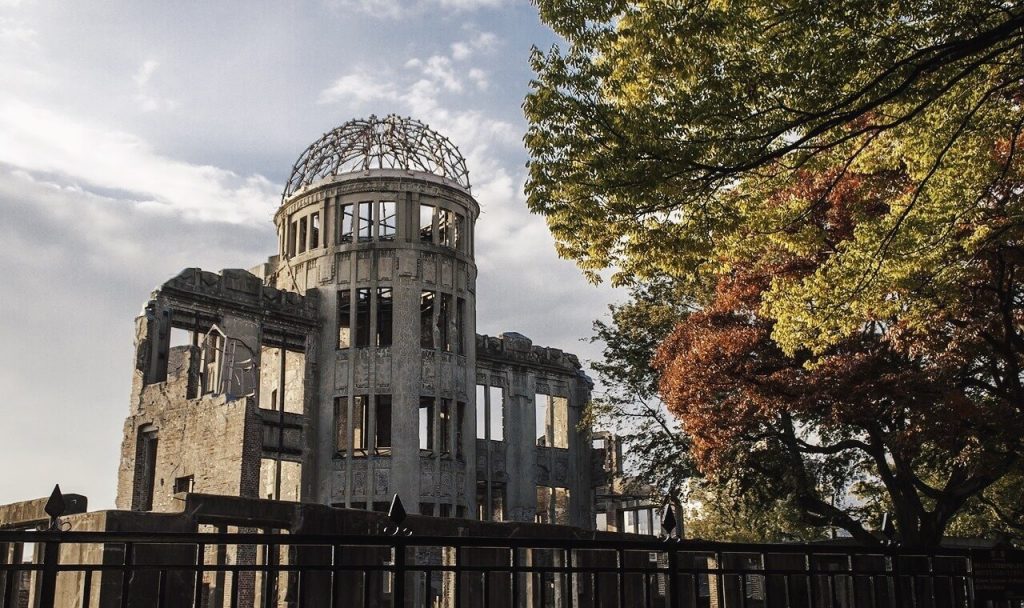
From Hiroshima, you can make the popular day trip to Miyajima Island . The official name of this island is actually Itsukushima, but it’s more widely known as Miyajima (translated to Shrine Island). If you’ve been using a JR pass to travel around Japan, you can also use this pass for the ferry to get to the island. Once you’re on the island, check out the following:
- Giant Torii: The “floating” torii gate of Miyajima has been ranked as one of Japan’s best three views. At high tide, the torii gate seems to be floating, but when the tide is low, you’re able to walk next to it. A fun way to see the torii gate up close is to hire a kayak and paddle your way towards it.
- Itsukushima Shrine: The pride of the island has to be the Itsukushima Shrine. Built over water in the year 593, the shrine seems to be floating above the water surface. It has been listed as a UNESCO world heritage site. The entire island has a long history with the Shinto religion, which is seen back in this old but beautiful shrine.
- Five-storied pagoda : This beautiful pagoda was built in 1407 and restored in 1544. With notable Chinese influences, this is one absolutely stunning building.
- Daisho-in Temple: Even though this temple isn’t as well known as the Itsukushima Shrine, it is definitely worth visiting. 500 statues with unique facial expressions are lined up towards the entrance of the temple and inside the Henjokutsu cave, you will find a dimly lit room with a ceiling full of lanterns. It’s a magical sight.
- The Ropeway: For some amazing views, check out the Miyajima ropeway. This cable cart takes you up Mount Misen, where you can find some more temples to visit. But the main reason to check out the ropeway is to enjoy the stunning views from the cable cart over the Selo Sea.
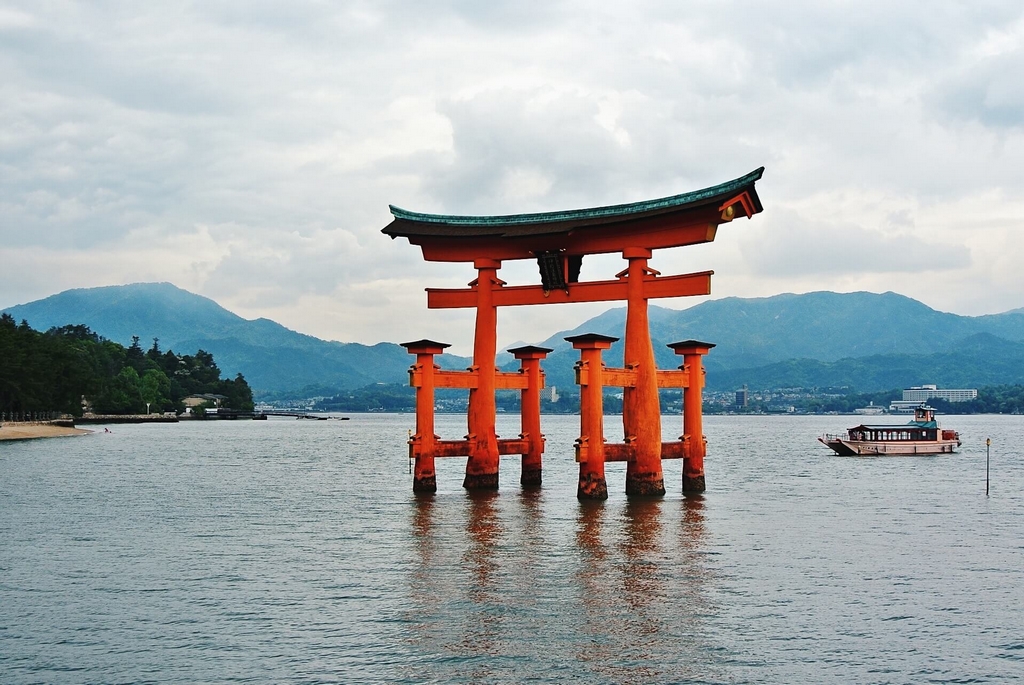
After this day trip to Miyajima island , enjoy one last sleep in Hiroshima. The following day, it’s the end of this 3 week Japan itinerary. Make your way back to either Osaka or Tokyo for your flight home.
I’d definitely check if you’re able to fly back from Osaka, as it’s much closer to Hiroshima compared to Tokyo. I hope you enjoyed this Japan itinerary and that it has helped you plan your own trip to Japan! Please check out the following tips and tricks to make your three weeks in Japan even more amazing.

If you have more time in Japan, you may want to consider visiting Kyushu too. Our 7-day Kyushu itinerary makes for the perfect addition to this itinerary if you have a month to spend in Japan! Or… save it for your return trip to Japan!
Best times to visit Japan
When planning your three weeks in Japan, the time of year obviously plays a huge role. Depending on what time of year you go, the prices will change and some highlights may be busier than expected. I would personally always recommend going in the autumn because it’s a lot cheaper and quieter while the temperatures are still lovely. But here are the pros and cons of each season in Japan.
Pros of visiting Japan in spring: One of the things Japan is famous for is the iconic cherry blossoms. In spring, they will be in full bloom. What’s more Japan than seeing the sea of pink across the cities and parks? The weather will also be lovely and mild – perfect for travelling around!
Cons of visiting Japan in spring: You won’t be to only one looking to enjoy the sakura… Spring in Japan tends to get quite busy. And when it’s busy, the hotel prices go up too!

If you’re bound to travel in the summer due to school or work, I have no doubts that you’ll still have a wonderful time in Japan. But if you can avoid summer, please do so! Summer is the tourist high season in Japan. Alongside the heat, the humidity and typhoon season – it’s best avoided.
Pros of visiting Japan in autumn: I ADORE Japan in autumn. The leaves are coloured beautifully, the temperature is mild and pretty perfect for travelling around and it’s not very busy. Autumn is a lot quieter and therefore cheaper in Japan compared to spring and summer.
Cons of visiting Japan in autumn: You’ll miss the popular cherry blossoms, but I think that the autumn leaves kinda make up for that!
Pros of visiting Japan in winter: Winter is by far the cheapest and most quiet time to visit Japan. Not many people tend to go there on holiday during this time (apart from going skiing in Sapporo etc.).
Cons of visiting Japan in winter: It is COLD. If you’re planning to travel to Japan in winter, make sure you pack a lot of warm clothes.
Japan Travel Essentials
There are a few things you need to know BEFORE going on your trip to Japan. Sorting these things out before your trip will save you a lot of hassle. For a more in-depth guide to Japan, check out my everything you need to know before going to Japan tips blogpost.
Japan Rail Pass
Before the price increase of the JR Pass in October 2023, the 2-week JR Pass would have been a great option for this itinerary. However, due to the 70% price increase, it no longer is a good idea.
Instead, it’s better to buy individual tickets for the Shinkansen. You can buy them at the station on the day, or you can pre-order them through Klook .
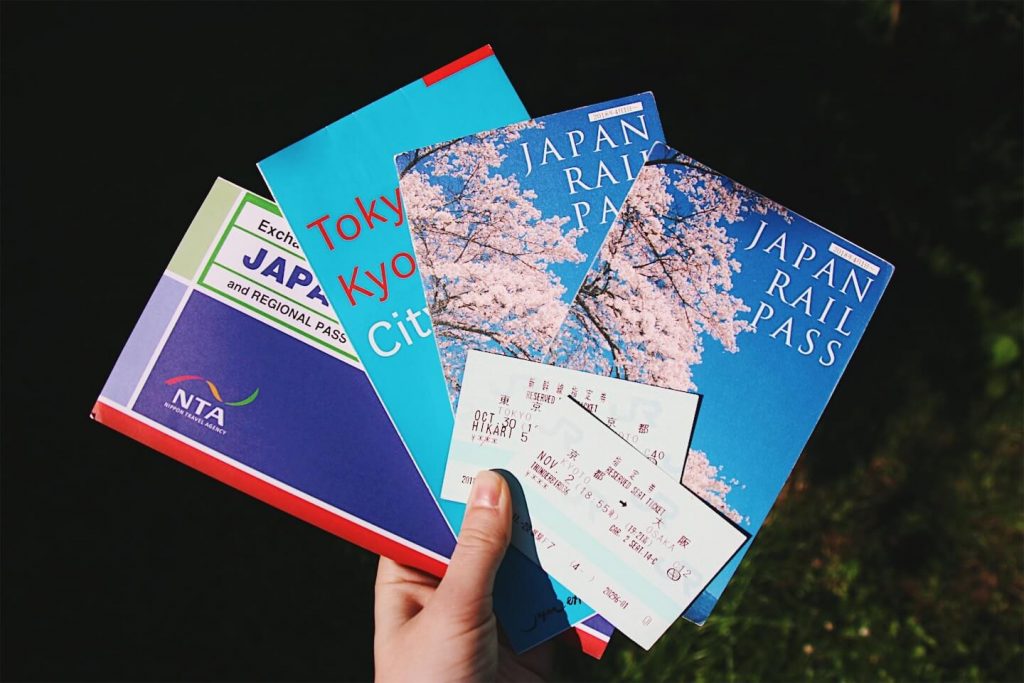
Pocket Wifi
Instead of having to buy a SIM card in Japan and spending tons of money on it, order a Pocket Wifi before your trip. This little device gives you access to the internet everywhere in Japan. Charge it at night in your hotel room and pop it in your backpack during the day.
Staying connected during your Japan trip isn’t just important for updating your social media, but it’s an absolute lifesaver when it comes to Google Maps and simply Googling some more information about the places you’re visiting.
You can get one from Ninja WiFi with 15% discount using code THENAVIGATIO15 .
The currency in Japan is the Japanese Yen (JPY, ¥, 円). Rather than having to guess how much you’re going to spend and exchange it before you go to Japan (and pay a huge fee doing so), get an international money card instead.
These types of cards also aren’t connected to your bank account, so if you’d lose it, you wouldn’t have to worry about someone emptying your entire savings account. You simply top them up whenever you run out of cash.
If you’re in the UK, I’d recommend getting one with Monzo. If you’re outside the UK, go with Transferwise. Using one of these cards allows you to pay the daily exchange rate without any extra fees!
2 Weeks in Japan instead?
If you don’t have three weeks to spend in Japan and want to go for two weeks instead, you can totally do that. You can either decide to cut down this itinerary to one that fits your time schedule better. Or you can check out my 2 week Japan itinerary. This itinerary takes you from Tokyo to Kyoto, Osaka and Nara.
Alternatively, you can use my 10 day Japan itinerary for an even shorter trip.
3 Weeks in Japan Itinerary – Conclusion
That concluded my three weeks in Japan recommended itinerary. I hope it has helped you plan an efficient and very exciting stay in this wonderful country. I, for one, can’t wait to visit again!
Save for later…
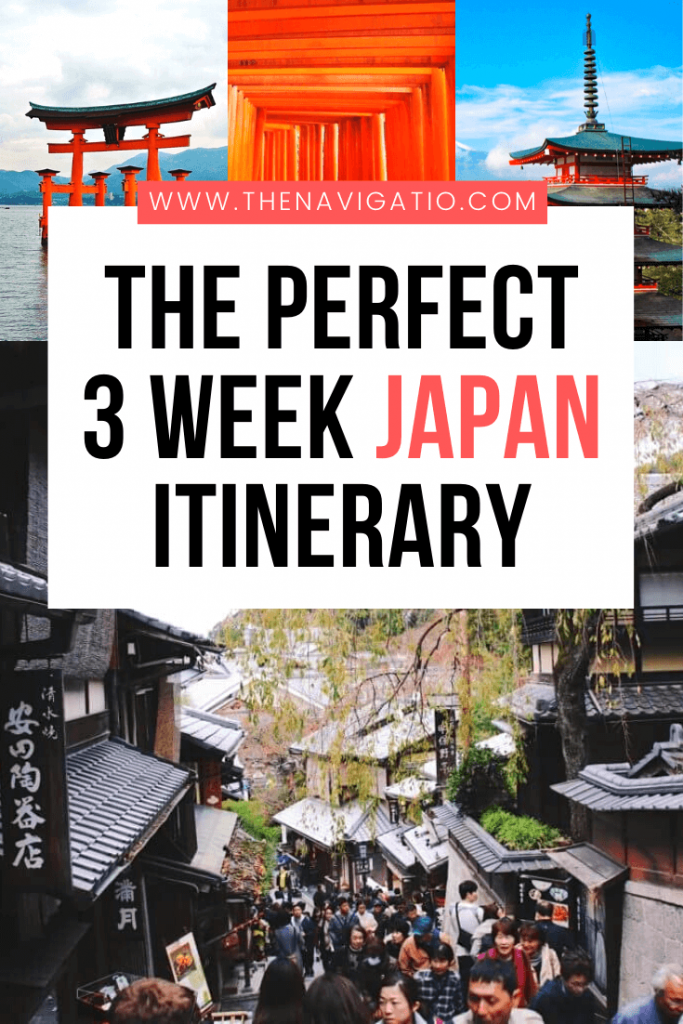
Nele (Nay-la) graduated from Manchester Metropolitan University with an English and Creative Writing Degree and has lived in the UK for nearly 10 years. She has had an interest in Japan and its culture for as long as she can remember. Since her first trip in 2018 surpassed all expectations, she has continued to return to Japan to explore more of all it has got to offer. You can read her full story here .
View all posts
22 thoughts on “The Perfect 3 Week Japan Itinerary”
I absolutely loved Japan! But that was a trip long ago. Thanks for this comprehensive guide. I’ll save this for the next time I visit Japan.
What an amazing country and so gutted that I have yet to visit. Pinned for when I start planning my trip which I hope is happening in 2020. Looks like you had quite and adventure in Japan. Your post really has me want to move this up to early next year.
What a detailed guide. For sure I will use it on my trip to Japan. The photos are beautiful.
This is a monster guide, I love it! I’ve never been to Japan but hope to go someday!
Hi, We absolutely love this article. It has been incredibly helpful. We want to do an overnight stay in either Hakone or Nikko- what would you recommend?
Thank you so much Julie! Either are great cities to stay overnight in. My personal preference would go to Hakone because they have a lot of onsen hotels and stunning views of Mount Fuij – but Nikko gives you a lot of extra opportunities for hiking if that’s something you’re interested in 🙂
Wow what a detailed itinerary and great places. Japan is in my bucketlist.hope to visit someday .thanks for this useful guide
Japan is still very high on my bucket list. The places you’ve visited look amazing and getting a Japan Rail pass sounds like a must. Thanks for sharing all your tips 🙂
This is perfect timing I’ve been considering this exact trip! I went to Tokyo for a de days a year and a half ago and now I want to see much more of the country
Japan is so high on my bucket list! Lovely photos!
Love this! Thank you. Do you have a rough idea on budget including spending money please?
- Pingback: Blogs To Read This September - Bournemouth Girl
What a fabulous guide! Thanks for this!
Thank you so much! You’re website has helped me so much to plan my upcoming trip. It’s the exact time length and you’ve hit all of the main things I want to see for my first vacation trip (been but for work only). You’re the best!
Well, this sure took the mystery out of where to go, stay, see. Absolutely great detail and we will follow most of it with a few tweaks of our own.
Can’t wait.
This is fabulous! We want to go to Japan for 3 weeks in November, I know nothing about Japan, your post sounds perfect, thank you.
Thank you so much for this itinerary ! I planned my whole trip around it and my friends and I had a blast ! You’ve done an amazing job 😀
I am planning a 3 weeks trip to Japan and your blog was super useful! Thank you so much for it! I have a small doubt. You mentioned “If you’re planning to follow this 3 week Japan itinerary, I’d highly recommend getting a JR pass for 2 weeks”. If I am going for 3 weeks, shouldn’t I buy a JR pass for 3 weeks (instead of 2)?
Looking forward to your reply 🙂
Hi Dimple! Since you won’t be needing the JR Pass for the first 7 days, it’s best to get the pass for 2 weeks because it’s much cheaper. In Tokyo, you can use the Suica card instead – it’ll save you a lot of money!
Hi Nele Thanks for all the great tips. Im heading to Japan for 3 weeks at the end of the month and am really excited. Quick additional question on Dimples question/topic of JR Pass … whats the best way to get from Haneda airport into Tokyo, if I am not using a JR Pass for the first 7 days ? Thanks Steve
The easiest way is to use the train, which should only take about 20-30 minutes and doesn’t cost more than a few dollars. You can get a ticket for it at Haneda train station, or use a Suica card (you can add this as a card on your Apple wallet if you use iPhone – or get a physical card at the station, they’re very handy if you’re traveling inside cities in Japan).
Hope that helps!
Hi there Thanks for this guide. I wonder, since now the price has gone up so much, would it still be worthwhile getting the 2 weeks JR pass while following your 3 week itinerary? From my initial calculation, it doesn’t seem worthwhile even if I travel back to Tokyo on last day from Osaka to catch a flight in Tokyo, not sure if you would agree? Also, I was considering to get the 5-day tokyo city pass, do you consider that a good value? This would be my first time to Japan so I’d be visiting as much as I can I reckon.
Leave a Comment Cancel reply
This site uses Akismet to reduce spam. Learn how your comment data is processed .
Must-Read Articles

50+ Best Things To Do In Japan

Is The Japan Rail Pass Worth it?

The Perfect Three Week Japan Itinerary

Japan Travel Tips Group

The Japan Travel Newsletter
Sign up to get inspired! Receive insider tips, special discounts and more to plan your perfect Japan trip.
You have successfully joined our subscriber list.
japan travel Blog
Tokyo Kyoto Osaka Hiroshima Hakone Kobe Nikko Nara Kyushu All Japan Content
Plan Your Trip
Best Things To Do Japan Rail Pass 2 Week Itinerary 3 Week Itinerary Accommodation Japanese Phrases
About The Navigatio Work With Us

- 2 Weeks for Couple
- 2 Weeks for Family
- Thailand Lantern Festival
- Indonesia(Bali)
- South Korea
- China (HK, Taiwan)
- Itinerary Ideas
- Asia Highlights Travel Reviews
- Thailand Travel Reviews
- Vietnam Travel Reviews
- Cambodia Travel Reviews
- Japan Travel Reviews
- Myanmar Travel Reviews
- China Travel Reviews

- 3 Weeks in Japan: Top 3 Itineraries for First Visit 2024/2025
If you're considering traveling to Japan for the first time, it's worth considering that a 3-week trip would be long enough for you to experience the highlights of Japan in more depth and not in a rushed way. It would also give you some free time to enjoy yourself.
You could see geishas in kimonos, visit the spectacular Mount Fuji, stay in a ryokan (a traditional Japanese inn), relax in an onsen (a hot spring), immerse yourself in an authentic ninja experience, and take part in a traditional tea ceremony.
Where to Spend 3 Weeks in Japan
3 weeks in japan: 3 perfect itinerary ideas, how much does 3 weeks in japan cost.
Here are the most popular destinations in Japan. We hope this will help you to choose according to your interests and preferences.
- Tokyo is Japan's most famous and popular city with its sophisticated fusion of sushi, samurai, animation, sumo, high-tech modernity, and traditional history.
- Kyoto is an ancient city where you can see various shrines, geishas in kimonos, traditional tea ceremonies, and stay at a ryokan to experience classic Japanese accommodation.
- Osaka , "the kitchen of Japan", is a great place to sample authentic Japanese food and to visit the brilliant Ukiyo-e (Japanese print art) Museum.
- Hakone : What makes Hakone so famous is its onsens and Mount Fuji. Stay at a ryokan with an onsen and a spectacular Fuji view.
- Takayama and Shirakawa-go : A trip to Takayama and Shirakawa-go would allow you to experience Japan's rural life and see unique gassho-zukuri (steep wood and thatch) farmhouses.
- Hiroshima , where the world's first atomic bomb was dropped during World War II, calls on everyone to love peace.
- Hokkaido has the best ski resorts and the freshest seafood.
Discover real reviews of Highlights Travel Family 's best-rated service across trusted platforms.
Below are three well-selected 3-week Japan itinerary ideas for you, each offering you various experiences. Itinerary 1 covers the major highlights of Japan, itinerary 2 offers you a Japan far-reaching exploration of both big cities and lesser-known cities, and itinerary 3 allows you to have a cross-border trip.
Itinerary 1: Classic Japan — the Most Chosen Historical Places
- Tokyo–Nagano–Kanazawa–Takayama–Shirakawa–Kyoto–Osaka
With this itinerary, you could cover the major highlights of Japan's popular cities , experience authentic hands-on activities, and explore Japanese history and tranquil rural life at a slow pace.
Here is an itinerary outline for your inspiration:
- Days 1–4: Tokyo
- Days 5–6: Hakone
- Days 7–8: Nagano
- Days 9–12: Kanazawa, Takayama and Shirakawa-go
- Days 13–17: Kyoto (daytrips to Nara and Arashiyama)
- Days 18–19: Hiroshima
- Days 20–21: Osaka, depart from Kansai International Airport
Tokyo is the top city for entering Japan as its international flights offer the most options. Meander around the Asakusa district to experience the Edo vibe of Japan's 1603–1868 final shogunate, dress up like a ninja to learn about the ninja culture and techniques, and make sushi with the help of a sushi master.
Continue your trip to Hakone to relax at a Japanese-style ryokan with an onsen and enjoy serene rural life. Nagano offers you a unique and unforgettable experience, where you could witness snow monkeys soaking in the hot springs.
Next, you could head to Kanazawa to see the Edo period buildings , making you feel like you've stepped back in time, as well as enjoy a steaming cup of tea in a Japanese teahouse. Go to Takayama and Shirakawa to admire their traditional gassho-zukuri farmhouses and picturesque countryside views.
Head to Kyoto to experience various cultural activities. Wander through the Gion district to see geishas wearing kimonos, immerse yourself in the art of making unique Kyoto pottery, stay at a cozy ryokan to experience Japanese accommodation, and feed friendly deer in Nara.
Hiroshima was the site of the first atomic bombing during World War II. Visit the Peace Memorial Park to cherish the post-war peace and take a short ferry ride to Miyajima to see the famous "floating" torii gate.
Complete your trip in Osaka. Experience traditional ukiyo-e printmaking to deepen your understanding of Japanese culture and enjoy some free time.
Itinerary 2: Japan Adventure and Far-Reaching Exploration
- Tokyo–Kanazawa–Kyoto–Osaka–Naoshima–Matsue–Beppu–Fukuoka–Tokyo
If you're looking for a comprehensive exploration of Japan that covers both well-known cities and hidden gems, this itinerary is perfect for you. You would have the chance to delve deeper into Japan's early history, admire its pristine hot springs, and experience authentic hands-on activities.
Here's the suggested itinerary, for inspiration:
- Days 1–5: Tokyo
- Days 6–7: Kanazawa
- Days 8–11: Kyoto
- Day 12: Osaka
- Days 13–14: Naoshima
- Days 15–16: Matsue
- Days 17–18: Beppu
- Day 19: Fukuoka
- Day 20: Depart from Tokyo
Tokyo is the must-see city in Japan that perfectly combines history and modernity. Walk around Meiji Shrine downtown, which is surrounded by forests, make a delicious bowl of ramen with the help of experienced chefs, and take a day trip to Kawaguchiko to view the iconic Mount Fuji.
Next, head to Kanazawa to explore its well-preserved Edo-period Japanese samurai house, and experience attaching gold leaf to your favorite objects as a unique souvenir.
Continue your trip to Kyoto to experience some authentic Japanese activities. Have afternoon tea with geishas, stay at a traditional Japanese ryokan, take a rickshaw ride to admire the bamboo groves in Arashiyama, and feed lovely deer in Nara.
Head to Osaka to wear a ninja outfit and learn techniques from a ninja master. Then try unique ukiyo-e printmaking to get more insights into Japanese culture.
The remaining days would be spent exploring some lesser-known cities in western Japan.
- Naoshima is a small island that is full of art and boasts a spectacular coastline. There, you could explore museums and galleries brimming with art.
- Matsue is considered to be the birthplace of Japanese mythology and ancient culture. Gain a deeper understanding of Japan's past by witnessing two of the oldest buildings, Matsue Castle and Izumo Taisha.
- Beppu is a city that hosts over 2,000 hot springs. It's amazing to witness the heat emanating from the hot spring areas in the city. You could admire hot springs of different colors, such as red, gray, and blue, and also enjoy an onsen at a hot spring resort.
Finish your trip in Fukuoka and take some free time to explore this charming modern city on your own.
Itinerary 3: Trip to Japan, China, Singapore, and Bali
This tour will allow you to experience the history and culture of Japan and China, experience the rapid development of Singapore, and relax on the beaches of Bali!
Days 1–7 in Japan: Explore the most popular three cities of Tokyo, Kyoto, and Osaka. Try some Japanese-style activities, such as making sushi, dressing up like a ninja to learn the techniques, and staying at a ryokan with an onsen. Also visit all of Japan's main attractions, including Mount Fuji, Senso-ji, and the Gion district.
Days 8–14 in China: Discover China's top three cities for tourism — Beijing, Xi'an, and Chengdu. Visit the world-famous Forbidden City and the Great Wall in Beijing, explore the mysterious underground army at the Terracotta Army Museum in Xi'an, and see the cute pandas in Chengdu.
Days 15–16 in Singapore: Discover the charming city of Singapore. Its main attractions include Merlion Park, Gardens by the Bay, Little India, Kampong Glam, Arab Street, and a boat trip from Clarke Quay.
Days 17–19 in Bali: Enjoy some relaxing beach time in a tropical island paradise with your partner to create lifetime memories.
Japan is more expensive than other countries in Asia, but is one of the cheapest developed-country destinations. It offers high-quality accommodation, food, service, and attractions.
Generally, 4-star hotels, private guide, private car and other transport in Japan, and tickets for attractions costs 350–500 USD per day per person for a family of 3-5 people . Thus, the total cost is around 7,400–10,500 USD for 3 weeks.
We recommend you take private cars if you'd have any difficulty in taking public transportation. It may save you more than 20,000 steps a day!
Why Asia Highlights (10,000+ reviews & 98.8% 5-star rating)
- Save Your Time:
- Less research, more enjoyment!
- Real-time 1V1 expert planning
- Maximize Your Flexibility:
- Personal local guide and ride
- Explore at your own pace
- Celebrate Your Journeys:
- Specially-crafted family adventures
- Celebrate milestones with style!
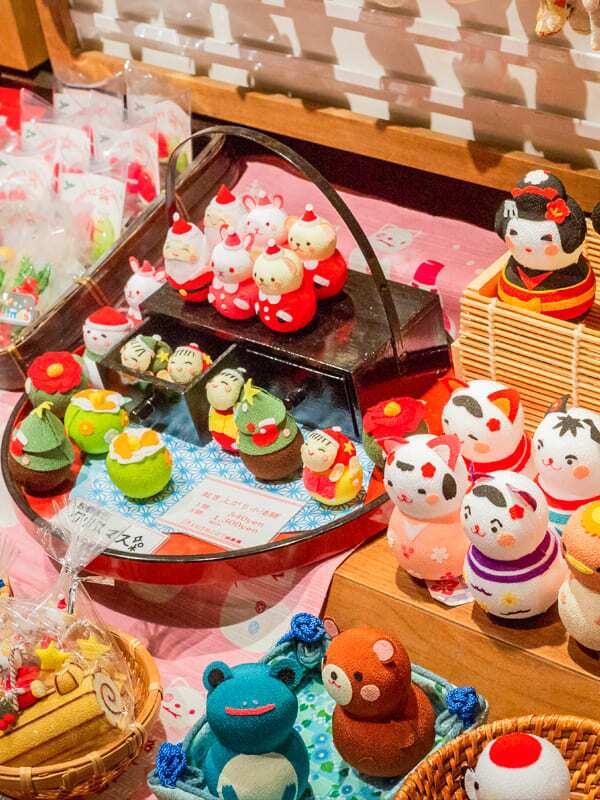
- 7-Day Japan Cherry Blossom Tour 2025: Essential Springtime Mini-Group Tour
- 7-Day Tokyo, Kyoto and Osaka Tour
- 8-Day Tokyo, Hakone, Kyoto, Hiroshima and Osaka Tour
- 9-Day Japan Highlights Tour
- 10-Day Japan Cherry Blossom Spring 2025 Mini-Group Tour
- 10-Day Tokyo, Yokohama, Hakone, Kyoto, Nara and Osaka Tour
- 11-Day Traditional Japan Tour
- 12-Day Classic Japan Tour
- 12-Day Tokyo, Hakone, Kyoto, Osaka and Himeji Tour
- 2-Week Highlights of Japan in the Cherry Blossom Season
- 16-Day South Korea and Japan Cultural Adventure Tour
- 16-Day Japan and China Discovery Tour
- How to Plan a Trip to China and Japan
- Plan a Japan Cherry Blossom Trip 2024/2025, Dates and Avoid Crowds
- Plan a Family Trip to Japan 2024/2025: Experiences and Itineraries
- How to Plan a Luxury Trip to Japan in 2024/2025
- Best (and Worst) Time to Visit Japan 2024, Cherry Blossom Time
- 1 Week in Japan: Top 5 Itineraries for First Visit 2024/2025
- 8 Days in Japan: Top 5 Itineraries for First Visit 2024/2025
- 10 Days in Japan: Top 5 Itineraries for First Visit 2024/2025
- 12 Days in Japan: Top 4 Itineraries for First Visit 2024/2025
- 2 Weeks in Japan:Top 5 Itineraries for First Visit 2024/2025
- How to Plan a 2-Week Itinerary in Japan and South Korea
- Japan Weather in January: Travel Tips for First-Timers
- Japan Weather in February 2024: Travel Tips for First-Timers
- Japan Weather in March 2024: Travel Tips for First-Timers
- Japan Weather in April 2024, Travel Tips (for First-Timers)
- Japan Weather in May 2024: Travel Tips for a First Visit
- Japan Weather in June 2024: Coolest Summer Month, Travel Tips for First Visit
- Japan Weather in July 2024: Full of Festivals, Travel Tips for First Visit
- Japan Weather in August 2024: Travel Tips for First Visit
- Japan Weather in September, Travel Tips (for First-Timers)
- Japan Weather in October 2024: Travel Tips for First-Timers
- Japan Weather in November 2024: Best Autumn Month, Travel Tips
- Japan Weather in December 2024: Travel Tips for First-Timers

Jessie was amazing ! Everything from her level of English to her understanding of what we valued .
We had a good time exploring the city with Selinda!
Our guide lele is a wealth of information, Lele is very professional and very attentive to our needs. Lele is amazing. Lele got everything spot on. It probably helps that Guilin is a brilliant place to visit so Lele has great material to work with but that doesn't take anything away from how much Lele helped make it a great trip.
Our guide for Beijing was super knowledgeable and experienced and able to help us to achieve as much as we wanted within the time given. We had a fun time guided by him as he is also super humorous and you can see how he interacts with the vendors and people whom he comes by. Thank you for a very enjoyable time in Beijing and accommodating to all our needs!
Our China Highlight guide. Michael, was attentive, thoughtful and knowledgeable. He narrated many interesting historical events about Chengdu while touring around the city and having afternoon tea with us. He was thoughtful to provide us with snacks during long hikes at Leshan or walks around the city.
She was very flexible and added extra time when we needed it and we felt extremely well taken care of. She also chose the best restaurants for us,
Our tour guide Helen, was excellent, she was very kind, professional and passionate for her work and she also loves Pandas! She will take you to take the best panda photos and to know more about Chengdu city. Our tour was great, she took us to all our destinations always with the best spots: Temples, pagodas, famous streets, theaters, pandas...you name it! Everything was great.
He picked up our pre-booked boat/other excursions tickets so we were able to avoid all the long lines and chaos. He is knowledgeable of the places we visited, courteous, fun to travel with and well-versed in Chinese classics.
Tom is the guide that will take you to where no other guide will. We pushed for the experience and Tom and the team delivered more than what we could have ever asked for. His English speaking ability and his Chinese history knowledge is second to none.
More reviews
Get Inspired with Some Popular Itineraries
At Asia Highlights, we create your kind of journey — your dates, your destinations, at your pace. You can have any trip tailor made for your travel.
More Travel Ideas and Inspiration
Sign up to Our Newsletter
Be the first to receive exciting updates, exclusive promotions, and valuable travel tips from our team of experts.
Why Asia Highlights
Where can we take you today.
- Middle East
- African Safari

- Travel Agents
- Our Differences
- Privacy Policy

Address: Building 6, Chuangyi Business Park, 70 Qilidian Road, Guilin, Guangxi, 541004, China

EPIC 3-week itinerary for Japan (perfect for first-timers)
By: Author Kris
Posted on Last updated: April 25, 2023
Have you been looking for a 3-week Japan itinerary, because you aren’t sure what to do while you’re there? Don’t worry, we have you covered.
Japan is an amazing country where ancient traditions and modern customs go hand in hand.
If you think 3 weeks is too long for Japan, think again. It’s easy to travel for 3 weeks in Japan without getting bored. You need three weeks in Japan just to visit the highlights.
Our first trip to Japan was one of slightly over 3 weeks and when we were planning our Japan trip, we found it very difficult because we had to select from among an over the choice of sights that all looked worthwhile.
This is our 3-week Japan itinerary that we eventually came up with.
Insider tip: Looking for the best Japan travel tips, click here.
There is a really good chance that this post contains affiliate links. If you click one of them, we may receive a small commission (for which we are deeply grateful) at no extra cost to you.
In a hurry? Here we share an overview of our 3 weeks in Japan
If you don’t have time to read through the full Japan itinerary, use this overview to get an idea of the things to do on each day and save it for later.
- Day 1-4 Tokyo: Visit Shibuya, the Imperial Palace, Yoyogi Park, the Sensoji temple, Harajuku, Asakusa, and the neighborhood around the Skytree.
- Day 5: Matsumoto: Visit the Samurai castle and explore the small streets.
- Day 6-7 Yudanaka: Go watch the snow monkeys and relax in one of the many local onsens.
- Day 8 Kanazawa: Visit the Kenrokuen Garden, Kanazawa Castle , and the old Geisha district.
- Day 9 Takayama: Visit the Hida Folk Village and the old town of Takayama.
- Day 10 Ise: Pay a visit to the Ise Shrines
- Day 11-14 Osaka: Explore the Namba district, visit Osaka Castle, walk along the river to the Kema Sakuranomiya Park, visit Shinsekai, attend a cooking class, and see the city from above.
- Day 15 Koyasan: Spend the night in a temple and walk from temple to temple, attend the morning prayer, and visit the cemetery of Koyasan.
- Day 16-18 Kyoto: Explore Gion, the Inari Shrines, walk the philosopher’s path, visit the Golden Temple, and make a side trip to Arashiyama.
- Day 19 Hiroshima: Visit the peace park and Hiroshima Castle.
- Day 20 Miyajima: Admire the floating Torii gate and the colorful Daisyoin Temple and feed the deer.
- Day 21-22 Nagasaki: walk along the harbor, the cozy Dejima wharf, and Chinatown. Explore the Dutch history at the old trading post-Dejima and the Dutch Slope. Visit Battleship Island.
- Day 23-24 Tokyo: Visit Akihabara, Tokyo DisneySea.
Table of Contents
Japan Essentials
We almost always find the best flights to Tokyo and Osaka on Momondo . It may be worthwhile to compare these with Skyscanner and a new but promising flight aggregator, WayAway .
Don’t lose time upon arrival at the airport and order your Japan travel SIM or portable WiFi device in advance so that it’s ready and waiting for you at the airport when you arrive.
Find out which JR Pass will save you the most for your trip to Japan.
Check out our ultimate Japan travel blog where you can find many more interesting Japan articles to prepare for your trip.
Need help with your Japan trip planning? Check out this post on how to plan your trip to Japan.

Insider tip: Is this your first Japan trip and are you feeling a bit overwhelmed about planning this trip, what to see, and what to do in Japan, check out our Japan travel planner. This document will help you plan your trip smoothly.

For more Japan tips, take a look at our Japan Travel Guide.
Japan 3-week itinerary: Our 3 weeks in Japan
Here we share an overview of our 3 weeks in Japan.

Day 1-4: Tokyo
Things to do in tokyo.
Tokyo is a logical starting point for your 3-week Japan itinerary as chances are you will land at one of Tokyo’s two busy airports. Wondering what to see in Tokyo? Hopefully, you’re not too jetlagged because the capital has a lot to offer.
We were here during the cherry blossom season so we visited several different places to witness this beautiful spectacle.
Our tips about the best places to see the cherry blossoms are in this separate article .
But you will have no problem filling up these 4 days, even if you are not here during the cherry blossom season.
We visited the busiest intersection in the world at Shibuya as well as the Imperial Palace, Yoyogi park, the Sensoji temple, Harajuku, Asakusa, the neighborhood around the Skytree and much more.
Here you will find more information about the best places in Tokyo to visit.
If you are looking for a detailed itinerary for the best of Tokyo in 4 days, take a look here. If you stay 5 days in Tokyo, take a look at our 2-5 days detailed Tokyo itinerary.
Getting from the airport to Tokyo
When someone refers to Tokyo International Airport, they mean Haneda Airport. In reality, Tokyo has 2 international airports: Haneda and Narita airport.
Haneda is closer to Tokyo and is probably the best choice for you as a tourist. Still, as both are well-connected to the capital it isn’t that much of an issue if your flight arrives in Narita. It will just take a little longer to get to your hotel.
Haneda International Airport is located 14 kilometers south of Tokyo Station. It is the oldest of the two airports.
It used to mainly handle domestic flights after Narita airport opened but with the addition of a new international terminal in 2010, it now also handles international flights. The general rule is that Narita focuses more on leisure routes.
In reality, you will notice that there isn’t really any logic in how the flights are divided between the 2 airports. Here’s just one example, ANA’s flight from Washington arrives in Narita on Wednesday, Thursday, and Sunday and in Haneda on the other days of the week.
This is because there are not enough landing slots in Haneda and ANA sometimes has to look to Narita when it adds extra weekly flights to a certain destination.
All this is just to say that you have to look for flights to both airports (HND, NRT), or you can use (TYO) to instantly search for flights to Haneda and Narita.
The two main ways to reach central Tokyo from Haneda Airport are the Keikyu Line and the Tokyo Monorail. Both require a transfer to the JR Yamanote Line to reach major stations in central Tokyo.
Depending on the location of your hotel and the length of your flight (and the amount of sleep you could get) you might not be looking forward to train and subway rides in your first hours in Tokyo.
After a long flight, a direct transfer from the airport to your hotel will be a lot more comfortable.
You can find more information about a shared or private transfer here:
Shared Transfer
Private Transfer
Narita is the smaller of the 2 airports but does serve as the international hub of both major Japanese airlines, Japan Airlines, and ANA.
It lies 60 km east of central Tokyo. Although it is located further from central Tokyo than Haneda it is also well-connected to the city.
There are plenty of public transportation options to reach central Tokyo from the airport.
You could take the JR Narita Express, the Keisei Skyliner, buses, and taxis. Those who like to make a grand entrance can even opt for a helicopter transfer.
The JR Narita Express , abbreviated as N’EX, is covered by the Japan Rail Pass. This makes N’EX your best option if you have a JR Pass.
To use this train with your Japan Rail Pass you need to exchange your voucher for the actual pass at the airport.
Once exchanged you will also need to reserve seats as N’EX is one of the few trains that only has reserved cars.
Japan Rail Pass is it worth it?
The Keisei Skyliner is a good alternative to N’EX if you have no Japan Rail Pass. The prices, comfort, and schedule of both trains are comparable.
The main difference is that N’EX will take you to Tokyo station, Shinagawa, Shibuya, Shinjuku, Ikebukuro & Yokohama. The Keisei Skyliner heads to Nippori station and Keisei Ueno (close to Ueno station).
Both trains offer easy transfer to the JR Yamanote line, the main loop line in Tokyo.
As with Haneda, you can also book private or shared transfers from Narita to Central Tokyo. After a long flight, a direct transfer from the airport to your hotel will be a lot more comfortable.

Getting around Tokyo
If you have a Japan Rail Pass you can use this pass on the JR trains that run on the inner-city network in Tokyo, a very extensive network that can be compared with a metro network.
If you don’t have a Japan rail pass or you choose to activate your Japan rail pass after your visit to Tokyo, we recommend getting a Tokyo subway pass .
You can buy this pass at tourist information centers, BIC camera shops, and certain hotels.
There’s a list of selling points on the Tokyo Metro website . Be sure to bring cash as credit or debit cards are usually not accepted.
The pass can also be bought online which is even more convenient.
When you buy your pass online you will receive a voucher that you can use to quickly and easily collect your pass at the airport and seconds later you will be on your way to your hotel. Your pass can be used immediately, so you can use it if you would have to change to the metro en route to your hotel.
Click to read reviews or buy your Tokyo Subway Pass: Tokyo Subway Pass
A full guide on how to navigate Tokyo’s Public transport like a local

Top attraction in Tokyo
Here is an overview of the best attractions in Tokyo.
We partnered up with GetYourGuide or Klook for most of these activities. We love GetYourGuide because they’re flexible. Sometimes your plans change last minute and then you want to be able to cancel your tickets and get your money back. It’s also good to know that GetYourGuide has your back when the local tour operator doesn’t show up or cancels your trip.
Klook is a trustworthy travel company headquartered in Hong Kong that teams up with local operators to offer all kinds of travel experiences. Chances are the name is not familiar If you haven’t been to Asia before. They are big in Asia and have and have a very wide range of activities in Japan and other Asian countries.
We selected 3 excellent activities in Tokyo just for you.
Unfortunately, the Robot restaurant is still closed and it is uncertain if it will ever reopen. Let’s keep our fingers crossed.
Enjoy the Robot Show at the Robot Restaurant

The Robot Show is touristy, expensive and the food isn’t so great so you might wonder why you need to visit it. Well, it’s something you can only experience in Japan. The show is grotesque and completely over the top like one can only experience in Japan.
For this activity, we decided to partner up with Klook because they often have the cheapest tickets for the Robot Restaurant.
Read our full guide about the Robot Restaurant here.
More information and booking:
Robot Restaurant Tickets
See Tokyo from above

The Tokyo Skytree is, with a height of 634 meters, the highest building in Japan. It’s also the highest free-standing tower in the world. The tower houses 2 observation platforms that offer a fantastic view of Tokyo. They are respectively at a height of 350 and 450 meters and are amongst the highest in Japan. Here you can enjoy a breathtaking view of Tokyo. An absolute Tokyo must-visit when you want to see Tokyo from above.
The lines are often very long so we recommend you to book skip the line tickets.
Tokyo Skytree Tickets
If you are looking for a free alternative, you should head to the Metropolitan Government Building. This building has 2 towers that each offer a viewing platform at a height of 202 meters. The northern tower stays open until 11 p.m. and ‘Tokyo By Night’ is really spectacular.
Make a Day Trip to Mount Fuji

A day tour to Mount Fuji is the perfect way to escape busy Tokyo.
But there are so many day tours that choosing one, isn’t easy.
To help you choose, we made this handy Day trip to Mount Fuji overview.
Day Trip Mt. Fuji
Where to stay in Tokyo
Hilton Tokyo

The Tokyo Hilton is situated in the lively neighborhood of Shinjuku. It’s about a 15-minutes walk to Shinjuku train station but you can also make use of the free shuttle service offered by the hotel. The shuttle runs every 20 minutes. The airport limousine bus has a stop at this hotel. There’re multiple restaurants and supermarkets in this area. Last but not least, after a busy day exploring this vibrant city you can relax in the indoor pool or sauna. Highly recommended if you are looking for a good hotel in the vicinity of public transport.
Booking.com
Or read our article about the best place to stay in Tokyo for first-time visitors. If you are looking for the best Airbnb’s in Tokyo, click here.
For those that are looking for a more traditional stay, check out this post in which we share an overview of Ryokans in Tokyo with a private onsen.

Day 5: Matsumoto
Things to do in matsumoto.
During our 3-week itinerary in Japan, we also paid a quick visit to Matsumoto. The main reason for this is the Samurai Castle .
A Samurai castle is a must-visit and while there are still lots of Samurai castles everywhere throughout Japan most of these are reconstructions.
In Matsumoto, you can visit one of the few remaining original castles. It’s a major landmark in Japan.
Most castles have been destroyed by fires or during one of the many wars but this castle was never under attack.
Several official guides are available who will be happy to guide you around the castle for free.
They can tell you more about how life used to be in the castle and the different wars that prevailed over Japan.
The guides are located in a cabin right after the entrance of the castle.
Did you know that the inspiration for the helmet of Darth Vader comes from the Samurais?
If you have only 5 days in japan, check out our post where we share the best 5 days Japan itinerary suggestions.

Where to stay in Matsumoto
Hotel kagetsu.

This hotel more than exceeded our expectations. Hotel Kagetsu is situated 20-minutes by foot from the train station and really close to Matsumoto Castle and the small but picturesque old town. The hotel offers free bicycles to explore the area. It also features a good restaurant but you will also find other restaurants within walking distance. You get a comfortable and spacious room, certainly by Japanese standards, and your Yukata and slippers will be waiting in your room if you want to use the onsen. A great option in this charming city.

Day 6-7: Yudanaka
Things to do in yudanaka.
The next stop on our three-week Japan itinerary was Yudanaka. This countryside village is famous for the snow monkeys that like to bathe in the hot springs.
The prime reason for our visit to Yudanaka was to see the monkeys, but just like the monkeys, we also took some time ourselves to relax in one of the many local onsens.
If you have only 1 week in Japan, check out these Japan 7 days suggestions.
We spend about half a day with the monkeys. Not because the park was that big, but it was very cute to see the monkey’s doing their thing.
Judging by the name you could probably already guess that the best time to visit the snow monkeys is, …., the winter. During other periods it’s best to head to the park very early when it’s not yet too warm. The colder it is, the more likely you will see the monkeys warming themselves in the water.
To relax in the onsen we recommend going to Shibu onsen. This is a village a few minutes’ walk from Yudanaka.
In the picturesque car-free high street of Shibu Onsen you will find 9 public onsens that are supplied by the hot springs.
You can wander from one bathhouse to another in your Yukata and on your traditional wooden sandals.
Where to stay in Yudanaka
Shimaya ryokan.

Shimaya Ryokan is not a normal hotel but a Ryokan. After staying there I would even say that it felt more like a Minshuku. A Ryokan is a traditional Japanese Inn and a Minshuku is a small-scale,family-run, version of a Ryokan. Where Ryokans can sometimes offer very high-scale and luxurious experiences, a Minshukus offers more of a cozy intimate atmosphere.
The rooms of the Shimaya Ryokan are very simple, and look a bit dated. But the hospitable owners made up for all of this. The owner picked us up at the train station, offered us a ride to the monkey park and back and gave us tons of tips about all the places we would visit next during our trip.
Sleeping in a traditional ryokan or Minshuku is something you should do at least once when you’re in Japan, so why not do it here with these friendly hospitable owners.

Day 8: Kanazawa
Things to do in kanazawa.
Kanazawa charmed us enormously and we had the impression that this city was less touristy than other places we visited during our 3 weeks in Japan. This in itself is a reason to visit this city.
We were here to see the Kenrokuen Garden . An absolute highlight of any visit to Kanazawa and especially during the cherry blossom season.
The garden is regarded as one of the most beautiful in Japan.
The weather was a bit disappointing during our visit so we couldn’t fully appreciate the park.
We certainly thought it was beautiful, but not better than what we already saw in Tokyo. Still, we could not get enough of the cherry blossoms.
Right next to the Kenrokuen garden is the reconstructed Kanazawa castle. You can visit it for free and it can easily be combined with a visit to the Kenrokuen Garden.
The main reason for our visit to Kanazawa was the Kenrokuen Garden but another absolute must in Kanazawa is the old Geisha district Higashi Chaya , often just called: “Old Town”.

The old town of Takayama is often praised for its old-world charm but we found the old city of Kanazawa to be much more charming. Besides, it was also a lot less crowded which made exploring it much more pleasant.
You could take a quiet stroll, look around, and enjoy the beautiful old houses.
A walk through the geisha district in the evening , where you learn more about the mysteries and intrigues of this old neighborhood, was an unforgettable experience.
We also went to take a look at Nagamachi , the old Samurai district. There’re some really spectacular villas in this district, but Higashi Chaya impressed us more.
For lunch and/or dinner we recommend going to the Omicho market. It’s a large fresh food market. Originally it was just a market but nowadays there are many small restaurants housed in and around the market. To find the best addresses you just have to look for the queues at the front doors.
Here is a complete 2-day Kanazawa itinerary.
Where to stay in Kanazawa
We stayed in the Holiday Inn ANA Kanazawa and loved our stay.
Holiday Inn ANA Kanazawa Sky

The Holiday Inn ANA Kanazawa Sky is centrally located within walking distance of the station and just across the Omicho market.
The Kanazawa castle and Kenrokuen Garden are just a few minutes’ walk away.
You have spectacular views on Kanazawa from the lobby and the restaurant. A perfect choice for your stay in Kanazawa.
If you are looking for a more traditional place to stay, check out our list of ryokans in Kanazawa.

Day 9: Takayama
On the train on our way to Takayama, we witnessed some of the most spectacular scenery of our trip to Japan.
As our train squeaked through the bends in the railway and made its way from one tunnel to the other it reminded me of the train trips to the ski resorts in Switzerland I used to make when I was a child.
Things to do in Takayama
In Takayama, we visited the Hida Folk Village . The village consists of 24 traditional houses. They’re all very well preserved and at each house, you will find information panels.
To take a look inside the houses you have to wear slippers.
They’re provided at the entrance of the houses.
Its fun to peek inside the different houses but if you want to do so it is best to wear comfortable shoes that you can easily take off and put back on.
From the Hida Folk Village, we continued our way to Takayama’s old town.
It was extremely and uncomfortably busy in the old town. We noticed that most of the crowd just visited the part of the old town situated to the right of Kajibasi Bridge.
So luckily we could escape the crowds by crossing the main road and continuing our way toward the Yoshijima Heritage House.
As you cross the main road you will notice that in this section historical houses alternate with restored or modern houses.
It’s less authentic than the other section but at least you can enjoy the houses without the masses.
But as we already said before when we were writing about Kanazawa, the Higashi Chaya district in Kanazawa was so much more enjoyable that we would take it any day over Takayma.
Getting hungry?
Takayama is known for its beef, so if you like meat you should definitely try Hida Beef a variety of the famous wagyu beef. Many Japanese even prefer Hida-gyu over Wagyu.
Where to stay in Takayama
Hotel wood takayama.

Hotel Wood Takayma is a great hotel in the old town. You will stay in a spacious room.
Friendly staff and small but good spa.

Day 10: Ise
Today we took the train to Ise to see the Ise shrines, the most sacred Shinto shrines in Japan. According to Shinto tradition, these are completely rebuilt every 20 years.
We had imagined there would be something special about this place, but it let us down.
The Ise shrines are not that different from any of the other shrines you can see in Japan. At least not for us who are not initiated into these deeply rooted beliefs. In addition, the shrines in Ise can only be seen from the outside.
In our opinion, it’s better to go to other shrines during your three weeks in Japan. In retrospect, we didn’t think Ise was worth the detour.

Day 11-14: Osaka
In Osaka, we are once again in a metropolis.
Prepare yourself for some tiring but oh-so-exciting days. There’s no time to get bored in this city that’s always alive into the wee hours.
Things to do in Osaka
We took an evening stroll in the Namba district . The least you can say about this is that it is simply spectacular. Especially at night, it’s very impressive.
Are you wondering what to do in Osaka at night? Take a look at this article.
Planning on joining a food tour in Osaka? Check out this overview in which we share the best guided Osaka food tour.
We also went to Osaka Castle. This is a restored castle. The castle is also a very good spot to witness the beauty of the cherry blossoms.
From here we took a walk along the river to the Kema Sakuranomiya Park, another beautiful park with lots of cherry trees.
Shinsekai is also a district you have to visit and we attended a cooking class in Osaka .
We also did a side trip to Nara from Osaka.

Here in the Todaiji Temple, you will find the largest wooden building in the world, the Daibutsuden (“big Buddha hall”).
As its name says inside the building you will find a gigantic Buddha.
Don’t limit yourself to this temple only. Venture up the mountain to “Nigatsu-do” for a breathtaking view.
Nara was the original capital of Japan but once Buddhism became too powerful in the country the government decided to move the capital.
The many temples, the city is literally dotted with them, are one of the remains of Nara’s glorious past.
Besides the impressive temples, there is also a second reason to come to Nara. A visit to Nara is also fun because of the deer that roam freely in the park and no doubt will come begging for cookies.
Here you can read our complete 2 days Osaka itinerary. If you have only one day in Osaka, click here.
Where to stay in Osaka
Holiday inn osaka namba.

The Dotonbori Hotel is well-known in Osaka for its distinctive large head-statue pillars on the exterior.
It is located in the center of the Namba-Dotonbori district and so is convenient for access to the best restaurants, shopping, bars, and more.
This is a great choice in Osaka.
- For more info about the most popular districts to stay in Osaka, read our detailed where to stay in Osaka article.
- If you prefer an Airbnb, take a look at our post about the best Airbnb’s in Osaka.
- For a more traditional stay in a ryokan in Osaka, click here.
- Here is a list of Osaka ryokans that have a private onsen.
- For a cheap stay, check out this list of best capsule hotels in Osaka.

Day 15: Koyasan (Mount Koya)
Koyasan is a remote place in the mountains.
A trip to Koyasan is a true expedition during your three weeks in Japan.
After 2 train rides, we got onto a funicular and then a bus to finally reach our temple. The last 2 train rides were very scenic, and once again reminded me of Switzerland.
Koyasan is the center of Shingon Buddhism and we had booked a Temple stay of 1 night.
Things to do in Koyasan
At least 50 temples in Koyasan offer temple stays and probably there’re even more. You literally walk from temple to temple. It rained that day and we got soaked very quickly so we didn’t explore much of the town but decided to retire to our room.
The rooms are very much like a room in a Ryokan. At 5 p.m., it was time for dinner. A vegetarian dinner with a variety of different flavors proved that vegetarian food can be just as delicious as regular food.
At the end of the day, we hadn’t seen any monks, not even in our temple. Probably we didn’t recognize them as they were walking around in day-to-day clothing.
This took away a lot of the charm as we didn’t get the feeling that we were in a temple.

The next day, we got off to an early start for the morning prayers. I hoped this was going to change our experience and we would witness 1 of the daily rituals of the monks.
When entering the prayer room it turned out that the prayers were led by 3 monks and except for these only about 25 tourists were present.
It felt more like a show that was performed for tourists than an authentic experience.
After prayer and breakfast, we went to the enormous cemetery of Koyasan. It looks like this cemetery is as big or even bigger than the town itself.
With many of its shrines, altars, and gravestones overgrown, this place radiates a special atmosphere.
It would be the perfect place for a Halloween walk.
After what felt like a never-ending walk, we reached the mausoleum of Kobo, the founder of Shingon Buddhism.
This cemetery was without a doubt the highlight of our trip to Koyasan. Is it worth a detour? I am not sure. I would skip Koyasan if you are short on time. If you would like to stay overnight in a temple, there are other places where you can do that.
If you’re going to Koyasan it is good to know that the temple that we recommend below is not the one we stayed at. We were disappointed by our experience but the Shubuko Fudoin temple gets consistently good reviews from travelers.
Perhaps a different temple will provide a completely different experience.
Where to stay in Koyasan
Koyasan shubuko fudoin temple.

The Koyasan Shubuko Fudoin Temple lies in a quiet area. You are welcomed by friendly monks and you spend the night in traditional Japanese-style comfortable rooms. There is a tasty vegetarian breakfast and dinner. The temple has a gender separated public onsen and organizes night walks that are very popular.

Day 16-18: Kyoto
Kyoto is Japan’s cultural, as well as touristic capital.
We spend two days in the city. Below is a brief overview of what we did.
We wrote about our 2 days in Kyoto in much more detail in our 2-day Kyoto itinerary and we also have some tips to discover Kyoto at night .
Things to do in Kyoto
The first afternoon we went to explore the Gion neighborhood together with a local guide. It was a great experience as our guide was able to teach us all kinds of things about the many special traditions in Japanese culture.
We mainly talked about the geisha as Gion is the oldest geisha district in Japan. It is a pleasant neighborhood to explore at night and you should keep your camera ready as chances are you will see geisha on their way to their customers.
Here you can read the story of our evening walk in the Gion district .
Book a private walking tour:
GetYourGuide

The next day we started our day at the Inari Shrines where you find thousands of Torii gates.
Thousands of instagram posts have made these shrines very popular among tourists. Luckily it’s enough to move further away from the entrance, higher up the mountain, to escape the crowds.
And of course, we also took a stroll along the philosopher’s path . You come across plenty of temples along the path.
Unlike Tokyo where all temples are free, there is an entrance fee for all temples in Kyoto. Most of them are however not that different from temples that you will find elsewhere in Japan.
Kinkakuji, or the Golden Temple , is one temple that you should not miss when you’re in Kyoto. This is probably the most beautiful temple we saw in Japan. (Kinkakuji is not situated along the philosopher’s path.)

We also made a trip to Arashiyama , a district on the outskirts of Kyoto that is well-known for its bamboo forest.
Expect a big crowd! We had read how popular Arashiyama was but were still surprised by the crowd outside the train station. Fortunately, it immediately becomes a lot quieter as soon as you make your way away from the center.
We discovered some charming quiet spots in Arashiyama. You can go to the park around the Jojakkoji temple from where you have a stunning view.
From there, you can walk further north to Saga-Toriimoto Street. This is a picturesque street lined with preserved, traditional houses.
Best of all, we had the street to ourselves while we were wandering through it. When you reach the end of the street, you will reach the Adashino Nenbutsuji Temple, and adjacent you will find a bamboo forest that is just as beautiful as the one close to the center where all the tourists are.
When we just got off the train and ended up in the crowd, we were afraid it would be an unpleasant day because of the bustle. But in the end, we did have a really enjoyable day as we have discovered some pleasant quiet spots in and around Arashiyama.
The bus tours seem to limit their visit to the Togetsukyo bridge and the nearby Tenryuji temple and bamboo groves. Other places were not nearly as crowded.
The best things to do in Kyoto at night.

Where to stay in Kyoto
According to the statistics, Kyoto is the most touristic city in Japan. And by looking at the prices for a hotel room that might be right.
Here is a list of the best areas to stay in Kyoto . If you are looking for cool hotels in Kyoto, click here . If you prefer staying in an Airbnb, take a look at our post with the best Airbnb’s in Kyoto.
Looking for a more authentic place to stay? Check out this list of Kyoto ryokans and ryokans in Kyoto with private onsen in Kyoto.
We stayed in the in the Marriott lake Biwa, a nice hotel that is located 20 minutes outside Kyoto by train, but it meant a serious difference to our wallet.
Marriott Lake Biwa

This Marriott hotel is located alongside the coast of beautiful Lake Biwa, an ideal setting if you want to escape busy Kyoto at night. The hotel offers a free shuttle service to the train station where you can catch the train to Kyoto station. As Marriott Rewards Platinum members we enjoyed an upgrade to a suite with a private onsen and a fabulous view of the lake. As platinum members, we also had access to a lounge area in the lobby where we could enjoy free breakfast, snacks, cocktails and a small buffet in the evening. The only drawback of this hotel is that you have to take into account the schedule of the shuttle which only runs once every hour. But considering what we got in return and the tremendous difference in price this is no big deal.
Royal Park Hotel Kyoto

The Royal Park Hotel Kyoto is a good choice for those who are looking for a hotel in the center of Kyoto. It is within walking distance of the Gion district, two metro stations, and various temples. The rooms are neat and the bathroom is fully equipped. You can enjoy a nice breakfast at the bakery next to the hotel.
If you aren’t convinced of these hotels, you will find a lot of other hotels in Kyoto on booking.com:
Or read our complete guide about where to stay in Kyoto. If you prefer staying in an Airbnb have a look at our list with the best Airbnb’s in Kyoto.

Day 19: Hiroshima
Things to do in hiroshima.
Hiroshima undoubtedly rings a bell with most of you.
We visited the peace park and made a small detour to take a peek at the castle.
In the Peace Park, you will find an interesting museum about the atomic bomb and touching stories about how the survivors had to rebuild their city and their lives.
If you have a Japan Rail Pass, you can make free use of the hop-on-hop-off bus operated by JR. When you arrive at the station, just drop in with the tourist office. They have route maps of the buses and will be able to explain to you which bus to take and which stop to get off to get to your hotel.
Here you can read our full article about Hiroshima and Miyajima.
Where to stay in Hiroshima
Ana crowne plaza hiroshima.

The Ana Crowne Plaza is within walking distance of the peace park and near shops and restaurants. The rooms are not too big but clean and fully equipped. The staff also speak good English.

Day 20: Miyajima
We opted to spend the night in Miyajima but you could just as well make it a side trip from Hiroshima.
You can get from Hiroshima to Miyajima in about half an hour both by tram or by JR train. The latter is, of course, the cheapest option if you have a Japan Rail Pass.
Once you arrive at the train station in Miyajima, it is nothing more but a short 5-minute walk to the harbor where you then take the ferry to Miyajima island.
You can choose from 2 ferries, one is operated by JR and is free for holders of a Japan Rail Pass.
Things to do in Miyajima
On the island or rather just in front of the island you will find the photogenic Torii gate which seems to float on the water during high tide.
The times of high and low tide are signposted at the entrance of the ferry terminal.
The Torii gate is the tourist attraction of the island, but also the colorful Daisyoin Temple is worth a visit.
We took the time to wander around this temple and it seemed like we found a hidden gem on this island.

Where to stay in Miyajima
Below we list 2 hotels on Miyajima island. As there are only a handful of accommodations on the island you could also for alternatives near the ferry pier on the mainland. This is an area called Miyajimaguchi.
Since the ferry runs very frequently you don’t lose a lot of time by staying on the mainland and it can save you quite a few bucks.
Premium Comfortable hotel
Iwaso ryokan.

This Ryokan offers simple Japanese-style rooms with tatami flooring, shoji doors, separate WC, separate deep short bath and separate sink areas. Your room has a typical Japanese low table and some comfy cushions. There’re no beds, futon mattresses are spread out each night. The staff is very helpful and friendly.
The chef offers an excellent Kaiseki dinner , this is a traditional set dinner.
This is definitely something you should try when you stay in a ryokan.
The Ryokan also has 2 beautiful open-air Onsen, an excellent place to relax after you have climbed Mt. Misen. You may even spot some deer while you bathe in the onsen.
This is an authentic, beautifully maintained, good quality Ryokan.
Sakuraya Ryokan

This ryokan lies on the island within walking distance from the ferry pier and has v ery helpful staff. The rooms are simple but very comfortable and spacious for Japanese standards, with tatami and comfortable futon. The location is very close to restaurants and there is a delicious oyster cart parked right out front.
A traditional Japanese hotel with great service.

Day 21-22: Nagasaki
Nagasaki is where the 2nd bomb fell in Japan. Just like in Hiroshima, you will find a peace park with a museum and many commemorative statues. The city treated us to some very pretty views.
Things to do in Nagasaki
First, we walked along the harbor and the cozy Dejima wharf where we waved goodbye to a cruise ship that was getting ready to leave port.
From there we continued our walk to the top of Mt. Inasa . It was quite a tough hike but the sunset we enjoyed from the top more than made up for it. We used the cable car on our way back.
It is of course possible to go up and down with the cable car but if you do have the time to hike up we recommend it as it is quite worthwhile.
The day after, we explored the other parts of Nagasaki.
We did find some Dutch history at the old trading post, Dejima, and the Dutch Slope. The houses didn’t look very Dutch to us. They rather reminded us of houses you would find in Aruba or Curaçao.
We walked through Chinatown and took the funicular and elevator to the Glover Garden from where you also have a nice view of the city and the harbor. From here we went down again to the Nagasaki Cathedral which brings you back close to the harbor.
We found Nagasaki to be a very pleasant city and moreover, it felt completely different than Kyoto or Osaka.
We didn’t visit Battleship Island but fans of old industrial places should definitely consider booking a cruise to this Island that was also featured in the James Bond movie Skyfall.
Where to stay in Nagasaki
Jr kyushu hotel nagasaki.

The JR Kyushu hotel is located near the station and within walking distance of shops and restaurants. The staff speaks sufficient English. The rooms are pretty spacious according to Japanese standards. Only the breakfast could be better because there is not much choice. The main reason we would recommend this hotel is its good location.

Day 23-24: Tokyo
At the end of our trip, we end up back in Tokyo. This time we visit the Akihabara district as we’re here on a Sunday.
The main street that runs through the Akihabara district is closed to cars on Sundays. This makes a visit to Akihabara much more fun.
Foresee enough time. Browsing through the shops like Mandarake is what makes a visit to Akihabara worthwhile but you will quickly spend several hours snooping around these stores, looking at all the curiosities.
On the last day, we chose to have a relaxing day in Tokyo DisneySea . Next to Tokyo DisneySea is Tokyo Disneyland but we chose DisneySea because Disneyland is a sort of replica of all the other Disneyland Parks in the world.
And above all, DisneySea won an award for its design.
We loved the design of the park and there were some great attractions. It was also fun to see how some Japanese completely dress up in Disney magic.
It was a nice way to end our trip around Japan.
Our visit fell in the golden week so we knew in advance that it would be very busy. Still, getting there and back with public transport was not that much of a problem.
If you want a more comfortable ride to the park you can book tickets including private transport .
Click here to get more information about the Disney tickets:

Japan travel tips
Here we share our best travel tips for Japan.
Going independent or joining an organized tour
We found it easy and straightforward to create our own travel itinerary. It was also fairly easy to travel through Japan independently.
Despite the fact that the Japanese don’t always speak English very well, they are enormously helpful.
But if you want the company of a group, don’t have the time to create your own itinerary, or just don’t want to go independent, you could also join an organized tour.
TourRadar is a trustworthy company where you can book an organized 3-week tour of Japan to make it easy for yourself.
Here you can find all organized tours to Japan: Organized tours Japan
Here you can find an overview the best Japan tours. If you are looking 5 days Japan tour packages, click here. For a 7 day Japan package tour, click here.
Looking for a self-guided Japan tour, click here.
Finding cheap flights to Japan
If you want to score cheap flights to Japan we advise you to have a look at Momondo and Skyscanner. Both are flight aggregators that compare several hundreds of booking sites and give you an overview of the best flights and the cheapest sites to book them.
Momondo and Skyscanner are both very good at finding good deals, of the two, Momondo is probably the one with the most intuitive user interface.
Read our full review of 10 booking sites here.
How much does a trip to Japan cost
Although Japan is not a cheap country to travel around, especially not during the Sakura season and the Golden Week, we still thought it was pretty affordable.
Here we share how much we paid for accommodation, food, and public transport.
Accommodation
The most expensive aspect is your accommodation. We advise you to book your accommodation well in advance.
On average, we paid €108 per night (for a 2-person room) in 2018. We stayed in Ryokans, a temple stay, and various 3- or 4-star hotels.
Eating and drinking in Japan is cheaper than it is in Belgium, the Netherlands, and the US.
These are the budgets you must provide for food:
Low budget: € 18 (€ 5 bfast / € 5 lunch / € 10 dinner) This budget should be sufficient for local fast-food restaurants that offer sushi, ramen, etc.
Middle-class: € 35 (€ 8 bfast / € 12 lunch / € 15 dinner) There are many such restaurants. The staff usually speaks limited English but with a little help of Google translate you can order some delicious local food.
Luxury: € 92 (€ 16 bfast / € 16 lunch / € 60 – 80 dinner) For this budget, you can have breakfast at a luxury hotel and enjoy dinner at Japanese fine dining restaurants. Think restaurants that offer French cuisine, delicious Kobe beef, and Kaiseki dinners.
Public transport
Public transportation will most likely take the second-biggest bite out of your travel budget.
Japan has an extensive railroad network that takes you to all major tourist sites. Although traveling by train isn’t cheap, it is still cheaper than renting a car.
The price for a Japan Rail Pass might seem rather high at first, but it can still save you lots of money. We explain how you can check how much you save here.
We go into much more detail about the cost of these 3 items in our Japan Travel Guide .

Do I need travel insurance for Japan
The quick answer to this question is yes.
Travel Insurance is something that can be overlooked when you prepare for your vacation. Certainly when you’re traveling to a safe and civilized country such as Japan.
Overall, chances are slim that you will encounter any problems while traveling through a civilized country such as Japan. But when things go wrong in civilized countries, the medical costs can be high.
We learned it the hard way when we once had to visit a hospital in the United States.
The medical care was excellent but we had high out-of-pocket expenses as it turned out the insurance that came without credit cards didn’t cover these costs. It turned out we were underinsured.
Drawing up a travel insurance policy may seem expensive at first but it can potentially save you a significant sum, significantly more than the small insurance fee. Good travel insurance covers things like medical expenses, trip cancellation, overseas medical costs, evacuation, baggage damage or loss, and theft.
Therefore we love SafetyWing and HeyMondo insurance . Both are good and trusted insurance companies.
Get a free quote:
Or read our in-depth post with everything you need to know about Japan travel insurance.
Best way to pay in Japan
We took a little bit of cash with us but most things we paid with our credit card.
Expenses abroad can be seriously inflated by fees from your bank or credit card. That’s why we’re huge fans of our N26 account .
The account is available to most EU residents.
The checking account is free as well as the associated Mastercard and there’s no exchange rate provision when you use to card for payments abroad.
There’s a 1,7% exchange rate provision when you withdraw money abroad but even that is free with the premium Black Mastercard.
The app is another great feature of the card, you can follow your expenses in real-time and instantly block your card if you see any signs of fraud.
Local Sim card or a pocket WiFI device
A local SIM card or pocket Wifi device comes in handy.
We have often used Google Maps to find our way around major cities.
When looking for a Japanese SIM card, there are so many options that you cannot see the forest for the trees, therefore we created this useful article so you can choose the best Japanese SIM card for you. If you prefer a pocket WiFi device, you can read our detailed post about the best WiFI pocket device here.
How to travel around Japan
We traveled around Japan by train and could save a few bucks by buying a Japan Rail Pass in advance.
Get more information about the Japan Rail pass here: Japan Rail Pass
Or read this article in which we describe how you can find out whether you would also benefit from a Japan Rail Pass .
When you’re traveling by train it’s also a good idea to forward your baggage. You can read these tips and much more in our separate article about traveling to Japan for the first time .
What to wear in Japan
Wondering what to wear in Japan? Take a look at our complete Japan packing list.
We enjoyed every minute of our 3 weeks in Japan. The major cities kept us busy exploring from early morning until late at night.
Japan certainly has more to offer than what we have described in this itinerary but this route will take you along many of the highlights.
We missed some nature during our trip and would have preferred to do a side trip to Okinawa but this was not the right season.
If we would ever come back during another season we would certainly spend a week or more on this island.
Monday 22nd of April 2019
What a wonderful travel guide! I was just wondering about a few things and I hope you could elaborate on them.
1. How was the trip from Nagasaki back to Tokyo? I assume that you were traveling by train and a quick search on google shows that the ride is quite long. Was is a boring/difficult travel back? Would greatly appreciate it if you could please elaborate on this part. 2. I am currently planning to travel myself, but I am unsure of whether I should spend a few extra days in Osaka or in Kyoto as I have a total of 21 days in Japan. Which did you find more appealing?
Hope to hear from you soon :)
Hi Chris, I'm glad you like the travel guide. From Nagasaki we continued onward to Seoul. You could indeed go back to Tokyo with the train but the plane would be much faster. There're many daily flights and several low-cost companies fly the route. You should be able to find tickets well below 100€ (with probably some extra costs for luggage). If there're no reasonable priced flights from Nagasaki you could look at Fukuoka which I think is a slighter larger airport. The train would be cheaper (if you can still use your Japan Rail Pass at that point) but the trip would take much longer... Osaka and Kyoto are just 30 minutes apart with the train. It's easy to visit one city and stay in the other. Both are relatively big cities but they're different in many ways. Kyoto has the Philosopher's path and thousands of temples. Osaka has the Namba district with all the crazy neon-lights. That sort of illustrates the differences we experienced. In Kyoto you can spend your evenings in the beautifully romantically lit temple compounds. (And you should certainly go to Gion, we have an article about the Geishas in Gion at night) In Osaka you can join the huge crowds in the busy shopping, dining and entertainment districts. The temples in Kyoto are busy as well but it still is a totally different experience. I would make your decision based on what you want to do in the evenings. It's easy to travel back- and forward between Osaka and Kyoto during the day. The trains do run late but the idea of spending half an hour on the train when you're tired might stop you from going out at night and that would be a shame. Both cities are very different but both of them are well-worth exploring after dark.
Monday 3rd of December 2018
Hi there Kris & Sylvia!
What a wonderful travel you both made, it's nice too see that you got to meet so much of this wonderful country. I'm thinking of doing a 3 week travel through Japan myself, and so I wanted to ask you. How much did the trip cost you from start to end? I'm looking forward to your response!
Tuesday 4th of December 2018
I had a look at our expenses. We stayed in Japan for just over 3 weeks and the costs for that part should have been something between €3900 - €4200. I cannot be more precise because I'm missing a detail of 1 credit card statement that covers part Japan and Part South Korea. That amount is for both of us and includes 3-week Japan Rail Passes for both of us. (comes at +/- €450 pp). So the cost for lodging, food, excursions and other local expenses in Japan would have been +/- €3000 - €3300. Kris

Japan Itinerary: The Perfect 3 Weeks in Japan
by Julie Jun 11, 2023 Itinerary , Japan

I think you’ll agree with me when I say:
REALLY hard coming up with a Japan itinerary that fits everything you want to see into two or three weeks. There are just too many amazing places to see in Japan.
a bit of everything such as the bustling city of Tokyo, the picturesque village of Shirakawa-go, the pristine mountains of the Japan Alps, historical temples of Kyoto and Takayama, the relaxing hot springs of Hakone, and many more awesome places.
You’ll also find in this 3-week Japan itinerary links to my other posts telling you EXACTLY how to prepare for your trip to Japan, what to read to get you pumped up for your trip, and a list of 26 awesome things you must do.
BONUS: I've created a FREE detailed PDF version of this 3-week Japan itinerary. The guide also includes step-by-step instructions for buying and using your Japan Rail Pass.
Click here to get lots of great tips for traveling around Asia as well as this FREE 3-week Japan itinerary guide.
How to plan for 3 Weeks in Japan
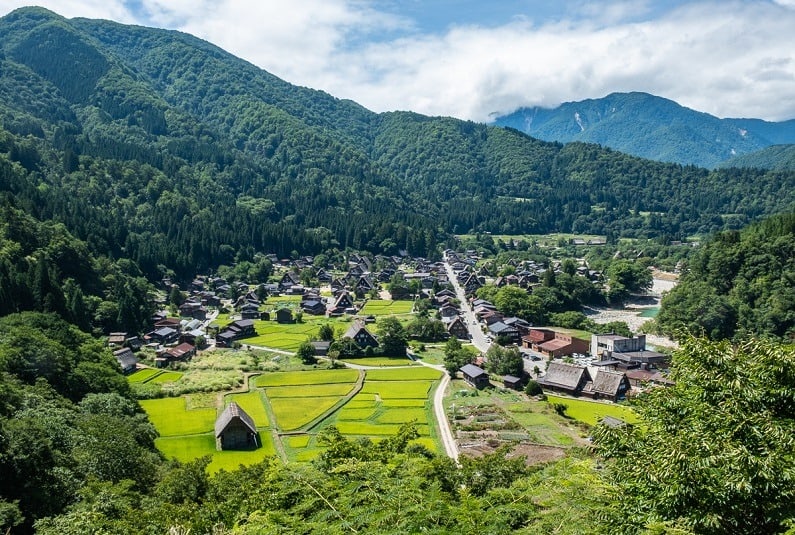
How to plan an unforgettable trip to Japan
Are you clueless on how to prepare for your 3 weeks in Japan? Read this article to find out EVERYTHING you need to do to have a fabulous 3 weeks in Japan. You’ll learn when to buy the cheapest tickets, how to get a Japan Rail Pass, how to rent a pocket wifi, how to pick up some Japanese phrases easily, what apps to upload and much, much more.

25 Great Novels to Read Before Visiting Japan
Prepare for your trip to Japan by escaping to another time and place. Here's a growing list of 25+ novels focusing on Japanese culture and characters. Some are set in contemporary Tokyo, while others take place before World War II. There are also books set in the Japanese internment camps during WWII and in China during the Nanking Massacre.
Is a Japan Rail Pass Worth It?
Are you wondering whether the Japan Rail Pass is worth it?
In this guide to the Japan Rail Pass , I break down the transportation prices for each of the destinations in this Japan itinerary of 3 weeks . Then I compare them to the 2024 price of a Japan Rail Pass.
You'll also find out where and how to purchase a Japan Rail Pass, how to activate the Pass when you get to Japan, and how to use the Pass. Check out the current Japan Rail Prices from my favorite travel agency in Japan or book your pass through Klook .
Japan Itinerary: 3 Weeks
Click on each photo/place name to jump to its own detailed itinerary.

Tokyo: Days 0 - 4

Takayama: Days 5 - 6

Kamikochi: Day 7

Shirakawa-go: Day 8

Kanazawa: Days 9 - 10

Alpine Route: Day 11

Matsumoto: Day 12

Kyoto: Days 13 - 16

Nara: Day 17

Hiroshima & Miyajima: Day 18

Hakone: Day 19 - 20

Tokyo: Day 21
When to travel to japan.
Spring: If you want to get the money shot during your 3 weeks in Japan, visit during the Cherry Blossom Festival, mid-March - mid-April. On the downside, it'll be crowded and accommodations will probably be pricey. You also don't have to visit right during the blossoming of the cherry trees. You can visit at the end of April and May and get perfect weather albeit not the Cherry Blossoms.
Fall: Fall is also a beautiful time to visit. The leaves change color and the countryside is covered in reds, yellows, and oranges. The weather is also milder and thus, more enjoyable.
Summer: I went for 3 weeks to Japan in August, and if there is one thing that I am certain of in life, it's that you shouldn't go to Japan in August . It's hot. I mean it's really, really hot. Unbearably hot. Tokyo's concrete and August heat do not mix well. You also have to worry about it being typhoon season (June to October). You can get more information here on what happens when there's a major typhoon in Japan .
Winter: Doing a 3-week itinerary in Japan can have its upsides and downsides. Japan gets snow in the winter in the Alps, making some destinations more difficult if not impossible to get to. But on the other hand, you can get some beautiful shots of the snow. If you like skiing, this is a good time to go. If you like hiking, it's not. And since it's the low season, accommodations will be cheaper and tourist sights will be less crowded.
What to see and do for 3 Weeks in Japan

1. Eat Sushi in Tokyo
You won’t know what good sushi is until you’ve experienced it in Tokyo. You can get sushi at conveyor belt restaurants for around $2 apiece. The taste is ok. However, to get really good sushi, you need to go to a proper sushi restaurant and spend around US$35 for a set menu of an assortment of sushi. Tsukiji Inner Fish Market has closed down and moved to Toyosu Market. There are still street vendors at Tsukiji, but most of the famous restaurants like Sushi Dai have moved to Toyosu. Click on the photo to find out where you can experience the best sushi in Tokyo. (Tokyo: Days 0-4 and 21) ♦ READ MORE ABOUT TOKYO HERE ♦

2. Be Dazzled By the Neon Lights of Tokyo
Perhaps you remember that seen in Lost in Translation when Scarlett Johannson and Bill Murray were strolling through the neon lights of Tokyo. That was one of the most iconic moments for me in that movie. There isn’t just one place to put yourself in that scene. You can find neon-lights in Shinjuku and Akihabara, but for me, the quintessential place for that OMG! I’m in Tokyo feeling was in Shibuya. Click the photo for more information on how to experience your own Lost in Translation! (Tokyo: Days 0-4 and 21) ♦ CLICK HERE TO READ MORE ABOUT TOKYO ♦

3. Hang out with the Cool Kids in Harajuku
Tokyo is about mass consumerism on a scale that I, an American, have never seen before. Whereas this hyper-materialism would seem crass in the U.S., for some reason, it’s kind of endearing. Wander the streets of Harajuku to get a glimpse of what is fashionable in Tokyo. Check out Cat Street and Takeshita Dori. Stop and grab a crepe and/or a fluffy pancake at one of the many restaurants in the area. Click on the photo to find out how you can experience the sights of Harajuku. (Tokyo: Days 0 – 4 and 21) ♦ CLICK HERE TO READ MORE ABOUT TOKYO ♦

4. Immerse yourself in history at Tokyo's many museums
Geishas, Samurai, Shoguns, Kabuki—most of these iconic images are lost to the past. To see them, you’ll have to visit one of the countless museums sprinkled throughout Japan. I’ve never visited a country with so many museums: both small and big ones. My favorites were the Edo Tokyo Museum, the National Museum in Tokyo, and the Hiroshima Museum. Click on the photo to find out how you can discover the history and art of Japan. (Tokyo: Days 0 – 4 and 21) ♦ CLICK HERE TO READ MORE ABOUT TOKYO’S MUSEUMS ♦

5. Take part in the rituals of a Japanese shrine
Where can you purify yourself, get your fortune told, buy a charm, and make a wish? At a Japanese Shinto Shrine, of course. Visiting a shrine is not only about taking some beautiful pics, but also about experiencing the rituals of Japanese culture. To participate in them, you don’t have to be a member of the Shinto religion. Make sure to get your fortune told at Senso-ji Shrine and hang your wish under a Camphor tree at Meiji Shrine in Tokyo. (Tokyo: Days 0-4 and 21; Kyoto: Days 13-16) ♦ CLICK HERE TO READ MORE ABOUT VISITING THE MEIJI SHRINE IN TOKYO ♦

6. Escape from Reality by watching Kabuki
If your kind of entertainment includes stories of rejected lovers, bloody betrayals, and sword-wielding samurai, then Kabuki Theater is for you. You can watch this fascinating and colorful traditional Japanese drama for as little as $13 at the Kabuk-za Theater in Tokyo. Click on the photo to learn how to watch Kabuki. (Tokyo: Days 0-4 and 21) ♦ CLICK HERE TO READ MORE ABOUT WATCHING KABUKI IN TOKYO ♦

7. Slurp on some Japanese noodles
Japanese ramen may have the same name as those 15 cent packs you ate in college, but taste-wise they’re worlds apart. You can find a ramen shop in probably every neighborhood in Japan. For the solo traveler, they’re an ideal quick and hearty meal. But Japan doesn’t have just ramen; it also has udon and soba: two noodles that represent the Japanese love of ritual. (Everywhere in Japan)

8. Savor the most decadent beef on the planet
The United States might be the home of the burger and steak, but Japan has it beat by a mile when it comes to the main ingredient of those dishes: beef. The beef in Japan is sooooo good! Maybe their cows are just happier. There are many different varieties of wagyu beef: Kobe, Hida, Shiraoi, Shinshu, and 250 more. And you don’t have to rob a bank to try some. (Takayama: Days 5 – 6) ♦ CLICK HERE TO READ ABOUT WHERE TO EAT HIDA BEEF ♦

9. Hike through the Japan Alps
You’ve heard of the Swiss Alps? Of course. French Alps? Ditto! The Austrian Alps? The Sound of Music, so of course. The Japan Alps? Probably not! Most people have never heard of the Japan Alps, but they do exist, and they’re pretty impressive. There’s a reason that Japan has held the winter Olympics twice. They have lots of gorgeous mountains! And with Japan’s impressive public transportation system, they are accessible to even those without a car. (Kamikochi: Day 7) ♦ CLICK HERE TO LEARN MORE ABOUT KAMIKOCHI ♦

10. Enter a fairytale at Shirakawa-go
Do you remember the story of Hansel and Gretel? Two children lost in the woods who come upon a house made of cakes and sugar only to fall into the evil grasp of a wicked witch. Shirakawago sort of reminds me of that place but without the wicked witch. It’s a picture-perfect rustic village nestled in the Japan Alps. The region is famous for its traditional gassho- zukuri farmhouses. The houses have these beautiful thatched roofs that resemble a person’s hands in prayer. (Shirakawa-go: Day 8) ♦ CLICK HERE TO READ MORE ABOUT SHIRAKAWAGO ♦

11. Transport yourself to the World of Geishas and Samurai
Ever wonder what it’s like being a geisha? How about the life of a samurai? Step back in time and wander around the beautifully preserved geisha quarters of Kyoto and Kanazawa and the samurai quarter in Kanazawa. Kanazawa has two restored geisha houses that you can enter and explore. If you’re lucky in Kyoto, you can spot a geisha on her way to meet a patron. Or you can transform yourself into a geisha at the Maika Geisha Costume shop in Kyoto. (Kanazawa: Days 19-10 and Kyoto: Days 13-16) ♦ CLICK HERE TO GET A KANAZAWA ITINERARY ♦

12. Hike among the clouds
Forget about taking an old boring bus or train to travel from one place to another. Instead, do something a bit unique and travel along the Tateyama Kurobe Alpine Route by cable car, trolley, and ropeway. Along the route, you can get out and hike to the peaks of mountains that are over 3,000 meters. If you don’t feel like exercise, relax at a hot spring. (Alpine Route: Day 11) ♦ CLICK HERE TO GET AN ALPINE ROUTE ITINERARY ♦

13. Storm a Castle in Matsumoto
Japan had over 3,000 castles; however, most of these castles were destroyed in the 1800s in Japan’s drive to modernize. Only twelve have their original structure. Four of these structures are considered National Treasures. Matsumoto Castle is one of them. You can wander the interior of the castle, and as you look out its windows, you can imagine yourself a samurai warrior defending the keep. (Matsumoto: Day 12) ♦ CLICK HERE TO GET AN ITINERARY FOR MATSUMOTO ♦

14. Discover the unique architecture of Japan
The Japanese belief in harmony with nature can best be seen in Japan’s unique architectural styles. Go to Matsumoto and stroll around the old merchant district of Nakamachi to see the white lattice-decorated storehouses that have now been turned into trendy shops and cafes. When visiting Kyoto, take time to appreciate its carved wooden temples and traditional townhouses called machiya . Finally, gaze up at Japan’s modern wonders: the skyscrapers in Tokyo. ( Kyoto , Matsumoto , Takayama , Kanazawa, Shirakawa-go , and Tokyo ) ♦ CLICK HERE TO FIND OUT MORE ABOUT ARCHITECTURE IN MATSUMOTO ♦

15. Get into your Zen at Kyoto’s numerous temples
I’m sure you could spend a year in Kyoto and still not see all of its temples. However, make sure you visit at least one or two temples with a Japanese garden like Tenryu- ji , Shoren -in, and Ryoan – ji . Take some time out from taking photos. Sit down on a tatami mat or a veranda, gaze at the Japanese garden, and clear your mind of all its worries. (Kyoto: Days 13-16) ♦ CLICK HERE TO LEARN MORE ABOUT KYOTO ♦

16. Walk through the endless arcade of torii gates at Fushimi-inari
Even if you’re not crazy about temples, Fushimi-inari shrine in Kyoto is a Must-See. To walk through the never-ending vermilion torii gates as you climb the mountain behind the main shrine is unforgettable. Pay attention to the fox spirit statues dotted throughout the arcades. What does she have in her mouth? For a creepy experience, go at sunset. (Kyoto: Days 13 – 16) ♦ CLICK HERE TO READ MORE ABOUT FUSHIMI INARI SHRINE ♦

17. Enter the sublime paradise of Kyoto's Bamboo Forest
There’s a reason that the Bamboo Forest in Kyoto is one of the most photographed sites in Kyoto. It is simply sublime—but only if you go in the early morning when the hoards of selfie-stick-carrying tourists have not arrived yet. Only then can you fully appreciate the calmness that emanates from the trees and the wonderful sound that the bamboo makes as it sways in the wind. (Kyoto: Days 13-16) ♦ CLICK HERE TO LEARN MORE ABOUT HOW TO SEE THE BAMBOO FOREST ♦

18. Matcha, Matcha, Matcha, and more Matcha
Matcha is everywhere in Japan. First, it’s in the green tea that you can get at a tea house. Try the tea house at Kenroku-en Garden in Kanazawa or at Okochi Sanso in Kyoto. However, it’s not only in tea; you can also try matcha ice cream (make sure to try it with honey or together with sake flavor), matcha tiramisu (actually not that good), a matcha smores Frappucino at Starbucks (surprisingly good), and on and on. ♦ CLICK HERE TO LEARN MORE ABOUT HOW TO GET YOUR MATCHA FIX IN KYOTO ♦
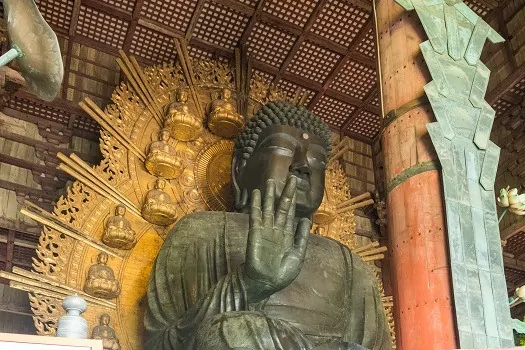
19. Behold the Magnificence of the Great Buddha of Nara
An hour-train ride outside of Kyoto sits the most impressive temple of them all: the Todai Ji temple. Inside the temple grounds is the largest wooden structure in the world, the Daibutsu-den Hall. In case you’re still not impressed, inside the hall sits one of the largest bronze statues in the world: the Great Buddha of Nara. Make sure to visit the other temples around Nara. (Nara: Day 17) ♦ CLICK HERE TO READ MORE ABOUT NARA ♦

20. Experience the wildlife of Nara
Not only does Nara have grand temples, but it also has the cutest and friendliest deer I’ve ever seen. And as you walk around the city, you’ll be swarmed by them. You can buy some deer snack food and feed them yourself. They also make for the perfect addition to your selfie. Just avoid the deer poop that’s everywhere. (Nara: Day 17) ♦ CLICK HERE TO READ MORE ABOUT NARA ♦

21. Get a dose of reality in Hiroshima
Should you forget our present-day reality, Hiroshima and its cruel history are here to remind you. This is not the most cheerful stop on your 3-week Japan itinerary, but it is probably the most important. Hiroshima was the site of one of two atomic bombs that the U.S. dropped on Japan. Visit the Atomic Bomb Dome, walk through the Peace Memorial Park, before stopping at the Hiroshima Peace Memorial Museum. (Hiroshima: Day 18) ♦ CLICK HERE TO READ MORE ABOUT HIROSHIMA ♦

22. Try Japanese "Pancakes"
Many cultures have their version of a “pancake.” Japan is no exception. The good news is that Japan has two versions of “pancakes.” One is their fluffy pancakes really and truly based on the western version of pancakes that you can find all over Harajuku in Tokyo. The other version is a traditional dish called okonomiyaki, a fried “pancake” consisting of noodles, bean sprouts, and assorted kinds of seafood. Some even come with cheese. Make sure to try okonomiyaki in Hiroshima. (Hiroshima: Day 18) ♦ CLICK HERE TO READ MORE ABOUT EATING OKONOMIYAKI IN HIROSHIMA ♦

23. Take a ferry ride to Miyajima
Before ending your 3-week itinerary in Japan, make sure to get in your tiny dose of the island of Miyajima, a 30-minute train ride from Hiroshima, a 5-minute walk to the ferry, and then a pleasant 15-minute ferry ride to the island. People come here for one main purpose and that is to see the floating vermillion torii gate of the temple Itsukushima-jinja. Just try to go when it’s high tide so that you can actually take photos of the torii gate surrounded by water. (Hiroshima and Miyajima: Day 18) ♦ CLICK HERE TO READ ABOUT MIYAJIMA ♦

24. Snap a picture of Japan's most iconic image: Mount Fuji
There is no image more iconic of Japan than that of Mount Fuji. You can climb Mount Fuji during the summer months, but if you’re like me and you have knee issues, then climbing isn’t going to work. You can, though, take photos of it from the distance. If you’re lucky and the sky is clear, you can see it from the Tokyo Sky Tree or from Hakone. Better yet, you can visit one of the smaller cities around Mount Fuji to get a great view. ♦ CLICK HERE TO READ ABOUT HAKONE ♦
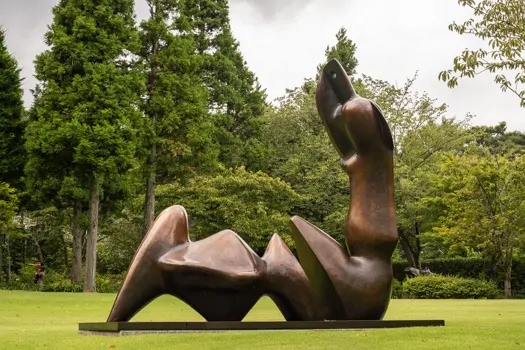
25. Get a Taste of World Class Art at Hakone Open-Air Museum
Nestled in the mountains around Hakone, the Hakone Open-Air Museum is one of the best contemporary art museums I’ve visited. The number one reason to visit is for some of the most interesting and coolest art sculptures and number two for its beautiful mountain scenery surrounding the museum. The museum has both Japanese and Western 19 th and 20th-century art including an impressive permanent Picasso exhibit. (Hakone: Day 19-20) ♦ CLICK HERE TO READ ABOUT HAKONE ♦

26. Experience blissful relaxation at a Japanese hot spring
There are literally over a thousand onsen (natural hot spring baths) scattered all over Japan for you to choose from. For the ultimate experience, splurge on a ryokan, a traditional Japanese style inn, somewhere in Hakone or in the Japanese Alps that has its own private hot spring. Usually, the inn will serve you a sumptuous multi-course meal in your room. In this way, you can take your time and experience pure bliss as many times as you want. ♦ CLICK HERE TO READ ABOUT HAKONE ♦
Pin it for later

I spent 19 days in Japan to be exact, and I felt a bit rushed. I also got hurt, so I had to take a day off to rest. If I’d had a couple of more days, it would have been perfect. Japan is hot in the summer. If you can, go in the spring or fall when the temperatures are more pleasant than the summer. I’ve been all over Southeast Asia and lived for many years in Asia, but Japan was unbearably hot for me. Are you planning on going to Japan? If so, what are your plans? What else do you want to know?
If you find this information useful, please share on social media! ♥
33 Comments
Thank you so much! What a great itinerary! I want to try those pancakes and visit the Hakone open air art museum. And well everything. I need to get back to Japan.
Your welcome! There is so much to see in Japan that you can never do it all. The Hakone Open Air Museum was probably the best part of Hakone–probably the coolest art museum I’ve been to.
Haven’t been to Japan yet, but it seems awesome! ?
It is! I hope you get a chance soon!
Love this guide, so detailed and this simply looks like the perfect itinerary! I haven’t visited Japan, but it is high on my list to visit soon. Definitely will pin this for later.
I hope you get a chance soon! Honestly, I can’t believe I myself waited so long. It was much, much better than I expected.
This is so useful. I will be saving this link for a future planning to Japan. Thank you so much for the detailed blog!
You’re welcome!
Wow, this is an incredible post!!! Japan is #1 on my bucket list, and this is a perfect itinerary! Though I would love to go to Osaka, too.
I’m hoping I can go to Osaka next time. I hear the food is really good.
Just found this! Have booked 22 days in March – April. Right now I have only booked the flights to Tokyo and back. So excited to read your itinerary!
Thank you! 22 days in Japan is going to be awesome. You’re going to love Japan!
Great itinerary thanks! I’ve been to Tokyo, Osaka, Kyoto, Nara and Hiroshima, and loved them all. Next time I’ll be adding some hiking and Shirakawago from your itinerary. I love fairytale villages and Shirakawago looks oh so pretty!
If you have a chance to go back, definitely visit Northern Japan Alps region! It’s beautiful, and the towns are a bit like a smaller version of Kyoto.
Wow I love how in depth this guide is and it’s honestly really cool how you can click on different things throughout for more info. It is so helpful! I need to get to Japan!
Thanks! I never had much interest in Japan before, but then I suddenly wanted to go. I was surprised how amazing it was and could kick myself for waiting so long to go!
Hi Julie! Just curious, out of your 21 day trip, were there any areas where you wished you had stayed a bit longer? I have the flexibility to stay longer than 21 days. Thanks!
Good question, Rachel. I could have stayed one day longer in Tokyo because there were some neighborhoods I didn’t get to see. I would have stayed in Nara or Kyoto one more day as well for Nara’s history and for doing some hiking outside of Kyoto. I could have also stayed longer in the Japan Alps and stayed at a onsen resort outside of Takayama. On the other hand, I wish I had made it to Nikko or Kamakura outside of Tokyo. What are you interested in seeing more of?
Hi, how much was your rough cost of this trip excluding flights and did you get the JR rail pass?
Hi Jason, I got the JR Pass for 14 days. I’d say, excluding the JR Pass and flight, around $2300 total. Sometimes I stayed in hostels and sometimes nice hotels, so the daily. I spent around $1300 on accommodations and $1000 on food, ticket prices, souvenirs, transportation around cities, and buses between cities. I also ended up having to go to the hospital while there. This added to my spending but only by around $55 for doctor and medicine and then transportation another $30 to the hospital and back. I could have done it for less if I hadn’t splurged on staying in a ryokan with onsen or five nights at a nice hotel in Kyoto. – Julie
Great Itinerary! Very helpful and informative. Did you go to Mount Fuji? I know you mention taking a picture but I am a little confused where that happened along the way. Thank you for clarifying. Also cant wait to read your recommended novels!
Hi Erin, Thank you! I didn’t make it to Mount Fuji on my last trip, but I’m going back to Japan this August and have plans to visit Kawaguchi-ko/Mount Fuji area. – Julie
Hi Julie. Great itinerary found it a big help.
Having trouble opening the Kanazawa page mind. Wondering I’m going to Japan for 16 Nights wondering if you could help in regards of Kanazawa- Takayama and Matsumoto.
Im torn between having two nights in Kanazawa and 1 night in both Takayama and Matsumoto? wondering if I would prefer to add the Kamikochi day trip in if it would make more sense to have 2 nights in Takayama and 1 in Kanazawa and Matsumoto. Thanks
Once again great site. Morgan
Thanks! I haven’t finished the Kanazawa article yet. Two days in Takayama or two days in Kanazawa is a hard decision. If I were coming from Tokyo (5 hours by train), I’d arrive in Takayama at noon and have half a day to see the old part of the city. The next day I’d go to Kamikochi or Shirakawa-go so that I’d have a chance to see the Japan Alps and get out in nature. Then I’d head to Kanazawa by bus, which is 2 or 3 hours away. I’d spend the rest of the day exploring the geisha district, visiting the garden, and walking through the samurai district. Then onto Matsumoto. Kanazawa is nice, but I liked the small-town-feel of Takayama and the beautiful scenery of the area.
Hey! This itinerary is amazing and one I will probably follow next year!
Did you find that the JR Pass was beneficial for this route or did you just pay for tickets individually? 🙂
Hello there! For some reason I can’t download the itinerary 🙁 it stays on a loop on the subscribe part, would it be possible to subscribe and receive it some other way?
I can email it to you using the email that you entered. Would that work for you?
Hi Julie this looks interesting. I couldn’t download the itinerary. If you could email it that would be great! I have about 16 days of my 18 day trip free to sightsee so your itinerary will be very helpful!
I emailed the itinerary to you. I hope you have gotten it.
Hi! Could I please have the itinerary for this trip please? It doesn’t seem to be working when I try and download it. I’m looking forward to my trip and found your website amazing! Thank you
Yes, Please go to the Contact Me tab to send me an email and I’ll send you the itinerary.
Great itinerary 🙂 I am planning to visit Japan in October this year. Can you send me the itinerary? I am not able to download it.
Ok, I’ll send it!
Submit a Comment Cancel reply
Your email address will not be published. Required fields are marked *
Submit Comment
This site uses Akismet to reduce spam. Learn how your comment data is processed .

Get Your FREE Japan Itinerary Guide Here!
Subscribe to my newsletter to receive the latest travel tips for Asia and get a free 4-page PDF version of my 3-Week Japan Itinerary.
You have Successfully Subscribed!
Pin it on pinterest.

3 Weeks in Japan: 3 Itineraries
DISCLAIMER: This post might have links to travel services and products that we enjoy. We might make a commission from it at no extra cost to you.
Best technologies, sushi, cherry blossoms, and Mount Fuji are just a few things that stand out in Japan when you are making a decision on where to go on your 3-week holiday.
What I love about Japan is that you can experience very different adventures depending on the season you visit. But, one thing that is constant is the tasty Japanese cuisine.
Some people might argue that three weeks is quite a long time to spend in such a small country. But it’s not about the size. It’s about what this little place in East Asia can offer its visitors.
We don’t take 3 weeks of vacation time lightly on this site. We value them; they are sacred, and we understand that they should be spent well because you earn them. This article is jam-packed with helpful information that will guide you in writing your 3 weeks in Japan itinerary or help you decide why spending your vacation here is super worth it.
We will discuss things you should know, such as how to make sure you don’t come as offensive to the locals, how to navigate around Japan, where to go, attractions not to miss, and, of course, where to eat in Japan. So, stick with me!
TRAVEL TIPS BEFORE GOING TO JAPAN
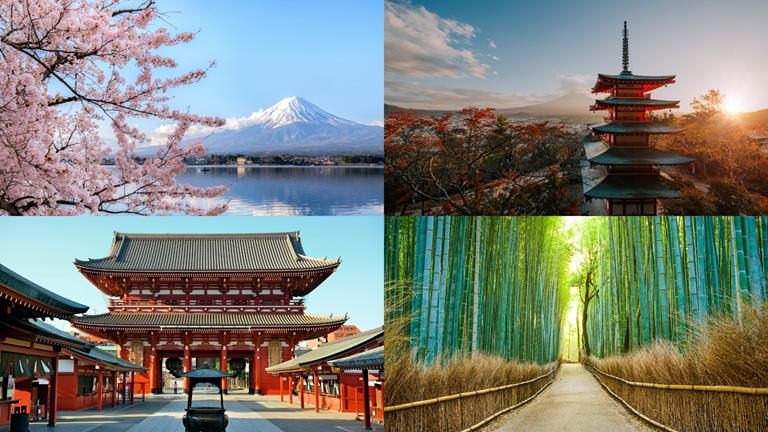
Before you book and pack anything, take a look at these tips before you go to Japan. To some, they might experience massive culture shock when visiting Japan. These tips might be helpful in writing an itinerary and blending in during your trip.
When is the best time to go to Japan
I don’t think “anytime” is the best time to go to Japan. Japan is so prone to typhoons, especially between May and October, which can affect your travel plans. On the other hand, this is the low season, meaning businesses related to tourism often run great discounts during this time.
If you want to maximise your trip, though, and imagine yourself under the sun most of the time, it’s best to visit Japan between November and April. Remember that Japan experiences four (4) different seasons.
This means you can ski in the winter, surf in summer, and enjoy the chilly but comfortable temperature of spring, where you can enjoy the famous Cherry Blossoms season.
Are 3 weeks enough for Japan
20 days in Japan is plenty. This will allow you to travel slowly and visit more than just the big cities. You will have enough time to go to less popular spots and really immerse in the culture and meet locals.
Instead of taking domestic flights, you can really enjoy the metro and train system of Japan and travel with a more scenic journey. If you have too much time, you can always hop on a flight to South Korea if you’re curious.
READ >> 3 weeks in Japan and South Korea itinerary
What to pack
What you must pack for 3 weeks in Japan depends on the season you plan to go since it gets quite cold during winter. One that is a must is clothing that can cover up your tattoos if you have any, which can also be used when you need to cover up for visiting temples.
We have a general packing list for a 3-week trip , but we also have a spring packing list and winter packing list .
Common cultural rules
Japanese culture is one of the world’s most polite, respectful, and considerate people. Of course, there are always bad apples. There could be many reasons why the Japanese appear so respectful, especially to strangers or visitors (of their home or their country).
But what’s important to remember is how to be respectful to the people and culture of Japan. Here are some basic tips for common cultural rules in Japan:
- Do not tip and spit on the ground
- Cover your tattoos
- Remove shoes before entering someone’s house
- Talk quietly in public places
- Bow when greeting, saying thank you, excuse me, or I’m sorry
- Learn basic Japanese words – thank you, hello, how much, sorry, excuse me
How to get around
Japan has one of the world’s best, most reliable, and most efficient public transportation. The trains, buses, ferries, and even planes are on time. Every time they get delayed, expect an apology if you are a worker, you can get proof to show your boss why you are late.
Not only are they on time, but they are also the most affordable way to get around – especially with the trains. There are many different kinds of public transportation passes to choose from depending on your needs and travel plans.
For example, you can get unlimited passes within cities or major cities. You can also use one to travel to another city or province.
For a 3-week stay in Japan, you can get the JRPass , which gives you unlimited passes to take the Shinkansen and JR trains, buses, and even ferries. You can either buy them online or at some stations, but the price can be higher. You can always ask your hotel receptionist to assist you in getting one online.
Convenience store visit is a must
This may be one of the reasons why I wanted to visit Japan. The convenience store is a must-visit. Not because they offer unusual promos or features. The simple answer is the fact that these convenience stores are more than just mini-stores.
They really embody their name with a number of options for quick food to grab at any time of the day. Plus, they are affordable and great for those travelling on a budget,
But many tourists find these stores impressive because it’s like a gateway into exploring Japanese food and snacks without worrying about sanitation and “how long have they been out here on display?”. From cold salad to warm noodles, breakfast to dinner, they are all here.
Currency and payment method
In a country where you first heard about bullet trains, the country with the first cellular network in history, the inventor of the rice cooker, QR code, selfie stick, and even your beloved emojis.
With all these, you would think that Japan is very high-tech-tech, but they prefer cash when it comes to payment methods.
Don’t worry; hotels, fancy restaurants, and big shopping places accept credit cards. However, cash is still the king of Japan. If you dream of eating in small ramen houses or trying out the cool vending machines, using public transportation – you will need more cash than you thought.
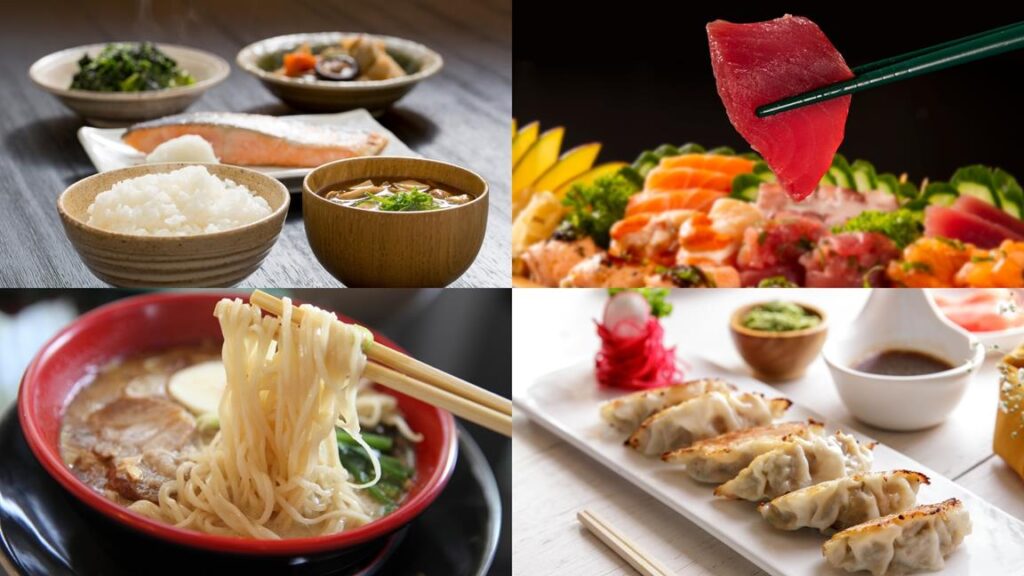
I wouldn’t say there’s a massive language barrier in Japan. It is believed that 20-40% of Japanese can speak at least basic English. However, many of them are self-conscious and shy in public.
More and more, younger generations speak relatively great English and are comfortable extending help to tourists.
On the other hand, make sure to download a translator app specifically for Japanese to your language so you can use it without mobile data.
And again, it will really go a long way if you learn some basic Japanese phrases like greetings, asking how much a thing is, where the train/bus/shop is, etc. It will also show respect for their culture.
Internet access
Mobile data in Japan is expensive, and free public Wi-Fi is not as reliable or is often used for limited use. You can purchase an e-sim or data package or get this easy-pocket wifi to rent for your stay in Japan. You can compare whether using your roaming services is cheaper or access the local provider.
Japan is somehow strict when it comes to travel visas. Passport holders of countries in most Americas, Europe, UAE, South Africa, Australia, South Korea, New Zealand, Thailand, Cambodia, and Indonesia can enter and travel around Japan visa-free between 15 days up to 180 days.
Other basic travel tips
Pinned map of must-see places in japan.
Click the enlarge button on the top right corner. Credit: map data: Google
3 WEEKS IN JAPAN ITINERARY
Before anything else, since Japan experiences four seasons a year, it’s important for you to decide when to visit Japan.
For example, summer is great since it’s the only time you can hike Mount Fuji, but it gets really hot with such high humidity, while in spring, it’s cooler, cherry blossoms are popping, and you can enjoy the spring festival.
During fall or autumn, the trees are just magnificent during their turn of colour, plus the temperature is much bearable than in summer.
And lastly, winter can be cold , meaning you need to pack warm clothing, but this also means you can enjoy winter activities such as skiing, the perfect time for an onsen bath, and the most beautiful winter festival in East Asia.
3 weeks in Japan in Spring
If you are considering visiting J apan during spring, I assume cherry blossoms have something to do with it. First, remember that the best time to see these beautiful trees is around the second week of March.
So, either start your 3 weeks in Japan at this time or if you want to enjoy the Takayama Spring Festival, it happens around the second week of April. Also, this is one of the busiest times in Japan for tourism, so keep that in mind.
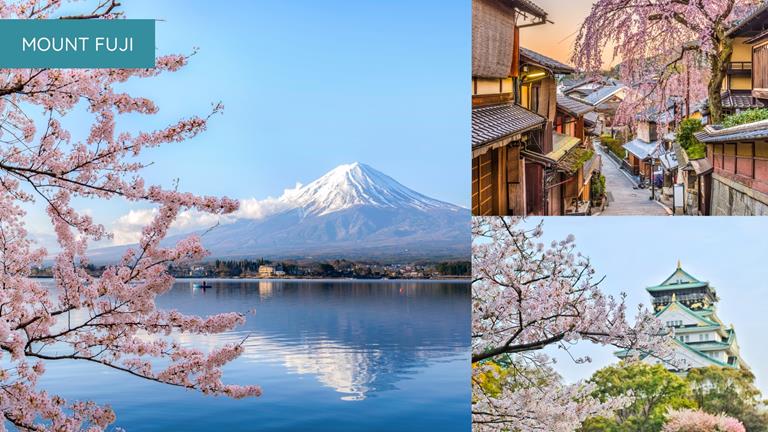
This means spring in Japan for 3 weeks should be between the third week of March and the second week of April.
- Day 1-3 : spend this time exploring Tokyo, getting a train/subway ticket or passing local money, and enjoying the capital, where you can visit many places such as Yayoi Kusama Museum and Senso-ji.
- If you prefer to see cherry blossoms here, you can visit Shinjuku, Tokyo: Shinjuku Gyoen or do day trips to Nikko and Kamakura. If you are planning to travel with kids or want to be a child at heart for one day, don’t forget a visit to Tokyo Disneyland .
- Day 4-10 : Head to Yamanashi, where you can visit Yamanashi’s Fuji Motosuko Resort for amazing cherry blossoms. You can also go hiking, horseback riding, golfing, and other fun outdoor activities. And, of course, this is where you can adore Mount Fuji. Finish your stay here with a visit to Hottarakashi Onsen.
- Day 11-16 : Head to Nagoya to visit Nayoga Castle, Noritake Garden, and Tokugawa Art Museum. From here, you can take day trips to Kyoto and Osaka to visit Eikando Temple, Tofukuji Temple, and Universal Studio. You can visit the Legoland Resort, SCMaglev and Railway Park, and Tobishimamura Onsui indoor pool from Nagoya.
- Day 17-21 : Make your way to Takayama to celebrate Takayama Spring Festival. If you haven’t seen the cherry blossom trees yet, you can definitely enjoy them here as well.
3 weeks in Japan in Summer
Summer in Japan is pretty great. However, the heat and humidity can be off-putting to some.
If you don’t mind this, you can hike Mount Fuji during this season, which is only open in summer from July to September. You can also try surfing, visit the best water parks, and do lots of activities to cool you off.

- Day 1-4 : Start in Okinawa, an island south of the mainland or northeast of Taiwan. This island is filled with water parks and resorts from which you can choose. There are over 100 beaches you can cool off during this hot season. Manza Ocean Park, Cape Maeda, Shurijo Castle, and Oodamari Beach to name a few places in Okinawa.
- Day 5-8 : Make your way to Hiroshima, if you love history, you can visit the Atomic Bomb Dome and Hiroshima Castle. You can take the ferry to the beautiful Itsukushima Shrine and Mount Misen Observatory.
- Day 9-14 : Head to Osawa, where you can take day trips to Kyoto, Nagoya, and Hamamatsu. Make sure to get yourself a train/subway pass, which will be very useful and affordable.
- Day 15-21 : Explore Tokyo. Don’t forget to visit Tokyo downtown, Shibuya city, Senso-ji Temple, the National Museum of Emerging Science and Innovation, and of course, hike Mount Fuji.
3 weeks in Japan in Fall/Autumn
Autumn is such a beautiful season in Japan. The trees are turning colours, the temperature is cooler, and walking around the big cities and hiking is blissful. However, there are only a handful of places to enjoy autumn in Japan.
To make sure it’s worth your trip, you should add major attractions to your 3 weeks in Japan itinerary, such as the capital city, historical sites, and food-y your way around.
Read our list of the best places to spend the fall or autumn season for your 3-week trip .
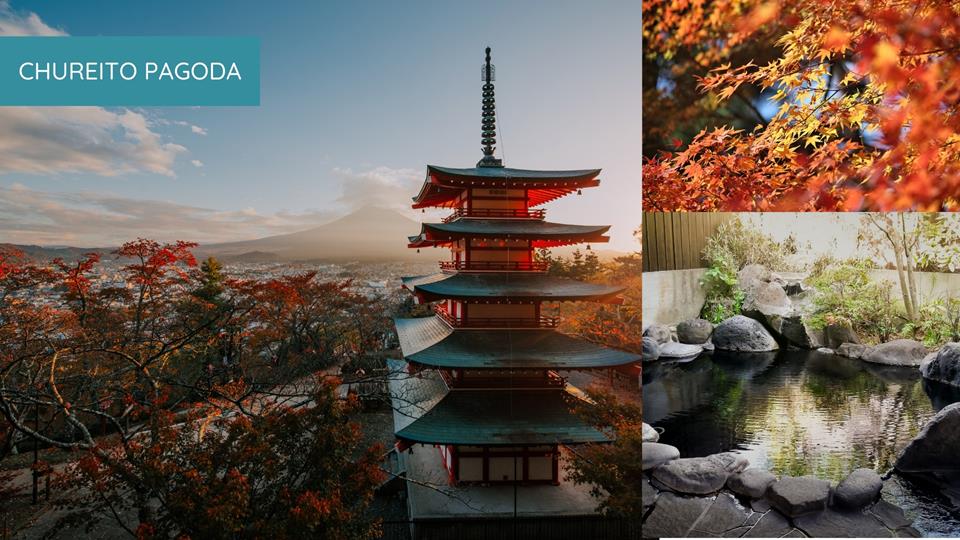
Start your trip at around the middle of September or even the end of the month. It’s not too cold yet but also not scorching hot. Good enough for a light jacket and closed shoes.
- Day 1-4: Start in Tokyo, gather yourself, get local currency, and get familiarised with how things work in Japan. Enjoy downtown Tokyo with local transportation, visit some clubs if that’s your vibe, or simply enjoy different parks and food in the city. Don’t forget to visit Fuji Five Lakes for awesome trees with autumn colours.
- Day 5-7 : Base yourself in Kyoto; from here, you can visit the historical region of Hiroshima and then explore Osaka and Nagoya. Visit Mount Hiei, Ama Site Park, and Osaka Castle.
- Day 8-12 : Head to the Japanese Alps; while it might still be too early to ski, this area is stunning, filled with trees perfect for your autumn vibe. Here, you can do lots of hiking and outdoor activities.
- Day 13-21 : Fly to the island of Hokkaido. Fall colours in this region are nothing like those elsewhere in Japan. You can also visit the island’s northern part and see Abashiri Drift Ice. Don’t forget to visit an onsen, the outside temperature is perfect for this activity. You can either try indoor or outdoor onsen.
3 weeks in Japan in Winter
Winter is also a great time to spend 3 weeks in Japan. Yes, it can be quite cold, but you can do so many fun activities such as skiing and snowboarding, outdoor skating, onsen baths, and even visiting the drift ice.
Pack some warm clothes because it can get very cold during winter, and good quality jackets and footwear to stay warm can be pricey in Japan. We also have a list of the best destinations for a 3-week winter trip and a packing list for a 3-week winter vacation .

- Day 1- 6 : If you are a skier or do any winter activities, I suggest you start your 3 weeks in Japan here. Near Tokyo, you have Hakuba Iwatake Mountain Resort & Ski Field and Nozawa Onsen Snow Resort, while Niseko Moiwa Ski Resort in Hokkaido.
- Spend a few days enjoying not only some fun white powder but also the natural beauty of Japan during winter. Don’t leave without visiting the north part of Hokkaido and seeing Abashiri Drift Ice.
- Day 7-14 : After finishing winter sports, it’s time for your usual tourist activities, such as visiting Hiroshima for history junkies. The best way to do this is to place yourself in Osaka or Kyoto – both cities can take you to Hiroshima but simultaneously have so much to offer for you to enjoy. You can even sneak a trip to Nagoya, where they have a Castle, Art Museum, and Public Aquarium.
- Day 15-21 : This is the time to enjoy Tokyo, its exciting nightlife, fun markets, and amazing local food to try. If you haven’t, make sure to visit an onsen that will really warm you up and is the best way to wrap up your winter holiday in Japan.
THINGS TO DO AND SEE IN JAPAN
First, let’s talk about the must-see places in Japan. In this way, you can decide the best time to visit Japan according to what you want to do. This list will also help you create a 3-week itinerary for Japan that will save you time and knock places off your list in a time-saving way.
- Explore top sites in Tokyo – custom full-day tour or a tour with a licensed guide
- Shinjuku Gyoen National Garden
- Disneyland in Tokyo – get a day pass
- Tokyo Tower
- See a Sumo Wrestler – you can challenge a sumo wrestler too
- Tokyo Skytree
- Digital Art Museum – get your ticket in advance
- Imperial Palace
- Enjoy Japanese cuisine by – sushi making or go ramen tasting or join a food and culture tour
- Go Kart Experience – right through the city centre, check the price
- Meiji Jingu
- Day trip to Mount Fuji (check the season schedule beforehand ) – combo with Hakone and Lake Ashi or this more affordable Mount Fuji tour or go on a Hakone cruise
- Enjoy the nightlife by doing – bar hopping or eat and drink tour
- Explore Kyoto – on a bike tour (with lunch) or e-bike tour or with a licensed guide
- Fushimi Inari Shrine
- Higashiyama Jisho-ji
- Kyomizu-dera
- Lanterns Night – join a discovery tour
- Eikando Temple
- Rikugi Garden
- Bamboo – Higashiyama Sanjo
- Learn about Japanese culture – join a zen meditation with locals or book a samurai experience or be part of a traditional tea ceremony
- Learn about Geisha – private dinner with a Geisha or explore the Geisha district
- Tofukuji Temple
- Discover Japanese Cuisine – go on sake experience tour or night foodie tour or ramen cooking class or all-inclusive local eats tour
- Nishiki Market
- Day trip to Hiroshima and Miyajima – check the tour price
- Peace Memorial Park – book a day trip
- Itsukushima Floating Torii Gate
- Atomic Bomb Dome
- Hiroshima Peace Memorial Museum
- Hiroshima Castle – with a combo visit to Hiroshima Castle
- Yamato Museum/Maritime Museum
- Hiroshima MOCA
- Explore Hiroshima on a bike – read the reviews
- Itsukushima Shrine
- Try traditional archery – book a tour
- Osaka Castle
- Universal Studios in Japan
- Umeda Sky Building
- Osaka Auarium Kaiyukan
- Abena Harukas
- Sumiyoshi Taisha
- Matsumoto Castle
- Zenko-ji Temple
- Shiga Kogen
- Daio Wasabi Farm
- Togakushi-Jinja
- Risshakuji Temple
- Zao Onsen Ski Resort
Sapporo, Hokkaido
- Sapporo Beer Museum
- Sapporo TV Tower
- Moerenuma Park
- Hokkaido-Jingju Shrine
- Sapporo Clock Tower
- Shiroikoibito Park
- Sapporo Kokusai Ski Resort
- Mount Miowa
- Mount Yotei
- Fukidashi Park
- Yukichichibu Onsen
- The Hakone Open-Air Musuem
- Hakone Shrine
- Hakone Ropeway
- Okada Museum of Art
Naoshima Island
- Benesse House Museum
- Chichu Art Museum
- Naoshima Public Bath
- Shodo Island
- Ando Museum
- Kizenzan Park
- Asemi River
- Mount Shiraga
- Yoshinobu Rice Terraces
- Vine Bridges in the Iya Valley
- Mount Miune
WHERE TO STAY IN JAPAN
This list can help you decide the best accommodations during your trip that suits your budget. It’s also arrange per city to make things easier.
- Affordable: Hotel Owl or bnb Hostel
- Mid-range: Hotel GrandBach or Shiomi Prince Hotel
- Luxury: The Capitol Hotel or The Gate Hotel
- Affordable: K’s House Travelers Hostel or Chinsun Premium or Sotetsu Fresa Inn
- Mid-range: Hotel Emion or The Royal Park Hotel or Sanco Inn
- Luxury: MONday Apart Premium or Mercure Kyoto Station or Via Inn Prime
- Affordable: Capsule Hotel Cube or Santiago Guesthouse
- Mid-range: Daiwa Roynet Hotel or Candeo Hotels
- Luxury: Hilton Hotel or Sheraton Grand Hotel
- Affordable: Shinsaibashi Arty Inn or Cabin & Capsule Hotel
- Mid-range: Hotel Cordia or Waqoo Shitaderamachi or Del Style by Daiwa Roynet Hotel
- Luxury: Oyado Nono or Hotel Intergate or The Bridge Hotel
- Affordable: Tune Hostel or Tmark City Hotel
- Mid-range: Hotel Amanek or Toyoko Inn
- Luxury: Hotel Nets or Tenza Hotel and Sky Spa
- Affordable: Hotel MetropolitanNagano or Sotetsu Fresa Inn
- Mid-range: Anise Garden or Matsumoto Hotel Kagetsu
- Luxury: Hotel Karuizawa Cross or Karuizawa Prince Hotel West or Hotel Wellies
- Affordable: Manten-no-Hoshi or Hakone Hostel 1914
- Mid-range: Hakone Guest House Gaku or Hakone Hotel or Mount View Hakone
- Luxury: Meibi Yumoto or Villa Hakone or Fujiya Hotel
- Affordable: Season 1
- Mid-range: Takamatsu Guest House Akane
- Luxury: Naoshima Juju Art House
- Affordable to Mid-range: Smile Hotel or Green Rich Hotel or Ana Crowne Plaza
SUMMARY OF 3 WEEKS IN JAPAN ITINERARY
3 weeks in Japan can be plenty of time for some or too long for others or even too short for some people. The best way to make sure you are making the most out of your 3 weeks vacation is to plan your trip but make wriggle room for changes and things you don’t expect that can happen. Let your fun side entertain some unplanned trips and activities.
Japan is filled with so many things you can enjoy and do. And if you find yourself bored for some reason or have time to spare, don’t forget, South Korea or other East Asian countries are just a short flight away.
I hope you enjoyed this 3 weeks in Japan itinerary and that I’ve helped you create a fun and suitable holiday for you in this part of the world.
SAVE THESE TIPS AND ITINERARY ON YOUR PINTEREST:

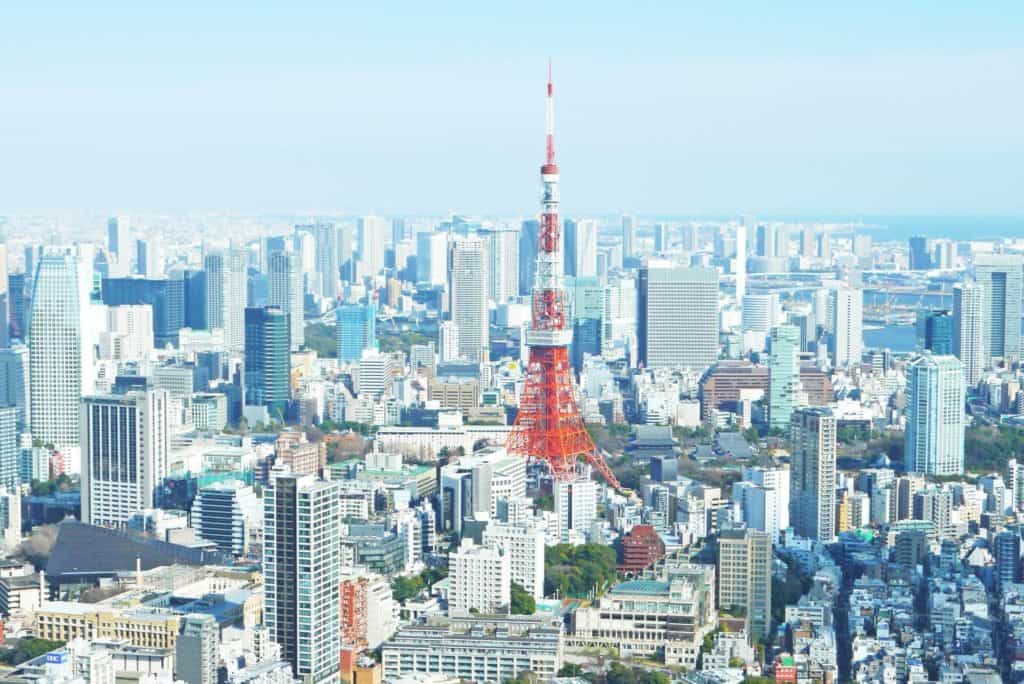
Best Japan 3 Week Itinerary In 2024 (+Budget & Travel Tips!)
Disclaimer: This page may contain affiliate links and I may get a small commission if you decide to make a purchase through my links, at no additional cost to you. Thank you.
Planning a Japan 3 week itinerary might seem daunting.
Maybe this is your first time travelling abroad solo for three weeks, and you have zero ideas about Japan travel .
Or maybe you are unsure how many of the 800 Japanese cities to visit within 21 days in Japan, plus how many days should you allocate for each city.
That’s okay, I felt these too when I was planning my first trip to Japan solo and that trip was one of the best travel experiences that I had till date!
So make sure to read this Japan three week itinerary until the end to learn more about the must-explore places, must-try food, the breakdown travel budget, and valuable tips when this awesome country!
Let’s get into it!
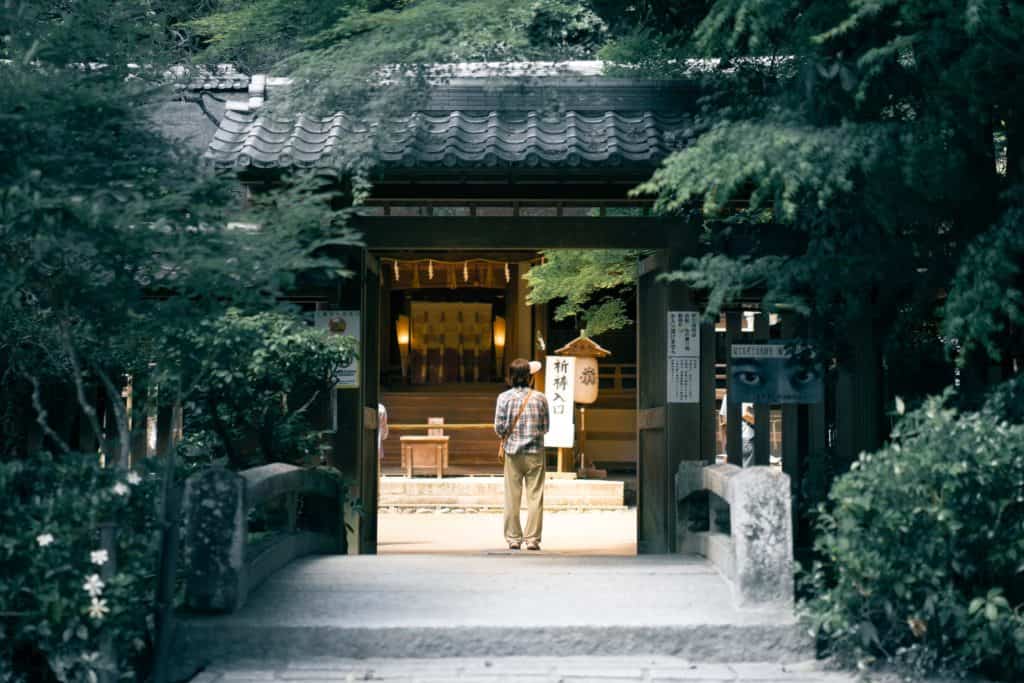
japan travel route 3 weeks: summary
Day 1-5: Tokyo (Day trip alternatives: Mount Fuji, Hakone & Nikko)
Day 6: Nagano
Day 7: matsumoto, day 8-9: takayama.
Day 10-11: Kanazawa (Day trip alternatives: Shirakawago & Noto Peninsula)
Day 12-14: Kyoto
Day 15: Nara
Day 16: hiroshima.
Day 17: Miyajima
Day 18: Kurashiki
Day 19: himeji.
Day 20-21: Osaka (Day trip alternative: Kobe)
Travel tip: JR Pass price will increase significantly by October 2023. Make sure to buy the pass before 30 September 2023 to enjoy the current price if you are visiting Japan before 29 December 2023. The pass can be activated up to 3 months after the issue date (up to 30 days in advance!).
3 Weeks Japan Itinerary: Useful Pre-Travel Tips And Links
Here are the shortcuts to the links of useful resources for your upcoming Japan trip:
- Using JR pass to travel around Japan will be your greatest buy—easy, fast, and convenient. I used JR pass when I was in Japan and I loved how convenient it was to get to different cities!
- Get a Japan local sim card or portable WIFI router to have internet connection with you at all times. I used this eSim and I had wonderful time exploring Japan solo!
- Hotel rooms in Japan can be sold out fast especially during peak seasons. Book your Japan accommodation in advance using Booking.com .
- Accidents can happen when travelling. Make sure you are fully insured before travel to Japan.
- Save yourself some time of queuing at popular attractions and get the entrance tickets booked early instead! Here are the recommended ones: teamLab Borderless | Ghibli Studio | Tokyo Skytree | Tokyo Tower Observatory | Tokyo Disney Resort | Universal Studio Osaka | Nijo Castle | Abeno Harukas | Legoland Osaka | Kyoto Tower
- Other convenient travel passes : Tokyo Subway Ticket | Hakone Free Pass | Osaka Amazing Pass
Disclaimer: World Nomads provides travel insurance for travelers in over 100 countries. As an affiliate, we receive a fee when you get a quote from World Nomads using this link . We do not represent World Nomads. This is information only and not a recommendation to buy travel insurance.
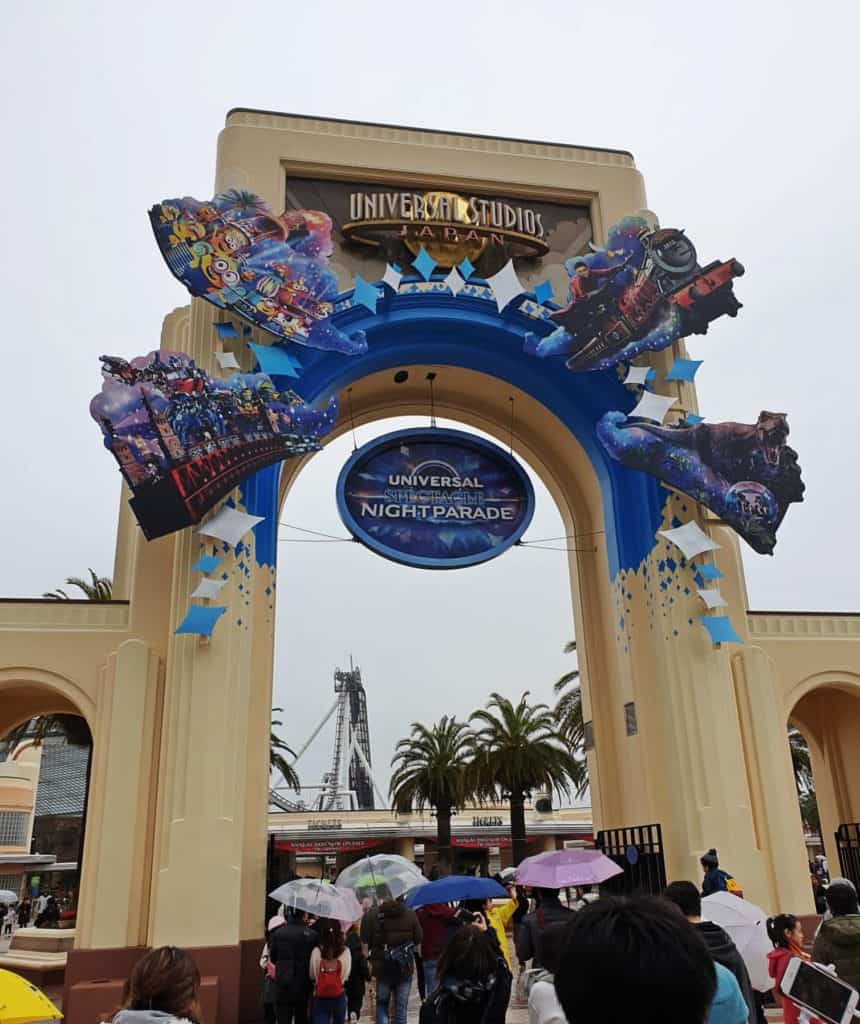
Related Articles:
- 13 Best Osaka Ryokan With Private Onsen (+Alternatives) In 2023
- Best 13 Onsen Ryokan In Kanazawa (For All Traveller Types!)
- What Japan Is Known For: 33 Famous Things That You Need To Know
- 17 Most Romantic Places In Japan (For A Lovey-Dovey Adventure!)
- 19 Best Apps For Travel To Japan In 2023 (+Personal Tips!)
- First Time To Japan: 45 Useful Travel Tips For First Time Traveler
- Japan Ski Packing List: What To Pack & Useful Tips
Day 1-5: Tokyo
Tokyo is the capital city of Japan —and also the most populous prefecture in the country.
A city that never sleeps, Tokyo is easily accessible thanks to its convenient and advanced public transportation systems.
Start Day 1 to Day 5 of your Japan 3 week itinerary by exploring Tokyo and its vicinity.
Getting To Tokyo From Airports
To get to Tokyo city from Haneda Airport , take:
1. Tokyo Monorail
- Line: Via JR Yamanote Line to Hamamatsucho Station in Tokyo
- Fare: US$5 (500 yen) one way
- Duration: 20 minutes
- Japan Rail (JR) pass : Covered
2. Limousine Bus
- Fare: US$10 one way
- Duration: 55 minutes
3. Shared Private Transfer
- Convenient & drop off directly to your hotel!
To get to Tokyo city from Narita Airport , take:
- Operator: JR Narita Express
- Fare: US$28 one way
- Duration: 1 hour
- Fare: US$23 one way
- Duration: 100 minutes
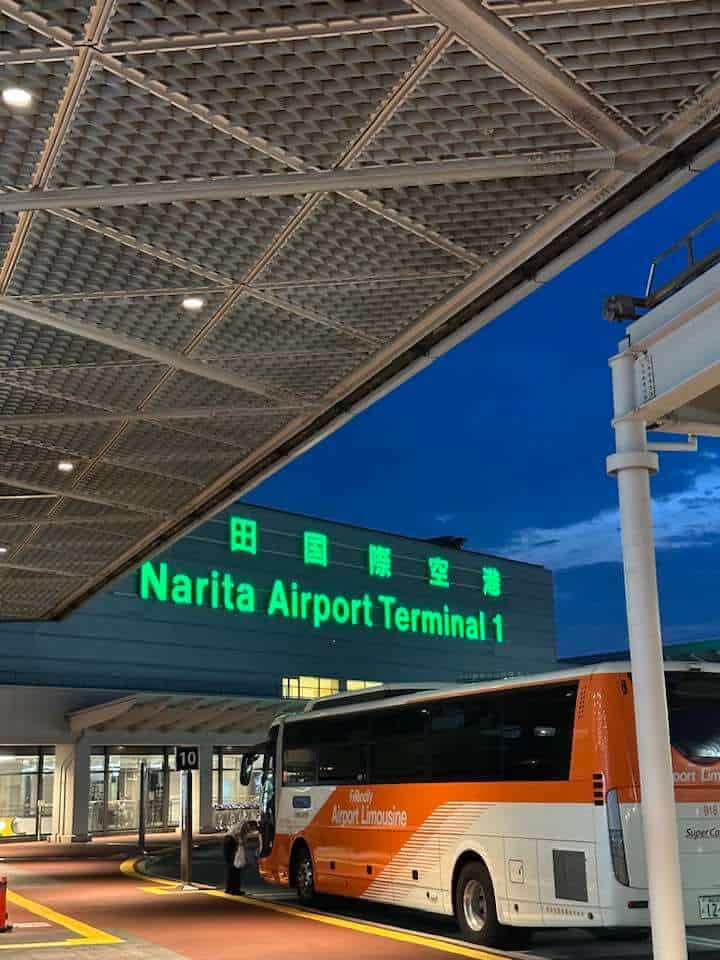
Travel tip: Personally I think you should use your JR Pass when you are leaving Tokyo to the next city instead of activating it right away since there are many cheaper ways to get to the city from the airport. With that you can plan a Japan 3 weeks trip by getting a 14-day JR Pass instead of the 21-day Pass and keeping your overall transportation cost lower.
I highly recommend getting to Tokyo city from airport by Limousine Bus . You can easily redeem the ticket at the counter in Narita Airport and they make multiple stops in Tokyo so you can choose the one that is nearest to your hotel!
Things To Do In Tokyo
Here are some of the major highlights in this metropolitan city that you can visit during your Japan 3 week itinerary:
- Visit Tsukiji Outer Market – Explore the local market that sells various fresh and processed seafood. You can also get the freshest sushi for breakfast here as the fish products are sent directly from Toyosu Market.
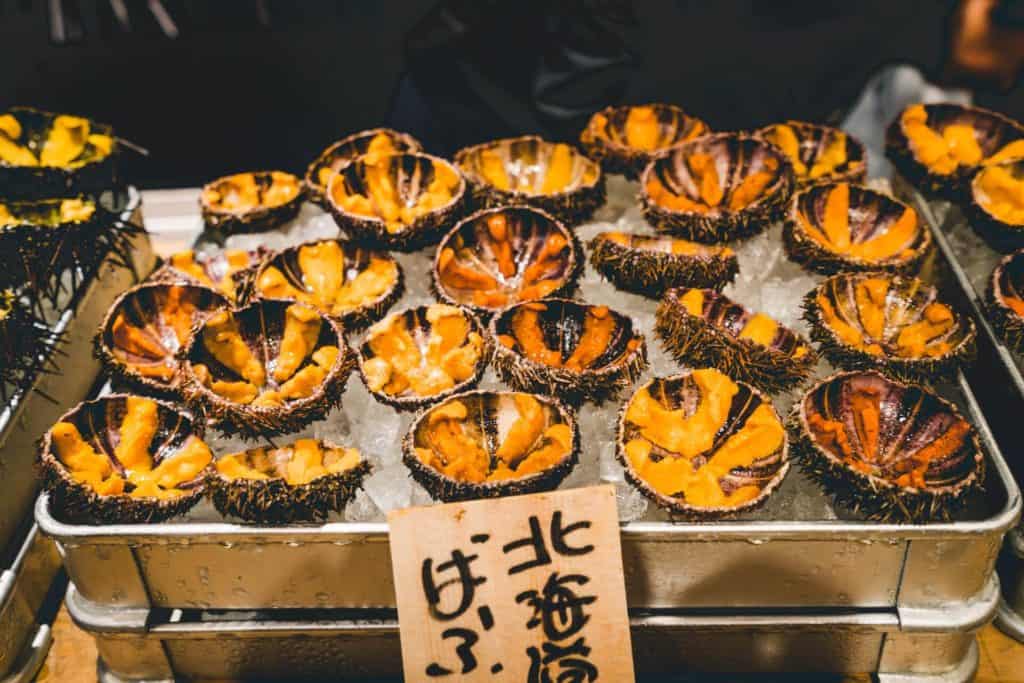
- Watch the live tuna auction at Toyosu Market – Wake up early to participate in the live tuna market auction from the observation deck in this newly built building. You will need to apply it here at least 1 month in advance.
Note: The old Tsukiji Inner Market (where the tourist-flock tuna auction market was in operation until 2018) has moved its base to Toyosu Market since 2019.
- Have an Instagrammable photo-taking session at teamLab Borderless – Immerse yourself into the fascinating artistic lights and other captivating artwork exhibition in this intriguing museum.
- Visit Sensoji Temple – Admire the intricate architecture of Tokyo’s oldest temple. You can also get some local souvenirs from Nakamise, a 200-metre shopping street within the temple compound.
- Admire the city panoramic view at Tokyo Skytree – Enjoy the stunning panoramic view from one of the world’s highest observation decks.
- Have a stroll at Ueno Park – If you are looking to visit Tokyo’s popular hanami (cherry blossom viewing) spot donning kimono , Ueno Park is one of the top options. This enormous park also houses several national museums.
You an introvert? Get yourself a camera tripod and take beautiful photos of yourself to your heart’s content while in Japan!

- Explore Kabukicho (Shinjuku) – Explore this neon-filled, lively entertainment district at night to experience the city nightlife.
Note: Kabukicho is also Japan’s largest red-light district.
- Wander around Shibuya – Your Japan itinerary will not complete without a trip to the Shibuya Crossing —one of the busiest pedestrian crossings. Wander around this district featuring shopping outlets and entertainment hubs. Make your way to Hachiko Statue too, a loyal dog that waited for his demised master every day for 9 years at Shibuya Station.
Check out my comprehensive 4 Days Tokyo Itinerary to know more in-depth about unmissable things to do in Tokyo !
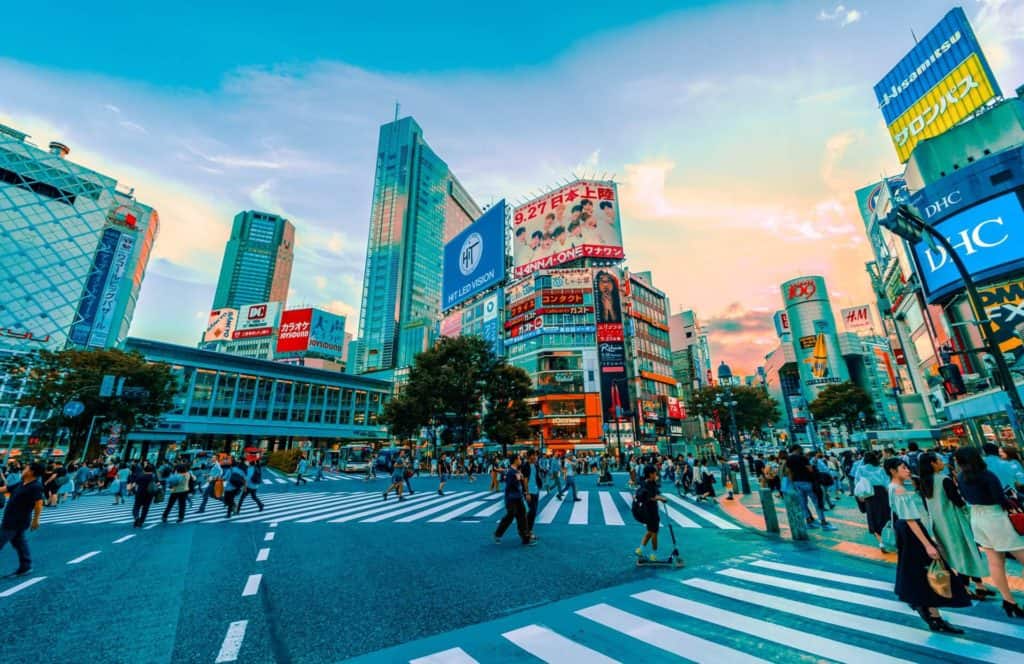
- Have a drink at the maid cafe in Akihabara – If you would like to get into Japan’s manga culture, make sure to head over to Akihabara’s maid cafes where the waitresses dress up as maids or anime (Japanese animated works) characters.
- Explore Harajuku – Harajuku is the teenage and cosplay fashion centre in Tokyo. There are 2 shrines in this district that you can visit—Meiji Shrine and Togo Shrine.
- Visit Ghibli Museum – If you are a big fan of Studio Ghibli’s films, getting to Ghibli Museum is a big must. The museum consists of a small theatre, exhibition, cafe, rooftop garden, and a souvenir shop. Any Spirited Away fan here?
Travel tip: Save money and time by booking attractions ticket online!
- Visit local markets & fairs – Looking for less touristy things to do while in Tokyo? Tokyo has plenty of flea markets happening during the weekends and some only take place few times a year. I went to Oedo Antique Market (the largest and oldest outdoor event in Japan) and hang out with the locals scouring for 200 yen second-hand kimono, vintage items, antique Japanese books, and more!
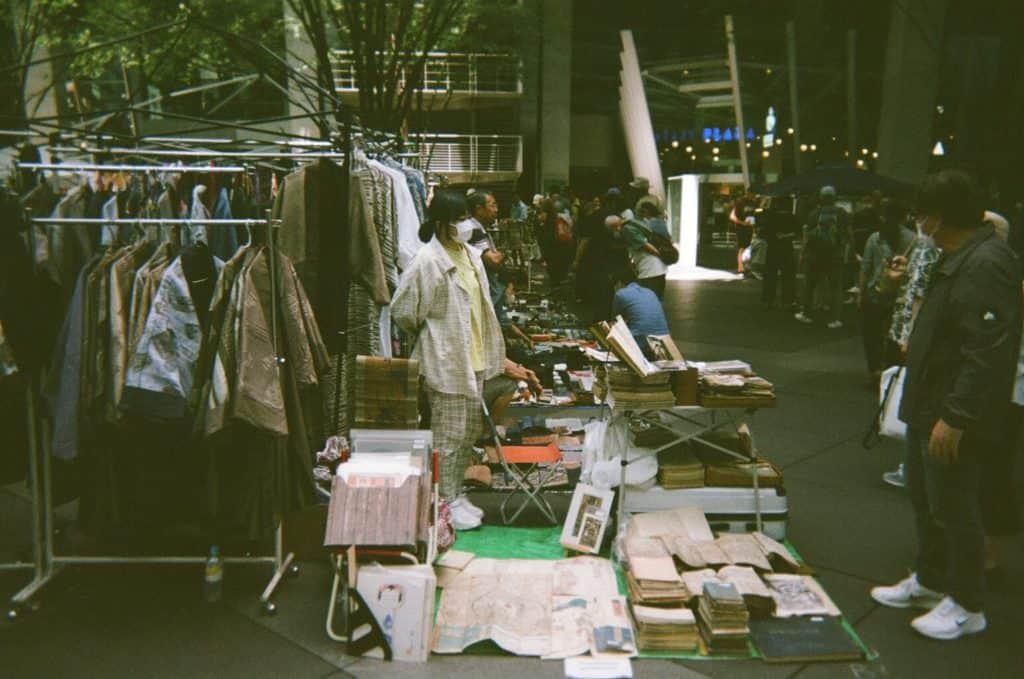
Fun Tours & Activities In Tokyo
There are plenty of things to do in Tokyo. If you would like to opt for some extraordinary experiences while in Tokyo , consider getting any (or all!) these tours:
- Tokyo: Full-Day Private Tour
- Ramen Tasting Tour with Local Ramen Guru in Tokyo
- Shibuya & Harajuku: Hidden Gems & Highlights Private Tour
- Tokyo: Go-Kart Tour and Photoshoot
Day Trips From Tokyo (For Double The Fun!)
Here are some of the popular day-trip destinations from Tokyo:
1. Mount Fuji
Your Japan three week itinerary will not complete without a trip to Mount Fuji !
One of the great spots to enjoy the mesmerising view of Mount Fuji is Five Fuji Lakes .
Note: Mount Fuji visibility is at its best during autumn and winter.
If you want to include the stunning red pagoda in your photo with Mount Fuji as the backdrop, head over to Chureito Pagoda .
To save yourself the hassle of planning , you can opt for this private bus tour with a local guide to Mount Fuji.
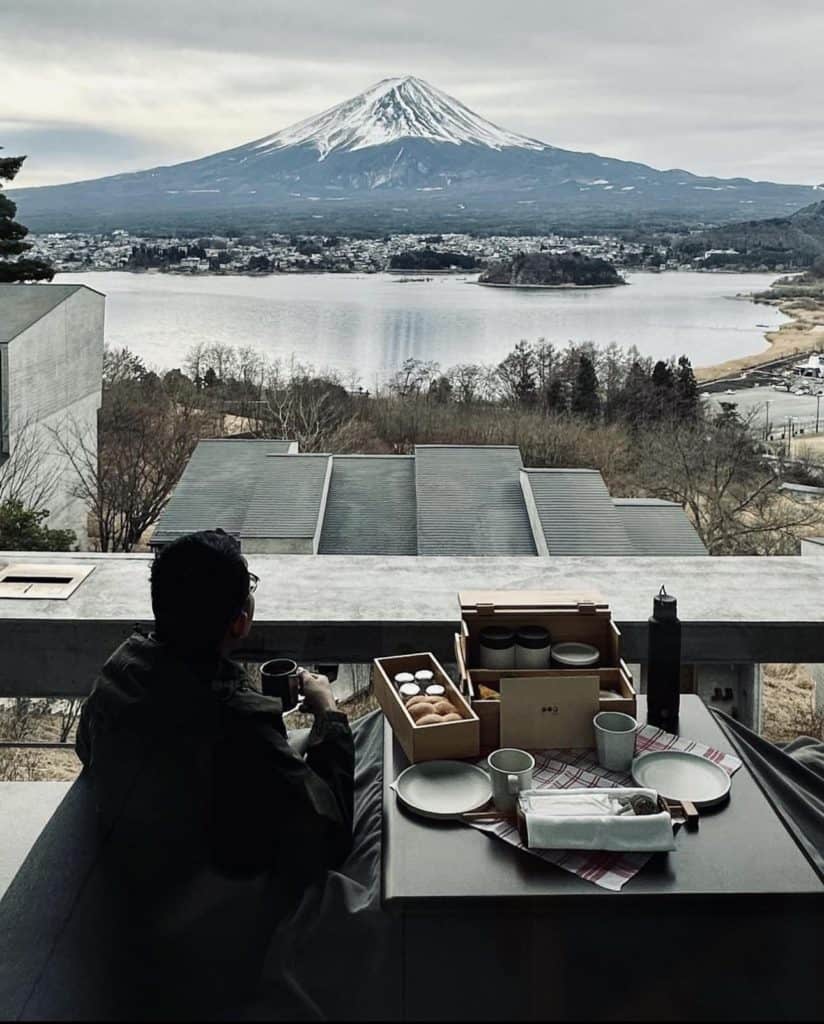
Hakone is one of the famous day trip destinations from Tokyo.
There are so many things to do in Hakone, including taking a dip in the hot spring , enjoying the beautiful view of the misty volcanic zone, visiting famous shrines and temples , and museum-hopping .
Check out this detailed day trip to Hakone from Tokyo and best ryokans with private onsen in Hakone articles to learn more about things to do and where to stay in this beautiful mountainous town.
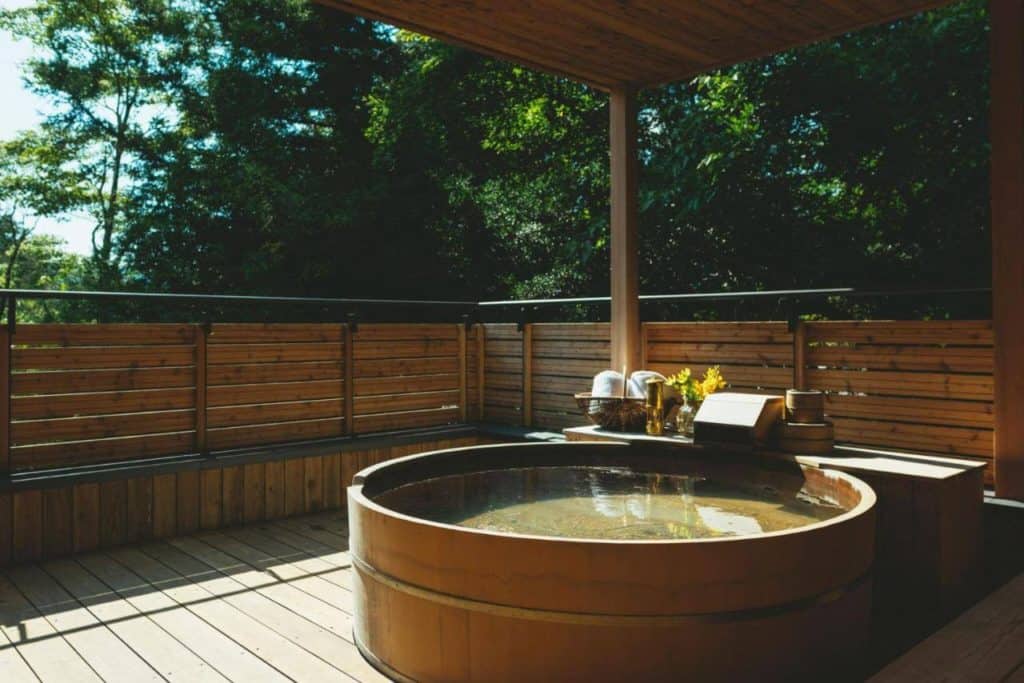
Or consider booking t his Hakone private day tou r if you prefer to explore Hakone under an experience guide!
Popular for its stunning natural splendour, Nikko is about 2-hour drive away from Tokyo .
Among the must-visit main highlights in Nikko are Kegon Falls and Ryuzu Falls .
If you can’t get enough of Japanese temple, make sure to to make your way to Toshogu Temple and Rinnoji Temple while you are at Nikko.
Sounds exciting? Consider booking this scenic Nikko day trip bus tour in your three week Japan itinerary.
Where To Stay In Tokyo : 4 Accomodation Types!
With millions of visitors travelling to Tokyo annually , there are plenty of types of accommodations available in this lively metropolitan.
Nevertheless, it is still best to book your hotel early especially during peak seasons, such as spring and autumn.
Here are some recommended places to stay in Tokyo :
- Budget: 54Journey , The Wardrobe Hostel Shibuya
- Mid-range: Pod Select Hotel Shinjuku , Toshi Center Hotel
- Luxury: Pearl Hotel Shinjuku , Hotel Risveglio Akasaka
- Ryokan: Annex Katsutaro Ryokan , Ryokan Asakusa Shigetsu
I stayed at The Global Hotel Tokyo near Shinjuku and I quite like that place. It is located near Shin Okubo Station and there are plenty of restaurants and convenience stores just located a street away from the hotel.
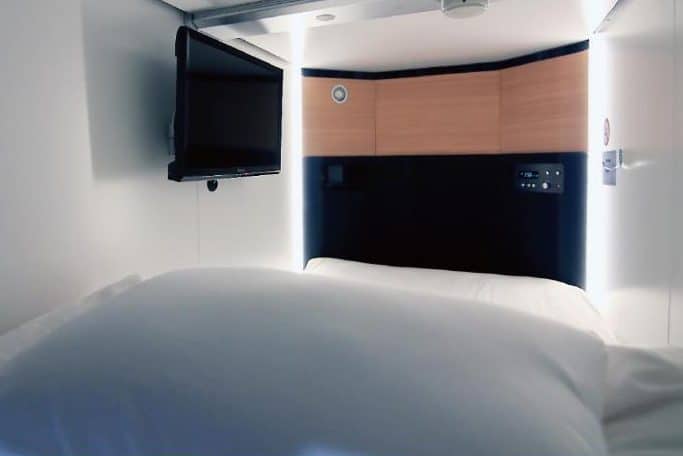
What To Eat In Tokyo
Of course, you can’t miss out on sushi from your to-eat-list in this capital city!
You can enjoy eating sushi at standup stalls, fish markets, conveyor belt restaurants, or even Michelin star awarded premium eateries—depending on your budget!
Kura Sushi is one of the popular places in Tokyo to have sushi.
Another food that you need to try before leaving Tokyo is none other than the slurpy, chewy noodle ramen !
This dish can be found in almost every corner of the streets in Tokyo, and there is a great variety of ramen available over here.
If you are keen to try this soupy dish, head over to AFURI .
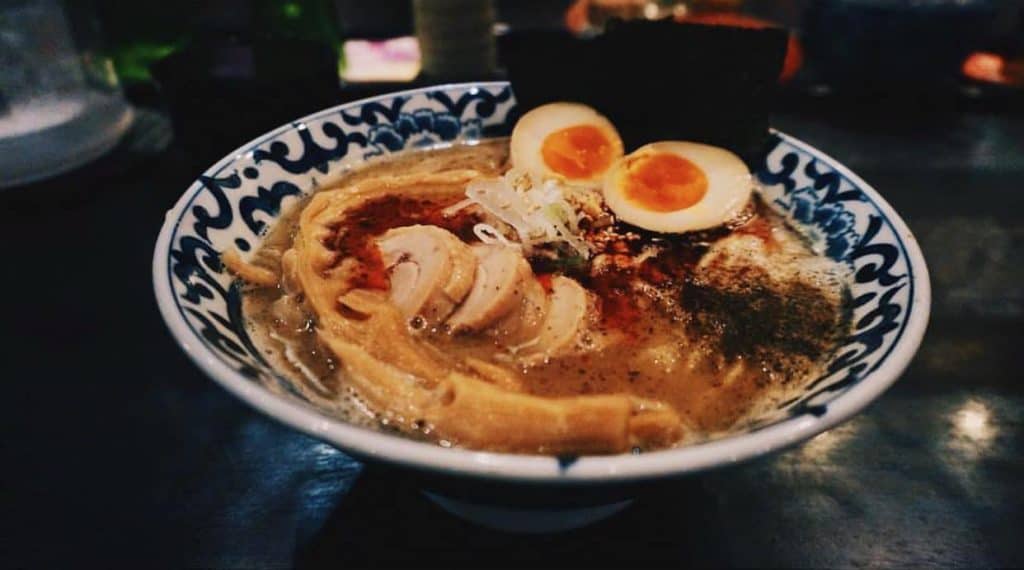
After spending 5 days exploring Tokyo, it is time to travel to the charming city around the mountainous Japanese Alps on Day 6 of your Japan itinerary 3 weeks —Nagano.
Apart from being a popular destination among tourists for its natural hot spring and onsen during the cold season, there are also fascinating temples and interesting museums that you need to visit in Nagano.
Things To Do In Nagano
Below are some of the must-do activities in Nagano during your Japan 3 week itinerary:
- Explore Zenkoji Temple – This famous Buddhist temple is the first temple to receive a Buddhist statue in the 7th century. Spend at least 2 hours exploring the temple grounds where you get to visit some major monuments, including the Main Hall, Zenkoji History Museum, Sanmon Gate and Niomon Gate.
- Admire Togakushi Shrines – You can visit 3 main shrines at Mount Togakushi. Each shrine is located about 2km away from each other so you can expect some hiking here, or you can opt for a bus service to get to the shrines.
Most temples and shrines in Japan require visitors to remove their shoes before entering into the buildings.
Therefore, it is best to buy yourself a pair of lightweight slip-on shoes for convenience before visiting Japan.

- Learn more about ninja’s history at local museums – If you are intrigued with ancient Japanese ninja skills and equipment, you can head over to Togakure Ninpo Museum . Alternatively, you can visit Kids Ninja Village for some interesting ninja obstacles training.
- Visit the snow monkeys at Jigokudani Monkey Park – Watch the wild snow monkeys playing around and soaking in the hot spring all year round. If you prefer to explore the park with a great snowy mountainous backdrop, it is best to visit the snow monkeys during winter (January to February). Make sure to read my detailed Japan winter packing list article if you are visiting during the cold season for a pleasant travel experience!
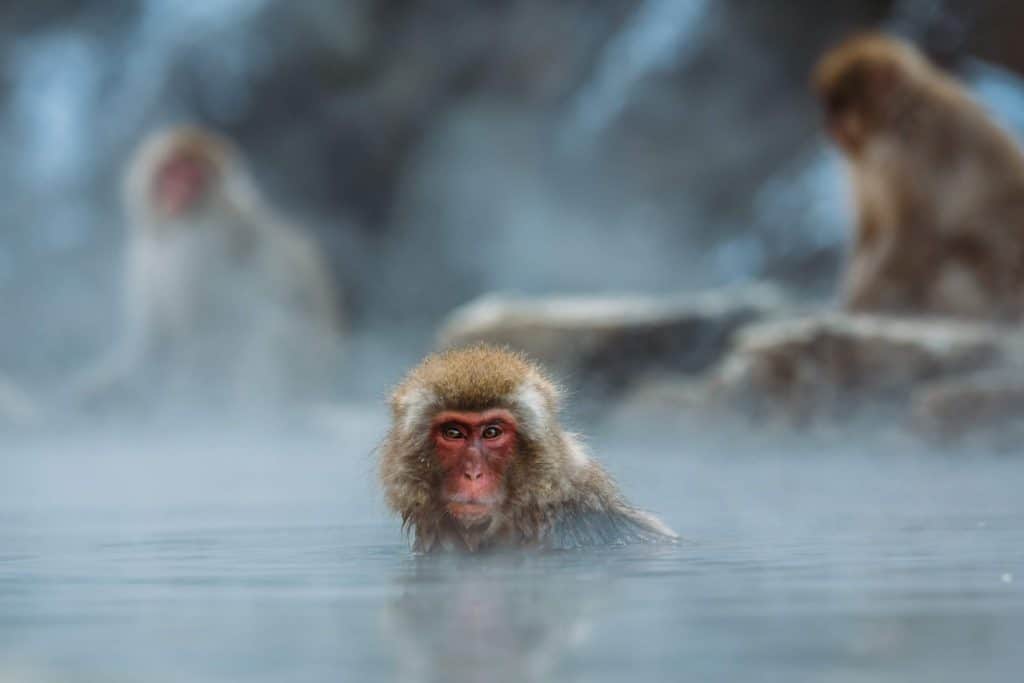
- Soak up the Olympic vibes at the remaining Olympic Winter 1998 – These world-class sports facilities are located sparsely around Nagano city where you can reach them conveniently by bus.
- Have a stroll at Gondo Covered Shopping Arcade – If you are looking for things to do at night in Nagano, you can have a walk along Gondo Covered Shopping Arcade. You can also shop for souvenirs or try delicious local street food here.
Guided Tours In Nagano (That Includes The Famed Monkey Park)
Here are some recommended tours you can sign up for in Nagano:
- Nagano: Snow Monkey and Cherry Blossom Day Tour in Spring
- Nagano: Snow Monkeys, Zenkoji Temple & Sake Day Trip
Where To Stay In Nagano (For All Traveller Types!)
Here are some recommended places for a night stay at Nagano:
- Budget: Dot Hostel Nagano , Mash Cafe & Bed Nagano
- Mid-range: Sotetsu Fresa Inn Naganoeki Higashiguchi , Hotel JAL City Nagano
- Luxury: Chisun Grand Nagano , Kokusai 21 International Hotel
- Ryokan: Umeoka Ryokan , Oshi Ryokan
What To Eat In Nagano
- Oyaki Dumplings
Invented in Nagano, Oyaki Dumplings are the must-eat food when you are in this beautiful city.
The dumplings are mainly made with vegetables such as pumpkin, eggplant, or radish and you can have it either steamed or fried!
You can get this delicious snack at Nagano’s Oyaki Shichifuku Inshokuten .
Basashi is a unique type of sashimi. But instead of indulging in seafood, it is prepared using horse meat !
If you are up for the unusual food challenge, head over to Nihommatsu for a plate of basashi.
How To Get To Nagano
To get to Nagano from Tokyo , you can take:
- Shinkansen
- Operator: Hokuriku Shinkansen
- Fare: US$73 (8000 yen) one way
- Duration: 80 to 100 minutes
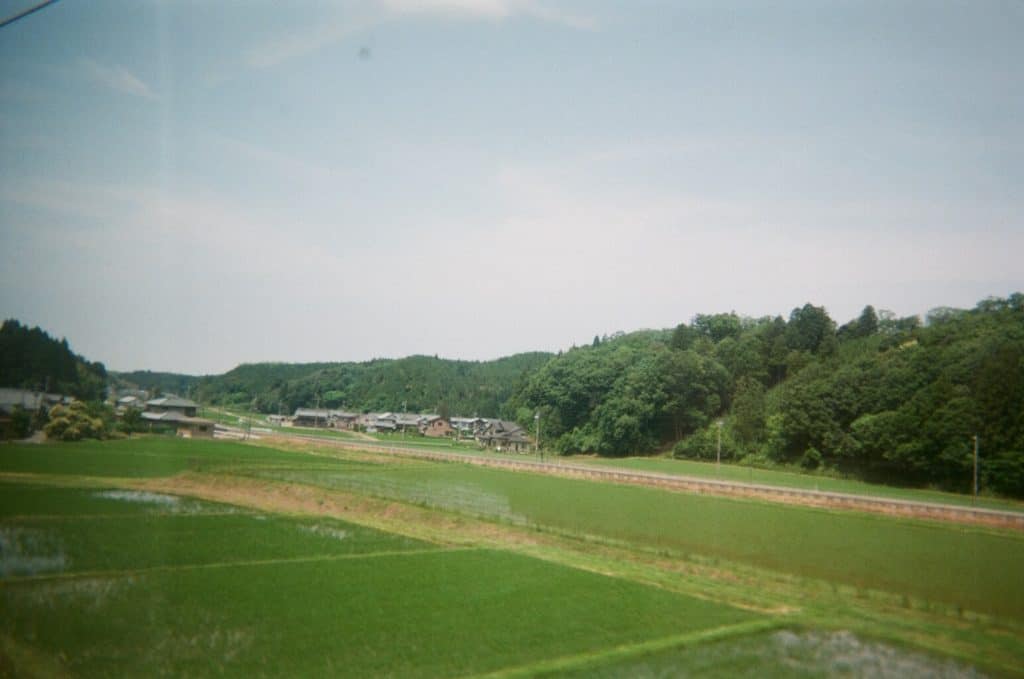
On Day 7 of the 3 week Japan itinerary , it is time to travel to Matsumoto —located 50 minutes away from Nagano by train.
Home to one of the remaining original castles in Japan , Matsumoto offers a unique, harmonious blend of both historic and modern travel experiences to visitors.
Things To Do In Matsumoto
Here are some of the main highlights that you can visit in Matsumoto for a day:
- Visit Matsumoto Castle – This ancient castle has an observation deck on its sixth floor, providing a great scenic view of the city against the backdrop of the grand Japanese Alps.
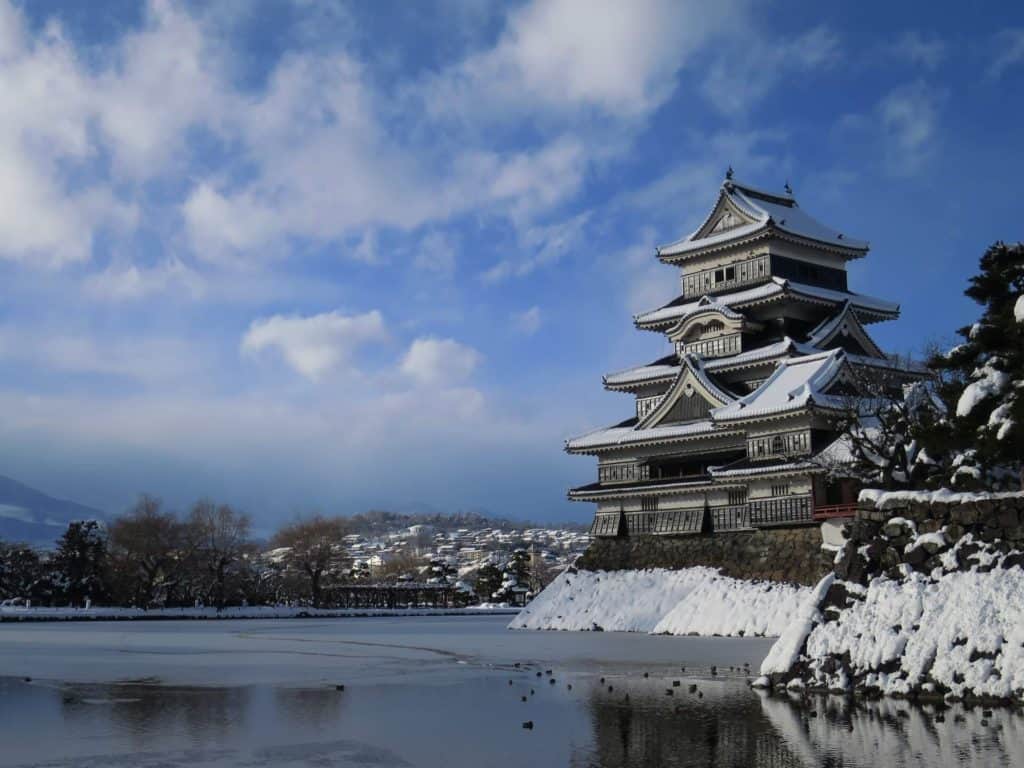
- Explore Daio Wasabi Farm – If you are a big fan of Japanese wasabi, make sure to make your way to Daio Wasabi Farm. Remember to get your own share of wasabi ice cream before leaving the farm!
- Enjoy Kusuma Yayoi’s colourful sculpture at City Art Museum – This art museum has a showcase of stunning artworks of the local-born artists. And one of these artists is none other than the bold-looking Kusuma Yayoi .
- Mingle with local farmers at Nakamachi Street – A former merchant district, you can visit the bustling farmers’ market from May to December. Over here, you get to see the local crops, mingling with the farmers, or even asking for a tip or two for cooking Japanese dishes.
- Stroll along Nawate Street – A pedestrian-only street filled with cafes and local shops, you can find an interesting Shinto deities shrine in this street. Yohashira Shrine is exceptionally packed on New Year as it is believed to grant the people wishes and make them come true.
- Fill up your bottle with the natural groundwater from the city’s wells – The locals have been drinking the well water for years. Some cafes are serving their customers with this water source too.
Some of the wells that you can find in Matsumoto city include Genchi Well and Iori Reisui Well .
Tap water in Japan is safe for consumption . Consider bringing a collapsible bottle when travelling to this country (save luggage space & money!)

Guided Outings In Matsumoto (With Experienced Guides!)
If you would like to delve into Matsumoto’s rich history and culture, consider signing up for:
- Private Walking Tour With Matsumoto Local Guide
- Matsumoto Soba Noodle Making With An Experienced Master
Where To Stay In Matsumoto (Spoiled for Choice!)
Here are some of the recommended places to stay in Matsumoto:
- Budget: Couch Potato Hostel , Nawate Guesthouse
- Mid-range: Southern Cross Inn , Minka House
- Luxury: Matsumoto Hotel Kagetsu , Iroha Grand Hotel Matsumoto
- Ryokan: Ryokan Matsukaze , Onsen Hotel Omoto
What To Eat In Matsumoto – 3 Weeks Travel in Japan
- 1. Sanzokuyaki
Sanzokuyaki is a native dish to Matsumoto. This special fried chicken is prepared by marinating the chicken breast meat with garlic and other spices before getting deep-fried.
You can have a taste of sanzokuyaki at Karaage Centre Matsumoto .
- 2. Shinshu Salmon
This reared salmon is among the popular foods to try when you are in Matsumoto.
You can order this dish at any izakayas (Japanese tavern), such as Sakaba Yamazato .
How To Get To Matsumoto
To get to Matsumoto from Nagano , you can take:
- Operator: JR Shinano Limited Express
- Fare: US$30 (3100 yen) one way
- Duration: 50 minutes
Located at Gifu Prefecture, Takayama is among the fascinating rural cities of Japan that you need to go to break away from the hustle and bustle of city life.
I personally love Takayama ! I love the scenic views of the lush mountains and the overall vibe of this city. This was also where I stumbled upon an old-school restaurant ran by a lovely elderly couple and had the best Japanese curry shrimp rice! *French kiss*
Spend Day 8 and 9 of your itinerary Japan 3 weeks exploring Takayama’s old town and surrounding highlights to experience the beauty and calm side of this Japanese rural city.
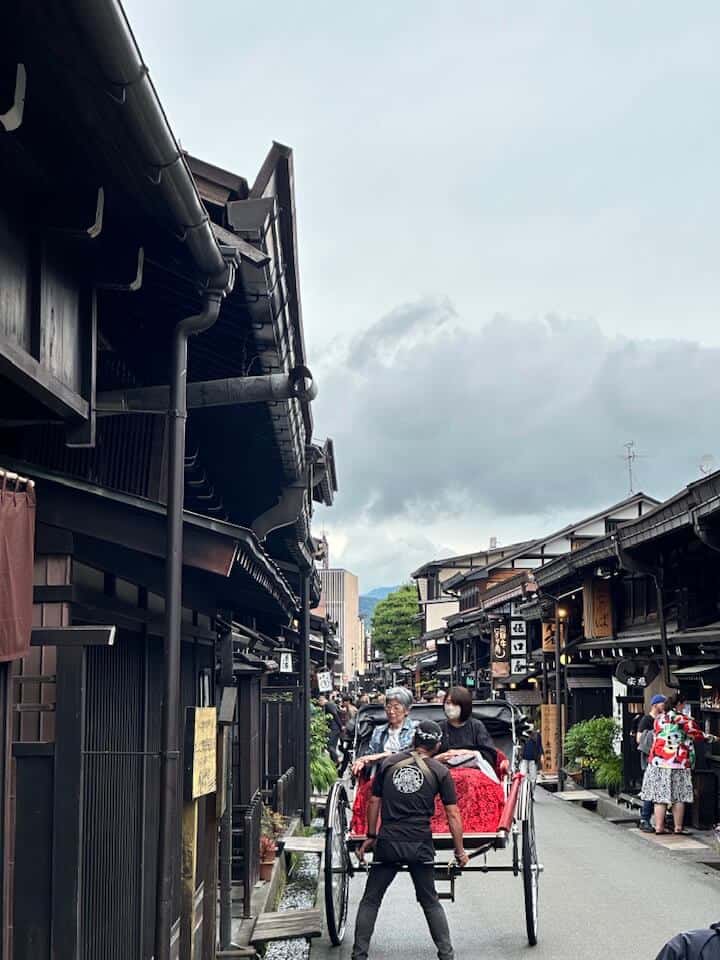
Things To Do In Takayama
Here are the main activities that you can do during your 2-day stay in Takayama in your Japan 3 week itinerary:
- Get your breakfast at local asaichi – Start your day at Takayama by visiting the asaichi (morning markets)— Miyagawa Market and Jinya-mae Market . Over here, you get to see local fresh produce, handicraft, street foods, and snacks.
- Enjoy sake tasting at sake breweries – Takayama is famous for the sake and you ought to visit one of the old sake breweries when you are in the city. You can easily identify a sake brewery by looking for the presence of sugidama (cedar branches made balls) at the store entrance.
- Learn more about Takayama’s history at local museums – If you are a history buff, then you must make your way to Fuji Art Gallery and Takayama Museum of History and Art .
Some of the old artefacts that you can see here include precious paintings, brushes, and household items.
- Temple-hopping along Higashiyama Walk Course – About a dozen temples, shrines, and Takayama Castle ruins are found within this 3.5 km long walking course. You can spend about 2 hours strolling along this peaceful trail while visiting some of the old temples, such as Hokkeji Temple.
- Participate in the captivating Takayama Festival – Held on 14-15 April and 9-10 October annually, about 11 to 12 beautifully decorated festival floats are paraded around the Old Town and eventually stored in museums for public view.
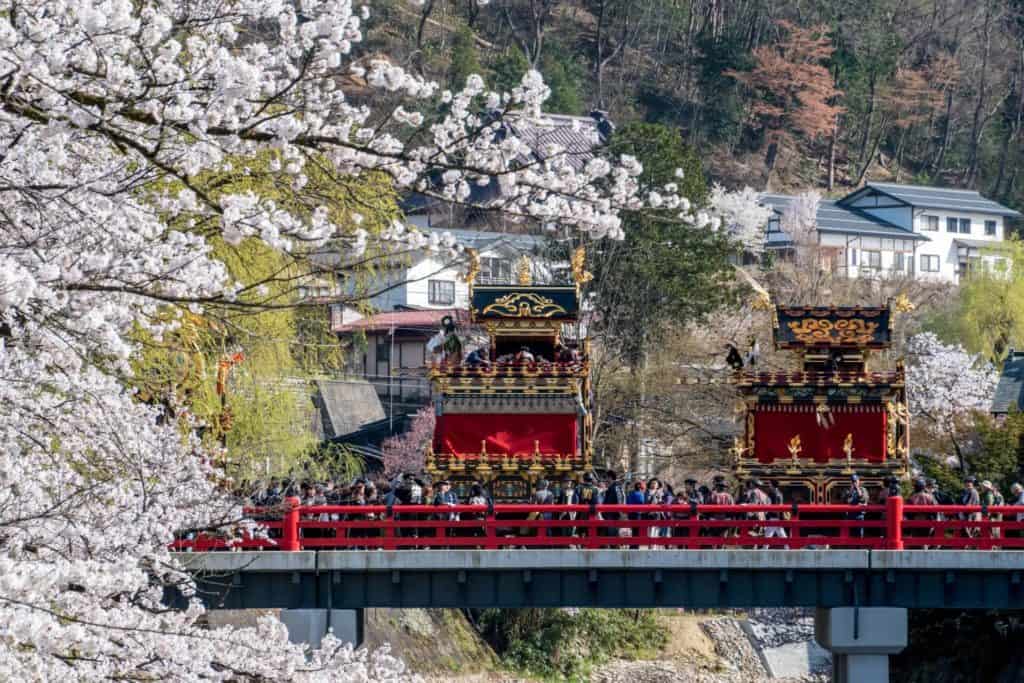
- Admire the delicate festival floats replica at Matsuri no Mori – This museum contains both miniature and life-sized replicates of festival floats with intricate designs that took part in the grand Takayama Festival.
- Be blown away by real-life festival floats at Matsuri Yatai Kaikan – Some of the Takayama Festival’s festival floats are kept in this museum. The great, detailed craftsmanship shown on the floats will definitely leave you in awe.
- Explore Hida Folk Village – This fascinating open-air museum showcases 30 traditional houses that are at least 150 years old. Get ready to be blown away by the impressive wooden architecture and the great condition of the century-old exhibits.
- Create your own souvenir at Hida Takayama Crafts Experience Centre – To learn more about the local culture, you can also learn to make the local handicraft at Hida Takayama Crafts Experience Centre.
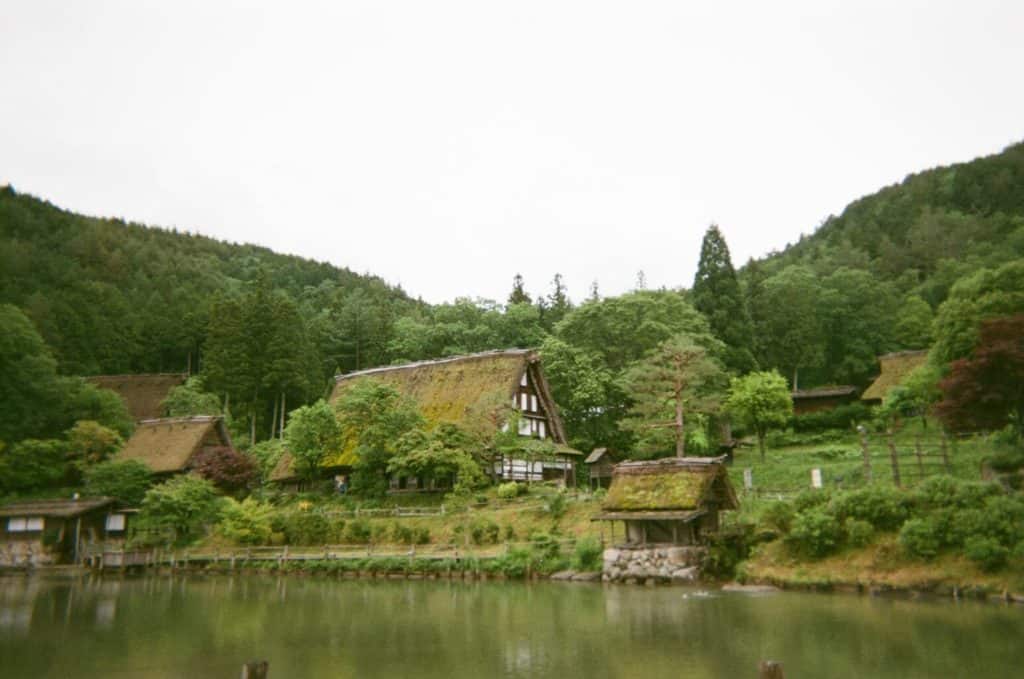
Travel tip: Check out my comprehensive Takayama in winter guide if you are visiting this city during the cold season!
Memorable Takayama Guided Tours
Have budget allocated for guided tours in Takayama ? Check out these best-sellers :
- Local Food Tour in Takayama
- Takayama Old Town Walking Tour
- Sake Brewery Tour in Takayama (+ Oldest Brewery!)
- Special Food Tour in Takayama
- Zen Meditation and Higashiyama Temples Walking Tour
- 3-Hour Takayama Hiking Tour
- Takayama’s Japanese Drum & Traditional Arts Show
- Hida Private E-Bike Tour with Premium Lunch and Farm Experience
Where To Stay In Takayama
Here are some places that you can consider staying at during your Takayama visit :
- Budget: K’s House Takayama Oasis , Cup of Tea
- Mid-range: Spa Hotel Alpina Hida Takayama , Country Hotel Takayama
- Luxury: Wat Hotel & Spa Hida Takayama , Takayama Green Hotel
- Ryokan: Oyado Koto No Yume , Hidatakayama Futarishizuka , Ryokan Asunaro
I stayed at Country Hotel Takayama . The hotel is just located opposite Nohi Terminal Bus Station, which is just next to Takayama Station.
The room has an old-school design and I feel comfortable throughout my stay. The room comes with a mini bath tub too so you can bring along some bath bombs !

If you prefer to enjoy a relaxing dip alone or have a more intimate experience with your loved one, consider book one of the best Takayama ryokans with private onsen !
What To Eat In Takayama
- 1. Mitarashi Dango
This local traditional savoury snack made from mashed rice balls is first grilled and glazed with sauces, such as sesame or soy sauce.
One of the best places to get Mitarashi Dango in this city is Jinya Dango .
- 2. Hida Beef Sushi
Raised in Gifu prefecture, Hida beef is one of the top premium wagyu beef choices in Japan.
Check out Sakaguchiya for a sushi beef treat in Takayama!
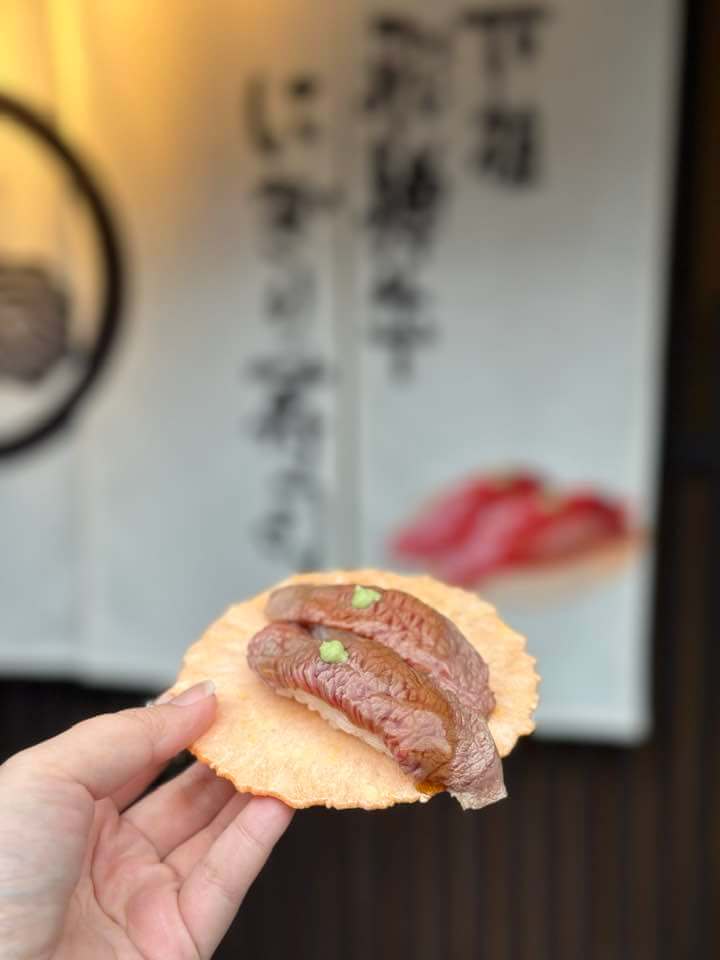
How To Get To Takayama
To get to Takayama from Matsumoto , you can take:
- Operator: Nohi Bus
- Fare: US$32 (3500 yen) one way
- Duration: 2.5 hours
- Best Day Trip To Hakone From Tokyo: The Ultimate Guide
- Off The Beaten Path Japan—Top 18 Places To Discover
- 19 Best Things To Do In Osaka At Night
Day 10-11: Kanazawa
Next, spend Day 10 and 11 of your 3 weeks itinerary in Japan exploring another charming cultural city of the country— Kanazawa.
Highlights ranging from beautiful gardens, ancient samurai residences, contemporary art museums to scrumptious local food , be prepared to experience another mesmerising part of Japan in Kanazawa.
Things To Do In Kanazawa
To fully make use of your time in Kanazawa during Japan 3-week itinerary, here is the list of recommended things to do:
- Have a nice walk around Kenrokuen Garden – This tranquil garden is one of the country’s most beautiful landscape gardens . If you are looking to enjoy the cherry blossom and autumn foliage, Kenrokuen Garden is the place that you need to be at.
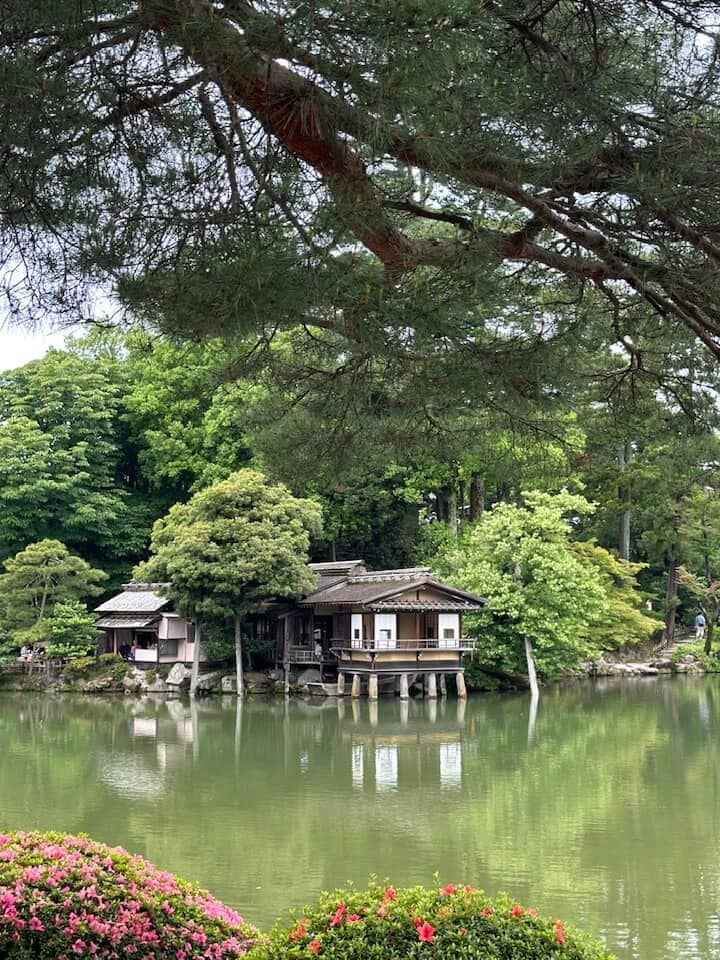
- Explore Seisonkaku Villa – Head over to one of the few remaining well-preserved samurai villas in the country and admire the ancient building structure and interior design.
- Immerse yourself into the enchanting streets of Higashi Chaya District – Wander around this famous geisha district in kimono and visit the old teahouses to learn more about geisha performance and tea ceremonies.
Not a big fan of your mobile phone battery running low , especially when you are trying to capture all those travel memories in Japan?
Well, make sure to include a portable charger into your Japan travel planner list!

- Enjoy local delicacies at Omicho Market – Fill up your tummy with food made from the freshest seafood that you can get from this century-old local market.
- Learn more about samurai’s lifestyle in Nagamachi Samurai District – Spend some time exploring this former samurai district where few museums showcase the historic samurai residence and their precious exhibits.
- Explore 21st Century Museum – Bombard your IG account with the intrigued Leandro Erlich’s “Swimming Pool” and the interesting architecture of the 21st Century Museum.
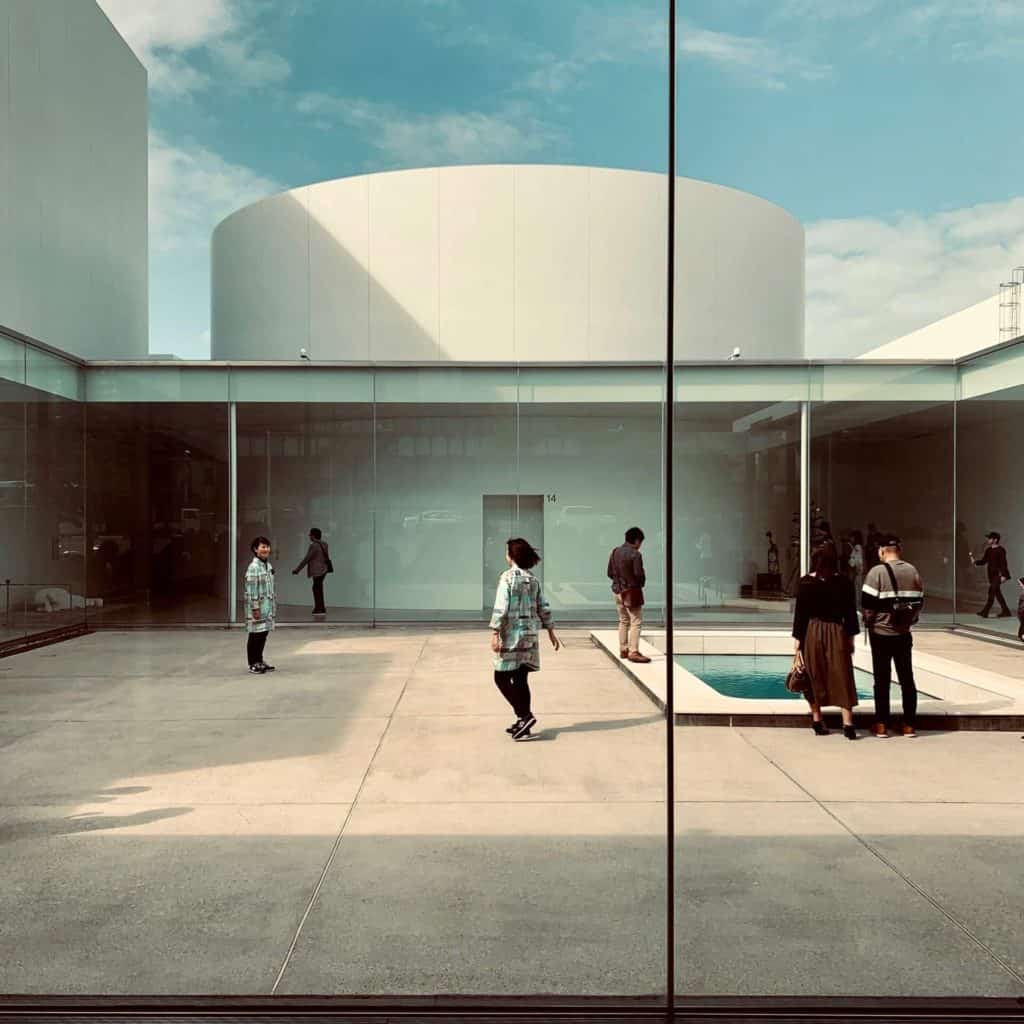
Travel tip: You can buy One Day Pass from the Tourist Information Centre for US$8 (800 yen) to ride the Kanazawa Loop Bus and other buses for unlimited bus rides within one calendar day.
Consists of Right Loop and Left Loop, the buses will stop at Kanazawa’s main attraction sites and run at every 15 minutes intervals.
Guided Activities In Kanazawa (To Have A Blast!)
Want to explore Kanazawa to the fullest ? Check out these amazing tours:
- Kanazawa Full Day Tour (With Guide)
- Kanazawa Cultural Night Walking Tour
- Izakaya Hop Tour at Kanazawa
Day Trips From Kanazawa : 2 Awesome Options
It is also possible to have a day trip to Shirakawago or Noto Peninsula from Kanazawa on Day 11 of this 3 weeks Japan itinerary.
1. Shirakawago
Shirakawago is a tourist-flocking UNESCO World Heritage site attributed to the traditional farmhouses called gassho-zukuri . Some of these farmhouses are at least 350 years old .
Apart from observing the unique, sturdy architecture of gassho-zukuri, you can also admire the mesmerising remote mountainous scenery.
You can sign up for this Shirakawago day trip from Kanazawa where transportation and an English speaking guide are included—which means more relaxing time and less stress planning!
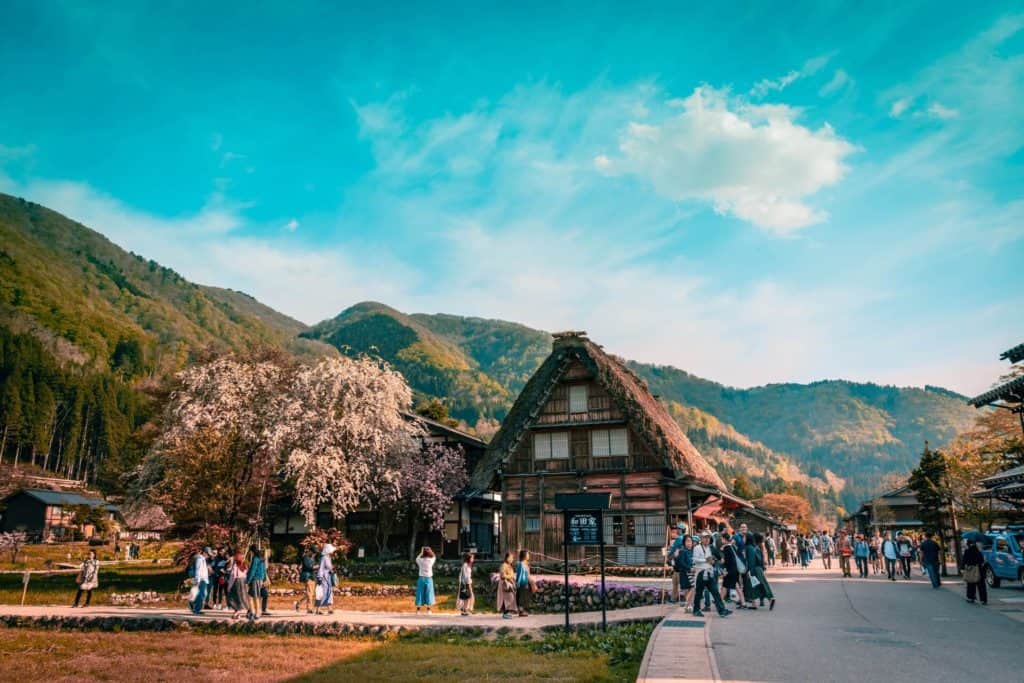
2. Noto Peninsula
If you would like to enjoy the coastal view , then it is recommended to have a day trip to the Noto Peninsula . This less touristy site of Japan offers an interesting glimpse into a slower pace of rural resident life.
Some of the things that you can do in the Noto Peninsula are having an onsen session while looking out on the blue sea, besides experiencing the magnificent view of rice fields during sunset.
You can sign up for this underrated Noto Peninsula Full Day Driving Tour (Private) that includes stops at several other major highlights in this picturesque peninsula.
Where To Stay In Kanazawa
Here are some recommended accommodations in Kanazawa that you can consider in your Japan 3 week itinerary:
- Budget: HOTEL MYSTAYS , Shaq Bighouse
- Mid-range: Hotel Intergate , Tokyu Stay Kanazawa
- Luxury: Kanazawa Sainoniwa Hotel , Mitsui Garden Hotel
- Ryokan: Sumiyoshiya , Hatori
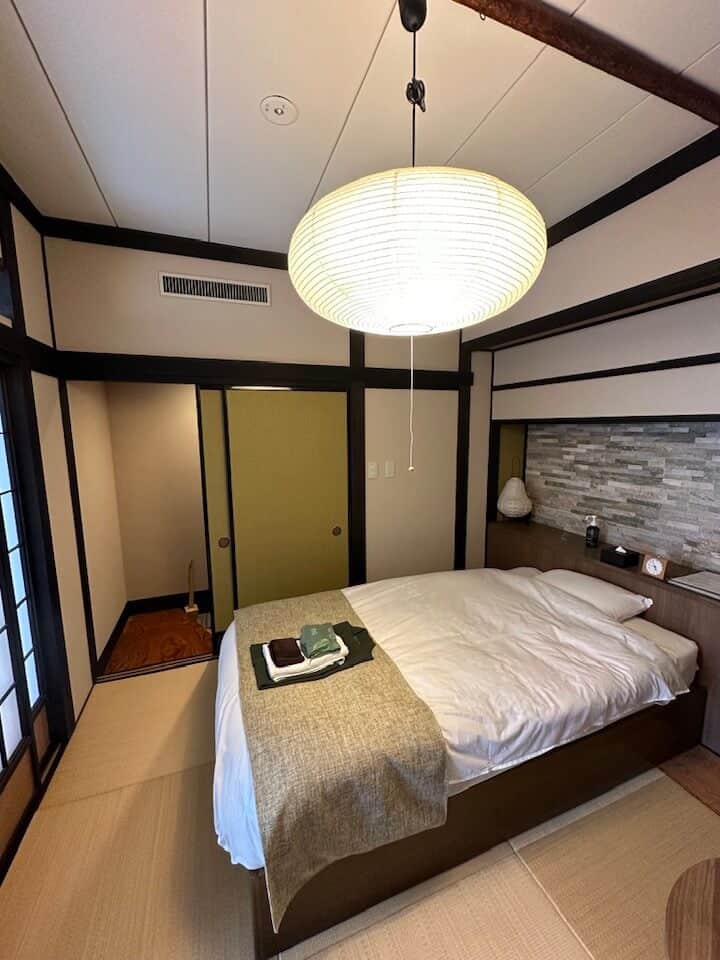
Travel tip: Check out my article on the best onsen ryokan in Kanazawa to stay at to experience the traditional Japanese hospitality and enjoy relaxing onsen dip !
What To Eat In Kanazawa
- 1. Kabura Zushi
Kabura Zushi is made from a salted turnip, salted buri (yellowtail fish), and koji (fermented rice) . Some even come with carrot slices.
Among all the stalls in Kanazawa, Shijimaya Honpo is the place that you should go for a piece or more of Kabura Zushi!
This signature dish of Kanazawa is a thick, brothy soy-based dish cooked with sliced duck meat, mushroom, and carrots and topped with wasabi for additional flavours. Can you imagine the richness of the dish already?
To have the authentic taste of Jibuni , make sure to head over to Yoshihisa .
How To Get To Kanazawa
To get to Kanazawa from Takayama , you can take:
- Operator: Limited express trains and shinkansen
- Fare: US$60 (6500 yen) one way
- Duration: 2 hours (Change station at Toyama)
Day 12-14 of japan itinerary 21 days: Kyoto
Your Japan 3 week itinerary will not be complete without a trip to Kyoto , a fascinating city filled with ancient temples, beautiful shrines, and picturesque scenic views of nature.
Make sure you rest your legs well because there is lots of walking and sightseeing involved from Day 12 to 14 when exploring Kyoto!
Things To Do In Kyoto
Kyoto is home to 1600 ancient temples so you can expect some popular temple-hopping within three days.
For a more in-depth post on how to navigate around this beautiful city wearing kimono , places to visit, and useful tips when exploring Kyoto, you can check out this comprehensive Kyoto 2-day itinerary .
Here are the major highlights to visit in Kyoto:
- Visit Kitano Tenmangu Shrine – This ancient wooden shrine is popular among students particularly during the examination period as this famous landmark is dedicated to Shinto God for education.
If you are visiting Kitano Tenmangu Shrine on the 25th of every month , you will get to experience the local flea market known as Tenjin San’s festival too!
- Marvel at Kinkaku-ji and Ginkaku-ji – These two stunning temples are among the few temples that you need to visit in Kyoto.
Apart from having impressive building architecture, you can wander around their respective lovely gardens to enjoy the beautiful view and have a peaceful zen moment.
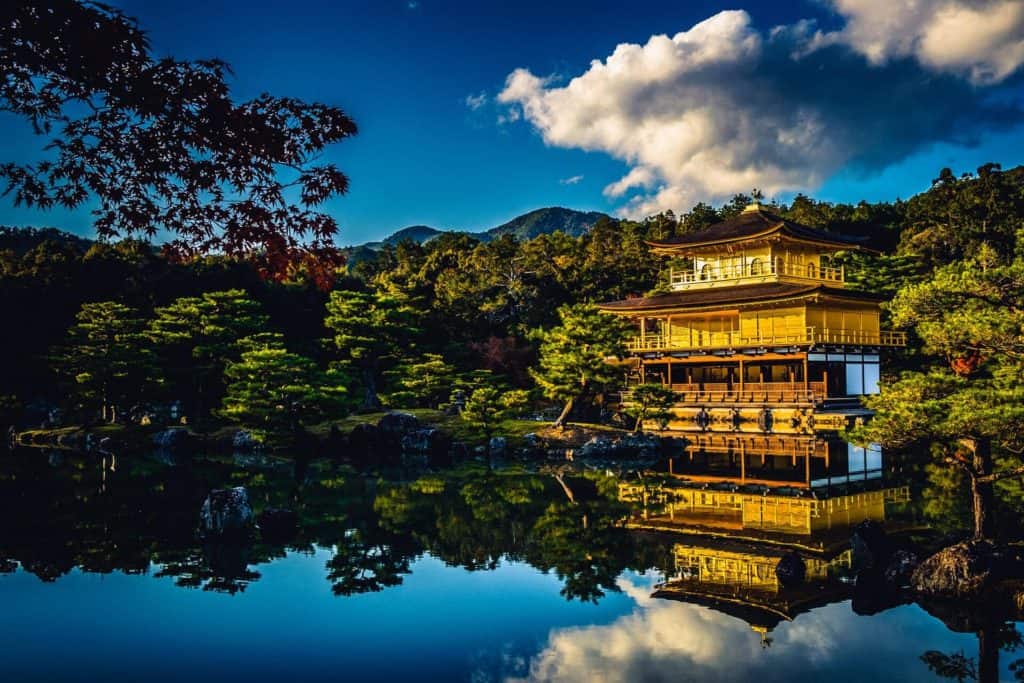
- Explore Fushimi Inari Shrine – Get your phone ready by taking countless pictures with the orange torii gates at one of the Instagrammable places in Kyoto .
Travel tip: Make sure to wear non-slippery shoes if you plan to hike up to the summit of Mt Inari. I slipped and fell and hurt my right knee quite bad 🥺
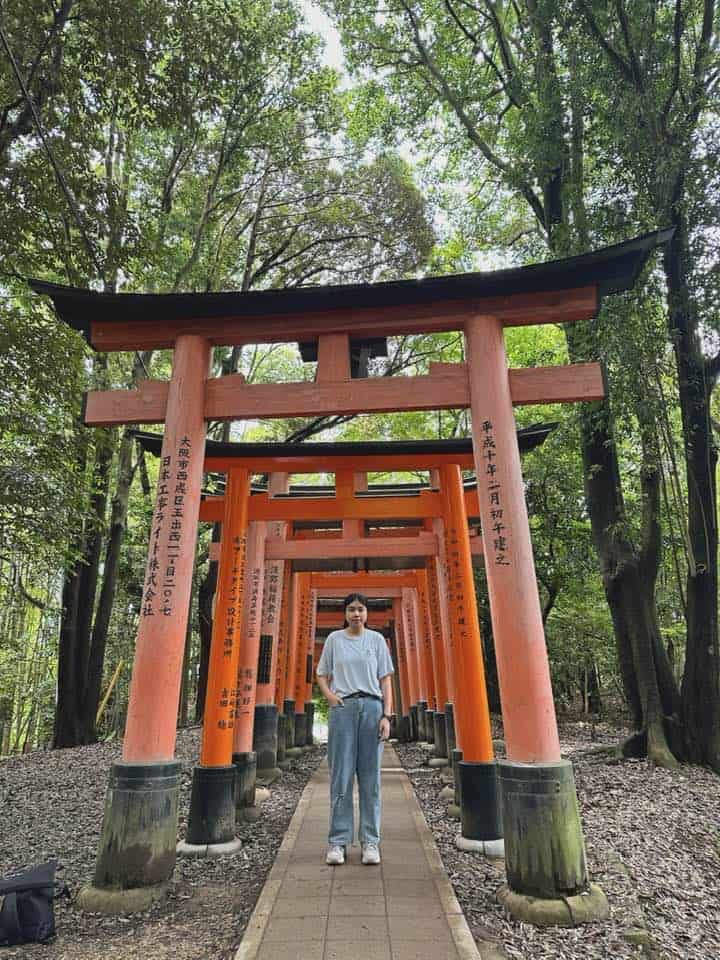
- Wander around Arashiyama Bamboo Forest – Expect to spend 30 minutes in this dreamy bamboo forest in Kyoto for photo taking and complete the walking trail.
- Explore Nijo Castle – Walk around Nijo Castle’s complex grounds and admire the stunning architecture of Karamon Gate.
If you can’t get enough of Japanese gardens, you will be delighted to know that Nijo Castle has two gardens that offer lovely scenic views of trees and ponds.
- Geisha spotting at Gion District – Gion is the one place in Kyoto that you need to head over to meet a geisha. To increase the geisha spotting probability, make sure you are in Gion by 5.45 pm. This is the time where geisha will be leaving their home to local tea houses for work.
Popular Kyoto Food Tours or Cooking Classes To Fill Your Day
One of the best way to immerse into the local culture is through food , either by eating or learning how to cook it.
Check out these interesting Kyoto food tours & cooking classes:
- Nishiki Market Food Tour
- Pontocho Evening Food Tour
- Morning Japanese Bento Cooking Class at Kyoto
- Kyoto Japanese Izakaya Cooking Class
- Kyoto Tea Ceremony Experience
If cooking isn’t is your thing, here are other fun tours that you can sign up in Kyoto:
- Top 11 Kyoto Photography Tours In 2023 (+ Real Reviews!)
- Best 12 Bike Tours In Kyoto In 2023 (+E-Bike Options!)
- Top 8 Kyoto Sake Tours (Unique Cultural Insight!) In 2023
Where To Stay In Kyoto
It is best to stay near Kyoto Station or Gion District when in Kyoto. These areas are within walking distance to the major highlights mentioned in this article.
Here are some of the accommodation options located near Kyoto Station for your Japan 3 week itinerary:
- Budget: M’s Hotel Kyoto Station Taruya , Hotel IL Verde Kyoto
- Mid-range: Mercure Kyoto Station , Sakura Terrace
- Luxury: Hotel Takasegawa , Hotel Kanra Kyoto
- Ryokan: Daiya Ryokan , Ohanabo
Travel tip: Read my detailed article on the best ryokan with private onsen in Kyoto if you want privacy when dipping in your private hotspring tub!
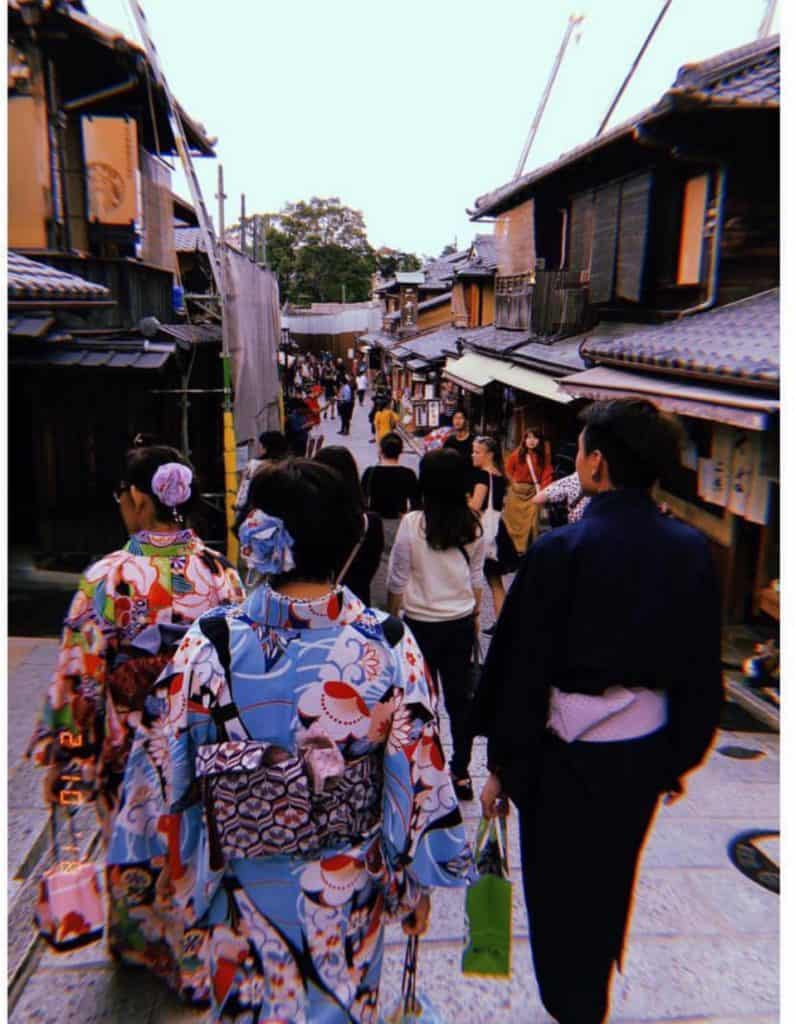
What To Eat In Kyoto
1. Kaiseki
Kaiseki strives for perfect and elegant food presentation and offers a Japanese fine dining experience with multiple small dishes served across a meal.
If you would like to opt for an affordable kaiseki meal in Kyoto, make sure you visit Kawamura Ryori Hei .
In Kyoto, wagashi is usually paired with a cup of thick matcha tea to balance the tea bitterness.
To enjoy the wagashi-matcha tea session with a beautiful garden view, you will need to visit Toraya Karyo Ichijo .
Tip: If you are keen to try out delectable Japanese snacks , check out my comprehensive article on top snacks in Japan and where to get them!
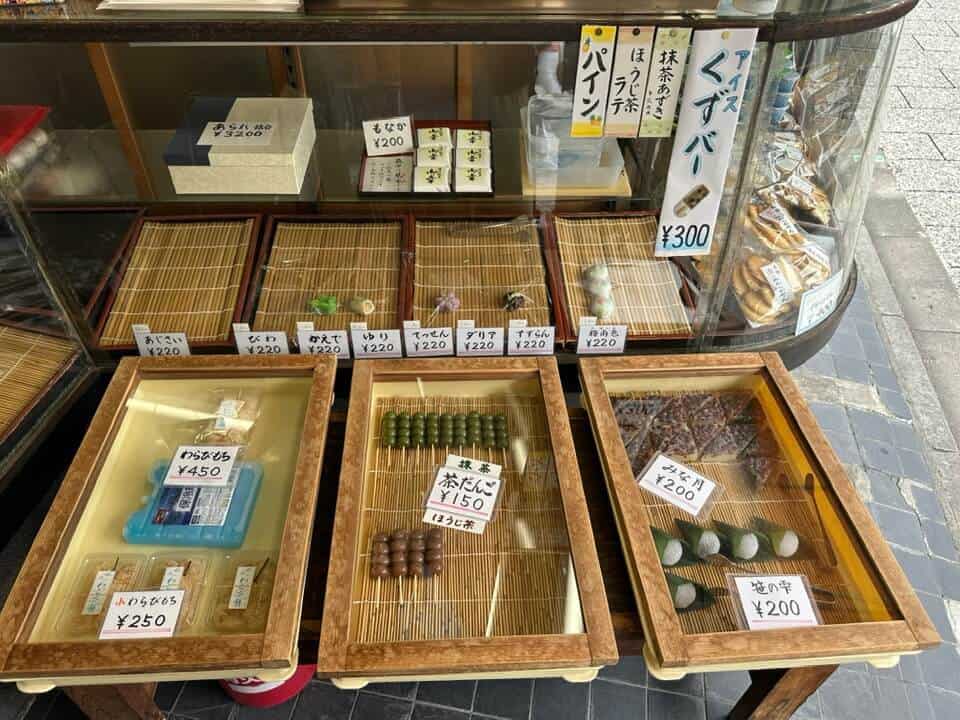
How To Get To Kyoto
To get to Kyoto from Kanazawa , you can take:
- Operator: JR Thunderbird Limited Express train
- Fare: US$64 (7000 yen) one way
- Duration: 2 hours
- Japan Rail (JR) pass : Covered
On Day 15 of the Japan 3 week itinerary, it is time to visit one of the most romantic places in Japan —Nara!
I think most of us think of those free-roaming wild deer when Nara is mentioned.
Nevertheless, you will find that there are stunning temples and shrines to explore in this ancient city, besides offering impressive sights of cherry blossoms and autumn foliage at local parks and Japanese gardens.
To know more things to do in Nara, how to navigate around, and local food to try, you can read on my jam-packed Day Trip to Nara Itinerary .
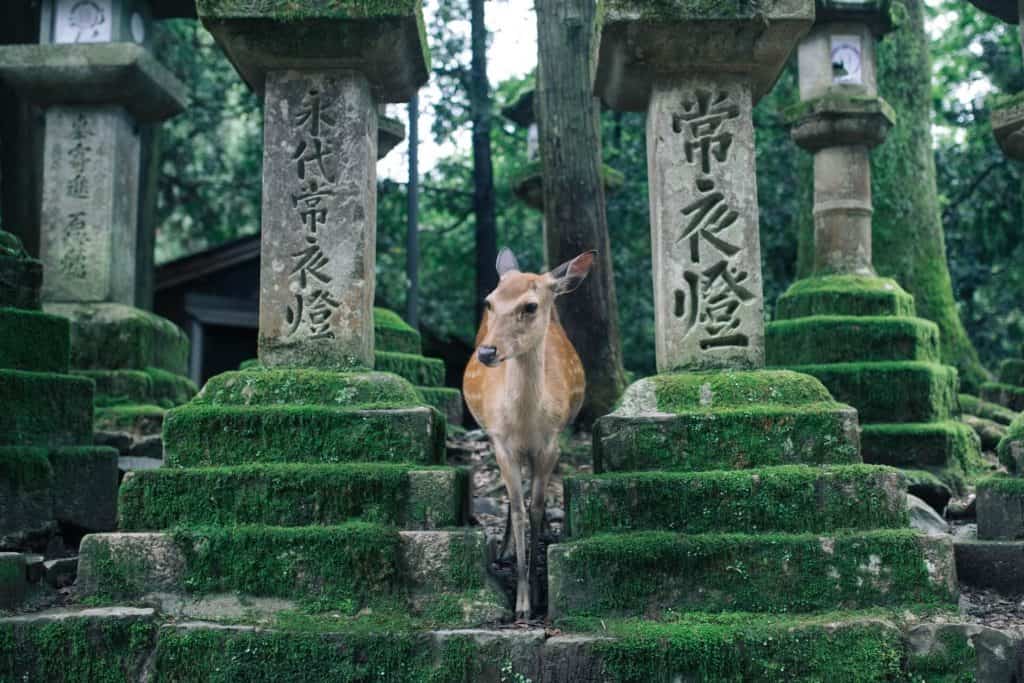
How To Get To Nara
To get to Nara from Kyoto , you can take:
- Operator: Miyakoji Rapid Train (JR Nara Line) and limited express train (Kintetsu Kyoto Line)
- Fare: US$7 (720 yen) vs US$11 (1160 yen) one way
- Duration: 45 minutes vs 35 minutes
- Japan Rail (JR) pass : Covered for JR Nara Line
It is time to move on to Hiroshima on Day 16 of the Japan 3 week itinerary.
Exploring Hiroshima will bring a sense of new hope and great resilience to any visitors.
This historic city was once in severe ruins due to the World War II atomic bombing that took place more than 70 years ago.
Things To Do In Hiroshima
Here are some of the main highlights to visit in Hiroshima during your Japan 3 weeks itinerary:
- Visit Peace Memorial Museum – Over here you will get to see the chronology of the bombing and the devastating effect of this significant event on the city and human lives back in 1945. Some of the exhibits and recordings from the atomic bomb survivors might be upsetting to the visitors. I thought I won’t be crying. I was wrong 🙁
- Visit A-Bomb Dome (Peace Hiroshima Memorial) – This UNESCO World Heritage site serves as a strong reminder about the destructiveness of atomic weapons. This dome is one of the remaining buildings that were still standing after the eventful incident.
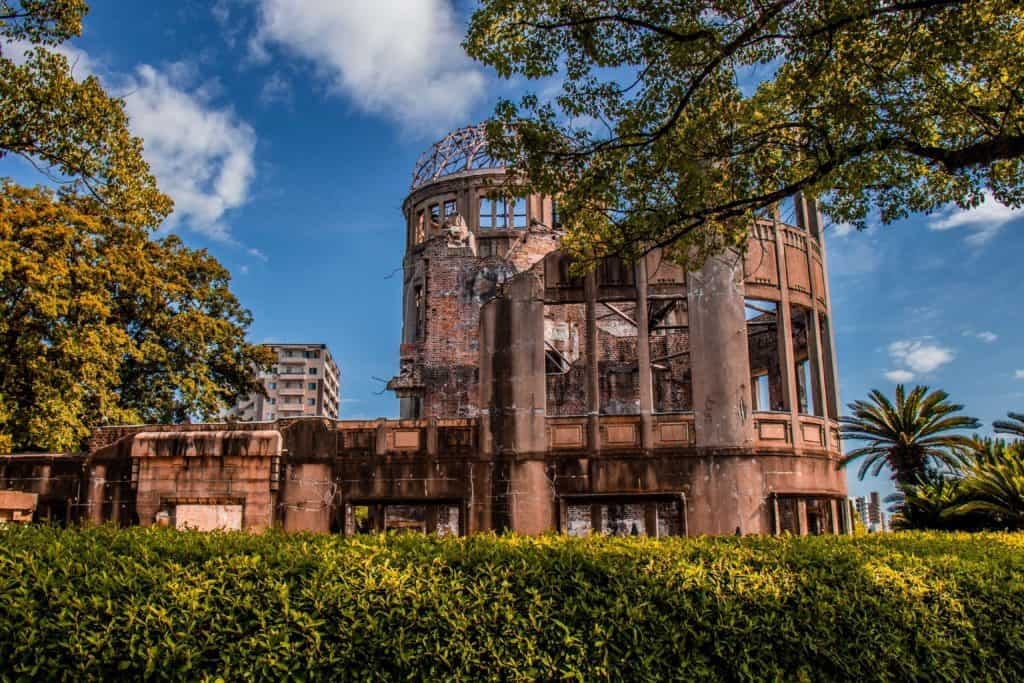
- Visit Cenotaph for the A-Bomb Victims – This arched monument serves as the tomb for the demised atomic bomb victims. You can find more than two hundred thousand victim’s names on the register of the chest stone beneath the arch.
- Have a stroll at Shukkeien Garden – If you can’t get enough of another tranquil Japanese landscape garden, you will have to make your way to Shukkeien Garden. Tea houses are built around the pond allowing visitors to admire the calm, serene view that this unique garden offers.
- Enjoy the stunning city view at Hiroshima Castle – Hiroshima Castle was recently rebuilt as it was thoroughly destroyed during World War II. You can enjoy the scenic panoramic city view from the castle’s top floor.
Travel tip: Do you know there is tram service in Hiroshima? I didn’t board any tram since I walked to most of the attraction sites but the tram is definitely a unique sight and poses a great photo opportunity!
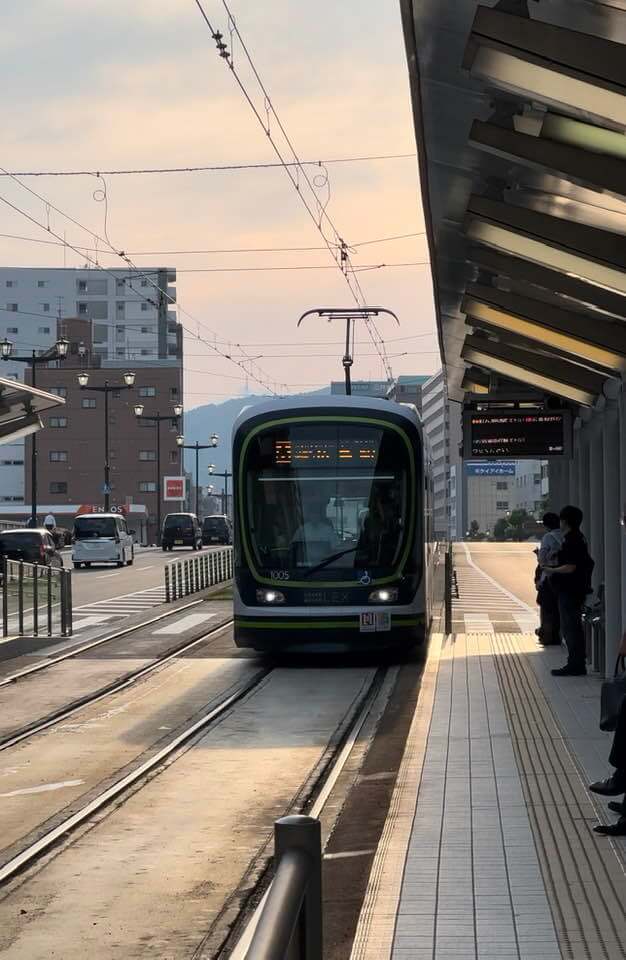
Unmissable Tours In Hiroshima
Here are some sought-after tours in Hiroshima that you can check out:
- Cycling Peace Tour In Hiroshima
- Hiroshima Bar-Hopping Food Tour
- Mt. Futaba & Hiroshima History Morning Hiking Tour
- Full Day Hiroshima/Miyajima Guided Tour
Where To Stay In Hiroshima
Here are the recommended accommodations in Hiroshima during your Japan 3 week visit:
- Budget: Sejour Inn Capsule , WeBase Hiroshima
- Mid-range: Daiwa Roynet Hotel Hiroshima , Mielparque Hiroshima
- Luxury: Hilton Hiroshima , Y-HOTEL
- Ryokan: Tenryu Ryokan , Kasuga Ryokan
What To Eat In Hiroshima
- Hiroshima Okonomiyaki
This savoury dish is native to Hiroshima. It might look similar to Osaka’s version of okonomiyaki but with 2 major differences.
Instead of mixing all the raw ingredients in a batter, the ingredients are fried in layers . Plus, you can find yakisoba noodles in Hiroshima Okonomiyaki .
Of course, you will need to head over to Okonomimura Building to enjoy this local delicacy!
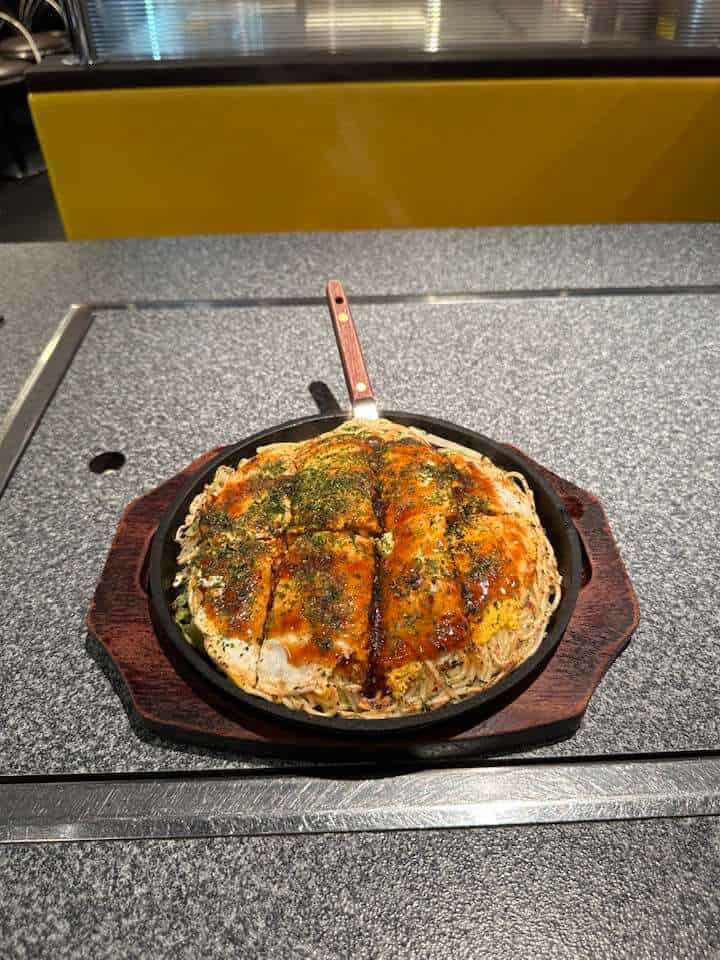
Instead of being served in a hot bowl of soup, Tsukemen is the dry version of ramen .
The noodle is eaten with a spicy dipping sauce on another bowl and you get to choose your preferred spiciness level.
Bakudanya is the place that you need to visit for a bowl of Tsukemen in Hiroshima.
How To Get To Hiroshima
To get to Hiroshima from Kyoto , you can take:
- Operator: JR Tokaido/Sanyo Shinkansen
- Fare: US$100 (11000 yen) for Hikari, Kodama, Sakura trains vs US$105 (11500 yen) for Nozomi train
- Duration: 2 hours (Indirect) vs 95 minutes (Direct)
- Japan Rail (JR) pass : Covered only for Hikari, Kodama and Sakura trains
Day 17 of japan trip 3 weeks: Miyajima
Make your way to this small yet fascinating island, Miyajima, on Day 17 of Japan 3-week itinerary.
Apart from being one of the IG-famous areas in Japan attributed to the giant floating torii gate, Miyajima has several historical highlights to boast to fellow visitors too—not to forget its local appetising cuisine!
Things To Do In Miyajima
These are the popular places to visit in Miyajima:
- Visit Itsukushima Shrine and its floating torii gate – Head over to this century-old Shinto shrine and visit its famous torii gate. Remember to check on the sea tides timing if you plan to admire the torii gate up close.
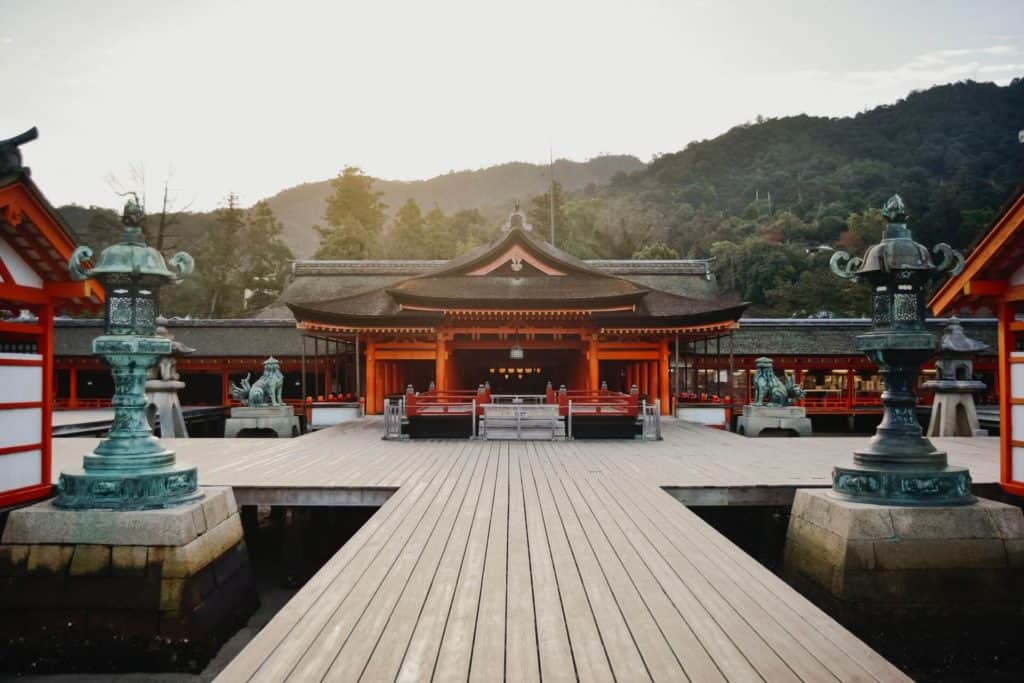
- Enjoy the high-up view at Mount Misen – Hike up to the highest mountain in Miyajima to enjoy the magnificent view of the sea and part of Hiroshima. If you are not into hiking, you can also board the ropeway to get to the observation platform for the sea view.
Visiting Japan in summer? Get yourself a pair of sunglasses to protect your eyes from the strong sunlight (not to mention a cool prop to have for photoshooting!)

- Explore Daisho-in Temple – Make your way to one of the important Buddhist temples in the country. You can perform an easy Buddhist ritual by turning the inscription-filled wheels when walking up the stairs.
- Admire the wooden structure of Senjokaku Hall – Admire the ancient wooden architecture of 400-year old Senjokaku Hall. Its five-storey pagoda is even more stunning, with at least 600 years of history. If you love looking at centuries-old monuments, you will need to visit Senjokaku.
Fun-Filled Guided Activities in Miyajima
Looking to spice up your Miyajima travel experience ? Consider booking these activities:
- Itsukushima Shrine Sea Kayaking Experience
- Oyster Farm and Itsukushima Shrine Visit
- Miyajima Rickshaw Tour
- Miyajima Cultural Experience Workshop
Where To Stay In Miyajima
You can choose to have a day trip to Miyajima from Hiroshima or stay for a night on this beautiful shrine island to experience its peaceful nightlife.
Here are some recommended places to stay in Miyajima in your Japan 3 week itinerary:
- Budget: Miyajima Guest House Mikuniya
- Mid-range: OUCHI HOTEL Miyajimaguchi
- Luxury: Aki Grand Hotel & Spa
- Ryokan: Sakuraya , Kikunoya
Travel tip: If you are interested in watching the dazzling daily illumination of Itsukushima Shrine from a boat cruise, approach your ryokan for reservation. Alternatively, you can enjoy the view by having an evening walking along the trails.
What To Eat In Miyajima
This saltwater eel is one of the seafood that you need to try in Hiroshima. It is usually grilled and served with rice (anago-meshi) and soy sauce.
You can get a bowl of freshly prepared anago-meshi at this traditional restaurant, Ueno .
Oysters are a big deal in Miyajima. Thanks to the many oyster farms on this island, you can see stalls selling grilled, fried, or fresh oysters literally everywhere.
One of the best places in Miyajima to get your hands on oyster meals is Yakigaki No Hayashi .
How To Get To Miyajima
To get to Miyajima from Hiroshima (pier nearby A-Bomb Dome), you can board:
- Operator: Aqua Net
- Fare: US$33 (3600 yen) two-way
- Duration: 45 minutes
It is time to travel to Kurashiki on Day 18 of your Japan 3-week itinerary.
This hidden gem is characterised by the presence of white walls of the traditional houses and a row of gracefully flowing willow trees lining along the canal that has been built since the Edo Period.
If you prefer to explore less touristy yet highly cultural places in Japan, you will be glad to include Kurashiki in your Japan itinerary.
Things To Do In Kurashiki
Here are the main attractions in Kurashiki:
- Have a boat cruise along Kurashiki River – This iconic landmark of Kurashiki is unmissable. You can enjoy a traditional wooden boat cruise along the river with a picturesque view of willow trees and traditional residences. Head over to the Kurashikikan Tourist Information Service to get the boat ticket.
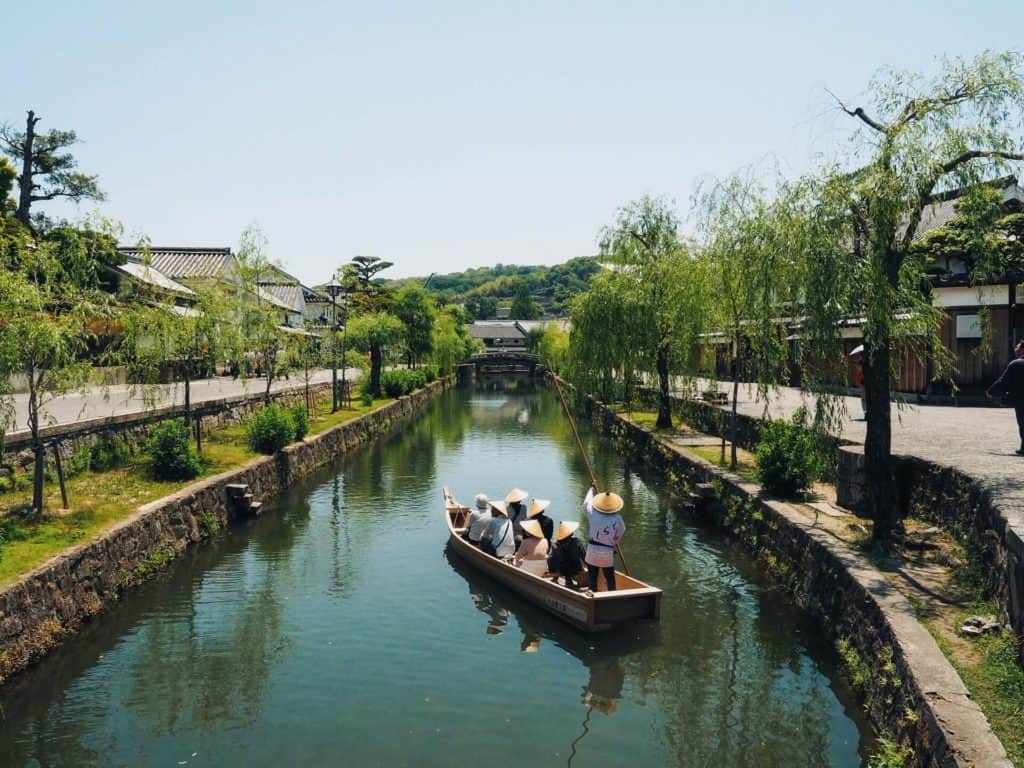
- Admire magnificent artworks at Ohara Museum of Art – Being the first Western art museum in the country, you will get to see numerous priceless European artworks including Picasso’s.
You can easily distinguish this extraordinary museum from other buildings by looking at its cross-culture architecture between Grecian and Japanese styles.
- Museum-hopping around the city – Depending on your preference, there are lots of museums to visit in Kurashiki exhibiting different and unique items, such as rural Japanese toys, prehistoric artefacts, and folk crafts.
- Get your sake dose at century-old Jizake Dotemori – Head over to this historical liquor store specialising in sake and beer in Kurashiki since the 1920s.
- Explore Kurashiki Ivy Square – Visit Japan’s first cotton mill in this square. You can also visit the Kurabo Museum that maps out the mill history and related artefacts that are collected over the years since 1888.
- Denim shopping at Kojima Jeans Street – Explore Japan’s jeans capital birthplace for some jeans related apparel shopping—even international designers visit this place to get a piece of the denim too!
Tip: If you are keen to design your own pair of jeans , consider getting this one-of-a-kind Jeans Making Workshop at Kurashiki.
Where To Stay In Kurashiki
Here are some recommended places to stay in Kurashiki during your 3 week trip to itinerary:
- Budget: Hostel Cuore Kurashiki
- Mid-range: Green Rich Hotel Kurashiki
- Luxury: Kurashiki Royal Art Hotel
How To Get To Kurashiki
To get to Kurashiki from Hiroshima , you can board:
- Shinkansen and transfer to the local train
- Operator: JR Tokaido/Sanyo Shinkansen & Sanyo Line
- Fare: US$79 (8650 yen) & US$3 (330 yen)
- Duration: 1.5 hours & 20 minutes
- Japan Rail (JR) pass : Covered only for Sakura trains
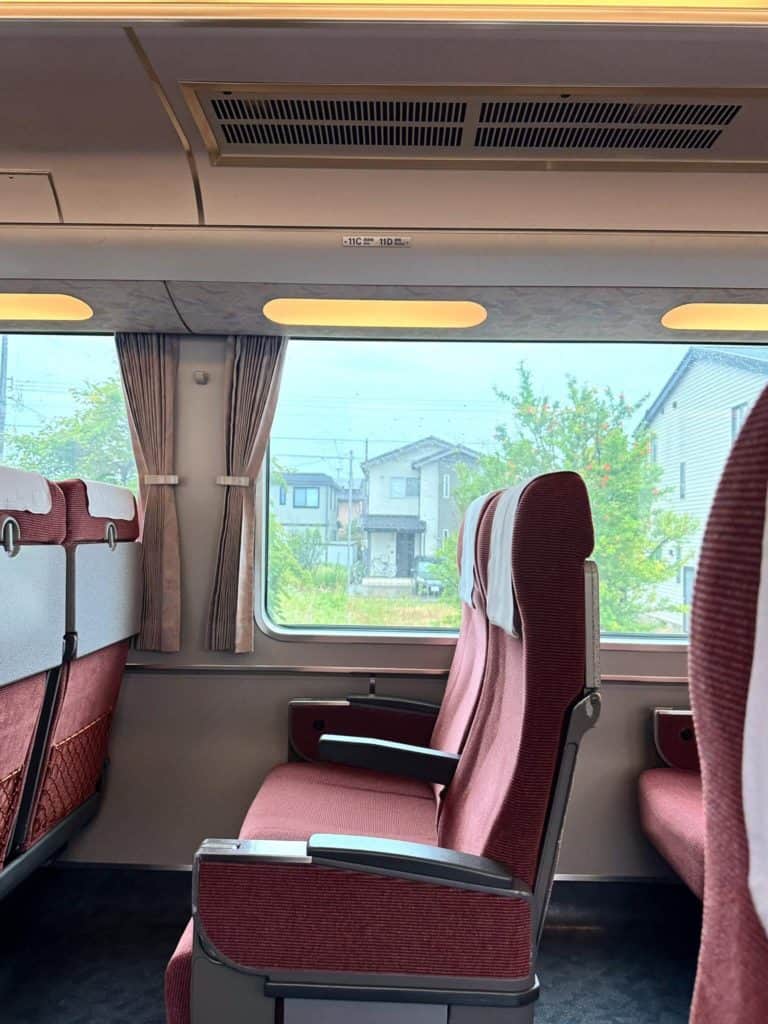
The 3 week Japan trip itinerary has almost come to an end. Spend Day 19 at Himeji!
Himeji is home to UNESCO site Himeji Castle , a spectacular 400-year old Japanese castle that survived any natural or man-made catastrophes.
Nevertheless, there is more to this city than the beautiful white castle—including breathtaking scenic views of mountains and scrumptious dishes that are native to Himeji.
Things To Do In Himeji
Here are several main highlights in Himeji that you can include in your 3 weeks Japan itinerary:
- Explore Himeji Castle – Admire this White Heron Castle’s ancient architecture and interior design. You can also enjoy the beautiful panoramic view of the city from the top floor of one of the most celebrated castles in Japan. If you are looking for a great hanami spot, Himeji Castle is going to be your best bet.
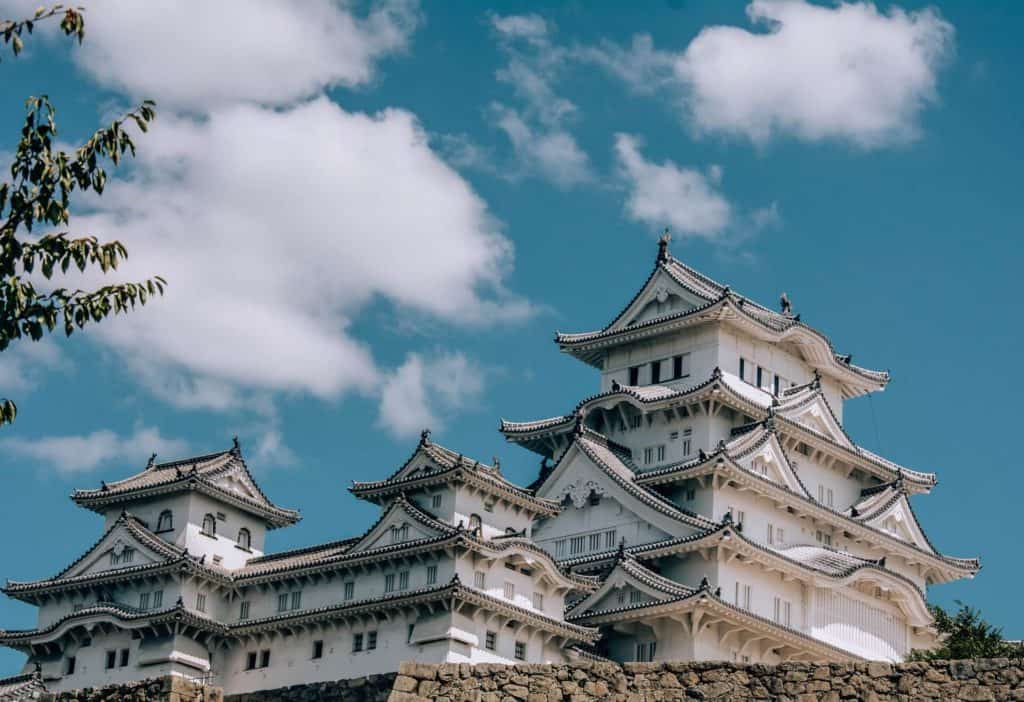
- Have a stroll in Kokoen Garden while enjoying the garden view – Have a stroll in Kokoen Garden located next to Himeji Castle. You can also enjoy having a tea session in one of the garden’s teahouses while admiring the view of the trees, flowers, and the fish pond.
- Wander around picturesque Mount Shosha – You can visit some of the historical, intricate wooden temple halls such as Maniden (Engyoji Temple) and Mitsuno Do in Mount Shosha.
If the Mitsuno Do halls look familiar to you, that’s because Mount Shosha is a famous shooting location for both local and international films—The Last Samurai was shot over here too!
- Museum-hopping at Himeji – If spending time inside a museum admiring the artist’s artworks and unusual collection is more like your thing, head over to Himeji City Museum of Art and Japan Toy Museum. The toy museum has an impressive collection of over ninety thousand toys.
Where To Stay In Himeji
Here are some recommended places to stay in Himeji:
- Budget: T abist CapsuleHotel APODS , Shironoshita Guesthouse
- Mid-range: Richmond Hotel Himeji , Daiwa Roynet Hotel Himeji
- Luxury: Hotel Monterey Himeji , Hotel Nikko Himeji
What To Eat In Himeji
1. Chanpoyaki
Chanpoyaki is Himeji’s version of okonomiyaki .
The base ingredients of this local dish are yakisoba and yaki udon . It is cooked with soy sauce before topped with a generous amount of spring onion on the dish.
You can head over to Tonton to try on this unique version of okonomiyaki.
2. Takoyaki
Himeji also has its own version of takoyaki .
Apart from drizzling the sauce on the takoyaki, you will be given a bowl of dashi soup too to dip on!
To get a taste of this unique dish, head over to Himeji Tacopy located inside Himeji Grand Festa.
How To Get To Himeji
To get to Himeji from Hiroshima , you can take:
- Operator: JR Sanyo Shinkansen
- Japan Rail (JR) pass : Covered only for Kodama and Sakura trains
Day 20-21: Osaka
Spend Day 20 and 21 of your Japan itinerary at this dazzling, neon light-filled metropolitan city—Osaka!
A modern city that has its own charm, Osaka boasts its ancient historical monuments, appetising local cuisines, vibrant nightlife, and friendly locals —making it a must-visit city for any first-time international visitor.
Since there are plenty of things to do at night in Osaka , you won’t be having a boring travel experience over here!
Things To Do In Osaka
To know more in-depth about things to do and navigating around the city, you can check out my detailed 1 Day Itinerary Osaka .
Here are the popular sites to visit in Osaka:
- Explore Osaka Castle – Learn more about this ancient castle’s history where it was first built in 1583. It is also a popular hanami spot in Osaka.
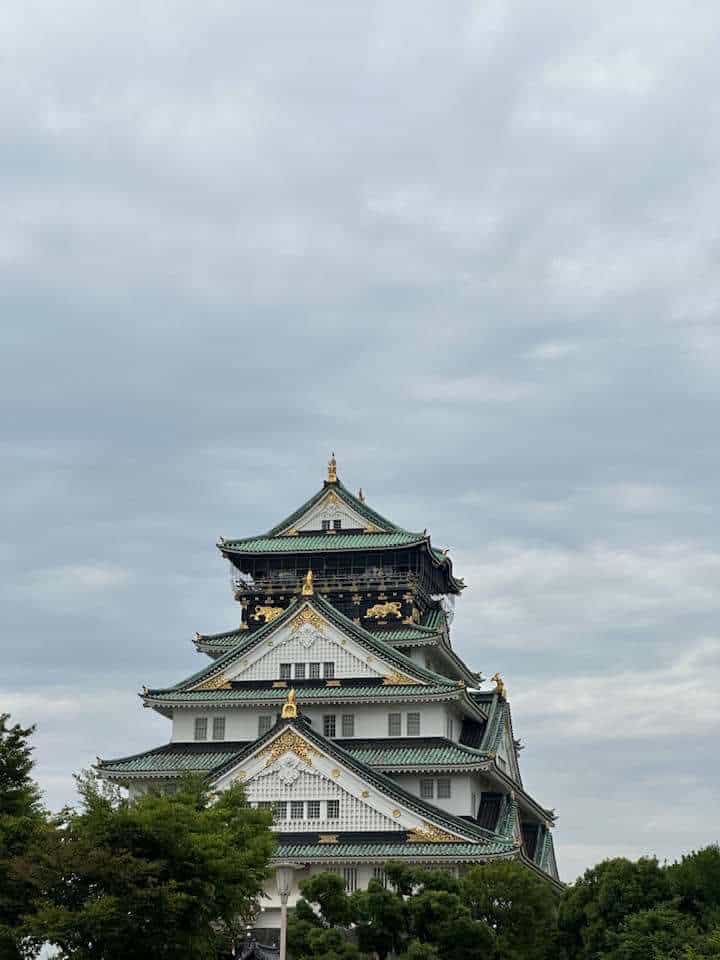
- Admire the panoramic city view at Abeno Harukas – Enjoy the unobstructed panoramic view of this megalopolitan city at the top of the tallest skyscraper in the country.
- Visit Shitennoji Temple – Explore one of the oldest temples in Japan and admire the beautiful traditional temple architecture.
Get yourself pocket Wi-Fi so you can upload those stunning Instagrammable shots of Japan onto your social media accounts instantly! Personally, I used this eSim and the connection was fast and stable throughout my Japan trip.
- Have a feast at Kuromon Market – Immerse yourself into the local culture by trying out the scrumptious street foods and delicacies sold by local vendors in Kuromon Market.
- Explore Shinsekai – One of the best places to enjoy cheap kushikatsu and beer in Osaka. You can also visit Tsutenkaku Tower to enjoy the city view from another different angle.
- Wander around Amerika-Mura – Check out Osaka youth’s fashion culture and apparel in this youth-inspired shopping district .
- Experience the nightlife at Dotonbori – This is where you get to see the IG-famous neon-lighted Glico Running Man in Osaka! Make sure you fill your tummy with the mouth-watering Japanese cuisine in Dotonbori before concluding your Japan itinerary.
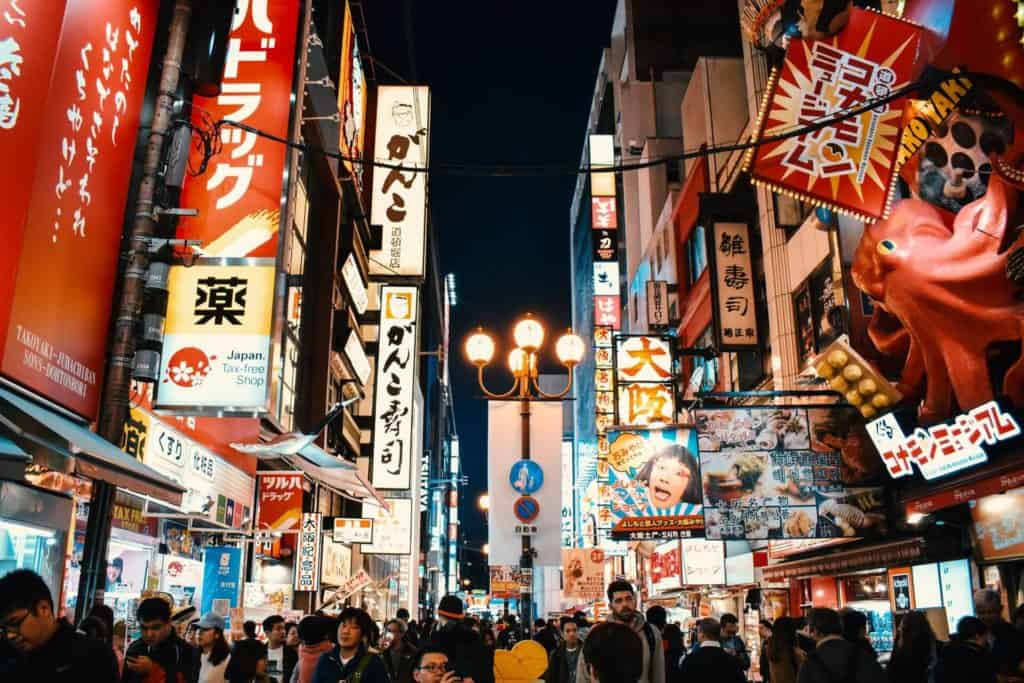
Guided Cultural & Food Tours In Osaka
If you would like to explore Osaka with the help of friendly knowledgeable local guides , consider signing up:
- Osaka Walking Tour
- Osaka Instagrammable Food Tour
- Shinsekai Food Tour
- Osaka Backstreet Night Tour
- Eat, Drink, Cycle: Osaka Food and Bike Tour
Day Trip From Osaka
Kobe is a popular day trip options from Osaka. Home to one of the largest sake producers in Japan, be sure to make your way to Kikumasamune Sake Museum in Kobe.
Other main highlights include Mount Rokko, Kobe Harborland, Ikuta Shrine , and Hanshin Snack Park .
Where To Stay In Osaka
Here are some recommended accommodation places to stay in Osaka:
- Budget: Hotel Atarayo Osaka , The Stay Osaka Shinsaibashi
- Mid-range: Grids Premium Hotel , Hotel The Flag , Toyoko Inn Osaka
- Luxury: Swissotel Nankai Osaka , Courtyard by Marriott Shin-Osaka Station
- Ryokan: Imazato Ryokan , Hotel Yu Shu
If you prefer to enjoy a relaxing dip alone or have a more intimate experience with your loved one, consider book one of the Best Osaka Ryokan With Private Onsen !
Toyoko Inn Osaka is probably my favourite hotel in this 3 weeks in Japan itinerary. The room is clean and comes with a bath tub! There are several restaurants nearby and it is located near the subway station. And the breakfast is great too. Can’t recommend this place enough!
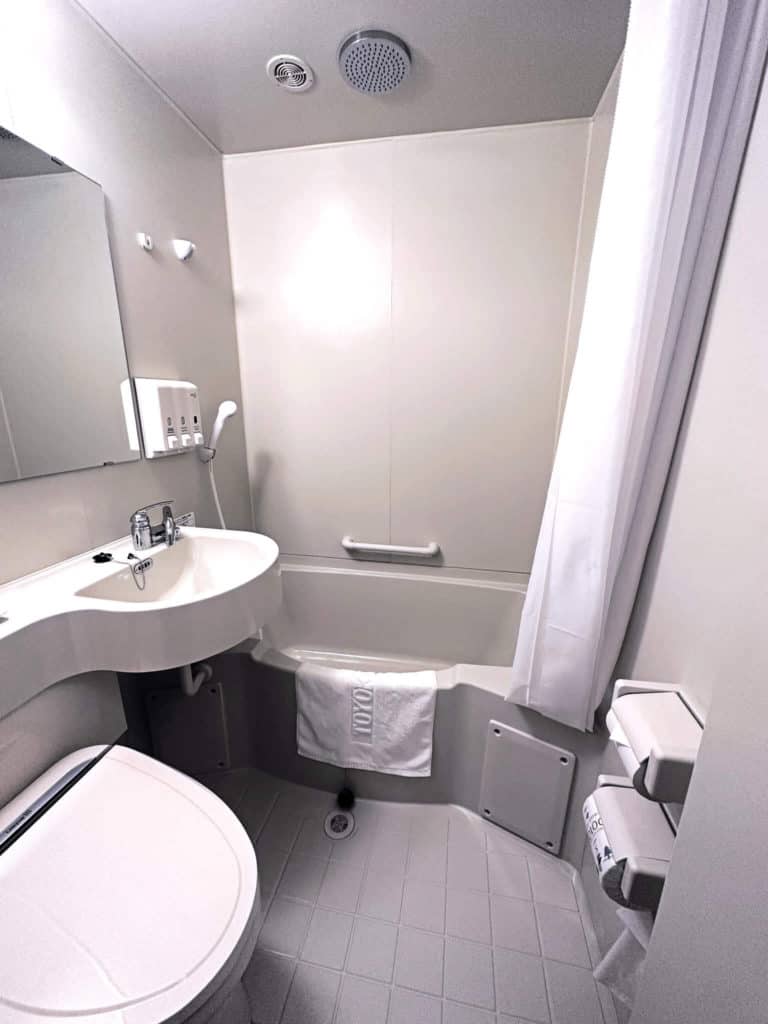
What To Eat In Osaka
1. Kushikatsu
Kushikatsu is the local’s favourite skewered deep-fried food . There are different types of kushikatsu options available, such as prawns, mushrooms, or even strawberries!
To get your fair share of kushikatsu in Osaka, head over to Kushikatsu Daruma .
Fugu or Japanese blowfish is one of the top dishes that you need to try in Osaka.
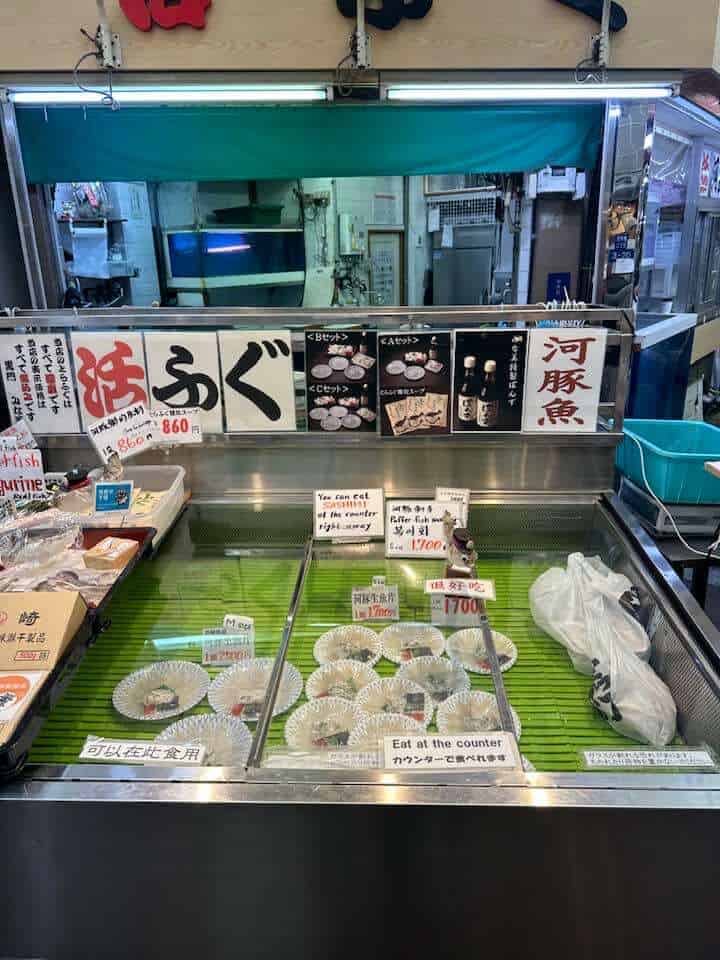
Only prepared by a licensed fugu chef, you can enjoy fugu as sashimi or being deep-fried or grilled.
Guepin Fugu is the place that you need to visit for a fugu delicacy in this bustling city.
How To Get To Osaka
To get to Osaka from Himeji , you can take:
- Duration: 30 minutes
- Japan Rail (JR) pass : Covered only for Hikari, Kodama, and Sakura trains (Not Nozomi)
So here you go—an exciting city-hopping across the country and a fun-filled Japan 3-week itinerary!
On the next day, you can choose to fly out of the country from Osaka’s international airports or board a shinkansen to Tokyo’s airport instead.
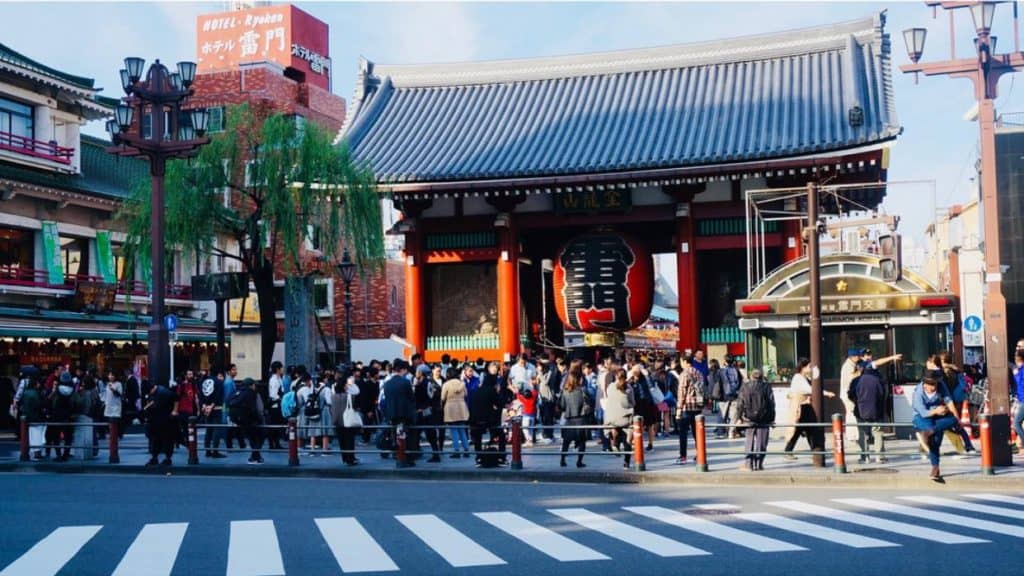
Budget For 3 weeks in Japan: The Breakdown
There is no doubt that Japan is among the most expensive South Asian countries to travel around.
Nevertheless, you can still travel to Japan with a minimal or mid-range budget—provided that you have done the price comparison and pre-book the accommodation and train tickets before reaching Japan.
Here is the estimated average daily budget for low budget, mid-range, and luxury travellers for 21 days in Japan:
Note: All the estimated prices are in USD currency and for 1 person expenditure only. The figures shown do not include flight tickets, souvenirs, and other miscellaneous spending.
Accommodation
You can find a hostel for as low as US$20 per night in a smaller city or rural town or U S$45 per night in a metropolitan city such as Tokyo.
If having a good night sleep is what you prefer when travelling, you can easily find a mid-range budget private room for about US$70 to US$90 per night .
For better hotel amenities with bigger room space, expect to spend at least US$150 per night .
You can also get a futon bed at the Japanese styled inn or ryokan , for as low as $45 per night to a whopping US$500 per night. Most of the ryokans offer breakfast and dinner to their guests.
Note: To check on the different types of accommodation that suit your travel budget, you can surf Booking.com .
Alternatively, you can also opt for shukubo (temple lodgings) where you get to stay at the temple ground and experience the simple life of Buddhist practitioners.
Typically, a night at shukubo will cost around US$60 to US$100 .
Transportation
One of the money-saving travel passes you need to get for your Japan 3-week itinerary is the JR pass .
JR pass allows international visitors to travel between cities at a shorter time interval by boarding shinkansen—which means more time to cover the visiting areas!
Note: The pass is also valid on JR buses and JR ferries.
To put your mind at ease, you can book the pass before flying into the country and get it directly at the JR Rail Office once you land.
Allocate another US$100 for other modes of transportation such as public buses and subways .
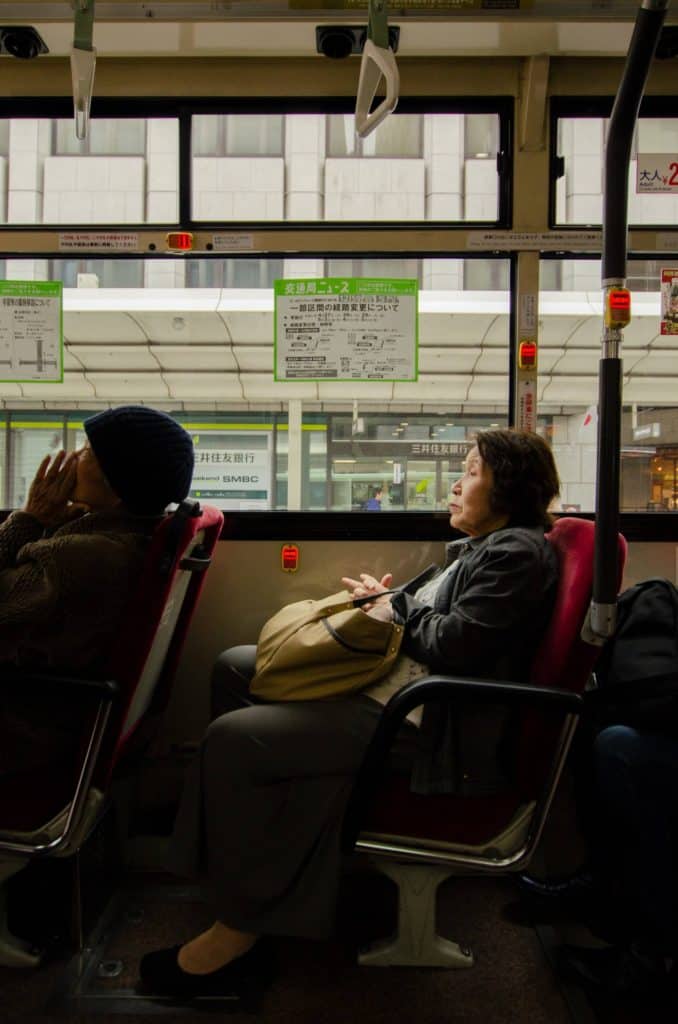
Japan is a food haven even if you are not a foodie.
If you plan to indulge in the local cuisine without breaking the bank, you can visit the local food markets and neighbourhood restaurants .
A serving of takoyaki is typically sold at US$5 whereas a bowl of ramen will cost about US$9 .
Of course, you can splurge on trying premium food such as Kobe beef or for the great ambience in a fancy restaurant during your 3 weeks Japan visit.
As such, expect to fork out at least US$200 in exchange for the unique dining experience.
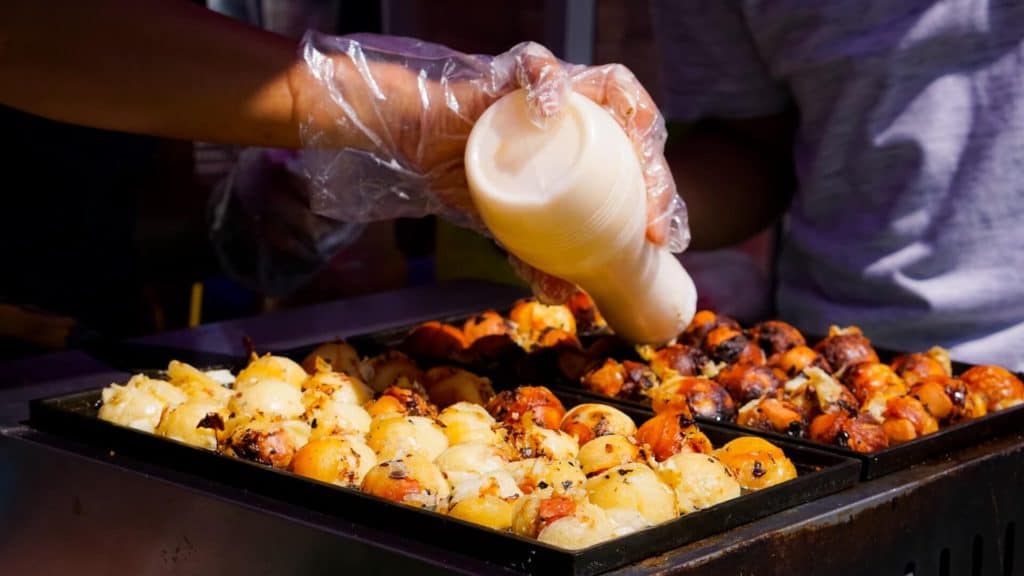
Activities and Entrance Fees
If you are on a low travel budget exploring Japan, you can visit the free entrance attractions such as temples, museums, and gardens .
But if you want to delve into the fascinating Japanese culture and history through local guided tours throughout your 3 week in Japan trip, consider allocating at least US$250 .
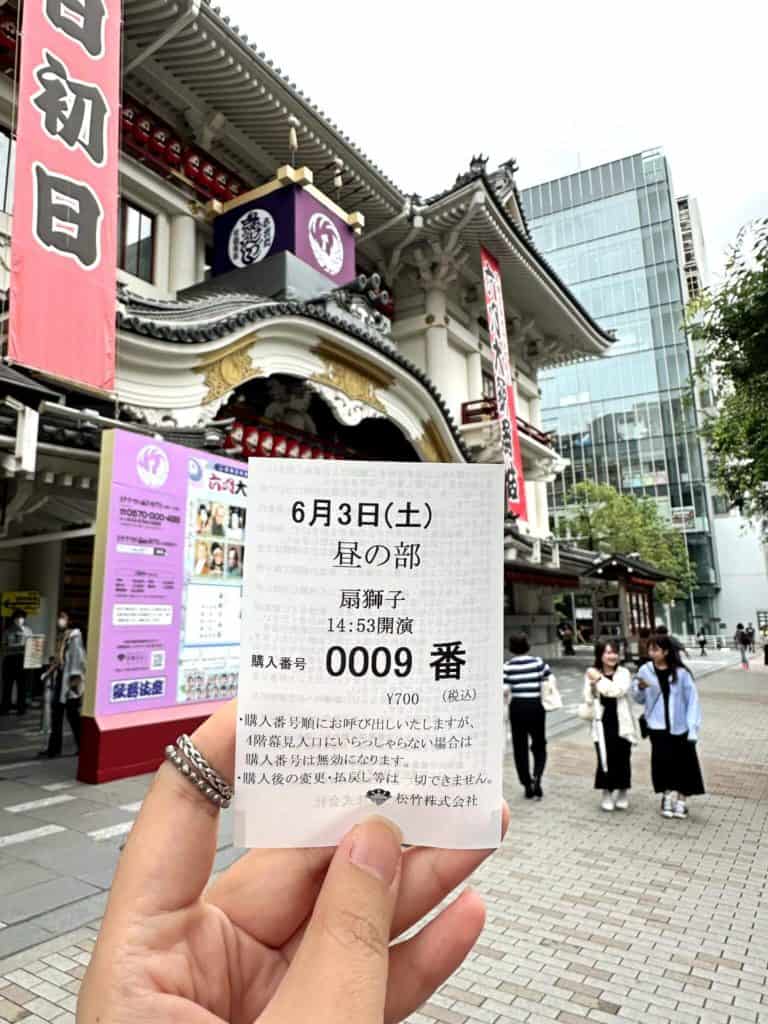
Best Time To Visit Japan
Japan has 4 seasons, offering distinct and unique travel experiences to visitors.
Each season has its pros and cons . Depending on your travel budget and individual preference, you can refer to the season guide below before planning a trip to Japan:
Spring (March to May)
If you plan to admire the beautiful pink blossoms of cherry trees while exploring Japan, you will need to visit the country in the spring season.
However, Japan’s travel in this season is also the busiest and the most expensive month to be.
Most of the accommodations will be fully booked and some popular hanami spots will be overcrowded with local and international tourists too.
Summer (June to August)
Summer in Japan is hot and humid, not to forget it is a rainy season too.
Typhoons are also prevalent in the summer.
If you prefer to visit the major attractions with lesser crowds , you can consider travelling to Japan in the summer.
Autumn (September to November)
Another stunning and peak season to visit Japan is during the autumn —to watch the mesmerising fall foliage with the bright red, orangey maple leaves view spanning across the street or park.
So get your room and entrance tickets booked (to save yourself time from queuing) in advance before visiting Japan.
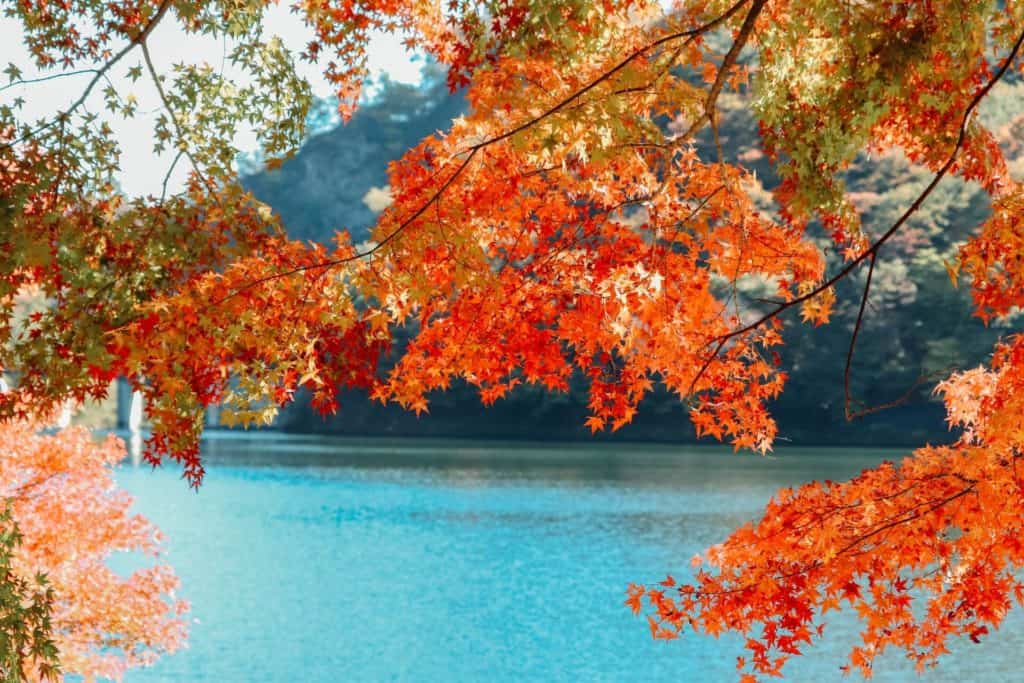
Winter (December to February)
Winter is the least touristy season in Japan due to its low temperature and cold weather.
Accommodation is also the cheapest in winter and you get to visit the major attraction places without large crowds.
Remember to have a fantastic onsen session at a local ryokan or public onsen during this chilly season in Japan.
Travel tip: Winter travel is not for everyone, especially if you have low cold tolerance. Make sure to read my helpful Japan Winter Packing List post so you know what items to bring (plus handy tips!) when visiting Japan in winter.
5 Unique Tips You Should Know When Visiting Japan
1. language .
Japan’s official language is Japanese . Most Japanese people do not speak fluent English.
To be safe, read on my best apps for travel to Japan article to learn which translation apps to download before visiting Japan.
2. Internet Connectivity
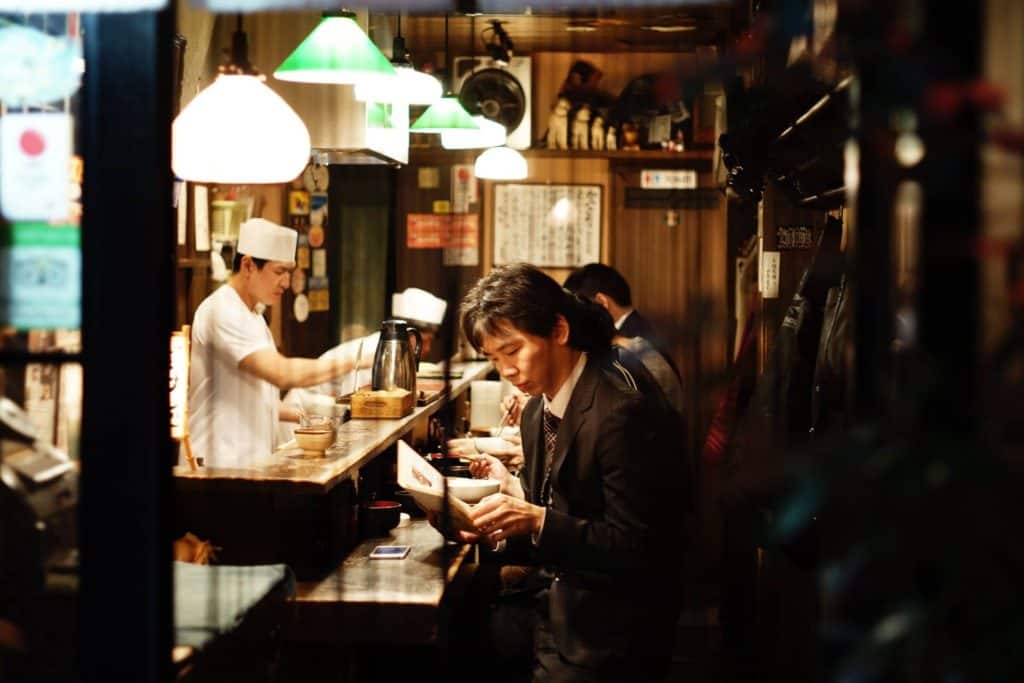
Getting a local SIM card might come in handy when you need Google Translate or looking for directions to explore outside of the city.
Alternatively, you can rent a portable wifi device that can be connected to up to 5 mobile phones at the same time—a better option if you are travelling to Japan in a group of people.
If you are travelling solo, getting an eSim might be more budget friendly. I used this eSim and I had wonderful time exploring Japan alone!
3. Travel Adapter
The type of sockets you can find in Japan are Type A & B .
So, make sure to bring along a universal adapter before visiting Japan.

If you forget to bring one, you can easily buy a universal adapter at the electronic stores.
4. Crowdedness At Popular Attraction Sites
Brace yourself to explore some of Japan’s famous iconic landmarks with hundreds of tourists flocking to the same place.
If you would like to skip the crowd , you can plan your visit either in the early morning or late evening.
And even better, book the entrance tickets online in advance to skip the queue and get a better bargain!
You can book the attraction tickets or tours in Japan from:
5. Toilets In Japan
Toilets in Japan’s major cities are so advanced! You might even find it overwhelming looking for the correct flushing button on the panel.
To prevent you from hyperventilating and freaking out in the washroom, here are some crucial Japanese toilet vocab to get familiar with:
- 小 : refers to the “small” flush
- 大 : refers to the “big” flush
- 音 : a rhythm or music will be played when this button is pressed (to create a sound distraction so that you can answer the nature’s call freely in the cubicle without feeling embarrassed)
Travel tip: Check out my detailed first time to Japan article to set yourself up for an enjoyable travel experience!
Additional Resources For Planning Japan Itinerary 3 Weeks
If you would like to know more on how to plan a trip to Japan or study its culture before flying over, below are the recommended books :
- Culture Smart Japan: The Essential Guide to Custom and Culture
- Moon Japan: Plan Your Trip, Avoid The Crowds and Experience The Real Japan
- Lonely Planet Japan Guide

FAQs: 3 Weeks In Japan
Is 3 weeks enough in japan.
Each Japanese cities have its respective highlights, including century-old temples, beautiful castles, tranquil natural splendours, and mouthwatering cuisines—there is always something pleasant for everyone! Therefore, staying for three weeks in Japan is definitely enough to explore and experience the different unique cultures of Japan.
Is 3 weeks in Japan too long?
Not at all. The flight duration to Japan is typically long, so staying in this country for extra days will make your trip more worthwhile. Also, it might be too rush for you to explore all the popular highlights of the major cities within two weeks. Hence, a 3-week stay in Japan is highly recommended .
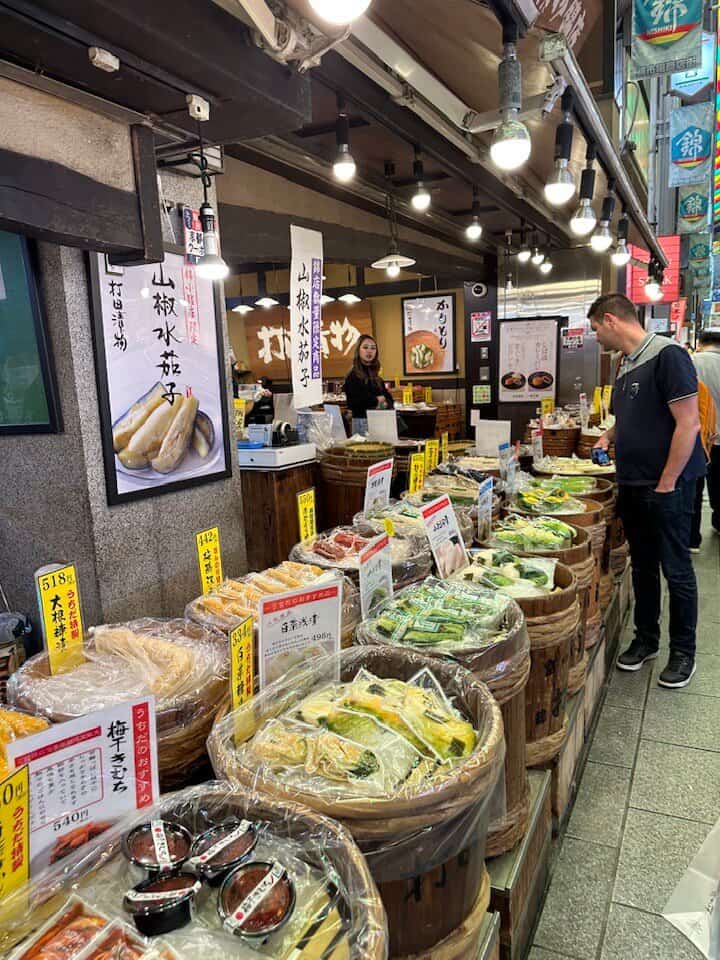
How long a foreigner can stay in Japan?
A Japan tourist visa is generally valid for up to 90 days, starting from the day you enter the country. Japan also offers other visas that go up to a maximum of five years. Check your passport and apply for the Japan tourist visa accordingly before flying into Japan.
When should I visit Japan?
Spring (March to May) and autumn (September to November) are typically the better seasons to visit Japan. That’s because you get to admire the stunning scenery of cherry blossom or fall foliage in each respective season. These two seasons are also typically crowded and packed with tourists.
Is Japan an expensive trip?
Averagely, foreign travellers will spend about US$110 (15000 yen) per day in Japan. If you do not have a budget, you can easily spend over that amount. Nevertheless, you can still have a good time exploring Japan even with a lower travel budget.
How much does a 3 week Japan trip cost?
With a minimum budget of US$70 (10 000 yen) for a person/day, you can expect to fork out at least US$1500 (210 000 yen) for a 3 weeks in Japan itinerary. This estimated figure is not inclusive of your incoming and outgoing Japan flight ticket price.
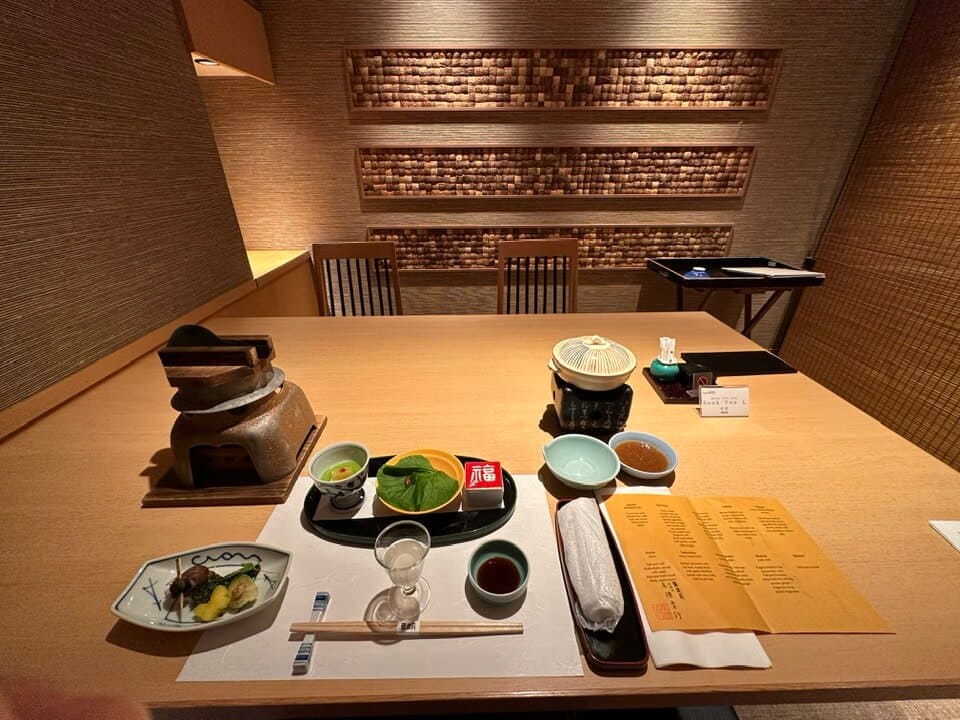
Conclusion: 3 Weeks Itinerary Japan
Here you go—a comprehensive Japan 3 week itinerary that you can rely on for your upcoming Japan trip.
Japan is a beautiful country that everyone should visit at least once in their lifetime.
By following this three weeks in Japan itinerary, you are bound to have a wonderful time immersing in the unique cultures of Japan.
You will have a blast checking out the beautiful ancient temples and shrines as you advance from one Japanese city to another.
You will treat your palate to a wide range of mouth-watering Japanese food and learn a thing or two about the dish history from the friendly guides.
You get to admire the mesmerising sights of natural splendours, mountainous hills, and hot springs where words are simply not enough to describe their beauty.
So now go book your plane ticket and treat yourself to a three-week trip to Japan.
You deserve it. And you will not regret it!
- Top 15 Instagrammable Places In Kyoto You Should Not Miss
- Kyoto 2-Day Itinerary—Epic Guide To Explore Kyoto
- 1 Day Itinerary Osaka—The Best Itinerary To Explore Osaka In 24 Hours
- Tokyo Treat Review In 2023: A Quick Read (100% Unbiased)

Sam Lee, founder of Sam Lee Travel, is a seasoned traveler with over 10 years of experience exploring various Asian countries. Having lived in Singapore for almost a decade, Sam has developed a deep understanding of the culture, customs, and attractions in the region.
With a passion for outdoor travel adventures and water sports, Sam has helped over 25K readers per month plan their trips around Asia, including off-the-beaten-path destinations, offering helpful travel tips and unfiltered personal travel experience.
Join my monthly email! Sign up

The Perfect Japan 3 Week Itinerary: What You Need to Know
If you’re searching for the perfect Japan 3 week itinerary to help plan your trip, then STOP: you’ve found it.
Tokyo flirts with modern trends; Kyoto is steeped in history. Osaka treats you to budget eats and shopping while Fukuoka is a lesson in humble living. All these unique cities come together to form one of the most popular travel destinations in the world: Japan.
What I find most enticing about Japan is that every region and every season gifts you with new sights and traditions! It’s impossible to see it all at one go – even if you’re lucky enough to have three weeks to do it – but this 3-week itinerary for Japan will let you sample your fair share.
Keep in mind that this is a loose itinerary for three weeks in Japan!
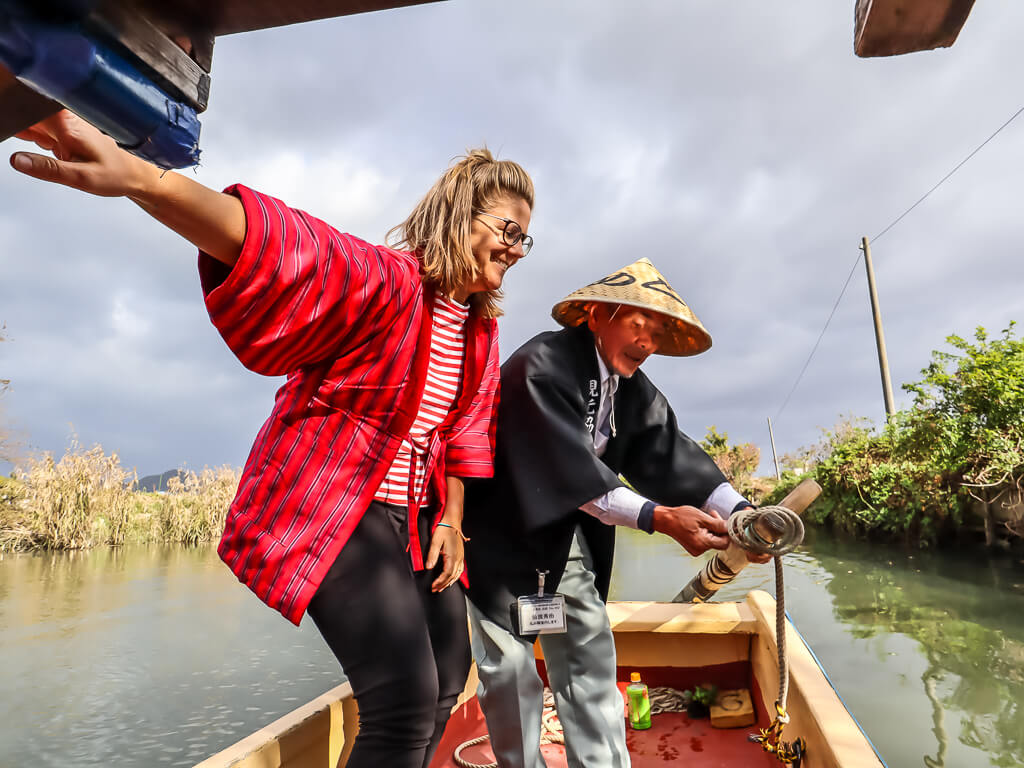
You can spend longer in cities you’re interested in or mix around the order for your 3 weeks in Japan. If you’re worried about the cost of transport, the handy JR Rail Pass is a great bargain for intercity travel.
I’ve also clustered activities together on a day-to-day basis based off location, but feel free to play around with your Japan 3 week itinerary.
How to Spend 3 Weeks in Japan
I’m lucky enough to have spent months in Japan, let me take you through the best 3 weeks in Japan itinerary for the best trip ever.
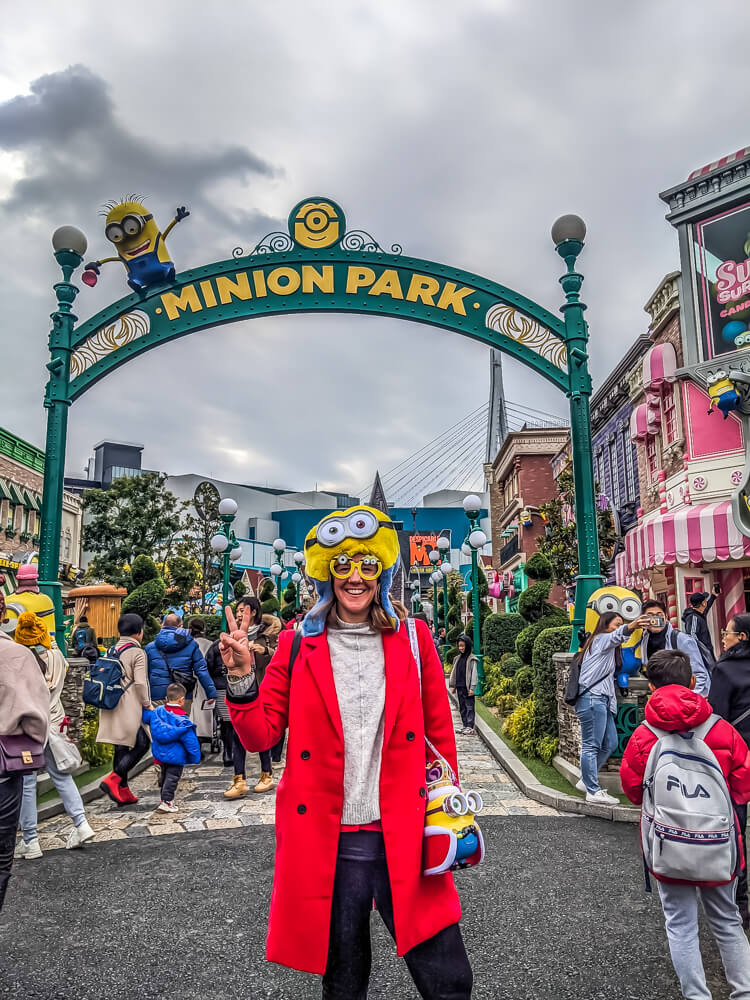
TOKYO: Day 1 – 4
With its high traffic of international flights, Tokyo is the perfect place to start . It’s also a good idea to start with the most expensive city since budgets tend to get tight near the end of trips. This way, you won’t have to worry about running out of money at the end of your Japan 3 week itinerary.
Day 1: Shibuya and Shinjuku
At the heart of Tokyo is Shibuya , the perfect first glimpse of the metropolitan. Sit at a café along Shibuya Crossing to people watch, or hop around the various malls and boutiques.
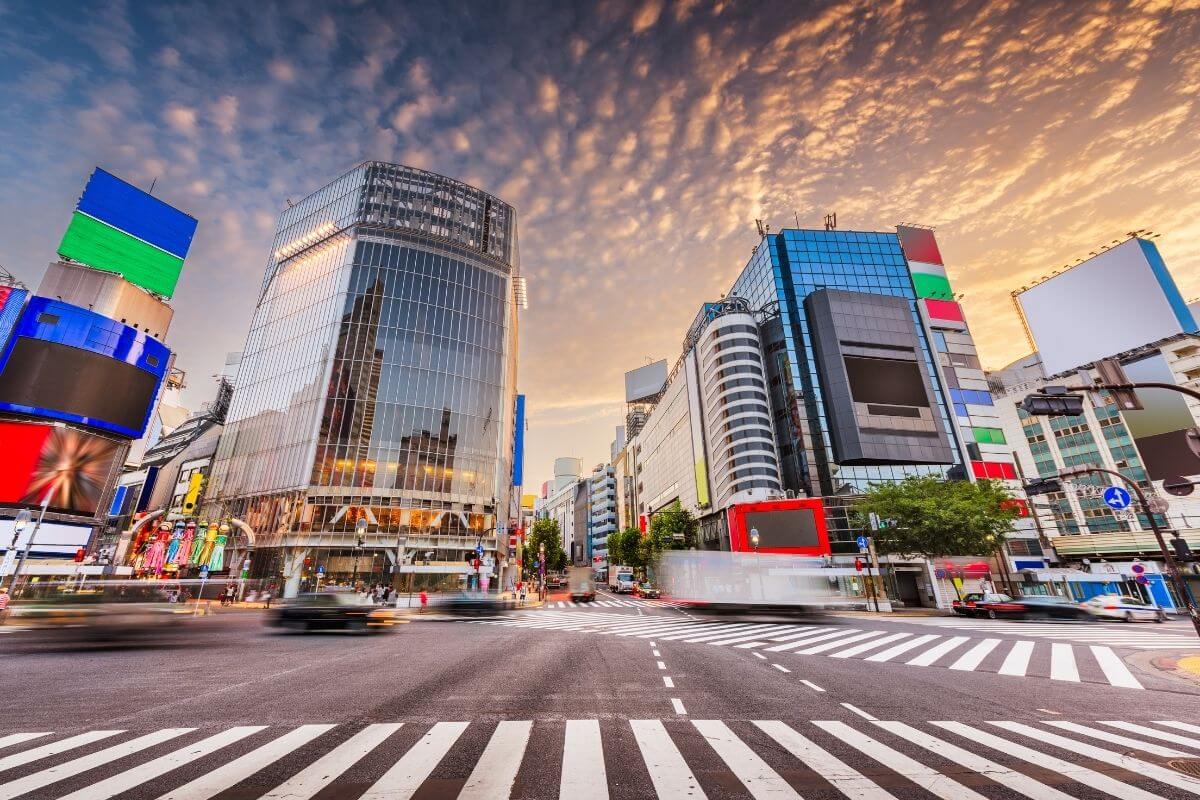
Next-door Shinjuku is another commercial district full of department stores, shopping malls, restaurants and nightlife options. You can:
Shop at Keio Mall, Mylord, LUMINE , NEWoMan, Marui, SEIBU Shinjuku PePe and more.
Meander through Shinjuku Park’s three distinct areas; the stunning Japanese Garden, manicured French Garden, sprawling English Garden and additional greenhouses.
Kabukicho ’s famous izakaya houses are a must when it comes to night-time dining.
For bars and clubbing, drop by the LGBT+ friendly Shinjuku ni-chome .
When you’re travelling in Japan and going online, keep your information safe with a VPN. This way you can enjoy secure and private access to the internet. With a VPN you can connect to your country’s content (hello Netflix!) and protect your identity online. This is vital for banking to prevent others seeing what you’re doing by sending your data through a proxy so it’s masked. Sounds important hey?
Check out NordVPN for more details.
Day 2: Yanezen, Ueno Park and Asakusa
Yanezen is a charming neighbourhood with the remnants of Edo Tokyo – think cobblestone paths, numerous shrines and wooden shop fronts. I highly recommend a quick walk through Yanaka-Ginza Shopping Street and then a sweep of Nezu Shrine and its mini trail of torii gates.
Follow up with one of Tokyo’s biggest green spaces for your Japan 3 week itinerary. Ueno Park isn’t just for relaxing walks; it’s also home to Ueno Zoo, Tokyo National Museum and the Tokyo Metropolitan Museum of Art.
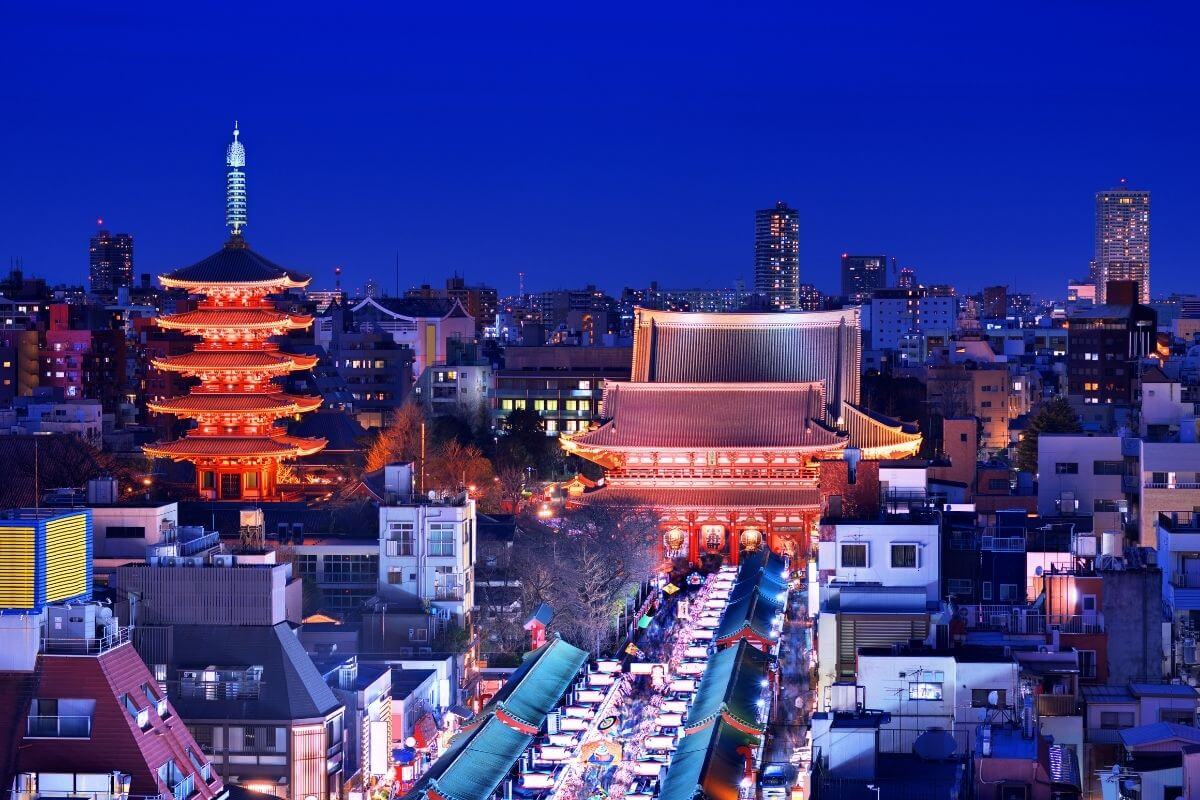
Continuing on the artsy, nostalgic trend, head over to Asakusa. Once the merchant hub and red-light district of Edo Tokyo, the district still features traditional styled streets and buildings. Within the area are:
Sensoji Temple in all its vermillion, tiered glory.
Nakamise Shopping Street for Japanese souvenir shopping and cheeky pictures.
Skytree Tower on the other side of Sumida River, within walking distance. The observation deck is worth visiting; you’ll come down with a camera roll full of panoramic shots!
How about staying in a capsule hotel in Tokyo while you’re there, or maybe, a maid cafe? Lots of things to think about when you’re planning a Japan trip.
Day 3: Tsukiji, Tokyo Tower, Harajuku
If you are willing to wake up early, grab some fresh sashimi rice bowls at Tsukiji Fish Market first thing. You might not be able to witness the legendary tuna auctions anymore, but the generational restaurants here are an amazing sight to see. The fish market is one of the most popular things to do in Tokyo .
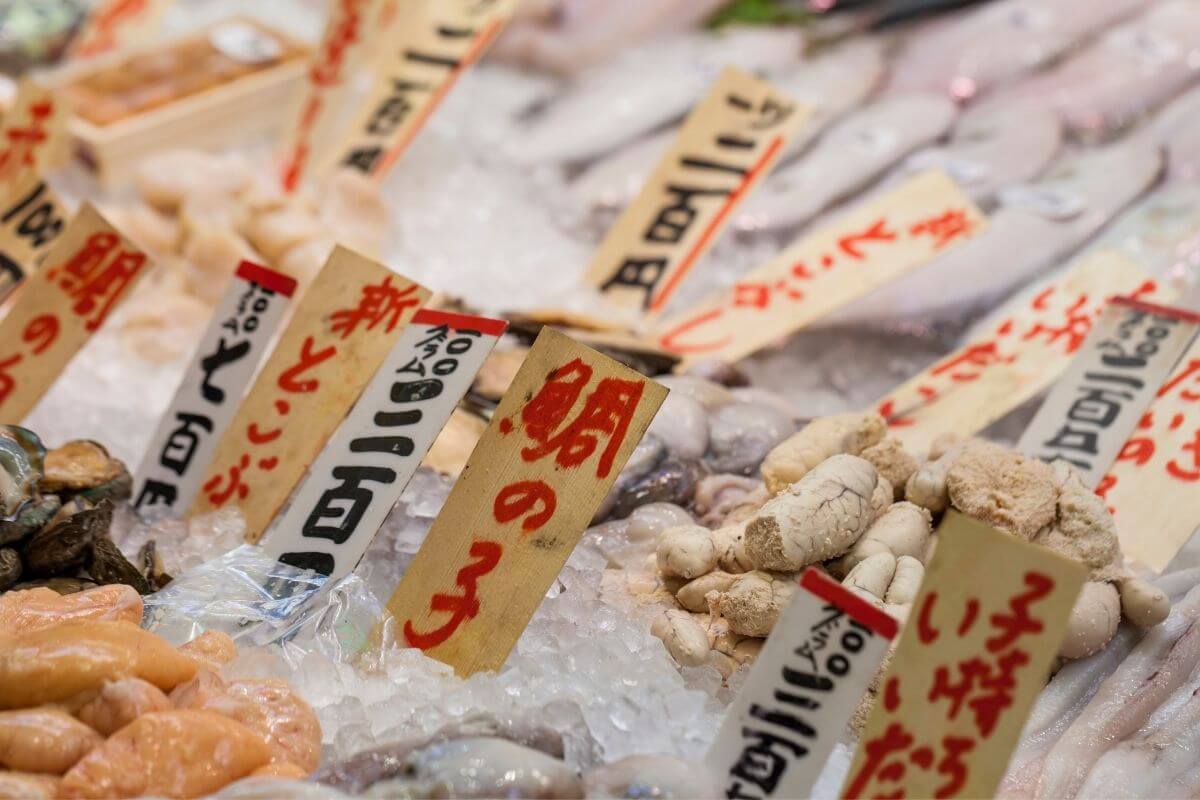
Next up is Tokyo Imperial Palace , just a short walk from the iconic Tokyo Station. Explore the grounds or sign up for a guided tour so you can catch a glimpse of the Emperor’s residences.
Tokyo Tower is for those who didn’t get to go up Skytree Tower. Not only is it a shining red beacon, it’s also a great observation deck.
Other iconic Tokyo sites include Yoyogi Park and adjacent Meiji Shrine. Pray for health and fortune at the latter before leaving the leafy respite for noisy Harajuku on the other side of the tracks. Harajuku is fashion heaven! If you’re a fan of eccentric styles or simply want to experience all that Japanese fashion has to offer, this is the best shopping district there is. It’s one of the most unique places to see in Tokyo.
Day 4: Disneyland
End your Tokyo visit with a full day at Disneyland and DisneySea ! Hands down the best Disney experiences I’ve ever had, fit for both families and young-at-heart adults. When I visited it was the opening of the new Frozen parade – loved it! It’s even more bonkers than the American one, and everyone dresses up too!
KANAZAWA: Day 5 – 7
Historical and moody Kanazawa is a break from Tokyo’s modern eccentricities for your 3 weeks in Japan. Plan to arrive in Kanazawa before noon so you check off all these area attractions!
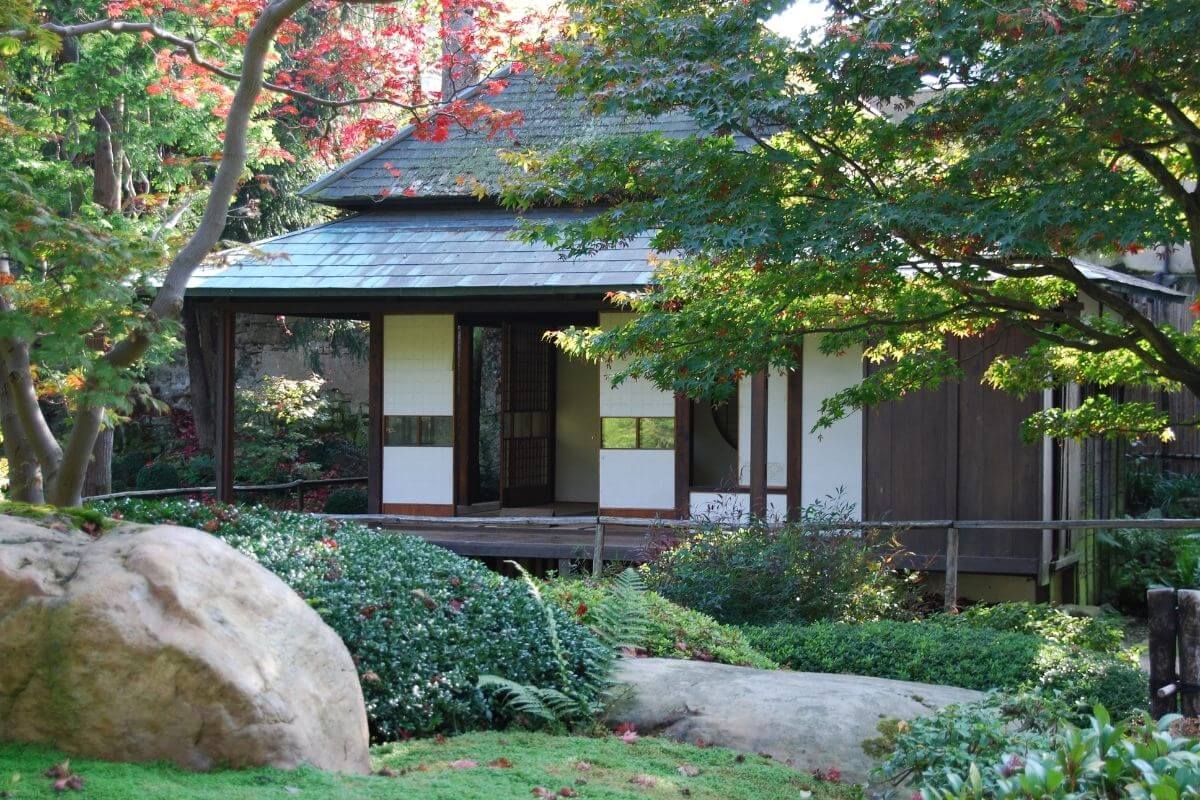
The tea house district and samurai district are Kanazawa’s gatekeepers to tradition. Beautiful wooden frame houses have been transformed into shops that sell traditional handicrafts and other cultural goodies. You can also sign up for craft making classing or tea ceremonies for that dose of cultural experience.
Take a day trip to Takayama for more historical architecture! I love walking down the narrow streets and feeling the nostalgic vibe. A must on your three weeks in Japan.
Shirakawago is another postcard-landmark – a mountain village known for its clasped palms’ thatched roofs. It’s absolutely stunning in the winter, like a world of its own.
I haven’t gone there personally, but Kaga Onsen Village is a hot-spring getaway guaranteed to rejuvenate!
OSAKA: Day 8 – 11
Osaka, while developed like Tokyo, is a lot more laidback and friendly. Enjoy the mix of historical attractions and plenty of indulgent eating. I love Osaka and have quite a few dedicated blog posts on it – see the links below.
Osaka is a definite must on any Japan 3 week itinerary.
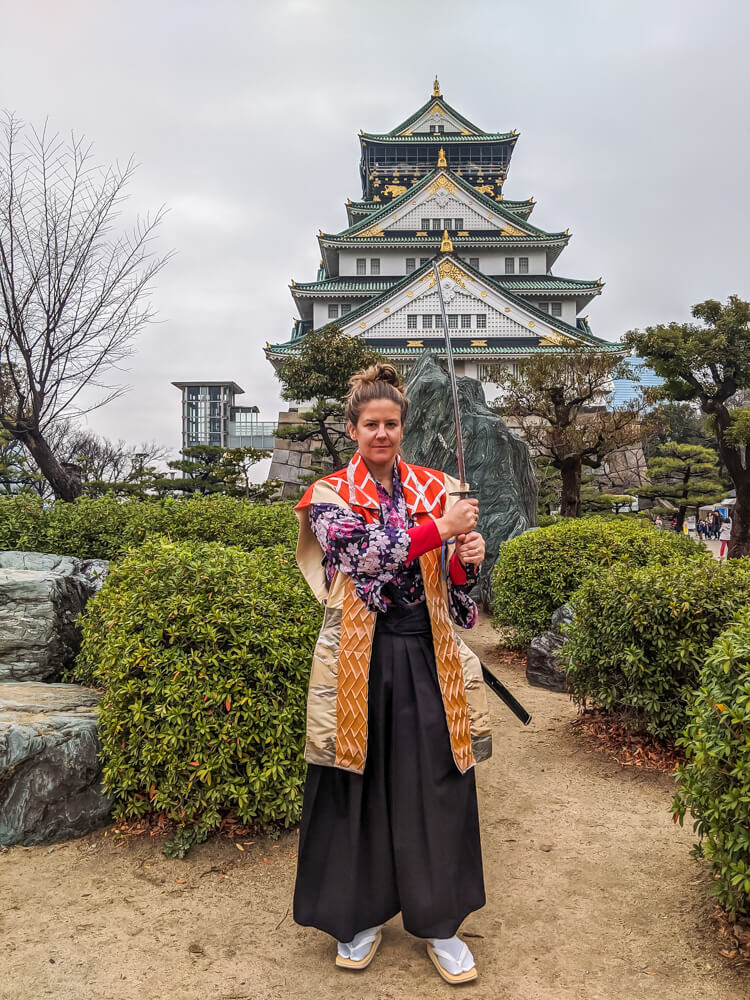
H ow about booking a ryokan in Osaka , with a private onsen? Most of these are a train ride out of the city, and for that you’ll get some peace and tranquility after your day of sightseeing.
Day 8: Osaka Castle, Museums and the Dotonbori
Start your Osaka leg at Osaka Castle , the center-piece of Osaka’s history. Once the base of imperial rule (under the Tokugawa clan), the remaining structures include walled defenses, a moat, citadels and a beautiful main building.
To enrich this tour experience, continue onto the Osaka Museum of History for a more detailed lesson! It’s fascinating to hear and read about the city’s transformation.
I’ve always enjoyed more interactive historical displays, which is why the Osaka Museum of Housing and Living caught my eye. It doesn’t just tell you how the streets and districts developed; there are actual street replicas and costumes so you can step back in time!
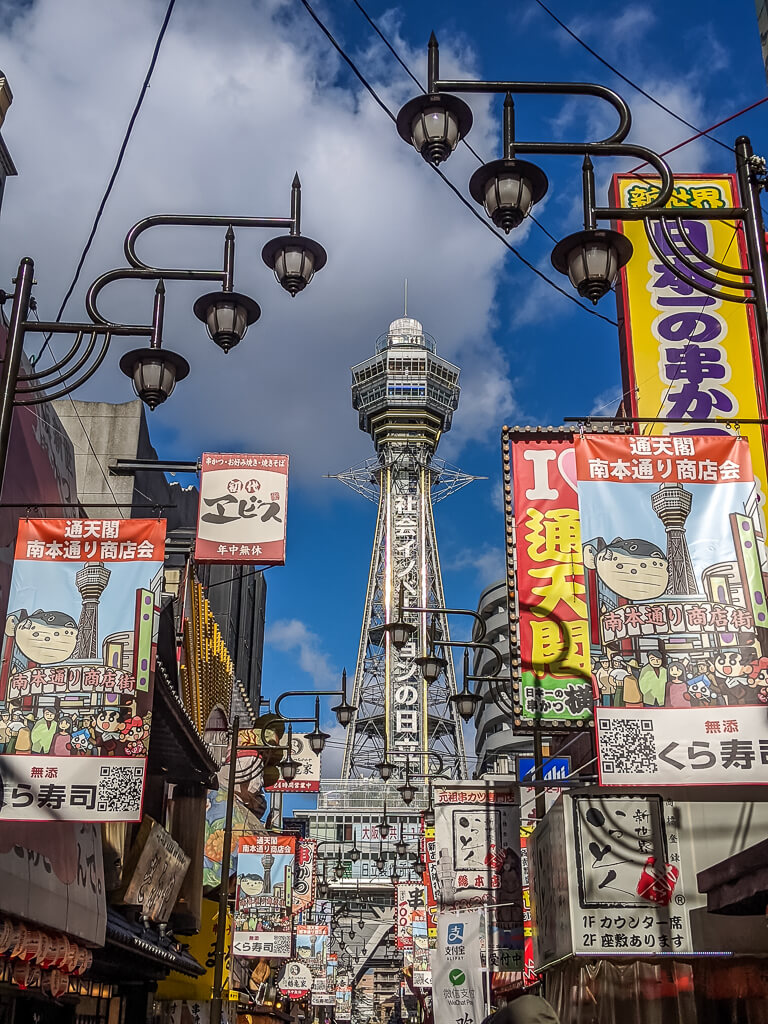
Foodie or not, Dotonbori is your next destination. Blocks of covered streets are dedicated to authentic Osakan cuisine – from Takoyaki to okonomiyaki to ramen stalls and wester-styled cafés. You can spend hours eating here.
Walk off your food baby with kilometers-long Shinsaibashi . This shopping street is nothing you’ve experienced before. Independent boutiques, thrift stores, small eateries, budget and branded buys line the covered walkways. You can shop the newest trends at reasonable prices; maybe even buy an extra suitcase for your purchases.
To round off your day, pamper yourself at Spa World . Alongside themed hot spring pools are deep massage and skin treatments. You deserve some relaxation on your 3 weeks in Japan.
Day 9: Umeda, Shinseki & a River Cruise
If you’re still experiencing shopping fever, wake up with a visit to Umeda. I like to call it the “hub of all hubs” because of how all the train lines pass through the station. Another reason is because it is a mecca of shopping malls. Yodobashi Camera is your go-to for electronics and home goods; EST, Lucua and Umeda station’s underground shopping streets are best for street wear. You may also want to hit up Umeda Sky Building for its gorgeous and unusual garden observatory.
Alternatively, Nipponbashi Denden Town is the retro persona of Osaka. Hunt down geeky merch like limited edition models and posters, or buy cheap gadgets to bring home.
Colorful, neon-striped Shinsekai is just next door so walk over to check out its futuristic vibes. Tsutenkaku Tower , while not modern by any means, was a pop cultural hit back in the 1900s because it captured what a technological future looked like those days.
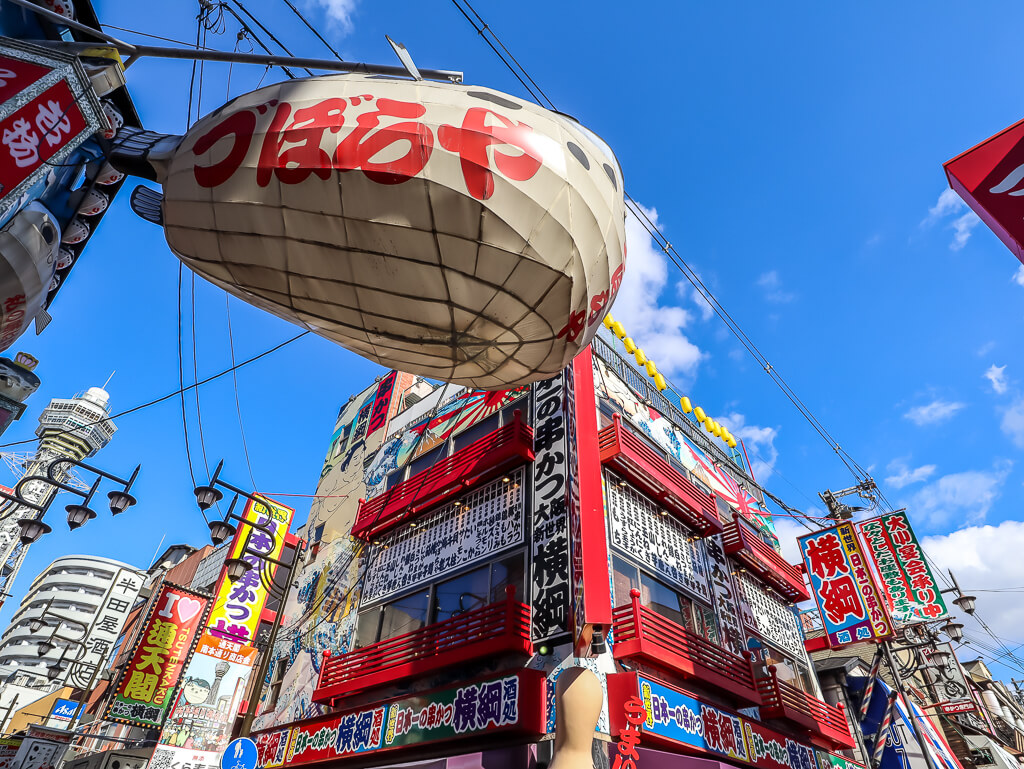
For lunch or an afternoon treat, you’ll want to be at Kuromon Market . This specialty market has been around for generations, composed of narrow walkways lined with stalls. They specialise in traditional sweets, skewers and seafood so you definitely won’t be going hungry! You can also pick up some souvenirs for people back home. There’s some great Japanese food to try here .
Given enough time, make your way to one of Japan’s oldest shrines: Sumiyoshi Taisha . Built in the 3 rd century, it shows off an elegant and unusual architecture – straight roofs, forked finials and bright red everything. Within the estate is the beautifully arched Sorihashi Bridge; it’s the setting of a legend or two.
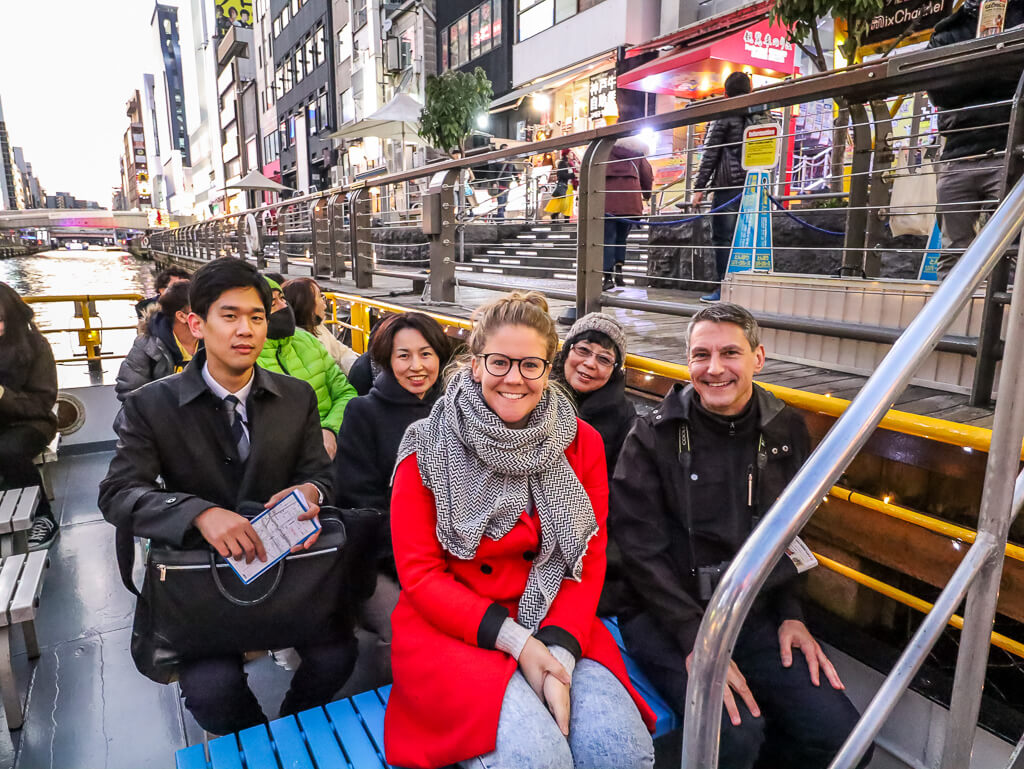
End your day with an Osaka River Cruise . What’s better than a light drink and nibbling on snacks as you drift past brightly illuminated landmarks?
Day 10: Universal Studios and Osaka Aquarium
Universal Studios Japan is awesome!
This full-day itinerary will bring you around rides like Space Mountain and Backdraft to the exciting Harry Potter World . Hogsmeade appears in the flesh so you can buy your wand and a butterbeer to celebrate. Then you’re welcome to head up to Hogwarts for a thrilling Hippogriff ride.
Keep in mind when you’re planning a Japan trip that the new Nintendo World has just opened here too!
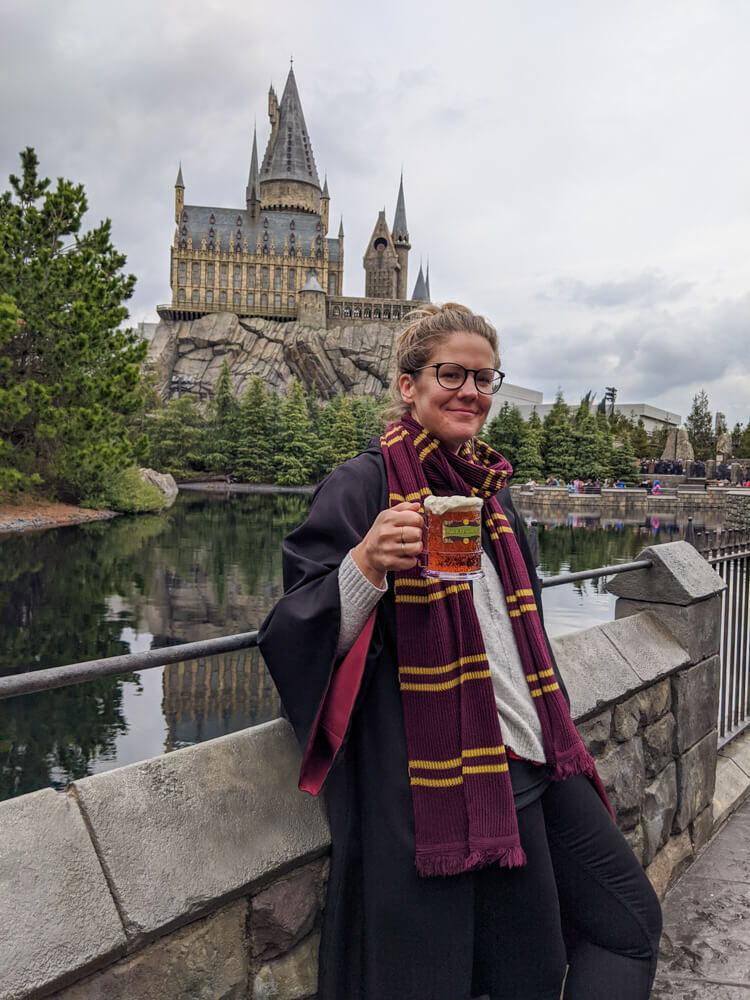
If you finish early, Osaka Aquarium is just a bridge away. Explore more worlds, this time underwater, or take a spin on the Tempozan Giant Ferris Wheel .
You can find out all the other day trips from Osaka in this blog post. And see how to have an amazing 24 hours in Osaka too, if you want it all timed.
Day 11: Visit Kobe
Aside from Tokyo, Osaka is another great base for people who like day trips.
Kyoto, Kobe and Nara are all within train’s reach – in fact, Kobe can be reached in approximately half an hour. Take the Hankyu line to this port city for a fascinating, hilly day of exploration. Some things to see and do on your three weeks in Japan include:
- Climbing up Mount Rokko for both reviews and hilltop restaurants.
- Climbing to the top of Akashi-Kaikyo Bridge.
- Or, admiring panoramic city views from Kobe Port Tower.
- Scouring Kobe Harborland for prime entertainment and shopping.
- Eating out at the historic Chinese hub of Nankin-machi.
- Visiting Kobe Nunobiki Herb Gardens for a dash of nature.
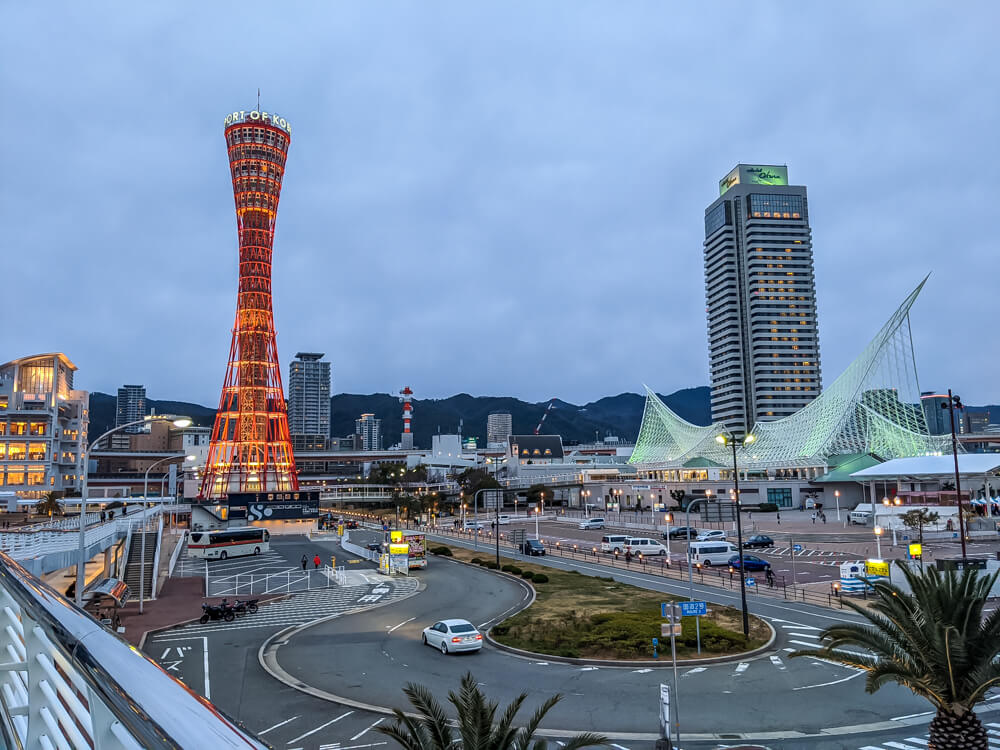
I spent an awesome day in Kobe , and one of the best things I did there was to eat KOBE BEEF at the Kobe Meriken Park Hotel. Honestly, if you have the money, it’s an absolute taste sensation you’ll never be able to replicate.
Just watch this video…
KYOTO: Day 12 – 14
One of the most culturally rich cities in the world, Kyoto is a must on any 3 week itinerary for Japan. You can taste its history (literally – thanks to the multitude of traditional eateries) and spend hours unravelling the stories behind its gorgeous architectures.
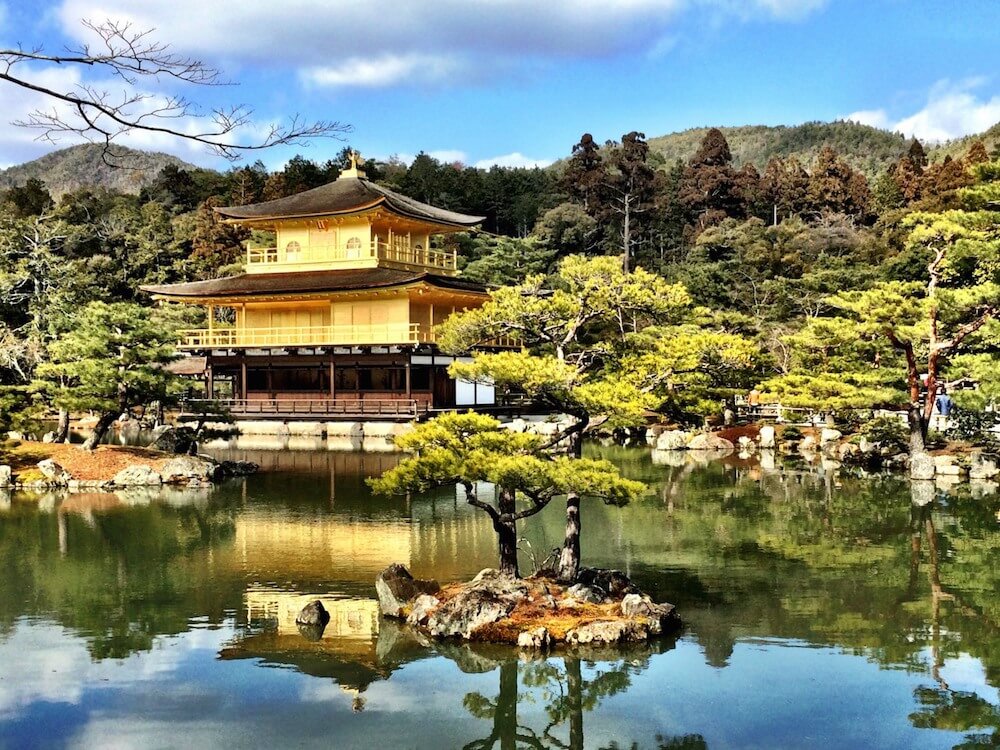
Day 12: Just eat and drink your way round
Arrive in Kyoto via Hanku Express train; it’s less than an hour away from Osaka for your convenience! The Ramen Street above Kyoto JR Station is worth a visit. It features ramen from all corners of Japan, from butter-based broth to rich pork bone soup.
Make Teramachi Shopping Arcade and Nishiki Market your first downtown stops. The former is another covered shopping street with cute small shops and unique animal cafés. A few twists and turns later, you’ll find yourself at the latter – seafood restaurants call in customers while housewives shop for new kitchen tools.
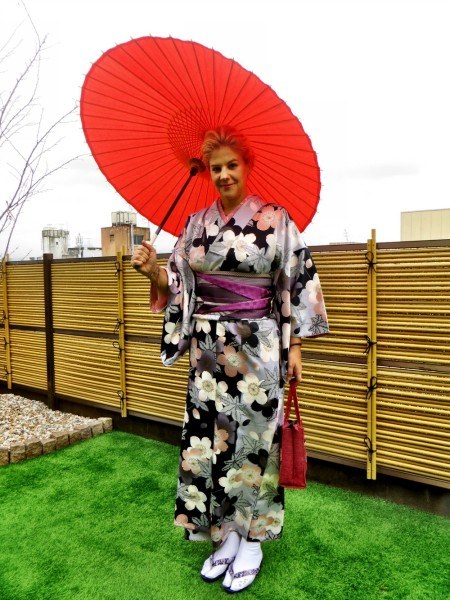
Meander your way towards your first sample of Kyoto tradition at Gion district . Geishas , traditional Japanese performers and entertainers, still live within these cobble-stone streets. Brick and wood make up the shell of traditional restaurants, and a great backdrop for photos. In fact, I actually dressed up as a Geisha while I was there, and walked around. It was fun, but a tad weird by myself. The area is particularly atmospheric during sunset and evening, so make it here in time for dinner.
Day 13: all the Kyoto temples and shrines!
You’re free to visit as many temples and shrines as you can on your day in Kyoto, but I definitely recommend these legendary names:
Kiyomizu-dera Temple for its gentle, uphill trinkets street and elevated pagoda. Pray for love and success while dressed in a kimono for photoshoot purposes!

Kinkakuji , a Buddhist temple known for its gold-leaf covered building and surrounding rock garden.
Ginkakuji , another famous temple that features a serene strolling garden and “silver” pagoda.
Fushimi Inari-taisha Shrine for its fall aesthetics. A long, riveting train of vermillion torii gates trail up into the mountains for breath-taking views.
There are lots of great day trips from Kyoto to consider for your 3 weeks in Japan too.
Day 14: Arashiyama
Set off for Arashiyama , a beautiful space just beyond the borders of central Kyoto. Togetsu-kyo Bridge acts like a portal into this “island”-like neighborhood, complete with its own set of temples. Some must-sees include:
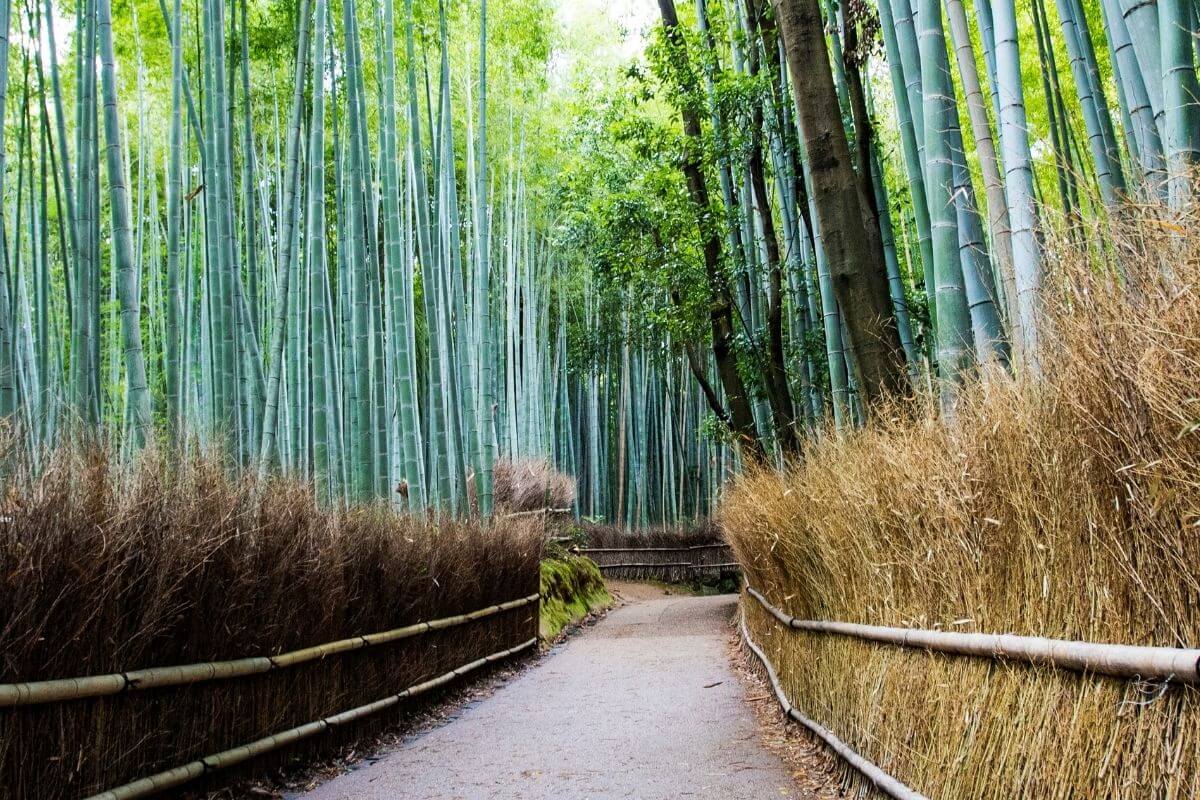
- Bamboo Groove and its people-pulled carts.
- Tenryuji Temple for its dramatic dragon statues.
- Kameyama-koen Park is a great respite away from the crowds.
- Okochi-Sanso Villa for more outstanding mountain views and pleasant tea spot.
- Katsura Rikyu Imperial Villa for its historical worth and natural surroundings.
- Gioji Temple for those who haven’t had enough of temples yet.
Check out these facts about Japan to give you more background and context to your trip. Number 8 is a bit of a shocker, and number 9 actually!
HIROSHIMA & MIYAJIMA: Day 15 – 17
History isn’t all about beauty – sometimes we have to be reminded of the tragedy too when you’re planning a Japan trip. Take a trip to Hiroshima to learn about Japan’s wartime losses. To lift your spirits, follow up with a few hours at Miyajima.
Hiroshima is always a popular choice for anyone visiting Japan for 3 weeks.
Day 15: Hiroshima Peace Museum
Instead of the usual train ride, consider taking a bus into Hiroshima so you get a glimpse of Japan’s green countryside.

Hiroshima Peace Museum & Park is an essential Japan itinerary item, if only so that we pay proper respects for those lost to war. It was built in commemoration of those who died during the bombing of Hiroshima in WWII. While its exhibitions can be unsettling, the museum is an important memorial and an even more important lesson about peace.
For more historical relics, visit the A-bomb Dome .
I recommend taking it slow in the afternoon, perhaps going to a bathhouse and soaking away the grimness of the morning.
Day 16: Miyajima & Momijidani Park
Dedicate a day on your Japan 3 week itinerary to the beauty of tradition after your emotionally gruelling day yesterday! Itsukushima Island , or Miyajima , is home to the vibrant Itsukushima Shrine . Take a ferry over and look for its giant floating torii gate – get your cameras ready. If you’re lucky, you might even witness a traditional Japanese wedding.
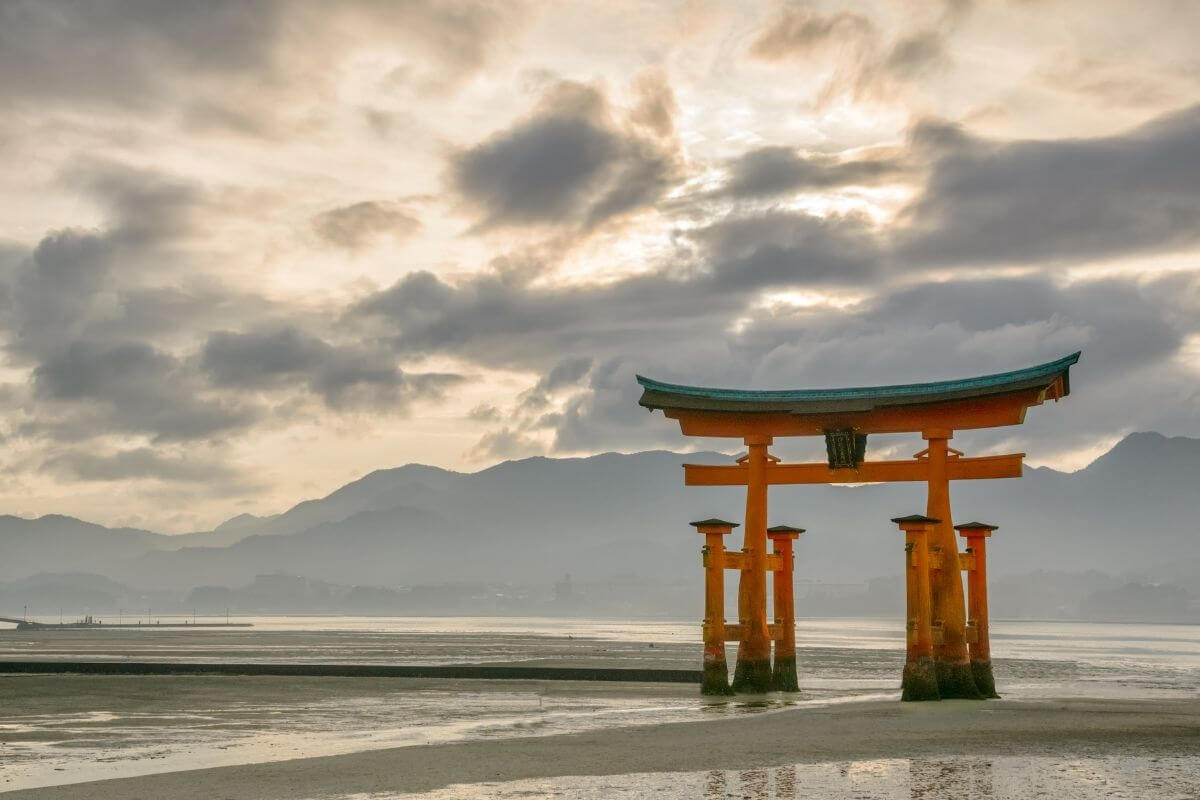
Once you’re done asking for blessings and drawing your fortune, Momijidani Park , which is right below Mount Misen, is another unmissable sight. Over 200 maples cover the valley park, making for a stunning watercolour of fall.
Next, hit up the Mount Misen Walking Trails . This slow, winding walk is best enjoyed at your own pace. There’s no hurry to reach the peak; the views will wait for you. If walking isn’t for you, take the cable car up top.
Day 17: Hiroshima Castle
More history awaits at Hiroshima Castle . Like most Japanese castles, it comes with a defensive moat and citadels around the corners. Explore the quaint estate and its attached museum to learn more about the city.
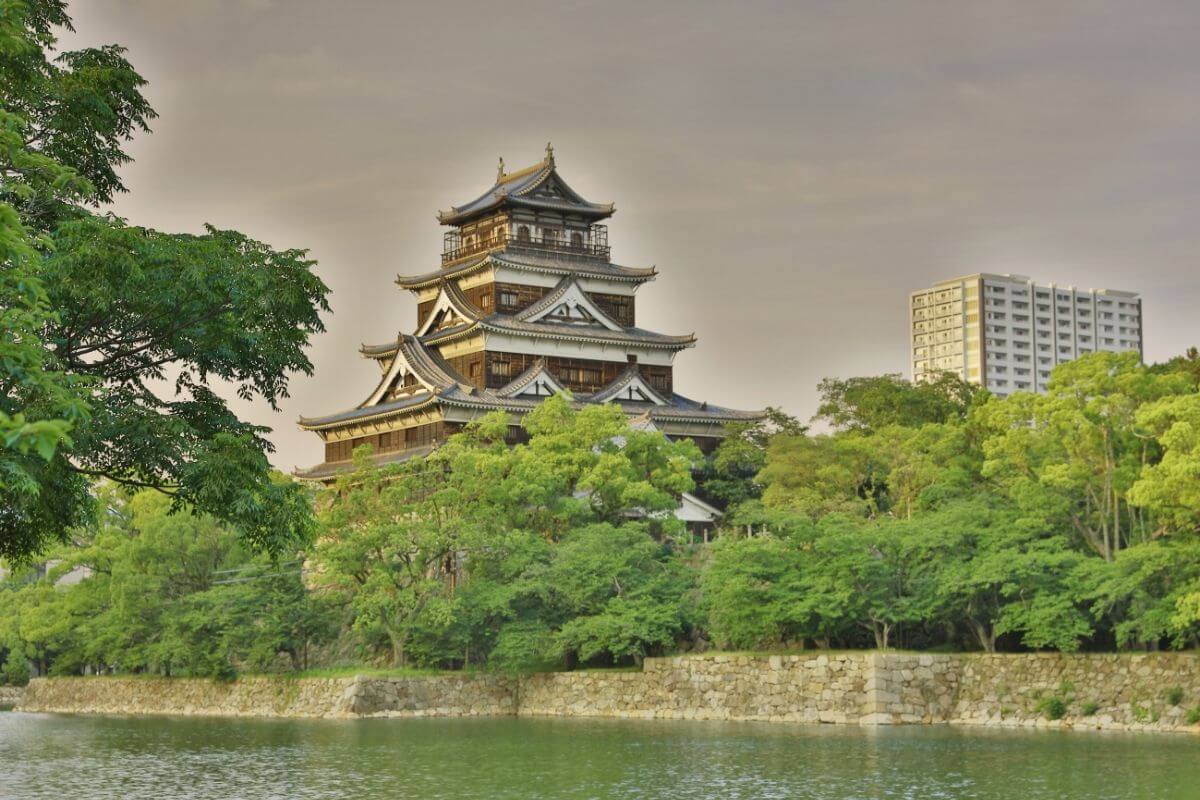
Before you leave Hiroshima, drop by Shukkeien garden for its unique ponds and bridges. There’s a traditional tea room inside so you can sit and appreciate the views. It’s especially beautiful during cherry blossom period.
If you have time to spare, quickly scour through the adjacent Art Museum .
Set off for Kyushu to complete your Japan 3 week itinerary!
KYUSHU: Day 18 – 21
Like Kanazawa, Kyushu is a free-for-all. Located at the southwestern-most part of Japan’s main islands, it’s known for its natural attractions and historical cities. In fact, you’ll find active volcanoes, natural hot springs, interesting museums and cozy towns.
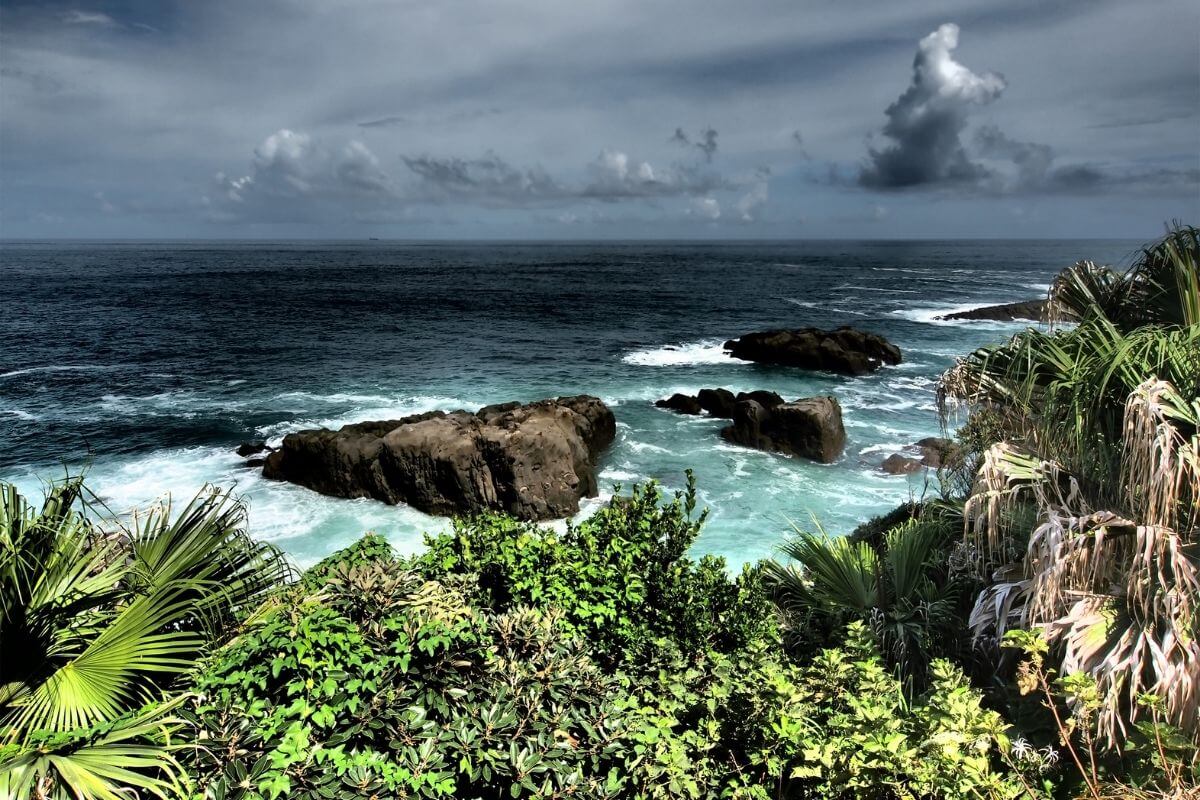
Fukuoka is the main city of Kyushu, home to one of the largest shopping complexes in Japan: Canal City . Had enough of shopping? I suggest visiting the spiritual and quiet spaces like Dazaifu Tenmangu , Kushida Shrine and waterside Ohori Park . You can also take a ferry to Nokonoshima Island , where its sprawling park takes two to three hours to cover!
Hike up Sakurajima or Mount Aso , both active volcanoes with stunning terrain. If you want an active adventure for your 3 weeks in Japan, then give this a go.
Beppu is a coveted hot springs town – you can bask in hot springs from dawn to dusk.
For something unexpected, Huis Ten Bosch is a theme park which replicates a Dutch town. Definitely not something you’d expect to see!
To round off the list with something mystical, I present Kinrin Lake – shiver through the morning mists as you stroll around its perimeter.
More places to visit in Japan
Hope you’ve enjoyed this 3 week itinerary for Japan. If you have even more time in Japan, or want to swap out some of the fun Japan activities I’ve suggested, then here are a few more ideas for you.
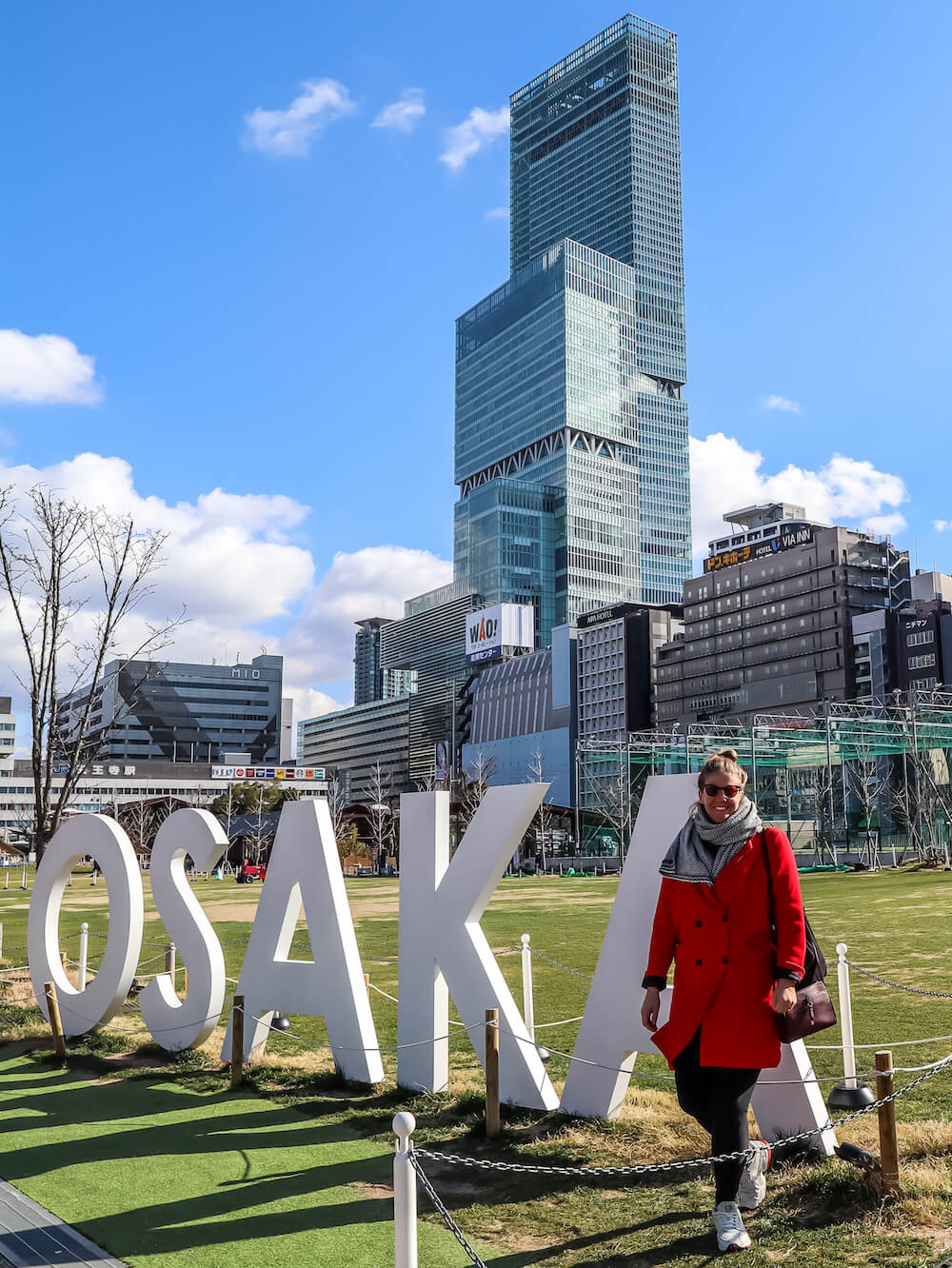
How about staying at a temple in Koyasan ? Or the Rainbow Park Summit in Fukui is one of the most impressive things I’ve ever seen in Japan. There are lots of fun things to do in Shiga , and plenty of activities around Lake Biwa too.
Seriously, you can have a lot of fun in Japan in 3 weeks, and I hope you do!
PIN THIS 3 WEEK ITINERARY for JAPAN FOR LATER
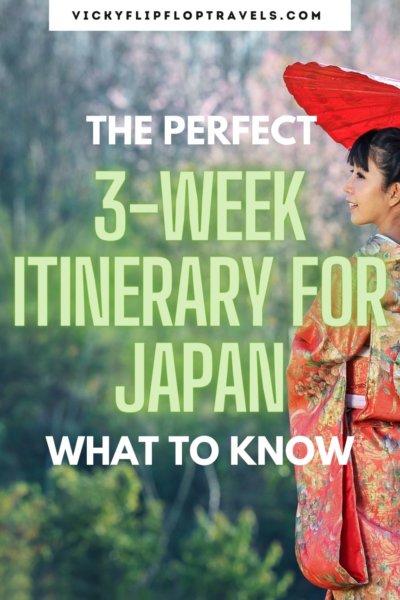
Related Posts:
- 21 Best Japanese Souvenirs to Celebrate Your Trip
- 9 Absolute Best Day Trips from Kyoto
- The Cheapest Way to Travel from Tokyo to Osaka
- An Awesome Kobe Day Trip Itinerary For You
- Your Ultimate 7-Day Tokyo Itinerary for 2024
- 13 Best Day Trips from Osaka
Hi, I'm Vicky! I wrote this. You can find me on all the social media @VickyFlipFlop. I love a bit of adventure, will try anything once, and have a strong passion for the local food and drink, whatever it may be. I'm here to help inspire you to travel to places a little out of your comfort zone, or at least to explore the usual destinations in a different way. Stay, have a look around, and if you have any questions – let me know below.
Leave a Reply Cancel reply
Your email address will not be published. Required fields are marked *
Sign me up for the newsletter!
- Skip to primary navigation
- Skip to main content
- Skip to primary sidebar

Destinations
Experiences.
- Photography
Plan Your Trip
Spend three weeks in japan.
This is true for both newbie Japan travelers, and for seasoned veterans. My first trip to Japan saw me enjoy an enticing overview of the country for 21 days; my latest three-week adventure, less than a year ago, afforded me a comprehensive cross section of Japan’s amazing autumn .
Over the next several paragraphs—I’ve recently re-published this page, and cut it down to make it more digestible—you’ll learn everything you need to plan your own 3 week Japan adventure. So without further ado, let’s get down to the details, shall we?

Practical Matters
When to visit japan.
Conventional wisdom would dictate that Japan is best during its most colorful periods: The aforementioned autumn, which peaks between mid-November and early December, and cherry blossom season , which takes place during the last week of March and the first week of April in most of the country.
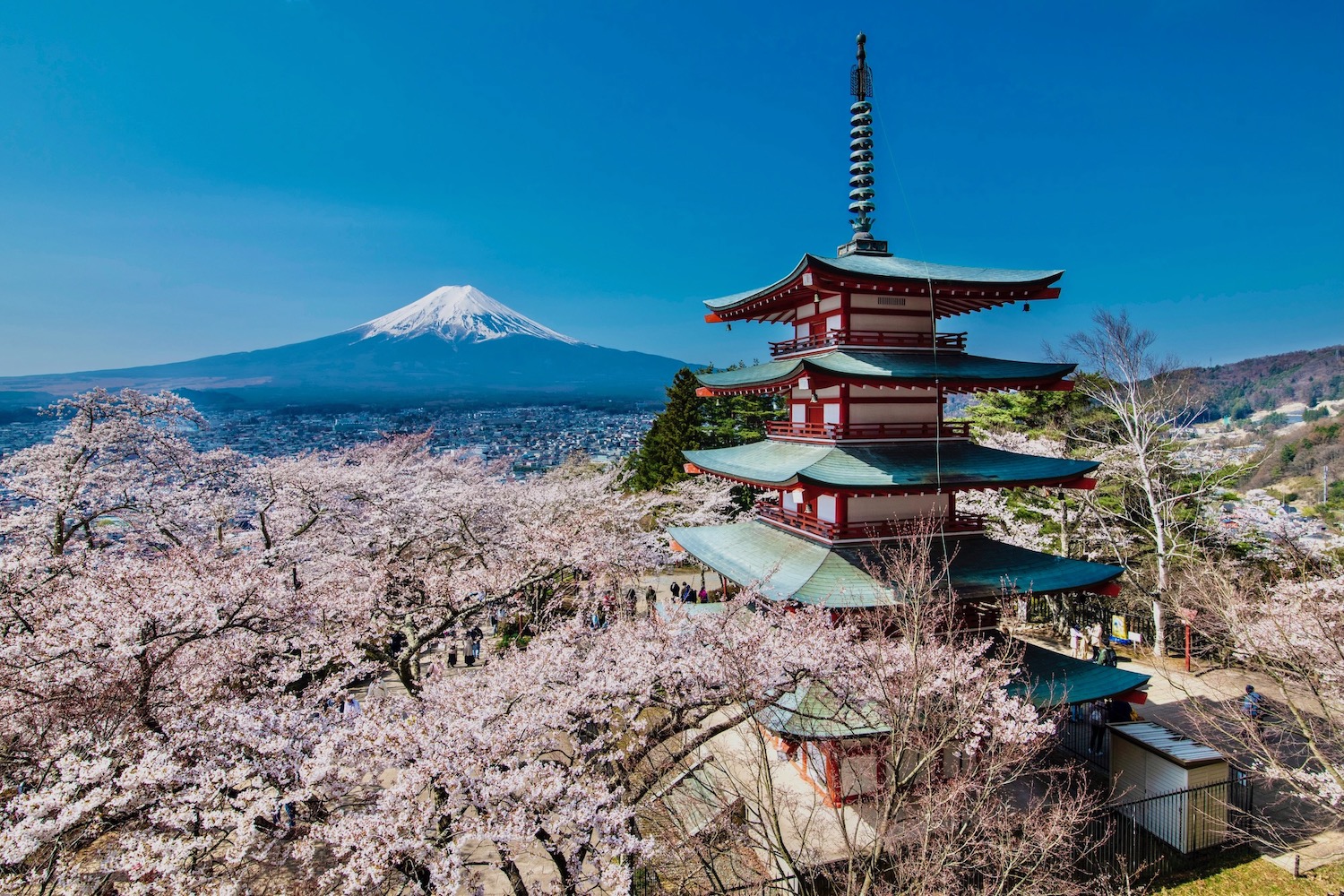
While I love visiting Japan during these times, they’re certainly not your only option. For example, even if you’re not a skier, Japan’s winter is a fabulous time to go , particularly in snowy northern regions like Tohoku and the island of Hokkaido. Likewise, the Japanese summer is a great time to visit, particularly if you can choose a destination (the Japanese Alps, for instance) that avoids its trademark heat and humidity.
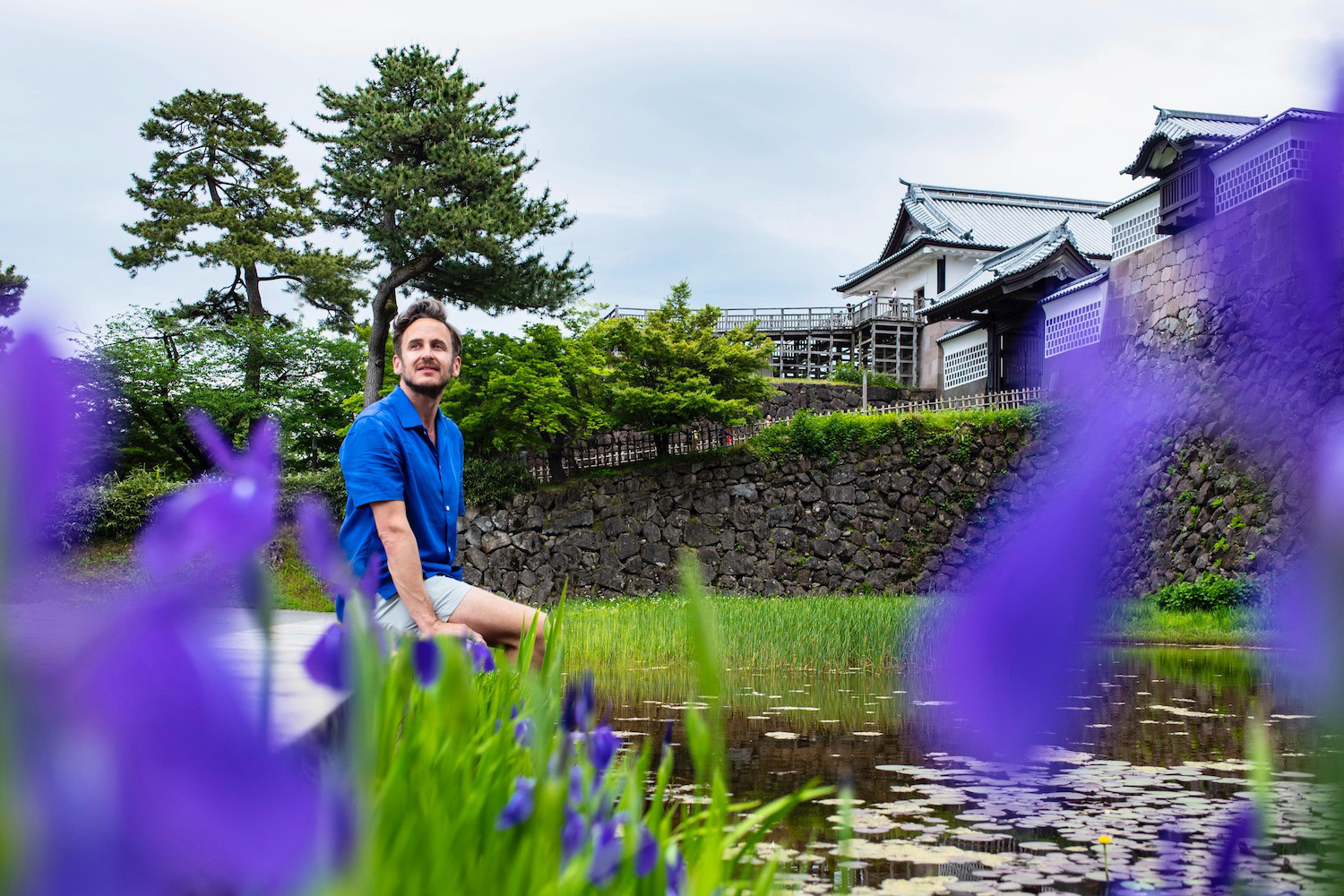
All in all, Japan is a 365-day destination. It’s all about planning a trip that plays to the strengths of whenever you happen to be going.
Where to stay in Japan
Choosing awesome places to stay is key if you want to make sure that 3 weeks Japan doesn’t knock the wind out of you. This doesn’t mean you have to splurge on five-star accommodations, but it does mean you should choose clean, comfortable and centrally-located places (I call this my “three Cs” of travel accommodation) that are also authentic and have character, whenever possible. Another tip? Rather than hopping to a new place every night, try to spend a minimum of two days in each city or town so you can start to settle into your trip.
- In Tokyo , I love staying in the convenient, chic Tokyo Station Hotel or the stylish Hotel the Celestine Ginza if money is no object. If it is, business hotels like Asakusa’s The Kanzashi and Hotel Gracery Shinjuku (aka the Godzilla Hotel 🦖) will get the job done.
- Kyoto is famous for ryokan , but you don’t have to sleep on a traditional futon to have an unforgettable stay. To be sure, as much as I love properties such as Seikoro Ryokan and Izuyasu , so too do I love modern hotels like Dhawa Yura Kyoto and Rinn Gion Shirakawa , which incorporate ancient elements into state-of-the-art stays.
- Headed to Hiroshima ? I like to go utilitarian, be that at the four-star Hotel Granvia or the simpler Sotetsu Fresa Inn .
- Tokyu Stay , which operates properties throughout Japan, is one of my favorite mid-range Japanese hotel brand. Whether you stay at their properties in Tokyo , Kyoto, Fukuoka , Takayama or Sapporo , you’ll enjoy conveniences like in-room laundry at an unbelievable price.
- While Airbnb in Japan tends to leave something to be desired, you can still enjoy apartment-style accommodation throughout the country. I love the Mimaru brand, which features suites for couples and families in Tokyo , Kyoto and beyond.
- My favorite onsen-ryokan in Japan is, without a doubt, Gunma prefecture’s Takaragawa Onsen Ousenkaku .
Money, costs and communication
If you’re reading this in 2023, when I last updated it, chances are that your 3 weeks in Japan cost will be much less than you expect. At the moment, the Japanese yen is the weakest it’s been in decades, at around 140 to the US dollar. Even excepting this, most travel expenditures in Japan are surprisingly affordable. You can get a serviceable hotel room in many cities for under 200 USD per night; all but the fanciest meals can be had for $20-30 per person, or even less. While Japan has traditionally been a cash-centric country, this is rapidly changing, whether you use a credit card or ApplePay (particularly when pairing this with PASMO or Suica, the country’s two main rapid transit cards).
The good news? eSIM technology has now made its way to Japan. The better news? If you buy your Japan eSIM online today , you can be connected the moment you land in Tokyo!
Communication-wise, Japan has become a more English-friendly country over the years, but having some basic Japanese travel phrases at your disposal is still a good idea. This is in a literal sense. Figuratively, it’s easier than ever to stay connected in Japan, whether due to a plentiful Wifi availability, or keeping in mind that it’s easier than ever to buy a Japanese SIM card .
How to get around in Japan
Japan has one of the world’s most modern railway networks, connected not only by state-of-the-art Shinkansen bullet trains, but by a variety of efficient limited express and functional local trains, as well as subway, tram and bus networks within cities, many of which are actually walkable. Beyond this, it’s easy and affordable to fly domestically in Japan, or to get around using ferries or even renting a car when necessary.
Where to Go With 3 Weeks in Japan
Greater tokyo.
I usually recommend my clients to kick off three weeks in Japan with 2-3 nights in Tokyo , keeping in mind that you’ll likely need to return there for at least a night at the end of your trip. This includes at least two full days in central Tokyo, exploring districts like historical Asakusa , glitzy Ginza , quirky Akihabara , exhilarating Shinjuku and larger-than-life Shibuya .
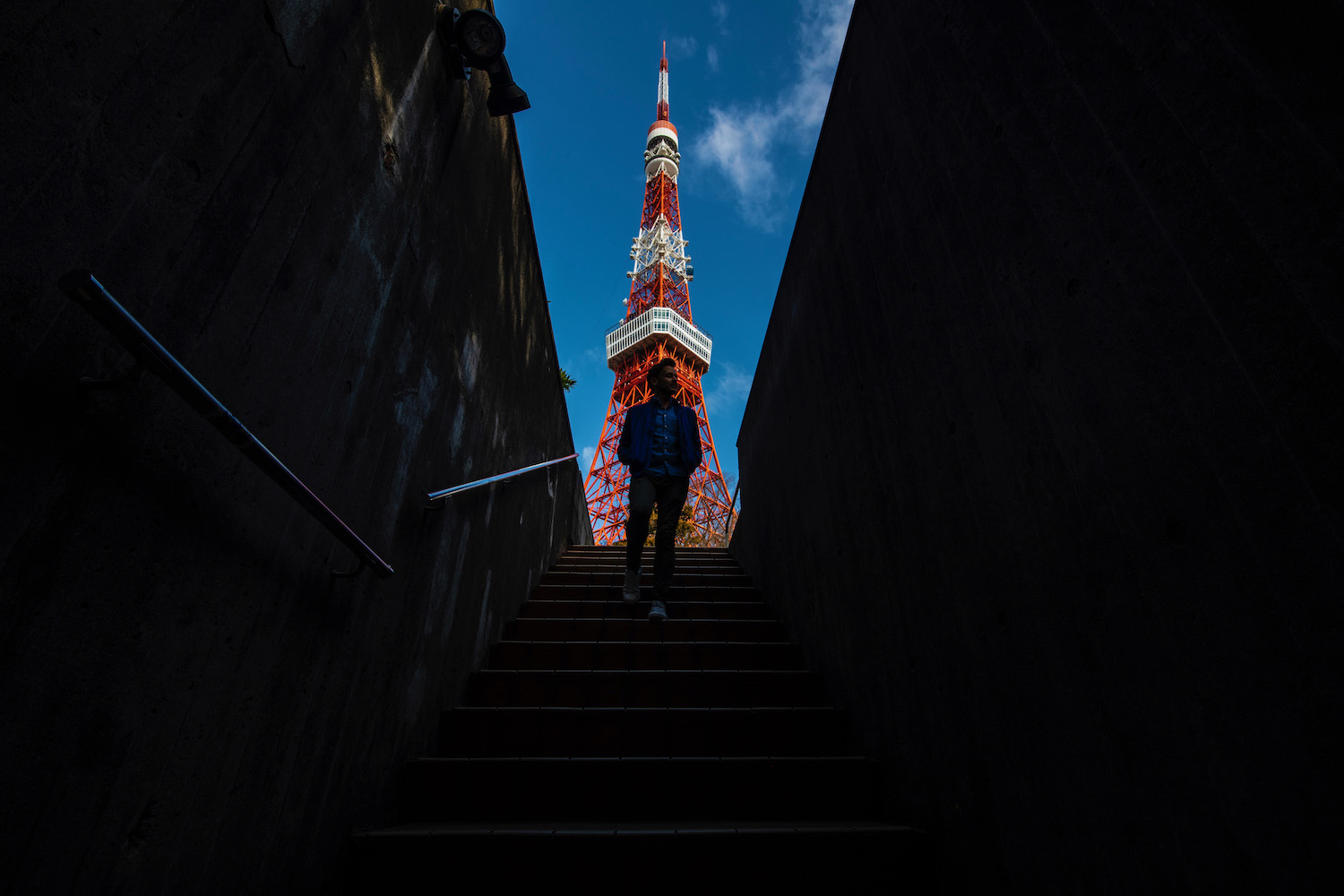
Tokyo is also a fantastic base for taking day trips in the larger Kanto region. Some of my favorites include the ancient city of Nikko , centered around the forested Tosho-gu shrine, and coastal Kamakura , which was once Japan’s capital. You can also make a day trip to the Fuji Five Lakes region at the base of Mt. Fuji , even if spending a night or two there is more ideal.
Kyoto, Osaka and the Kansai region
Japan’s ancient capital, Kyoto , is an essential part of any 3 weeks in Japan itinerary. So too is its underrated second city of Osaka , which in my opinion is the best place in the country for street food. From these destinations—the core ones of the Kansai region—a wide array of day trips exist, including the deer-filled city of Nara , the tea-producing hub of Uji , the castle town of Himeji and Kobe , which is famous for its beef (among other things).
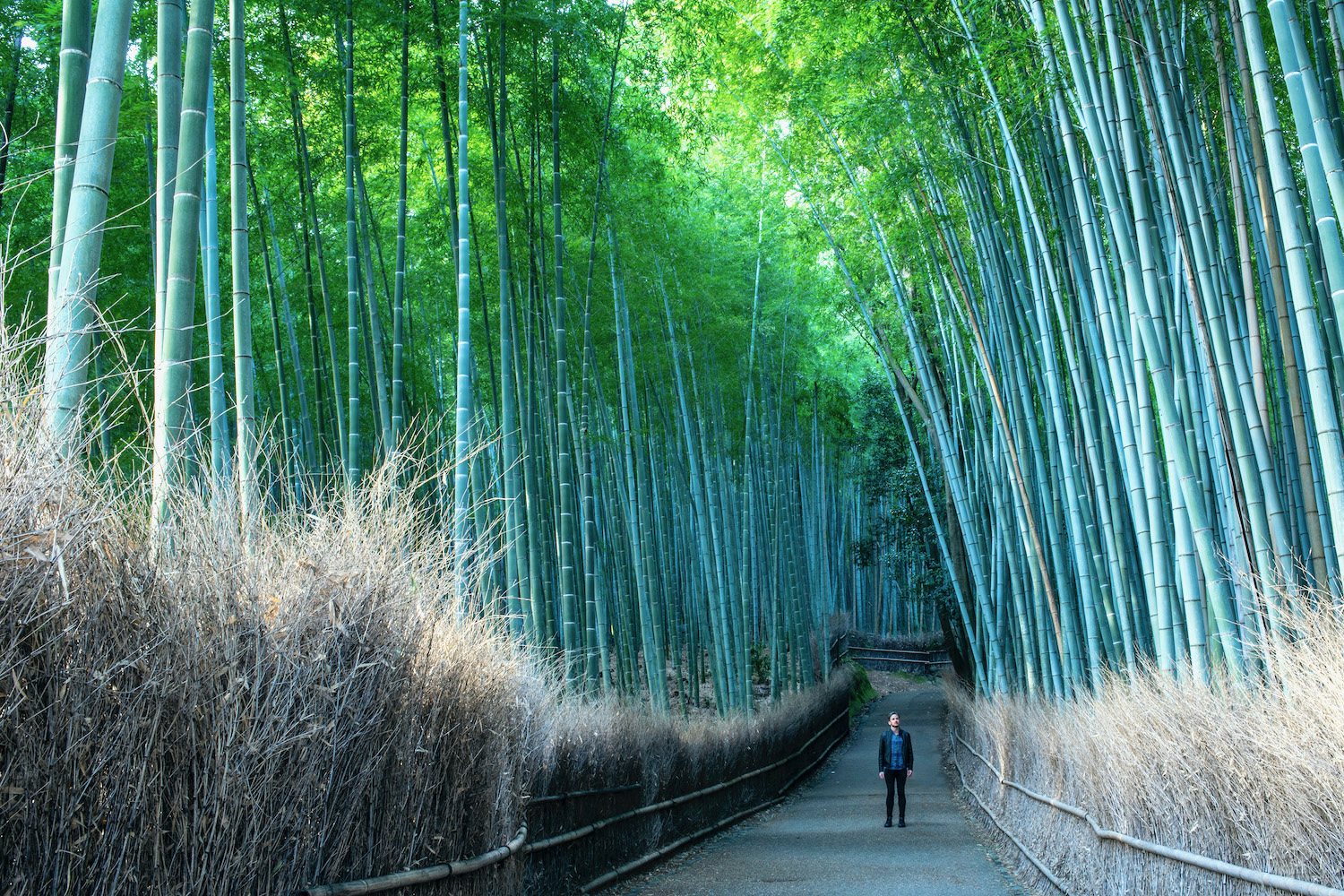
Kansai is great for getting off the beaten path as well. Head south to Wakayama and Mie prefectures, whether you spend a night in a Buddhist temple atop Wakayama’s Mt. Koya , or have lunch with ama pearl divers in Mie’s Toba . Head eastward from Kyoto to Lake Biwa or northward to Kyotango , aka “Kyoto by the Sea.”
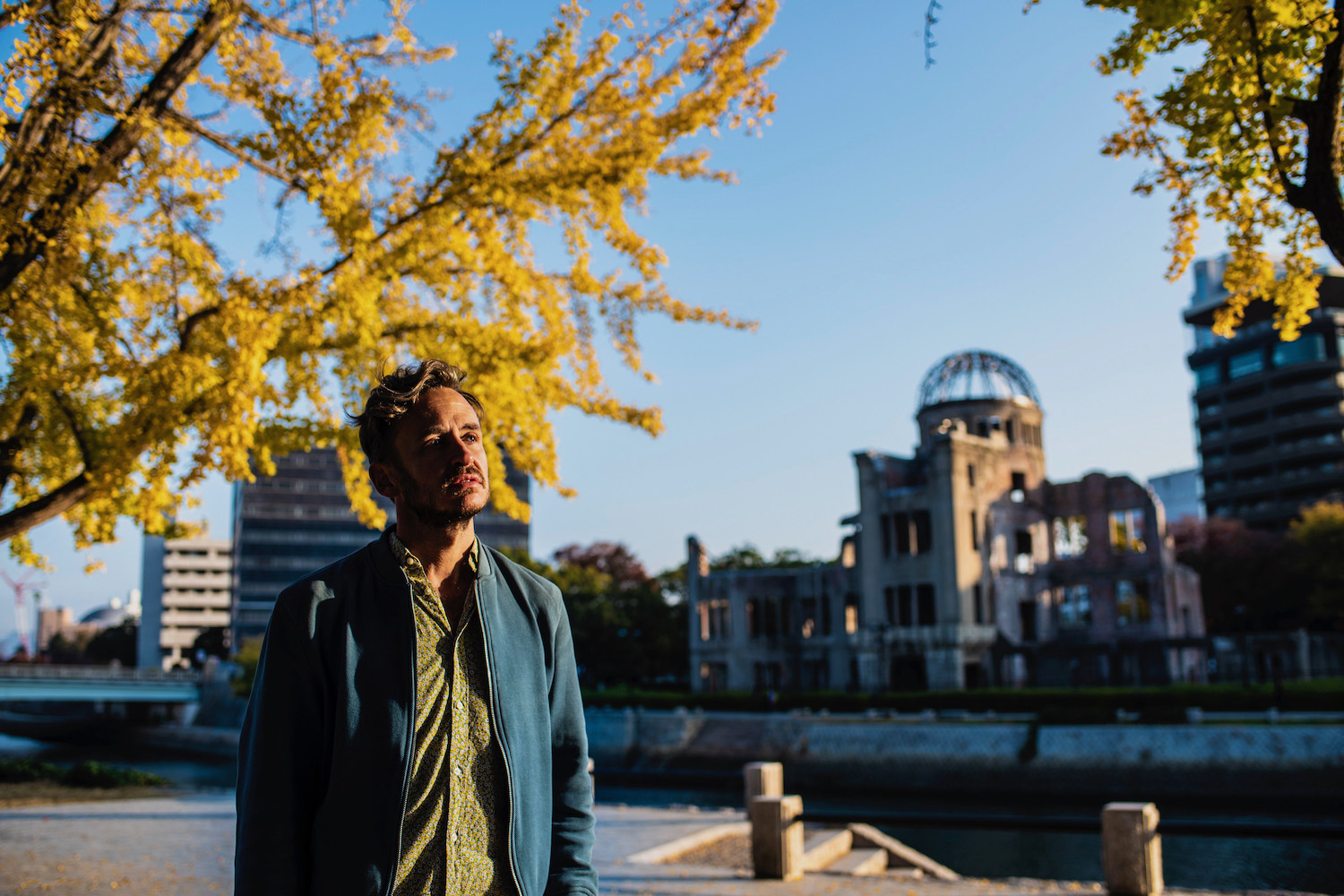
Named for the Seto Island Sea that sits just off the shore of cities like Hiroshima and Okayama , this region of southwestern Japan is far richer than an atomic bomb museum. Many popular day trips are islands, be those Okunoshima (Rabbit Island) and Miyajima (home to the famous Itsukushima Shrine ) from Hiroshima , or the Naoshima “Art Island” from Okayama.
Hokuriku and the Japanese Alps

Once you’ve finished traveling Japan’s “Golden Route” (aka Tokyo, Kyoto/Osaka and Hiroshima), you can add more unique destinations to you 3 week Japan itinerary. One option would be to return to Tokyo the “back way” from western Japan—namely, by riding a Thunderbird Limited Express train from Osaka or Kyoto to Kanazawa . This underrated city is not only home to Kenroku-en , one of Japan’s “three great gardens,” but is a gateway to the Japanese Alps , as well as to destinations like the Noto Peninsula , the scenic prefectures of Fukui and Toyama and mountain towns like Shirakawa-go and Takayama .
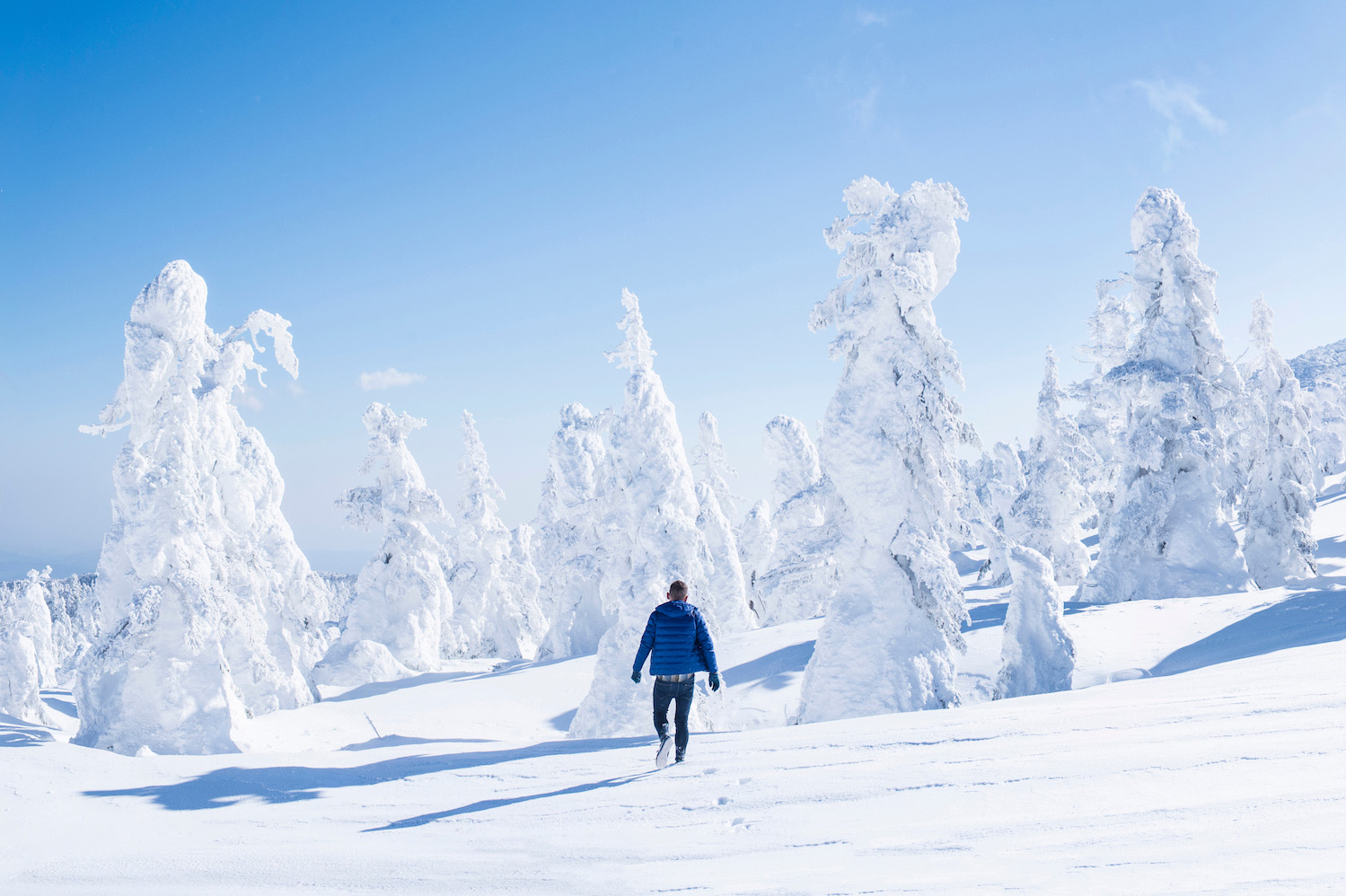
Another option would be to head back to Tokyo, but to bypass the capital via a northbound bullet train. Whether you make your way to major cities like Sendai , Morioka and Aomori , or to more rural prefectures like Yamagata and Akita , the Tohoku region is one of Japan’s sweet spots. It combines the wild, northern scenery of Hokkaido (more on that place in a second) with ancient Japanese culture, be that the Samurai village of Kakunodate , or the haunting mountain temple of Yamadera .
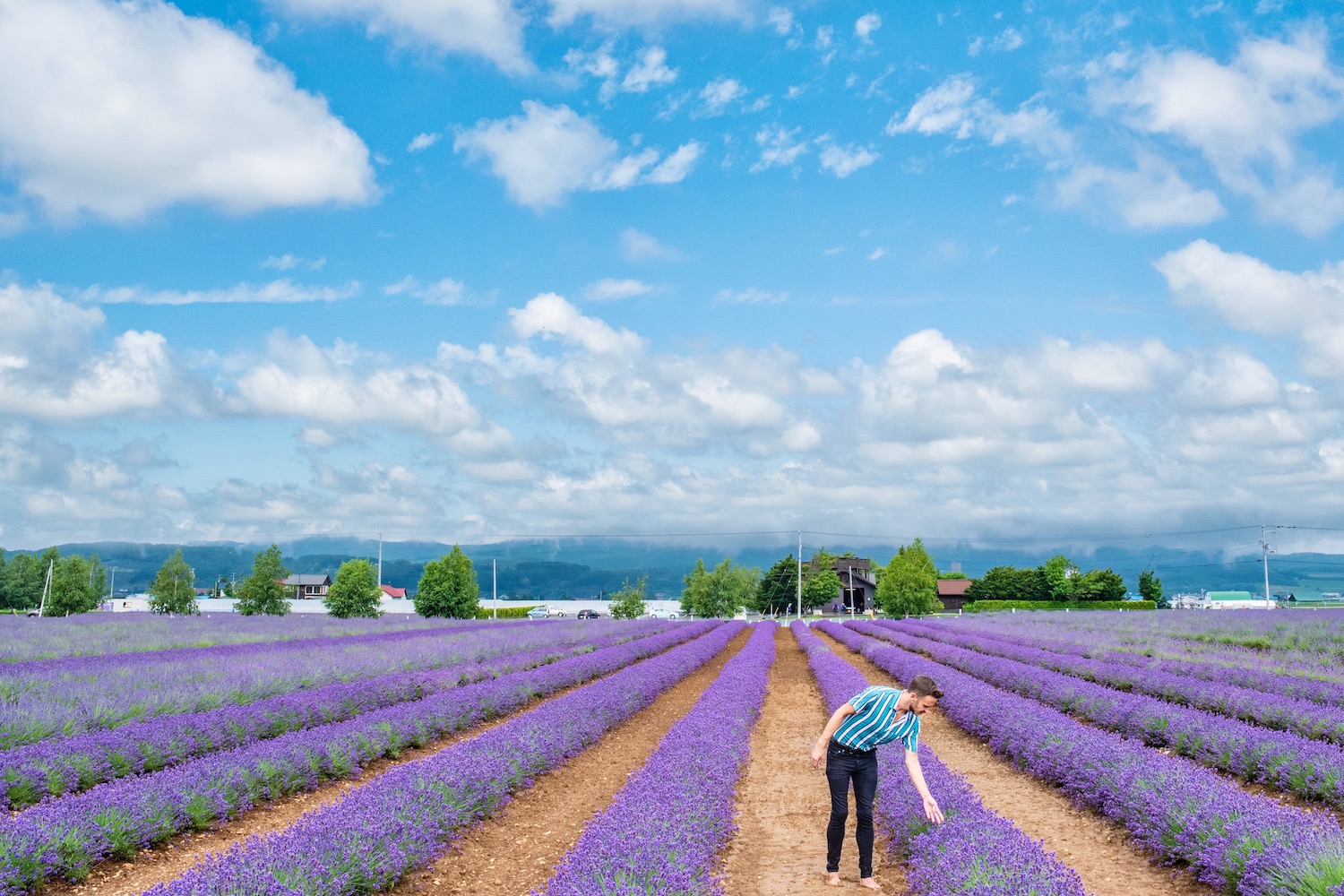
Speaking of Hokkaido , Japan’s northernmost island is also its wildest one. For some, the city of Sapporo and its surroundings (historic Otaru and the ski resort of Niseko ) are as far in as they need to dig. Others will head all the way east, be it to cities like Kushiro and Abashiri (as well as nearby lakes like Akan and Kussharo ) during the frozen winter , or to the lavender fields of Furano or the castaway Shiretoko Peninsula during the summer. The southernmost city of Hakodate , meanwhile, is fantastic all year round.

Yet another option with three weeks in Japan? Travel southwestward from Hiroshima to Hakata , the principal Shinkansen station of Kyushu island. Explore the surrounding foodie hub of Fukuoka , or the rest of Kyushu’s interesting prefectures: Southwestern Nagasaki boasts history and harbors; Oita ‘s Beppu city is a hub for hot springs; Kumamoto ‘s Mt. Aso is a hiker’s paradise; and Kagoshima (aka where Japan ends) is like a microcosm of Kyushu, all with volcanic Sakurajima rising above it.
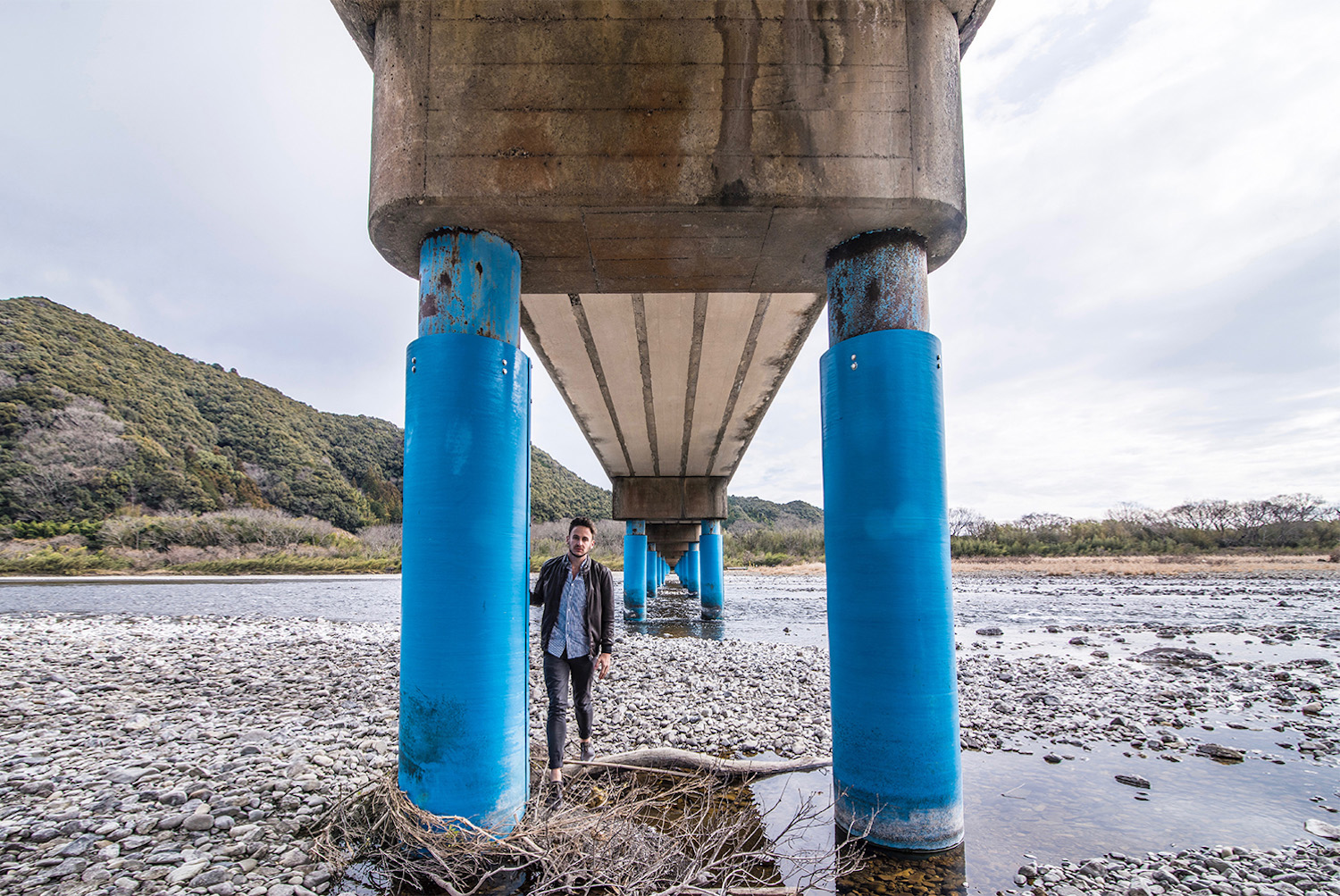
When it comes to your Japan itinerary, 3 weeks is also enough to get an introduction to Shikoku , which is connected to Okayama via train and Osaka by bus. The smallest of Japan’s main islands, Shikoku is divided into four prefectures: Ehime, which is home to the large city of Matsuyama and the Dogo Onsen hot spring; Kagawa , where you find Takamatsu , as well as lush Ritsurin Garden and haunting Kotohira-gu shrine; Tokushima and its awa-odori dance tradition; and Kochi , where you can explore castles by day and tear into succulent, seared katsuo-no-tataki at night.
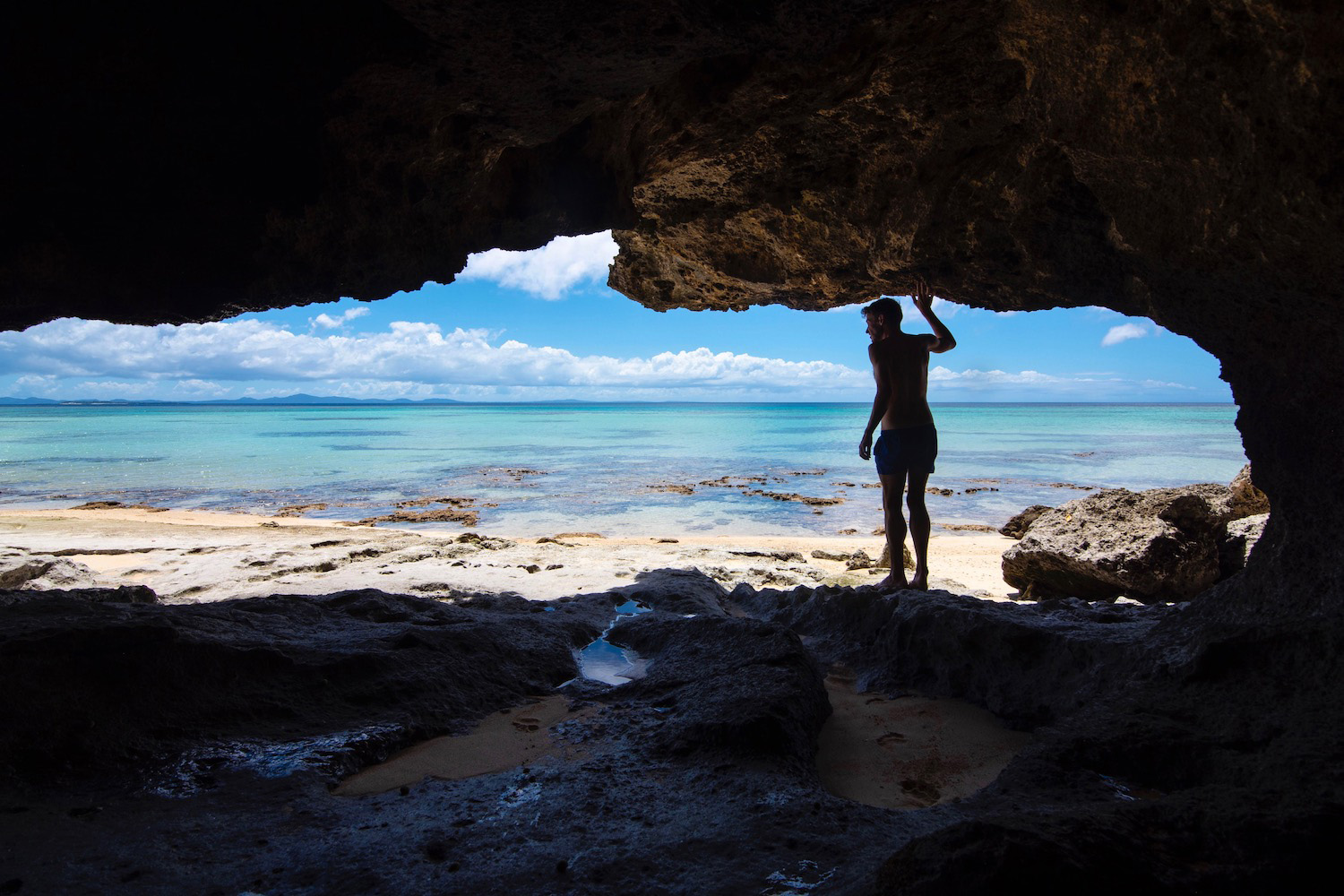
If you want to hit the beach during your Japan 3 week itinerary, cap it off by flying from any major Japanese city to Okinawa . The main island of Japan’s sub-tropical archipelago, Okinawa allows you to access awesome islands like Ie and Tokashiki on day trips, and to go by ferry for longer excursions to sub-archipelagoes like Ishigaki and Miyako-jima . Okinawa is home to some of the most beautiful beaches in the world—I have a feeling they’ll impress you as much as they impressed me.
Japan off the beaten path

Japan’s tourist trail is long and eclectic, but so too is the country’s beaten path. Extend your trip northward from Hiroshima to the San’in region, or head northward and eastward from Kanazawa to Niigata and scenic Sado Island . Alternatively, dig deeper into quasi-mainstream destinations like Kyushu (take a ferry to Yakushima island) or Sapporo, from which Hokkaido’s “wild east” is just a few hours away by train.
Is 3 Weeks Enough Time in Japan?
As I alluded to earlier in this post, three weeks hits the sweet spot for most travelers. It’s long enough that you can explore Japan’s tourist trail and get off its beaten path, but short enough that you don’t leave feeling exhausted (or being broke!). It invites you to come back to Japan—whether for three weeks, or a shorter time; you’ll probably return on multiple occasions!—and leaves you experienced enough that doing so will be much easier the second time around.
With this being said, if you want to plan longer than a 3 week itinerary, Japan is perfect for that, too. Extending your trip to span a month in Japan unlocks even more possibilities, to say nothing of what 2 months in Japan can empower you to do. On the other end, even if you’ve only got a couple of weeks to spare, you can still plan a rich, fulfilling trip to Japan .
Other FAQ About Visiting Japan for 3 Weeks
How much does 3 weeks in japan cost.
How much does 3 weeks in Japan cost? Assuming a minimum cost of 100 USD (¥14,000) per person per day, the least you can expect to spend for a Japan 3 week itinerary is $2,100 (¥294,000), which does not include the price of your flights to and from Japan. Keep in mind that this cost can quickly balloon if you’re staying in luxurious hotels and ryokan, or if you indulge in more than the occasional Michelin-starred kaiseki dinner.
Should I spend 2 or 3 weeks in Japan?
If you have three weeks to devote to travel in Japan, spending longer is always a better idea. With three weeks, you can spend two weeks on Japan’s tourist trail (Tokyo→Mt. Fuji→Kyoto/Osaka→Hiroshima and back) and an entire week going somewhere off the beaten path, be that to secondary islands like Kyushu, Shikoku or Hokkaido, or interesting regions such as Hokuriku, San’in or Tohoku.
How long should I visit Japan for the first time?
As long as you can! Japan is an endless well of discovery and revelation, and while the sense of newness can endure for years or even decades, it’s never as acute as it is during your first trip. Try to spend a minimum of 2-3 weeks in Japan on your first trip so that you can enjoy as wide an array as possible of experiences when you’re still completely vulnerable to the country’s charms and eccentricity.
The Bottom Line
3 weeks in Japan is enough for an “end-all, be-all” trip, but it works much better as an appetizer for years or even decades of returning to the country. Japan is much bigger than it looks on the map—and it’s significantly more diverse than its ethnic homogeneity would suggest. For first-timers, a three week trip is an invitation to mix Japan’s tourist trail with one or two destinations off the beaten path. If you’re coming back to Japan for three weeks, meanwhile, you can dig deep. Immerse yourself in one of the country’s colorful seasons, or venture where few other foreign tourists do. No matter how long you stay, make sure your next Japan trip is one for the record books— hire me to plan it!

Subscribe to email updates!
Words, images and design ©2009-2024 Robert Schrader, All rights reserved. Read Privacy Policy or view sitemap .
- Accessible Itineraries
Subscribe to our mailing list
Please select all the ways you would like to hear from Travel Breathe Repeat:
You can unsubscribe at any time by clicking the link in the footer of our emails. For information about our privacy practices, please visit our website.
We use Mailchimp as our marketing platform. By clicking below to subscribe, you acknowledge that your information will be transferred to Mailchimp for processing. Learn more about Mailchimp's privacy practices here.

- Living with LAM
- Destinations
- Accessible travel
3 week Japan itinerary
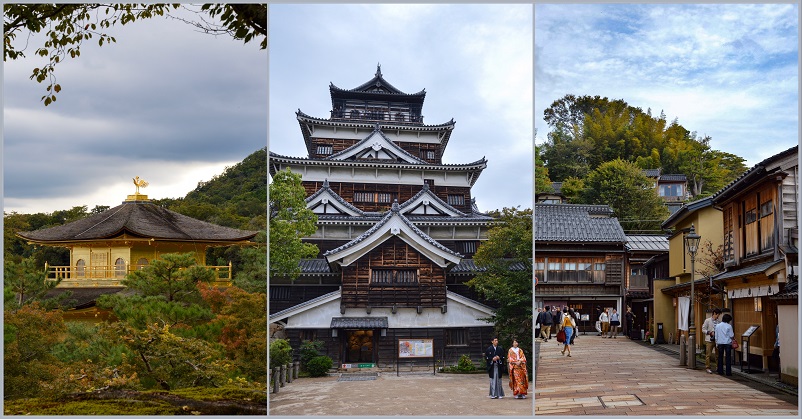
Last Updated on 5th February 2020 by Sarah and Justin
We have visited Japan 3 times on short, medium, and long trips. And we would go back any time for any length of time. Japan is culturally interesting, physically beautiful, and absolutely delicious. It is truly an incredible place to visit. If you have the time, we recommend a 3 week Japan itinerary and we put one together to help you see the best of what the country has to offer.
3 weeks in Japan itinerary
- Days 1-4: Tokyo (including day trip to Kamakura)
- Days 5-7: Kanazawa
- Days 8-11: Kyoto (including day trip to Nara)
- Days 12-14: Osaka (including day trip to Himeji)
- Days 15-17: Hiroshima (including day trip to Miyajima)
- Days 18-19: Fukuoka
- Days 20-21: Tokyo (and fly home)
The core itinerary assumes you’ll be flying in and out of Tokyo, since the city’s two airports offer the most international flight options. However we also provide a few alternative ideas if you want to leave Japan from a different city.
Travelers from more than 60 countries can visit Japan as a tourist for 90 days (and therefore undertake this Japan 3 week itinerary) visa-free. You can check your specific country’s visa requirements on the Ministry of Foreign Affairs website .
Transportation
If you’re following this itinerary, we recommend buying a JR Pass. See below for the calculations showing why a JR Pass is worth it.
We also recommend that you buy an electronic local transportation card to help make your local transportation within cities easier. If you do fly into a Tokyo airport, you can buy a PASMO card when you arrive. Though there are different cards throughout the country, they can all be used everywhere. If you’re flying back out of Tokyo you can return it for a refund of both your remaining balance and your deposit. If you fly out of a different city, you may not be able to, so it’s worth researching in advance.
Is JR Pass worth it?
Short answer: yes!
We plugged the above itinerary, including recommended day trips, into the Japan-Guide JR Pass calculator (the easiest and quickest way to see if a JR Pass is worth it). It shows that yes, a 21-day JR Pass is absolutely worth getting for this 3 week itinerary. Here are the details of those calculations.
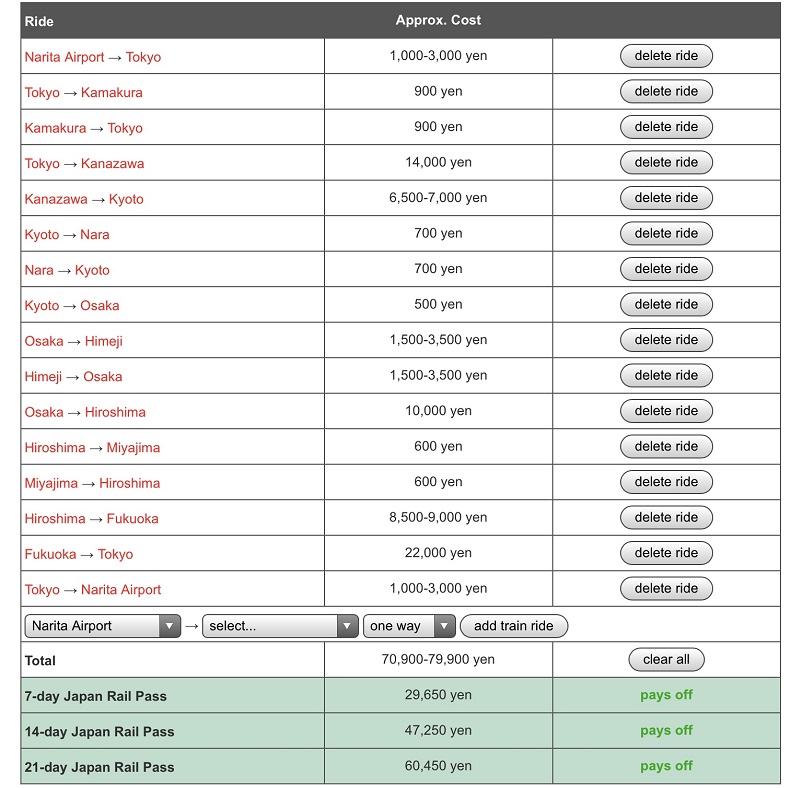
It should be noted, however, that the most expensive train trip in this itinerary is the one from Fukuoka to Tokyo. If you aren’t going to be flying out of Tokyo, or you just want to cut out the whole Fukuoka part of your trip altogether, things change.
We recalculated what it would look like to return to Tokyo from Hiroshima instead. It says it’s a “close call” for a 21-day pass, but the range is pretty big. This means you’ll need to check everything on Hyperdia.com . It’s easy but a bit time consuming. But given the money saving possibilities, definitely worth it.
3 weeks in Japan cost
Your budget for your 3 weeks in Japan will of course depend on what type of traveler you are. And we can only share our experience as two mid-range travelers.
As you can see from the calculations above, transportation in Japan is pretty expensive. At time of publication, a 21-day JR Pass costs 60,450 JPY (~$557). And the JR Pass doesn’t cover everything. In many of the cities in this itinerary, you’ll need to spend a few hundred yen a day on buses or metro trains.
Hotels in Japan are also a bit on the pricey side. On average across the two more recent trips we took to Japan, we spent about $100 a night for our accommodations. It’s pretty easy math to do to see that for 20 nights, you’re looking at $2,000. You can save money by staying in apartments (which we did during our longer trip), but make sure to read up on the most recent regulations for such accommodations.
Food in Japan can also vary widely. You can spend a fortune to eat at some of the world’s top restaurants. Or you can eat more like we do and indulge in reasonably priced but still delicious food like ramen and conveyor belt sushi. It also should be noted that alcohol is not cheap in Japan. During our 3 1/2 week trip in Japan, we spent an average of $50/day (combined for the two of us) on food and drinks. We cooked quite a bit, and didn’t go to any super splurge dinners, but we still felt like we ate very, very well.
That leaves attractions. We found entry fees to major attractions not terribly expensive. To give you an idea, here are some sample current entry fees across cities: Himeji Castle costs 1,000 JPY ($9.23); the Tokyo National Museum costs 620 JPY ($5.54); Kinkaku-ji in Kyoto costs 400 JPY ($3.70).
Japan 3 week itinerary: a detailed look
4 days in tokyo.
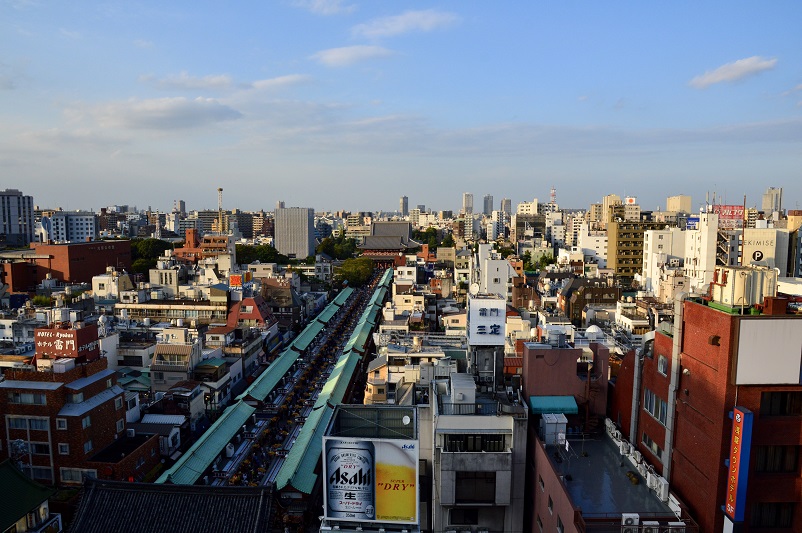
To be completely honest, we could spend all 3 weeks of this Japan itinerary in Tokyo and be perfectly happy. Tokyo is one of our favorite cities in the world (alternating with Berlin to hold the top spot depending on our mood). But we do think Japan has more to offer, so we’re recommending 4 days in Tokyo to kick off your Japan itinerary.
Recommended Tokyo itinerary
There is so much to do in Tokyo it may feel overwhelming. We’ve tried to help organize your time.
Devote your first day to fully exploring our favorite neighborhood, Asakusa, and nearby Ueno. Asakusa is more like old Edo-period Tokyo, with narrow streets, smaller houses, and temples stuck between them. You should absolutely visit the biggest attraction in this area, Sensoji Temple. If the weather’s nice, spend time strolling through Ueno Park. There you should also check out the impressive Tokyo National Museum.
Your second day, dig into the big bustling Tokyo you’ve probably seen in movies. Head to Shibuya Crossing to see the busiest intersection in the world and Shinjuku to see the busiest subway station in the world (and the outfits!). Major attractions in Shibuya include Yoyogi Park and the Meiji Shrine. While in Shinjuku, take a trip up to the top of the Tokyo Metropolitan Government Office for the view and check out Golden Gai to eat and drink.
Your third day, we recommend starting your day at the Edo Tokyo Museum. Afterwards, you can hop on the water bus which will take you down the Sumida River under more bridges than you new existed in Tokyo. It will drop you off at the idyllic Hamariku Gardens. From there, you can explore the cool architecture and luxury shopping in Ginza or check out the interesting neighborhood of Roppongi.
On your fourth day, go to Kamakura.
Tokyo to Kamakura day trip
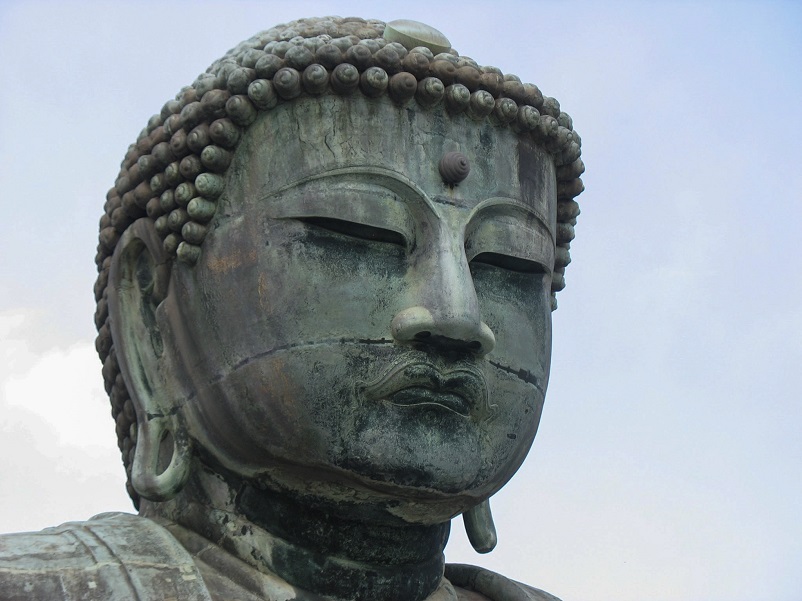
Kamakura is a great day trip from Tokyo. It’s an easy way to get out of the city and see some of Japan’s traditional temples in nature. It’s most famous for its Great Buddha, one of the largest bronze buddha sculptures in the country. Kamakura also has some lovely trails so it is a really nice and peaceful escape.
There is a direct train from Tokyo Station to Kamakura that takes about an hour. If you’re departing from elsewhere in Tokyo, you will likely have to transfer, but it’s still pretty simple.
Where to stay in Tokyo
We love the Asakusa neighborhood, but recommend staying in Ueno as it is closer to a major transportation hub. Alternatively, you could stay in Ginza, which is closer to the center of the city. Or in Shibuya, if you’re more into the more fast-paced, modern side of the city.
Next stop: Kanazawa! Tokyo to Kanazawa takes 2 1/2-3 hours by direct Shinkansen.
3 days in Kanazawa
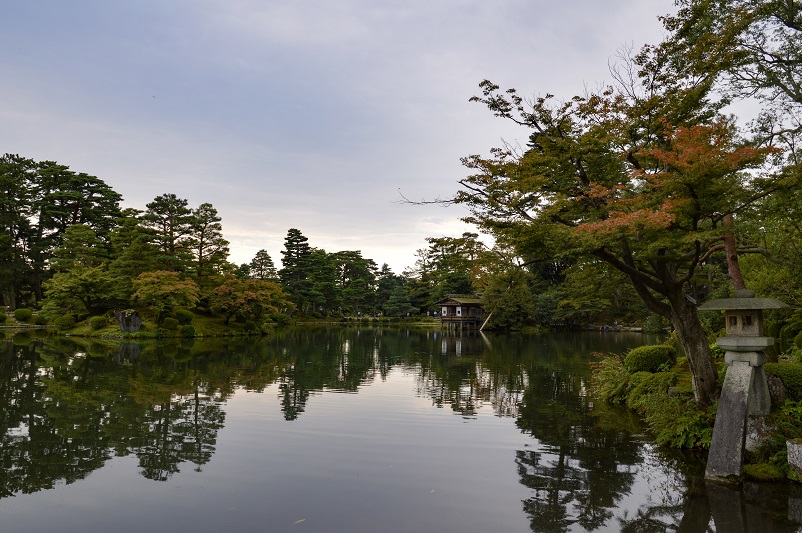
Kanazawa is a little off the well-trodden path of the rest of this itinerary, but we think worth the trip. Being in Kanazawa is like being back in what we’d imagine traditional Japan being like. Plus it’s right on the sea so it’s got some of the best sushi in the country.
Recommended Kanazawa itinerary
After arriving from Tokyo and getting settled, we recommend heading to one of the most atmospheric places in Japan: one of the geisha districts called the Higashiyama Higashi Chaya District. Take a moment to also stroll along the scenic Asano River.
Devote your first full day in Kanazawa to the impressive Kanazawa Castle and the magnificent Kenroku-en Garden. It’s considered to one of the most beautiful gardens in Japan and you could easily wile away several hours there. Make sure to explore Kanazawa Castle Park completely including the smaller, but also lovely Gyokusen’inmaru Garden.
Your second day in Kanazawa, check out the fish market (where you can definitely find a delicious sushi lunch) and explore the samurai district.
Next stop: Kyoto! Kanazawa to Kyoto takes a little over 2 hours by direct train.
4 days in Kyoto
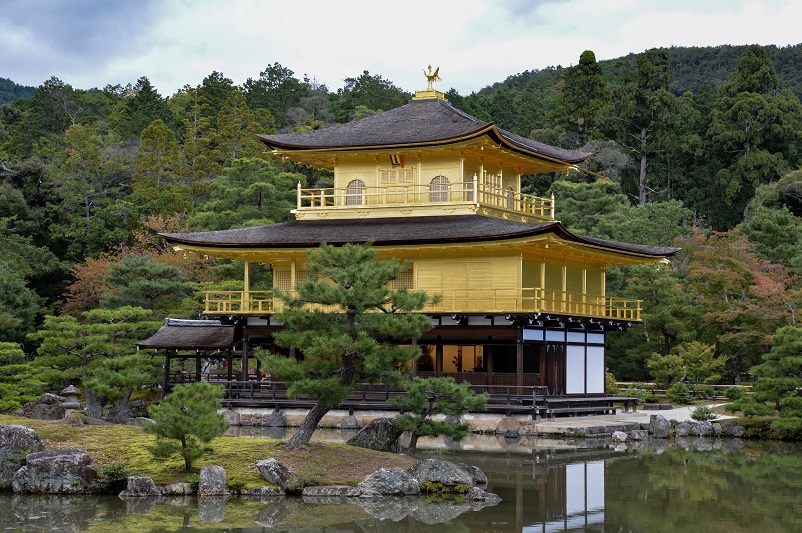
Kyoto is such a special city, chock full of some of the loveliest, most impressive temples and shrines we’ve ever seen. We think 4 days is enough to really get to know the city and a day trip to Nara.
Recommended Kyoto itinerary
Things are a bit spread out in Kyoto, so you should organize your days by main attraction. In between seeing them, you should just wander and find joy in the smaller temples and shrines that are all over.
Your first day you’ll have about half a day to get settled and situated. We recommend spending your late afternoon and evening on a visit to the Fushimi Inari Taisha, the temple with hundreds (thousands?) of orange torii gates. It involves a bit of a hike up a bunch of stairs (through all those gates) but there’s a viewpoint midway that is great at sunset. There will also be fewer people there then.
Your second day, we recommend waking up early to go out to Arashima, where the famous bamboo forest is. If you are an early riser, wake up as early as possible to try to beat the crowds. If not, don’t worry about it, but go with tempered expectations. There will be a lot of people. After you visit the bamboo, take some time to explore the rest of the area as it’s lovely. From there, take a bus to Kinkaku-ji (also known as the Golden Pavilion), which is also outside the center of Kyoto. Again, expect crowds.
Your third day, start with a visit to the covered Nishiki Market. Then head to the Yasuka Shrine and Chion-in Temple complex. You’ll want a few hours there to see everything including beautiful parks and gardens. Afterwards, take stroll through nearby Gion, the geisha district.
On your last full day in Kyoto, head to Nara.

Kyoto to Nara day trip
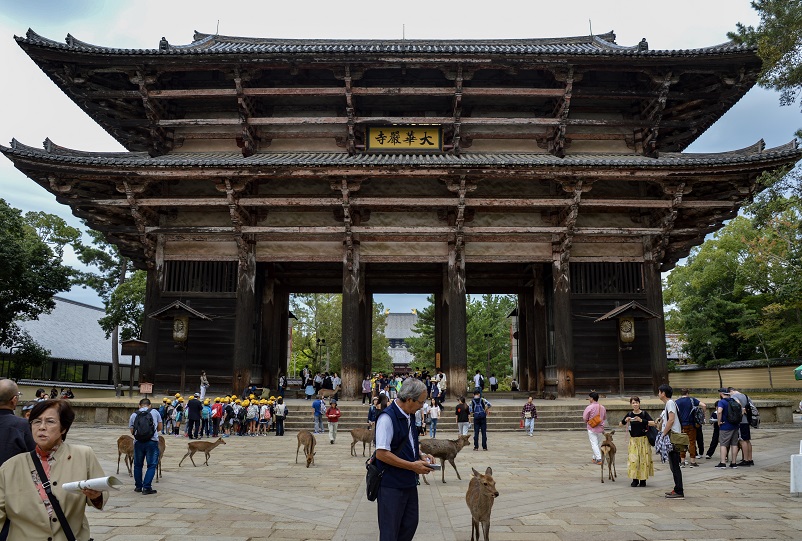
Nara is a city south of Kyoto known for its publicly roaming deer. It makes for an easy and unique day trip from Kyoto, taking about 45 minutes by train. We highly recommend it, especially if you love cheeky deer who learned how to bow for food.
Next stop: Osaka! Kyoto to Osaka only takes 30 minutes by direct train.
3 days in Osaka
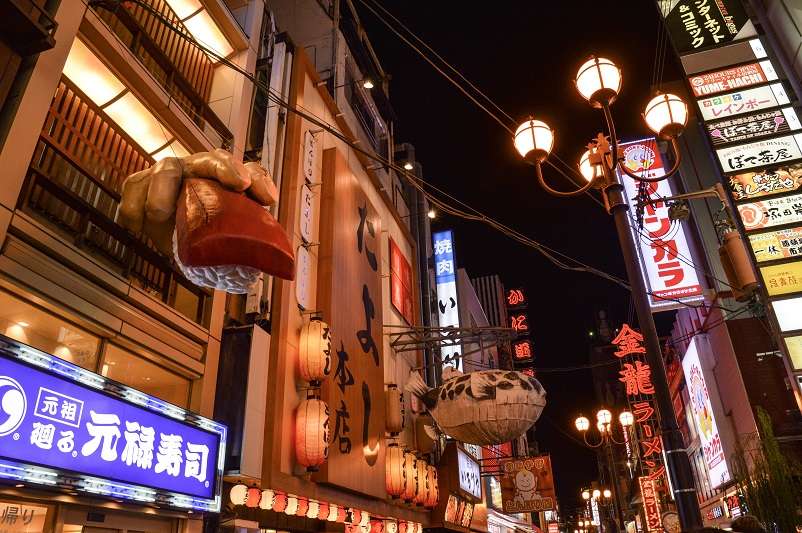
We honestly didn’t give Osaka its due. Our visit was smack in the middle of our own 4-week trip and we were tired. We also stayed a bit far out of the center of the city so we had an excuse not to explore too much. But people love Osaka, and we regret that we haven’t gotten to know it better so we do think it’s worth 3 days of your itinerary.
Things to do in Osaka
The top attractions in Osaka are varied. There’s Osaka Castle, Universal Studios, and the Dotonbori area with streets of more food (and sights and sounds) than you can possibly imagine. We focused our Osaka exploration on this food.
Osaka to Himeji Castle day trip
Himeji Castle is one of Japan’s twelve original castles, meaning it was never destroyed and reconstructed. It did undergo some significant renovations, however, and this was happening during our time in the region. We’re incredibly sad that we didn’t get to visit and would definitely make it a priority on another trip to the area.
Himeji is only about an hour from Osaka by direct train. The castle is about a 20-minute walk from the train station, although also accessible by public bus.
Next stop: Hiroshima! Osaka to Hiroshima takes a little under 2 hours by train. Do note there are transfers involved.
3 days in Hiroshima
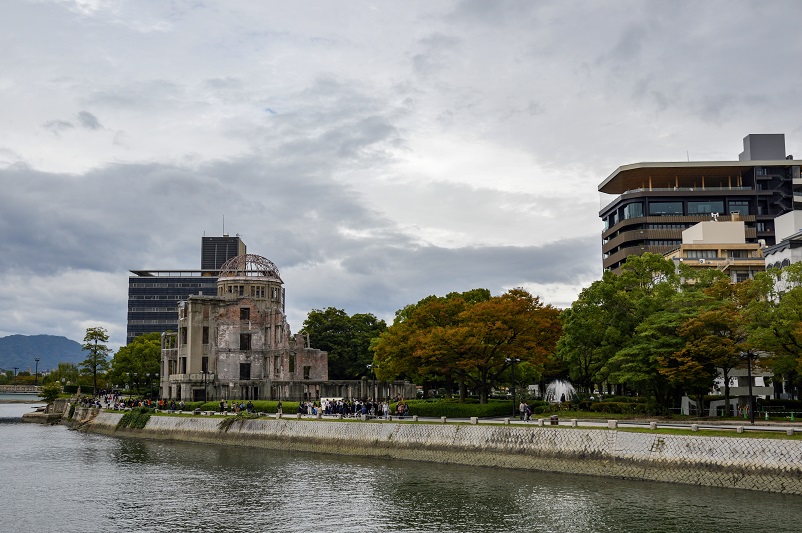
Hiroshima is an interesting city. We think it’s an important stop for anyone seeing so much of Japan. A visit to Hiroshima will remind you of terrible events of the past, but also bring hope for a more peaceful future.
Recommended Hiroshima itinerary
We recommend spending your first day in Hiroshima getting situated. Depending on when your train arrives, you can also likely fit in visits to Hiroshima Castle and Shukkei-en Garden.
Spend your second day visiting Hiroshima Peace Memorial Park and the monuments and museums there. This might be an emotional, draining day so take it slow.
On your third day, go to Miyajima. Give yourself the whole day so you don’t feel rushed and can really enjoy the island.
Note, you can always swap days 2 and 3 depending on the weather. If the sun is shining, jump on that boat to Miyajima.
Hiroshima to Miyajima day trip
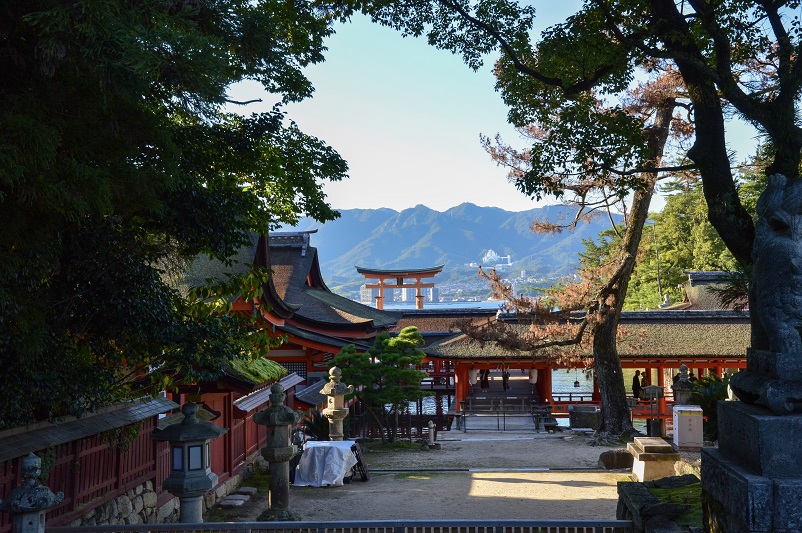
Being in Miyajima was pretty magical. From our first sight of the floating torii gate to seeing wild deer walk on the beach at sunset, we were enthralled with it all. It’s probably worth more than just a day, and we did think about staying over, but it’s so easy to do as a quick trip from Hiroshima, so that’s what we’re recommending.
If you have a JR Pass, you can take a train from the Hiroshima city center to the ferry dock which will take you to Miyajima. It’s only a half hour from Hiroshima Station, but stops at some other stations in the city as well. And then the ferry to the island only takes 10 minutes. One of the ferries is included in the JR Pass and one is not, so make sure you get on the right one. Also note, more people take the JR ferry so it can get crowded and there may be lines.
Next stop: Fukuoka! Hiroshima to Fukuoka only takes about 1 hour by direct Shinkansen. Important note: the central train station in Fukuoka is called Hakata Station.
2 days in Fukuoka
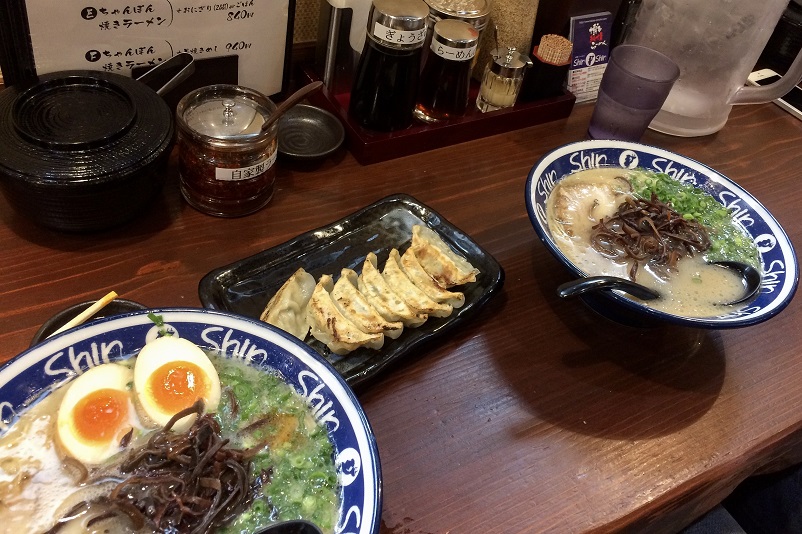
Fukuoka isn’t on most “best of Japan” itineraries. It’s a bit further afield, located on Japan’s Kyushu Island. We loved it though, and think it’s worth heading to if not for the ramen alone.
Things to do in Fukuoka
You only have 2 days in Fukuoka and if you’re anything like us, you’re going to spend most of your time eating ramen. In between bowls, you should head to Ohori Park and stop at some of the city’s many shrines and temples too.
Your last 2 days
We came up with a few options for the last 2 days of your Japan trip. They really depend on from where and how you’ll be leaving the country.
Option 1: back to Tokyo
If you’re flying out of Tokyo, you should just head back there. The train trip from Fukuoka back to Tokyo will be the longest one of your 3 weeks, taking about 5 hours on a direct Shinkansen. You can spend as many nights as you’d like, but we recommend another 2 so you have the chance to soak in a little more Tokyo before you fly out. And you could stay in a different neighborhood to mix things up a bit.
Option 2: back to Osaka
Train from Fukuoka to Osaka is shorter, taking about 3 hours and transfers. If you are able to fly out of Osaka, we would probably recommend adjusting your overall itinerary to go directly from Kyoto to Hiroshima and then having all your time in Osaka at the end of your trip.
Option 3: take a boat to South Korea
This is probably not the most common option, but if you have more than 3 weeks for your travels and want to head onto South Korea, you can easily take a ferry from Fukuoka to Busan. We did this ourselves so know how easy and manageable it is.
Have you visited Japan? Do you love it as much as we do? Tell us your favorite place in the comments!
Like this post? Pin it!
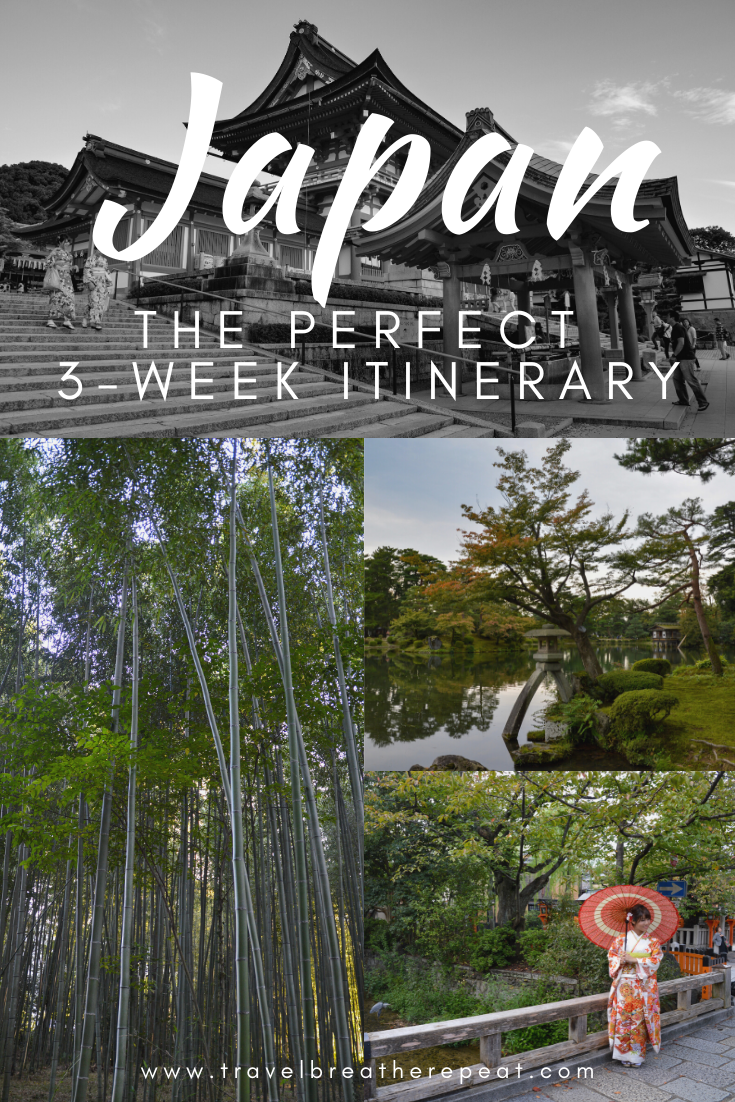
Sarah and Justin
4 thoughts on “ 3 week japan itinerary ”.
Three weeks in Japan sounds like heaven! I was there last year for cherry blossom season but only had 10 days 🙂
That’s a great amount of time too! I’m sure you saw a lot, and all the cherry blossoms – beautiful!
Pingback: 5 Days in Kyoto, Japan: An Awesome Kyoto Itinerary to Follow
Japan has been on my list for a while. I am glad that I found the itinerary that too for three weeks. Ample things to do. Thanks, guys!
Leave a Reply Cancel reply
Your email address will not be published. Required fields are marked *
This site uses Akismet to reduce spam. Learn how your comment data is processed .

Anna Sherchand
Solo Female Travel Blog
Japan 3 week itinerary for first-timers
If you’re looking for traveling to Japan, here is the Japan 3 week itinerary that will have you dreaming about it and packing your bags straight away. I went to Japan back in 2014 and it was my second international travel in life EVER! And it seems like many moons ago, but the information here is all fresh and updated every year. So you can use this itinerary for your future Japan travels.
I will also be sharing the names of the best Japanese food to try. so keep your eyes peeled! But first,
- Japan 3 week itinerary
What are the travel tips for Japan?
Buy a rail pass, book accommodations in advance, check the essential visa, download these apps now, buy insurance if you can afford, when is the best time to visit japan, japan three week itinerary, 1st week in osaka, 2nd week exploring tokyo and hakone.
- Let me know in the comments:

The most important thing that I recommend you do before you fly to Japan is to buy a Japan rail pass (JR Full Rail System Pass 7, 14 or 21 Days) or West Japan: 7-Day Railway Area Pass. If you didn’t buy beforehand at least consider buying it within the first couple of days of your arrival because this is the easiest way of getting from place A to B unless you have a car and you’re driving in Japan or catching flights everywhere.
I recommend booking accommodation in advance just to be sure of it. Check hotel prices and book it through trusted Agoda , or Booking.com
Check if you require the visa requirements before you go because every country has different rules and regulations that we have to follow. As an Australian passport holder, I don’t need a visa to go to Japan because basically it was on arrival visa stamp on the passport but you may need a visa depending on your passport. In a nutshell, if you are one of 68 countries with a visa exemption arrangement with Japan you can skip this process and buy your flights right away as I did.
Something that I always recommend in travel itineraries is also downloading the must-have apps before you depart your country. Such as
a. Google Maps you can also pre-downloaded, either the entire map of Japan or the places that you prefer to visit and you can actually follow that map offline as well as long as you download it beforehand.
b. Google Translate the app helps with your communication in Japan because not everybody speaks English there.
c. Hyperdia is the third app I would recommend, basically this helps to check your train schedules in Japan.
d. Navitime this app is for great to check on subway and train schedules for Tokyo and Kyoto. Even the locals use it so it’s great.
I don’t advise anything on insurance because for many years I myself traveled without any insurance but yeah if you got the money get the insurance probably will save you a lot of money if something was to go wrong.
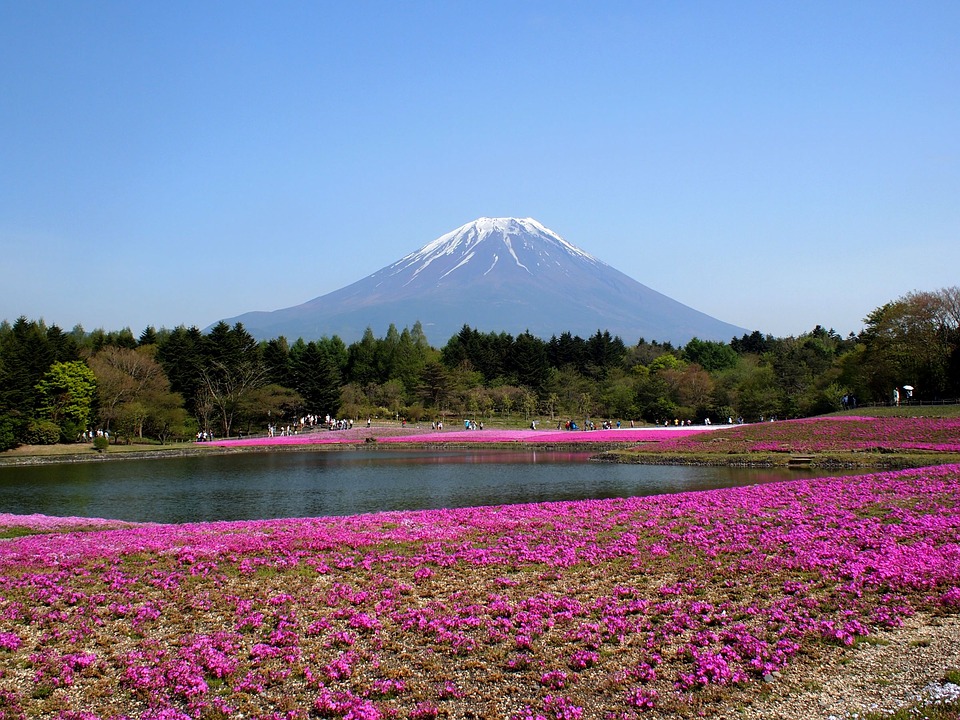
There are four different and distinct seasons in Japan.
Spring: March till May
If you are into the cherry blossom festivals consider visiting Japan mid-March to mid-April because that is when you can get the best Instagram shots with the cherry blossom season in Japan. Although it could be crowded and accommodation would be expensive it will be worth it because that is the perfect time and weather for the cherry blossoms in Japan.
Summer: June to August
If you are not into hot weather then you shouldn’t go to Japan between June and August because that is the time when it is unbearably hot there and is the typhoon season also. So you do not necessarily want to be in Japan at this time.
Fall: September to November
If you are into autumn weather, fall time is a beautiful time to visit Japan. It is when the leaves change color and the countryside is covered in yellow-orange and red. Although it could be a little bit chilly it is mild and more enjoyable.
Winter: December to February
If you are into snowboarding, skiing, and all the other winter sports then you should visit Japan in wintertime. It is also a low season there, so the accommodation will be slightly cheaper and tourist sites will be less crowded.
Now that we got the essential visa, flights, accommodation, and travel hack out the way. Let’s focus on making this trip one to remember a lifetime!
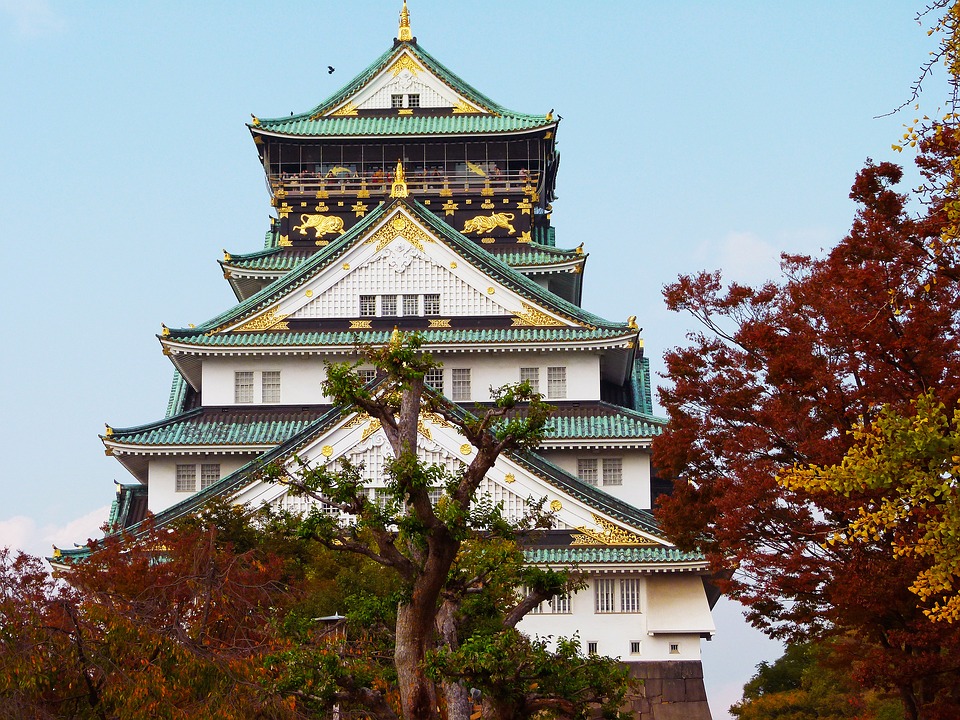
I believe any Japan trip would be incomplete without Osaka. It is laid back city with more culture that offers tasty foods! I highly recommend going to Dotonbori which is the most famous food district in Osaka and eat the Japanese takoyaki and okonomiyaki. Other highlights in Osaka include Osaka castle UNESCO World Heritage site, Kaiyukan Aquarium, Umeda Sky Building, National Bunraku Theater, Universal Studios Japan, Universal City Walk, and Minami (Namba). Osaka Castle Park, Kemasakuranomiya Park, Osaka Aquarium Kaiyukan, Nakanoshima Park and Nagai Park is a great option for some outdoor activities.
Another half of the week, if you feel like getting out of the hustle and bustle of the city, I recommend taking day trips to Mt. Gozaisho Ropeway, Nabana no Sato for Illumination and Begonia Garden, head to Kyoto by bus, or visit deer park in Nara, and try authentic wagyu beef in Kobe! (I did all 3 and loved everything about it) Although I will be recommending a few more days in Kyoto (more on that below) You can learn about traditional Japanese life and culture in these beautiful places even on a one day trip.
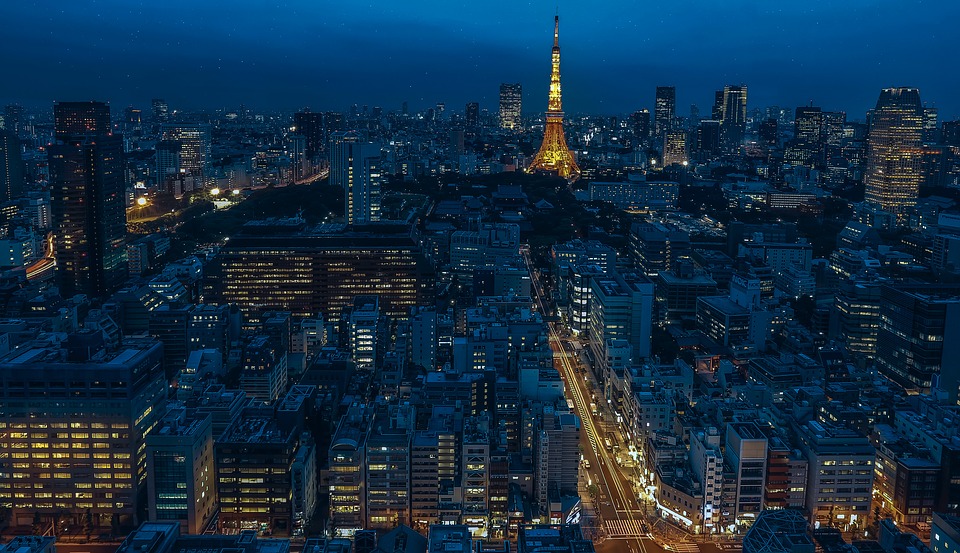
This 3 week Japan itinerary also includes must-see Tokyo, the capital city of the Japanese nation. Because of the difference in time zones, if you find yourself wide awake in the wee hours of the morning- Get up and head for Tsukiji Fish Market which typically opens 5-6 am!
After a breakfast of fresh sushi, head to Hama Rikyu, one of Tokyo’s oldest Japanese gardens (opens at 9 am), from which you can board a ferry for a cruise up the Sumida River to Asakusa, where you can visit Sensoji Temple and shop for souvenirs along Nakamise Dori. Afterward, see the Tokyo National Museum, the world’s finest repository of Japanese art and crafts. Then in the evening, head to Ginza for a stroll through a department store, and then try to attend a kabuki play.
Visit the Edo-Tokyo Museum for a colorful portrayal of the city’s tumultuous history, followed by a stroll through Akihabara, with store after store offering the latest computers, cellphones, cameras, and more. Next, go to Harajuku to see Meiji Shrine (it is Tokyo’s most popular shrine, and if this is your first time in Japan, you’ll see the Torii gate here), followed by shopping at Oriental Bazaar, great for Japanese souvenirs. End the day with Shibuya crossing and eye-popping views from the 45th-floor observatory in Shinjuku’s Tokyo Metropolitan Government Office, followed by a stroll through Japan’s most notorious and craziest nightlife district, Kabuki-Cho. Also, don’t miss the Hachiko statue at the Hachiko Exit outside Shibuya train station. (great story of dog and human there for you!)
I found Tokyo to be really crowded but also really inspiring! I mean they are super-advanced in technology. Just take at their toilet bowl for instance! I could choose the type of music I want to listen to, the pressure of water, volume of the songs all while minding my own business! That is taking tech to the next level! Then there are restaurants where robots will serve you and interesting dogs, cats cafes too.
Then you go a few hours outside Tokyo and you could see the traditional Japanese life with no luxury at all. That brings us to, Hakone.

The other part of the week, I recommend taking an early train to Hakone Yumoto. The gateway to the wonderful Fuji-Hakone-Izu National Park (if possible, leave your luggage at Odawara or Hakone Yumoto Station and travel overnight only with a small bag). Here you can travel through some of Japan’s most scenic countryside via a circuitous route that includes a three-car streetcar, a cable car, ropeway, and a boat, while seeing such sights as the wonderful Hakone Open-Air Museum and, if you’re lucky, the elusive Mount Fuji. Be sure to schedule some time for a dip in a hot-spring bath, and spend the night in the Fujiya Hotel, one of my favorites in all of Japan, or in a Japanese inn.
Last week: visiting Kyoto

I suggest completing your Japan 3 week itinerary through Hakone, returning to pick up your luggage, and then transferring in Odawara for the 3-hour Shinkansen bullet train to Kyoto. Bus to Nijo Castle, the Golden Pavilion, and the Kyoto Imperial Palace (on Sat. Sun. & national holidays, visit Higashi Honganji Temple instead).
From the Kyoto Handicraft Centre return to Kyoto Station and then board a local bus Kiyomizu Dera Temple. From the stop walk up this attractive winding road lined with colorful souvenir and craft shops. Kiyomizu Dera is famous for its giant wooden Butai (stage) overlooking panoramic views of Kyoto and its main hall purely constructed of wood and supported by huge columns and beams without the use of a single nail, screw or bolt.
In the evening board a subway from Kyoto Station to Shijo Station and walk towards Gion which is Kyoto’s famous geisha district, one place in Japan where you may see Maiko or Geisha walking between appointments. As darkness falls watch the traditional lanterns gradually come to life as you wander down tiny alleys housing a variety of restaurants offering tempting cuisine. End the day with a stroll through Kyoto’s central shopping area, topped with a stroll through the Pontocho nightlife area.

Three weeks in Japan would not be fun without some self-guided tour. I suggest starting the day with a self-guided walk through eastern Kyoto, seeing Sanjusangendo Hall with its 1,001 wooden statues, Kiyomizu Temple, and Heian Shrine with its garden, followed by shopping at the Kyoto Handicraft Center.
Kyoto’s other main attractions include, Fushimi Inari Shrine, bamboo forest, Nijo Castle, former home of the shogun; Kyoto Imperial Palace; Ryoanji Temple with its famous Zen rock garden; and the Golden Pavilion. In the evening, head for Gion, Japan’s most famous geisha quarters, followed by an evening performance at Gion Corner with its cultural demonstrations.
Japan is well known for its polite language, delicious food, amazing history, Mt Fuji, unrivaled technology, and Samurais. But nowadays it is also becoming famous for many other things. such as Anime, Sumo, Cherry Blossoms, and Sushi which brings to the food section!
Here are some of the Japanese food that I highly recommend you try during your time in Japan.

All types of Sushi, Donburi, Octopus balls (i know it sounds weird lol) Raman noodles, Udon noodles (both cold and hot), soba noodles, wagyu beef, fish, okonomiyaki, yudofu, Unagi (eel), Kaiseki meal, Tempura (all kinds), Tamagoyaki, Onigiri, Yakitori, Ochazuke, tonkatsu and sake of course!
I hope you read all the way to the end of this Japan 3 week itinerary and it gave you an insight into what the japan travels look like!
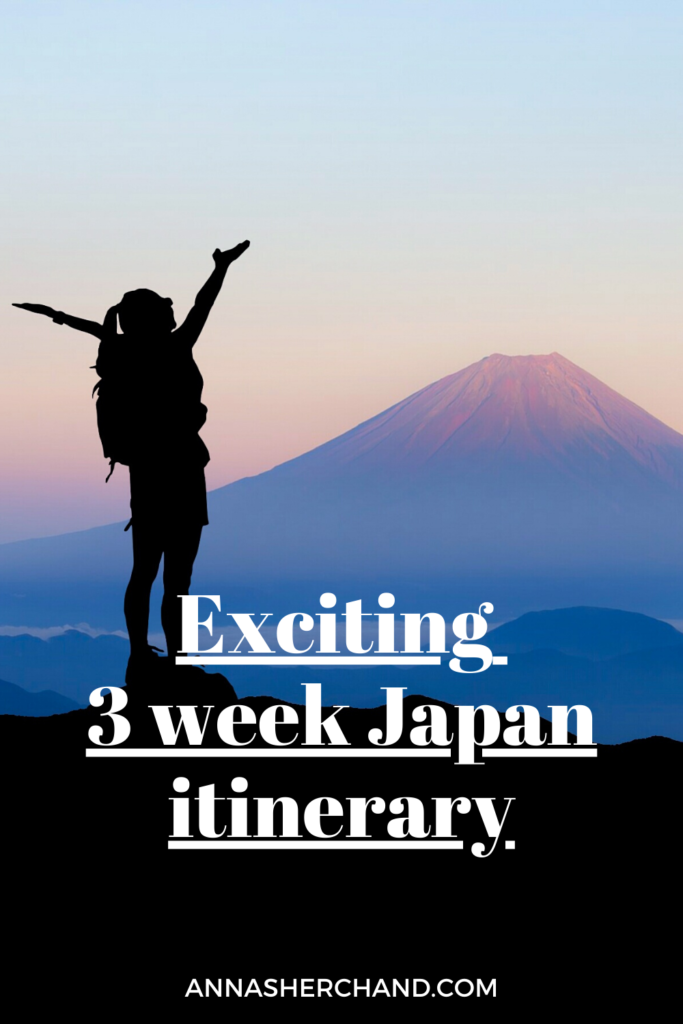
Let me know in the comments :
- If you have any questions about Japan 3 week itinerary
- How about a solo trip to Taipei capital of Taiwan?
- Here are the 11 best bars in Hanoi you don’t want to miss
- Don’t miss the 10 must see instagrammable cafes in Hanoi
- Singapore itinerary for 3 nights 4 days is here
- Check out what to do in Prague in September next.
- Check out all the Australia travel guide (Everything you need to know about traveling to Sydney is here)
- Solo travel guide to Brisbane (Gold coast and Insta worthy places included!
- Exploring Adelaide the best way is a must-read
- Best Australia travel guide to Uluru trip
- Attractions in Perth, Western Australia
- Must see on the east coast of Australia is fun, it includes barrier reef, beautiful national park, and more exciting places and activities
- Here I blog about the Melbourne attractions
- Check hotel prices and book it through trusted Agoda , or Booking.com
- I have detailed travel resources right here. Save money, learn what and how.
- If you like this article, follow my adventures on Instagram , Facebook , YouTube , Twitter , and Pinterest , but most importantly sign up to my e-mail list to keep up with updates and travel posts!
- ← Fun 4 days itinerary in Paris, France
- Solo travel to Tallinn, Estonia →
You May Also Like

Brunei solo travel itinerary for 5 days
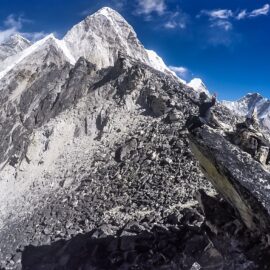
3 weeks in Nepal itinerary

Tune Hotel Klia2 Review, Malaysia
14 thoughts on “ japan 3 week itinerary for first-timers ”.
I’m now dying to visit Japan! Thank you for the tips
WOW…these photos make me want to visit Japan. This is a fantastic itinerary. Thanks for sharing!
I have always wanted to visit Japan. I love the countryside and the cities, and I’ve always been fascinated by Japanese culture.
If I ever get the chance to visit Japan I think I’ll use this exact itinerary. Japan has been on my bucket list for years, now.
Such an awesome trip because there is so much variety! I have never seen such tall bamboo!
Here then is the perfect itinerary for me that if I go to Japan I don’t know where to start xD
Thanks so much for all the great tips. Japan looks like an amazing place which is gorgeous in all seasons!
Nnniiiccceeeee….thank you for sharing the list of apps. They will definitely come in handy!
Japan has always been one of my favorite countries. I have been in Tokyo four times and Yokohama 1 time. Hope to visit Osaka, Nara and Hiroshima soon.
that looks amazing. i would love to visit japan someday
My significant other and I have always dreamed of going to Japan. It would be so beautiful!
i want to visit Japan. My aunt and uncle met when he was stationed in Japan with the U.S. Navy. You mention apps for your phones. Does that mean there’s good wifi options?
Well now you got me wanting to visit Japan. It’s a Destination that always interested me but now even more.
Awesome!!!! I so want to visit Japan. My friend lived there for 3 years teaching English. Yours tips will come in handy. Cheers
Leave a Reply Cancel reply
Your email address will not be published. Required fields are marked *
The Ultimate (and detailed) 3 Week Japan Itinerary with Kids
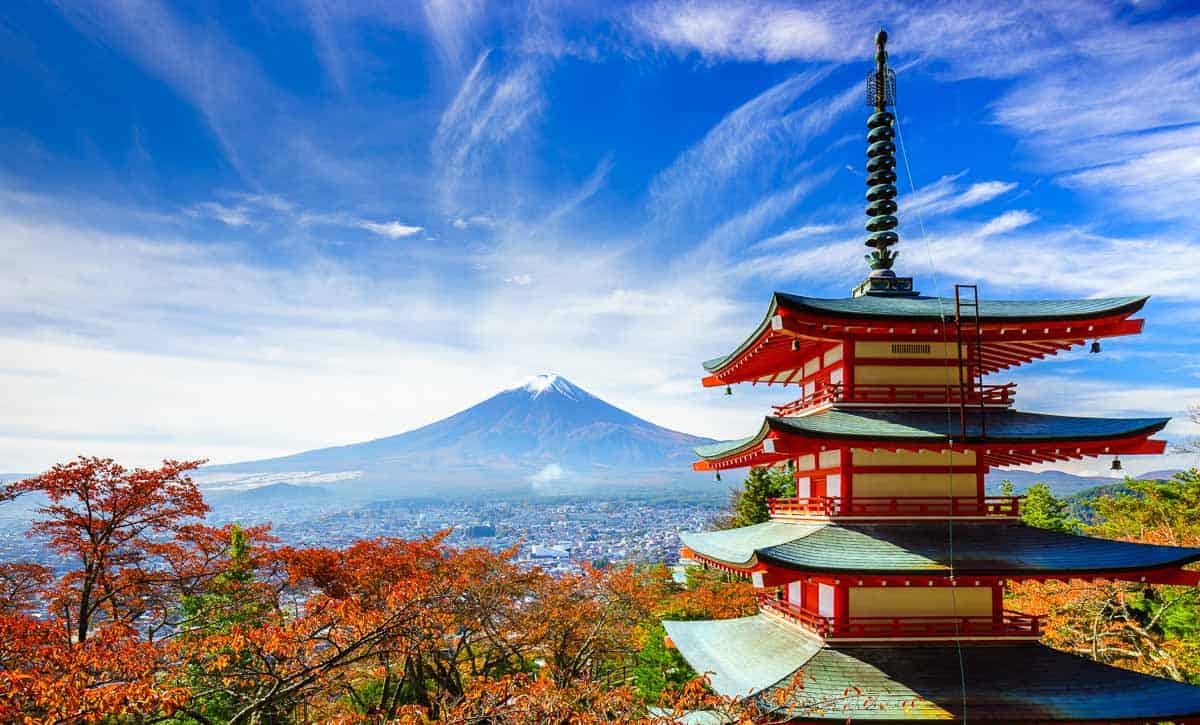
We recently returned from a wonderful 3 week Japan family holiday, it was our first time and we all just loved it! We spent hours and hours working on the perfect 3 week Japan itinerary as we wanted to see and do as much as we possibly could.
Putting together a Japan itinerary with kids is no easy task. For one, there is a huge list of awesome things to do in Japan with kids , so trying to work out what to do and where to go in Japan with kids is a bit tricky. Also just trying to figure out which cities to visit, which order to visit them in, how to get between cities, how long to stay in each, which hotel to stay at and not to mention putting together a budget is extremely time-consuming!
If you’re travelling to Japan with kids soon and in the process of planning your own Japan travel itinerary, you’re going to find this guide super helpful. I have a lot of Japan content to come, but in the meantime, I wanted to start by sharing with you our detailed Japan 3 week itinerary so you might use it when preparing your own Japan trip itinerary.
We also travelled with friends who spent two weeks in Japan, so I’m also going to share with you their 2-week Japan itinerary in case that’s helpful too. Or check out this one week Japan itinerary .
So in this post, I’m going to tell you exactly where we stayed, what we did, how we got around attractions and between cities. I will also tell you exactly where we purchased things to make it super simple for you. Hopefully, you can use this information to assist in your own Japan travel with kids planning and benefit from the crazy number of hours it took me to put together our Japan 3-week itinerary.
So let’s get into it, the finer details of our 21 day Japan itinerary.
Talk to other families about their tips on visiting Japan and join our Thrifty Family Travel Facebook Group or be inspired on our Thrifty Family Travel Instagram Feed .
This post may contain compensated links. Please refer to my disclaimer here for more information.
Page Contents
- 1.1.1 Plan your Japan Travel Itinerary
- 1.1.2 Pre Purchase Attractions Via Klook
- 1.1.3 Stay Connected with eSim or Pocket Wifi
- 1.1.4 eSim by Frewie
- 1.1.5 Pocket WiFi
- 1.1.6 Download APPs
- 1.2.1 Pick Up Pocket WiFi
- 1.2.2 Bus from Narita to Hotel
- 1.2.3 Tokyo Accommodation
- 1.3.1 Buying Public Transport cards
- 1.3.2 Tokyo Metropolitan Government Building
- 1.3.3 Puroland (Hello Kitty Land)
- 1.4.1 Fukagawa Edo Museum
- 1.4.2 Asakusa
- 1.4.3 Shibuya
- 1.4.4 Piss Alley (Omoide Yokocho)
- 1.5.1 Mori Digital Art Museum/ teamLab Borderless
- 1.5.2 Miraikan National Museum
- 1.5.3 Odaiba Statue of Liberty
- 1.6.1 HARRY Hedgehog Café
- 1.6.2 Takeshita-dori Street
- 1.7 Day 6: Disneysea
- 1.8.1 Hakone Free Pass
- 1.9.1 Cruise on Lake Ashi
- 1.9.2 Checkpoint Museum
- 1.9.3 Mishima Skywalk
- 1.9.4 Hakone Kowakien Yunessun
- 1.10.1 Hakone Open-Air Museum
- 1.10.2 Travel from Hakone to Nagoya
- 1.11 Day 10: Legoland
- 1.12.1 Kyoto Accommodation
- 1.13.1 Fushimi Inari Shrine
- 1.13.2 Kinkaku-Ji Temple
- 1.13.3 Nishiki Markets
- 1.13.4 Pontocho Alley
- 1.14.1 Nijo Castle
- 1.14.2 Arashiyama
- 1.14.3 Maiko Dance
- 1.15.1 Kiyomizu-dera Temple
- 1.15.2 Gion District
- 1.15.3 Kodai-ji Temple
- 1.15.4 Ryozen Kannon Statute
- 1.16.1 Nara Deer Park
- 1.16.2 Osaka Accommodation
- 1.16.3 Dontonbori
- 1.17 Day 16: Universal Studios
- 1.18.1 Cup Noodles Museum
- 1.18.2 Kids Plaza
- 1.18.3 Travel to Hiroshima
- 1.19 Day 18: Day Trip to Miyajima Island
- 1.20.1 Hiroshima Peace Memorial Museum
- 1.20.2 Hiroshima Peace Memorial Park
- 1.20.3 Travel to Tokyo and Fly Home
- 2 Final Verdict
3 Week Japan Itinerary with Kids
I’ve done this as a Japan day by day itinerary, so if you like, you can do exactly what we did. Or you can just make changes here and there to fit your individual preferences.
This post is brief in detail about the attractions we visited; I have only provided the necessary information. Full details of all the attractions we visited and additional attractions to consider will be provided in future posts – stay tuned. The purpose of this post is to simply provide you with a Japan sample itinerary to work from, or you can just follow this day by day.
Pre-Trip Tips
Here are my tips on what to do before you jet set off on Japan family holidays:
Plan your Japan Travel Itinerary
Before leaving for our trip, we had our Japan trip itinerary fully planned out. There is a lot to see in Japan, and so by planning out our itinerary beforehand, we were able to ensure we made the most of our time while in Japan. Honestly, pretty much every day in Japan was jammed packed with activities.
Pre Purchase Attractions Via Klook
Where possible, we purchased tickets to attractions beforehand. Most tickets were purchased through Klook, which is absolutely fantastic as 9 times out of 10, we saved a stack of money. Below where I mention each attraction we visited – I will link to where we purchased our tickets so you can too if you like or click here to see what Japan attractions Klook covers.
Stay Connected with eSim or Pocket Wifi
We like to have access to the internet – it is an absolute must when you’re travelling with kids in Japan. We pretty much lived on Google Maps to get around the city as well as navigating the trains.
It’s also great for things like using social media, and if you travel Japan with kids, it’s great to let the little ones play games and stream Netflix when you’re on the long train rides between cities.
We’d like to share two great ways to stay online – the Pocket Wifi or an eSim. They are both slightly different in the way they operate. I will explain the pros and cons so you can decide which might be best for your trip.
eSim by Frewie
One of the main benefits of the eSim is that it is sent via email immediately, so it should be almost instant.
You can purchase an eSim for a duration of 5, 8, 15 or 30 days. The more days you purchase, the better value the eSim.
Your next choice is whether to go for 500MB, 1GB or unlimited data. If you choose unlimited data you can then choose whether to get the first 5GB, 8GB, 15GBb or 30GB as high speed.
Each option alters the price, so it’s worth checking each option to see what works best for you and your family. On the subject of family, although the eSim will be installed on your phone (or whoever deals with the tech in your family!), you will still be able to share your hotspot so additional family members can connect to the internet through you.
The eSim needs to be activated within 45 days of receiving the eSIM QR email. Do check the small print as the eSim will not work with all models.
The main benefit of an eSim rather than Pocket Wifi is there is no extra equipment to carry with you. You don’t need to remember to pick it up in the airport and you don’t need to return it afterwards.
You can purchase an eSim from Klook here.
Pocket WiFi
Pocket WiFi is a device that you carry with you to connect to the internet. With the pocket WiFi you pick it up from the airport when you arrive and drop it back off at the airport when you head home – easy!
You can choose unlimited data with the first 3GB, 5GB or 10GB being high-speed, per day. Unlike the eSim which has a minimum duration of five days you can pay for just one day with the Pocket WiFi.
The main disadvantage of choosing the Pocket WiFi over the eSim is the maximum number of connected devices is five at a time. Using an eSim hotspot you can most likely share with up to ten other users (depending on your handset). The Pocket WiFi limit is only an issue if you need to share with six people or more simultaneously though.
If you decide to go with Pocket WiFi, it’s a good idea to insure it as you will be liable for loss, damage and breakage. You can pay extra to insure it at the time of purchase to give you that protection.
You can purchase pocket WiFi from Klook here.
Download APPs
So as I mentioned we used Google Maps all the time. Google Maps is awesome for working your way around the trains as it will tell you which entry/exit to use as well as which platform. Honestly, this was pretty much the only app I used for getting around Japan – definitely ensure you have it downloaded before your trip.
The other App you want to download is SmartEX App – we used this to book all our Shinkansen trains. The APP is great because you can see exactly how much each train is and what seats are available. For the most part, we just booked trains the day before or sometimes the same day – but just keep an eye on how busy the trains are to avoid not getting tickets on the train of your choice.
You will still need to pick up your tickets at the train station – either from the ticket machines or by going inside a ticket office. You can of course just book tickets when you arrive at the station, but we have heard of trains getting full and so we didn’t want to risk this.
There is also the option of purchasing the JR pass – whether or not the JR pass is worth it for you will depend upon your individual travel plans – for us it wasn’t. There are a couple of JR passes to look at, you can check them out here.
Day 1: Fly to Tokyo

Click here for our full guide on Tokyo with kids.
We live in Brisbane; yet flew from Gold Coast as we landed ourselves one of those cheap Jetstar fares where you get the return flight for free. All up for the 3 of us, we paid $945 AUD, which is pretty amazing! JetStar has these deals a few times a year, so be sure to sign up to their newsletter and Facebook page to be notified of when they have a deal on. Otherwise, if you’re from somewhere else in the world, just check Skyscanner for flights.
Pick Up Pocket WiFi
As mentioned above, a few weeks before our trip we had arranged pocket WiFi, which we picked up at the airport. We did have to go to a different terminal from where we arrived – but we found this really easy as everything is well signposted in Japan – so don’t stress. And everything is also in English too.
Bus from Narita to Hotel
Before our trip, we had also purchased tickets for the Limousine Bus, which takes you from the airport into Tokyo. We bought our tickets through Klook. Through Klook, tickets are cheaper at 3100 Yen ($34.99 AUD) per adult and 1550 Yen ($17.49 AUD) per child as opposed to 4000 Yen ($43.50 AUD) per adult and 2000 Yen ($21.75 AUD) per child. Click here if you want to book discounted tickets via Klook .
However please note that the bus doesn’t take you to your hotel, just a central point in the city, so from there we took an Uber to our hotel. So if you haven’t got it downloaded already be sure to download the Uber App. Uber is great for getting around if you don’t speak Japanese because your driver can see where you are going via the App.
The Limousine Bus isn’t cheap though, and I think next time I will just take the train to the city centre as I found it pretty easy to navigate my way around. If you want to do this option, it’s best to arrange your train card beforehand – see more about transport cards in day 2 below.
However some people get nervous about the bus when visiting Japan with kids and so arrange private transfers. Private transfers through Klook are around 19,990 yen ($224.79 AUD) for up to 5 people – a lot more pricey than the bus, but they will of course pick you up from the airport and take you directly to your hotel. Click here to book private car transfers with Klook.
Tokyo Accommodation
We stayed at the Sakura Cross Hotel Shinjuku East while in Tokyo. Tokyo is not a cheap place to stay and we found this hotel quite good value compared to what was on offer. We thought it to be the best hotel in Tokyo for family and central for all the Tokyo kids activities we had planned. For current pricing click here .
Our hotel was in a great location being between two train stations – Higashi-Shinjuku Station (500 metres away) and Wakamatsu-Kawada Station (550 metres away) – the former being the one we used the most which is also just one station away from the main Shinjuku Station. Our hotel also had various 7/11’s close by, as well as a laundromat and bakery.
We got in pretty late at night – but we all walked across to the 7/11 for some food for dinner (yes 7/11 has amazing Japanese food!!!) and also bought some breakfast so we were ready to go the next morning. When taking kids to Japan this is my number 1 tip for when you need food fast!
Click here for our complete guide on where to stay in Tokyo with kids as well as suggestions for other budget hotels.
Day 2: Explore Tokyo
Here is a brief overview of how we spent our first full day of our 3 weeks in Japan:
Buying Public Transport cards

The first thing we did on our first full day in Tokyo was go to the train station and buy everyone in our travel group a Suica prepaid card – which is a card that you load cash onto so you can ride the trains and buses all around Japan. You MUST get one of these cards while in Japan – as trains are the main form of transport!
I’m not going to lie, this is a bit daunting to arrange – but you can do it! Just find a ticket machine inside the train station and find the button that says English and follow the prompts to purchase your cards. I understand that since we went in June 2019, there is now a tourist Welcome Suica Card which is a bit easier then what we had to do.
For our cards, we had to pay a deposit and then return them before we left to get a refund. Apparently these new cards come with a pre-loaded amount on them and expire within 28 days. The only downside is you can’t get any of the money back that is left on the card – so make sure you use it all up before you leave.
If you are on a family trip to Japan, you will need to have your children’s passports handy to be able to purchase the kid’s Suica cards. It’s quite funny actually as you push a button to say you’re buying kids’ cards and almost immediately a person pops their head out just above the ticket machine to see the passports.
Once you have your cards and loaded some cash on them you are ready to get on the train!
The trains may seem a little daunting at first – but once you get the hang of them, they are really easy. Google Maps is your best friend here as it will tell you what entrance to use and platform number. Everything is super organised in Japan – I just loved it! Plus there are heaps of signs at the stations and they are in English. If all else fails just ask someone – everyone is super friendly and helpful in Japan.
Tokyo Metropolitan Government Building

- There are a few different towers in Tokyo for great views across the city, but the Tokyo Metropolitan Government Building is the only one that is free!!! If you are looking for free things to do in Tokyo with kids then this is top of the list.
- Given this is a free attraction – do get there early and do expect a bit of a line-up. When we arrived soon after 9am, there was already a huge line-up – but surprisingly it went pretty fast.
- We spent about 90 minutes here including lining up for around 30 minutes.
Puroland (Hello Kitty Land)

- After the Tokyo Metropolitan Government Building, we took the train to Puroland.
- We spent about 2-3 hours here, we probably could have stayed another hour or so, but we were short on time.
- For what it’s worth, the adults just didn’t get this place, but the kids seemed to love it – so definitely somewhere to go on your Japan trip with kids.
- Price: Ticket prices vary depending on the day and time you go, with adult tickets averaging 4300 Yen ($46.75 AUD) and kids averaging 2800 Yen ($30.45 AUD). We prebooked our tickets with Klook who currently sells discounted tickets for 2000 yen ($20.99 AUD) per person which is a huge saving! Click here to purchase your discounted Puroland tickets .
Day 3: Explore Tokyo
Here is a brief overview of how we spent day 3 of our Japan 3 weeks itinerary:
Fukagawa Edo Museum

- From our hotel, we took the train to Fukagawa Edo Museum which is a lovely museum that has a replica Edo village set up, which via a tour guide you are encouraged to explore.
- We spent an hour or so here.
- Tickets can be purchased at the museum or at ticket handling facilities or online and are 600 yen ($6.50 AUD) per adult and kids 50 yen ($0.55 AUD). One of the cheapest Japan family tours you’ll find!
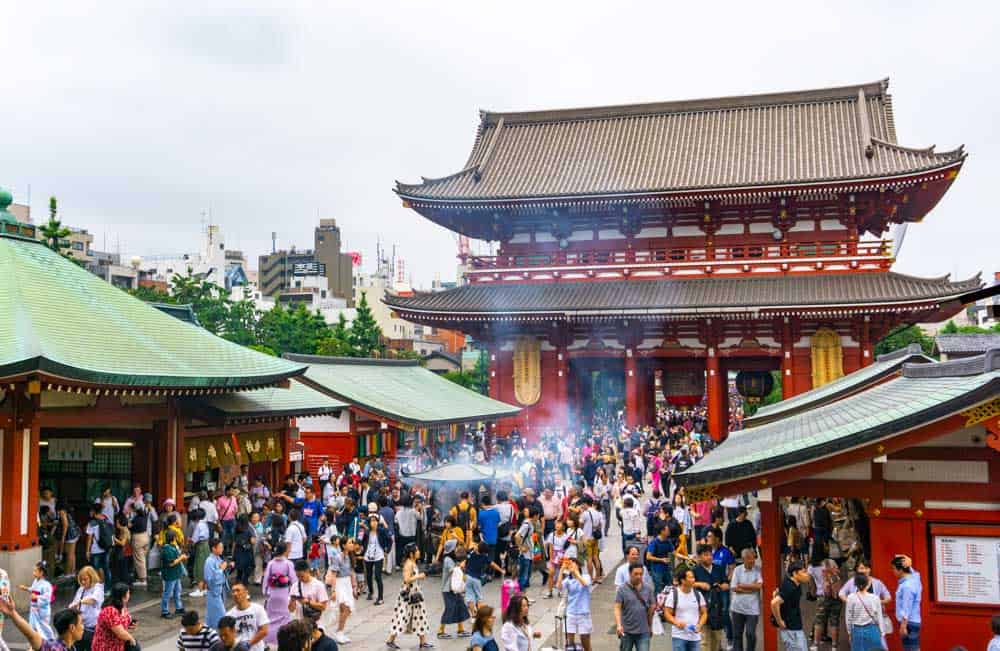
- We then took the train to Asakusa which is a nice tourist area with shops, restaurants as well as a few attractions.
- Here we had lunch as well as visited Denbouin Street – Old Edo Street, walked by Hanayashiki Amusement Park (Japan’s oldest amusement park), looked at the shops and spent an hour or so exploring Sensoji Temple (with everyone else in Tokyo it seems – note go early in the morning or late afternoon to avoid the crowds).
- We had also planned on visiting Uneo Zoo and Park which is close by, but after reading some poor reviews about the zoo we decided to skip it.
- If you had more time then us, you could plan on spending the entire day just in this area on your family holiday to Japan.

- We then took the train to Shibuya Station, which is the busiest train station in Japan! Boy they aren’t wrong.
- We checked out the Hachiko Memorial Statue which is right outside the station.
- We then went up to the rooftop of the Magnet Shopping Mall building to get a bird’s eye view of the world-famous Shibuya Crossing. It’s free to do so.
- We then walked across the Shibuya Crossing… which is just mental – but an iconic activity to do when in Japan, kids will be in awe!
- The kids spent a bit of their spending money at the 100-yen store (great place for them to by some Japanese souvenirs ). This is a big shopping area, so if you want to shop, this is the area to do so.
- We then spent the afternoon at a karaoke booth where the kids all had an absolute ball singing… karaoke, of course, is another iconic activity you have to do on your Tokyo family holiday. It’s just one of the many family friendly things to do in Tokyo.
Piss Alley (Omoide Yokocho)
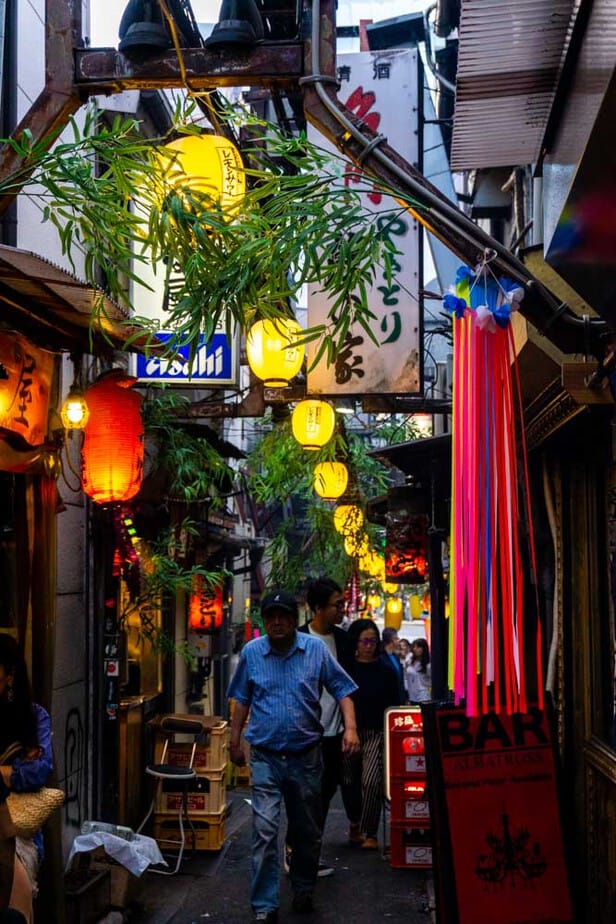
- We then took the train back to Shinjuku Station and checked out Piss Alley which is a cool little bar eatery lane nearby. Such a cool little area.
- We had hoped to eat dinner here – but the restaurants are super tiny and as a group of 7 we had no chance (something to keep in mind for larger families when you travel to Japan with kids) – but we found a place nearby for dinner.
- From here we took a train back to our accommodation.
Day 4: Explore Odaiba
Here is a brief overview of how we spent day 4 of our Japan family trip:
Mori Digital Art Museum/ teamLab Borderless

- From Shinjuku, we took the train to Odaiba and visited the popular Mori Digital Art Museum.
- This is an awesome place for kids so don’t miss it on your Japan family vacation.
- It’s super important to book this in advance ( book here ) as we heard from loads of people missing out. Tickets are 3800 yen ($39.85 AUD) per adult and 1300 yen ($14.99 AUD) per child (4-12).
- We spent around 3 hours here – we actually got hungry and left (you can’t go back in) – otherwise we could have spent much longer here.
Miraikan National Museum
- Take the free Tokyo Bay Shuttle bus to the Miraikan National Museum.
- We didn’t visit here as we were meeting friends and didn’t have time, but our friends we were traveling with who were doing a Japan 2 week itinerary, spent the afternoon here.
- Price is 630 yen ($7 AUD) per adult and 210 yen ($2.30 AUD) per child.
Odaiba Statue of Liberty

- Can you believe Tokyo even has it’s own replica Statue of Liberty!
- From teamLab Borderless we took the free Tokyo Bay Shuttle down to see the replica outside the Aqua City which is an indoor mall.
Day 5: Explore Harajuku
Day 5 of our Japan holiday with kids we had planned to spend the entire day exploring the area of Harajuku. Unfortunately, the weather gods had other plans and the day was pouring with rain. Nevertheless, we did get to do a few things:
HARRY Hedgehog Café

- First up we visited the very expensive and in my view overrated HARRY Hedgehog Café.
- Everyone must pay an entrance fee for this café and so we ended up just sending one adult (me!) with all of the kids, while the other adults went to a nearby café for a coffee. The kids however just loved the place – which seems to have happened a few times over our Japan itinerary, 3 weeks with quirky activities kids love!
- For 30 minutes at the café the cost is 1430 yen ($15.70 AUD) and worm snacks are additional – not for you, for the hedgehogs! Everyone must pay the entrance fee. You can pre-purchase tickets via Klook – but they are not any cheaper and are for one hour so cost 2640 yen ($29.79 AUD) per person – but they do include unlimited coffee and tea. Click here if you wish to pre book via Klook.
Takeshita-dori Street

- We then explored the famous Takeshita-dori Street, which is literally around the corner from HARRY Hedgehog Café.
- We had lunch here and also visited the Rainbow Sweets store where they make colourful fairy floss, ice cream and even colourful toasted cheese sandwiches. At this stage do you you even need to wonder; is Japan kid friendly? They will be in food-heaven!
- It was really pouring at this stage and so our plans of also visiting nearby Yoyogi Park or the Meiji Shrine were unfortunately called off. We also had planned on visiting Kiddy Land – but due to the rain, we went to a nearby shopping mall to spend the rest of the afternoon indoors.
Day 6: Disneysea

What the kids had all been waiting for on this family trip to Japan!!! A day at Disneysea!
We booked our tickets to Disneysea in advance via Klook and picked these up at the Maihama Train station before heading into the park. Tickets to Disneysea vary greatly pending day and time, ranging from 7900 to 10400 yen per adult ($80 – $110 AUD), and 4700 to 5600 yen for kids ($50 – $69 AUD), you can check the prices out here .
Many people choose to stay at a hotel near Disneysea and we had considered it, but rather than changing hotels etc we decided just to take the train. The train does take an hour or so, but it’s simple, reasonably cheap and if you’re trying to save money definitely just do this.
If however you’re travelling to Japan with toddler and need to have a break throughout the day, or if you plan on visiting both Disneysea and Disneyland, it’s probably best to stay at one of the hotels close by.
Day 7: Tavel to Hakone
Day 7 of our trip to Japan itinerary saw us say farewell to Tokyo and travel to Hakone where people go to get a glimpse of Mt Fuji.
Hakone Free Pass
We had pre-purchased a 3 days Hakone Free Pass which provided us with transportation to Hakone via the Odakyo line. The Hakone Pass is well worth it as it includes all your transport and various attractions. The 3 day pass is 6500 yen per adult ($74.85 AUD) and 1350 yen ($14.55 AUD) per child (6-11). If you only want the 2 day pass it’s 6100 yen ($63 AUD) per adult and 1100 yen ($11.50 AUD) per child.
We pre-purchased our 3 days Hakone Free Pass in advance via Klook. Klook don’t sell them at a discounted rate or anything – but you do accumulate loyalty points for your purchases – so might as well buy everything in the one place. Click here to purchase your Hakone Pass from Klook.
All up it took us about 3 hours to go from Shinjuku to our hotel in Gora.

Our friends we were traveling with were doing a 2 week Japan itinerary, decided to spend their time in Hakone in a traditional Ryokan so they stayed at the Ichinoyo Shinkan . Here they had their own private onsen and wore traditional Japanese dress.
As we were doing a Japan budget itinerary we stayed in a private room in a hostel in Gora called the Emblem Flow Hakone . Click here to check current pricing for Emblem Flow Hakone or here for Ichinoyo Shinkan . Click here for our full guide on where to stay in Hakone with kids.
We spent the afternoon relaxing a little, but if you had some energy it’s definitely worth getting out and exploring some of the places included in your Hakone Pass to make the most of your three weeks in Japan
Day 8: Explore Hakone
Day 8 we went off to explore the gorgeous Hakone – this place is beautiful and well worth spending a few days here. But if you’re short on time or doing say a 10 day Japan itinerary – you can still do a day trip from Tokyo which I’d also recommend.
Our plan was to take the Hokane Ropeway (cable cars) and stop at each section – unfortunately while we were there, there was quite a bit of volcanic activity and due to safety reasons, the cable cars were not running , so there was a bus in its place, but unfortunately it didn’t stop at any of the cable car stops.
Such a shame as I was so excited about doing it and from what I could see – the scenery is absolutely spectacular – so don’t skip this on your family holiday in Japan!!!
When the cable cars are running a one-way trip is 1500 yen ($16.95 AUD) per adult and 480 yen ($5 AUD) per child – or free for unlimited rides with the Hakone Pass.
Here is a brief overview of how we spent our first and only full day in Hakone:
Cruise on Lake Ashi
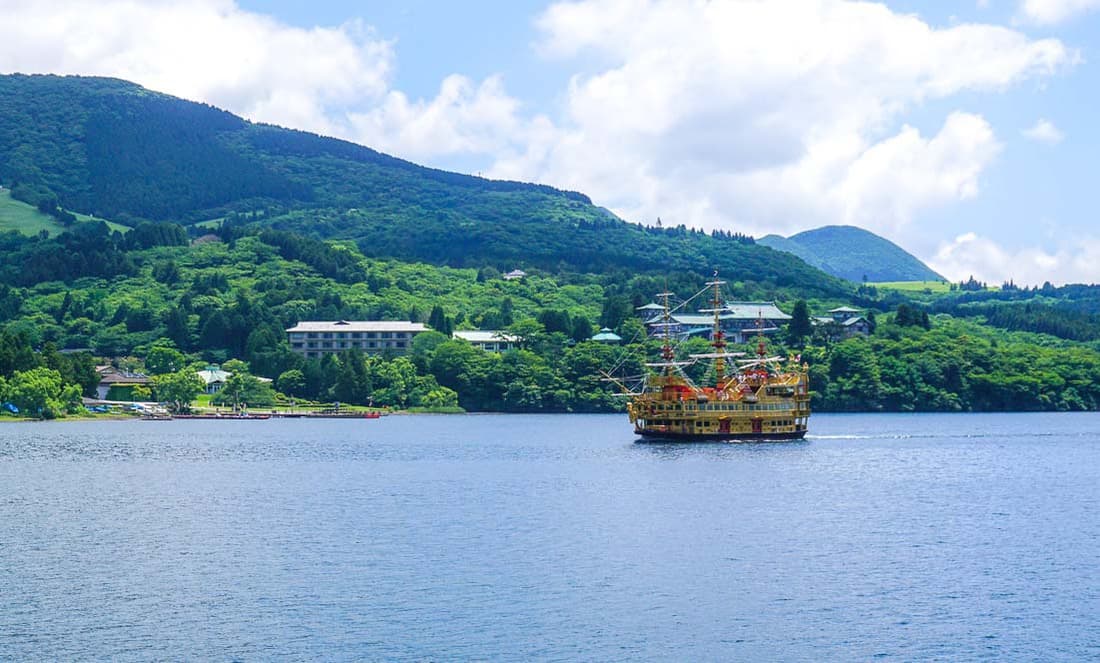
- The cable cars finish down by the stunning Lake Ashi which is also where the bus dropped us off.
- From here we used our Hakone Pass to take a cruise across the lake which was just beautiful. Such a change from Tokyo – I just loved Hakone!! The cruise takes around 30 minutes and is in a pirate ship! Family friendly Japan strikes again!
- The cruise is 1200 yen ($12.26 AUD) per adult or 750 yen ($7.97 AUD) per child – or free for unlimited cruises with the Hakone Pass.
Checkpoint Museum

- Once we got off the cruise we walked around to the Checkpoint Museum.
- We spent around an hour here and it’s also where we got our first glimpse of the gorgeous Mt Fuji!
- The Checkpoint Museum is 500 yen ($5 AUD) per adult and 250 yen ($2.50 AUD) per child. With the Hakone Free Pass you get a discount of 100 yen ($1.10 AUD).
Mishima Skywalk

- From the Checkpoint Museum, we took the bus (which is included in the Hakone Free Pass) to the Mishima Skywalk.
- We spent about 30 minutes walking across the Skywalk.
- The Skywalk is 1000 yen ($10 AUD) per adult and 500 yen ($5 AUD) per child. With the Hakone Free Pass you get a discount of 100 yen ($1.10 AUD).
Hakone Kowakien Yunessun

- From the Skywalk we then took the bus up to the fun Hakone Kowakien Yunessun. Hakone is all about hot onsens right – you know the romantic type where you relax with your partner – but pop a kid in the mix and you’re best off going to Kowakien Yunessun – which is like a warm water park. It has warm pools, water slides and pools such as the coffee pool, red wine pool etc. There are both inside and outside pools.
- You could easily spend the entire day hanging out at the Kowakien Yunessun, but we just spent a few hours here.
- Entry is 2500 yen per adult ($27 AUD) and 1400 yen ($15 AUD) per child. You do get a small discount with your Hakone Free Pass.
- From here we headed back to our accommodation.
Day 9: Travel to Nagoya
Here is a brief overview of how we spent day 9 of our family travel to Japan:
Hakone Open-Air Museum

- In the morning we checked out of our hotel (left our luggage there) and went to visit the Hakone Outdoor Museum.
- The Hakone Open-Air Museum is surprisingly one of the wonderful places to visit when traveling to Japan with kids – Myla just loved the place. Plenty of interactive things for the kids to do here.
- We were short on time so only spent 2 hours here – but could have easily spent another hour or so.
- Entry is 1600 yen per adult ($17 AUD) and 800 yen ($9 AUD) per child.
Travel from Hakone to Nagoya
- We then made our way to Nagoya Legoland by train. The entire trip took around 3 hours.
- Apart from the Legoland Hotel , there is really no other option for a hotel so that’s where we stayed. The hotel is super expensive, so if you’re looking at where to stay in Japan on a budget – this isn’t it and does not meet our usual budget requirements – but I guess this was our splurge of the trip and it is super fun for the kids to stay in the Legoland Resort where absolutely everything is Lego themed, including the food! Click here to see the current pricing of the Legoland Hotel.

Day 10: Legoland
Day 10 of our Japan 21 day itinerary was all about visiting Legoland! Click here to read our complete guide to Legoland in Japan.
- Legoland is just metres from the resort, which is awesome if you’re on a Japan holiday with toddler or travelling to Japan with a baby as you can easily come back to the hotel for a rest in the middle of the day if need be.
- We spent the entire day at Legoland – Legoland is really great for younger kids. All the kids in our group loved it!
- Again we had pre-purchased our tickets through Klook. We did check booking our hotel with tickets but once again it worked out cheaper to get the tickets through Klook. Entry at the gate is 7600 yen ($82 AUD) per adult and 4500 yen ($45.80 AUD) per child (3-12). Klook are currently selling tickets for 4400 yen ($45 AUD) per adult and 3500 yen ($39.45 AUD) per child (3-12) so a HUGE saving!!! Click here to book your discounted Legoland tickets.
Day 11: Travel from Nagoya to Kyoto
Day 11 was all about traveling from Nagoya to Kyoto. This trip took about 1 hour.
Click here for our full guide on Kyoto with kids.
Kyoto Accommodation
In Kyoto we stayed in Kyoumachiya Inn Rakuoan (pictured to the right), which is a gorgeous little traditional Rykon in the back streets of Kyoto. This was a three-bedroom house and we shared it with our friends who were doing a 2 weeks Japan itinerary. Click here to check out accommodation options in Kyoto.
We spent the afternoon getting some groceries for our home in Kyoto as well as exploring the little narrow laneways around our accommodation.
Click here for our full guide on where to stay in Kyoto with kids.
Day 12: Explore Kyoto
Day 12 our friends who were doing a Japan 2 weeks itinerary – took the train to Osaka to spend the day at Universal Studios in Osaka – one of the great attractions in Japan for families. We were going to Osaka after Kyoto, but they were ending their trip in Kyoto. If you’re doing a Japan 14 days itinerary – this may be something you might also like to consider. See more details about Universal Studios below.
This is a brief overview of what we got up to on day 12 of our Japan trip with family:
Fushimi Inari Shrine

- We took the train to the Fushimi Inari Shrine – which is one of the most popular things to do in all of Kyoto and so not surprisingly the place was absolutely packed! If I had my time again I would come here super early in the morning or late in the afternoon to avoid the crowds.
- There are lots of walking tracks here and things to do around the temple so you could easily spend at least half a day here, however given we were short on time we only spent around 2 hours here.
- Entry is free.
Kinkaku-Ji Temple

- We then took a train then bus to the Kinkaku-Ji Temple, also known as the Golden Pavilion.
- I have to say I was a little disappointed with this temple – sure it’s beautiful, but apart from looking at it, there isn’t much to do here. We were probably in and out within 30 minutes. If you’re short on time – give this one a miss.
- The Kinkaku-Ji Temple entry is 500 yen ($5.65 AUD) per adult and 300 yen ($3.25 AUD) per child (7-15).
Nishiki Markets

- From the Kinkaku-Ji Temple we made our way back to downtown Kyoto by bus and checked out the Nishiki Markets.
- For seafood lovers, you’re in for a real treat as there are lots of interesting things to eat. We just stuck with some ice cream though.
- We had also planned on visiting the Imperial Palace which is close to the markets – but we simply ran out of time and steam to be honest (so keep in mind if travelling to Japan with toddlers that little legs will get tired quicker), and so from here we walked back to our accommodation.
Pontocho Alley
- In the evening we headed out to the pretty little area called Pontoco Alley. This area is filled with bars and places to eat and is a must-do while in Kyoto.
- We found a lovely little place that served Shabu Shabu and then afterwards slowly strolled the narrow laneways before heading back to our accommodation.
Day 13: Explore Kyoto
Here is a brief overview of how we spent day 13 of our family vacation to Japan:
Nijo Castle

- We started the day by taking the bus to Nijo Castle. There is plenty to see here so we spent a few hours.
- Entry to the castle is 1300 yen ($13.30 AUD) per adult and 400 yen ($4.09) per child.
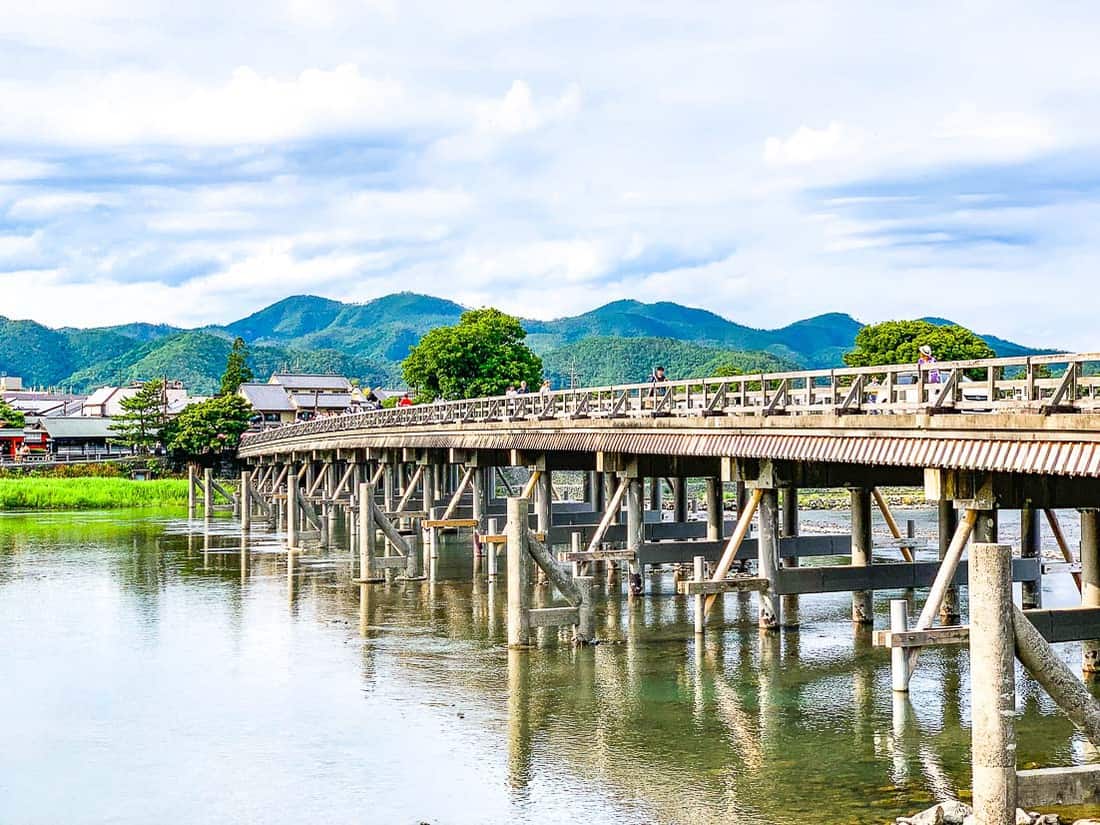
- From Nijo Castle we took a bus to the lovely tourist area of Arashiyama. I really loved this area, it was probably my personal favourite place in Kyoto.
- First of all we had lunch in Arashiyama and strolled around the shops for a bit.
- Then we walked to the Arashiyama Bamboo Grove which is just a short walk away from the main street. Entry to the Bambo Grove is free.
- We then walked across the lovely Togetsu-kyo bridge and over to the entrance of the Arashiyama Monkey Park – which was about a 15-minute walk. From here its a fairly steep walk up to the Monkey Park and takes around 30-45 minutes (depending on how often you have to stop due to tired children! – also keep this in mind if you’re travelling Japan with a baby and have to push strollers/use a carrier). It’s a little hard going and the kids did complain – but worth it once you get to the top and see the super cute wild monkeys. Entry to the Monkey Park is 600 yen ($6 AUD) per adult and 300 yen ($3.25 AUD) per child.
- We then took a bus back to our accommodation.
- Arashyiama is a great place and you easily spend the entire day here if you had more time. But we also found half a day was a good amount of time to see the highlights.
Maiko Dance
- Later in the evening, our friends went to check out the Maiko Dance which happens every night at 6.15 pm outside the Touzan Bar at the Hyatt Regency. We didn’t go simply because we were exhausted – but definitely put this on your list too for Kyoto itinerary with kids. It’s free to watch.
Day 14: Kyoto
Day 14 was the last day of our friend’s 14 days Japan itinerary and also our last day in Kyoto. Here is how we spent our last day in Kyoto:
Kiyomizu-dera Temple

- From our accommodation, we took the bus to Kiyomizu-dera Temple. As you can see, from here you have great views across all of Kyoto.
- You can explore the grounds of the temple for free, but to enter it is 400 yen ($4.35 AUD) per adult and 200 yen ($2.20 AUD) per child.
- We spent around an hour or so here. You could spend longer exploring all the walking trails – but as usual, we were short on time. If you’re going to visit just one temple in Kyoto, I’d visit Kiyomizu-dera in Japan with family.
Gion District
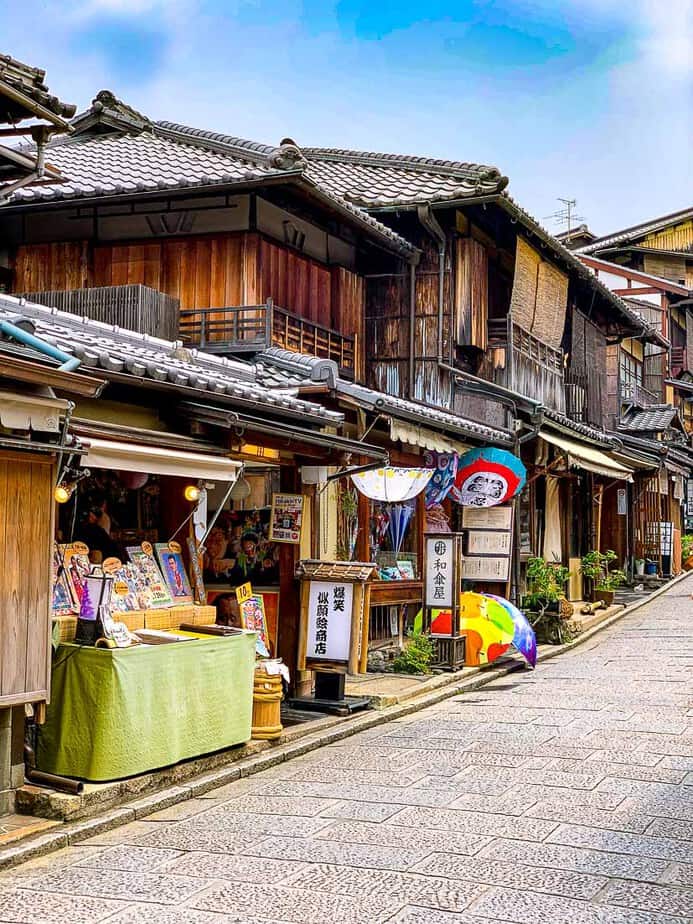
- From the Kiyomizu-dera Temple, we walked around the streets of the Gion District which are full of tourist shops, restaurants and cafes.
- Be sure to check out streets such as Ninen-zaka Street and Sannen Zaka Street for old traditional wooden houses.
- We had lunch in this area, which we found fairly expensive compared to anywhere else in Kyoto – but I guess that’s because there are a lot of tourists around here.
- We spent an hour or so slowly strolling through the streets and looking in the odd shop. If you are a shopper, definitely add this to your Japan trip planner, and you would probably spend a lot more time (and money) than we did!
Kodai-ji Temple

- From the streets of the Gion District, it’s just a short walk to the Kodai-ji Temple which I visited alone – I think most of the group were over temples by this stage.
- This is a really pretty temple, but reasonably small compared to some of the others. I spent around 30 minutes here – but given some of the group was waiting for me outside, I did walk quickly – I could have spent another 15 or so minutes here.
- Entry to Kodai-ji temple is 600 yen ($6.50 AUD) per adult and 250 yen ($2.70 AUD) per child.
Ryozen Kannon Statute
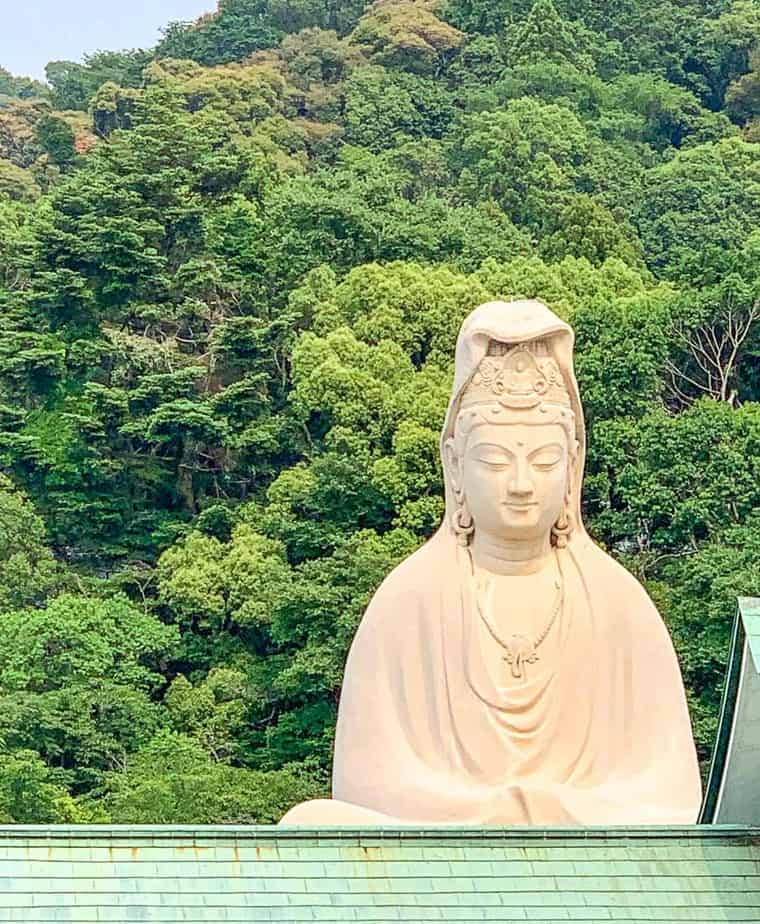
- From the Kodai-Ji Temple, I wanted to visit the Ryozen Kannon Statute – but I couldn’t for the life of me work out how to get into the complex. The statue is huge and I could see it, but just couldn’t work out how to get there. Plus the others in my group were tired and not that interested – so I took a picture and we moved on.
- If unlike me, you do work out how to get to the Ryozen Kannon Statute, entry is 300 yen ($3.25 AUD) per adult and 100 yen ($1.10 AUD) per child.
Day 15: Travel to Osaka – With a Stop in Nara
On day 15 we said good bye to our friends as their two weeks in Japan came to an end. They flew back from Osaka to Narita for their flight back to Australia.
Here is a brief overview of how we spent day 15 in Japan:
Nara Deer Park

- On our way to Osaka we stopped off at Nara as we wanted to visit the Nara Deer Park.
- It was really easy to stop off on our way as the train station at Nara has large lockers that we could leave our luggage in while we visited the Deer Park – Japan family travel does have it’s conveniences!
- The Deer Park is free to visit and you can buy some food to feed the deer if you like. However I’d probably advise against this as the Deer are pretty pushy towards the people with food and it can be a bit scary for the little ones – even adults too!
- We then walked around Higashimuki which is the shopping area of Nara and had some lunch. I also wanted to see the guys pound the Mochi (sticky rice cake) in Nakatanidou, but by the time we had got there they were finishing up for the day. Check it out here . Pretty unique to see on your family holiday, Japan.
Osaka Accommodation
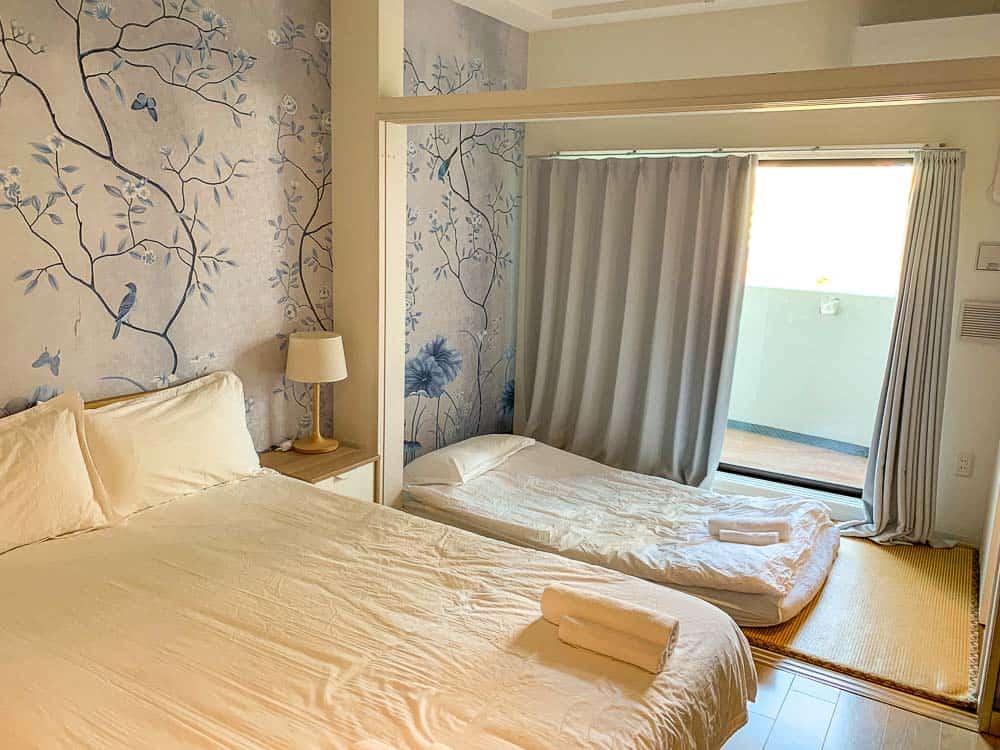
- We then continued our journey onto Osaka and checked into our accommodation.
- In Osaka we stayed in Ostay Umeda DDC Hotel Apartment , which was a great self-contained studio apartment close to the Osaka – Umeda train station. Click here to check out a range of properties in Osaka for your Japan holidays with kids.
Click here for our full guide on where to stay in Osaka with kids.

- We only had a super brief stay in Osaka, so no sooner had we dropped out bags, we headed straight to Dotonbori.
- In Dotonbori we took the 20-minute Tombori River Cruise. This provided a good brief overview of the area and also gave us an opportunity to see all the famous Dotonbori Billboards – can only imagine what this area must look like at night!
- The River cruises depart every hour and half hour and cost 1200 yen ($12.29 AUD) per adult and 400 yen ($4.35 AUD) per child (6-12).
- Dotonbori is also a shoppers heaven, with long shopping arcades absolutely everywhere. We’re not shoppers so pretty much bypassed this.
- We then took a stroll down to the older area of Dotonbori – Hozenji Yokocho. This area is where you will find sweet narrow laneways that head in the direction of the Hozenji Temple. I loved strolling around this area. The laneways are filled with small food shops and cafes. Too bad we didn’t have long here as I would have loved to have eaten in a few of these restaurants.⠀
- We then headed back to our accommodation in Umeda and headed out for dinner at a super cute Okonomiyaki place.
Click here for our full guide on things to do in Osaka with kids.
Day 16: Universal Studios

On day 16 of our Japan trip we headed to Universal Studios:
- We took the train to Universal Studios which was absolutely fantastic and we all loved it. There is plenty to do here for young and old – great rides and awesome shows too. I’ll provide further detail about Universal Studios in a separate post.
- Make sure you are at the park just before it opens as we found it much quieter at this time. And plan to spend the entire day here.
- Entry to Universal Studios is super expensive and there is a range of ticket options too. One day tickets start at 8600 yen ($97.22 AUD) per adult (12+) and kids are 5600 yen ($63.30 AUD) (4-11 – so if travelling Japan with a toddler, they’re free!). We pre-purchased our tickets via Klook. Klook don’t sell them at a discounted rate or anything – but you do accumulate loyalty points for your purchases – so might as well buy everything in the one place. Click here to purchase your Universal Studios from Klook.
Day 17: Explore Osaka and Travel to Hiroshima
Here is a brief overview of how we spent day 17 in Japan:
Cup Noodles Museum

- In the morning we checked out of our accommodation and took the train to visit the Cup Noodles Museum. We left our luggage at the train station by Cup Noodles Museum.
- The Cup Noodles Museum is great for kids and well recommended. We visited on a weekend and it was packed, so I’d recommend getting there by opening hours or maybe it’s not so busy during the week.
- We spent around 2 hours here, but at least 30 minutes of this was lining up, so on a quieter day you could probably get away with less time here.
- Entry to Cup Noodles Museum is free, however if you want to create your own Cup of Noodles – which you should – it is 500 yen ($5.65 AUD).

- We then took the train to Kid’s Plaza – which is basically heaven for kids! Kids Plaza is like a museum – but better! Across various levels – this place has a range of awesome things for kids to discover and play with.
- There is a huge playground the kids can climb, hide and slide in, as well as an area where the kids can try out a range of occupations such as shop keepers, firemen, and postman, as well as musical instruments, science equipment and heaps more.
- We spent around 2 hours here, but you could easily spend at least half the day – there is just so much to do here.
- Entry to Kids Plaza is 1400 yen ($15.25 AUD) for adults, 800 yen ($8.70 AUD) for school kids and 500 yen ($5.45 AUD) for preschoolers. Kids under 3 are free.
Travel to Hiroshima
- We then said goodbye to Osaka and left for Hiroshima, the last destination of our 3 weeks in Japan itinerary.
- We arrived late afternoon in Hiroshima and checked in at our accommodation; Chidori Inn Fukuromachi Hiroshima. Our accommodation was surprisingly huge (well for Japanese standards) with a separate living area and sleeping area. Click here to check current pricing .
Click here to read our full guide on where to stay in Hiroshima.
Day 18: Day Trip to Miyajima Island

On day 18 we took a day trip from Hiroshima to Miyajima Island – one of my favorite places on this trip to Japan. I will explain more about what we did in another post, but here is a brief overview for your Japan family itinerary planning:
- We took the train from Hiroshima to the ferry and from here we took the short 10-minute ferry ride across to Miyajima Island. The return ferry trip is 360 yen ($3.90 AUD) per adult and 180 yen ($1.95 AUD) per child.
- We took the cable car up to Mt Misen – which was just stunning! Even the walk through the forest to get to the cable car was gorgeous. The cable car is 2000 yen ($22.60 AUD) return per adult and 1000 yen ($11.30 AUD) return for children. Many people take the cable car up and walk back down so one way it is 1100 yen ($12.45 AUD) per adult and 550 yen ($6.25 AUD) per child.
- We saw the Itsukushima Shrine – entry is 500 yen ($5.12 AUD) per adult, 300 yen ($3.07 AUD) per high school student and 150 yen ($1.53 AUD) for children 6 and older. As well as the famous Floating Torii, which as you can see from above was under construction during our visit.
- Visited the Miyajima History and Folklore Museum – entry is 300 yen ($3.25 AUD) per adult, 170 yen ($1.85 AUD) per high school student and 150 yen ($1.63 AUD) for kids.
- We walked around Omotesando Shopping Street.
- Saw the Hokoku Shrine – 5 Story Pagoda and Daisho-in Temple.
Day 19: Visit the Hiroshima Peace Museum and Memorial Park
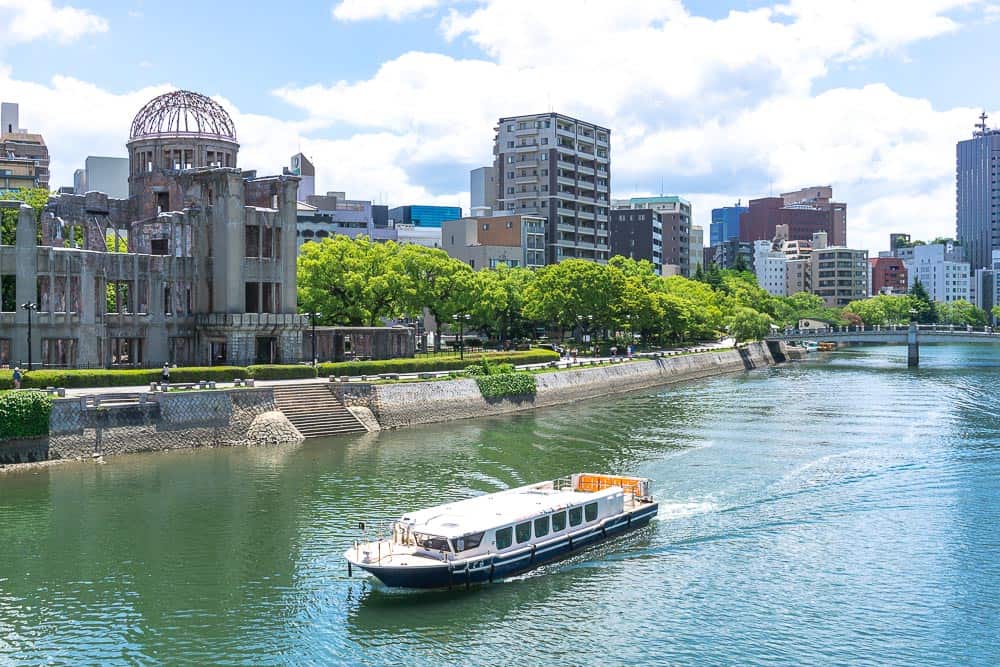
On our last day in Japan, we spent the morning at the Hiroshima Peace Museum and Memorial Park before returning to Tokyo for our flight home.
Hiroshima Peace Memorial Museum
- First up, we checked out of our accommodation and left our luggage in the lockers at the museum.
- For months and weeks before visiting, Andy and I were conflicted as to whether or not to go to the Museum as it would mean, of course, bringing Myla. In the end, we decided to take her and talked about what happened there in an age-appropriate way before arriving. We shielded her from some of the more graphic pictures and stories – but we spoke to her not only about the human suffering but also about the determination in the people to survive, rebuild, forgive and ultimately advocate for world peace.
- The Museum is fantastic, and we spent at least 90 minutes here – if I wasn’t with Myla, I could have probably spent even longer here – there is just so much to look at and to read.
- Entry to the Museum is 200 yen ($2.20 AUD) per adult, 100 yen ($1.10 AUD) for high school students and other children are free.
Hiroshima Peace Memorial Park
- Right outside the museum is the Hiroshima Peace Memorial Park. There is a range of different monuments to look at here including the Atomic Dome and the Children’s Peace Monument.
- The Park is lovely, and it’s definitely worth looking at all the different monuments here. We spent an hour or so here.
Travel to Tokyo and Fly Home
- Around midday, we then got our luggage and took a train back to Tokyo and onto Narita Airport. Later that night we caught a 9pm flight direct to Gold Coast and our Japan trip came to an end.
Final Verdict
We all thought our family trip to Japan was brilliant! There are so many great Japan activities for kids that you will definitely benefit from planning out you’re itinerary first – hopefully, you can use the information contained in this post as a sample Japan itinerary for your own trip. As you can see, a lot of work went into planning this trip – so if you’re planning a trip to Japan, why not save yourself some time and use this as a basis for your own trip to Japan.
____________________________________________________________________________________
We hope this ultimate itinerary in Japan has been helpful. For some of the best family hotels in Tokyo click here and if you plan on visiting Legoland find out all the inside info here and for all the best things to do in Japan have a look here.
7 thoughts on “The Ultimate (and detailed) 3 Week Japan Itinerary with Kids”
This is awesome. Thanks so much.
Hi! Thank you. I’m interested in the 2 week itinerary please, where can I find that? Looks wonderful 😉
Hi Lindsey – the 14 day itinerary is the first 14 days of the trip – this is what the friends that were with us did. We continued on for another week in Osaka and Hiroshima.
Hi Melissa, great itinerary and I’m using this as a basis for our own family trip next year. Is there anything you would have done differently? Spent less or more time anywhere? Gone somewhere else instead? Thanks,
Hi Lauren – not really – but I have made some comments throughout the article about any suggestions or changes to the itinerary.
Can you advise on the budget of your 3 week trip?
I have listed prices throughout the article – so you’ll need to go through and add this up depending on how many people there are in your family. Will also of course depend on time of year as air fares and hotels change.
Leave a Comment Cancel reply
Save my name, email, and website in this browser for the next time I comment.
Get our Japan with Kids Itinerary FREE!
Get our free 44-page guide which our super-detailed day by day Japan with kids itinerary.
It includes all the best places Japan attractions (including where to get discount tickets), best budget family hotels & how best to get around.
Start planning that Japan trip now!
Thank you! Now check your email to confirm your request.
We won't send you spam. Unsubscribe at any time.

3 Week Japan Itinerary (Best Local Sights And Tips)
By: Author Aisha Preece
Do you need a 3 week Japan itinerary?
Are you intrigued by the bright lights of Tokyo or the serenity of Japanese bamboo forests? Planning a trip to Japan but don’t know where to start? Fret not, for this 3 week Japan itinerary will guide you!
Traveling to Japan can seem intimidating at first. The culture is incredibly unique, and the country itself is made up of 6852 islands. This means Japan has so much to offer – from big city life, charming ancient villages to breathtaking natural wonders.
You could easily spend three weeks in Japan, and it might still not be enough!
The right Japan travel itinerary for 3 weeks will allow you to experience a bit of everything.
WWB Writer Alea has created an epic 3 week Japan itinerary which includes the must-see highlights, while also exploring some off-the-beaten-track places:
Day 1 – 4: Tokyo
- Day 5 – 6: Lake Kawaguchiko at The Five Fuji Lakes
Day 7 – 9: Nagano, Yudanaka, Matsumoto
Day 10: kanazawa, day 11 – 13: kyoto, day 14: nara, day 15 – 17: osaka.
- Day 18 – 19: Hiroshima, Miyajima
Day 20 – 21: Fukuoka
DISCLOSURE:
Some of the links on here are affiliate links and I may earn if you click on them, AT NO EXTRA cost to you. Hope you find the information here useful! Thanks
Related Travel In Japan Posts:
- Epic 1 Day Itinerary In Osaka
- 11 Best Onsen In Hokkaido, Japan
- 8 Exquisite Off The Beaten Path Spots in Japan
- The Best Japan Onsen For Couples (21 Romantic Options!)
- A Japanese Homestay – The Ultimate Guide In 2022
- 11 Best Family Onsens in Japan In 2022
- 23 Mixed Onsens in Japan (For Couples and Families!) [2022]
- 55 Fun Things To Do At Busan [An Epic Guide for 2022]
The Best 3 Week Japan Itinerary

- Experience the bustling Shibuya Crossing and iconic Hachiko Statue
- Visit Yoyogi Park and Meiji-jingu Shrine
- Submerge yourself in Japanese pop culture at Harajuku
- Go to Shinjuku for great views at the Tokyo Metropolitan Observatory
- Experience Tokyo nightlife at Memory Lane (Omoide Yokocho) and Golden Gai
- Explore Japanese culture at The Imperial Palace
- Watch a once-in-a-lifetime show at The Robot Restaurant
- Eat your heart out at Tsukiji Outer Market
- Visit Asakusa for Tokyo Skytree and the historic Sensoji Temple
- Go to Odaiba for a fun immersive experience at TeamLab Borderless
- Go to Akihabara for the latest in electronics and Japanese anime
- Watch a Sumo match
- Go Park Hyatt’s New York Bar for a movie star experience
Tokyo is the natural place to start a Japan three week itinerary as most international flights will arrive at either Narita International Airport or Haneda Airport.
Shibuya is home to the city’s iconic Shibuya Crossing , as well as a myriad of attractions, food, drinks, and shopping.
This makes Shibuya a great place to stay during your trip to Tokyo.
Visit the Hachiko Statue at the exit of Shibuya Station that’s dedicated to the famously loyal dog , and of course, don’t forget to take a photo in the middle of the bustling Shibuya Crossing!
A short walk away from Shibuya is Yoyogi Park , a huge green lung that offers a nice respite from the crowds. If you happen to be there on a Sunday, watch out for the rockabilly dance crew who dance to 1950s rock and roll while dressed up like Elvis.
On the edge of the park is the Meiji-jingu Shrine , a grand shrine that was built in 1920 as a memorial to the country’s first modern-day rulers.
Harajuku is another quintessentially Tokyo area that you shouldn’t miss.
A stroll along Harajuku’s main street Takeshita Street will open your eyes to the latest Japanese pop culture and teenage fashion trends.
While you’re there, line up at one of the many crepe stores for some famous Harajuku crepes, or visit a cat cafe !
Head to Shinjuku for towering skyscrapers, vibrant nightlife, and bright neon lights.
Visit the Tokyo Metropolitan Government Building Observatory for a free birdseye view of the city. Then spend your evening exploring Memory Lane (Omoide Yokocho) and Golden Gai, atmospheric little alleyways crammed with tiny yakitori restaurants and bars.
Other attractions to visit in Tokyo:
- The Imperial Palace is located on beautiful large grounds. Guided tours are free, but pre-registration is required .
- The Robot Restaurant is a flashy, over-the-top live show with laser lights, loud music, and dancing robots. It may be touristy, but it’s a once-in-a-lifetime, only-in-Japan experience. Pre-booking tickets online tend to be cheaper than buying at the door.
- Go to Tsukiji Outer Market on an empty stomach and feast on the freshest sashimi you’ll ever eat.
- Spend an afternoon in the Asakusa area – Tokyo Skytree provides spectacular views 365 days a year (tickets start at ¥1100 or about USD 10 for adults ); the Sensoji temple is a beautiful ancient Buddhist temple that will take you back to a time bygone.
- Visit TeamLab Borderless , an interactive visual art exhibition that will blow your mind (and your Instagram feed). Tickets have to be pre-booked online . While you’re in Odaiba, take a ride on the giant Ferris wheel or stroll along the Rainbow Bridge.
- Head to the electronic district of Akihabara if you’re a video game or manga fan! This area is also known for its maid cafes , where you get served by waitresses dressed as (yup, you guessed it) maids.
- Watch a sumo match live. If your trip doesn’t coincide with tournament dates, you can still take a guided tou r to catch the morning sumo practice sessions.
- If you’re feeling fancy, channel your inner Scarlett Johansson at the Park Hyatt’s New York Bar , where the Oscar-winning Lost in Translation was filmed . It’s located on the 52nd floor, providing magnificent views and live jazz music.
Day 5 – 6: Lake Kawaguchiko at The Fuji Five Lakes

- Watch the sunrise over Mt. Fuji
- Take the Mt. Fuji Panoramic Railway for panoramic views
- Climb up to Chureito Pagoda
- Stay in a Ryokan with hot spring baths
No trip to Japan will be complete without visiting the iconic Mt. Fuji . This will be the next stop on our Japan 3 week itinerary.
Most people visit Mt. Fuji via a day trip from Tokyo to Hakone.
However, Mt. Fuji is famously shy, so a quick day trip may not guarantee a sighting. The Fuji Five Lakes region is right at the base of Mt. Fuji, promising closer and clearer views.
Spending a night there also means you’ll get to enjoy the stunning area without rushing. The best views of Mt. Fuji tend to be right after dawn or in the early morning.
Lake Kawaguchiko is the most accessible of the five lakes, with direct buses and trains available from Tokyo. Once you’ve reached Lake Kawaguchiko, you can take the Red Line Sightseeing Bus ( 1500 Yen or about USD 14 for a 2 day unlimited pass) to explore:
- A must-do in the area is the Mt. Fuji Panoramic Ropeway .
The cable car ascends to an observation deck near the peak of Mt. Tenjo more than 1000m above sea level, promising panoramic views of Mt. Fuji. You can choose to hike back down, which should take about 40 minutes.
- The Chureito Pagoda is a beautiful five-story shrine and peace memorial located on a mountainside. Getting to the top requires a steep climb of almost 400 steps , but it’s well worth it as it has one of the best views of Mt. Fuji!
- If you want to make the most of your overnight stay at Lake Kawaguchiko, you could consider staying at a ryokan . These are traditional Japanese inns where you’ll get to experience true Japanese culture.
As Lake Kawaguchiko is an area with natural hot springs, many ryokans in the area come with private onsens , or natural hot spring baths. Imagine taking a dip in a hot bath with open-air views of the mountainside and lakes!
Perfect addition to your 3 week Japan itinerary!

- Watch a traditional ceremony at Zenkoji Temple
- Play with snow monkeys at Jigokudani Snow Monkey Park
- Literally submerge yourself in Japanese hot bath culture at Shibu Onsen Village
- Experience history at Matsumoto Castle
From Lake Kawaguchiko, you will head back towards Tokyo where you’ll hop onto the Hokuriku Shinkansen train for Nagano.
Nagano is a laid-back small city that is also known as the entrance point to the Japanese Alps.
Nagano is less touristy than the previous stops on our 3 week Japan itinerary, so this is a fantastic way to experience a more intimate side of Japan.
There are still plenty of interesting attractions in the surrounding area, making Nagano the perfect base for day trips:
- In the city itself is Zenkoji Temple , a famous pilgrimage site that is one of Japan’s most important temples. It is known for its hidden Buddha statue from the 7th century, a replica of which is only shown to the public once every six years. If you’re an early bird, you can witness the monks conducting an ancient morning prayer ceremony at sunrise every morning.
- The Jigokudani Snow Monkey Park in Yudanaka is about a one-hour bus ride away from Nagano city. I don’t know if you’ve ever felt the need to watch snow monkeys bathe in hot springs, but…. Why wouldn’t you?
- There are also public bathhouses (for humans) nearby in Shibu Onsen village if you get inspired by the monkeys and want to experience a hot spring bath yourself. Japanese onsen water has high mineral content that is said to be beneficial for your skin and overall health .
- Matsumoto Castle is another must-see in the region. It is about an hour away from Nagano city via direct train, making it an easy day trip. Matsumoto Castle is Japan’s oldest castle as it still retains its original wooden structure. You can easily transport yourself back to the days of the samurai and ninja.

- Relax in the beautiful Kenroku-en Garden
- Visit Kanazawa Castle
- Pretend you’re a ninja at Myoryuji Temple
- Take a step back into the past at Nagamachi Samurai District
- Explore Higashi Chaya and visit a tea house
- Stop by at Kanazawa Yasue Gold Leaf Museum
- Take a food tour and visit Omicho Fish Market
From Nagano, jump back onto the shinkansen train for the next stop on our three week Japan itinerary – the charming and historic Kanazawa .
Kanazawa was not affected by the bombings during WW2, so it is one of the best-preserved old cities in Japan. It is known for its arts and crafts, samurai heritage, and world-famous cuisine:
- Visit Kenroku-en Garden . Designed by the reigning samurai family over hundreds of years, it is often recognized as one of Japan’s most beautiful gardens. It is especially popular during the cherry blossom season in spring or when the leaves change in autumn.
- Across from the gardens is Kanazawa Castle , home to the Maeda family that ruled the area. It has been restored in recent years and is free to visit.
- If you’re fascinated by ninjas, you must pay a visit to Myoryuji Temple , also known as the Ninja Temple. It has hidden tunnels, secret rooms, traps, and a labyrinth of corridors – perfect for making your 10-year-old Ninja Kid dreams come true. Pre-bookings are required.
- Understand samurai culture at Nagamachi Samurai District . The area has been preserved to look like how it did during the Edo era, with cobbled alleyways and earth-tiled houses. Visit the Nomura Clan Samurai House , which was the actual home of a wealthy samurai family.
- Take a walk through the old Geisha district of Higashi Chaya . Two tea houses are still operating, Ochaya Shima and Kaikaro , allowing you a glimpse into how geishas lived and worked.
- Kanazawa has been known for its production of gold leaves since the 16th century. Artisans continue practicing the ancient craft to this day, and you’ll be able to see gold leaf shops throughout the city. Visit the Kanazawa Yasue Gold Leaf Museum to understand the history, process, and symbolism behind this art.
- As a coastal town, Kanazawa is known for its incredibly fresh seafood, so don’t forget to indulge in some snow crab and fresh sushi! You may also opt to take a guided food tour that includes visiting the local Omicho Fish Market.

- Hike up the iconic orange gates of Fushimi Inari Shrine
- Visit Arashiyama for the surreal Bamboo Grove and Togetsukyo Bridge
- Be amazed at the beautiful Kinkaku-ji Golden Pavillion
- Take a step back in time while exploring Higashiyama and Gion
- Stroll along the The Philosopher’s Path to Ginkaku-ji
- Experience a traditional tea ceremony
Kyoto is Japan’s cultural capital and a must on any 3 weeks Japan itinerary. The Limited Express JR Thunderbird train will take you directly from Kanazawa to Kyoto along a scenic coastal route.
In many ways, Kyoto perfectly represents a blend of old and modern Japan. It may be a bit touristy, but Kyoto’s heritage and natural beauty mean it’s worth taking a few days to truly experience the city’s charms:
- Fushimi Inari Shrine is home to the iconic orange torii gates of Kyoto. It is a magical experience to wander through the seemingly endless path of more than 5000 gates. The 4km hike up to the summit takes 2-3 hours but is completely worth the view!
- Arashiyama is an area slightly on the outskirts of Kyoto and known for its beautiful Bamboo Grove . Be sure to go early as it can get pretty crowded (you want to be able to take some nice photos without a horde of tourists in the background!). Then take a stroll along the district’s charming streets until you reach the picturesque riverside and the famed Togetsukyo Bridge .
- Kinkaku-ji is Kyoto’s famous Golden Pavilion, and can be visited in the afternoon after Arashiyama. The entire top floors of the temple are covered in gold leaves, and its sprawling grounds make for a stunning view.
- Higashiyama and Gion are historic neighborhoods right in the heart of Kyoto. Wander along the narrow lanes and explore the wooden shops and many temples. Alternatively, you could sign up for a free walking tour to better understand the historical context of the area.
- The Philosopher’s Path is a beautiful 2km stone path alongside a canal, named after a famous Japanese philosopher who would walk this path on his way to university. It starts near the Silver Pavilion, Ginkaku-ji . The Philosopher’s Path is particularly popular in spring when the cherry blossoms are in full bloom, but it also makes a pleasant afternoon stroll any time of the year.
- While we might think of tea as just another cuppa to get us through the afternoon, tea ceremonies are a whole sophisticated ritual in Japan. And Kyoto is at the heart of Japanese tea ceremony culture. There are several tea houses in Kyoto trying to preserve this culture, and it is worth attending one to experience this magical ritual firsthand.

- Feed the deer at Nara Park
- See the giant Buddha statue at Todai-ji Temple
- Explore traditional Buddhist art at Kofukuji Temple
Nara is a relaxed little old town that was Japan’s first permanent capital. It’s very easy to get to via train, so many people opt to visit Nara as a day trip from Kyoto or Osaka. However, you can also choose to spend the night there as another stop along your 3 weeks in Japan itinerary:
- Nara Park is famous for having more than 1000 free-roaming deers. The deers used to be considered sacred, and today they have been classified as national treasures. You can buy crackers to feed the deers, and they’re known to bow back at visitors who bow to them!
- Todai-ji Temple is famous for its giant 15m high Buddha statue, said to be the world’s largest bronze Buddha statue.
- Kofukuji Temple and its adjacent Kofukuji National Treasure Hall are historical monuments filled with ancient Buddhist art.

- Experience the bright neon lights and buzz of Dotonbori
- Eat all the Osaka street food your stomach can fit
- Visit Shinsekai to be transported to a retro era
- Explore Osaka Castle
- Let your inner child out at Universal Studios Japan and The Wizarding World of Harry Potter
After experiencing the more traditional parts of Japan, we’re heading to the vibrant and bustling metropolis of Osaka !
Osaka is often dismissed as being Tokyo’s brasher, louder little sister, but it has its own character that shouldn’t be missed on a three weeks in Japan itinerary.
Osaka is well known for its street food, shopping, and vibrant nightlife:
- Dotonbori is Osaka’s main shopping and food arcade that is also famous for its vibrant neon billboards. Visit at night and don’t miss out on the iconic Glico Running Man and moving gigantic crab signs (you’ll know it when you see it). Then get some takoyaki balls from a street vendor to snack on while you absorb the sights and sounds around you.
- Osaka is known for its down-to-earth and affordable but delicious cuisine, so don’t miss out on trying kushikatsu (deep-fried skewers of seafood or meat) and okonomiyaki (grilled savory pancakes filled with cabbage and meat). Visit Kuromon Market for freshly grilled seafood and other food prepared on the spot for you – it’s not known as “Osaka’s Kitchen” for nothing!
- Shinsekai is a quirky little neighborhood known as the “Retro District”. It was modeled after Paris and New York’s Coney Island in the Post-war era, and its colorful retro shop fronts give off a sense of old Osaka.
- Osaka Castle is a symbol of the city and is considered one of the great castles of Japan. It is set in sprawling grounds, so one option is to take a bike tour to explore the whole area.
- Less than 30 minutes away from Osaka is Universal Studios Japan , one of the country’s best theme parks. It’s well known for being home to The Wizarding World of Harry Potter , so if you’re a Potterhead this is a must-do!
Day 18 – 19: Hiroshima and Miyajima

- Pay homage to the memories of the past at Hiroshima Peace Memorial Park and Museum
- Visit Miyajima for the iconic Itsukushima Shrine
- Take the Miyajima Ropeway for stunning views
Less than 2 hours away from Osaka via the shinkansen is Hiroshima . You may recognize the name from the horrific atomic bombing that happened during WW2, but Hiroshima has now rebuilt itself into a thriving city:
- The Hiroshima Peace Memorial Park is a huge tranquil park dedicated to the memory of those who perished in the war. At the center of the park is the Atomic Bomb Dome, which is the remains of a building that survived the bombing. The Hiroshima Peace Memorial Museum is located within the park to document the atrocities and aftermath of the bombing.
- Miyajima is a small island that’s a quick ferry ride away from Hiroshima that makes for a great day trip. It is famous for the Itsukushima Shrine that has an iconic floating gate out on the sea. You can also take the Miyajima Ropeway up to Mount Misen for stunning sea views. There are also multiple hiking and walking trails that cut across the island affording beautiful sights.

- Enjoy the beach at Momochi Seaside Park
- Explore Fukuoka’s gastronomical delights
- See the beautiful wisterias at Kawachi Fuji Garden
- Experience serenity at Nanzoin Temple
What better way to end a 3 weeks itinerary in Japan than at the Ramen Capital of the world? On the southern side of Japan, Fukuoka is a vibrant city that also boasts beautiful coastlines, parks, shopping, and world-famous cuisine, making it the perfect place to wrap up a Japanese holiday:
- Momochi Seaside Park is a 1km stretch of beach in the city that makes for a fun and relaxing afternoon. It’s popular for swimming, beach volleyball or just enjoying a nice meal on the patio of a seaside restaurant.
- Fukuoka is a gastronomist’s dream come true. Being closer to central Asia, its cuisine has infused elements of Chinese and Korean flavors. Go on a ramen crawl, try out a Fukuoka-style hot pot, or have some grilled yakitori (meat skewers) at a roadside yatai stall. If you’re feeling overwhelmed with options, sign up for a personalized food tour with a local guide.
- If you happen to be in Fukuoka during spring or autumn, the Kawachi Fuji Garden is a must-do. This private garden is famous for its spectacular number of wisteria plants, especially a collection of large wisteria trees that come together to form a drooping roof of flowers.
- Nanzoin Temple is home to one of the world’s largest reclining Buddha statues – at 41m long, it’s about the same size as the Statue of Liberty. Nestled amidst the mountains, the temple is a serene spot for contemplation,
How Much Does a Trip to Japan Cost for 3 Weeks?
Japan can be expensive to visit, but the cost for a 3 week Japan trip can vary wildly depending on your budget and preferences.
Accommodation and transport will take up most of your budget.
We will discuss this in more detail below, but broadly speaking a bed in a hostel dorm will start at about USD 18 .
Other factors to consider include food and attraction ticket costs. Flights and travel insurance are not included in this calculation.
- In general, for budget travelers – you should set aside at least USD 90-100 per day minimum for your trip to Japan. This would mean about USD 1890-2000 for a three week trip.
- For mid-range travelers (a more comfortable private room or a whole Airbnb apartment; eating at some sit-down restaurants) you would be looking at about USD 175-200 per day, so USD 3675-4200 for your entire 3 week Japan itinerary.
- The sky’s the limit if you’re looking to splurge – there are some reallyyyyy fancy luxury hotels and Michelin-star gourmet restaurants in Japan. But if you’re planning on staying in a hotel, you’ll be looking at upward of USD 350 per day, or USD 7350 for a three week trip.
Please note that these budgets are just estimates.
The cost might also be lower if you’re traveling as a couple or in a group, as accommodation costs may be split.
Best Time to Visit
Contrary to popular belief, I think Japan is worth a visit any time of the year, as each season has its pros and cons.
- Springtime, particularly March-April, is undoubtedly the most popular time of the year to visit Japan. The cherry blossoms are out in full bloom, and the weather is lovely.
However, this also means that prices are hiked up, and you may find many attractions crowded with tourists.
- I personally really enjoy Japan in Autumn.
The weather is still mild for traveling, and the color of changing leaves more than makes up for the lack of blooms. It’s also less packed and cheaper than spring.
- Summers in Japan can be really hot and humid, which might make it uncomfortable (and sweaty) to travel. Late summer is also the peak typhoon season.
- However, summer in Japan is also known for outdoor festivals – many towns have their own fireworks festivals with outdoor food and beer gardens. Summer is also the best time to go if you enjoy hiking.
- Winter is the cheapest and quietest time of the year to visit Japan . Japan is well known for winter sports, so a Japan winter itinerary might include skiing on the northern island of Hokkaido or even smaller ski resorts closer to Tokyo.
Also, what better way to beat the winter chill than slurping on a hot bowl of ramen and green tea?
Where to Stay In Japan
There is a wide range of accommodation available in Japan.
Prices will vary based on location and amenities. I would recommend staying closer to central locations – it may be slightly more expensive but it’ll save you travel time and cost:
- Budget travelers can opt to stay in hostel dorms – a bed in a standard dorm in Tokyo will cost about USD 20 .
- Mid-range travelers can opt for a private room or Airbnb apartmen t that might cost between USD 80-150
- Luxury hotels will set you back upward of USD 180 (but can go into the four figures as well)
However, if you want to experience something unique to Japan, here are a few other accommodation choices to consider:
- Ryokans are a truly traditional Japanese experience, complete with tatami mats, futons as mattresses, and yukata robes to wear. Most ryokan stays also include a full Japanese-style breakfast, and many have private onsens.
- Capsule hotels are little pods that are just big enough for you to sleep in. They are a cheap and basic alternative, especially if you plan to be out and about the whole day.
- Japan is home to the first robot hotel chain in the world . Yes, you read that right – this is a hotel where the receptionist, concierge, and other staff are all robots! The Hen na hotel chain has several locations all around the country.
What to Eat In Japan
Japan is truly a food haven, with Japanese culture emphasizing fresh, high-quality produce.
It is possible to eat well in Japan on any budget:
- Japanese konbinis or convenience stores are unlike anywhere else in the world . With 50,000 convenience stores across the country, they are ubiquitous on every street and are usually open 24 hours a day (the biggest ones are 7-11, Family Mart, and Lawson’s).
Convenience stores in Japan offer tasty and cheap food, like fried chicken, bento boxes, sandwiches, and rice balls. There’s also a dizzying array of drinks and desserts. It’s a great way to try a wide variety of Japanese food at an affordable price point.
- For most people, our first exposure to Japanese food is from sushi. Sushi in Japan is widely available – from conveyor belt restaurants (known as kaitenzushi ) to fancy omakase restaurants where sushi is made in front of diners. Seafood and sushi in Japan are incredibly fresh no matter the budget.
- Izakayas are small Japanese bars that offer sharing plates of food and drinks. They are very popular among locals after work (think of it as the Japanese equivalent of a British pub). It’s a great way to immerse yourself in a bit of local culture.
- Japan is also well known for its beef, particularly wagyu beef.
- You can try Japanese beef in multiple ways, such as yakiniku (grilled beef slices), teppanyaki (grilled on a hot iron plate) , gyudon (beef rice bowls), in a sukiyaki (hotpot), or gyukatsu (deep-fried beef cutlets). Your 3 week Japan itinerary is not completw without trying it (unless you don’t eat meat of course!)
- There are plenty of small local restaurants in Japan, many of them seating just 10-15 people along a counter. These restaurants tend to specialize in a particular food, e.g. ramen, udon, tempura, or curry rice. Don’t be afraid to walk into a random restaurant and just try something new!
How to Get Around Japan
To make the best of this 3 week Japan itinerary, I would highly recommend getting a Japan Rail Pass. JR Passes can be used on any JR Line train in Japan and are only available for foreign tourists, and can be bought for 7, 14, or 21 days.
A 21-day JR Pass for adults costs about USD 570.
While this might seem expensive, it is significantly cheaper than how much single-trip train rides between cities would cost otherwise.
This is particularly important for multi-city itineraries, but the JR Pass would also cover certain train lines within cities like Tokyo.
You must book your JR Pass online before arriving, and pick it up when you’re there. You can book it online here .
Unique Tips You Should Know When Visiting Japan
- Many people get overwhelmed by the idea of visiting a country that speaks a foreign language. Don’t be! Apps like Google Translate or TripLingo make it easy to read signs, menus, and instructions.
- You should pre-order PocketWifi or a Japanese sim card before your trip, and arrange to pick it up at the airport upon arrival. This would ensure you have internet access as quickly as possible.
- Japanese culture frowns upon eating while walking. You’ll notice people standing outside convenience stores or food stalls, finishing their food before they leave.
- You might realize that there aren’t many rubbish bins around, yet the streets are incredibly clean. This is because Japan places a lot of emphasis on hygiene, and most people will keep their trash with them until they reach home. Be sure not to litter!
- The Japanese are an incredibly polite society, so do be mindful. Bow back when you’re bowed to, and greet everyone you meet. It’s also considered rude to talk on the phone or listen to music out loud on trains.
Japan is an amazing country with so much to offer, and this 3 week Japan itinerary might just be the start!
10 road trips that will show you the best of Japan

Mar 28, 2024 • 7 min read
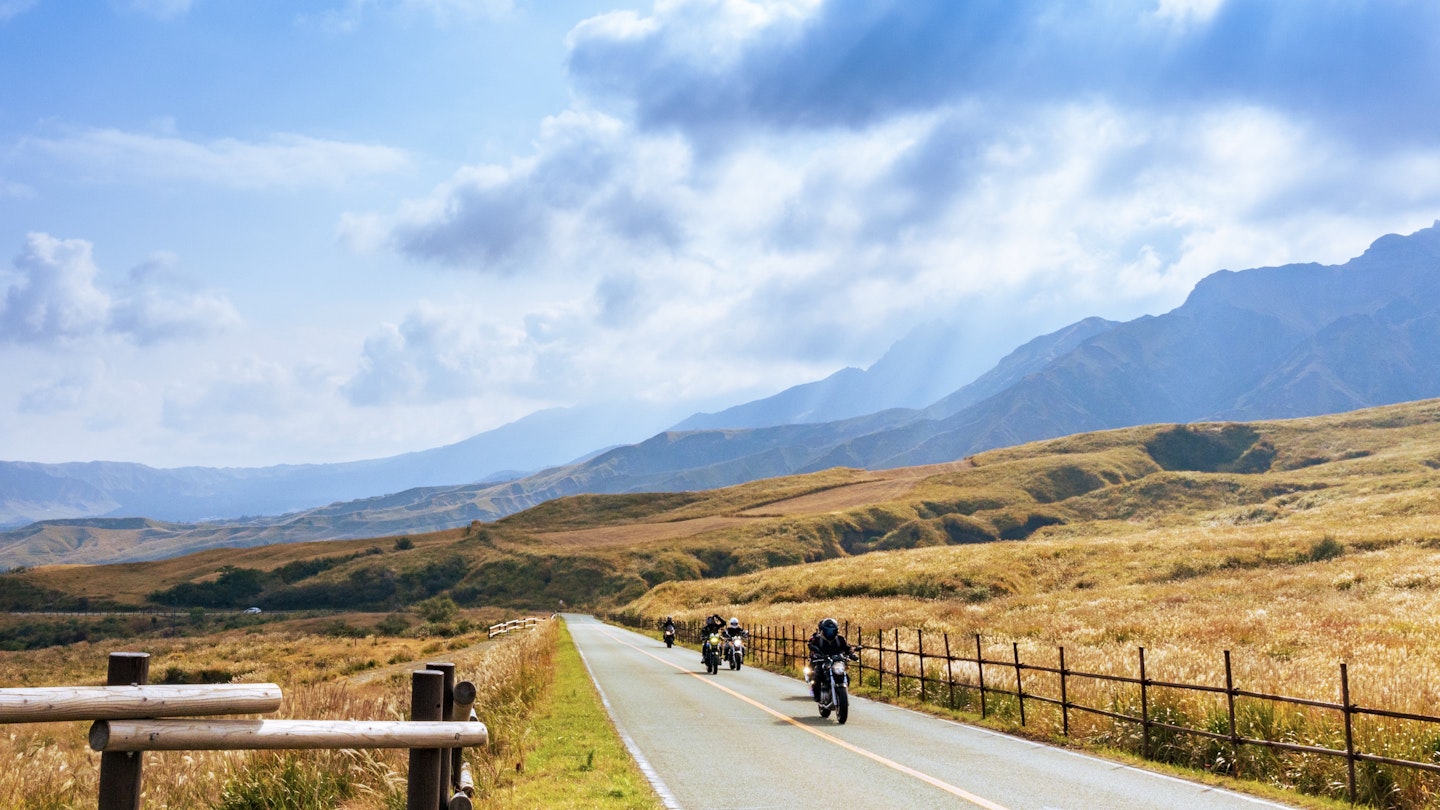
Hitting the road in Japan lets you take in spectacular landscapes, like those around volcanic Mt Aso in Kyūshū © grandspy_photos / Shutterstock
Want to see the best of Japan ? We suggest hitting the road.
Whether you’re swerving along the asphalt in the wild and expansive north, skirting the towering bluffs and wave-battered coasts of western Honshū , or winding through the archipelago of the Inland Sea, you can’t beat the freedom of being behind the wheel.
And as an island nation with nearly three-quarters of its terrain covered by mountains, Japan knows how to deliver epic scenic drives.
Buckle up: here’s the list of our 10 favorite road trips in Japan.
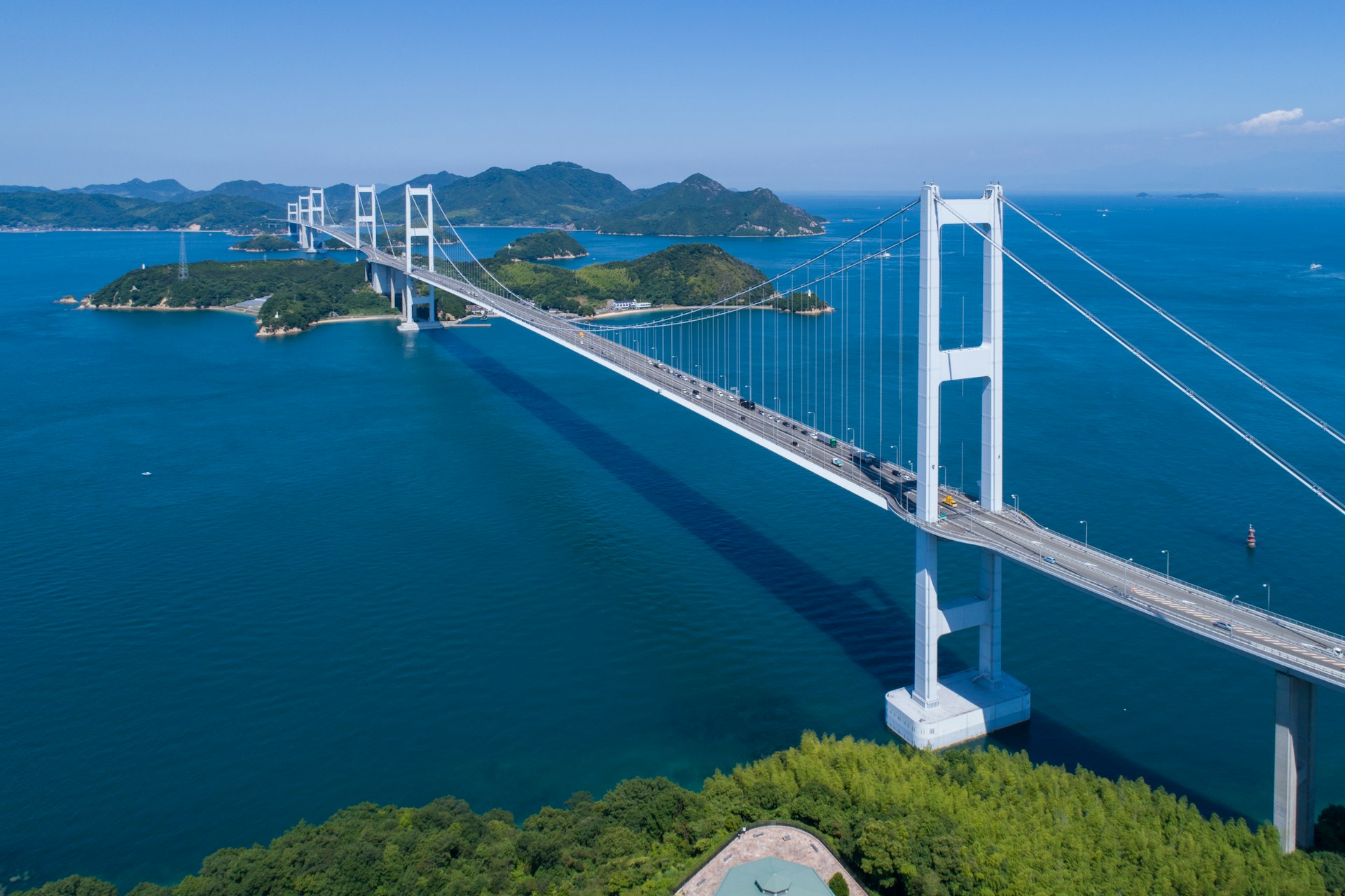
1. The Seto Inland Sea along the Shimanami Kaidō
Best road trip for scenic island-hopping via suspension bridges Onomichi – Imabari; 70km (43 miles), allow one day
A popular cycling and scenic driving route, the Shimanami Kaidō traces lazy “S” shapes along the Seto Inland Sea via wind-whipped suspension bridges and island villages lost in time.
Drivers who move at a leisurely pace will be rewarded with watercolor views of the Inland Sea haze silhouetting the many humpbacked islands that dot its expanse.
Detour: For a detour you won’t forget, check out Kōsan-ji , a singularly kitschy temple on the island of Ikuchi-jima. This garish religious monument fuses a litany of architectural styles, from Italian marble foundations to ancient Chinese iconography.
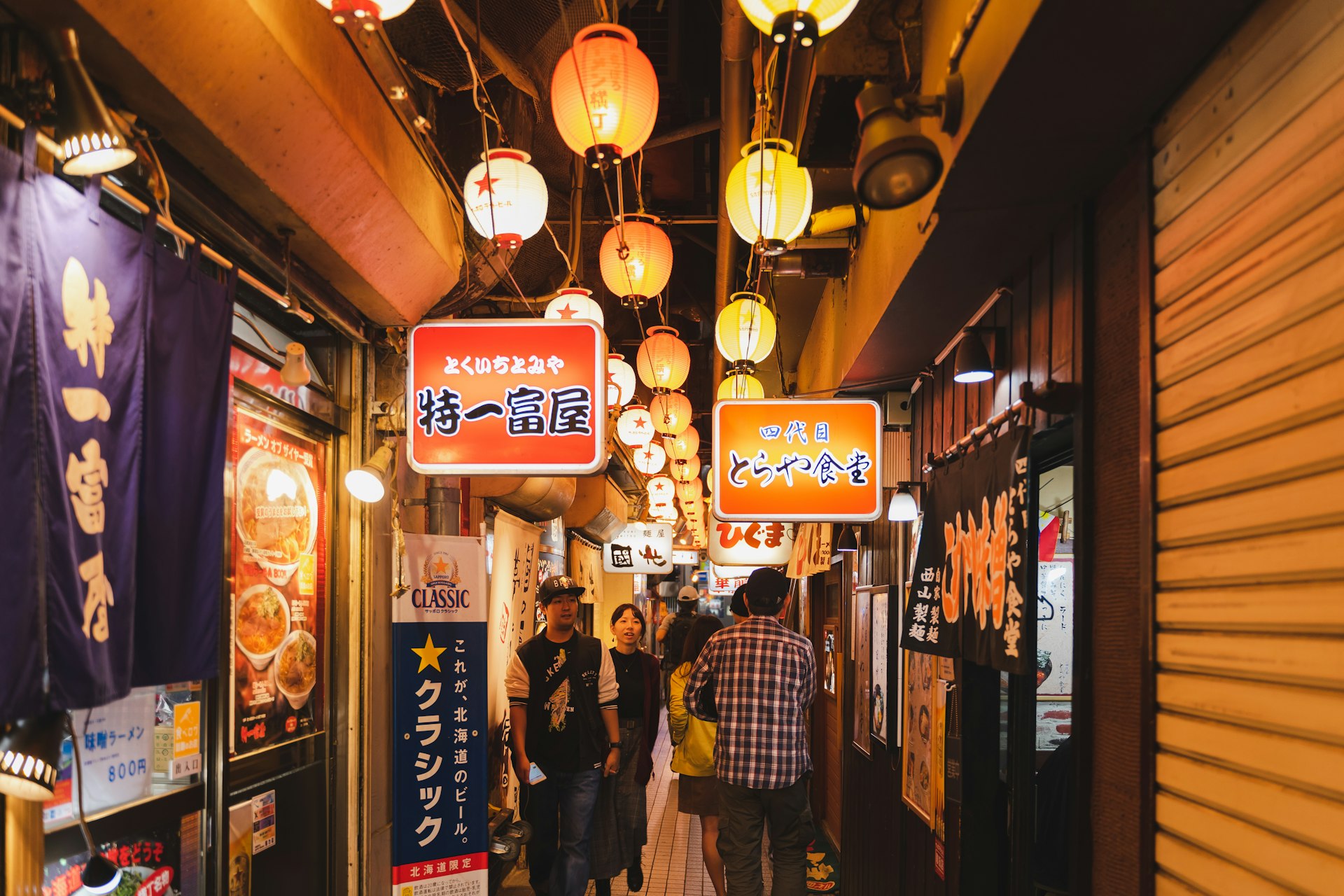
2. Coast-to-coast Hokkaidō
Best road trip for gorgeous northern countryside Rausu – Hakodate; 700km (435 miles), 3–4 days
Japan’s northernmost island, Hokkaidō is a driver’s dream: vast, untamed, sparsely populated and veined with quality roads (though they’re best avoided during winter’s copious snows).
The recommended coast-to-coast drive traverses over 400 miles (644km) of open road, from the UNESCO-recognized Shiretoko Peninsula in the east to the old colonial port town of Hakodate in the west.
Given the wealth of natural scenery and worthwhile diversions, this is a worth savoring slowly savored,: the 17-mile (27km) pencil-straight “Road to Heaven” highway (天に続く道); the calderas and primeval forests of Akan-Mashū National Park; the “Roller Coaster Rd,” which zigzags almost vertically through the pastoral farmlands of Biei; and Sapporo , a lively entertainment hub and the largest metropolis north of Tokyo .
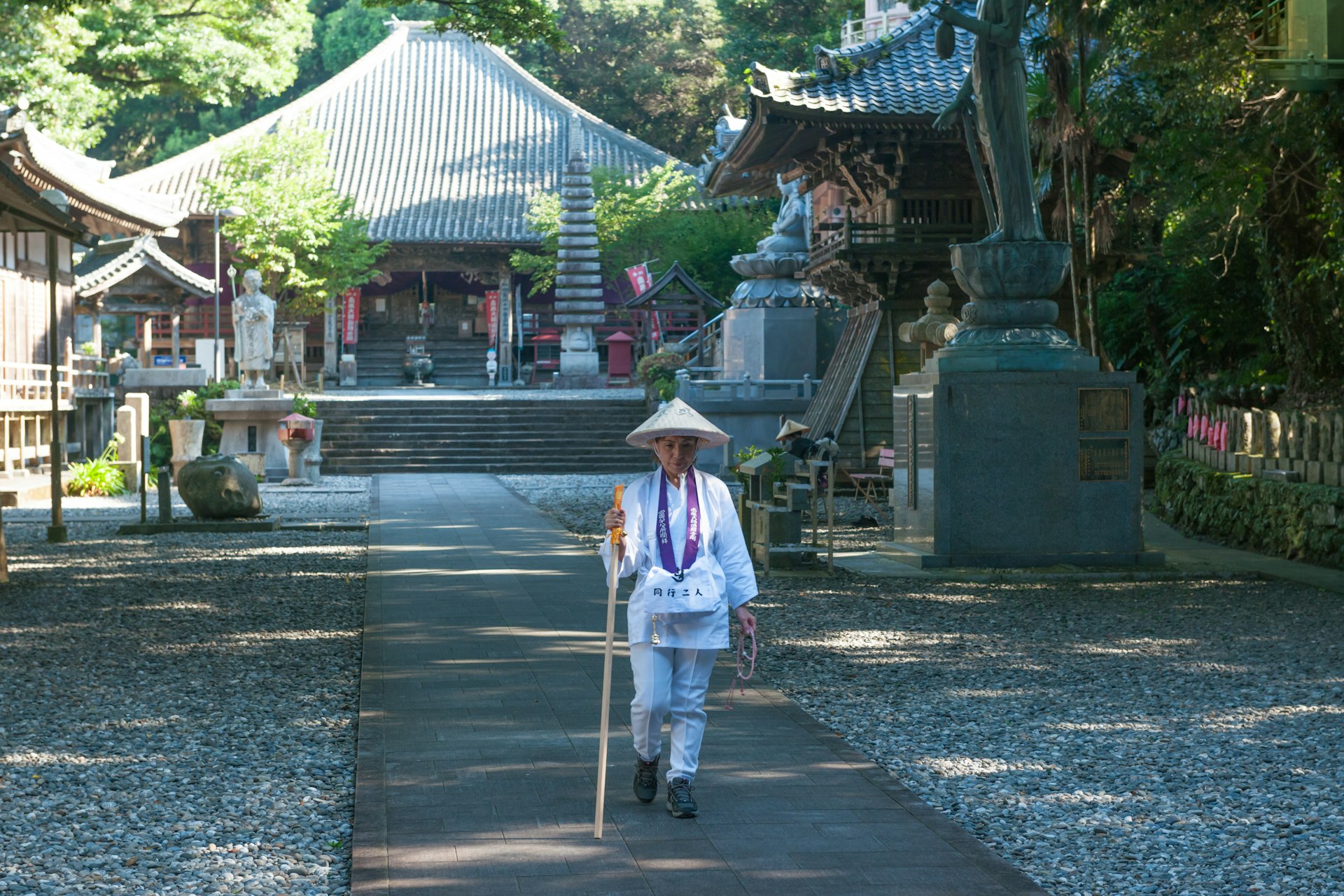
3. Shikoku’s 88 temples pilgrimage
Best road trip for meditative magic, secret surf spots and solitude Naruto – Sanuki; 1200km (745 miles), two weeks
It may seem antithetical to embark upon a pilgrimage on four wheels. Yet with 88 individual temples to discover along 1200 kilometers of terrain on the Shikoku henro (pilgrimage) – dedicated to the founder of Shingon Buddhism, Kōbō Daishi – you’re going to want all the help you can get.
We recommend entering from Kōbe along the Akashi-Kaikyo Bridge, the world’s longest suspension bridge (its main span is 2km /1.25 miles): you’ll have jaw-dropping sea-to-coast vistas.
The temple route traverses all four of Shikoku’s prefectures, passes through its most bustling port cities, and encourages plenty of stops for bucolic forest walks, onsen soaks and short temple sojourns.
Local tip: If you get lost, keep your eyes peeled for pilgrims in white clothes and carrying bamboo walk sticks along the roadsides.

4. Izu Peninsula to Hakone
Best road trip for variety, from sea level to Mt Fuji highs Minamiizu – Hakone; 115km (71 miles), 1–2 days
The epic route from the Izu Peninsula to Hakone is a favorite among driving enthusiasts.
From the Izu Peninsula ’s southern tip, the coastal highway passes through Shimoda, a surfers’ haunt and historic port town, and Higashiizu, whose “Moon Road” – so called for dreamy view of waxing moons that trace a beam of light across the Pacific – supposedly imbues any witness with a divine energy.
Further north, the road hugs the shores of Lake Ashi in Hakone , from which you’ll get scintillating views of Mt Fuji on a clear day.
Finish this road trip in style on the Hakone Skyline, a famously twisty tōge (mountain road) that served as an inspiration for the Hollywood movie The Fast and the Furious: Tokyo Drift (though the actual mountain drift-race scenes in the film were shot in LA).
Local tip: The driftway is one of 30-plus “Melody Roads” in Japan – the name derives from the tactile grooves that produce a range of notes as they send vibrations up through your car.
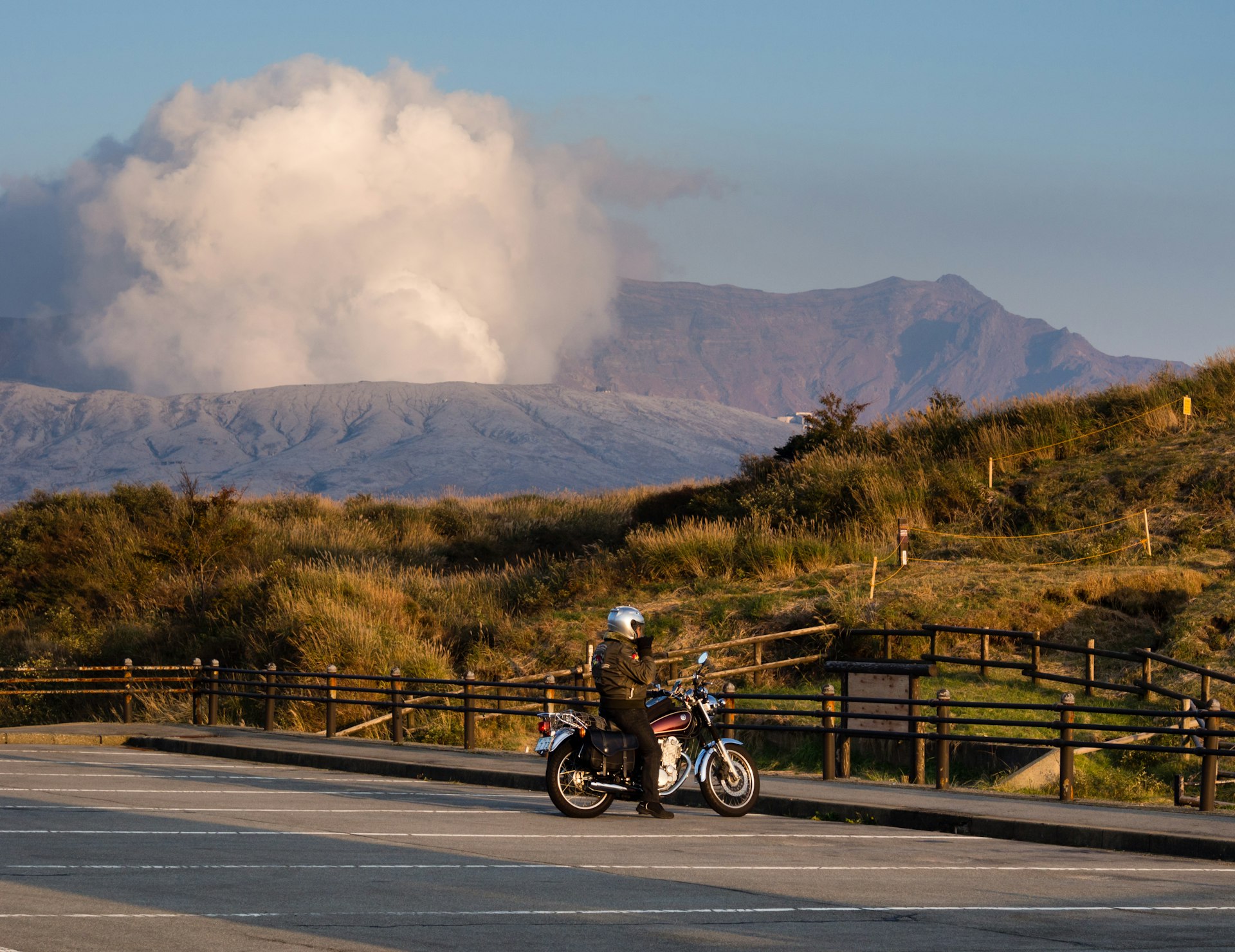
5. Kyūshū: Mt Aso to Cape Sata
Best road trip for soaking up subtropical volcanic vibes Mt. Aso – Cape Sata; 322km (200 miles), 2–3 days
Drive through the rolling grasslands of Kumamoto to find Japan’s largest caldera and active volcano, Mt Aso. The Aso Panorama Line offers the best course, weaving along the caldera’s outer rim and perpetually casting its gaze toward the belching volcano in the middle.
From Aso, head south along the spine of Kyūshū toward the most southern tip of Japan’s four main islands, Cape Sata.
Planning tip: Before you arrive at the observatory pinned to the Pacific coast, consider a night at one of the many onsen towns en route, or an overnight stay in the laid-back subtropical city of Kagoshima to enjoy some black pork, sweet-potato shōchū (distilled liquor) and views of volcano Sakurajima seemingly floating on the bay.
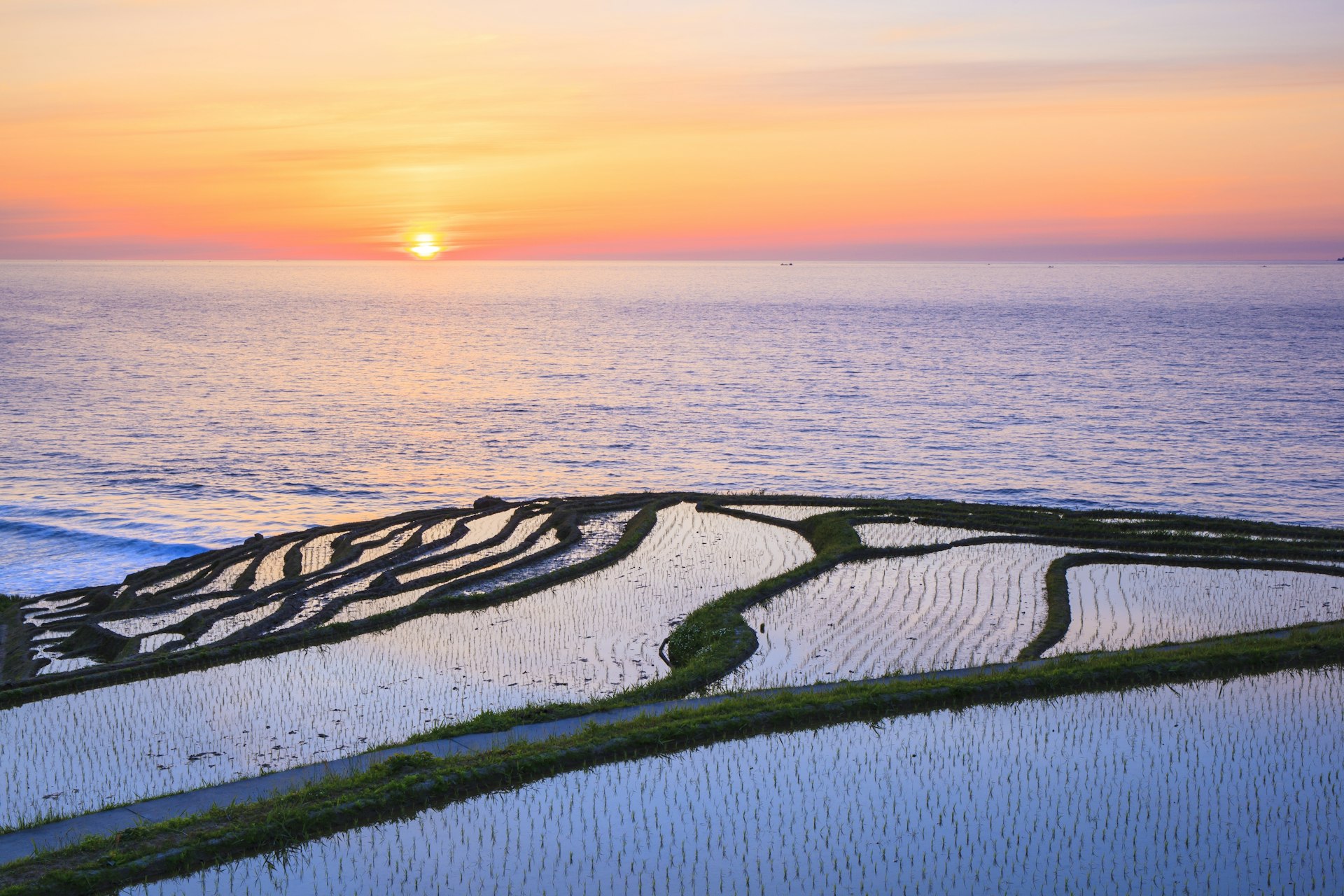
6. The Noto Peninsula drive
Best road trip for dramatic coastal seascapes Takaoka – Kanazawa; 236km (147 miles), 1–2 days
From the picture-perfect sunrise of Amaharashi Beach to the bracing coastline of Ishikawa Prefecture, this road trip will take you past some of Japan’s finest coastal scenery.
The route centers around Noto, a dark, rugged peninsula that’s home to solemn shrines and dramatic seascapes. In west Noto, you’ll also find the Shiroyone Senmaida rice terraces tumbling down toward the sea, and the port city of Wajima, with its 1000-year-old morning market.
Finish the journey in Kanazawa , a former samurai stronghold and custodian of Japan’s traditional arts and crafts.
Planning tip: The city is home to a number of enlightening museums, including the impressive 21st Century Museum of Contemporary Art .
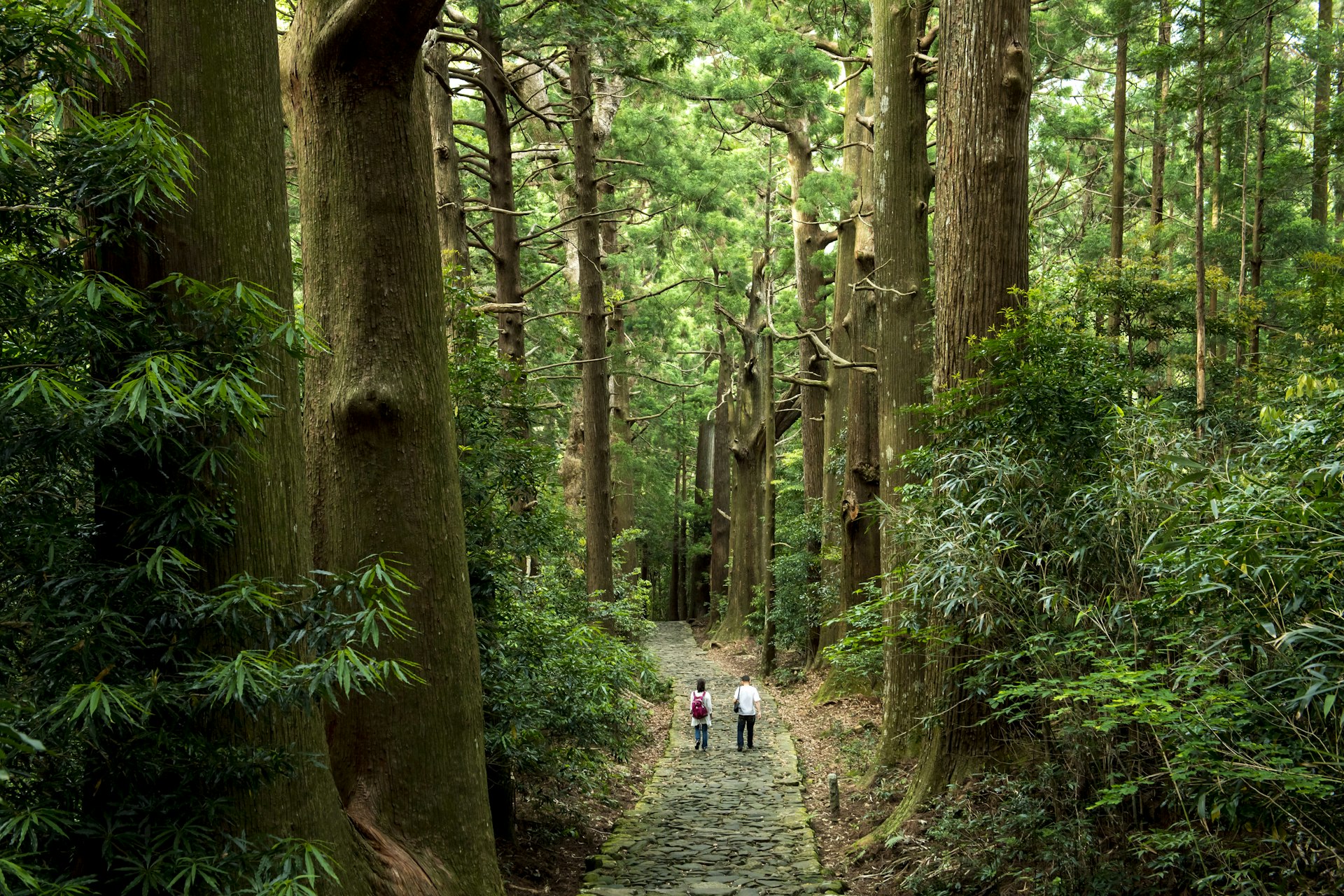
7. Coastal Wakayama
Best road trip for onsen , sacred trails and a castle Wakayama City – Shingu; 180km (112 miles), allow one day
Wakayama Prefecture sits on the bulbous Kii Peninsula south of the Osaka–Kyoto conurbation and is the gateway to the misty forests of the Kumano Kodō pilgrimage trail.
The 100-mile (160km) coastal road skirts Wakayama’s 16th-century feudal castle and the onsen (hot spring) resort town of Shirahama, where evening suns set behind the moon-shaped hole of Engetsu-tō Island.
The toothy rock features and soaring cliffs of Kushimoto in the south will both vie for your attention. The route culminates in Shingu on the Mie Prefecture border, where Kamikura-jinja shrine marks the spot upon which Japan’s Shinto gods are said to have first descended to the earth.
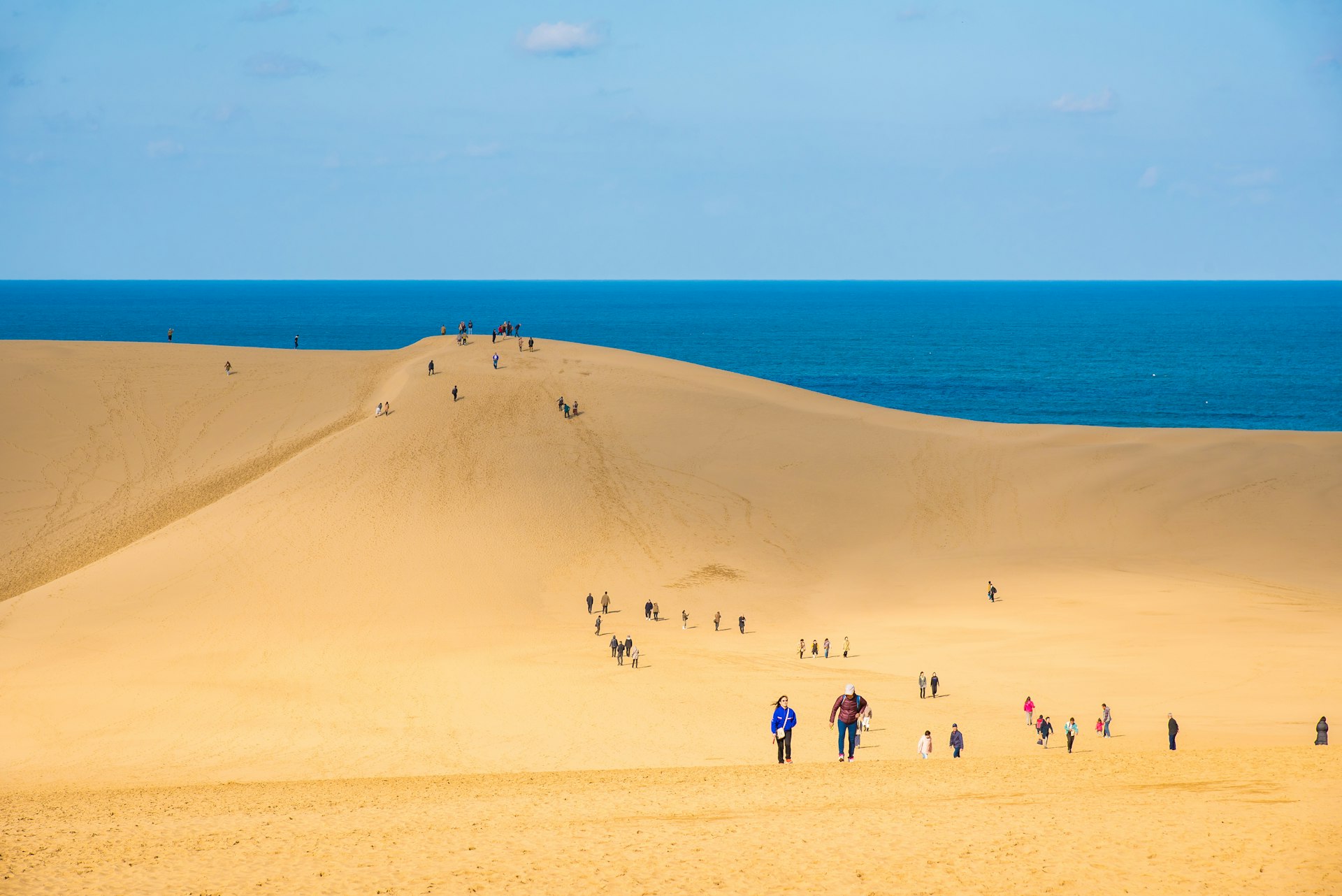
8. Central Western Japan: Shimane to Kyōtango
Best road trip for cool geology, chill coastline and an ancient shrine Iino-Ura – Ine; 355km (22o miles), 2–3 days
The scenic drive from Iino-Ura (Shimane) to Ine (Kyōtango) snakes between dense forests and a sparsely populated coastline.
Along the way, you’ll hit Izumo, home to one of Japan’s oldest shrines ( Izumo Taisha ), the sparkling bay of Lake Shinji in Matsue City, and Japan’s only large dune system at Tottori’s San’in Kaigan Geopark.
In the Kyōtango region, rolling hills and crystal-blue waters set the scene for your final destination: Ine, a picture-book village famed for its funaya (fishing boat houses) built on stilts above the waterline.
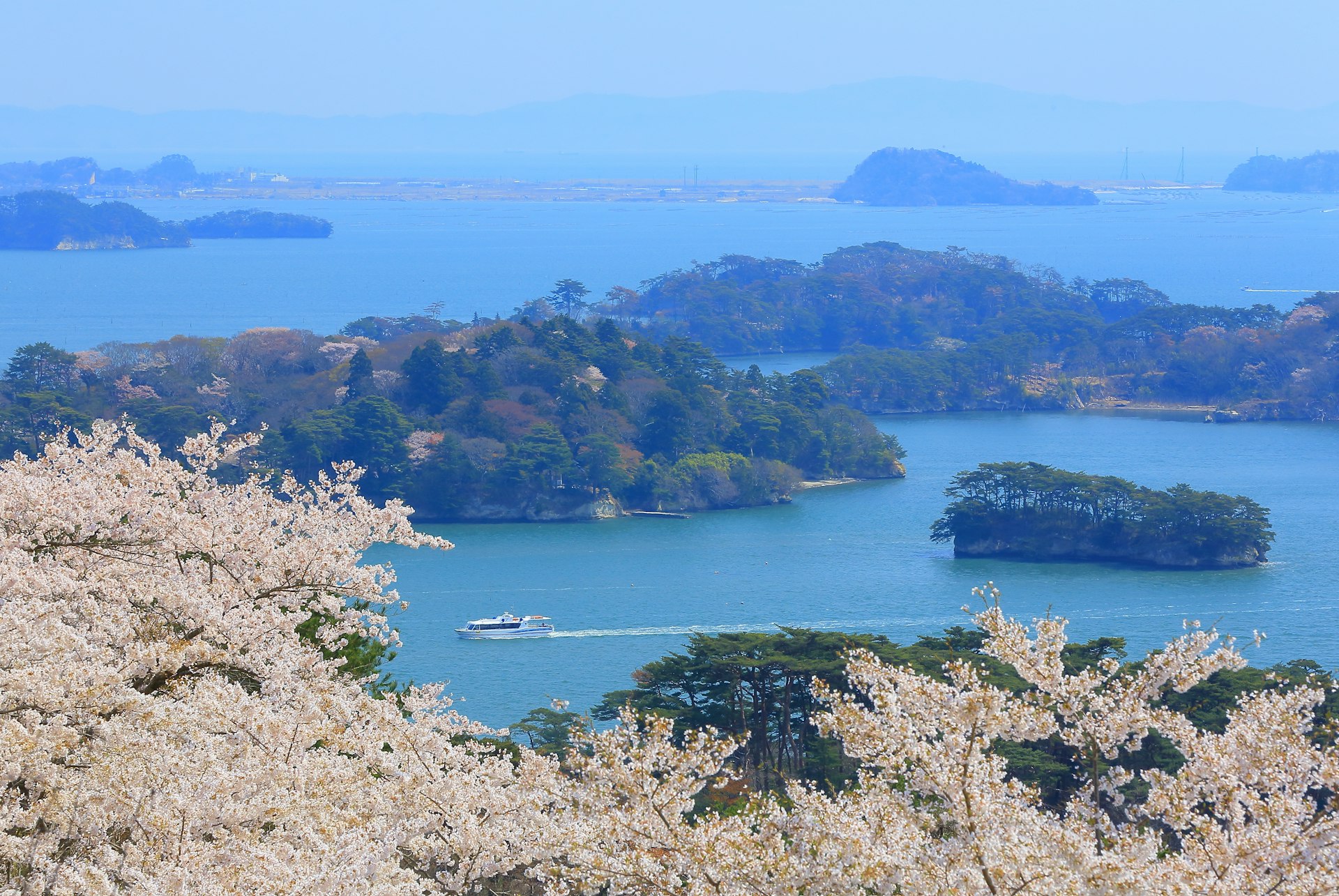
Best road trip for exploring rural backroads Fukushima City – Aomori City; 335km (208 miles), 2–3 days
Tōhoku , a region whose name means “northeast,” is webbed with immaculate roads that carve through its national parks, virgin forests, and towns and cities still recovering from the 2011 Great East Japan Earthquake.
The journey from Fukushima to Aomori swerves past the green-coated islets of Matsushima Bay – whose beauty is said to have put the 17th-century father of Japan’s haiku poetry, Matsuo Bashō, at a loss for words – and the foamy seascapes and knobbly sea stacks of the 1000km-long (621km) Michinoku Coastal Trail.
Detour: Top detours include the winding road to the large volcanic crater lake at Mt Zaō in Miyagi Prefecture, and the road circumnavigating Aomori’s pristine Lake Towada, whose serene waters you can paddle by kayak.
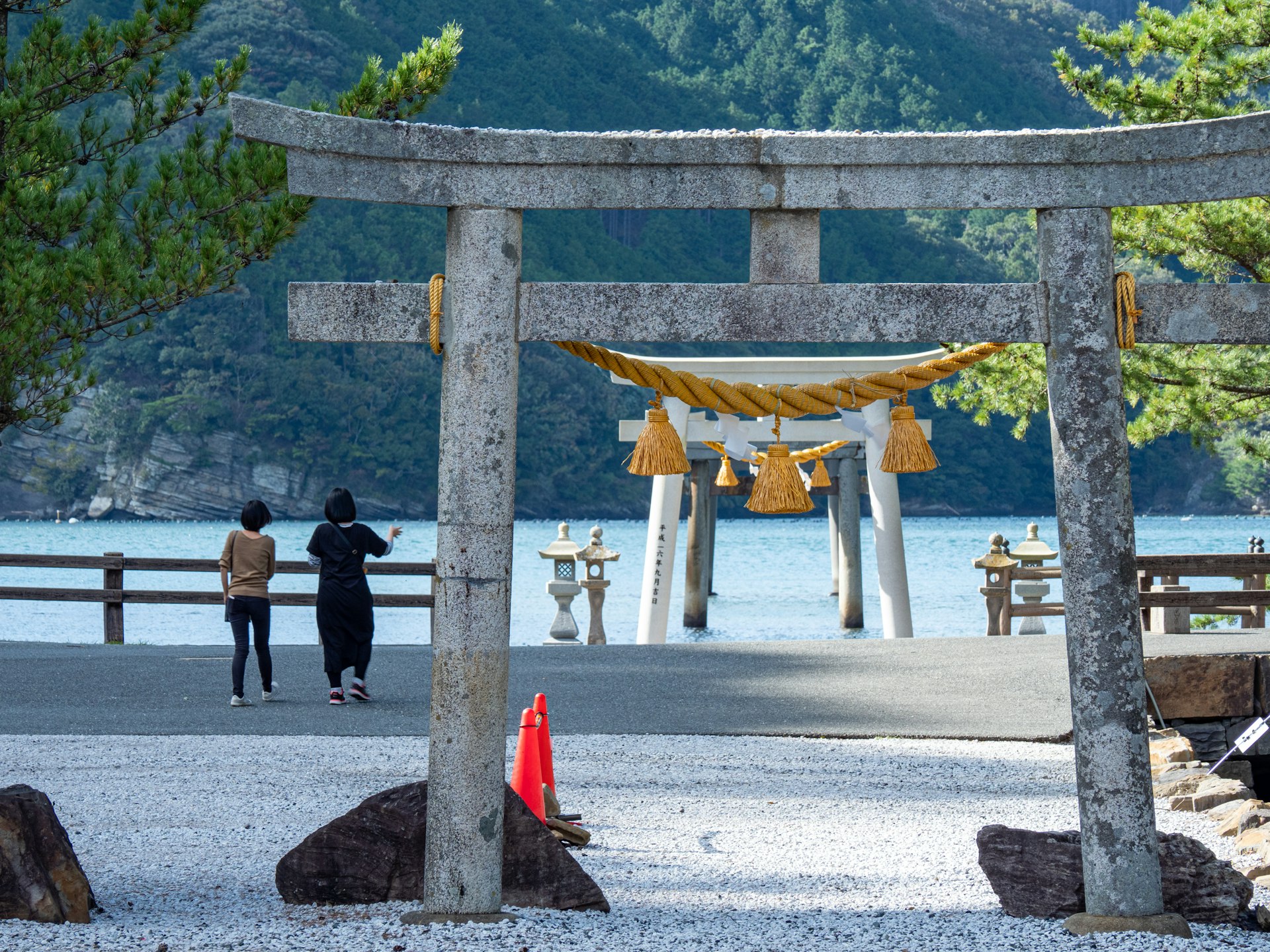
10. Tsushima
Best road trip for remote historic sites and isolated beauty Cape Tsutsu – Kankoku Observatory; 70km (43 miles), 1–2 days
Limited access to public transport and an abundance of lush coastal scenery make Tsushima perfect for exploring on a road trip.
This small island – off Japan’s west coast, in the middle of the Korea Strait – provided the backdrop for the critically acclaimed 2020 PlayStation game Ghost of Tsushima .
Though only 43 miles (70km) north-to-south, Tsushima brims with natural and manmade wonders: the Kaneda Fortress ruins, the lonely Watatsumi Shrine, islet-littered Asō Bay and the Korean-style Kankoku Observatory on the island’s northern tip.
(On a clear day, you can see Busan in South Korea in the distance.) Day hikers can summit one of Tsushima’s forested peaks, while its rivers and beaches offer plenty of inviting spots to relax along your island drive.
This article was first published April 2021 and updated March 2024
Explore related stories
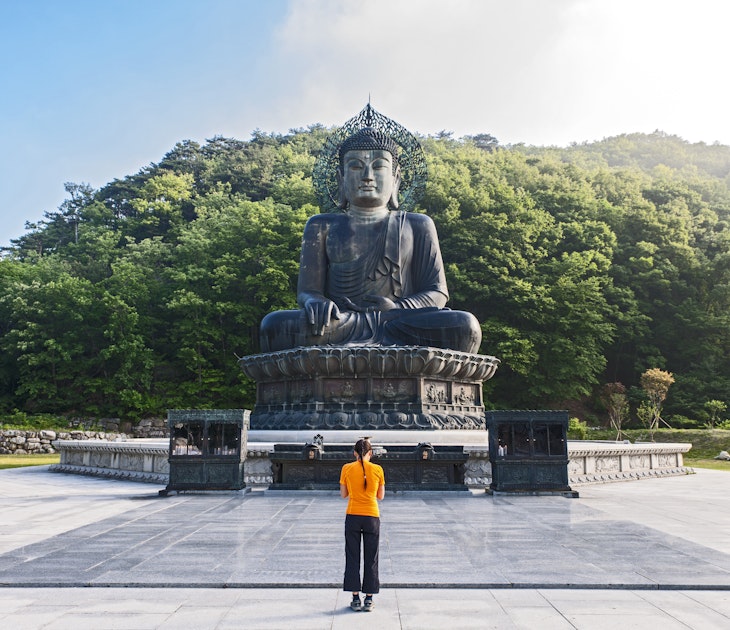
Feb 17, 2024 • 10 min read
South Korea might not leap out as the obvious place for a road trip, but the back roads reveal a different side to the peninsula. Here are our top trips.
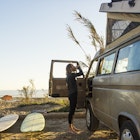
Mar 21, 2023 • 8 min read

Apr 3, 2024 • 17 min read

Mar 31, 2024 • 7 min read

Mar 28, 2024 • 6 min read

Mar 28, 2024 • 11 min read

Mar 26, 2024 • 8 min read

Mar 25, 2024 • 6 min read
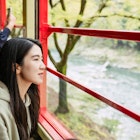
Mar 25, 2024 • 9 min read

May We Suggest?
Make sure all words are spelled correctly.
Is It This?
Try different keywords.
Needle, Where Art Thou?
Try more general keywords.
This is the Ultimate Guide to Backpacking Japan: A 3 Week Itinerary (2023)
Japan has long been a top tourist destination , thanks to its unique and inspiring culture and food. If you are travelling to Japan for the first time, you will want to see as much of the country as you can. Three weeks is the perfect amount of time. Here is how to plan the ultimate Japan 3 week itinerary for backpacking Japan.
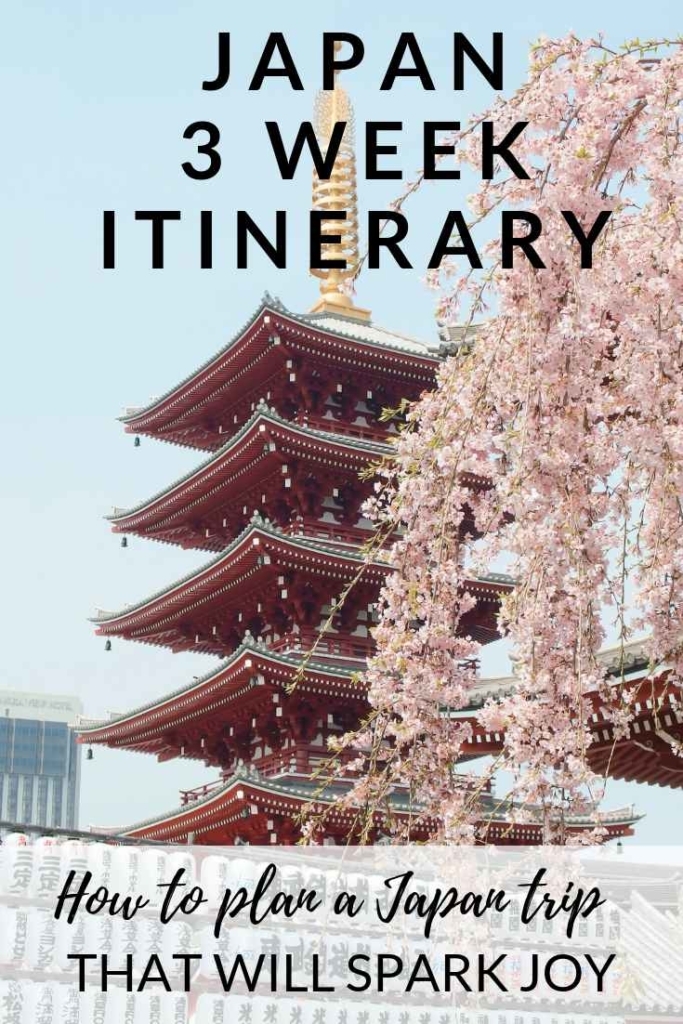
This post contains affiliate links. This means, if you make a purchase, I may receive a small commission. As an Amazon Associate I earn from qualifying purchases. For more information, read my disclaimer .
How to plan the ultimate backpacking Japan 3 week itinerary
If you’re wondering how to plan a trip to explore Japan in 3 weeks, the first place to start is what inspired you to visit in the first place. Are you hoping to see temples and castles, eat sensational street food, relax on beaches or in the mountains, explore its modern city life, or all of these things on your backpacking Japan itinerary? In Japan, 3 weeks is enough time to do all of these things, though it is such a rich country you may still find you cannot visit all the places you’d like to.
While travelling through Malaysia with my boyfriend a few years ago, we met a young Japanese couple who sketched us a map outlining their recommendations of all the best places to go in Japan .
If you’re interested in joining a group tour in Japan, check out the latest deals from Intrepid Travel .
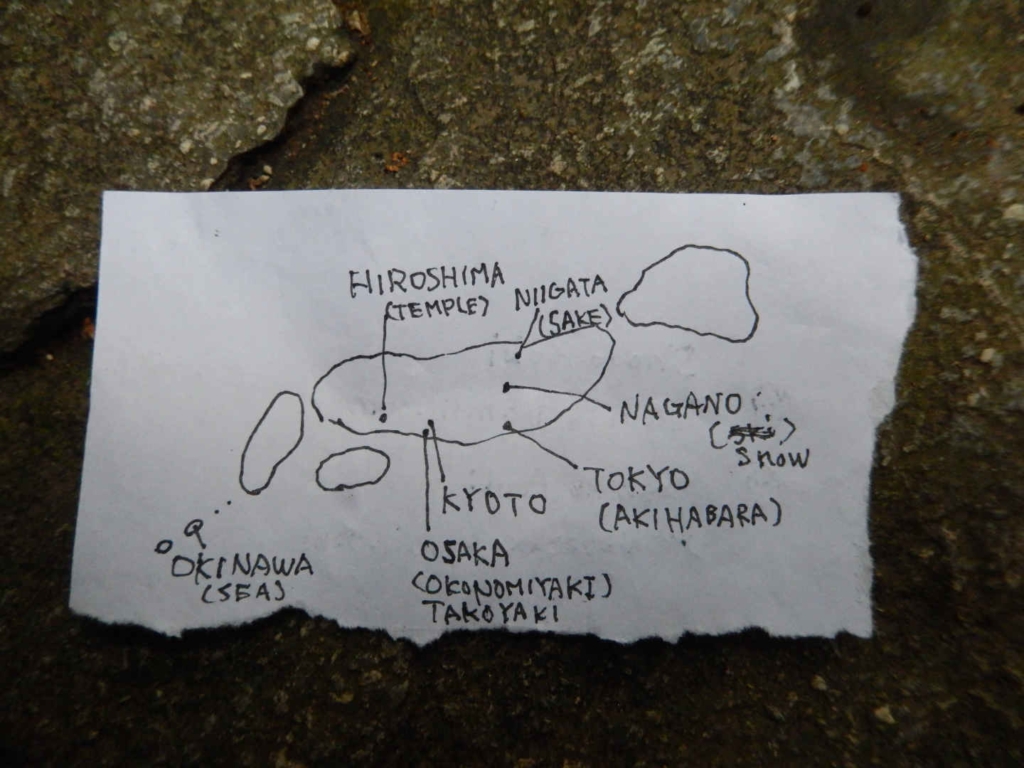
Five years later, we finally did it. We planned our Japan backpacking route to spend 3 weeks in Japan from mid-April to May. We hoped to visit as many places as possible on our Japan itinerary of 3 weeks that our friends had suggested.
As you can see from the map, their recommendations ranged from Niigata, in the north of Honshu, Japan’s main island, all the way 1250 miles (2000 km) down south to Okinawa, the tropical islands in the East China Sea.
If like us you’re planning to spend around 21 days in Japan, you are lucky. On a 3 weeks in Japan itinerary, you will have time to fly to places like Okinawa, that not as many people visit. Still, we found that we had to make the choice between heading north or south from Tokyo, because we couldn’t fit everything in. In the end, we chose to head south and leave northern Japan for another time.
My first tip for planning a trip to Japan is to pick a few places that you really want to see, as even with Japan’s famous high speed bullet train , travelling between cities can take several hours. Read on for more tips and a sample 3 week Japan itinerary.
Don’t forget to bring Lonely Planet’s essential Japan guide book on your trip.
This is the ultimate backpacking Japan 3 week itinerary
Tokyo – 5 nights.
When deciding on your best itinerary for backpacking Japan, Tokyo is a must-stop on your list. You will probably fly in or out of Japan’s capital city and there is so much to see and do here.
The super SIM card to buy for your backpacking Japan trip
If you land at Tokyo’s Haneda airport, like us, make sure you head to the Bic Camera store on the third floor of arrivals and buy a B-Mobile 21 Days Visitor SIM.
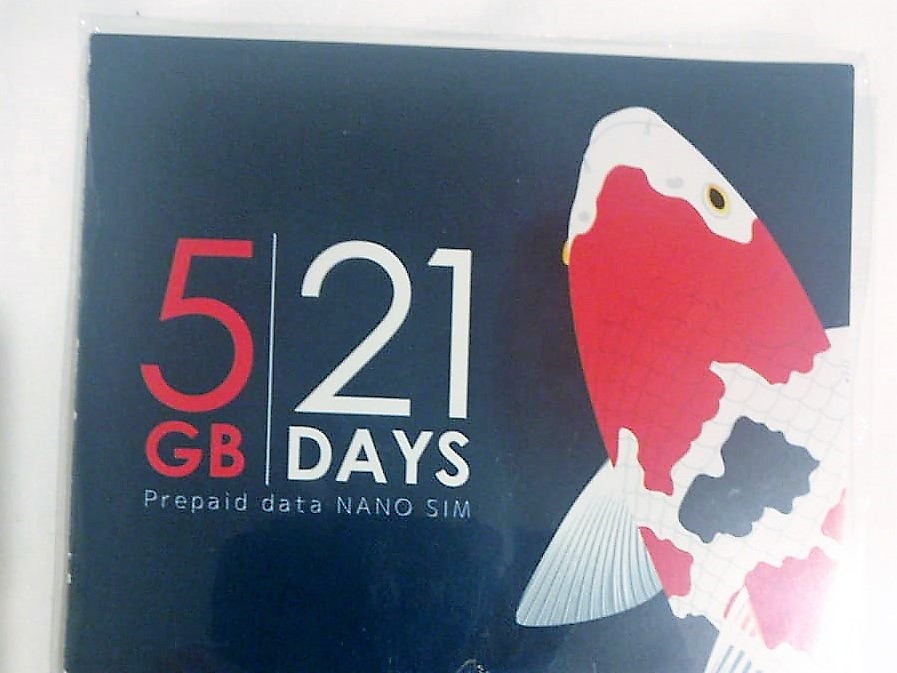
This SIM card is perfect for a 3 week trip to Japan: mobile internet access done in one. The only thing you need to keep in mind is it doesn’t allow you to make calls.
Top ways to travel to and from the airport
Haneda airport is around 10 miles (16 km) from Tokyo city centre. The city’s other international airport, Narita, is around 40 miles (64 km) away. Rather than tackle the public transport from Haneda airport, we took a taxi to our accommodation as we were tired from our long-haul flight from Europe .
Be sure to take a print-out of the name and address of your accommodation in Japanese kanji characters, as some taxi drivers will not understand the names if they are written in the English alphabet. We liked how clean the taxis were and the lace seat covers. Some of them even have passenger doors that automatically open and close for you.
There are limousine shuttle buses operating between some areas of Tokyo and the city’s two main airports. This is a comfortable and cost-effective way to travel with all your luggage while backpacking through Japan. This is what we ended up doing for the rest of our trip when we were catching flights. Ask at the airport information desk, your hotel’s reception or click here for more information on locations and timetables.
An awesome area to stay in Tokyo (with a hidden shrine)
For this first stop in our backpacking Japan travel itinerary, we stayed in a central part of Tokyo called Akasaka. This part of Tokyo is close to tourist attractions and parks, as well as being a convenient location to get around the city, as there are a couple of metro stations nearby. It’s a great place to stay.
In Akasaka you’ll find the peaceful Hie Shrine which is well worth a visit. This is known as Tokyo’s hidden shrine and has a numerous red torii gates marking its entrance. We saw local business people come here to pray and make offerings in this shrine, which is an oasis among the modern skyscrapers.
Find an awesome selection of accommodation in Akasaka here .
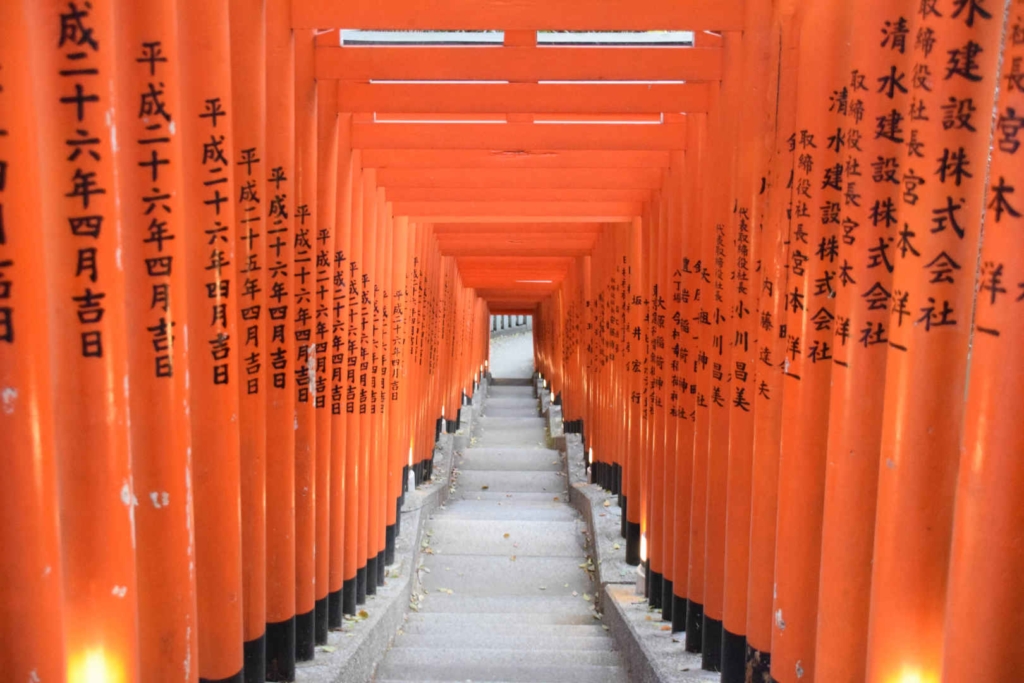
There are also a large number of great restaurants in Akasaka, so you will have plenty of choice of places to eat every day. Keep in mind that the menus may not be in English and the staff may not speak English either so you may have to point at a picture and hope for the best. We were lucky that a friendly local guy at the next table gave us his recommendations of the best dishes, so we were off to a good start.
A beautiful place for brunch in Akasaka is the Aoyama Flower Market teahouse. Located at the base of the Akasaka Business Tower, here you can dine on creative and tasty breakfast options, surrounded by stunning plants and flowers, as you sip their special tea of the day. Such a treat.
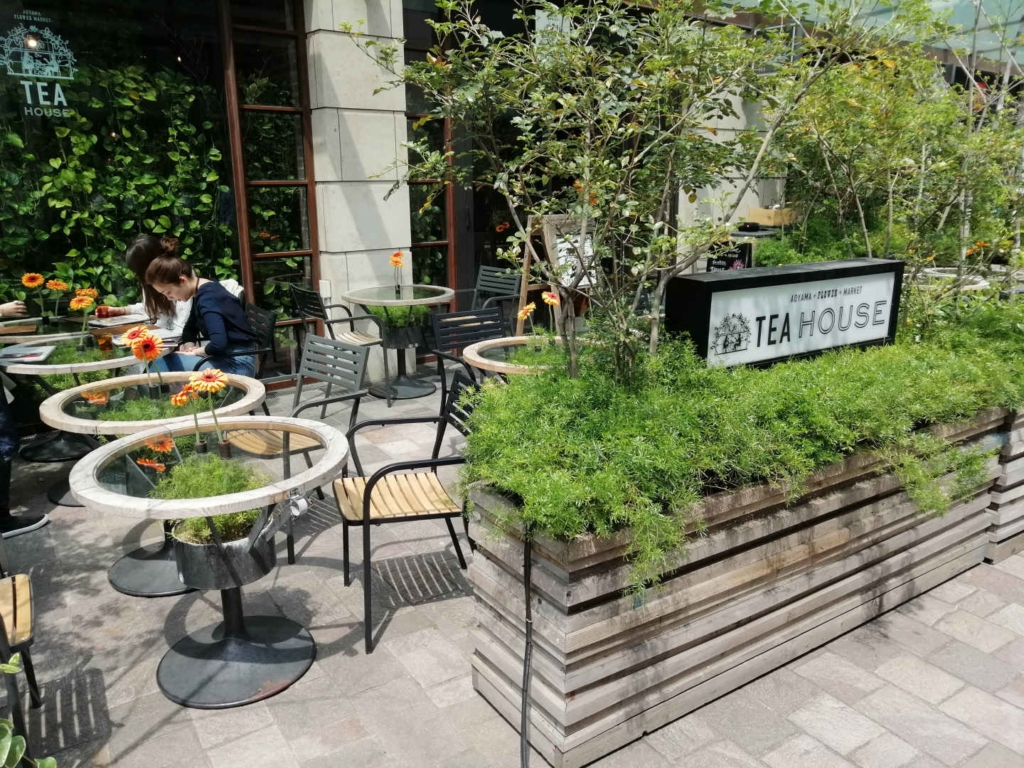
Tokyo backpackers guide to brilliant budget accommodation
Accommodation in Tokyo is relatively expensive and the rooms are smaller than usual Western hotel standards. Our favourite budget hotel in Tokyo was the Super Hotel Lohas Akasaka which has friendly staff and is in an ideal location with a 7-11 supermarket right next door. The hotel even its own onsen public bath, with specific times for men and women, which is dreamy and incredibly relaxing. Perfect after a long day of sightseeing.
The nearby top-rated Kaisu hostel is a brilliant choice for backpackers in Japan, as it is clean, friendly and quiet, with a tasty free breakfast served daily in its cafe-bar. It offers the choice of mixed or female-only dorm rooms, as well as private rooms. Hostels in Japan are usually very clean and safe, so it’s a pleasant experience.
If you’re looking for a female-only hostel in Tokyo, try the fabulous Urban Hostel Kanda Jimbocho . Guests love this hostel’s helpful staff, cleanliness and cute kitchen area, including a washing machine. On top of all that there’s excellent WiFi and free coffee.
The two UNPLAN hostels in Tokyo’s Shinjuku Ward area are friendly, modern and offer female-only as well as mixed dormitories. UNPLAN Kagurazaka has air-conditioned rooms with free WiFi, coffee and breakfast served daily in the on-site bar and cafe, while UNPLAN Shinjuku is conveniently located close to Shinjuku station and tourist attractions.
Browse and book the best budget accommodation in Tokyo for your dates .

These are the top attractions in Tokyo
One of the reasons it’s good to spend a few days in Tokyo is because the city is larger and takes longer to travel around than you may think. One of the closest attractions to Akasaka is the Tokyo Tower, but it still takes 20-30 minutes to reach by public transport or on foot.
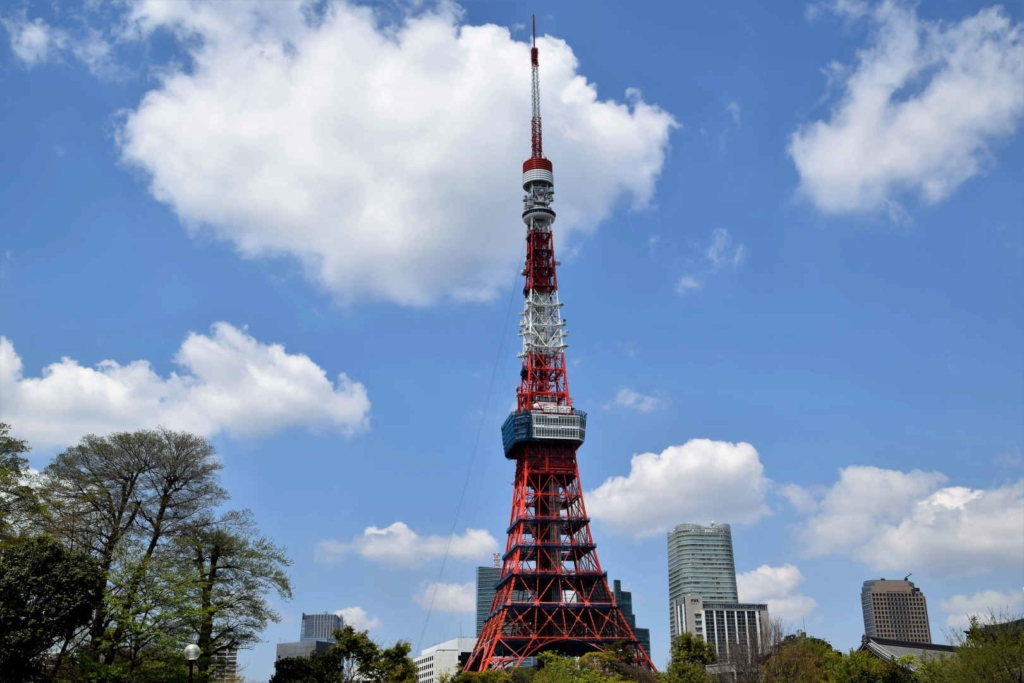
If it’s your birthday – like it was for me – they will give you a special package with free entry to ride to the top of Tokyo Tower and a complimentary drink or snack. From the summit there are incredible views over the city, so you can see for yourself how large it is.
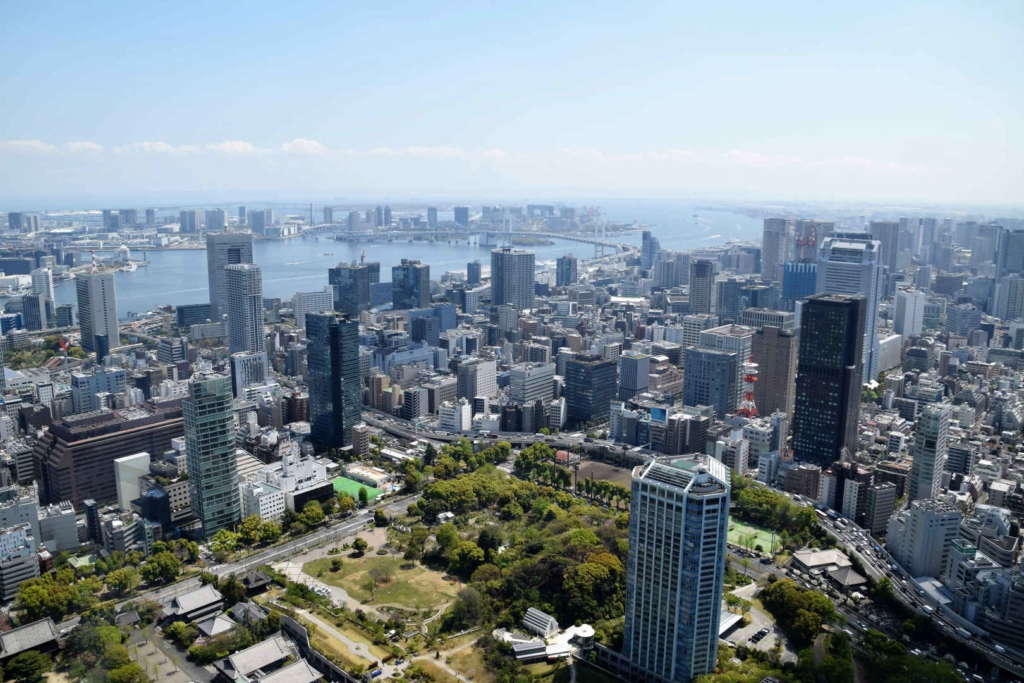
Not far from Tokyo Tower – and by that I mean only 30 minutes on the metro – is Shibuya. Here you will find great shopping and the famous Shibuya Crossing, said to be the world’s busiest intersection. That said, it is incredibly well organised. Many people go for a coffee in the Starbucks in order to take photos from the window of all the people down below, scuttling across the road. Even though it’s only a pedestrian crossing, it’s quite the spectacle and a lot of fun, with people posing for shots along the way.
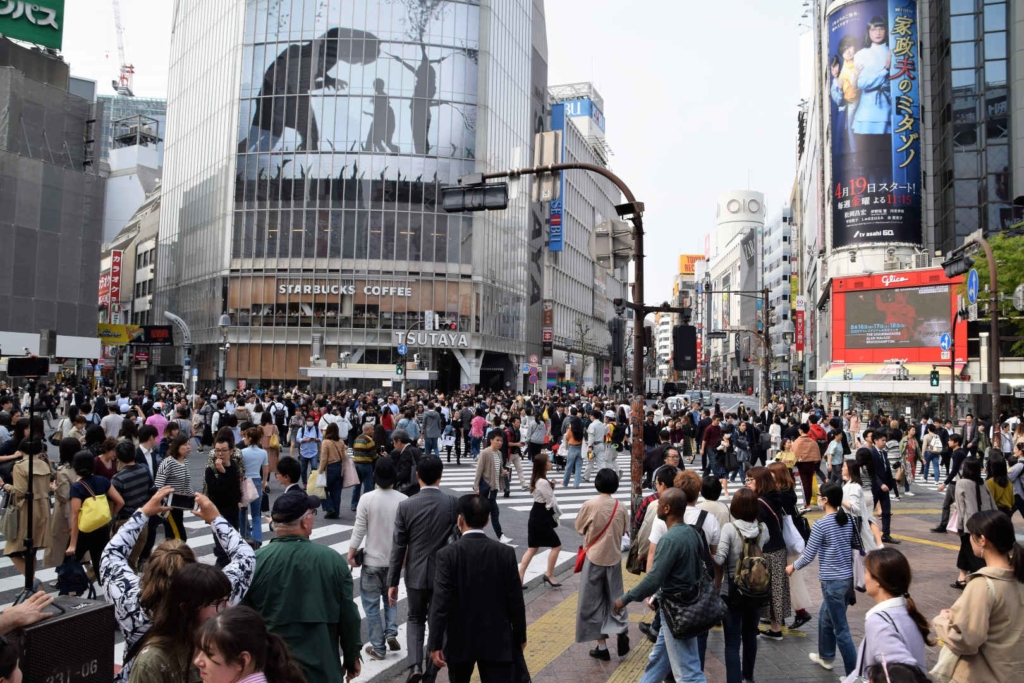
If you are a fan of Nintendo, you can book a tour where you don a onesie and drive in a convoy of go-karts around the city, Mario Kart-style. We saw one of these groups go past in Shibuya .
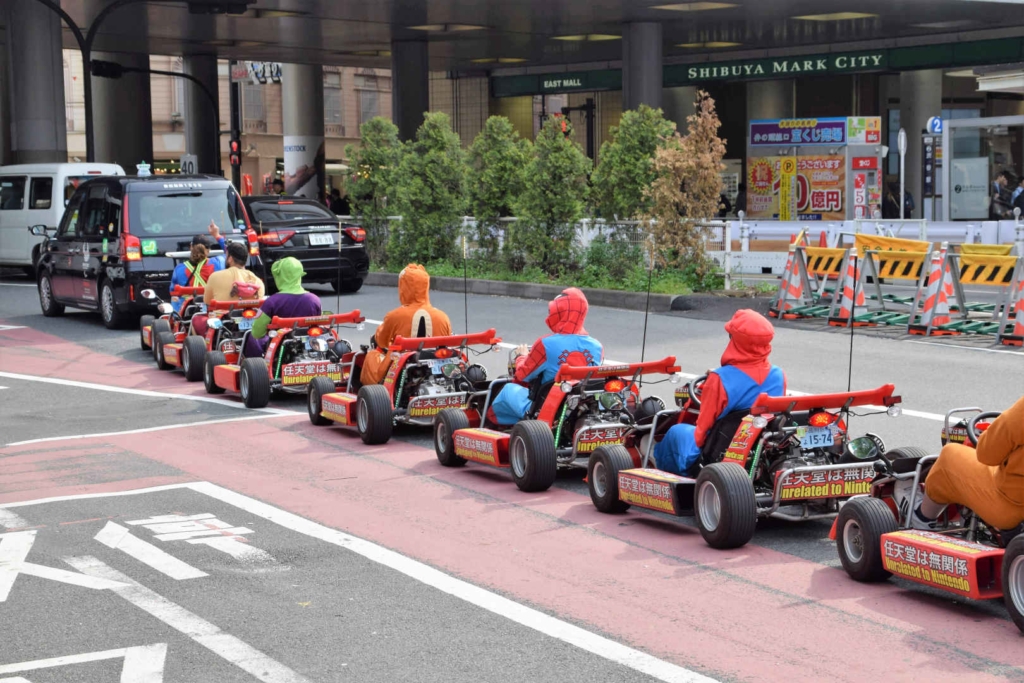
Following our Japanese friends’ recommendation, we visited Akihabara, a shopping hub full of electronics retailers, manga memorabilia shops and the Tokyo Anime Center. This was one of my favourite areas of Tokyo as it’s so colourful and lively. It is 30 minutes north of Akasaka via the city’s metro system.
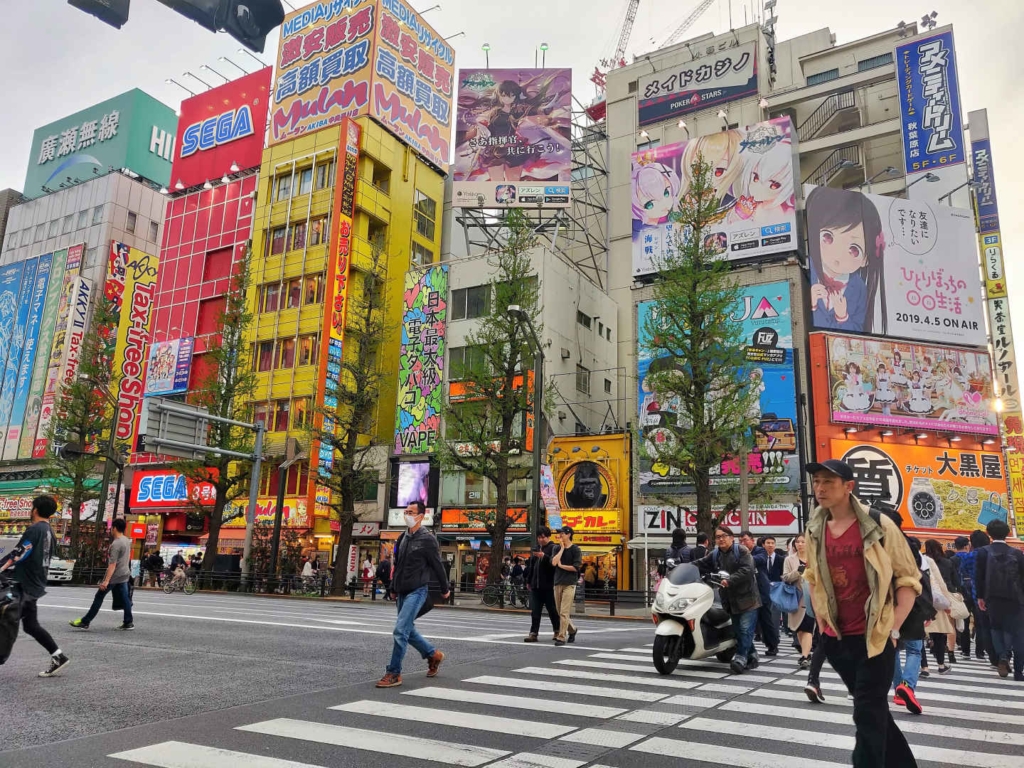
Here we stopped for a drink and a cuddle with the cats at the MoCHA cat cafe. You can buy treats to attract the cats to eat from your hand.
In nearby Asakusa – still 20 minutes away by public transport – you can visit Sensō-ji, Tokyo’s oldest temple which dates back to 645. Be warned, it gets incredibly crowded here, as it’s one of Tokyo’s most popular tourist attractions.
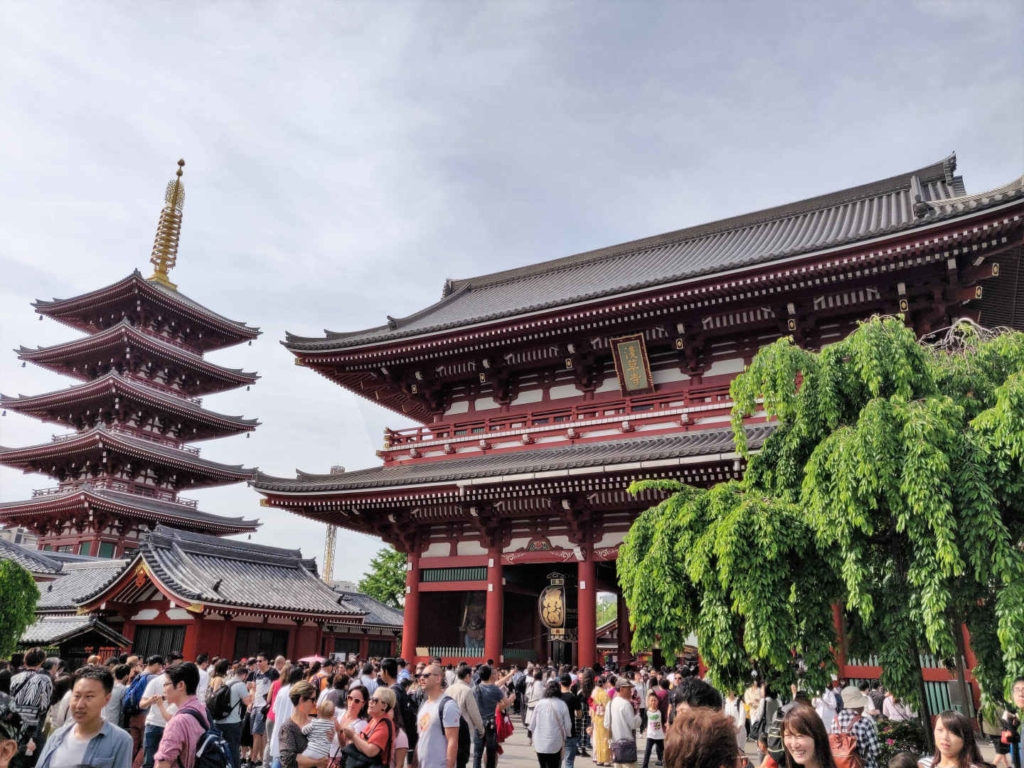
Around 25 minutes east of Sensō-ji is a much smaller Shinto temple called the Kameido Tenjin Shrine. This is a perfect place to go if you’re backpacking Japan in the spring, as during a few short weeks there is a special festival when the gardens bloom with hundreds of wisteria. They hang over a tranquil turtle pond with cute bridges, paths and wisteria tunnels you can walk through. It was also crowded here when we came, but with more Japanese rather than international tourists.
A 15 minute walk from this temple is another of the city’s famous towers, the Tokyo Skytree. At 634 metres (over 2,000 feet) tall, it is hard to miss. In fact, it is the tallest tower in the world and there is a whole complex of restaurants inside. When we visited, we found it to be overwhelmingly busy so we didn’t go to the top.
If you’re a foodie, a great place to visit is Tokyo’s Tsukiji Market, around 20-30 minutes east of Akasaka, where you can find all kinds of local delicacies for sale.
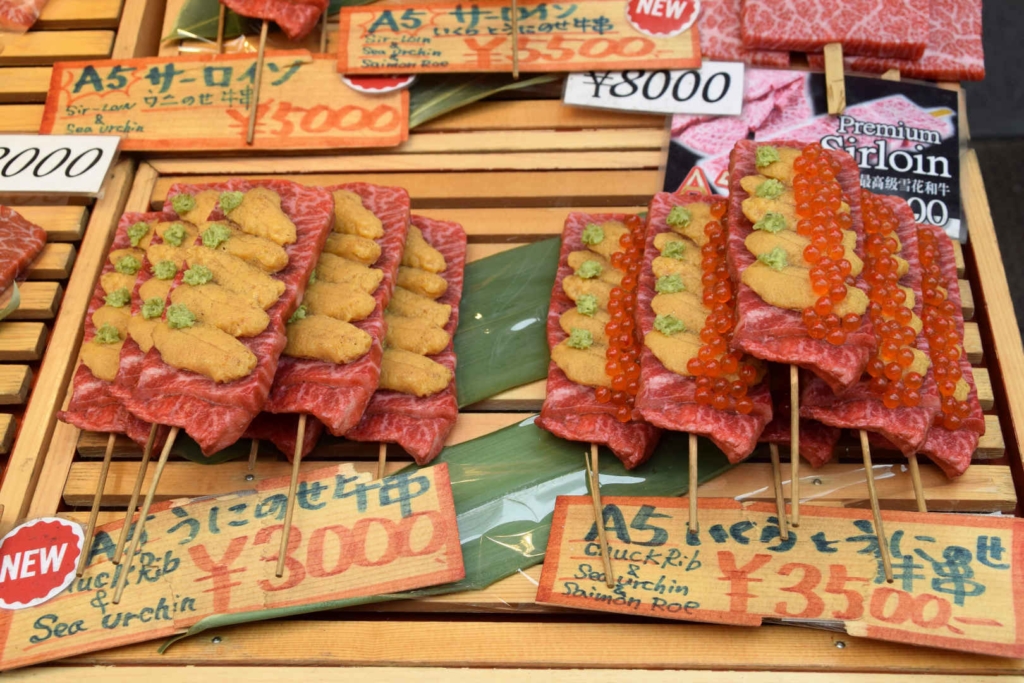
Okinawa – 5 nights
The next destination in our backpacking Japan itinerary was Okinawa , as recommended by our Japanese friends. Known as Japan’s best-kept secret , they are located hundreds of miles south of mainland Japan in the Pacific Ocean, close to Taiwan and Hong Kong. The Okinawa islands have a subtropical climate, with average temperatures above 20°C all year round.
We took a domestic ANA flight from Tokyo for the three hour journey and took a limousine bus from the airport to our accommodation.
Browse and book the best hotels and hostels in Okinawa here .
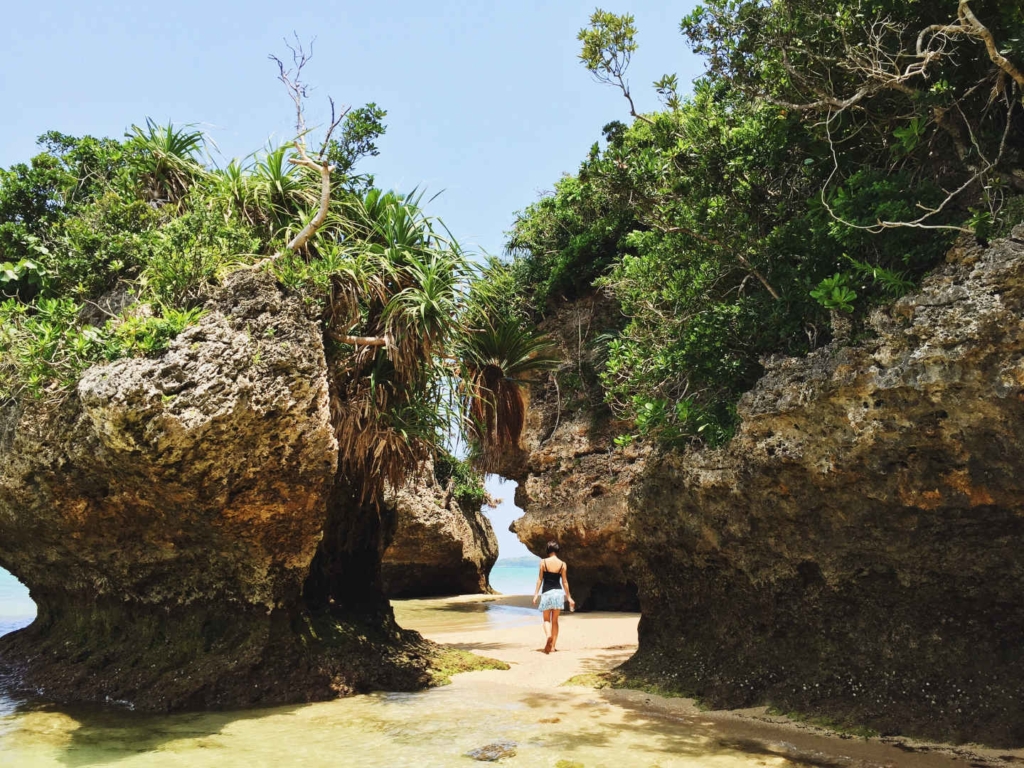
The most interesting area to stay in Okinawa
Okinawa has a large international cultural influence, notably that of the U.S., which has a large military base there. We stayed on the main Okinawa Island in Chatan, close to American Village.
This colourfully-lit area feels like a mini-Vegas which is totally in contrast to the rest of Japan. It is full of restaurants, shops and entertainment venues with an American touch.
For accommodation close to American Village check out this selection .
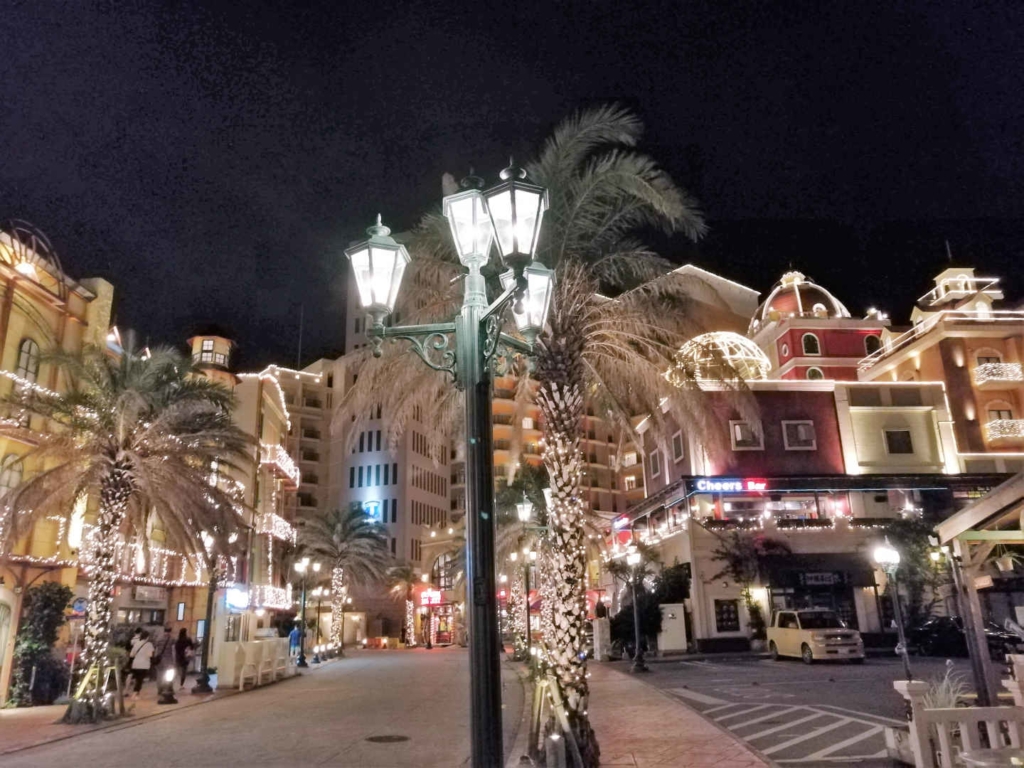
This is a truly fabulous hotel in Okinawa
Our hotel was the gorgeous new Doubletree by Hilton Okinawa Chatan resort overlooking the sea, a short walk from American Village. We decided to spend more money on accommodation here than we would normally because it was for my birthday. It was well worth it.
Our large room included two double beds and a wet room with an absolutely blissful rain shower head.This contemporary hotel is stylish with great facilities, including a cafe/shop, and the staff are incredibly friendly and helpful.
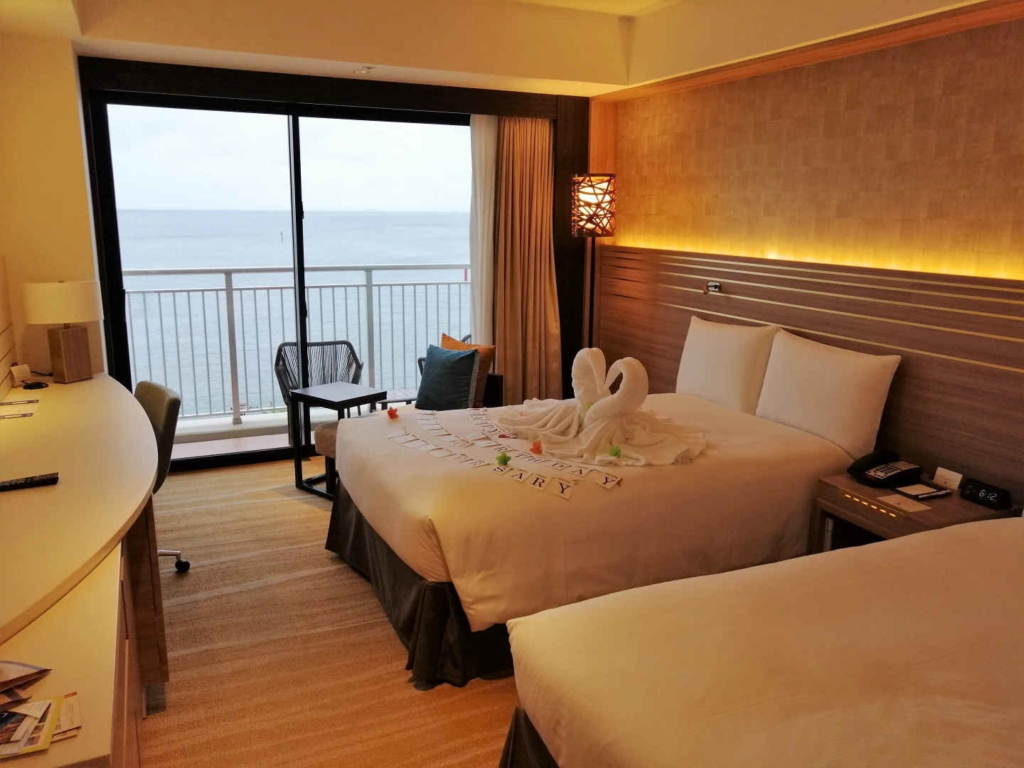
I would recommend choosing an ocean-facing room because the sunset views are absolutely stunning. We sat on our balcony and looked out over the ocean as much as we could. I’ve never stayed in a hotel like this that was so close to the coast.
Check the latest prices and availability for this fabulous hotel .
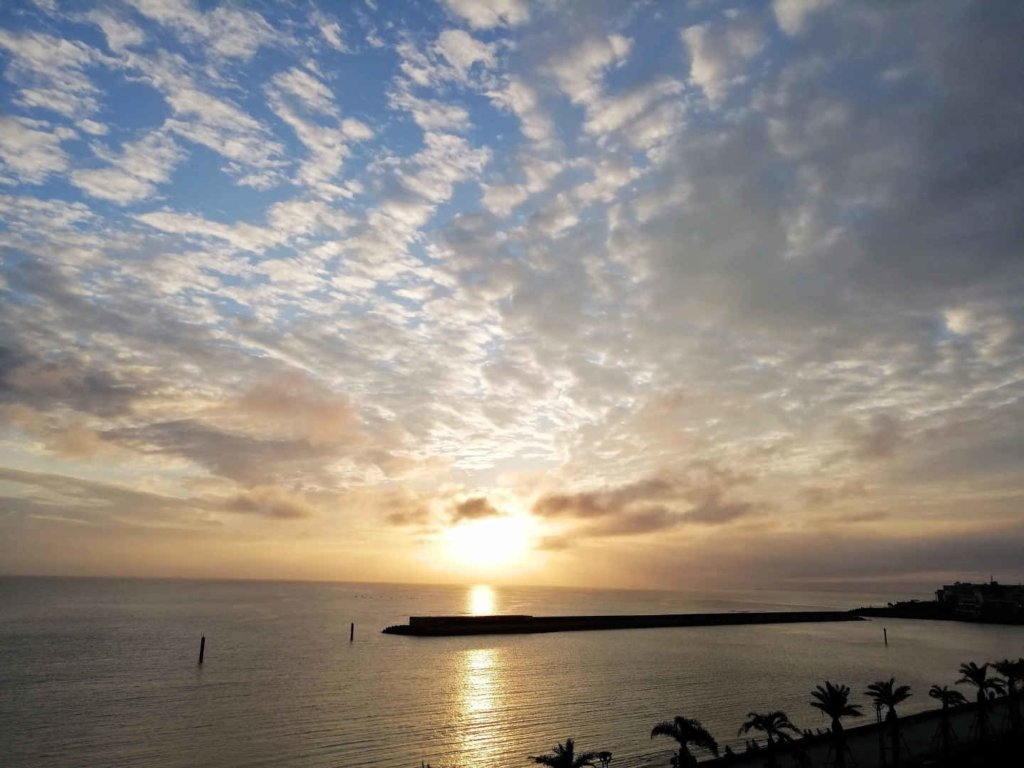
Beautiful beaches and scuba diving in Okinawa
There are beautiful beaches in Okinawa with hardly a soul on them. One of the best is Oodomari beach on the remote Ikei Island. It can be reached by car – one hour from Chatan – thanks to a series of bridges from Okinawa island. You will need to pay a small fee to the beach’s owners and you can enjoy the area almost to yourself. The sea is ideal for swimming – clear, clean and full of fish. There are basic showers where you can wash off the sand afterwards.
For all the best things to do in Okinawa, check out my Okinawa itinerary .
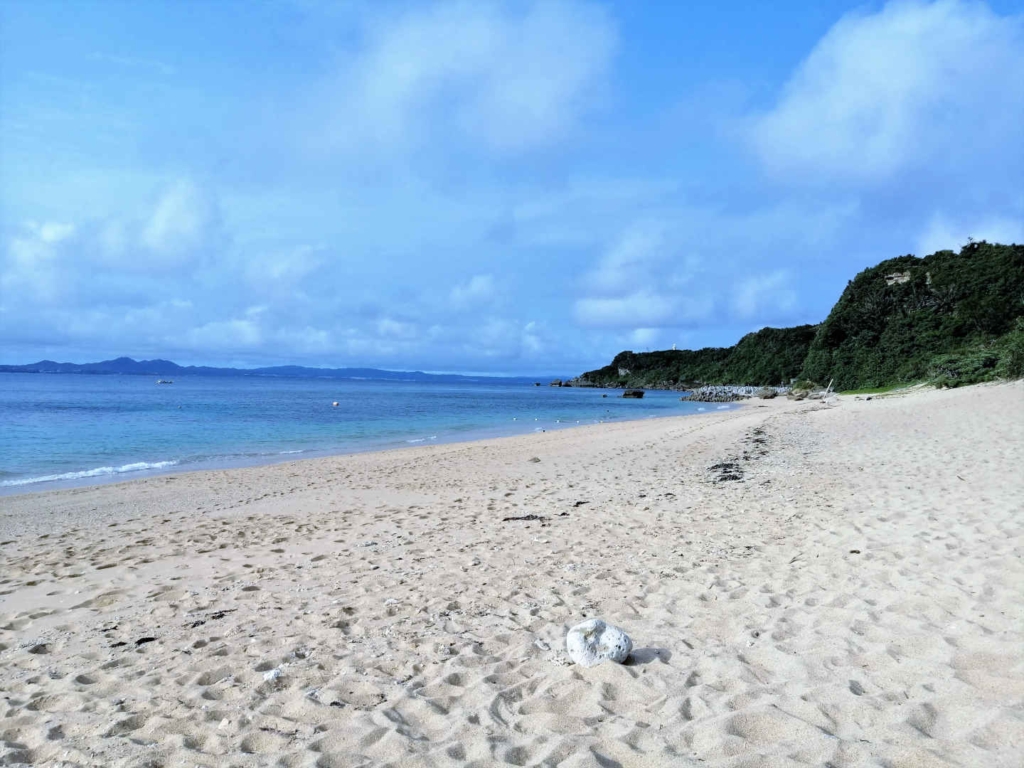
If you are feeling adventurous, there are many scuba-diving sites around Okinawa . The islands are surrounded by coral reefs. We headed towards the neighbouring island’s Kerama National Park on our scuba-diving trip.
For your perfect backpacking Japan three week itinerary, you may prefer to leave Okinawa until the end of your trip so you can relax on the beaches after all the sightseeing around Japan’s cities.
Nagasaki – 2 nights
After Okinawa, we were looking for the most convenient direct flight back to the south of Japan’s main islands. We discovered an affordable price for a flight to the city of Nagasaki, taking just 1.5 hours, so we went ahead and booked it as the next stop on our backpacking Japan itinerary.
We had only heard of Nagasaki because of the devastating atomic bomb attack the city suffered during World War II at the hand of the United States. But the place has a fascinating history that started long before this tragedy befell it.
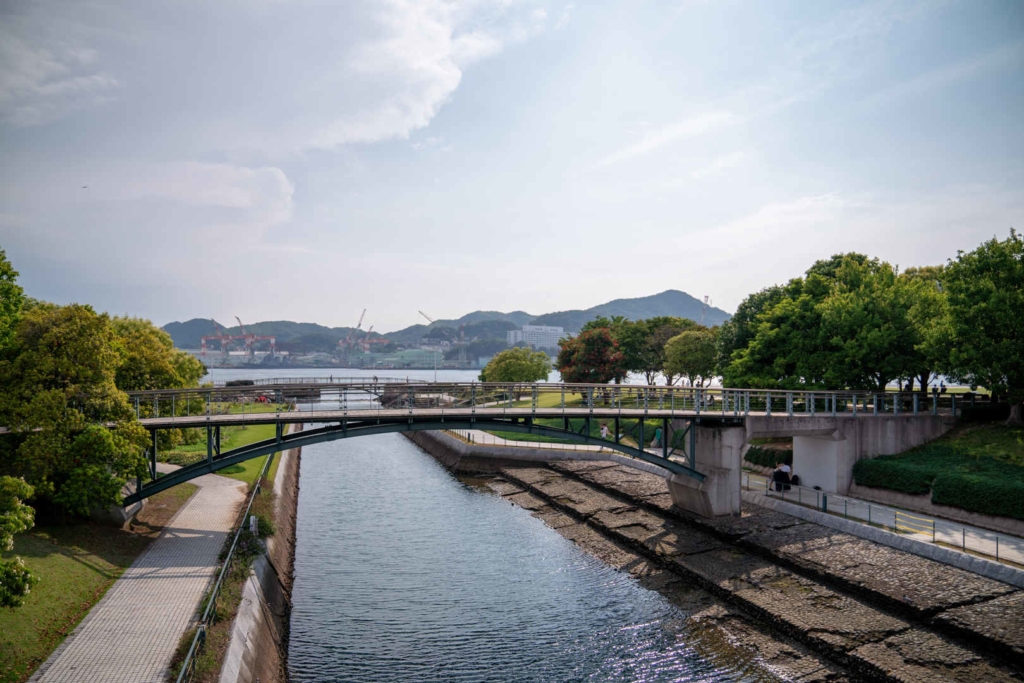
Today a city of over 425,000 people, Nagasaki began as a small fishing village. In the mid-16th century, Portuguese explorers landed here and over the years it became a popular port city for traders from China and countries across Europe .
On our walk from Nagasaki station to our accommodation, we were surprised to see a Christian church: the Nakamachi Catholic Church. It turns out, the arrival of the Europeans in the 16th century brought Christianity to Japan and the religion gained popularity in Nagasaki and beyond. However, Christianity was soon suppressed by the Japanese rulers of the time, who persecuted anyone declaring themselves a Christian. Japan was then officially secluded from international influence for two centuries, until the 1850s. Nagasaki’s ‘Hidden Christian Sites’ are now on the UNESCO World Heritage List as they tell the story of how the religion was revived when Japan opened its doors again in the 19th century.
Where to stay at a traditional ryokan in Nagasaki
Here in Nagasaki, we stayed in a traditional Japanese ryokan , called Fujiwara Ryokan , where the floors are covered with tatami straw mats and the futon bedding is folded up in the corner.
The host is Isamu Fujiwara-san, a delightful older man whose English is limited, but who is incredibly kind and welcoming His partner prepares a delicious traditional Japanese breakfast for guests. When you arrive, you will find yukata robes to wear and a fresh pot of green tea to help you re-hydrate after your journey.
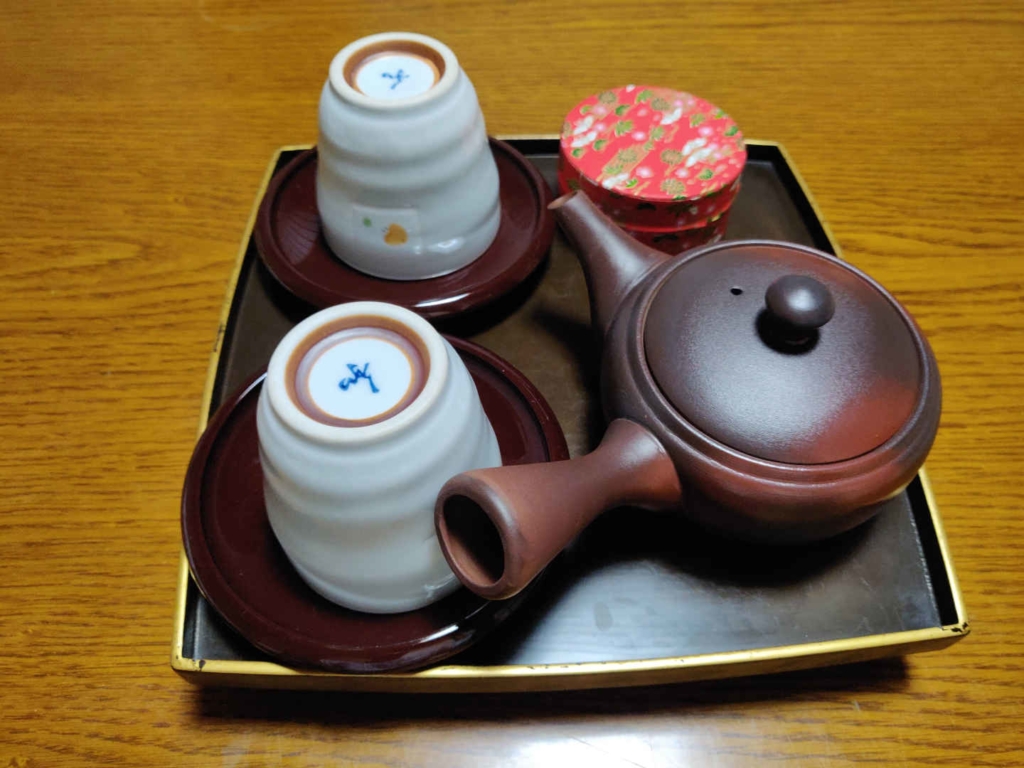
Just a a 9-minute walk from Nagasaki train station, Fujiwara Ryokan is conveniently located and has five rooms. At first glance, it is basic accommodation, but there is free Wi-Fi, air-conditioning and flat-screen TVs in each room. It was a unique, traditional experience – with modern conveniences – for our three week backpacking Japan itinerary, which was very special.
For more outstanding accommodation options in Nagasaki, click here .
Make a stop here for melt-in-the-mouth yakitori
Isamu Fujiwara-san at Fujiwara Ryokan gave us a map of recommended local restaurants. Thanks to him, we discovered a restaurant called Yakitori Torimasa Ebisu, where we ate heavenly yakitori – chargrilled meats, seafood and veg on skewers. Seriously, it all tasted so good and simply melted in our mouths.
Helpfully, the restaurant has an English menu and the chef can also recommend dishes for you, before cooking them right in front of you. He told us he has been making yakitori like this for ten years. Our favorite dishes included the miso pork belly. Highly recommended – one of our favourite dining experiences while backpacking Japan.
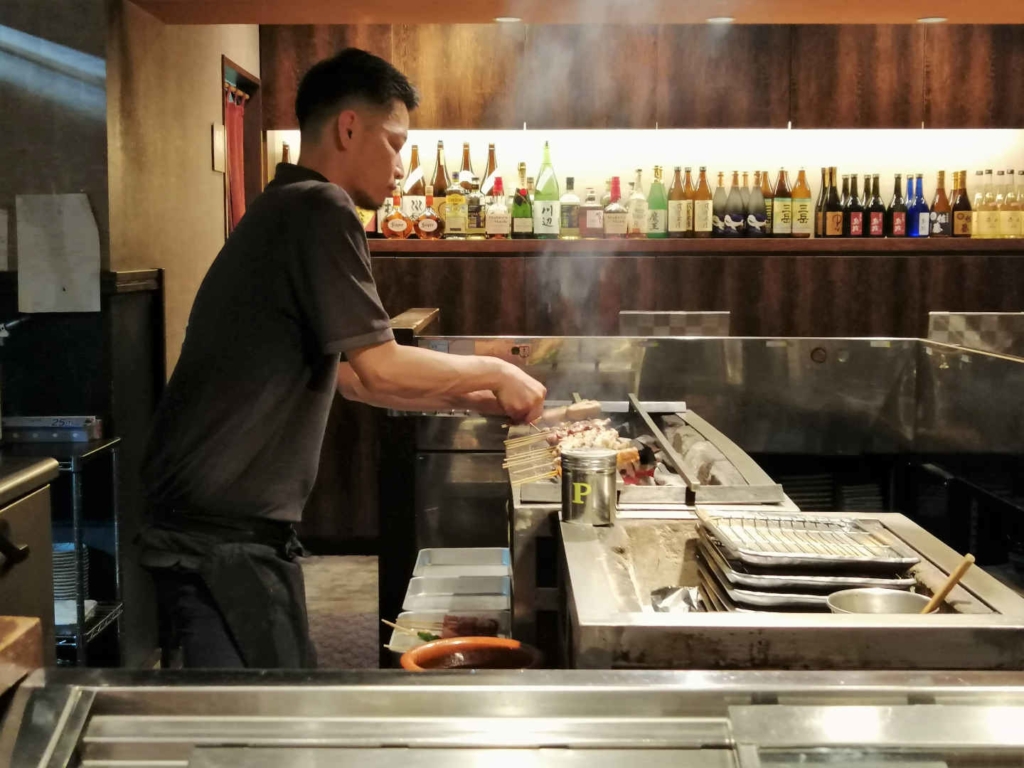
The most memorable and moving things to do in Nagasaki
Why not walk off dinner with an evening stroll just over a mile (2 km) to Fuchi Shrine Station. From here you can catch the half-hourly Nagasaki Ropeway up to the scenic Mount Inasayama Observatory and viewing platform, which sits of 333 metres (1,093 ft) above the city.
The panoramic sights from up here of Nagasaki’s ’10 Million Dollar Night View’ of the city’s many twinkling lights, mountains and reflective river ranks as one of the world’s top 3 night view spots, alongside Monaco and Hong Kong.
Every evening shortly before closing time at 10pm, the three large TV and radio station transmitters light up in a special colourful display.
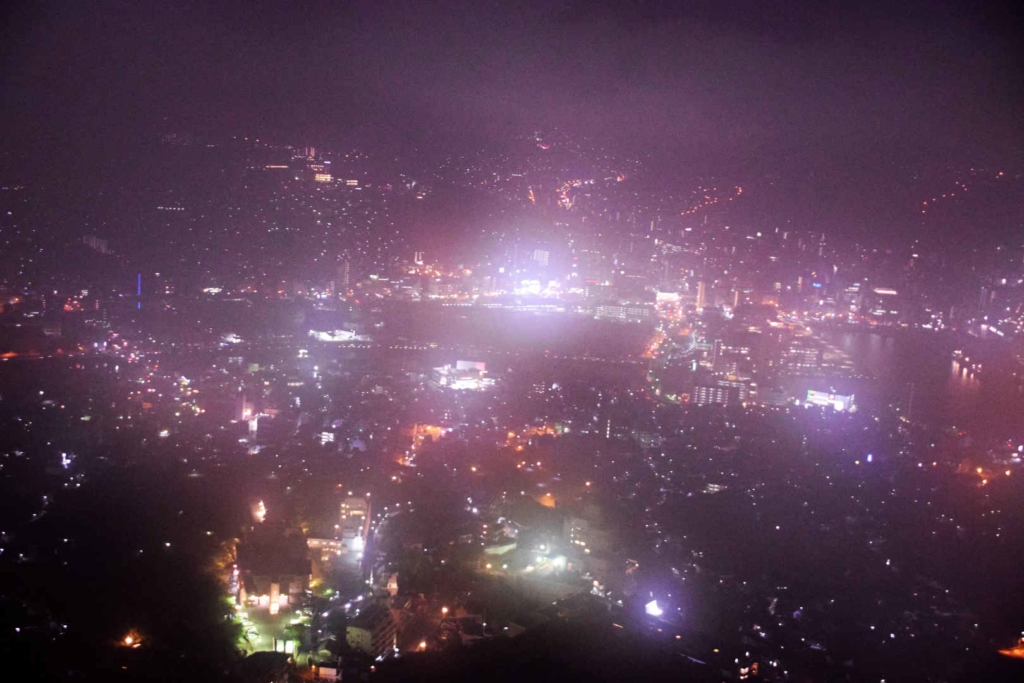
A short tram ride from Nagasaki’s main station is the Nagasaki Peace Park. Even the trams themselves have a cute retro style.
In Nagasaki Peace Park, you will find the ‘hypocenter’, the exact spot where the atomic bomb landed on the city in 1945, destroying the north of the city and killing 35,000 people in less than a second.
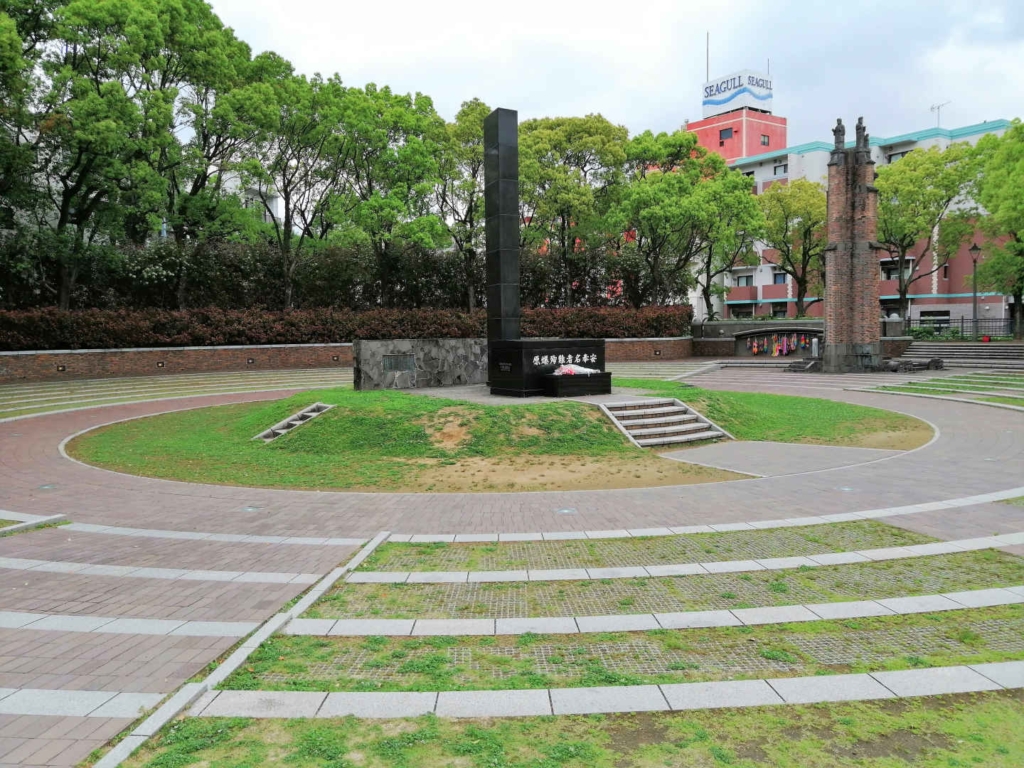
Nearby you can see a remnant of a church that was one of the area’s only buildings left standing. You can also find a preserved part of the ground, exactly as it was after the bombing. Tools and teacups show the sheer devastation at ground level and the lives that were lost here.
As you walk through Nagasaki Peace Park, you will find a number of moving statues dedicated to the people of Nagasaki and calling for world peace, including the striking Peace Statue. It is an emotional experience.
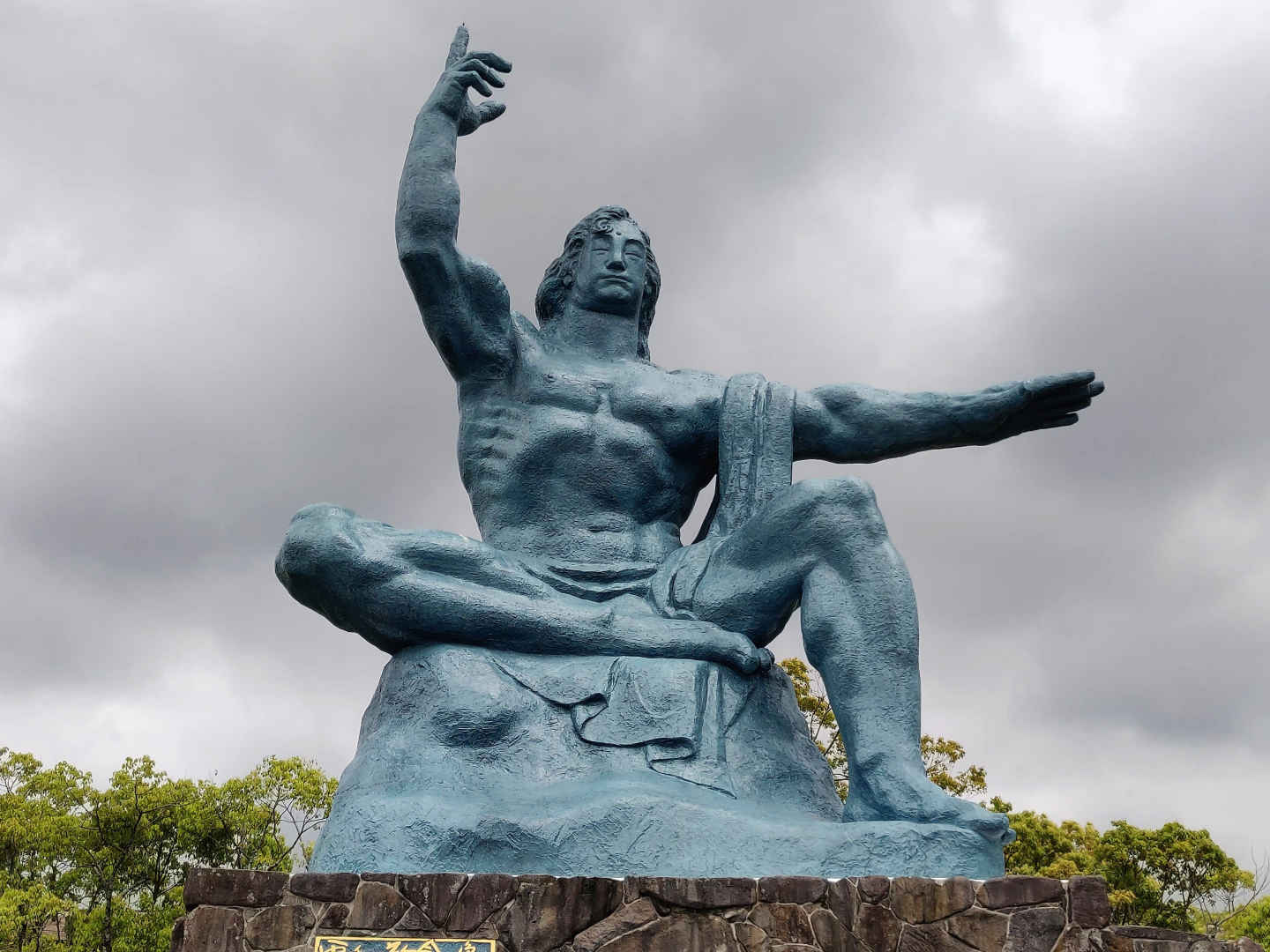
Hiroshima and Miyajima island – 4 nights
From Nagasaki, it’s a four hour train journey to Hiroshima, with a transfer at Hakata station that we had paid for in advance thanks to our JR Passes .
The best hotel in Hiroshima for fabulous city views
In Hiroshima, we stayed at the fabulous Rihga Royal Hotel . It was my birthday and the hotel staff had kindly upgraded our room to a corner room on a high floor of the tower, with panoramic views over the city. You can even see as far as the island of Miyajima.
In the evening, we went to the hotel’s rooftop bar and tasted deliciously fragrant and spicy Japanese gin, served by an expert bartender.
Check out the full list of excellent hotels in Hiroshima .
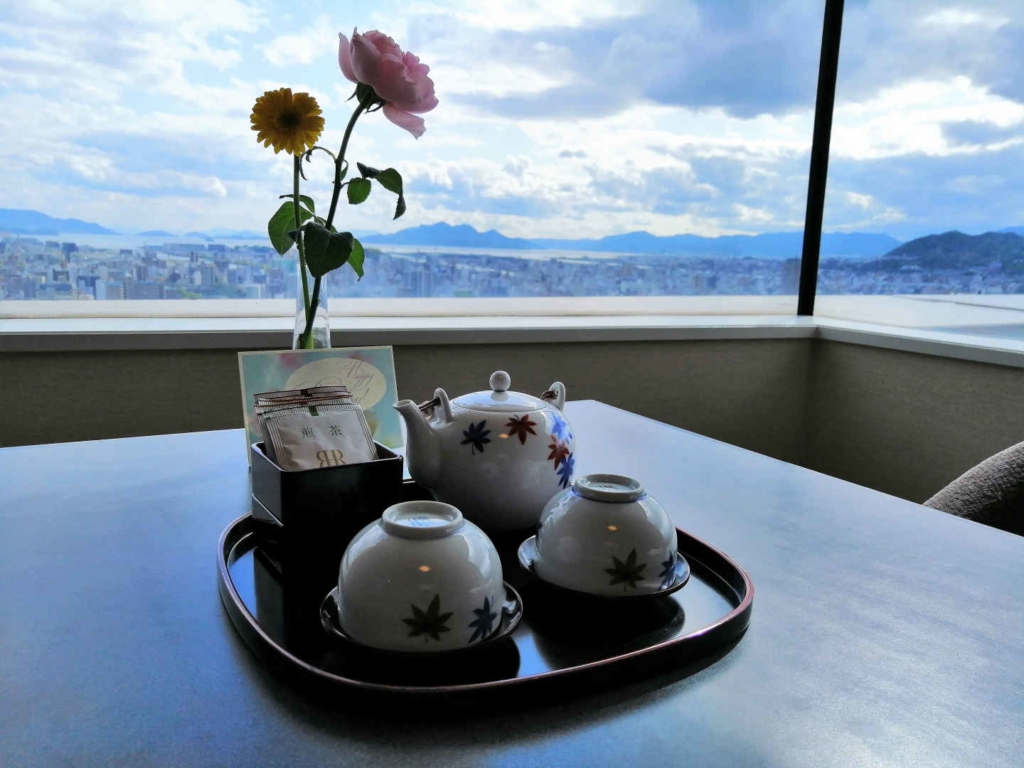
The most moving thing to see in Hiroshima
Hiroshima is well known, along with Nagasaki, for being the site of the devastating atomic bombings during World War II. Here, you can visit the Atomic Bomb Dome, an iconic building that was one of the few constructions left standing after the bombing.
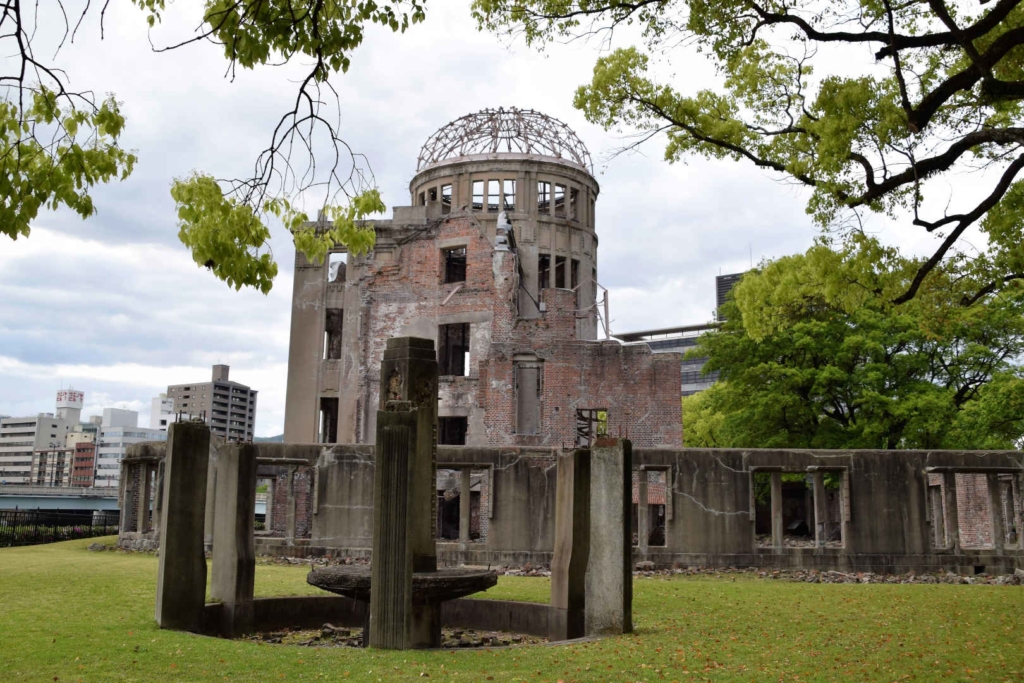
The attack killed more than 70,000 people instantly, while 70,000 more succumbed to radiation poisoning. The building was preserved exactly as it was, serving as a memorial to the lives lost. It is now a UNESCO World Heritage Site and part of the Hiroshima Peace Memorial Museum and Park.
Marvel at the shrines and friendly deer of Miyajima Island
The picturesque Miyajima Island is the perfect day trip from Hiroshima. Many people recommend staying overnight there too, but rooms are in high demand.
The island’s ‘floating’ Great Torii Gate in the bay is a popular spot for photos. It marks the entrance to the 12th-century Itsukushima Shrine. This is another UNESCO World Heritage Site.
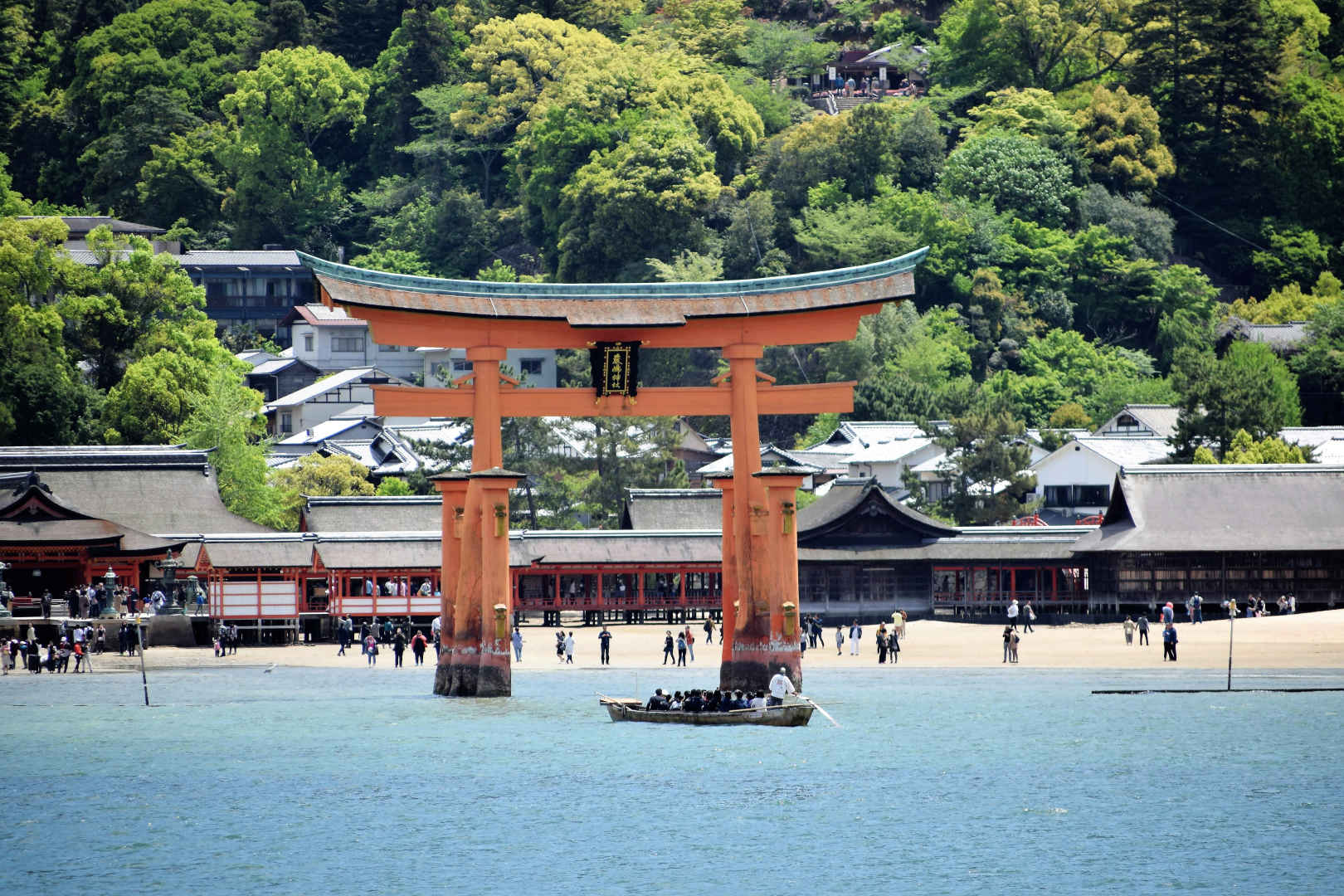
For me, the most impressive structure is the Tahoto Pagoda, a striking red Buddhist temple built in 1523.

On Miyajima, friendly deer roam fearlessly among the tourists, searching for snacks. It’s rare to see these normally shy creatures up close and be able to pose for photos with them.
In the afternoon, take the Miyajima Ropeway the two journeys to the top of the mountain for incredible views. There will probably be queues, but it is worth it.
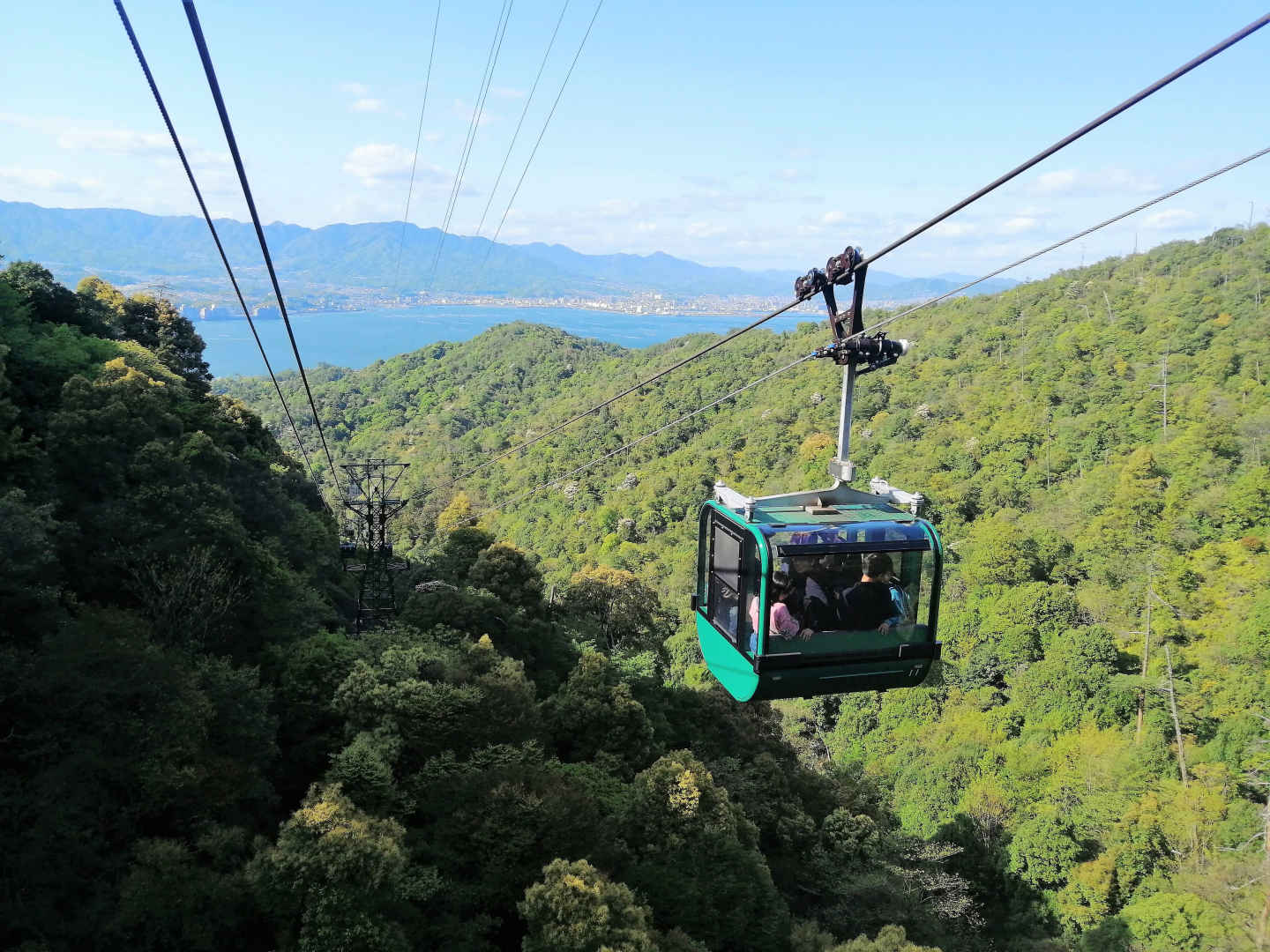
At the top of this sacred mountain, if you have time, you can hike around the forests and discover the Seven Wonders of Mount Misen.
It is so special here that you may wish to stay overnight so you can appreciate it after most of the tourists have left for the day. However, there are only a few places to stay and they are in high demand. You can book your room online in advance here .
Miyajima island is a charming and magical place that will stay in your memory for a long time.
Osaka – 3 nights
From Hiroshima, it’s a 2.5 hour journey by high speed bullet train to Osaka. Home to 19 million people, Osaka is a huge port city known for its modern architecture which lights up at night. While you can do one day in Osaka , two nights is great so you can take your time.
Browse and book from the extensive list of places to stay in Osaka here .
Its main historical landmark is the 16th-century Osaka Castle, which is surrounded by a moat and park with plum, peach and cherry-blossom trees.
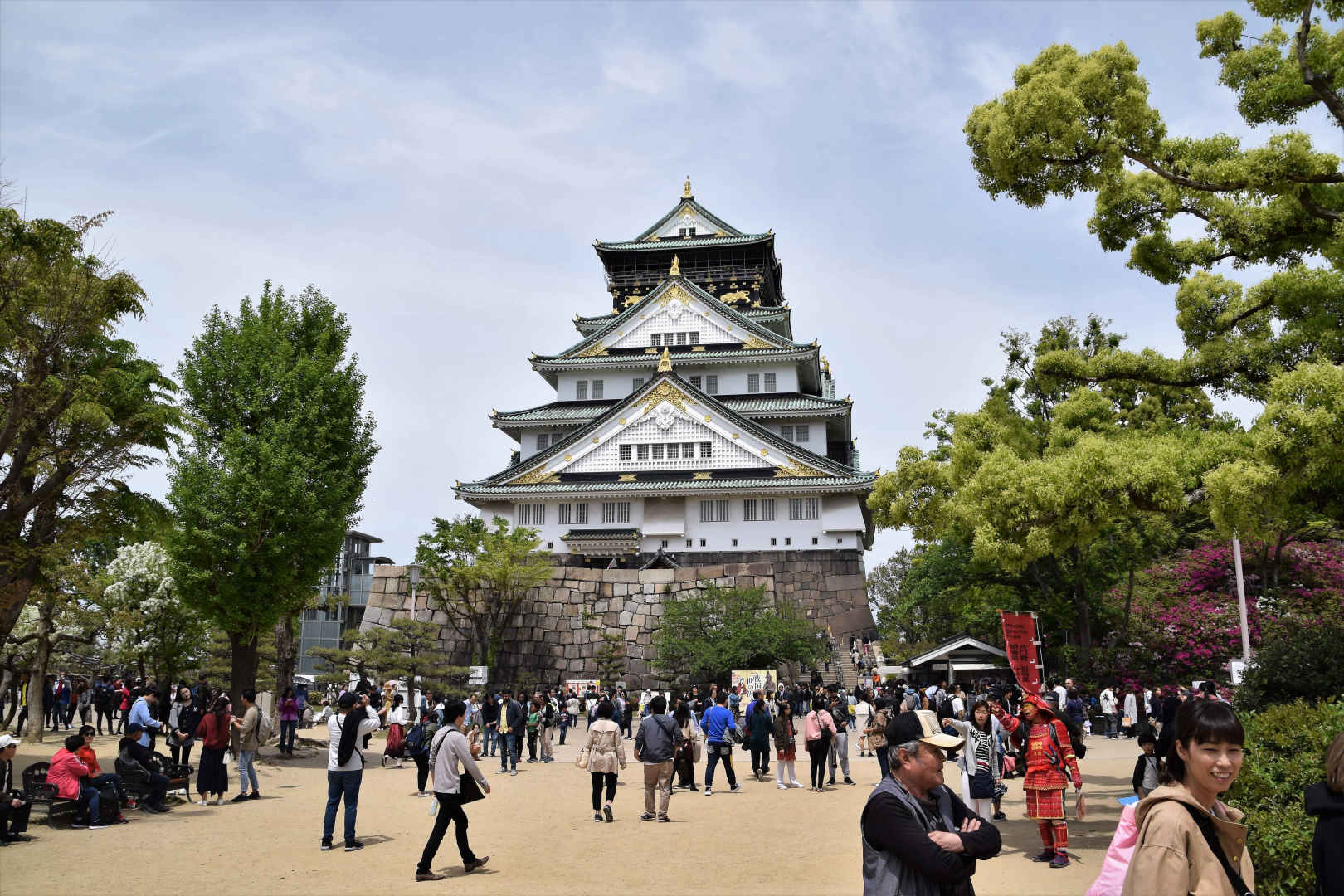
The street food you need to try in Osaka
Osaka is renowned for its tasty street food so, as guided by the notes on the rudimentary map drawn by our Japanese friends, we had to try it.
First up, was takoyaki , stuffed batter balls topped with sauce. Even watching these little local snacks being made is a joy, as the market stall owners whip the batter around in the small moulds.
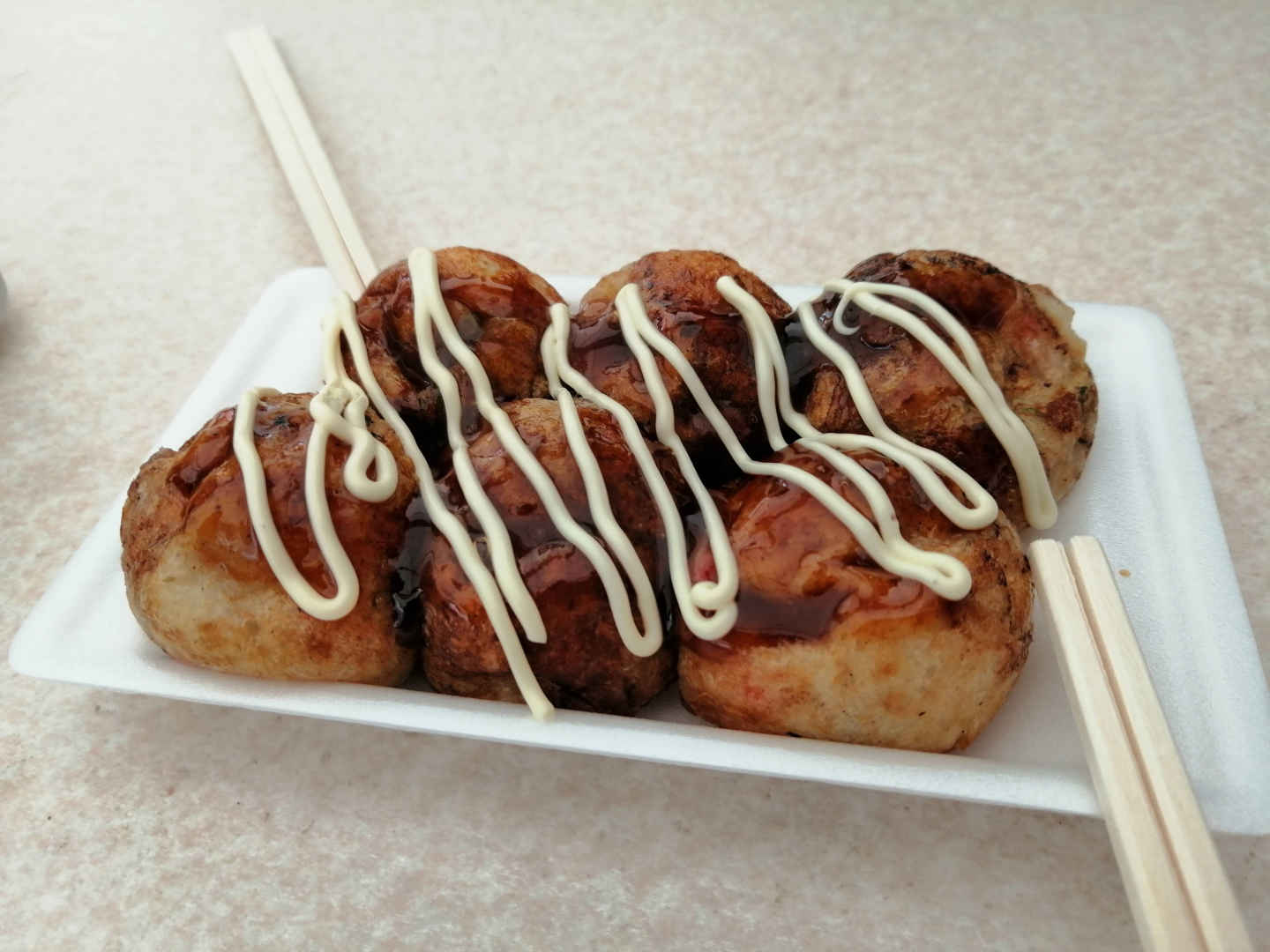
Next up, is okonomiyaki , delicious Japanese savoury pancakes filled with your choice of meat, seafood, vegetables and cheese, and topped with plenty of sauce. It’s street food heaven.
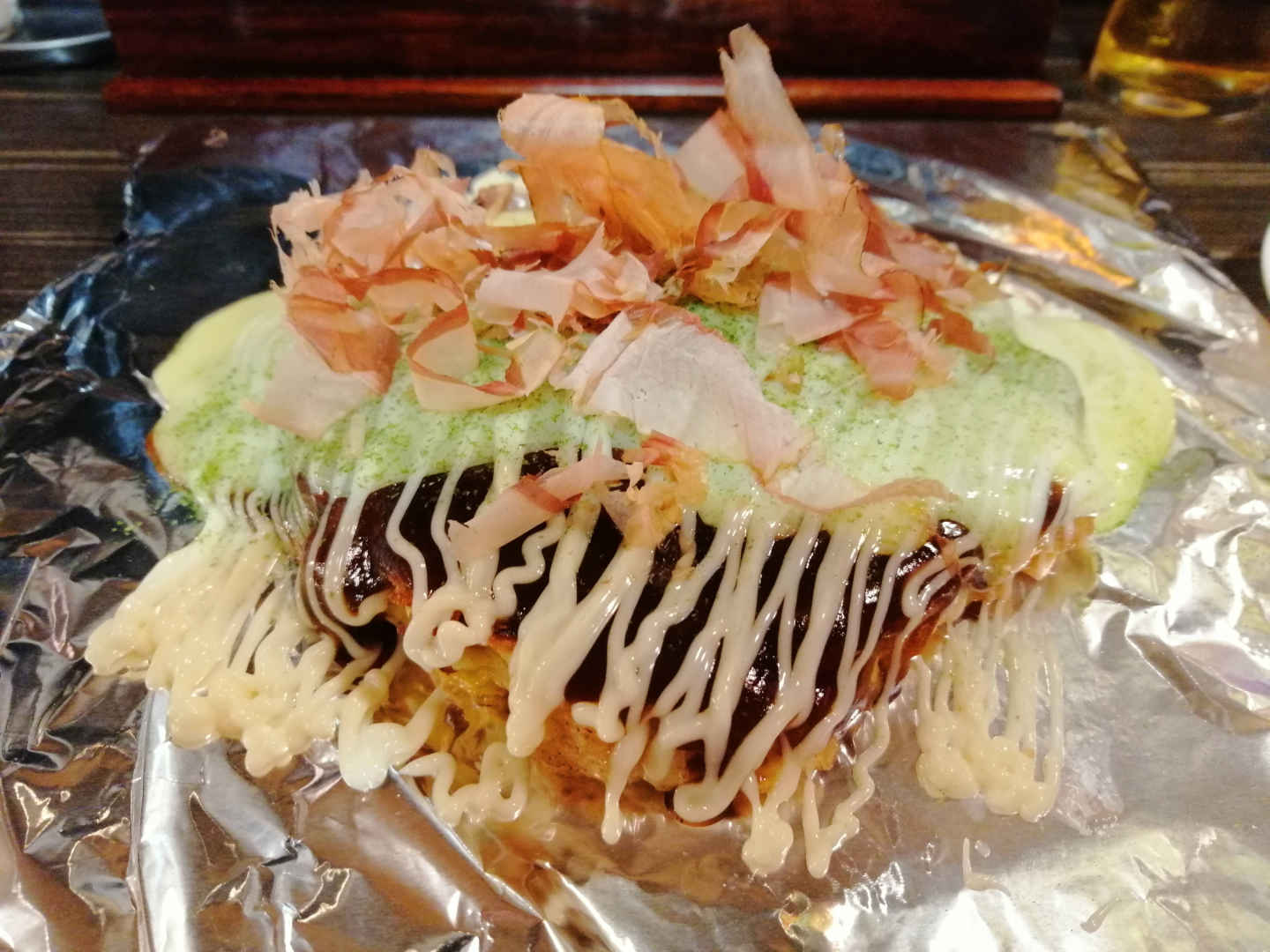
Osaka’s not-to-be-missed nightlife
As day turns to night in Osaka, the Dotonbori area of the city lights up into bright colours wherever you look. It’s awe-inspiring, simply walking along the streets and looking up at the giant, luminous adverts.
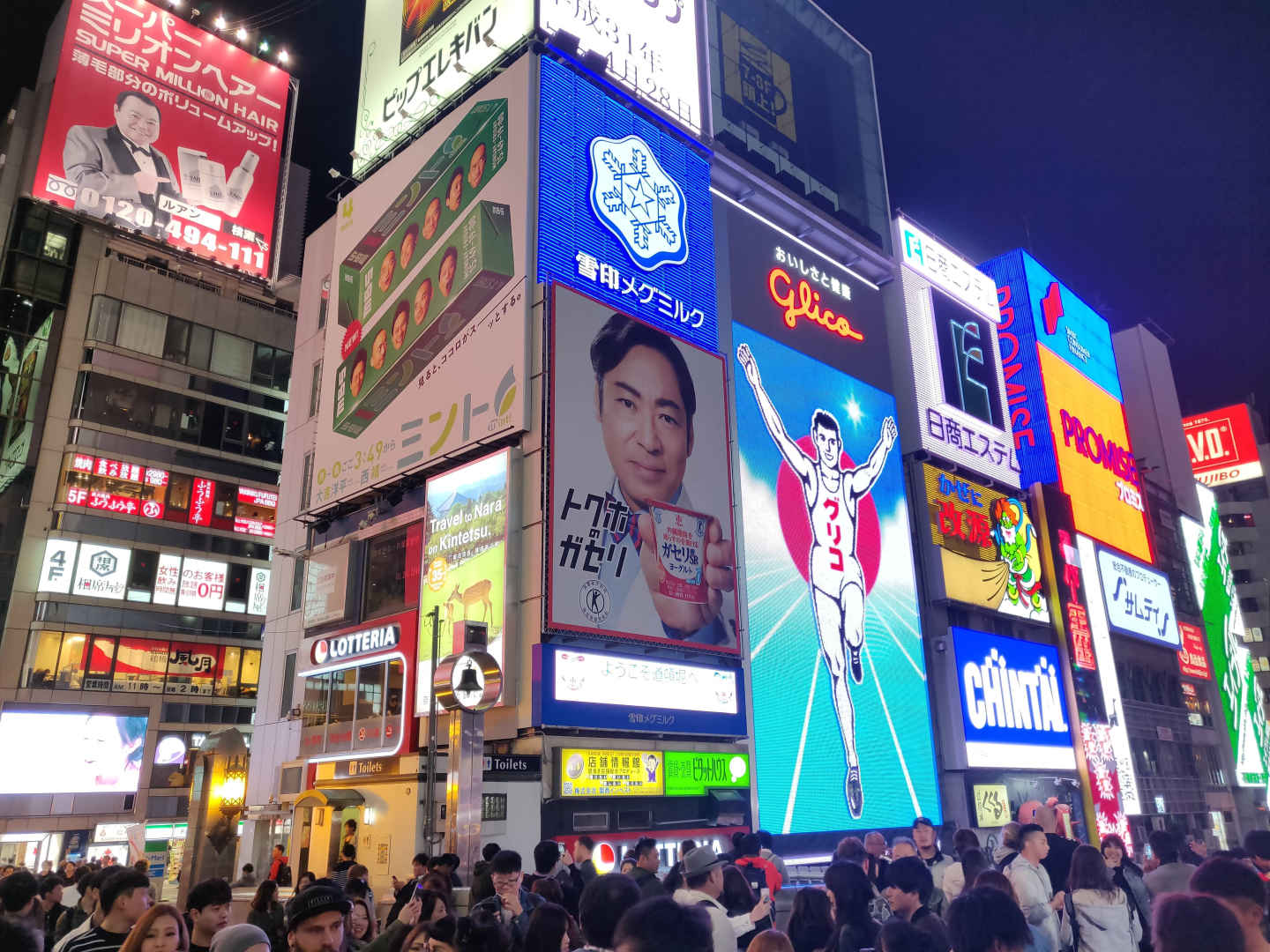
Look inside one of Japan’s video game arcades any time of day or night and you will be struck by the amount of machine noise, cigarette smoke and coloured lights. These dedicated gamers don’t seem to mind though.
Kyoto – 3 nights
Kyoto is just a 15-minute bullet train from Osaka. Once the capital of Japan, it is famous for its 2,000 beautifully preserved religious places, including 1,600 Buddhist temples and 400 Shinto shrines, as well as imperial palaces, gardens and traditional wooden architecture. The historic monuments of ancient Kyoto are a UNESCO World Heritage Site and the city is one of Japan’s most popular tourist destinations, so be sure to allow at least two days in Kyoto .
Kyoto is in high demand so book your accommodation well in advance here .
Explore Kyoto’s famous geisha district
As well as being a great place to go shopping, Kyoto has a long tradition of being a centre for geisha , the distinctive traditional Japanese female entertainers.
Kyoto’s most famous geisha district is Gion, where you will find many traditional wooden merchant buildings containing shops, restaurants and teahouses, where geisha entertain guests.
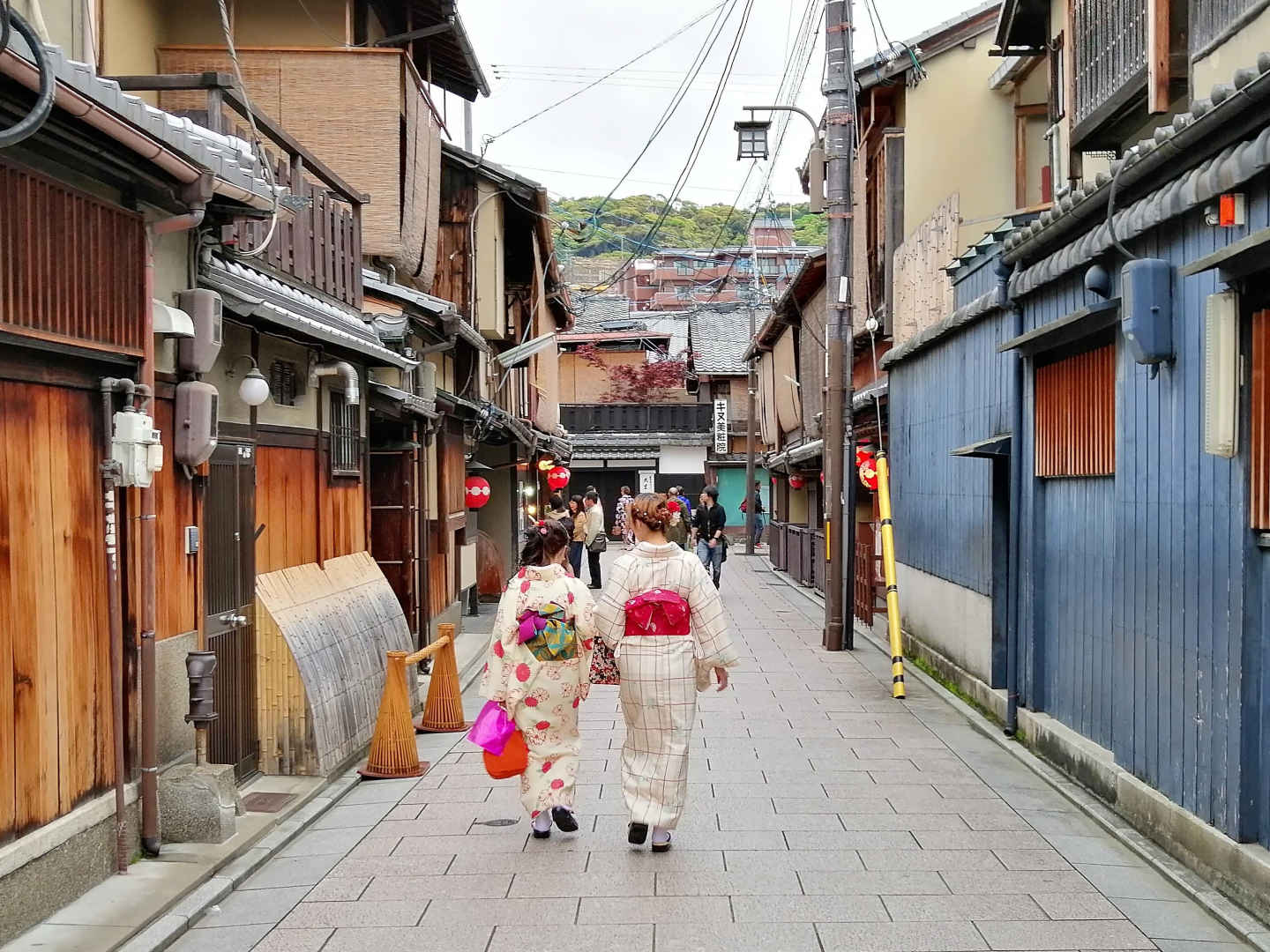
At the Gion Corner theatre, you can watch performances showcasing a variety of Japanese theatrical arts.
The nearby Ponto-chō district is also known for its preserved traditional architecture and entertainment. Pontocho Alley in particular is an atmospheric place to wander around after dark.
Here on its narrow streets you can discover tiny, moody bars where highly experienced bartenders mix you cocktails served with flowers, fruit and traditional Kyoto snacks.
Get lost in the bamboo forest
A popular day trip destination from Kyoto that you will recognise from Instagram photos is the Arashiyama Bamboo Forest. Just under an hour by public transport from central Kyoto, the bamboo forest walk is extremely popular with tourists so go early or be prepared for crowds.
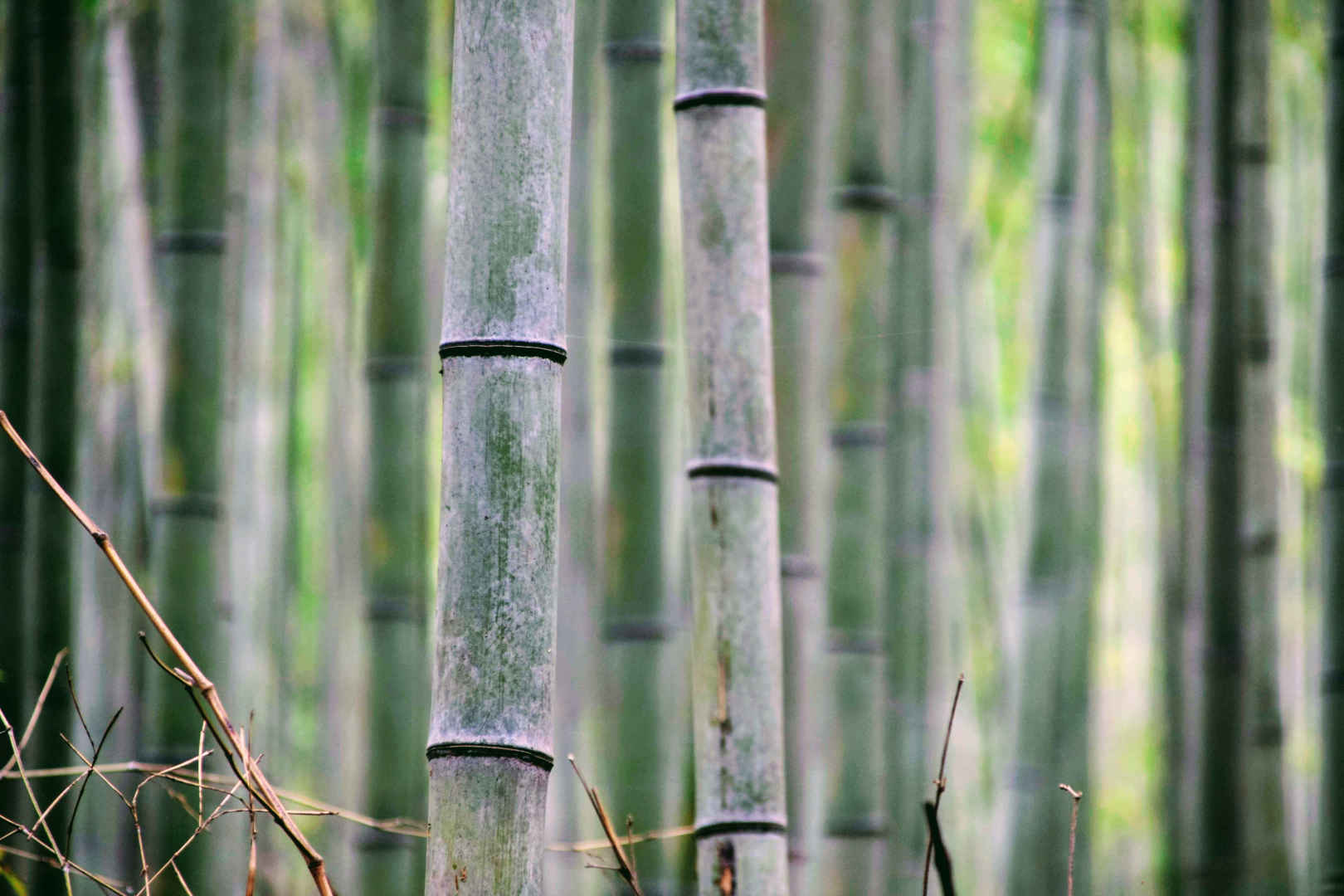
However, head off the beaten track and you will find secluded shrines and mossy pathways where you can enjoy a peaceful moment.
We found a great little Udon noodle restaurant called Ogura-ya, where you can tuck into delicious noodle soup.
From Kyoto it’s a comfortable three-hour bullet train ride back to Tokyo, where you can catch your flight home after an incredible three weeks backpacking Japan.
Tokyo – 3 nights
Returning to Tokyo for our flight home, we took an extra day for what turned out to be one of the highlights of our trip – a visit to the majestic Mount Fuji.
Mount Fuji – the most fabulous day trip from Tokyo
About 1.5 hours from central Tokyo by train or bus is the famous Mount Fuji. This special place is well worth a day trip to enjoy the views. We were very fortunate to have perfect weather to see this magnificent mountain as often the summit is obscured by clouds.
Staying overnight in this beautiful location? Discover all the best places to stay .
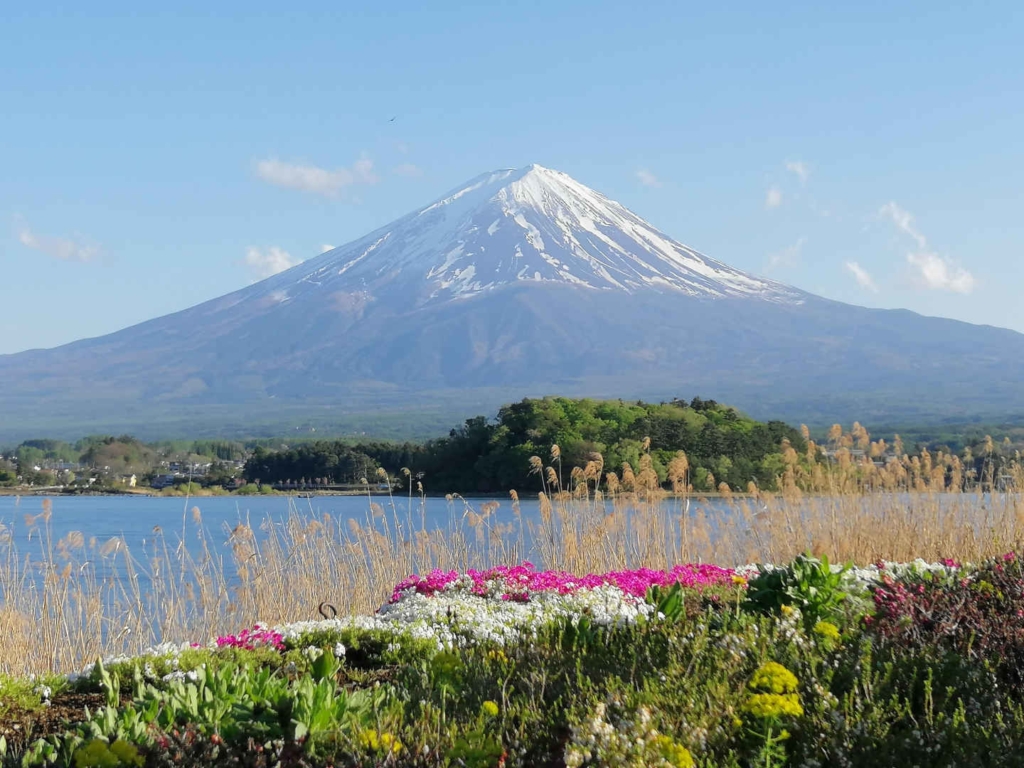
From Kawaguchiko Station rent a bicycle or take the Red Line bus to Oishi Park. This route is usually not as busy as some of the others, so it won’t be so crowded when you get there. The gardens, flowers and lake provide a beautiful foreground for your Mount Fuji photos. The blueberry ice cream from the cafe at the nearby Kawaguchiko Natural Living Center will make your experience even sweeter.
Is backpacking Japan expensive?
You may be wondering, how much does backpacking Japan cost? Japan is certainly more expensive than other countries in Asia to visit. In total, for our three weeks in Japan, I spent around €3500 (£3000), but you can definitely do it for cheaper than we did, if you stay in shared accommodation instead of private rooms.
So, how much money do you need per day when backpacking Japan? For me, it worked out at around €165 (£140) per day. I will break down the costs below, to help you calculate the price for your own trip.
Just over a third of the total cost was for accommodation. We stayed in simple hotel rooms, as well as a traditional Japanese ryokan and a nicer hotel in Okinawa for my birthday. You will save a lot of money on accommodation in Japan if you are staying in hostel dorm rooms, such as the ones suggested in the section below.
Around a quarter of the cost was for transport, including return flights from mainland Japan to Okinawa and the JR Pass for high speed train travel around the country. The JR Pass is an expensive upfront cost, but it works out cheaper than booking individual train journeys in Japan once you’re there and gives you peace of mind. For more information, see the travel section below.
The next biggest cost, at 16% of the total, was for food and eating out at restaurants. The good news is you can dine well in Japan on a budget. We only spent around €27 (£22) per day on food. In Japan, you can find tasty street food and it’s great to try the local specialities – read more on this below. Even in one of the neighbourhood 7-11 supermarkets, you can find delicious and inexpensive Japanese snacks and meals.
Of the remaining budget, the largest was for tickets to attractions, but this only comprised 8% of the total.
In terms of how much cash you should bring to Japan, you may be surprised to find that many vendors still take cash rather than credit card payment. For this reason, I would make sure you always have plenty of cash on you. Sometimes it will take a while to find an ATM, so once you locate one, it’s worth taking out a large sum of money, as you will probably be charged by your bank, and maybe the ATM too, for each withdrawal. Luckily, Japan is a safe place to travel, so you don’t need to worry about carrying cash with you.
This is the best (and worst) time to visit Japan
Spring is said to be the best time to visit Japan because it’s cherry blossom season. For my trip to Japan, we decided to go from mid-April to the first week of May, over the Easter holidays. However, it’s good to check with a Japan itinerary blog or planner first. It was only after I booked our flights with ANA (All Nippon Airways) that I realised that our dates coincided with Golden Week.
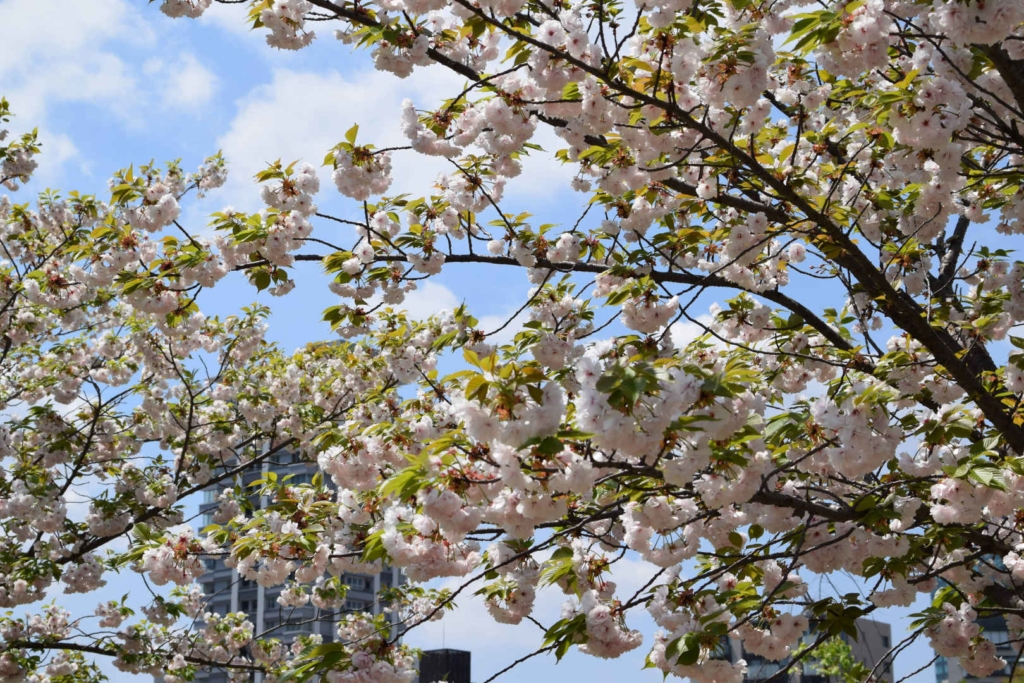
At the end of April and beginning of May every year, Golden Week in Japan is a time when there are a number of national holidays. At this time of year, many transport hubs, hotels and tourist attractions across the country are much busier than normal, if not fully booked. Normally the advice for international tourists is to avoid this period. For this reason, it’s better to go to Japan in March or early April, if you want to see the cherry blossom. The mild autumn months between September and November is another good time to visit, as summer in Japan can get very hot.
For us, Golden Week in 2019 coincided with the abdication of Japan’s Emperor Akihito and the ascension to the throne of his son Naruhito, Crown Prince of Japan, ushering in a new era for the country. As well as more extended national holidays, it was a momentous time in history to visit Japan. Read on for my full Japan trip planner to help you organise the best trip to Japan.
This is by far the fastest and best way to travel in Japan
As you will be travelling long distances in a relatively short space of time, the best way to travel around Japan is by bullet train, known in Japan as the Shinkansen . It is fast, comfortable and incredibly efficient.
Buying the bullet train tickets separately can be expensive, so I highly recommend buying a Japan Rail (JR) Pass. This allows you to travel on the Shinkansen as often as you want within your Japan 21 day itinerary for a fixed price. You need to order it in advance before you leave, then exchange your voucher for the pass itself at a train station when you arrive.
Find out more, buy your JR Pass and get a free Japan train planner here .
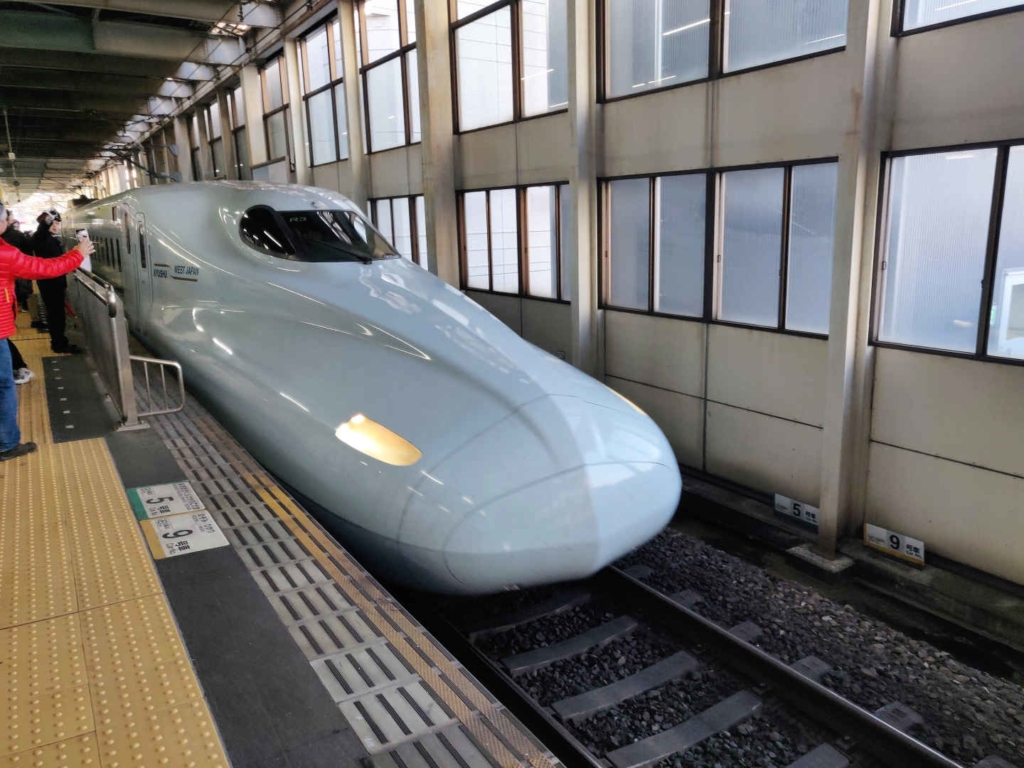
A Japan train tour like this is arguably the best way to see Japan if you are there for a week or more and visiting a few places – you can also buy a JR Pass for 1 week or 2 weeks. When you are looking into how to travel around Japan, you will see there are other options, such as buses and internal flights. Buses can be useful if your Japan travel route is more off-the-beaten path as the Shinkansen mainly serves the big cities. As we were taking flights for part of our trip, to visit Okinawa, we calculated that we didn’t need a JR Pass for 3 weeks to travel through Japan; we only needed to organise a 7 day Japan Rail Pass itinerary.
After you have planned your JR Pass Itinerary, you will need to book the individual tickets for the journeys at the train station. Then, the only thing you will need to worry about is getting on and off the train in time, as they only allow around one minute at each station, before speeding off to the next stop.
To help you plan a budget and estimate costs for your trip to Japan, check out this useful site .
Final thoughts on a backpacking Japan 3 week itinerary
While we had a full Japan itinerary of 21 days, somehow it still didn’t feel like enough time. Because we had chosen to go south to Okinawa on our Japan backpacking trip, we weren’t able to visit the two destinations in northern Japan that our friends had suggested.
Niigata is a port city said to produce the world’s finest sake, Japan’s famous rice wine, while Nagano is a ski resort famous for the snow monkeys bathing in the hot springs of Jigokudani Monkey Park. Seems there’s plenty left to visit on our return.
Whatever happens, you are sure to have an incredible time on your 3 week itinerary in Japan, as you eat, experience and enjoy everything this unique country has to offer.
60 Comments
1 ping/trackback.
What would you skip for a two week itinerary? I thought Okinawa? And what else?
Hi Dirk, yes, for a two week itinerary I would suggest leaving out Okinawa and Nagasaki. I hope you have an incredible trip to Japan!
How much did you pay in total for the whole trip?
Hi Jackie, thanks for your question. I have added a section to the article outlining the total cost for the trip and the breakdown by type of expenditure. I hope this helps!
Leave a Reply Cancel reply
Your email address will not be published. Required fields are marked *
Save my name, email, and website in this browser for the next time I comment.
The PERFECT Japan 3-week itinerary | Budget, tips & tricks
Japan is a country with a fascinating history, some incredible landscapes, and an incredible cuisine. If you want to really experience the Japanese culture, you have to spend more than just a few days in this country.
I recommend spending 3 weeks in Japan . You’ll be amazed by all the things this country has to offer. What I really loved about Japan is that it has something to offer to everyone.

If you’re passionate about culture, there are thousands of temples and traditions waiting to be explored. If you want a fun holiday, the night-life in Japan is simply fascinating. If you’re a nature lover, don’t worry! Japan is full of jaw-dropping sights and natural wonders. Waterfalls, volcanoes, and mountains – you name it!
In this post, I’ll share with you which are the places you have to visit if you’re planning a Japan 3 week itinerary. Eat something, grab a coffee, and be patient . This in-depth guide might be long but it has tons of useful information in it!
But first, let’s talk about some important things you need to know before planning a 3-week trip to Japan .
1. 3 weeks in Japan – MAP
Places included on this itinerary:
- Nagasaki -> Hiroshima -> Osaka -> Nara -> Kyoto -> Mount Fuji -> Tokyo -> Nagano -> Matsumoto -> Tokyo
Let’s face it – when planning a trip, the budget is very important. You need to know what to expect or else you’ll end up breaking the bank.
Japan is an EXPENSIVE country! (It’s bold on purpose)
Japan is one of the most expensive countries in Asia and there’s no way around that. Let’s put it this way – traveling on a budget in Japan is more expensive than luxury travel in Indonesia.
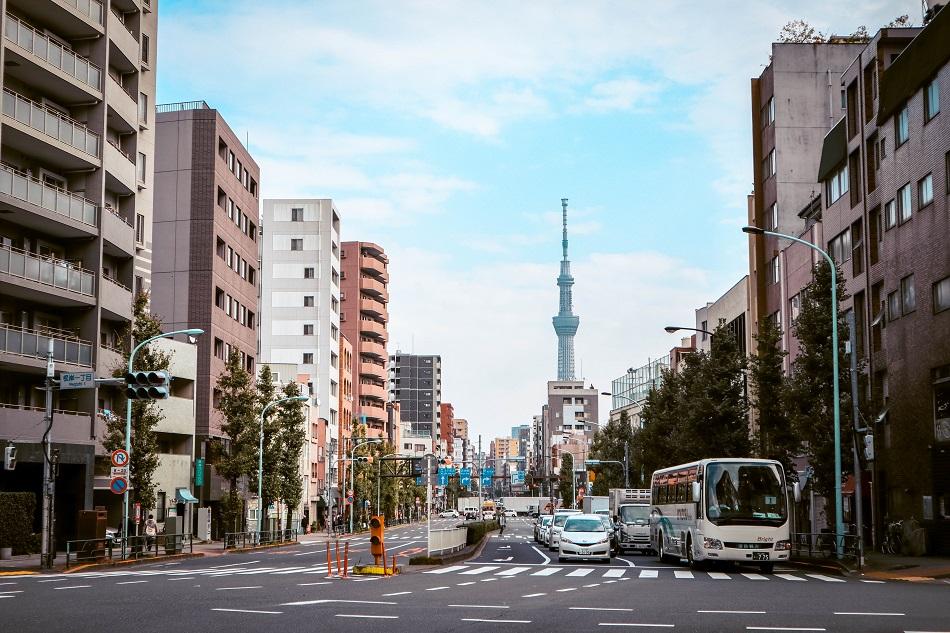
I’m not telling you this to discourage you. I just want you to set the right expectations.
Now that we’ve established that spending 21 days in Japan won’t be cheap, let’s see how much money you really need. In the section below I shared the average costs for a 3-week holiday in Japan for 3 different budget ranges – budget, mid budget, and luxury.
-> Are you planning to backpack in Japan? Read this guide !
Good to know: the prices below are per person. Also, keep in mind that the prices are different from city to city. I tried to make an average for all the cities included in this itinerary.
Accommodation in Japan
If you’re on a very tight budget, you’ll need to choose a bed in a dorm. You can find a bed in a hostel dorm room for about $20. A private room in a hostel will set you back $60.
If you have a little extra money, you can find a nice room with a private bathroom, in a good neighborhood for about $90-$120. One thing you have to keep in mind when traveling to Japan is the fact that hotel rooms & guesthouses rooms are usually very small. However, the Japanese somehow manage to include all the amenities you need in such small spaces. Pretty cool!
P.S. We had an incredible one-bedroom apartment in Osaka which was pretty small but had everything we needed, including a kitchen and a washing machine.
Now, if you’re one of those lucky ones who have lots of money, you won’t have to worry about the lack of space. Luxury hotels in Japan are pretty darn incredible and there are plenty of options to choose from. For a room in a luxury hotel, expect to pay between $190-$600.

All in all, if you’re willing to sleep in a dorm, the accommodation in Japan isn’t that expensive. However, you’ll have to pay quite a lot for privacy and space.
In conclusion, if you’re on a budget, the accommodation for 3 weeks in Japan will cost $441. For those in the “mid budget” range, the accommodation will cost $1890 – $2520. For those lucky ones in the luxury category, 21 nights in Japan will cost at least $3990.
Good to know: I traveled full time around Asia for one and a half years and I only used one hotel booking website – Booking.com . I love that they have plenty of options and you can choose your desired price range. I totally recommend it!
No time to read now? Pin it for later!
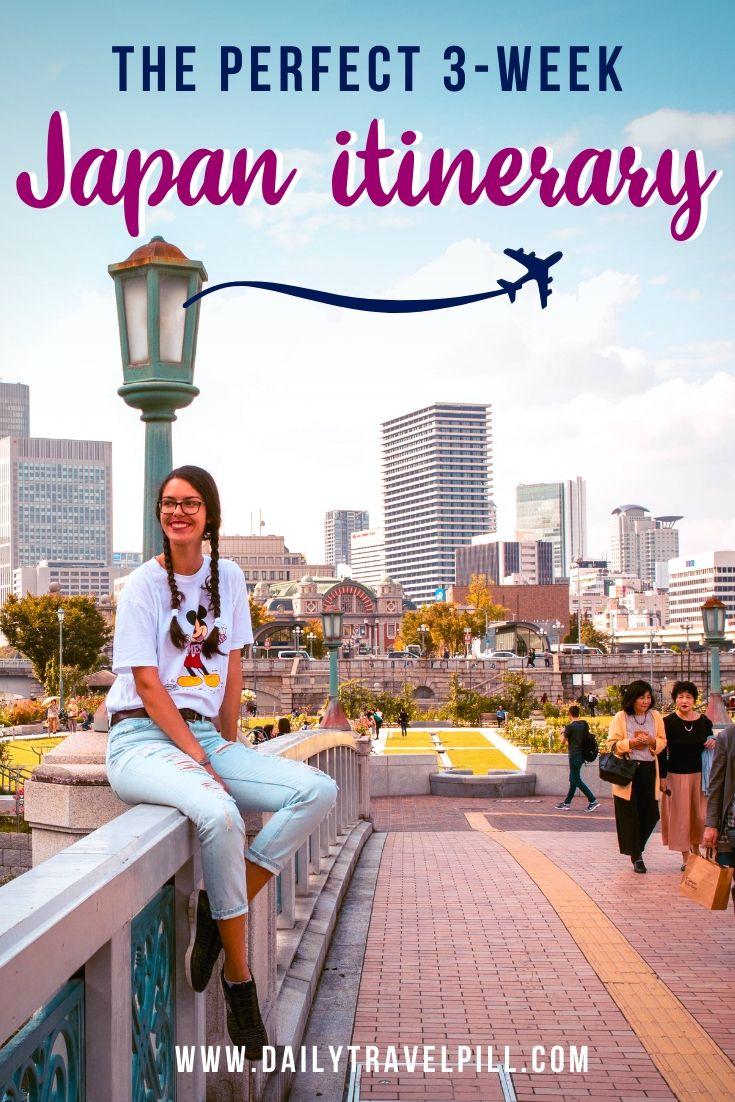
Transport in Japan
The cost of transport when planning a Japan 3-week itinerary is another expense we can’t ignore. The most important advice I can give you is – BUY A JR PASS !
Trains in Japan are super-expensive but with a JR Pass you’ll save hundreds of dollars. I recommend buying a 3-week pass which will cover all your train journeys (it costs $564).
Apart from the JR Pass, you’ll need to put aside some money for subways & buses. I think around $120 should be enough. This means that transportation wise for a 3-week holiday in Japan you’ll need about $684.
Food in Japan

While in Japan, you have to try ramen soup and sushi. The good news is that as long as you’re not going to fancy restaurants, a meal in Japan won’t be very expensive. For a ramen soup at a mid-range restaurant, expect to pay somewhere around $10-$15.
If you’re on a strict budget, try the street food! Snacks like takoyaki cost only $5. Another option is to try the snacks and sandwiches from 7-Eleven!
If you want to dine at fancy restaurants in Japan, a meal can cost you as much as $200.
Activities & entrance fees in Japan
The amount of money you’ll spend on activities and entrance fees for a 3 week Japan holiday is totally up to you. It really depends on how many museums, temples & tourist attractions you want to visit in each city.
I recommend setting aside at least $250 for activities.
Grand total
Now, the moment of truth. Are you curious to see which is the final budget for three weeks in Japan ?
- Budget – $1900 per person – $90 per day
- Mid Budget – $3660 – $4300 per person – $175-$200 per day
- Luxury – $8100 per person – $385 per day
Keep in mind that if you’re traveling as a couple, the costs will be a little bit lower. You’ll save some money on accommodation because you can share costs.
Also, I haven’t included additional costs (toiletries, souvenirs, and other expenses) & plane tickets to Japan in this budget.
In conclusion, the cost of a 3-week itinerary in Japan doesn’t have to break the bank. It’s definitely not cheap but if you’re determined to make it work, you can do it!
3. Things you need to know before visiting Japan
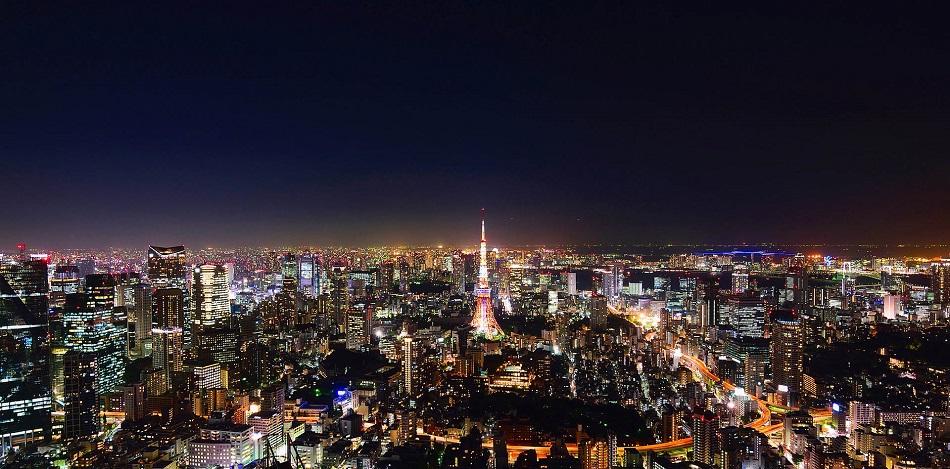
To make your trip easier and more enjoyable, there are some things that you should keep in mind when visiting Japan. It’s important to be mindful to local traditions but also to prepare yourself for a few things.
- Tattoos in Japan are considered taboo – I love tattoos, I have 2 myself. They are a way to express yourself but in Japan people associate tattoos with criminals or more specifically, the members of the Yakuza gang. If you have tattoos, you can be denied access to onsens, pools or saunas.
- You don’t have to tip in Japan – while in western countries tipping is extremely appreciated, in Japan you don’t have to do it. Most probably, if you tip someone, that person will run after you trying to give your money back. The truth is that the Japanese are happy with their salaries.
- The Japanese have a thing for fake food – you’ll see it all over the country – fake food displayed at the restaurant’s entrances. This is how a menu looks in Japan. You basically have to look at the fake dishes and choose what you want to eat. Most of the time, restaurants provide paper menus too.
- Big cities are extremely crowded – even though cities like Tokyo and Osaka are very crowded, everything works on point in Japan, including the transport system. Keep in mind that when riding escalators, you have to queue on the right side except for Osaka where you have to queue on the left side of the escalator.
- Using a toilet in Japan is not as easy as it seems – knowing how to use a toilet in Japan requires a university degree. It’s not as simple as it seems. The toilets have tens of functions and even something simple as flushing the toilet can become a challenge.
4. Japan itinerary – 3 weeks
This Japan itinerary for 21 days is perfect if you want to discover everything that Japan has to offer. From history to culture and cuisine, everything is included here. This itinerary is a mix of big and small cities, perfect for those who want to experience a bit of everything.
Important! In the version below, the itinerary starts with Nagasaki and ends with Tokyo but you can start the other way around.
Make sure to get a JR Pass which will cover most of the train costs for this itinerary. You’ll save a lot of money!
Day 1-2 in Nagasaki – 2 days, 2 nights
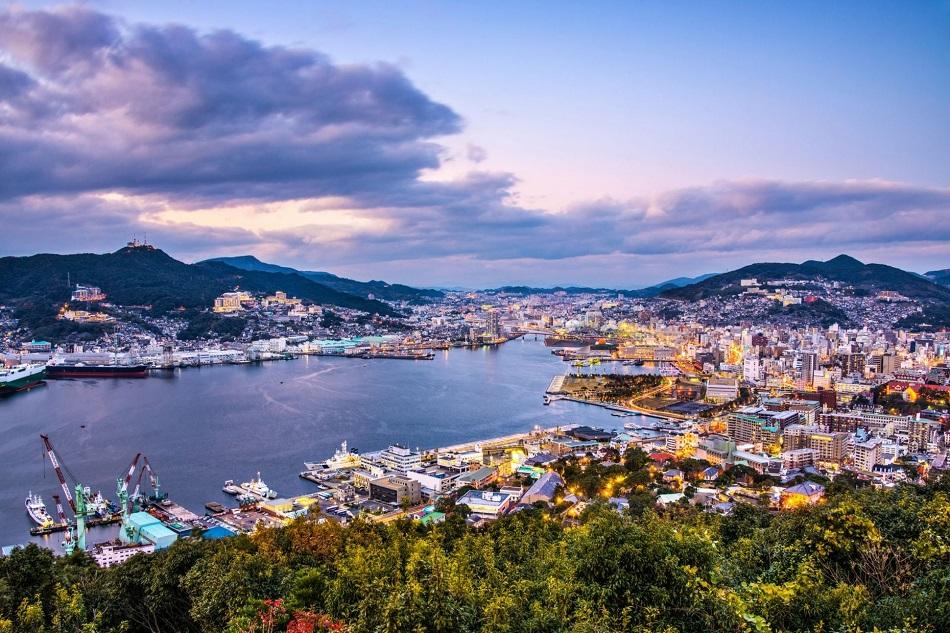
Our three week Japan itinerary starts in the south of the country, in Nagasaki on the island of Kyushu. During World War II, Nagasaki became the last city in the world to ever experience a nuclear attack.
With a strong Portuguese and Dutch architectural influence, Nagasaki has a different vibe comparing to other Japanese cities. It’s the perfect place to start your Japanese adventure and discover some incredible sights.
On day one you’ll probably land on the Nagasaki Airport. Although the airport isn’t big, it has connections with Seoul, Shanghai, and Hong Kong. Also, there are many domestic flights from cities like Tokyo and Osaka.
For day two, I have some awesome suggestions for activities in Nagasaki. I will list them down below.
- Visit the Nagasaki Atomic Bomb Museum – if you want to learn more about World War II, this is the place for you! Find out the story and the events that led to the atomic bombing at Nagasaki which killed and injured 150,000 people.
- Visit the Peace Park – situated next to the Atomic Bomb Museum, the main attraction at Peace Park is the statue created by Seibo Kitamura. The statue’s right hand points towards the sky, symbolizing the threat of atomic bombs while the left hand extended parallel with the horizon symbolizes peace.
- Explore Dejima – this former artificial island in the bay of Nagasaki was built in 1634 to separate Portuguese traders from the Japanese society. Today a number of structures at Dejima survived the passing of time and they can be visited by curious tourists.
- Visit the Glover Garden – built for Thomas Blake Glover, a Scottish merchant who had an important contribution to Japan’s modernization, Glover Garden is a great place for a walk. Admire the Koi pond and the beautiful Glover Residence.
- Explore Shinchi Chinatown – dating from the 15th century, Shinchi Chinatown is the oldest Chinatown in all Japan. If you want to try some delicious Chinese street food or maybe buy some Chinese items, a walk through Chinatown in Nagasaki should be on your itinerary.
- Visit the Suwa Shrine – located in the northern part of the city, the Suwa Shrine in Nagasaki overlooks the city. To get there, you’ll have to climb 227 stone steps but the views over the city are well worth it. This shrine is well known for its quirky sculptures so make sure to admire them.
- Admire the view from Mt. Inasa – are you ready for the best view over Nagasaki? I recommend climbing Mt. Inasa at the end of the day, at sunset. You can either reach the top by ropeway, bus or car. Take your time and admire the city from above!
There are plenty of activities to do and tourist attractions to visit in Nagasaki but on day 3, it’s time to move to our next destination – Hiroshima.
To get to Hiroshima from Nagasaki, you will have to take the train and change at Hakata. The good news is that the train ride is fully covered by the JR Pass . The train ride will take about 3 hours and a half. I recommend getting up early to get to Hiroshima somewhere around lunchtime. This way, you’ll have an extra half day to explore Hiroshima.
Where to stay in Nagasaki
- Budget – Nagasaki Royal Chester Hotel – excellent value for money, good location, clean & spacious rooms
- Mid Budget – Hotel New Nagasaki – great location, excellent staff, modern rooms, great amenities
- Luxury – Garden Terrace Nagasaki Resort – incredible infinity pool overlooking the city, great restaurant, spacious & modern rooms, best hotel in the city
Day 3-4 in Hiroshima – 2 days, 2 nights

This ultimate 3-week Japan itinerary wouldn’t be complete without a stop to Hiroshima. While Nagasaki was the last city ever hit by a nuclear bomb, Hiroshima was the first one. The Hiroshima bombing during World War II killed somewhere between 90,000-160,000 people.
Even though the city has a dark past, after the war the locals rebuilt Hiroshima and made it a thriving and flourishing city. Nowadays, Hiroshima is a hot tourist attraction full of museums, parks, temples, and with great gastronomy.
Good to know – To make your life easier and save some money, I recommend getting a Hiroshima Tourist Pass . This pass will grant you unlimited rides on buses, streetcars, and Miyajima ferries.
If you follow my advice and leave Nagasaki early in the morning, you’ll have one and a half days to explore Hiroshima (on the third day we’ll head to our next destination – Osaka). Below is a list of incredible tourist attractions you can visit in Hiroshima.
- Visit the Atomic Bomb Dome – this is the most important tourist attraction in Hiroshima. The story of this place is truly fascinating. Although the dome was located underneath the explosion, it somehow survived the bombing and the building still stands today.
- Visit the Peace Memorial Museum – if you’d like to learn more about the detailed chronology of the events leading to the bombing, you have to visit this museum. I have to warn you, the Peace Memorial Museum is not for the faint-hearted.
- Go shopping at Hondori Shotengai – this covered shopping street is full of clothing & accessories stores. It’s a great area to shop for souvenirs and find some cheap gems.
- Explore the Miyajima Island – take a half-day private cruise around this beautiful island, also known as the “Shrine Island”. On this island, you can find the famous floating torii gate of Itsukushima Shrine and hundreds of deer you can play with. If you’re looking for a unique experience on Miyajima Island, attend a tea ceremony !
- Admire the Hiroshima Castle – even though the original castle was destroyed during World War II, it has been rebuilt in 1958. The replica of the original is nowadays a museum and the castle is an amazing representation of the Japanese architecture.
- Book a Bay Dinner Cruise – spend a romantic evening along the Hiroshima Bay while admiring the stunning views. Enjoy your full-course dinner aboard of a cruise ship. This is definitely a once-in-a-lifetime experience and you can enjoy it with your partner or loved ones.
- Admire the city from Hijiyama Park – walk to the top of the park and admire the amazing view over Hiroshima. If you happen to be there in spring, you’ll be welcomed with some incredible cherry blossoms.
- Visit Mitaki-dera Temple – also known as the “Three Waterfalls Temple”, Mitaki-dera has a beautiful two storey pagoda. This place is famous for its beautiful cherry blossoms in spring and colorful leaves in autumn.
Hiroshima has a lot to offer in terms of culture, history and tourist attractions in general. After exploring this city, it’s time to continue our 3 weeks Japan route and head to our next destination – Osaka.
To get from Hiroshima to Osaka, use your JR Pass and take the Shinkansen bullet train. Choose the Hikari or Sakura Shinkansen and you’ll get to Osaka in a little over one hour and a half.
Where to stay in Hiroshima
- Budget – Kamon Hotel Setuo – excellent location, clean rooms, super-friendly staff
- Mid Budget – Hotel Granvia Hiroshima – great view over the city, excellent location, modern & spacious rooms
- Luxury – Sheraton Grand Hiroshima Hotel – incredible views, luxury feel, spacious rooms, great amenities
Day 5-7 in Osaka – 3 days, 4 nights

One of the top things to see in Japan in 3 weeks is Osaka. This vibrant city is the second largest city in Japan and a cultural melting pot. Osaka is the perfect combination between history and modernity and this is exactly what made me fall in love with it.
This city has a little bit of everything – temples, modern buildings, a castle, an amazing night-life, and delicious cuisine. Are you ready to explore Osaka? Below you’ll find the main tourist attractions in the city.
If you get to Osaka in the morning, I recommend spending that half-day and the next one exploring the city. On the second full-day in Osaka you can visit Universal Studios Japan . On your last full day in Osaka, I recommend taking a day trip to Nara (more about this in the next section). Use the last night in Osaka to catch some sleep because the next day we’ll be heading to our next destination – Kyoto.
Good to know – if you want to save some money, get the Osaka Amazing Pass . With it, you’ll have free access to Osaka’s main tourist attractions and on top of that, you’ll also get unlimited use of the subway and bus system. For prices, click here .
- Admire the Osaka Castle – learn more about Osaka’s history at the Osaka Castle. For one of the best views over the city, climb the stairs or take the elevator to the top of the castle.
- Have fun at Universal Studios Japan – what would you say about spending an entire day at one of the best amusement parks in the world? Book your tickets for Universal Studios Japan and enjoy some of the coolest roller-coasters ! The day spent at USJ was one of the highlights of my trip to Japan.
- Explore Shitenno-Ji Temple – built in 593, Shitenno-Ji is one of the oldest temples in Japan. Although the temple was destroyed a few times in the past, it has been rebuilt to reflect the original architecture.
- Visit the quirky Shinsekai – this quirky neighborhood was built to resemble both New York and Paris. Even though after the war this was one of the poorest areas in Osaka, nowadays Shinsekai is a major tourist attraction. People come here for a wide range of restaurants, shops, and the famous Tsutenkaku Tower.
- Admire the city from the top of Abeno Harukas – you can admire Osaka from the top of the tallest skyscraper in Japan at Abeno Harukas. You can enjoy the views from the 16th floor for free but getting to the top of the building (60th floor) requires a ticket.
- Step back in time at Hozenji Yokocho – this narrow street full of restaurants and bars is the perfect place for a short walk. What makes it unique is its architecture.
- Go to the Osaka Pokemon Center – are you a Pokemon fan? If yes, make sure to visit the Osaka Pokemon Center . Here you’ll find stuffed Pokemons and a wide range of Pokemon merchandise.
- Enjoy the night-life at Dotonbori – you can’t visit Osaka without stopping by Dotonbori during the night. Thousands of neon lights and arcade game centers are waiting for you. Also, there are hundreds of shops here selling pretty much anything. Have fun!
Osaka is not as expensive as other cities in Japan. Visiting it on a budget is totally do-able! There are many tourist attractions you can visit in this city and I’m sure that you’ll have a lot of fun discovering them all!
For your last day in Osaka, I recommend a day trip to Nara where deer roam free around the city. More about this in the section below. After our short stop in Nara, it’s time to take the train and head to our next destination – Kyoto!
Where to stay in Osaka
- Budget – Rakuten Stay – good location, very clean rooms, beautiful design, excellent staff
- Mid Budget – Hare Shin – traditional yet modern design, spacious rooms, good location, very clean
- Luxury – Marriott Hotel – incredible views, excellent location, fitness center, clean & spacious rooms, excellent staff
Day 8 in Nara – 1 day (day trip from Osaka)
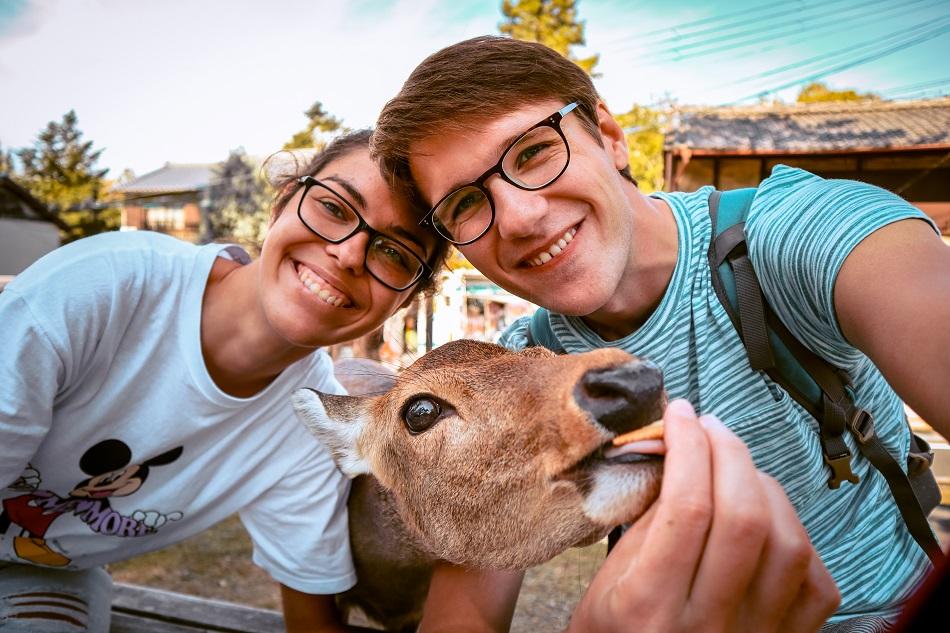
Are you wondering what else to visit in Japan in 3 weeks ? I have a surprise for you – our next stop is a unique city where deer roam free on the streets and on top of that they’re super-friendly. How awesome is that?
Nara is by far my favorite city in Japan. You’ll see hundreds of deer on the streets, in parks, at temples and pretty much anywhere. Make sure to buy some deer crackers and they’ll be your friends forever!
To get to Nara, take the train from Osaka-Namba Station to Kintetsu Nara Station. The train ride will take about 40 minutes and then you’ll have to walk for another 20 minutes to get to Nara Park.
Apart from all the cute deer, there are some other interesting things to do in Nara. You can visit some incredible Japanese gardens and explore beautiful temples. To read more about the places you can visit in Nara in one day, click here .
Day 9-10 in Kyoto – 2 days, 2 nights

One of the things to see in Japan in 3 weeks is Kyoto . With 1600 Buddhist temples and 400 Shinto shrines, Kyoto is the perfect place to find out more about the Japanese culture. Even though it’s a big city, it somehow has the vibe of a village and I loved that about it.
Make sure to leave Osaka early in the morning and you’ll have one and a half days to explore the beautiful Kyoto. That’s plenty of time to visit the most important tourist attractions around the city. Let’s see which are the places you have to visit when in Kyoto.
Good to know: I recommend getting a Kyoto sightseeing pass which includes free entrance fee to all the major tourist attractions in the city.
- Get lost in Arashiyama Bamboo Forest – probably one of the most visited and photographed locations in Kyoto is the Bamboo Forest . The tall bamboo pillars create an incredible view and the good news is that you can walk inside the forest and admire them.
- Explore Fushimi Inari Shrine – with more than 1,000 red torii gates creating a long tunnel, the Fushimi Inari Shrine is a unique sight. In the 17th century, people used to donate a torii gate to make their wish come true. That’s the reason why today there are so many torii gates at Fushimi Inari Shrine.
- Taste the food at Nishiki Market – this is one of the oldest and most popular markets in Japan. At Nishiki Market you can find more than 100 stalls selling fresh Japanese delicacies. Don’t hesitate to try the seafood! Simply delicious!
- Buy souvenirs at Teramachi Street – right near Nishiki Market is Teramachi Street . If you’re looking for some souvenirs, this is the place to go! Apart from souvenirs here you can find traditional Japanese items such as kimonos but also modern clothes and accessories.
- Admire the Yasaka Shrine – a popular place for photo-shoots, Yasaka Shrine is one of the most important shrines in Kyoto. If you want to take some photos, you’ll find some shops at the entrance, renting kimonos. Otherwise, take your time to admire the shrine’s architecture and take a walk around Maruyama Park.
- Admire the view from Kyoto Tower – enjoy a unique view over Kyoto from the 100 m tall Kyoto Tower observation deck. I recommend going at sunset when the whole city lights up. To book your tickets, click here .
- Find a geisha in Gion – you can’t visit Kyoto without stopping at Gion neighborhood. If you want to see a geisha, make sure to be in Gion at 5.45 pm sharp. That’s when the geishas leave their homes to go to their appointments.
There’s plenty to do in Kyoto in one a half days but it’s time to head to our next destination – Mt. Fuji. There are many places from where you can admire the most iconic volcano in the world but the best location is Kawaguchiko and that’s where we’re heading.
To get to Kawaguchiko from Kyoto you’ll have to take the Shinkansen train from Kyoto to Mishima. From Mishima, take an express bus to Kawaguchiko. It’s important to mention that only the train is covered by the JR Pass . For the bus, you’ll have to pay by yourself.
Where to stay in Kyoto
- Luxury – Hotel Granvia – beautiful pool, incredible views, excellent location, comfortable & luxurious rooms, breakfast included
- Mid Budget – Solaria Hotel Premier – excellent location, incredible architecture & views, clean & modern rooms, excellent facilities
- Budget – Sanjo Okawa – good location, clean & spacious rooms, good WiFi, access to washing machine
Day 11-12 at Mt. Fuji – 1 day, 2 nights
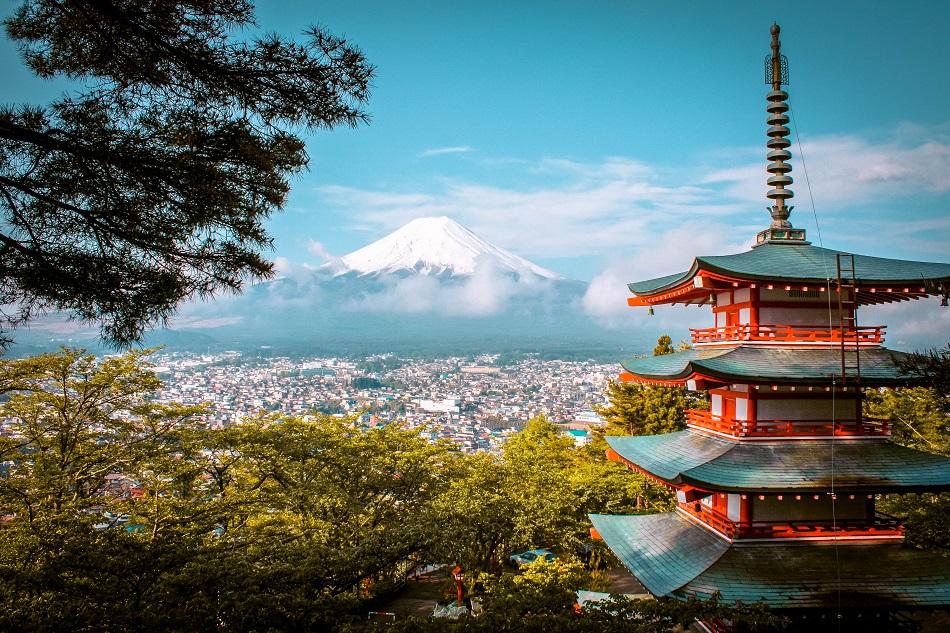
Our three week Japan itinerary continues with a stop at Kawaguchiko, known to offer an incredible view towards Mt. Fuji. Did you know that Mount Fuji is the tallest mountain in Japan (3,776 meters)? Also, Mt. Fuji is still active and last erupted more than 300 years ago.
Fuji is one of the iconic sights in Japan. This place is so unique and beautiful that the sunset at Mt. Fuji has its own name – Goraiko. You’ll have an entire day to explore Kawaguchiko and enjoy some of the most incredible views you’ll ever see.
Below are some of the things you can do in Kawaguchiko.
- Admire Mount Fuji – there are many viewpoints from where you can see Mount Fuji but my favorite one is the promenade in front of Kawaguchiko Hotel New Century . Even though I only saw Fuji for ten minutes before it was fully covered by clouds, I feel super-lucky to have had the chance to see this wonder of nature.
- Visit Chureito Pagoda – admire its beautiful architecture and relax at Chureito Pagoda. This pagoda offers one of the best views towards Mt. Fuji.
- Take the Mount Fuji Ropeway – take the scenic Mount Fuji Panoramic Ropeway and admire the lake, the mountains, the city, and Mount Fuji from above.
- Rent some bicycles or a paddleboat – rent some bicycles and explore Kawaguchiko or rent a paddleboat and paddle around the lake while admiring the reflection of Mt. Fuji into the water. This is the best exercise you’ll ever have!
- Try the world’s steepest roller-coaster – apart from the awesome views, Kawaguchiko is also home to the world’s steepest roller-coaster. Book your tickets to Fuji-Q Highland Theme Park for a few hours of fun and adrenaline.
Out of all the places I’ve seen in Japan, Kawaguchiko will always have a special place in my heart. Make sure to wake up early and enjoy all this place has to offer. Btw, the sunrise over the lake is simply stunning.
It’s time to continue our journey north and our next stop is no other than Japan’s capital city – Tokyo! I know you’ve been waiting for a long time to explore this city and I’am sure that you’ll love it as much as I did.
To get to Tokyo from Kawaguchiko, you’ll have to take the Fujikyuko Line from Kawaguchiko to Otsuki (this ride is not covered by the JR Pass). From Otsuki change trains and head to Tokyo (this part of the trip is covered by the JR Pass ). The entire ride will take around 5 hours which means that you’ll arrive in Tokyo late in the evening.
Where to stay in Kawaguchiko
- Luxury – Fufu Hotel – excellent location, excellent view of Mt. Fuji, modern & luxurious rooms, breakfast & dinner included, excellent staff and amenities
- Mid Budget – Lakeland Hotel – good location, clean & spacious rooms, breakfast & dinner included
- Budget – Togawaso – good location, beautiful view toward Fuji, Japanese-style rooms, friendly staff
Day 13-16 in Tokyo – 3 days, 4 nights

Our 3-week Japan trip takes us to Tokyo! Welcome to the city that never sleeps! For me, Tokyo is orderly chaotic. There’s a lot of traffic & many people roaming around the city but somehow everything is where it’s supposed to be. The public transport works on point, you can get anywhere around the city fairly easy, and everything works like a clockwork.
You’ll have 3 full days to explore Tokyo which is enough to visit the most important tourist attractions in the city and feel the city’s vibe. Are you ready to explore one of the most fascinating cities in the world?
Good to know: I HIGHLY recommend getting a Tokyo subway pass for 3 days . With this pass, you’ll have free access on the subway and you’ll save lots of money.
I’ll list below some of the places you can’t miss while in Tokyo.
- Explore the city while wearing a kimono – one of the best experiences you can have in Tokyo is to rent a kimono .
- Visit Gotokuji Temple – this temple is considered to be the birthplace of maneki-neko, the cute white cat used as a talisman around Asia. Visiting Gotokuji Temple is a true delight since you won’t find too many tourists here. Admire the temple and walk between the thousands of maneki-neko cats.
- Be a part of the chaos at Shibuya Crossing – this is the busiest pedestrian crossing in the world and a must-see attraction in Tokyo. Take your time to discover the nearby shopping malls, restaurants and fashion stores.
- Have fun at Tokyo Disneysea – this is one of the best amusement parks in the world! Save one day to have a thrilling and fun experience at Tokyo Disneysea !
- Explore Harajuku – this cool and colorful neighborhood in Tokyo is perfect for a relaxing walk. If you’re lucky, you might even see a few Harajuku girls. While in Harajuku , try the famous crepes, eat some rainbow cotton-candy and shop four souvenirs.
- Admire the views from Tokyo Metropolitan Government Building – there are many places in Tokyo from where you can admire the city but the best one is the Metropolitan Government Building. Moreover, the entrance is free! I recommend getting there at sunset to see the city lighting up.
- Spend the evening at Kabukicho – this is the biggest red-light district in the world! Take a walk on the streets of Kabukicho and you’ll find thousands of neon lights, weird restaurants (you have to try the famous Robot Restaurant ), and arcade game rooms.
- Visit the Pokemon Center Mega Tokyo – are you a Pokemon fan? If the answer is yes, then this place is for you! At the Pokemon Center Mega Tokyo you’ll find lots of stuffed Pokemons, accessories, and all kinds of Pokemon merchandise.
- Admire the Senso-ji Temple – this is probably the most visited and the busiest temple in Tokyo. However, it’s architecture is simply stunning. Visiting Senso-ji Temple is a great way to learn more about the Japanese culture.
- Visit Tsukiji Fish Market – visiting Tsukiji Market in Tokyo is not an ordinary experience. This is the largest wholesale fish and seafood market in the world! I recommend going to the tuna auction which starts at 5.20 am. Keep in mind that access is restricted to only 120 visitors so be there as early as possible.
- Step into another world at Tokyo TeamLab Borderless – have you ever seen those photos of people in colorful rooms with never-ending lanterns or balloons? They’re taken at TeamLab Borderless in Tokyo. The artworks here are simply incredible.
- Admire the views from Tokyo Tower – another great place from where you can admire the city is the Tokyo Tower. Head to the top of it and enjoy an incredible view!
- Visit Tokyo Imperial Palace – the imperial palace was destroyed during World War Two but it was rebuilt in the same style. You can admire the Palace from the outside since the inner grounds are usually not open to the public.
I’m sure you’re going to have three full days in Tokyo. This city is very different from everything I’ve seen and its charm is hard to pass unnoticed.
Our next and last destinations are Nagano and Matsumoto. We’re gonna spend 3 nights in Nagano and we’re going to visit Matsumoto as a day trip.
To get from Tokyo to Nagano, take the Hokuriku Shinkansen from Tokyo to Nagano. This ride is covered by the JR Pass .
Where to stay in Tokyo
- Budget – Emblem Hostel – good location, gym, clean rooms, access to train/ subway
- Mid Budget – Hotel Rex – excellent location, included breakfast, modern & spacious rooms, awesome amenities
- Luxury – Ascot Tokyo – excellent location, beautiful pool, spacious & luxurious rooms, excellent staff, great value for money
Day 17-19 in Nagano and Matsumoto – 2 days, 2 nights

Situated right near the famous Jigokudani Monkey Park , Nagano is well known for its skiing slopes, beautiful shrines, and cuisine. We’re going to spend 2 nights here, exploring Nagano and the surrounding areas.
On our last day, we’ll take a day trip to Matsumoto which is our last stop on our 21 day Japan itinerary. Before that, let’s see which are the top things to do in Nagano.
- Check out the snow monkeys – the reason why many tourists come to Nagano is to see the beautiful snow monkeys living in Jigokudani. More than two hundred monkeys live here. When the weather gets cold, they head to the local hot springs for a dip in the warm water. How cool is that?
- Visit Zenkoji Temple – built in the 7th century, this temple is one of the most important pilgrimage sites in Japan. You can admire the temple’s beautiful architecture and buy some talismans from the nearby shops.
- Try the local cuisine – you can’t leave Nagano without trying oyaki. Oyaki are steamed Japanese dumplings with a wide range of fillings (eggplant, pumpkin, mushrooms).
- Admire the Togakushi Shrine – there are five shrines in total and the surrounding nature is stunning. To get to Togakushi Shrine you’ll have to take the Alpico Bus Company from Nagano Station. Enjoy!
- Enjoy the winter sports – if you’re visiting during winter, you’re in luck. Nagano is home to some of the most famous ski resorts in Japan. If you’re not into skiing, you can also go hiking.
After exploring Nagano for one and a half days, it’s time to take a day trip to Matsumoto. The train between these two cities is covered by the JR Pass and the ride takes only 50 minutes.
Where to stay in Nagano
- Budget – Chisun Grand Nagano – good location, good WiFi, spacious rooms, great amenities
- Mid Budget – Hotel Metropolitan Nagano – excellent location, clean & spatious rooms, modern feel, friendly staff
- Luxury – Jizokan Matsuya Ryokan – traditional Japanese accommodation, very clean and spacious, friendly staff, great restaurant
Matsumoto is a beautiful city and to help you get around, I’ve listed the top tourist attractions below.

- Visit Matsumoto Castle – also known as the “Crow Castle” due to its black exterior, the Matsumoto Castle is one of the most beautiful and few remaining original castles in Japan (most of them have been reconstructed).
- Visit Daio Wasabi Farm – you’ll have the chance to see how wasabi is produced at the biggest wasabi farm in Japan. Before leaving, make sure to stop by the shop where you can taste wasabi ice-cream!
Day 19-21 back in Tokyo
Matsumomo was our last stop on our itinerary. Now it’s time to head back to Tokyo for the remaining two nights. You can either choose to relax or you can spend the remaining day exploring more of Tokyo or taking a day trip outside the city.
Below are some awesome day trips from Tokyo.
- Kamikochi day trip from Tokyo – for more details, click here .
- Gunma day trip from Tokyo – for more details, click here .
- Nikko day trip from Tokyo – for more details, click here .
5. Are 3 weeks enough to visit Japan?
Yes! 3 weeks in Japan are enough to explore both the major tourist attractions and some hidden gems too. You’ll have enough time to taste the local cuisine, visit a few temples, have some fun, and explore some museums.
I really hope that you’ve found this itinerary for 3 weeks in Japan useful. I tried to include as many tips & tricks as possible but if you have any questions, don’t hesitate to ask me in the comments section down below.
May the travel bug bite you!
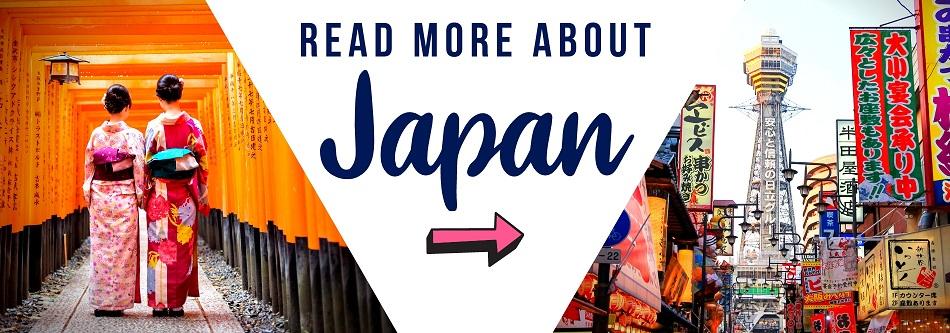
Aurelia Teslaru is a professional travel blogger and the writer behind Daily Travel Pill. With a 4-year experience as a travel writer and photographer, Aurelia only shares travel guides about destinations that she visited.
She has been to more than 40 countries during the past 10 years and aims to explore 50 countries before turning 30 years old. Aurelia is a digital nomad who transformed her passion for travel into a lifestyle. Read more about her here .
To follow her adventures, check out her Instagram and Facebook pages!
Thank you for posting this. Very specific. Thanks for doing all the math. Greatly appreciated. Loved the detail!
woow ill be using this exact itenarary when i travel to japan
Leave a Reply Cancel reply
Your email address will not be published. Required fields are marked *
Save my name, email, and website in this browser for the next time I comment.
This site uses Akismet to reduce spam. Learn how your comment data is processed .

Ultimate Japan 3 Week Itinerary for First-Time Visitors

Welcome to our Japan 3-Week Itinerary Planner.
Japan is a fascinating country.
It has many vibrant cities and incredible tourist attractions including renowned UNESCO World Heritage Sites and ancient monuments.
You will find spectacular landscapes, intriguing culture, urban skylines, temples and pagodas, delicious food, and even a suicide forest!
The nature here is very beautiful: from the stunning cherry blossom trees in spring to beautiful fall colors; the natural sights are a photographer’s delight.
The Japan Rail bullet train system is fast, efficient, and great to get around during your Japan itinerary.
Located in the Far East, Japan comprises of 4 main islands Honshu, Hokkaido, Kyushu and Shikoku and thousands of smaller islands.
Honshu is the largest island and is also called the Mainland.
Its area is roughly comparable to that of California.
The popular Japanese cities of Tokyo, Kyoto, and Osaka are located on Honshu and this is where most first time visitors plan their trip.
The mainland is well connected by the Japan Rail bullet train system.
3 Weeks in Japan Itinerary
Japan Itinerary 3 Weeks is a perfect time to explore this beautiful country.
We recommend flying in and out of Tokyo at the Narita International Airport.
See the city’s highlights including the skyline and urban attractions.
The visit the cultural destinations located away from the capital in Kyoto, Nara, and Miyajima using the Japan Rail.
Enjoy the natural wonders, cuisine, and culture of Japan. Buy unique souvenirs and plan a memorable trip.
This amazing Japan itinerary 3 weeks will guide around the best places to visit in Japan.
The itinerary assumes a leisurely pace of travel using the Japan Rail and is perfect for solo travelers, couples as well as families.
It covers major cities of Tokyo, Kyoto, Osaka, Hiroshima and includes interesting side trips to Mt. Fuji, Nara, and Miyajima via the bullet train.
It also includes trips to Nikko in Northern Japan and to Takayama in the Japanese Alps.
The itinerary also offers suggestions for day tours, add-on activities, and includes recommendations for hotels of all budgets.
We have also included what and where to eat recommendations wherever possible.
You will also find key travel tips and travel essentials including the Japan Rail bullet train pass to plan your Japan 3 week itinerary.
Tokyo – 3 Days
Tokyo is Japan’s bustling capital city. It is a unique and startling mix of the ancient and the modern.
It is the perfect place to begin your 3 Week itinerary Japan.
Land at the Narita International Airport and begin your trip. Take the train to Shinjuku station.
Shinjuku is the most central part of Tokyo and has been a popular tourist destination for decades.
In Tokyo, you will find cultural sights, museums, wide open places, neon skylines, and Instagram famous animal cafes.
While we suggest spending 3 days in Tokyo, you can easily spend a week to a fortnight in the city and still not want to leave.
To know more about the ethical side of animals cafes, read this post on Should you visit Animal Cafes while in Japan?
Things To Do In Tokyo
Tokyo’s most famous tourist attractions include Tsukiji Fish Market and Tokyo Skytree, the world’s tallest observation tower.
For a unique attraction, snap a photo with the Hachiko dog statue in Shibuya Crossing.
The Tokyo Disneyland and DisneySea are popular with families and kids.
Here are some of the best things to do in Tokyo itinerary during your visit.
Tokyo National Museum
A must for history connoisseurs, the Tokyo National Museum has several exhibits and artifacts about the Japanese history and culture.
The museum is largest in Japan and has an amazing collection of art pieces, artifacts, and relics dedicated to Japan’s intriguing history.
Here you will find samurai swords, kimonos and clothing articles, ancient pottery, beautiful paintings, and sculptures.
Tsukiji Fish Market
Tokyo’s Tsukiji Market is world famous for its gigantic seafood section.
The market also has the distinction of being the oldest fish market in the world.
Here you can get everything you want from cheap breakfast sushi to expensive caviar and sea urchins.
Whether you are looking to buy anything or not, just a stroll through the Tsukiji Fish Market is an unforgettable experience.
The market is open for business since dawn when the first fishing ships arrive from the sea.
Fresh seafood for sale at the Tsukiji Fish Market
Senso-ji Temple
Senso-ji Temple is the oldest and most visited temple in the city.
The temple is dedicated to the Buddhist God of mercy and happiness.
The temple and its grounds are grand and have beautiful architectural features which are highly popular with most visitors.
Entry to the temple is free and it is one of the best free things to do in Tokyo .
Odaiba is located on the Tokyo Bay right next to the Downtown.
Odaiba has everything from stunning buildings, museums, parks, beaches, and even a Legoland.
In fact, Legoland is not the only amusement park on this island; Odaiba has many kid-friendly attractions from go-karting, Ferris wheels, and even a natural hot springs theme park for adults.
Where to stay in Tokyo
Shibuya Station of the Japan Rail system is the perfect location for getting around Tokyo and intercity.
We recommend staying in this area to be close to attractions.
Tourists who are looking for the perfect luxury hotel experience should look no further than the Park Hyatt Tokyo hotel.
The Park Hyatt has been ranked as one of the top 10 hotels worldwide and offers everything from luxurious rooms to fantastic food options at its restaurants.
If you’re looking for something more affordable, then check out Hotel Metropole Shinjuku where rates are reasonable and rooms are clean.
Kyoto – 3 Days
From the urban hustle and bustle of Tokyo, escape to the charming delights of Kyoto via the bullet train system to continue your Japan itinerary.
Kyoto is old Japan.
The time stands still among Kyoto’s more than 2000 temples and shrines, age-old teahouses, tranquil Zen gardens and inspiring bamboo forests, and traditionally dressed geishas carrying dainty umbrellas.
We would ideally recommend spending 3 to 4 days in Kyoto to see everything however for time-strapped travelers, 2 days is a great time to experience Kyoto’s highlights.
Things To Do in Kyoto
Kyoto, which was once the imperial capital of Japan, is a perfect introduction to Japanese culture and presents innumerable opportunities to immerse in Japanese culture.
Kyoto has a host of famous temples, including the Fushimi Inari Shrine and Golden Temple.
The city is home to over 2,000 different shrines and museums.
Take an extra day trip from Japan to see the other side of the city, including a visit to the Grand Kyoto Temple of the Murryry.
There are also plenty of cultural events to offer throughout the city to see, such as the Grand Gura and some of Japan’s oldest pagarina temples.
Here are the 5 must have Japanese experiences in Downtown Kyoto and surrounding areas that can be easily covered in two to three days:
Golden Pavilion or Kinkaku-ji
The Golden Pavilion of Kyoto, Kinkaku-ji is one of Japan’s popular sights.
Reconstructed in 1955, the temple with its gold-foil covering is very spectacular.
Visitors cannot enter the temple, however beautiful views of the temple surrounded by the lake can be seen from the garden.
Being one of Kyoto’s top sights, it is always crowded. You can avoid crowds by visiting early in the morning on weekdays.
Fushimi Inari-Taisha
This Shinto shrine is most photographed sight in Kyoto.
The Fushimi Inari shrine was built to honor Inari, the Shinto god of rice and is famous for its endless array of bright orange torii gates.
The shrine is guarded by the many statues of sacred foxes of Inari.
Visiting the Fushimi Inari shrine is not easy.
It requires a 90 min hike up the mountain and we recommend starting early to avoid crowds.
Ginkaku-ji stands for the silver pavilion however the temple was never actually covered in silver.
This Buddhist temple has a very beautiful Zen garden that looks spectacular especially in spring and in autumn.
The garden has beautiful sand sculptures, small waterfalls, and many other structures and is a great place to unwind.
Nishiki Market
Nishiki Market is a busy, bustling traditional Japnese market selling everything from food to souvenirs.
It is a foodie’s paradise with thousands of unexpected food items to tease the taste buds.
Specialty shops selling varieties of pickles, tofu, and dried fish are fascinating to look at.
The market also has shops selling Japanese knives and other fascinating accessories.
Bamboo Forest Street
The walk through the street lined with bamboo trees is incredibly pleasant.
There are usually lots of people on the hike and it is crowded but walking slowly and letting other people pass is a good way to enjoy the tranquility of the hike.
The view over the river at the end of the hike is impressive.
Gion is Kyoto’s largest and most famous geisha district. This is a highlight of the Japan itinerary for many visitors.
The district is very picturesque with traditional teahouses lining up the roads and dainty geishas walking to work.
In the evening, Japanese paper lanterns cast flickering shadows and Gion looks even more beautiful in their light.
Gion is full of upscale restaurants serving delicious Japanese food.
Did you know that you can also wear a traditional kimono or dress as a geisha while in Kyoto?
We highly recommend this one of a kind experience.
Visitors can rent a kimono for a day and walk about the charming old town.
Gion is a great place to take a photograph in a traditional kimono.
Alternatively, many shops also offer a geisha costume and makeup to tourists.
Dressing up as a geisha is an incredible way to understand this aspect of the Japanese culture.
Where to stay in Kyoto
We highly recommend staying in a Ryokan during your Kyoto itinerary.
Ryokan’s are present all over Japan, however, there is a special charm in staying in a Ryokan in the heart of Japan’s cultural capital of Kyoto.
For a luxurious stay, you can also try the Four Seasons Kyoto !
Kyoto Hana Hotel is also a wonderful choice in a central location. It is perfect for exploring surrounding Gion by foot.
The Hyatt Regency or the Kyoto Hotel Granvia Kyoto is also popular with tourists.
Century Hotel Kyoto, located right by the main bullet train station, is good for those short on time since it easy to get around the city from here.
Nara – 2 Days
Nara was once the imperial capital of Japan.
Just like Kyoto, Nara is all old Japan and has 8 UNESCO World Heritage Sites.
Visitors love walking through Nara Park’s moss laden statues, tranquil shrines and friendly deer.
You can easily visit Nara using the JR train.
Things To Do in Nara
Daibutsu or the Great Buddha statue of Nara, located in the Todai-ji temple, is a magnificent bronze figure.
The statue is over 16 m high and housed in the temple’s Great Buddha Hall.
The original structure of Todai-ji’s Great Buddha Hall was the largest wooden building in the world; the current hall is two-thirds that size.
Nara Park is a tranquil garden with many paths and plenty of friendly deer.
The deer are a special highlight of the park due to their sheer number and willingness to come close to tourists.
Visitors can buy deer crackers from vendors and feed the deer.
The Nara Park also has Kohfukuji National Treasure Hall, the Tokodo hall and the Todaiji Museum which have a great collection of Japanese sculptures.
Isuien Garden
This beautiful Japanese garden is a must visit especially in spring and fall.
The garden is also spectacular in summer when the entire landscape is a rich green hue.
The teahouse, interesting garden layout, and sculptures, streams, stepping stones are beautiful to see.
The Yoshikien Garden located next to the Isuien garden is also must see during spring and fall.
Naramachi is a quaint, historic neighborhood with 2 traditional Japanese style merchant houses open for viewing, lots of shops, rustic teahouses, and temples lining the streets.
A walking tour in this area is best started at the visitor center where you will get maps and locations of interesting sites. We highly recommend having tea in one of the traditional teahouses to end your trip.
Osaka – 3 Days
Osaka is Japan’s third largest city after Tokyo and Kyoto.
Not many tourists visit Osaka, which is a shame because this vibrant city has great shopping and is a foodie’s paradise.
We definitely recommend adding Osaka to the 3 week Japan itinerary.
Osaka has many tourist attractions and is a perfect introduction to modern Japan after the charm of UNESCO World Heritage Sites and old Japan in Kyoto.
The Osaka station of the Japan Rail is well connected making it easy to see the city in a short time.
Things to do in Osaka
Osaka is a lively city, both day and night, with places like the city’s entertainment district of Shinsekai.
Grab lunch at Janjan Yokocho Alley, the best place in the city to try kushikatsu, a dish of breaded and deep-fried skewered foods.
Check out the Instant Ramen Museum, located in nearby Ikeda City, and visit the Minoo Park, a nature preserve with a number of attractions, including a 3-km nature walk to a massive waterfall.
Also Read: One Day in Osaka Itinerary
Osaka Castle
Osaka Castle is among Japan’s most famous castles and one of the must-see attractions in the city.
Visitors can take a tour of the Osaka Castle.
The interior has been reconstructed into a museum and hence does not feel original; however, the exterior is a splendid example of magnificent Japanese castles.
Views from the top of the castle are impressive.
Osaka Castle Park
Located next to the Osaka Castle, the large public park is a beautiful place with sculptures, mature trees, and duck ponds.
In spring the park blooms with cherry blossoms and plum blossoms and is one of the best places for hanami (cherry blossom viewing) in the city.
The park has beautiful views of the Osaka Castle.
Dotonbori neighborhood is the heart of Osaka’s modern lifestyle and is filled with theatres, restaurants, street shacks, shopping and more.
The area looks colorful during the day but is best viewed at night when all sorts of colorful neon signs come to life.
Visitors enjoy walking along the neon-lit storefronts, shopping for souvenirs and eating local cuisine off roadside eateries.
Some of the must eat street foods in Osaka include takoyaki, skewered chicken, Kobe beef, ramen, fugu fish, and other seafood.
Minami (Namba) and Shinsaibashi
After Dotonbori, these two areas are Osaka’s biggest night attractions.
All 3 shopping areas are located near each other.
Minami and Shinsaibashi also come alive at night with street food vendors, brightly lit neon signs, and an unbelievably large number of visitors.
Sumiyoshi Taisha Shrine
Founded in the 3rd century, this shrine is one of Japan’s oldest shrines.
The architecture style is purely Japanese (lacks Buddhist style influences) and is stunning with its straight roofs and finials.
It is also surrounded by a tranquil Japanese garden with sculptures and beautiful trees.
The highlight of this shrine is the red arched bridge called Sorihasi, also constructed in a purely Japanese style.
Osaka also has many other attractions which are popular with families including Universal Studios Japan, the Osaka Aquarium, Kuchu Teien Observatory, and the Ferris Wheel.
Where to stay in Osaka
Osaka Marriott Miyako Hotel is one of our favorite hotels in Osaka.
It’s located close to Dotonbori and has really comfortable rooms.
It is also a great place to stay because of the food and entertainment options nearby.
Cross Hotel Osaka is a few minutes walk to Namba Japan Rail station and another great choice.
Kobe 2 Days
A must for culinary travelers, Kobe is famous for its seared Kobe beef and crisp, locally-brewed sake.
This cosmopolitan town is situated on the slopes of Rokko Mountains adjacent to the sea and has origins as a popular port city.
Kobe is a delight to wander and explore for most travelers.
We recommend Kobe as a short day trip from Osaka.
Things To Do in Kobe
Port of kobe memorial park.
Kobe was damaged due to a severe earthquake in 1995 which resulted in the complete devastation of the port area.
The Memorial Park, dedicated to the victims and destruction, is a great place to visit and view the immense damage in the form of demolished structures and tilted light poles.
Chinatown (Nankinmachi)
Kobe’s Chinatown may be small but it is a great place to visit especially if you are hunkering for delicious Chinese food.
Must try items include steamed dumplings, meat skewers, and the famous Kobe Beef.
Hakutsuru Sake Brewery Museum
The Brewery Museum is a great place to understand the traditional sake-making equipment and the sake brewing process.
The visit starts with a free self-guided tour and ends with free sake tasting. Visitors can also try sake ice cream at the souvenir shop.
Ikuta Shrine
Located in the center of Kobe, Ikuta Shrine is famous in Japan.
It consists of several shrines around the main building and a surrounding wooded garden.
The shrine is dedicated to relationships and finding love. Visitors can tie love prayers in the garden.
Many weddings take place at the Ikuta Shrine.
Hiroshima – 2 Days
The name Hiroshima evokes unpleasant memories of the atomic mushroom cloud, innumerable deaths and destruction on a never seen before scale.
Hiroshima was the first city in Japan to be hit with an atomic bomb in 1945.
However, the present day Hiroshima shows great resilience and has come a long way from the bleak, abandoned blast zones.
It is a beautiful, cultured city that is a delight to visit, making it a must on your Japan trip.
To visit Hiroshima is to honor the cities hundreds of thousands of victims and their stories.
Things To Do in Hiroshima
Reach the city by the bullet train which goes to Hiroshima Station.
The Peace Memorial Park and the Hiroshima Castle are the main attractions to visit the city.
The city is also known for its seafood, especially oysters and sushi.
Hiroshima Peace Memorial Park
The world’s most somber peace monument, the park does a great job of explaining everything that happened in the city on that fateful day.
The museum has many artifacts and exhibits about the atomic bombing.
Atomic Bomb Dome
Atomic Bomb Dome has been preserved in its original state of devastation.
It serves as a haunting reminder of the vast destruction caused in a single moment.
We also recommend visiting the dome after dusk to understand the eerie silence and atrocities of world war II.
Some of Hiroshima’s other peace monuments including Memorial Hall for the victims, Children’s peace monument, the peace bell are well worth a visit.
If you want a more detailed travel guide to Hiroshima , check this one out!
Where to stay in Hiroshima
Royal RIHGA Hotel in Hiroshima offers great value for money and is a great place to explore all Hiroshima’s attractions.
Rooms are large, bright, and well furnished with all modern comforts.
The Sheraton Grand Hotel is situated in a great location close to the train station with plenty of transport and dining options nearby.
The hotel is connected to Hiroshima Shinkansen station by a short, covered walkway, providing easy transportation around the city and out to Miyajima.
The Peace Memorial Park and the city’s buses are both within easy walking distance.
Miyajima Island – 1 Day
Miyajima is a small island in the Hiroshima Bay and is known as the island of the gods.
The entire island is preserved as part of the UNESCO world heritage site and is one of Japan’s most popular tourist attractions.
Miyajima Island is close to Hiroshima and should definitely be on your list.
The friendly and tame deer that float all over Miyajima island are delightful while the cultural attractions are stunning.
Things To Do in Miyajima
It is one of Japan’s most popular tourist attractions.
Main attraction is the bright red Torii gate of Itsukushima-jinja Shrine which stands out in the sea.
You can also take the ropeway to the sacred Mount Misen where you can go hiking.
Watch out for the tame deer that follow you around, especially paper and maps, as they love to eat paper.
Itsukushima – The Great Torii
The Great Torii is a single free-standing gate of the Itsukushima Shrine.
At high tide, the Torii is surrounded by water and appears to float on the sea.
It is one of the most photographed sites in the world and the gate is commonly called ‘The Floating Torii’.
Mt. Misen is Miyajima’s highest peak.
The observation deck at the top of Mt. Misen is accessible via a 2 hr hike or a ropeway and offers beautiful views of the island.
Five Story Pagoda
This lesser known attraction on Miyajima is a beautiful sight.
Almost 27 meters tall, the majestic Pagoda is dedicated to the Buddha of Medicine.
Himeji – 1 Day
Himeji is home to Japan’s most beautiful castle.
A stopover at Himeji is necessary for history lovers, art and architecture patrons, and culture geeks.
Things To Do in Himeji
Himeji castle.
Almost everyone comes to Himeji for the castle.
The beautiful castle has been recently renovated and is a glorious example of Japanese architecture.
The castle is a world heritage site and looks spectacular during the cherry blossom season.
Kokoen Garden
Kokoen Garden is home to 9 reconstructed Samurai style houses.
They reflect Edo period style architecture and are surrounded by stunning Japanese gardens with water features, sculptures, and elegant trees.
The garden is spectacular in spring and fall.
Himeji makes a perfect day trip from Kyoto and Osaka and is a perfect stopover on the way to Hiroshima.
Takayama, Shirakawa-Go & Shinhotaka – 2 Days
In the mountainous region of Gifu prefecture, Japan, there are quaint villages and towns that have been preserved from an earlier era.
The best known are Takayama, Shirakawa-Go, & Shinhotaka. They are designated as a UNESCO World Heritage site.
These villages have a long history dating back to the 16th century when rice farming was introduced to the area.
Today, many tourists visit this region for its beautiful scenery, bamboo Japanese style homes, cobblestone streets, traditional gardens, quaint shops, temples and shrines, and craftsmanship in wood carving.
If you’re looking for a place with traditional Japanese culture as well as nature views then head over to Takayama Shirakawa-Go Shinhotaka!
Hakone & Mt Fuji – 2 Days
Hakone is a popular tourist destination in Kanagawa Prefecture, Japan. It is known for its natural beauty and hot springs.
Hakone also makes the perfect base to explore Mt Fuji.
Things to do in Hakone
The town of Hakone has been attracting tourists for centuries because it is an easy day trip from Tokyo and offers visitors a chance to enjoy the Japanese culture and scenery.
Hakone has many onsen, or hot spring bathhouses to enjoy.
The most popular way to experience an onsen is by visiting a traditional Japanese Ryokan (hotel) in Hakone.
These hotels usually have one or more private outdoor baths which guests can enjoy after a long day exploring the outdoors.
Hakone also has many parks with views overlooking Mount Fuji.
The town’s other attractions include temples, museums, gardens with cherry blossoms trees, shops selling traditional goods or souvenirs such as lacquerware or samurai swords.
Hakone is one of Japan’s most popular tourist destinations because it offers something for everyone: cultural sites for history buffs, outdoor adventures for sports enthusiasts, nature retreats for hikers and cyclists alike.
Hakonemachi Station connects to the Hakone Ropeway for access to more natural attractions like Lake Ashi or Owakudani Valley.
The best time of the year to visit this area is during winter when the ground becomes covered with snow and there are no crowds around as most Japanese people head south where it’s warmer.
Things to do in Mt. Fuji
Mount Fuji is a dormant volcano that is the highest mountain in Japan.
Tourists often visit Mt.Fuji as they are drawn by its beauty or because they want to climb it for themselves!
Whether you’re looking for a place to hike or something more spiritual, there’s plenty to do near this amazing natural wonder.
After seeing Hakone and Mt. Fuji, head back to Tokyo and take your return flight from the Narita International Airport.
If you want to stay in Japan longer, you can spend more time in Osaka or Nikko to extend your trip.
Or visit the scenic Kiso Valley near the Central Alps.
2 Week Japan Itinerary
Often tourists have only 2 weeks to 10 days in Japan.
While not easy, you can definitely plan a trip to Japan in 2 weeks.
2 weeks is a perfect time to get out of Tokyo & Kyoto, explore the stunning landscapes including bamboo forests, understand the local customs and traditions like onsen, live in a ryokan and visit some of the distant attractions including the Japanese Alps.
With some initial bit of planning and booking hotels in advance, the 2 weeks you spend in Japan will be the most memorable ones.
The itinerary relies on using the Japanese bullet train system to get around Japan.
Our 2 week Japan itinerary is perfect for first-timers who want to see the absolute highlights of Japan in a single trip.
Nara – 1 Day
Osaka – 2 days, kobe – 1 day, hiroshima & miyajima – 2 days, hakone & mt. fuji – 2 days, how to get around japan.
The best way to get around Japan is the Japan Bullet Train system or Shinkansen using the JR Rail Pass.
The bullet train is safe, efficient, and extremely popular with travelers.
The Shinkansen train is the fastest way to get around Japan.
The shinkansen operates at speeds over 200 miles per hour and can transport passengers from Tokyo Station to Kyoto train station in a little under three hours.
Using the Shinkansen, visitors can explore different parts of the country without having to worry about costs or time spent traveling by bus or car between destinations.
We definitely recommend getting the JR Pass for travel via Shinkansen.
Japan Rail Pass
The Japan Rail Pass is a rail pass that can be purchased by tourists in order to explore the country.
This unique rail pass is available only to foreign visitors.
The rail pass provides unlimited use of the bullet trains and buses operated by the various JR companies throughout Japan, as well as some of its ferries.
The pass also includes free seats on many shinkansen services!
The JR rail pass is available for either 7, 14, or 21 days.
14 day JR Rail Pass is very inexpensive and a practical option compared to renting a car and most destinations can be accessed for free via the rail pass if you have 2 weeks in Japan.
Similarly, get the 21 day bullet train JR rail pass if you are spending 3 weeks in Japan.
The easiest and least expensive way to buy the Japan Rail Pass is to buy it online from an official JR Pass vendor.
We recommend that you wait to activate your JR Pass until you are leaving Tokyo as Tokyo has just a few JR Lines.
Best Time to Visit Japan
When should you plan the Japan trip?
Spring is the perfect time to visit Japan.
Seeing cherry blossoms in Hirosaki, in northern Japan, is an amazing experience.
During summer, visit Japan’s most beautiful beaches and enjoy the amazing cultural attractions.
Travel Tips to plan Japan Itinerary
Anywhere from 15 days to 3 weeks in Japan is also a good time to learn some basic Japanese phrases. We definitely recommend this as it would make your trip easier.
If you have less time, you can also read this post about seeing the highlights of Japan in 10 days .
If you are visiting Japan with kids , then check out this awesome itinerary by my blogger friend Melissa.
This itinerary assumes that you have your visas in order.
For more on visas and Japan budget, read this guide for essential things to know before your Japan trip .
We hope you liked our Japan 3 week itinerary and options to create your own 2 week Japan itinerary.
Are you looking forward to your trip to Japan? What are you most excited about? Drop a comment and let us know!
2 thoughts on “Ultimate Japan 3 Week Itinerary for First-Time Visitors”
Love this! So helpful! Do you have recommendations for a central place to stay,like airbnb location, with a family and do day trips to these locations?
Doing Japan in 2-3 weeks is so hard, but you’ve done a great job narrowing down the main attractions. I lived there for three years and will hopefully be visiting next year (fingers crossed they reopen for tourism by then) with my husband and two friends who have never been. I’m struggling to narrow down all that I want to show them in such a short time frame. The only other place I’d recommend your readers consider is Kamakura for the Great Buddha. It’s also just a beautiful town, second only to Kyoto in my opinion. Other than Kamakura, it’s reassuring to see your timeline fits roughly into what I’m thinking. Thanks!
Comments are closed.
The Ultimate Japanese Road Trips

Editorial Manager
Taking a road trip across Japan is a unique experience. The country has a rapid and efficient train network servicing all of the major cities, so head for those really tricky-to-reach destinations to justify your trip. Here’s our guide to getting behind the wheel and discovering the best Japan has to offer.
The rail system in Japan is so good, most visitors opt for public transport to get around, and we’re big fans of it, too. The fast, efficient, clean and safe option makes getting around a simple pleasure. But there are still some remote areas where four wheels are best – with stunning scenery and comfortable roads to enjoy en route.
Things to know before your road trip
Driving in Japan is a surprisingly straightforward affair, and hiring a car is just as easy, too. Foreigners looking to hire a vehicle will need to have a valid International Driving Permit (IDP), but this is becoming a basic requirement in most countries now.
Typically all cars are graded by size and put into classes. The Kei (light) option is fine for city commuting and short jaunts, but you wouldn’t really want to tackle any of the expressways in these economic vehicles. The Standard Class will suit most road-trip requirements; if you have the time, you could even plan longer routes that take more than a month, as packing your luggage into the boot won’t be a problem. Green vehicles are increasingly popular here, too, while for the ultimate show-offs there are luxury and sports options. And if you’re travelling as a family or in a larger group, how about a minivan?
The most important thing is to know what to expect. Mountain trails are very different to coastal routes, and the right car can make the experience more enjoyable. Speed limits are relatively low in Japan, and as such many Japanese drivers tend to take their time, even on the expressways.
A couple of other things to note. If you’re planning to cover any great distance, you will almost inevitably use a toll road. So check out expressway passes and ETC cards that can save you money and time. Finally, most vehicles come with satnav as standard – but be sure it’s set to your language before starting off.

The best road trips in Japan
So you’ve sorted out your vehicle and are all set, but where to go? Here are some of our top picks.
Roller Coaster Road, Hokkaido
The breathtaking northernmost island in Japan is worth driving around for a few days. Sapporo, the capital, hosts an annual snow festival and has previously hosted the Winter Olympics. The best feature for drivers, however, is the undulating carriageway in Furano, which has earned the nickname of the Roller Coaster Road. A road trip and theme-park ride all in one go!

Kyoto to Tsunoshima
The starting point here is Kyoto , one of Japan’s most popular cultural destinations where you can enjoy a few relaxing nights before hitting the road. Tsunoshima, a remote island in the Japan Sea and part of the Yamaguchi prefecture, is the perfect destination for a short road trip from Kyoto, as the approach from the mainland is a spectacular bridge over the ocean.

Osaka to Chiba
You have to be a fan of urban driving for this one – and potential traffic jams – but if you time it right, you’ll get a fantastic driving experience though the tunnels of Tokyo. Hit the capital after dark, when the Bayshore Route of the Shuto Expressway becomes a futuristic playground. The route, known as the Wangan, takes you around Tokyo Bay through long tunnels and over bridges. The rest of the route isn’t as exciting, but it is a scenic way to cut through Tokyo to the underrated Chiba.

Mount Fuji to Mount Aso
Mount Fuji is so popular, it’s relatively easy to get to by rail or road, but the ultimate destination is Mount Aso, the country’s most active volcano, on Kyushu, Japan’s third largest island. The road here is picturesque, and there’s little to worry about in terms of volcanic activity, so you can relax and enjoy the ride. For the best views of Mount Fuji, take the Mikuni Pass, although it might be a slight detour at the start of your trip.

Hakone Hill Turnpike, Kanagawa
Let your inner boy racer takeover on this hill climb through the trees in Hakone. Just north of Tokyo, this area, known as a geopark, has plenty of hot springs to enjoy and calming ryokans to stay in. On your way you might end up driving through turnpikes. The roads here are usually quiet, so you won’t be expected to drift round corners as your tyres light up, but it’s still a thrill.

KEEN TO EXPLORE THE WORLD?
Connect with like-minded people on our premium trips curated by local insiders and with care for the world
Since you are here, we would like to share our vision for the future of travel - and the direction Culture Trip is moving in.
Culture Trip launched in 2011 with a simple yet passionate mission: to inspire people to go beyond their boundaries and experience what makes a place, its people and its culture special and meaningful — and this is still in our DNA today. We are proud that, for more than a decade, millions like you have trusted our award-winning recommendations by people who deeply understand what makes certain places and communities so special.
Increasingly we believe the world needs more meaningful, real-life connections between curious travellers keen to explore the world in a more responsible way. That is why we have intensively curated a collection of premium small-group trips as an invitation to meet and connect with new, like-minded people for once-in-a-lifetime experiences in three categories: Culture Trips, Rail Trips and Private Trips. Our Trips are suitable for both solo travelers, couples and friends who want to explore the world together.
Culture Trips are deeply immersive 5 to 16 days itineraries, that combine authentic local experiences, exciting activities and 4-5* accommodation to look forward to at the end of each day. Our Rail Trips are our most planet-friendly itineraries that invite you to take the scenic route, relax whilst getting under the skin of a destination. Our Private Trips are fully tailored itineraries, curated by our Travel Experts specifically for you, your friends or your family.
We know that many of you worry about the environmental impact of travel and are looking for ways of expanding horizons in ways that do minimal harm - and may even bring benefits. We are committed to go as far as possible in curating our trips with care for the planet. That is why all of our trips are flightless in destination, fully carbon offset - and we have ambitious plans to be net zero in the very near future.

Guides & Tips
The ultimate guide to getting around japan.

Film & TV
The best japanese movies to watch on the bullet train.

Top Tips for Travelling in Japan

How Much Does a Trip to Japan Cost?

The Best Rail Trips to Book this Year

See & Do
The best places to visit with culture trip this autumn.

How modern art revitalised the city of Towada, Japan

Tomamu: a secret skiing spot in the heart of Hokkaido

How to Experience Off-the-Beaten-Track Japan by Bullet Train

Rediscover Japan with its Borders Fully Open

Introducing Culture Trip's Rail Trips

The Best Solo Trips to Take in Your 30s
Winter sale offers on our trips, incredible savings.

- Post ID: 1001798964
- Sponsored? No
- View Payload
10 Best Road Trips in Japan
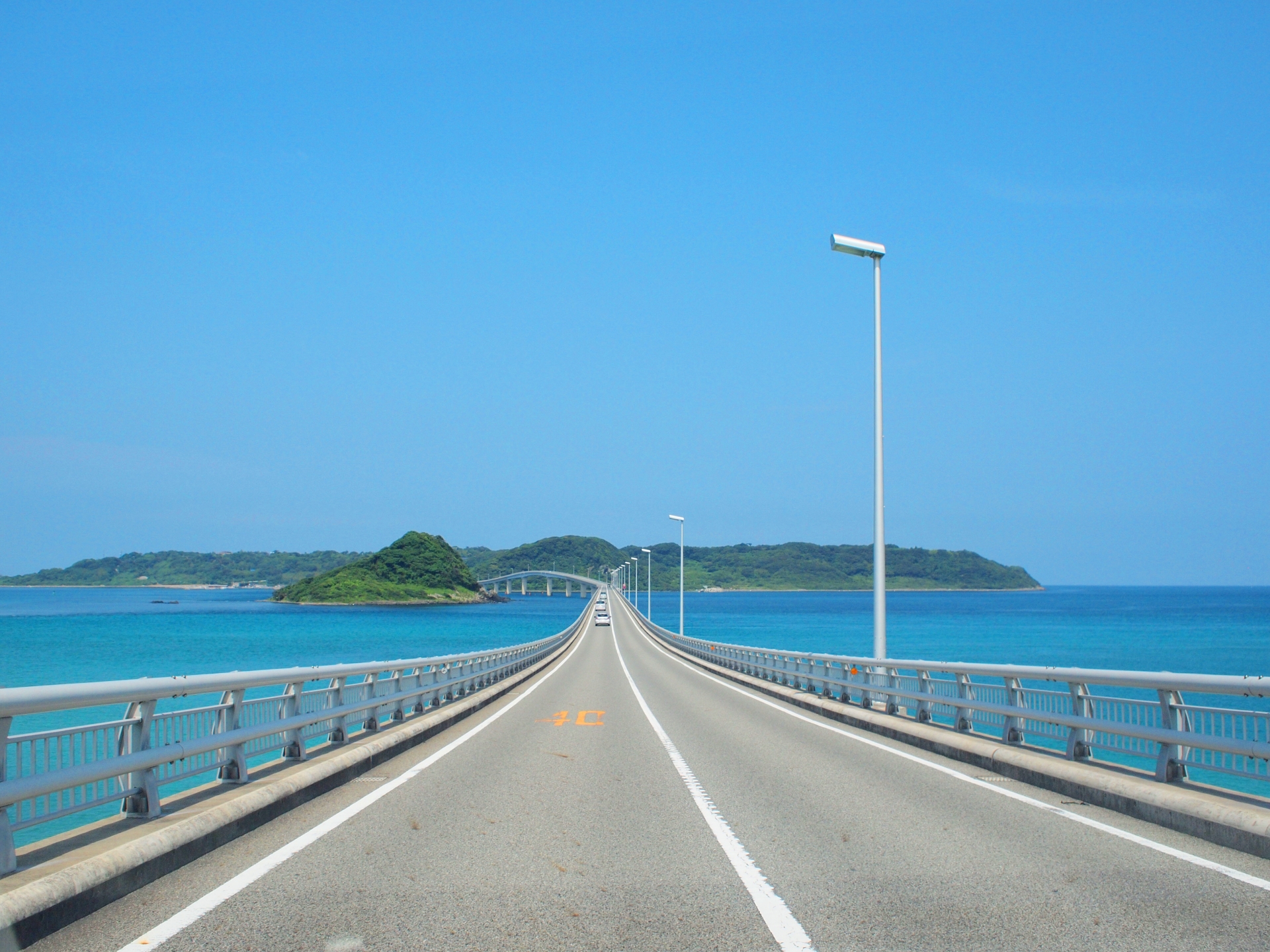
Stefanie Akkerman moved from the Netherlands to Japan in 2013 with her Japanese husband and son. She jumped into the niche of Dutch tour guiding in Tokyo and Kamakura in 2015 and occasionally writes articles about all the great sights and activities Japan has to offer. She loves (Japanese) food, and to work that all off she goes diving, snorkeling, cycling, or hiking.
This post may contain some affiliate links. When you click through and make a purchase we may receive some commission, at no extra cost to you .
There are car rides that are so scenic that the trip to get to your end-point is nearly as good as the actual destination. Sometimes, driving a certain road is even a destination in itself. Japan doesn’t have a lack of amazing drives, being a mountainous country with plenty of unspoiled nature . Why not take a relaxing drive on one of these 10 best road trips in Japan? We are sure that once you get a taste, you will want to go again!
1. Izu Skyline in Shizuoka
2. mount aso in kyushu, 3. nikko national park in tochigi, 4. shikoku karst in ehime (kochi), 5. venus line in nagano, 6. akashi-kaikyo bridge, 7. bandai-azuma skyline in fukushima, 8. sapporo to roller coaster road and patchwork road in hokkaido, 9. tsunoshima ohashi bridge in yamaguchi, 10. hakone hill turnpike in kanagawa, traveling in japan, japan wonder travel tours , other articles you might enjoy.
If you fancy great views of Mt Fuji on your road trip, the Izu Skyline in Shizuoka may be just what you are looking for. This 40.6 km long toll road leads from hot spring city Atami in the north of the Izu Peninsula to the highlands of Amagi Kogen in the middle of the peninsula. Besides Mt Fuji, you will have nice views of the ocean on the eastern side, and the route is especially nice in spring with the blossoms and during the fall foliage season .
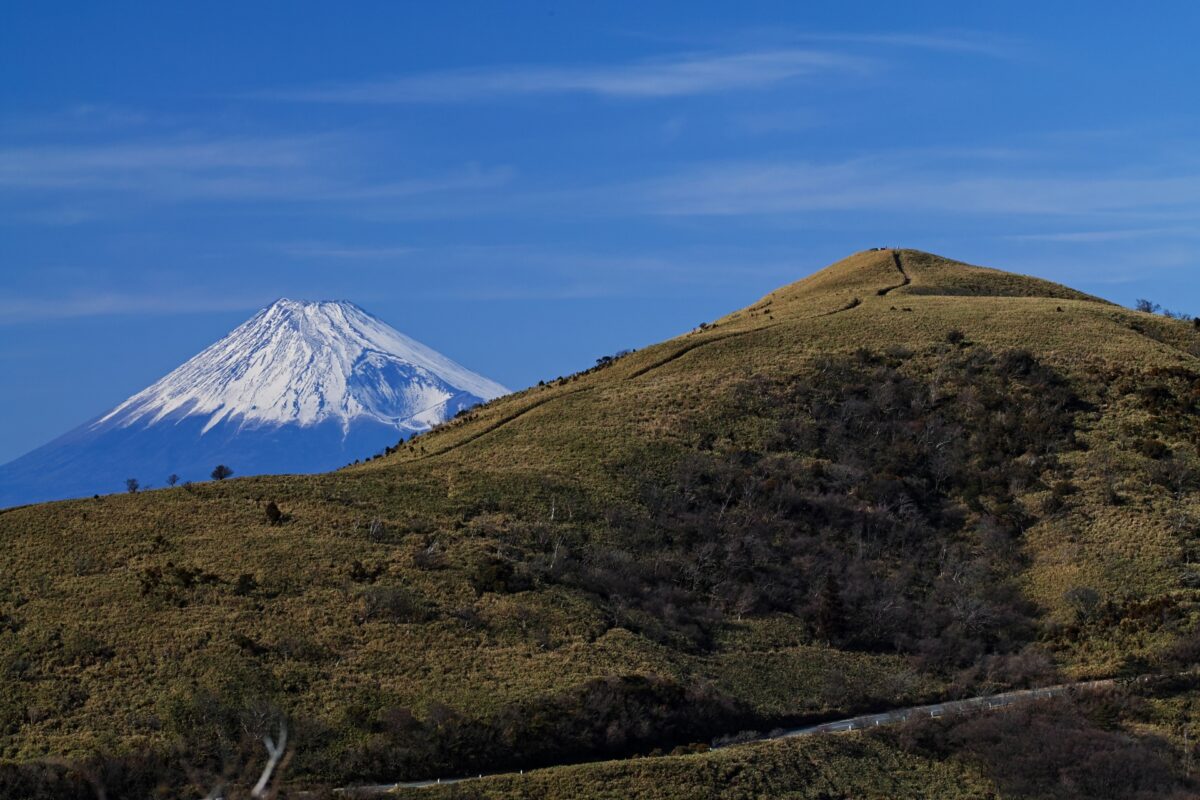
The best way to enjoy the fertile volcanic landscape surrounding Mt. Aso on the southern island Kyushu is to drive the Milk Road slowly while taking in the nice vistas. With grassy plains that stretch into the distance, there are multiple parking areas where you can stop to admire the views from up close. Make sure to go all the way up to the Daikanbo lookout, which is the highlight of the drive. Please note that the road may be closed due to icy conditions in the winter and that the crater of the volcano is only accessible when it is not too active.

Nikko is a very popular destination for local as well as international tourists. Only 1.5 hours away from the north of Tokyo , visitors flock there to see the impressive Toshogu shrine and temples surrounding the shrine area. The nature around Nikko is also very beautiful boasting waterfalls , forests, and a large lake , and the road that you can’t miss on your trip is called the Irohazaka Winding Road. Named after the Japanese alphabet that consists of 48 syllables, this curvy road has 48 hairpin turns and offers amazing views on the way up and down. At the top, don’t forget to visit the scenic Kegon Falls that you can go down to with an elevator.
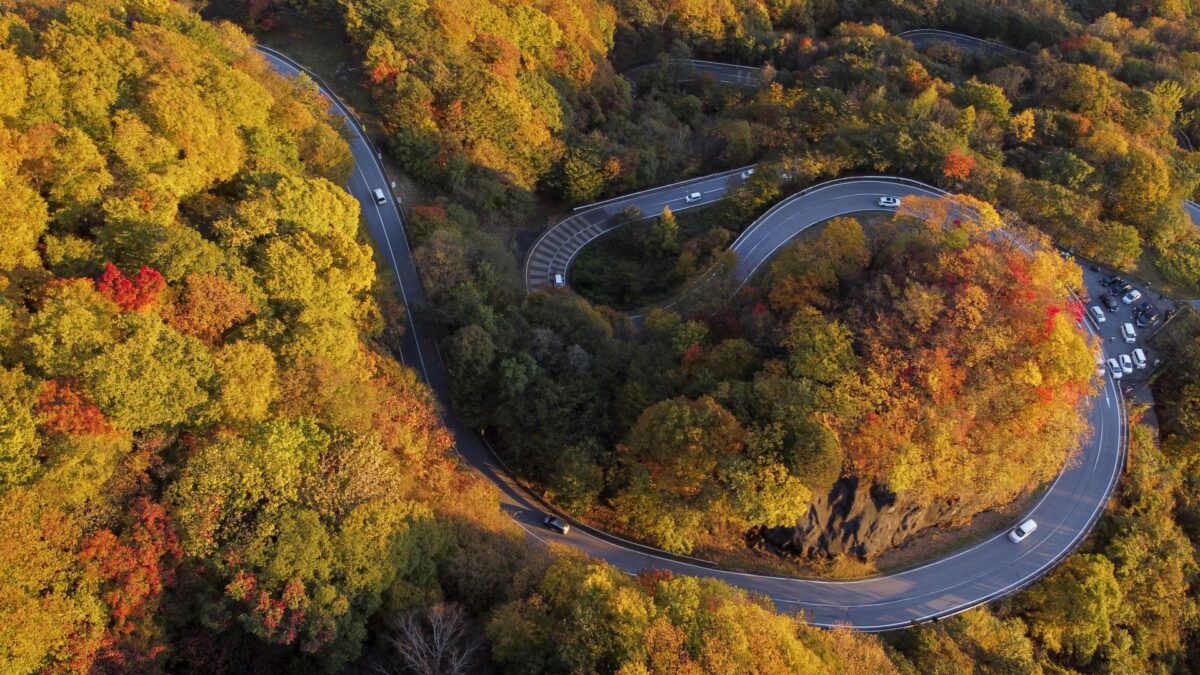
Ehime prefecture on pilgrim’s island of Shikoku is especially famous for Dogo Onsen , one of the most picturesque onsen towns in Japan. Driving in Shikoku is also a pleasure, as it is the least populated island of the 4 main islands of Japan, the roads tend to be fairly quiet. To get there you can either depart from Kochi or Matsuyama, and the drive will take around 2 hours. The karst is a geological formation with wide grasslands interspersed with white limestone mounds and sinkholes. The area is surrounded by mountains and is located at an elevation of around 1400 meters. There are various hiking trails, and every season there is something to enjoy. If you stick around until nightfall, you can see starry skies undisturbed by any artificial light.
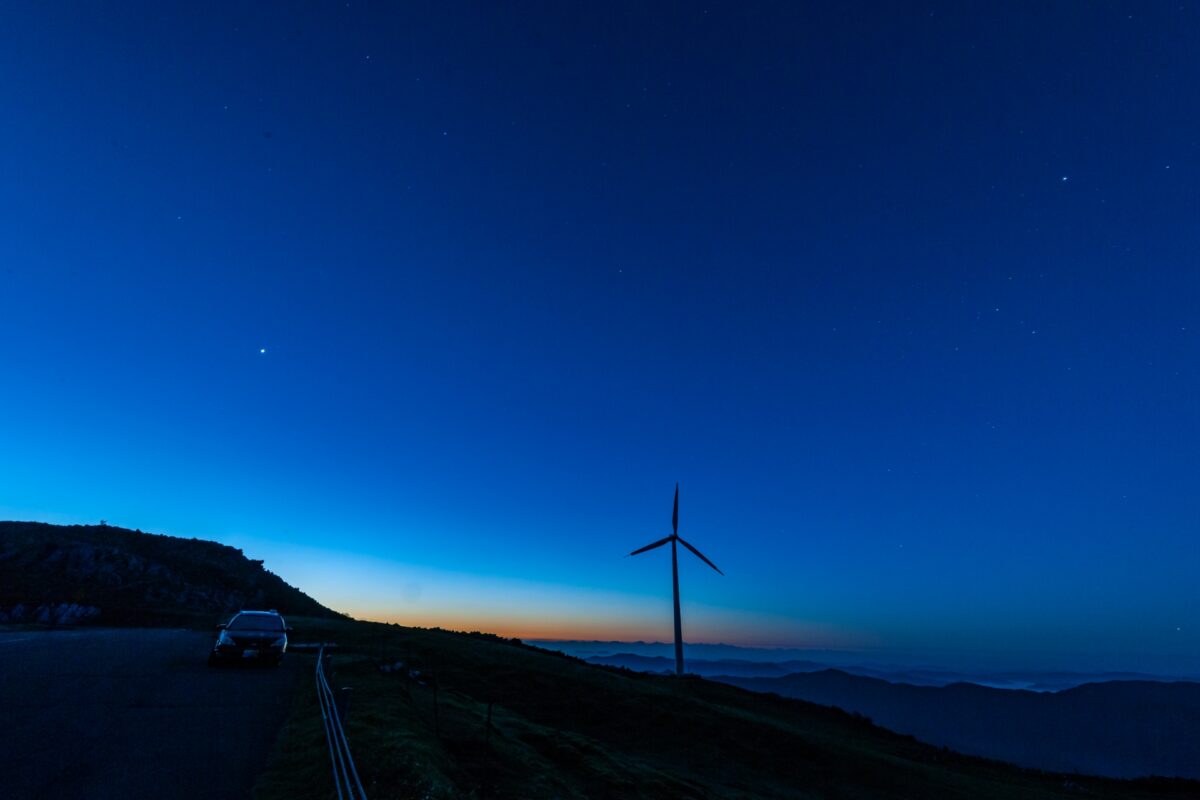
Nagano is one of Japan’s most mountainous regions, so it is no wonder that there are some scenic routes in this prefecture in the middle of Japan’s Honshu island. The Venus Line that runs between Chino and Ueda is a mountain road that leads you past highlands where there are various wildflowers blooming, two scenic lakes, and a plateau at a nearly 2 km altitude that offers sprawling views over the area including Mt Fuji. Many drivers like to stay the night in one of the onsen hotels in the area, which is a perfect way to relax at the end of the day. Please note that parts of the road are closed when there is snow, so it is best to drive the Venus Line between the late spring and early autumn .

The Akashi-Kaikyo Bridge that spans between Kobe and Awaji Island near Shikoku is the second longest suspension bridge in the world at 4 km long. Besides driving over this bridge to enjoy the view, it is fun to stop at the Kobe side and walk the Maiko Marine Platform that offers you views from the inside and the ocean and the Bridge Information Center where you can learn more about suspension bridges. Goshiki Beach on Awaji Island is also worth a stop, especially around sunset time. If you continue on until Shikoku you can see the famous Naruto whirlpools , a rare natural phenomenon that is especially pronounced at this location.
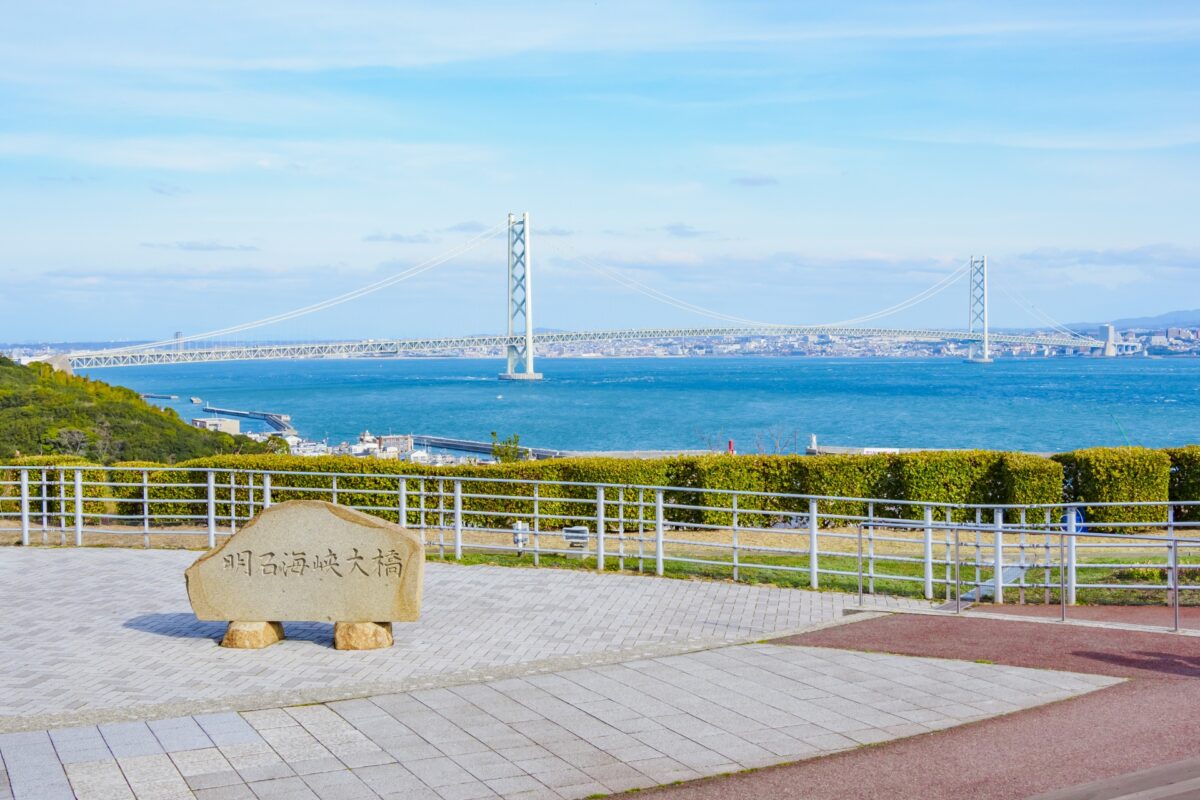
If you are in the mood for a long road trip between late spring and late autumn, the Bandai-Azuma Skyline in Fukushima is a perfect destination. As the name Skyline already suggests, the road is located at a higher altitude of up to 1622 meters. You will sometimes drive through the clouds and will pass by various landscapes that include forests that are especially spectacular in autumn, as well as volcanic landscapes. The Fudosawa Bridge has amazing views, and if you want to hike near an active volcano you should make a stop at Mt. Issai Kyosan.
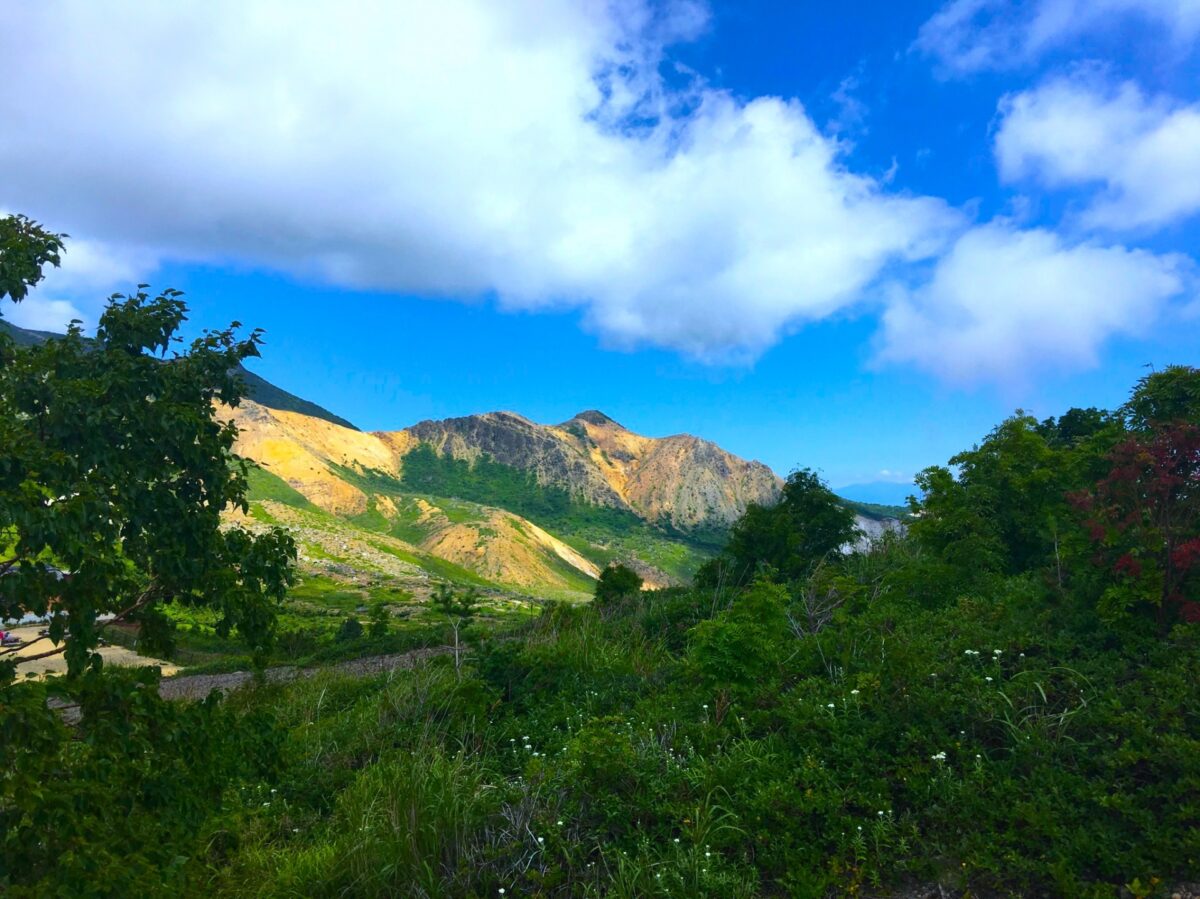
While you’re up in Fukushima, we highly recommend joining our Fukushima 2-Day Nuclear Power Plant Tour . This is a once in a lifetime tour that allows you to get some insight into the disaster, the current situation and progress that has been made, as well as exclusive access into the Nuclear Power Plant!
The northern island Hokkaido is famous for its wild natural beauty, and is therefore a much-loved destination for nature photographers. One of the best and easiest ways to get around the island is by car, and if you are looking for cool road trip destinations from Sapporo , Roller Coast Road and Patchwork Road are some of the best. Rollercoaster Road in the famous Furano and Biei area is a 2.5 km stretch of straight road that goes up and down like a rollercoaster. The wide views with the Tokachi-dake mountain range in the distance make it a thrilling ride! The Patchwork Road between National Routes 237 and 452 is also located in Biei and features country roads divided by colorful fields.
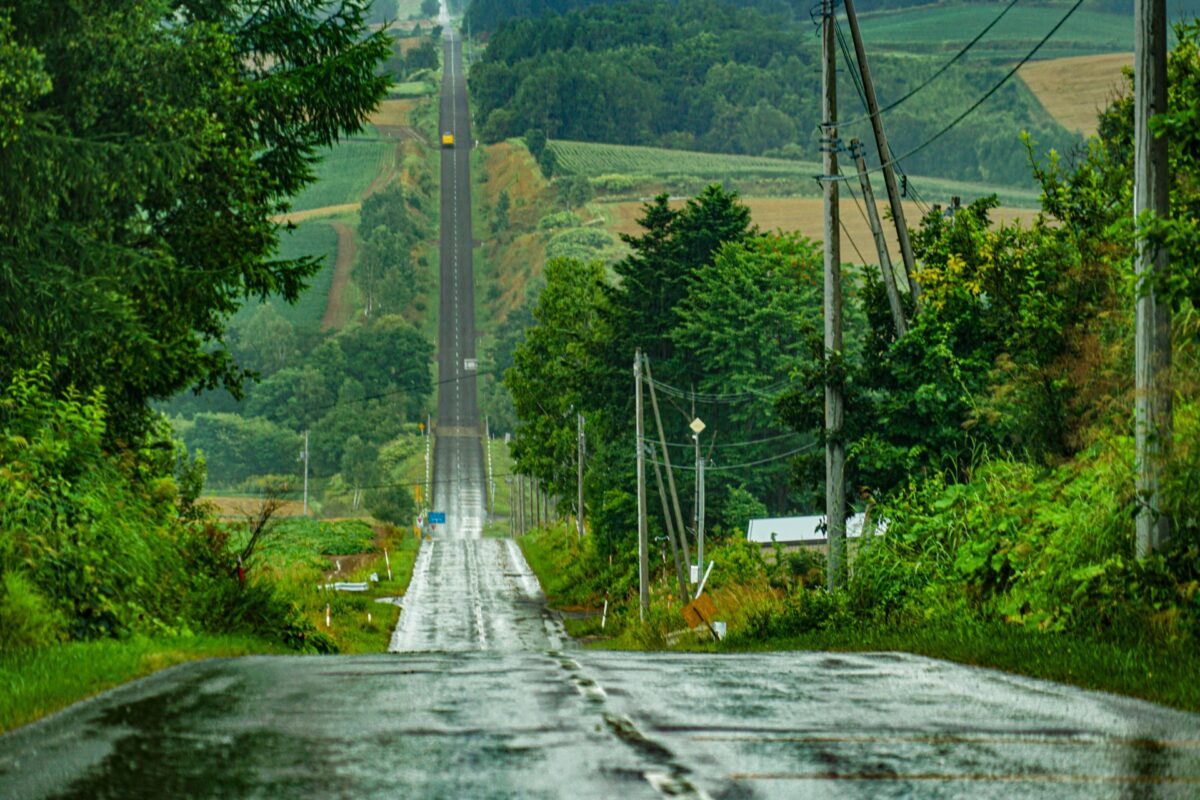
On the southwestern coast of Honshu in Yamaguchi prefecture you can find the Tsunoshima Ohashi Bridge that leads to the small but scenic island Tsunoshima . The views of the cobalt-blue and emerald green ocean are not unlike those in Okinawa , and on the other side of the bridge you can enjoy several white sandy beaches. The bridge is 1.5 km long so you will have plenty of time to admire the beautiful views.

Only a little over one hour away from Tokyo is hot spring resort town Hakone that is also famous for its lake views with Mt. Fuji in the background. The Hakone Hill Turnpike is a favorite among drivers of sports cars because of the many sharp turns and the very nice views of Mt. Fuji and Sagami Bay. You can even see marks on the road to show you what is the best line to take. The road ascends more than 1000 meters, and it will take you past forests, tunnels and bridges so there is plenty to take in while enjoying the drive.

There is so much to experience in Japan that it is sometimes hard to know where to start when you are planning your trip. Especially if you only have a few precious weeks here, you will want to make the most of every day. In that case, we can definitely recommend one of our fun and educational private tours! We offer tours in many cities in Japan including Tokyo , Kyoto , Osaka , and Kobe .
Japan Wonder Travel is a travel agency that offers guided tours throughout Japan. From private walking tours to delicious Food and Drink tours, we can help you organize the best tours just for you! If you want to explore Japan and learn more about the history and backstories of each area you are visiting, our knowledgeable and friendly English speaking guides will happily take you to the best spots! In addition, we can provide you with any assistance you may need for your upcoming trip to Japan, so please feel free to contact us if you have any questions or need some help!
▶ Tokyo Fish Market Tour @Tsukiji – Enjoy Local Food and Drink Explore the most lively and popular fish market in Tokyo and try some of the local’s favorite street foods and sake with one of our friendly and knowledgeable English speaking guides!

▶ Tokyo 1–Day Highlights Private Walking Tour (8 Hours) There’s no better way to explore an area than taking a tour with a knowledgeable local guide. You will have the chance to learn about the history and interesting background stories of Tokyo, as well as discover some hidden gems which can be hard to do without a guide.

▶ Mt. Fuji Day Trip Bus Tour from Tokyo Experience the breathtaking views of Mt. Fuji by visiting the highlights of the area on our guided sightseeing bus tour! Departing from Shinjuku in central Tokyo, you can travel comfortably to all of the best spots in the area by bus.

▶ Kyoto Private Full Day Walking Tour On this full-day private tour of Kyoto, you will be able to see the highlights of Kyoto in just one day and at the same time develop a deeper understanding of both the culture of the area and Japan as a whole.

Follow us on Instagram , Facebook , Twitter , and TikTok for more travel inspiration. Or tag us to get featured!
Happy traveling!
Stay informed of the best travel tips to Japan, the most exciting things to do and see, and the top experiences to have with the Japan Wonder Travel Newsletter. Once every two weeks we will introduce you to our latest content.
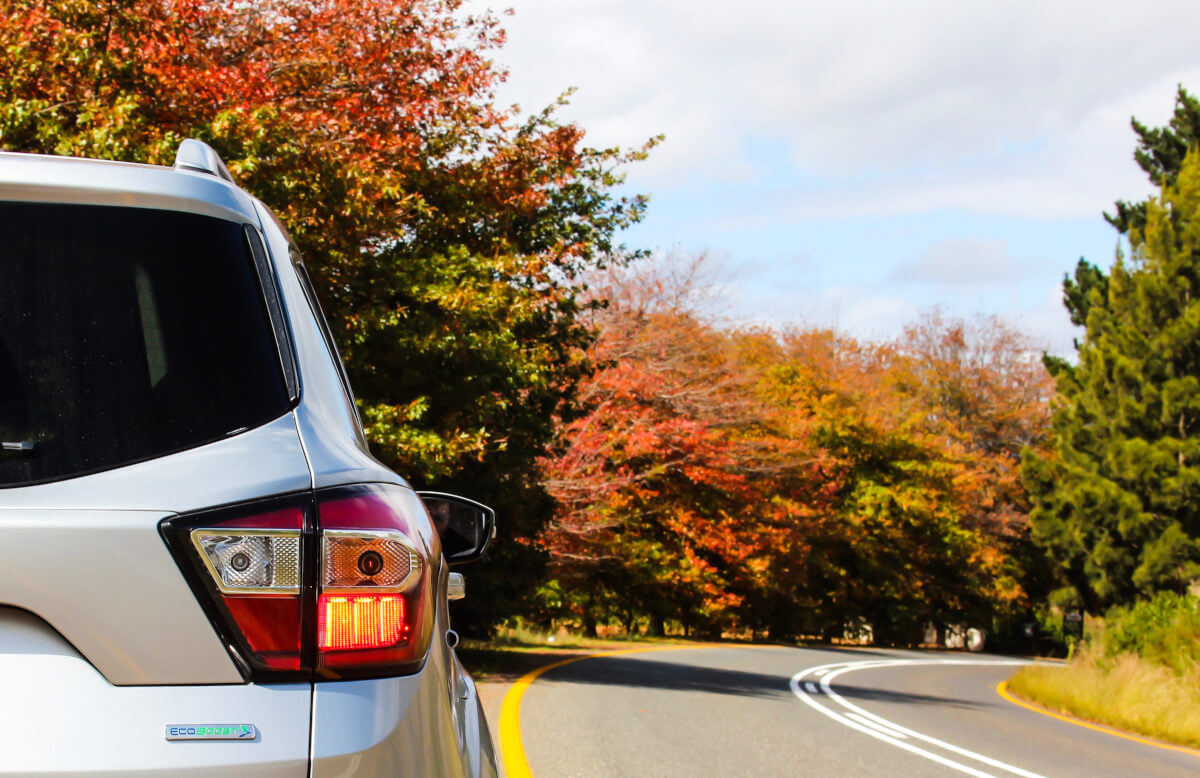
- Popular destinations
- Hidden places in Japan
- Tours and workshop
- Food and drink in Japan
- Itinerary in Japan
- Places to visit in Tokyo
- Food and drink in Tokyo
- Seasonal events
- Tours & workshops
- Tokyo This Week
- Day trip from Tokyo
- Itinerary in Tokyo
- Places to visit in Kyoto
- Food and drink in Kyoto
- Itinerary in Kyoto
- Day trip from Kyoto
- Travel tips
- Accommodation
- Cultural tips
- Transportation
- Tokyo Tours
- Kyoto Tours
- Kimono Rental
- Fukushima Tours
- Mount Fuji Tours
- Tour Package
- Media Kit(English/日本語)

The perfect itinerary for Japan in 3 weeks
Welcome and thank you for visiting this article. before you start reading, you need to know that some of the links on my website are affiliate links from which i receive a small commission from the sale of certain items, but the price remains the same for you..
Beautiful landscapes, interesting history with amazing traditions, and the most advanced technology are how you can describe Japan the best in a few words. In this itinerary for Japan, I will take you on my journey through this amazing country with the best tips and useful information.
I visited the most awesome places like Tokyo , Mount Fuji , Kyoto , Osaka , and some traditional villages such as Takayama during these 3 weeks in Japan and it was just incredible!
This Japan itinerary contains a map of Japan with my route, all the hotels where I stayed, where to eat, and extra information on how to get around.
READ ALSO: The best 5-day Tokyo itinerary – Tokyo guide
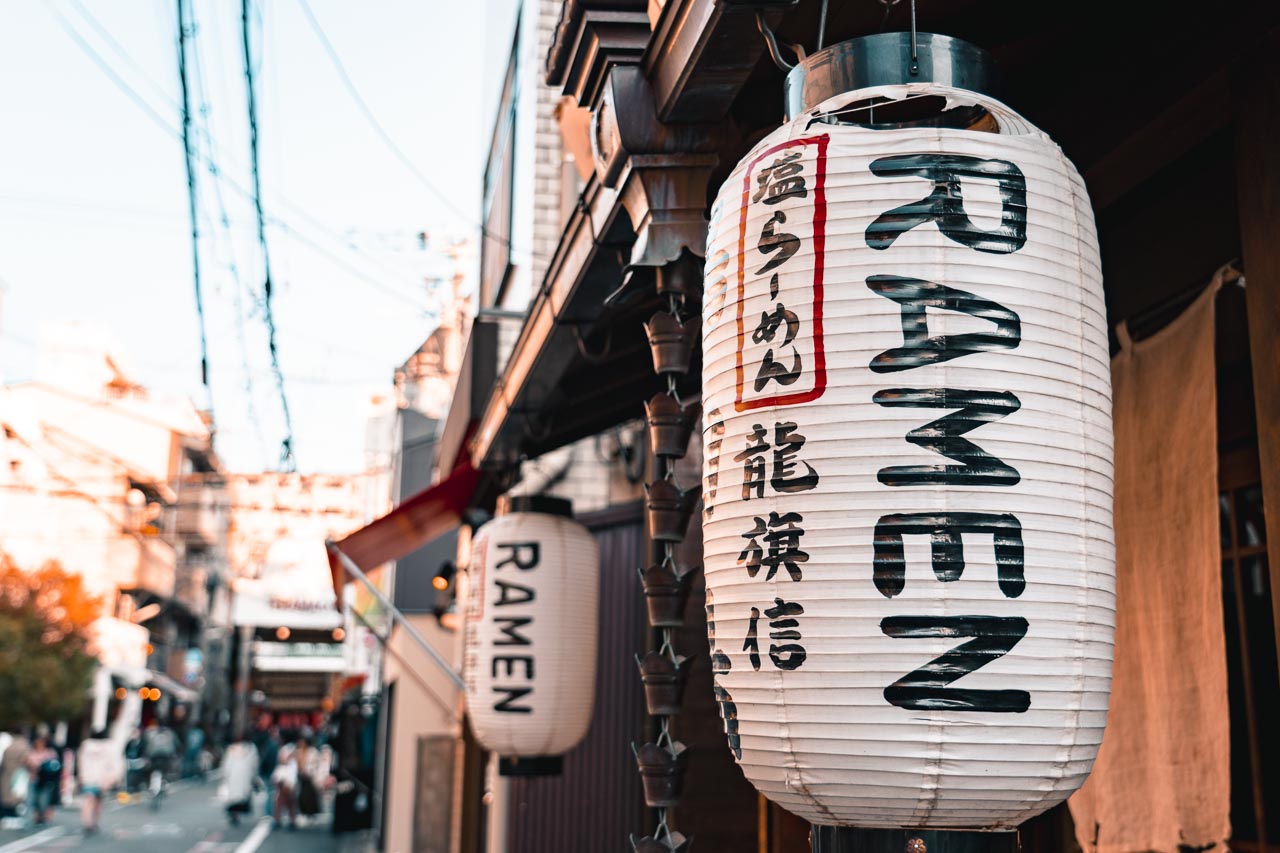
Flights to Japan?
The easiest way to get into Japan is to fly to one of the many international airports such as Tokyo , Osaka , or Nagasaki .
For this amazing trip, I choose to travel from Tokyo to Osaka and bought a ticket with Singapore Airlines to Tokyo from Kuala Lumpur as I was traveling around Asia.
If you travel from other continents you might have a layover in cities like Hong Kong, Bangkok, or even Hawaii depending on where you are coming from.
A flight ticket to Japan is pretty affordable if you buy it in advance and rates are mostly between 650€ – 1000€ for a return flight from Europe.
TIP: You NEED a return flight or outbound flight before flying to Japan . I ended up buying a ticket to the Philippines at the check-in (luckily, it was pretty cheap and I was very excited to explore the Philippines again)
How to travel around Japan?
Travelling around the country is very easy as the trains and especially the Shinkansen trains are very fast, comfortable, and reliable. You can travel from Tokyo to Hiroshima in less than 5 hours, which is almost 1000km, or from Osaka to Tokyo in just 3 hours. Crazy!
The best thing to do before you arrive in Japan (2 weeks in advance) is to buy a JR Rail Pass , which is only for foreigners who travel around Japan for less than 90 days.
With this JR Rail Pass, you save a lot of money on separate train tickets and you can travel almost everywhere for 7, 14, or 21 days depending on which Pass you buy.
BOOK: Find more info about the JR Rail Pass here
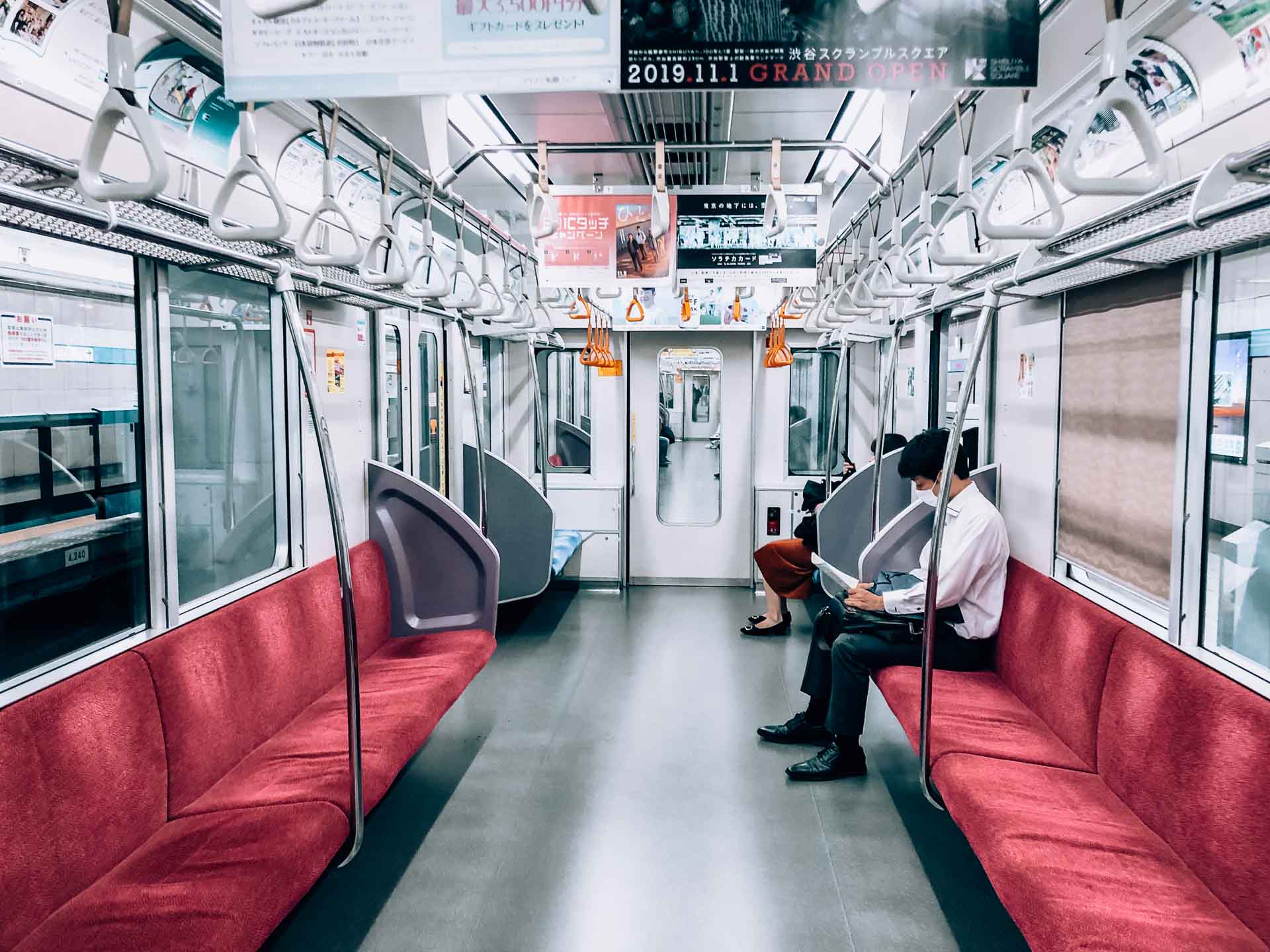
Best time to visit Japan
Japan is an all-year-round destination and there is something to do in the country every month of the year. The most popular month is March, as this is the period that the cherry blossom trees will bloom.
Although, Japan is beautiful in every season, expect beautiful orange, red and Yellow colors during Autumn or snow during winter, which makes it also the perfect destination for winter sports.
The best months to visit Japan and explore most of the country will be March/April or October/November , while January is a great month for skiing or snowboarding .
Try to avoid August/September as these are the months with the most rainfall and typhoons.
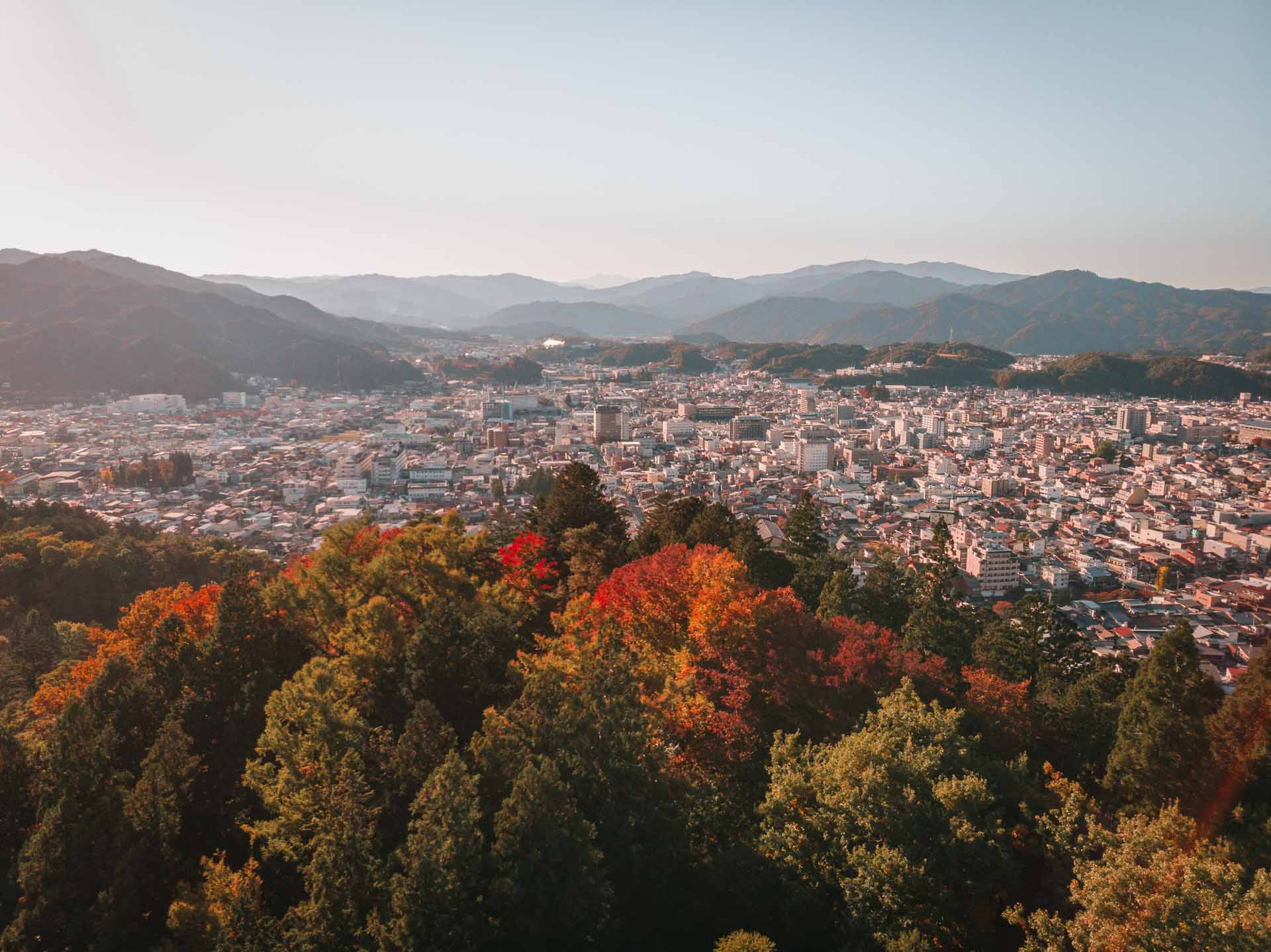
Visa for Japan requirements
As a Belgian citizen, the visa requirements for Japan are very easy as you don’t need to apply for a visa before arrival. You’ll get a Visa on Arrival and you can stay up to 90 days.
NOTE: Please make sure you check all visa and passport requirements in your own country before booking your tickets or via the search box below. iVisa can help you out with all your questions regarding visas.
READ ALSO: How much does a trip to Japan Cost? Japan on a budget
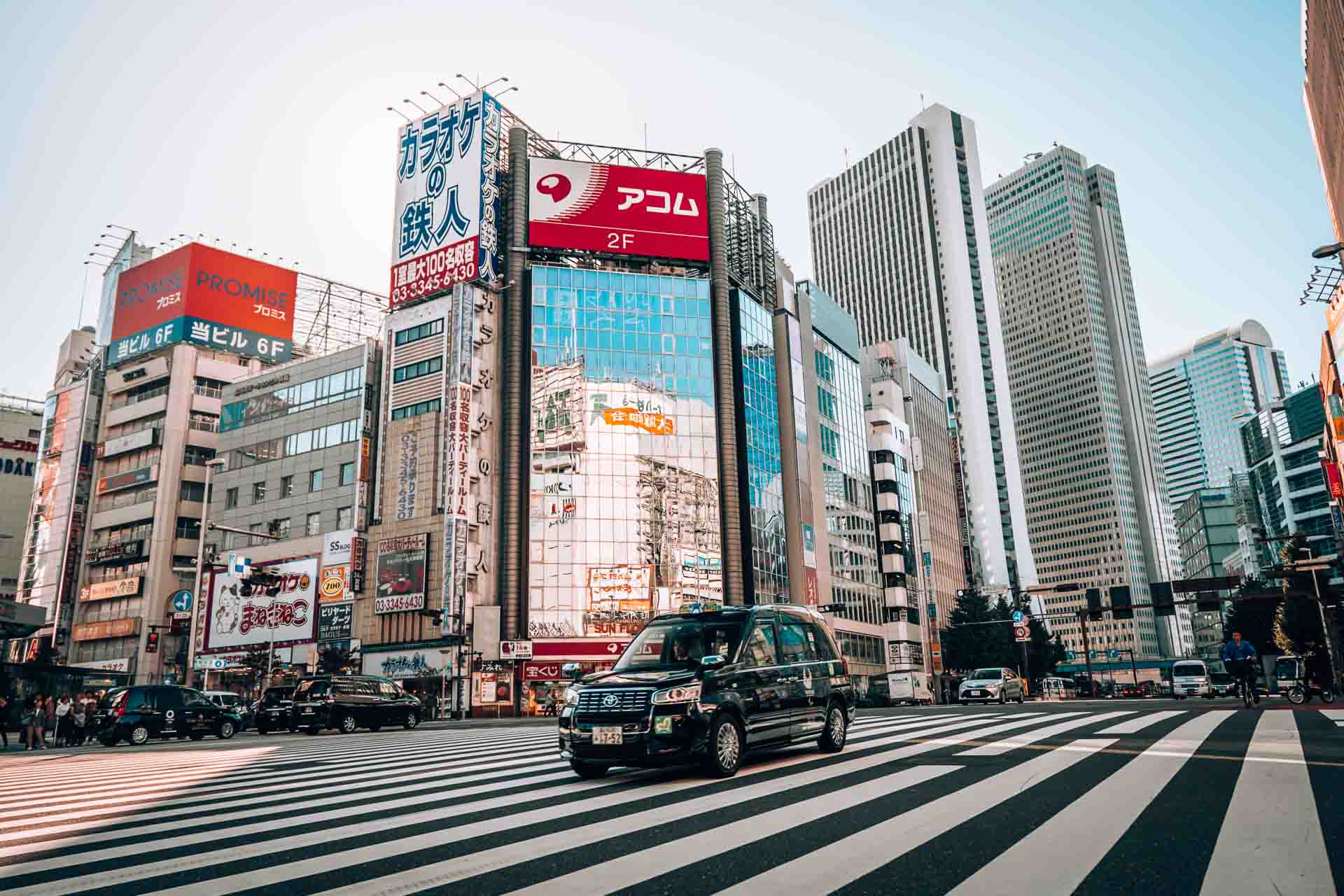
Useful apps for Japan
When you travel around the country it is sometimes easy to already have some websites or apps for Japan ready on your mobile phone. One of the best apps in Japan that helped me a lot was google translate as not many locals can speak English, especially in a mountain -and rural areas.
- Google Translate – I couldn’t live without this app during our Japan itinerary! The instant camera translation helped us translate literally everything from food in the supermarket, and choosing on a menu in a restaurant to asking directions from local people.
- Booking.com – my most favorite app to find accommodations worldwide
- Maps.me – the best offline mapping app on the planet. Download the map, choose your route, save your favorite places, and explore the country without using the internet. (money saver!)
- Currency XE – calculates currencies on the go. With the app, you can access live exchange rates and calculate prices on your smartphone super easily.
- HappyCow – my favorite app to find the best vegan & vegetarian food around you.
- Japan Travel by Navitime – the best and most downloaded app to help you travel around Japan like a local. The app navigates you from point to point and helps to find offline Wi-Fi spots, ATMs, and train stations.
- Japan Official Travel App – the official tourist app for finding the best information about public transportation in Japan, sightseeing, free Wi-Fi services, and more.
- Hyperdia – This is not a real app, but a great website to navigate all the trains in Japan if you have a JR Railpass.
- Rakuten is the best and biggest travel agency in Japan with hundreds of different tours and services across the country.
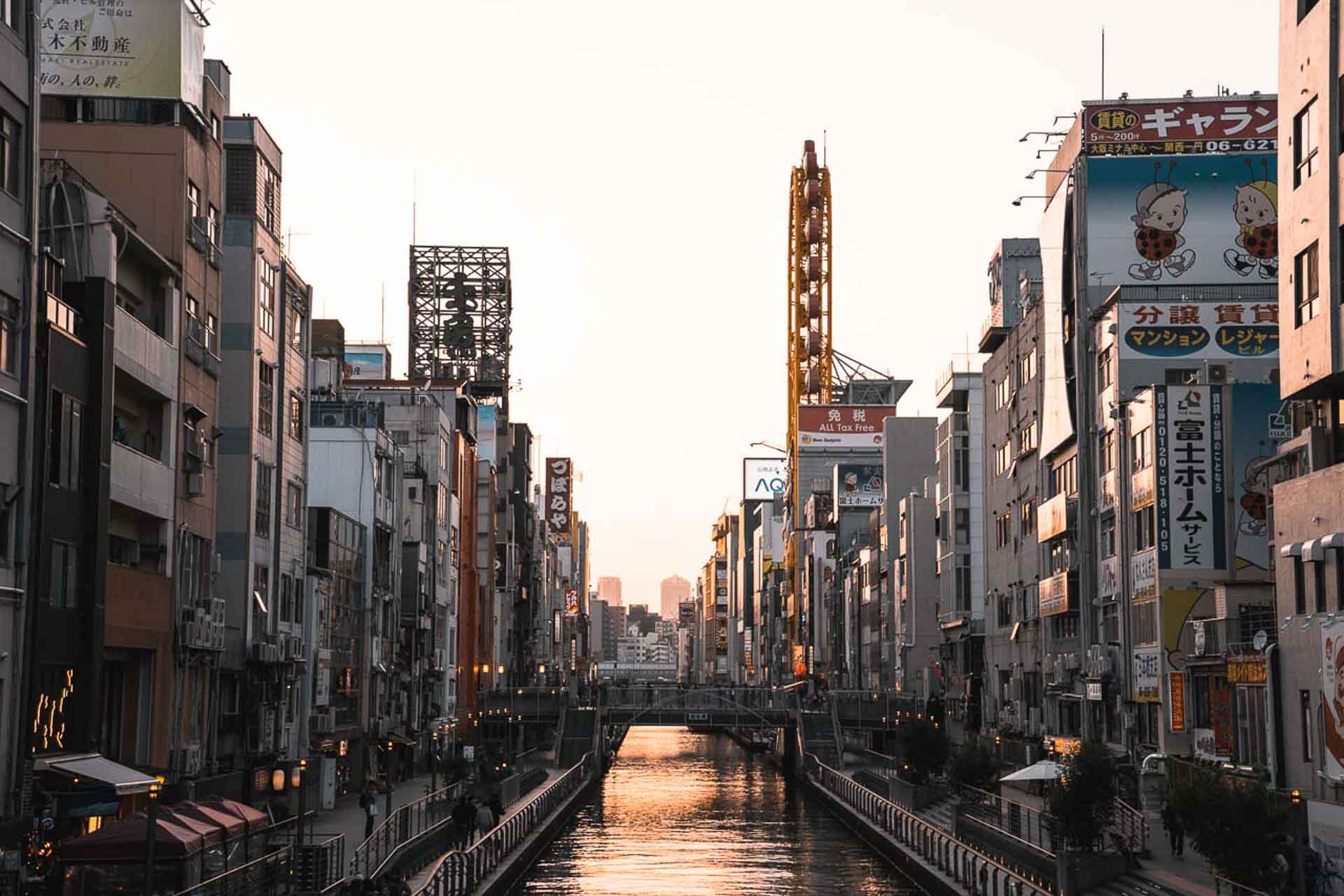
Map of Japan
WHERE DID I START: Tokyo WHERE I ENDED: Osaka HOW LONG DID I TRAVELLED: 19 days WHEN DID I GO: October BEST TIME TO VISIT: October/November – March/April
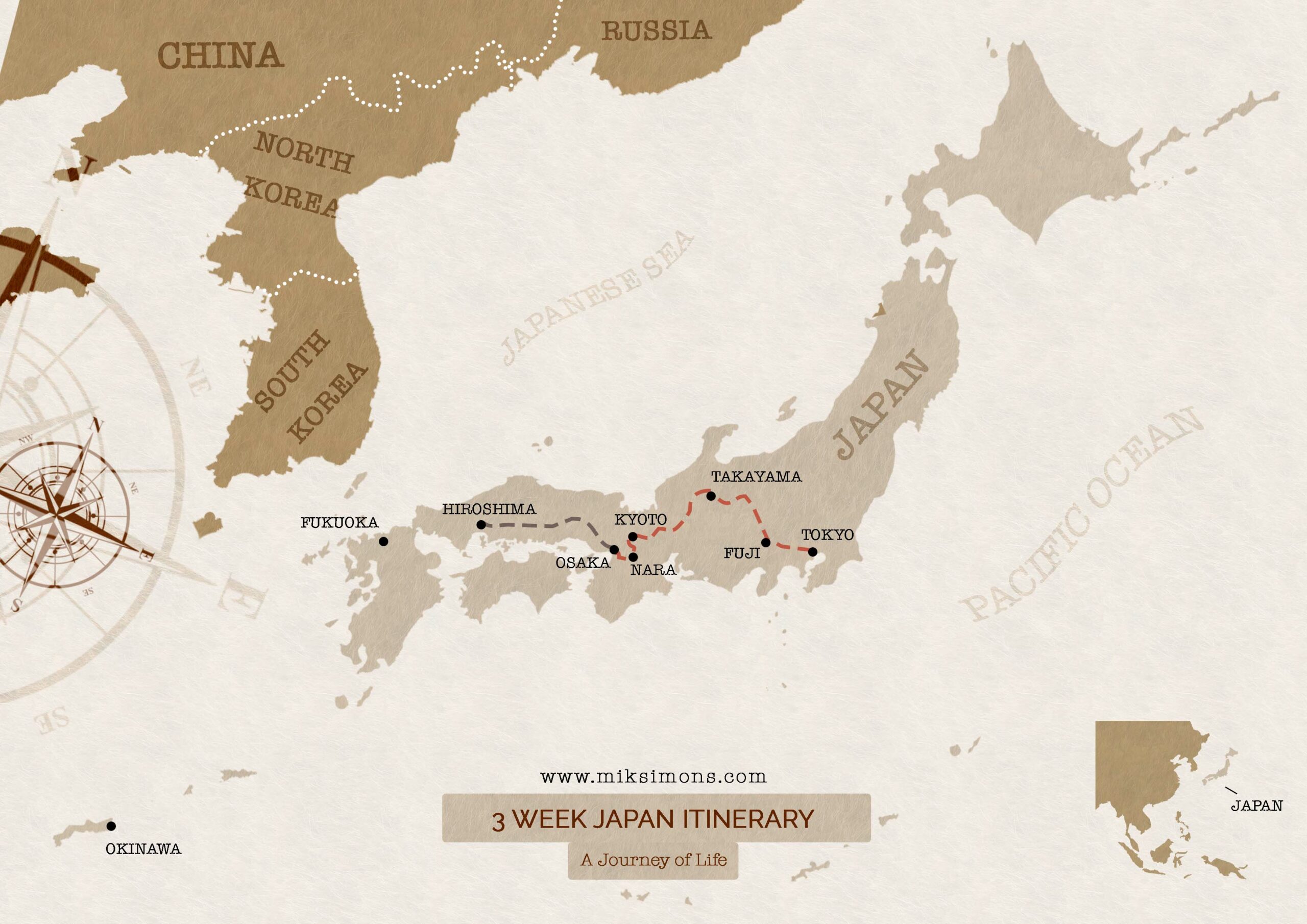
The perfect itinerary for Japan
Recommended stay: 4-6 nights Where to stay in Tokyo: The Knot Tokyo Shinjuku
I lived in Kuala Lumpur for 2 months and booked a flight with Singapore Airlines, where I spent the first 6 days. The city has so many things to do that you can easily spend 1 or 2 weeks here.
From vibrant neighborhoods, maiden shows, robot cafes, and traditional ramen shops to exciting shrines and temples around the whole city.
Make sure you cross the busiest pedestrian crossing in the world at Shibuya , wander around in the electric city of Akihabara and explore the countless parks in the city.
However, if you only have time to explore Japan in 2 weeks, you don’t have to spend 6 days in Tokyo as you can see the most popular highlights in 3 to 4 days.
READ ALSO: The best 5-day Tokyo itinerary
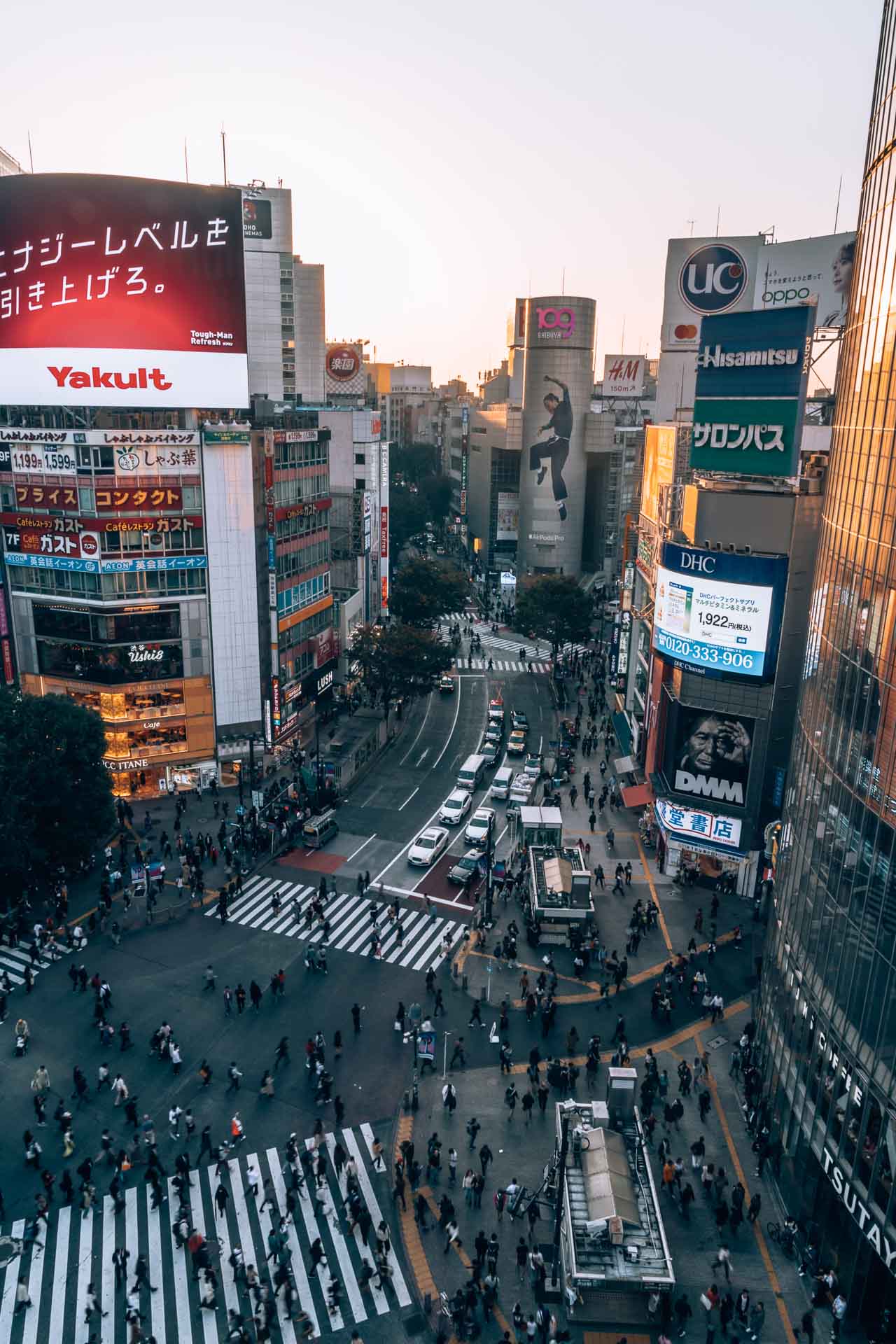
Kawaguchiko (Mount Fuji)
Recommended stay: 2 nights Where to stay in Kawaguchiko: Kagelow Mt.Fuji Hostel Kawaguchiko
On the last day in Tokyo, I decided to take a bus to Lake Kawaguchiko and stay in the town of Fujikawaguchiko next to the lake. It is the easiest accessible town near Mt. Fuji and it was definitely my favourite place in Japan!
Lake Kawaguchiko is the second largest of the 5 lakes around Mt. Fuji and it offers many awesome things that you can do. Rent a bike and explore the area, discover the best viewpoints on Mount Fuji or relax at Lake Kawaguchiko during a boat cruise.
It is a small cozy town with a peaceful atmosphere where you will have an amazing time for sure!
READ ALSO: Winter in Japan road trip: the best of the Chubu region in 7 days
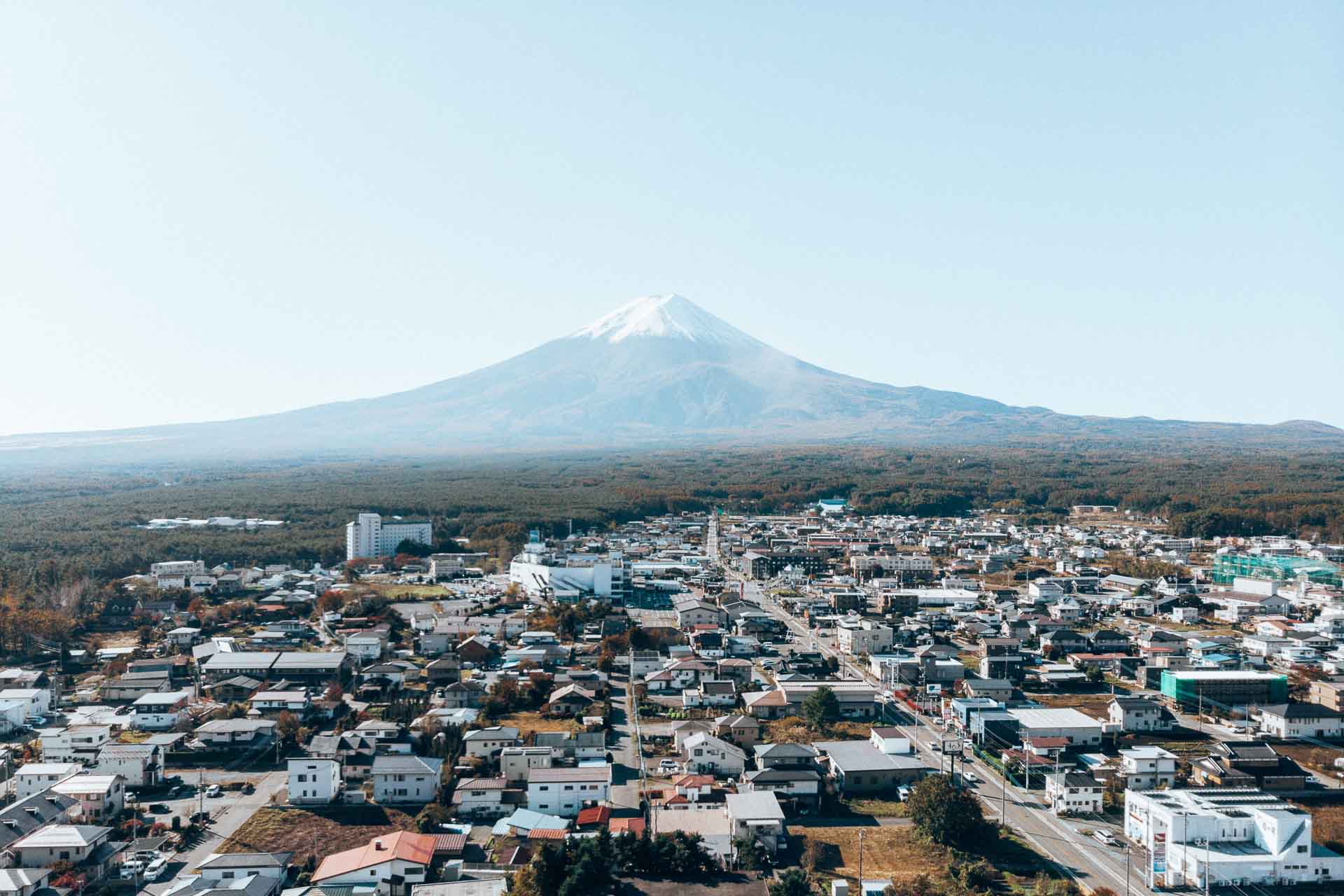
Recommended stay: 2 nights Where to stay in Takayama: Cup of Tea Guesthouse
The trip from Kawaguchiko to Takayama was relatively easy with the Nohi bus (I used only busses during my trip in Japan) and glad I visited this beautiful town.
Strolling around the town and visiting the morning markets, exploring the many temples and shrines, and having dinner in the cutest Japanese restaurant made my stay in Takayama so memorable.
Don’t forget to visit the Hida Folk Village and when you visit Takayama during Autumn or Spring you can see the maple and cherry trees changing colours.
READ ALSO: Shirakawa-go in Japan: 5 great reasons to visit this fairytale village
READ ALSO: 10 x the best places to see cherry blossoms in Fukuoka
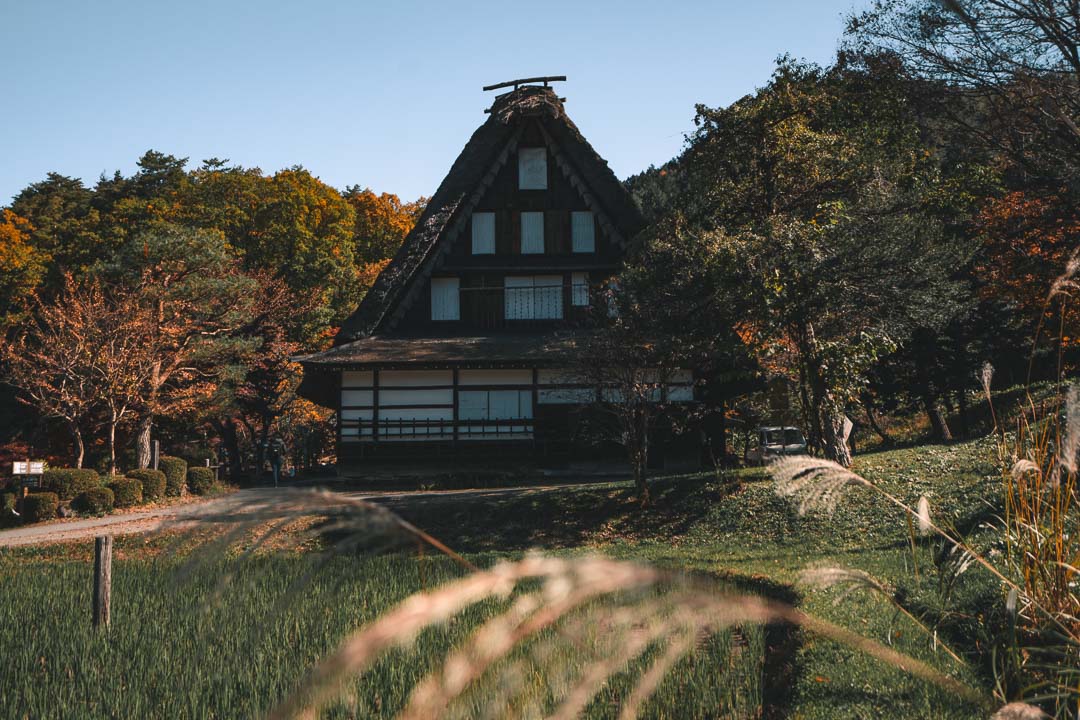
Recommended stay: 4 nights Where to stay in Kyoto: Hotel Anteroom Kyoto
Known as the historical and cultural heart of the country, Kyoto is a place where you’ll fall in love as has many lovely neighborhoods, beautiful castles, and even seventeen UNESCO Heritage sites.
I spend 5 days in the city to explore everything at an easy pace and visited amazing places during the day such as Fushimi Inari , the popular bamboo forest , and I jumped on the Sagano scenic train, while at night you can wander around the Gion district to spot Geisha’s.
READ ALSO: 18 x the best things to do in Kyoto
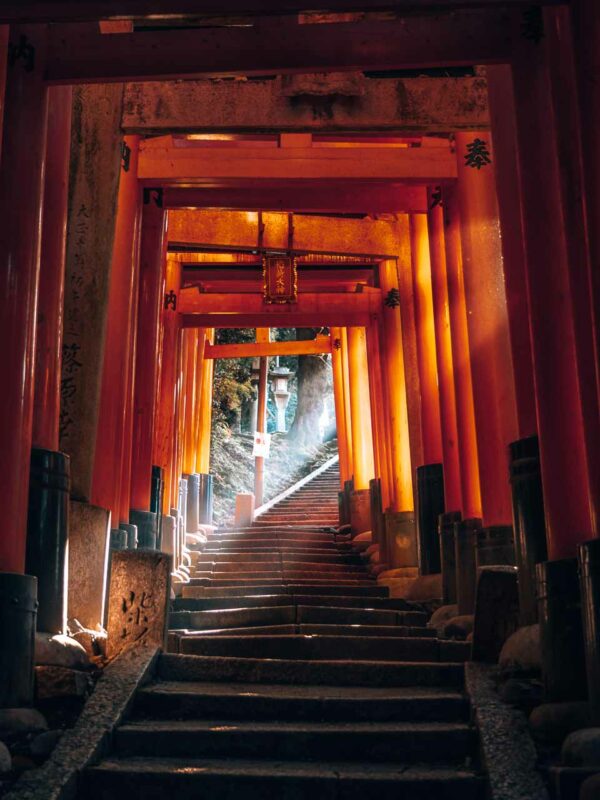
Recommended stay: 1 night or day trip from Osaka or Kyoto Where to stay in Nara: Nara Guesthouse Kamunabi
While most people come to Nara on a day trip from Osaka or Kyoto as it is only 30-45 min. with the train to get here, I decided to stay in Nara for a night and discover more amazing places in this wonderful town.
The village has many beautiful parks where hundreds of deer are roaming free, however, some locals try to sell you food so you can feed them and take some photos with them (which I do not recommend).
Although it is lovely to see all the deer, there are other great places you have to see in Nara such as the Kōfuku-Ji, a massive temple, the famous Higashimuki Shopping Street, and many other beautiful gardens.
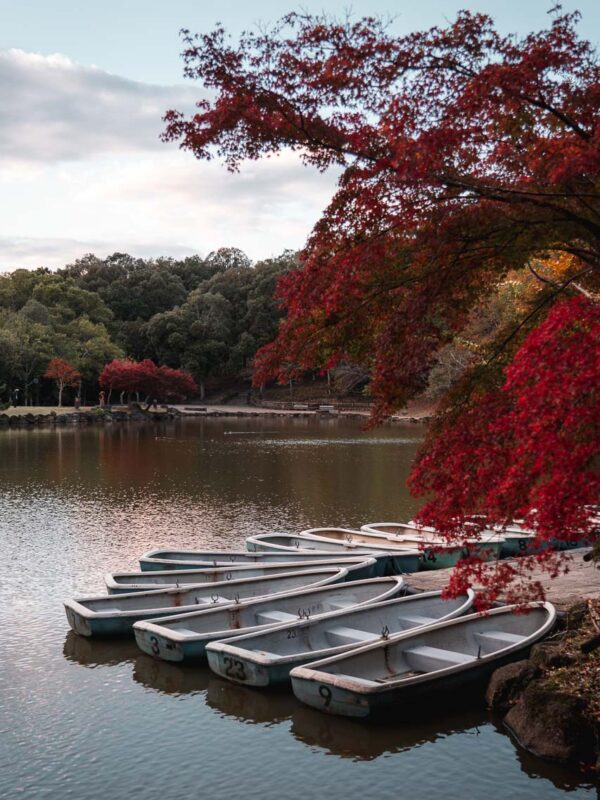
Recommended stay: 3 nights Where to stay in Osaka: Hotel Noum OSAKA
Osaka is a foodie’s dream come true! Plenty of good restaurants, delicious street food, and regional specialties like takoyaki (octopus balls) or Okonomiyaki ( legendary savory pancakes).
Osaka is known as the food capital of Japan and one of the best cities for foodies all over the world. So if you’re craving some good Japanese food we highly recommend adding Osaka to your Japan travel route.
But besides the huge food scene, the city has many more amazing things to offer
Photogenic streets filled with beautiful neon lights, cute little alleys to get lost in, lots of shopping districts, peaceful parks, and temples. One of our absolute highlights was Osaka Castle, which is one of the most famous landmarks in Japan and has a super fascinating history.
READ ALSO: 17 Awesome things to do in Osaka
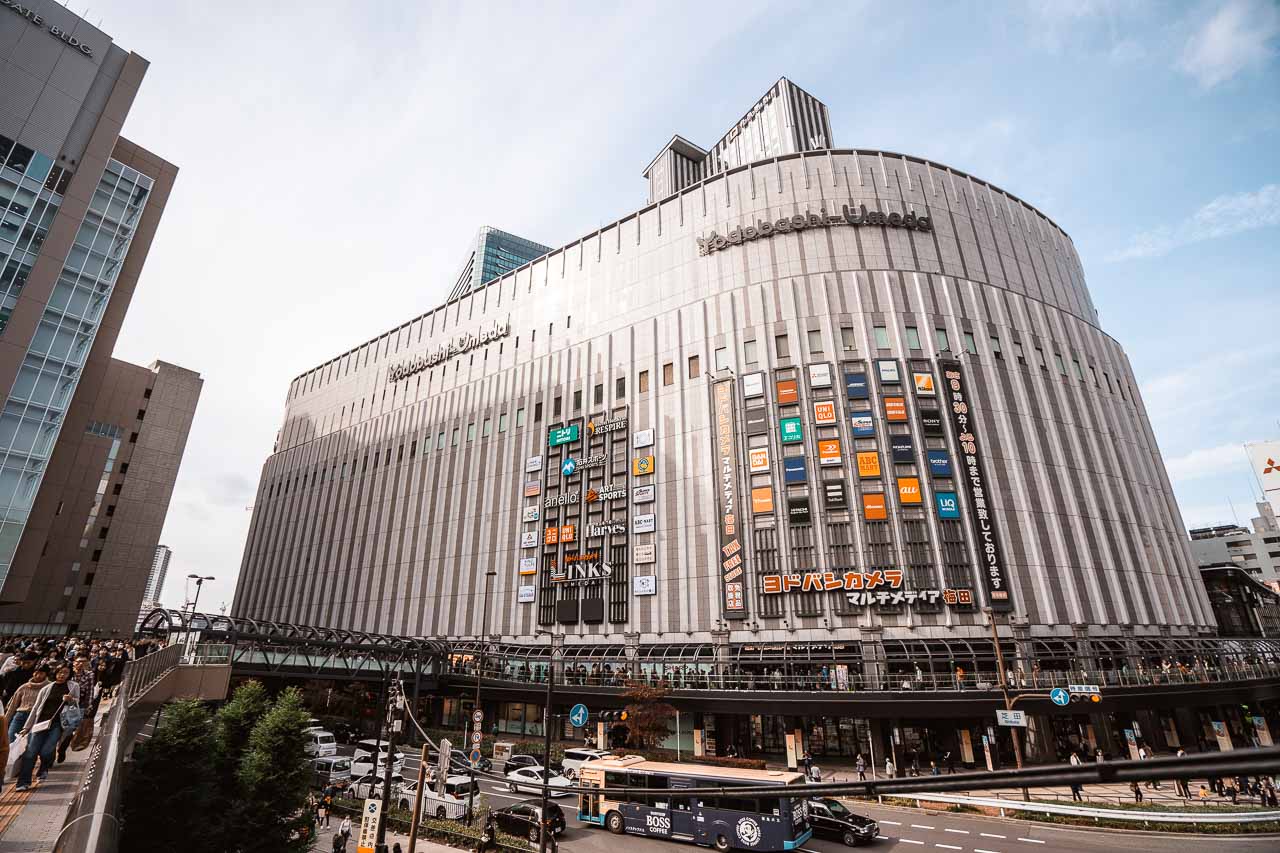
Recommended stay: 2 nights Where to stay in Hiroshima: Nest Hotel Hiroshima Hatchobori
Although I decided to skip Hiroshima this time as most sights were closed or under renovation for the Olympic games, I still suggest visiting Hiroshima as this city should be included on your bucket list (yeah, I know but will visit it someday soon as it is still on my list)
The city is known worldwide as it was destroyed and wiped out by an atomic bomb during World War II in 1945. However, these days the city has become a bustling city with many amazing things to do such as the Peace Memorial Park and the popular Itsukushima Shrine .
READ ALSO: The perfect 4 days in Kyushu: a road trip during autumn in Japan
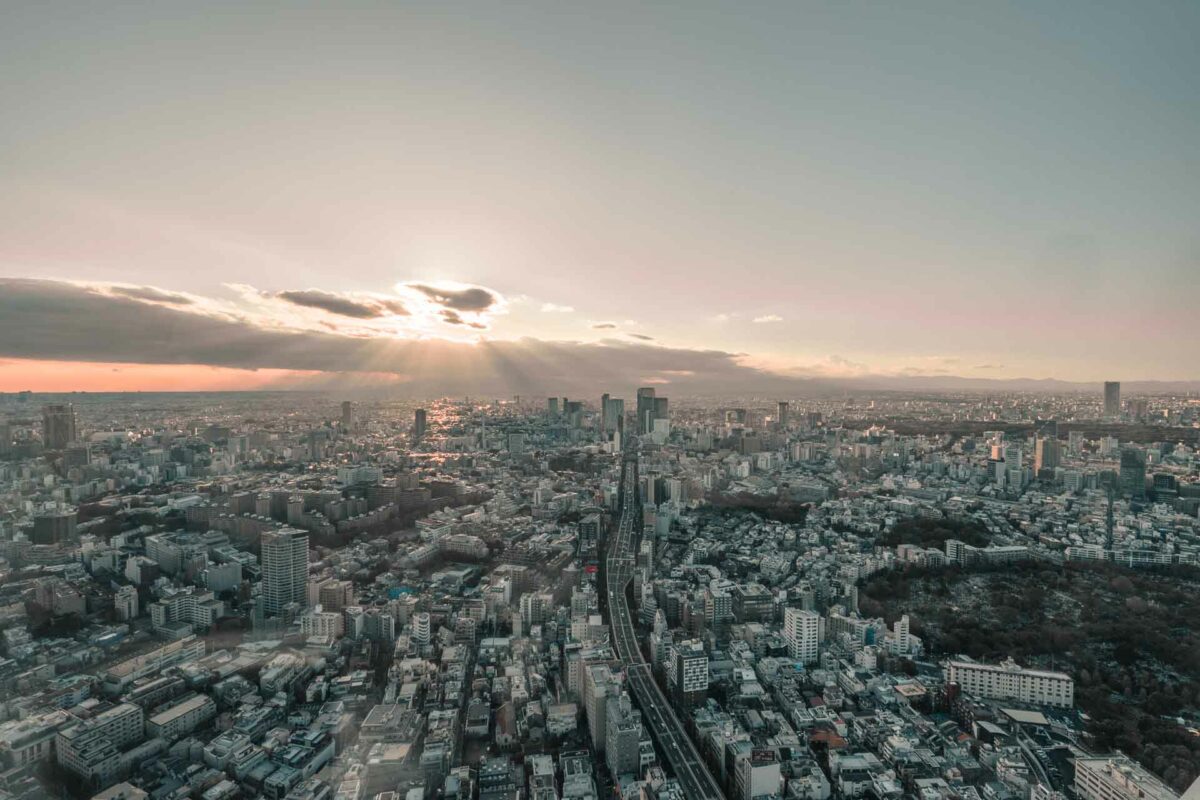
Save these pins for later
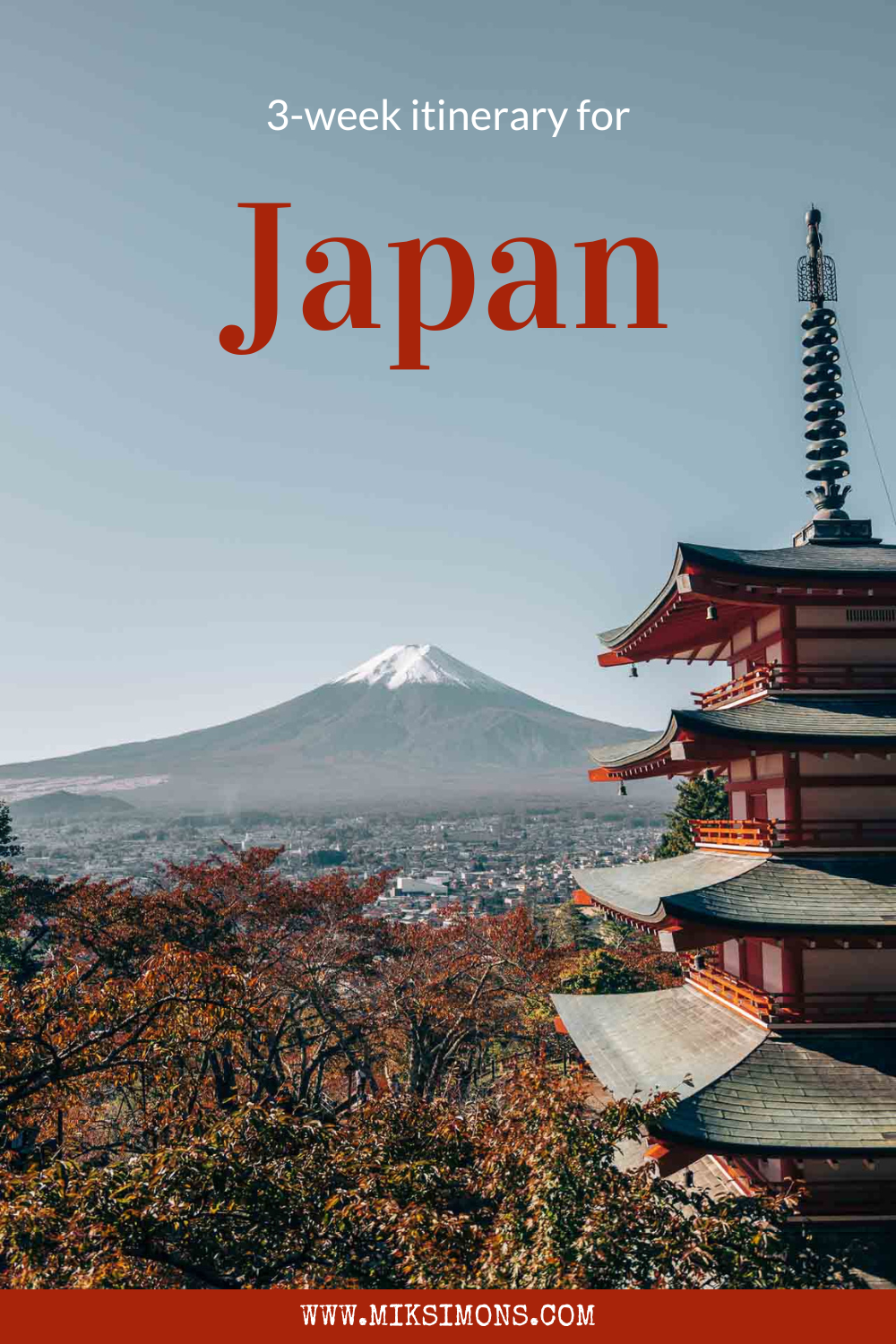
READ MORE ARTICLES ABOUT JAPAN
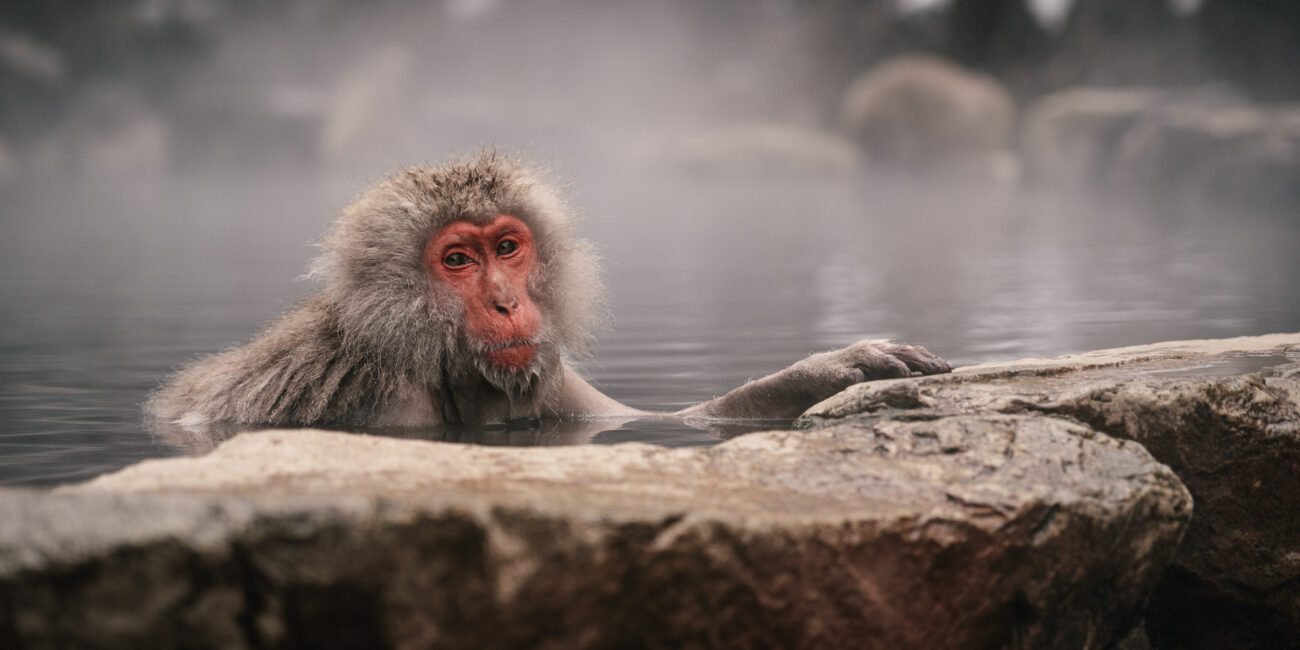
Jigokudani monkey park: the most famous hot spring with monkeys in Japan
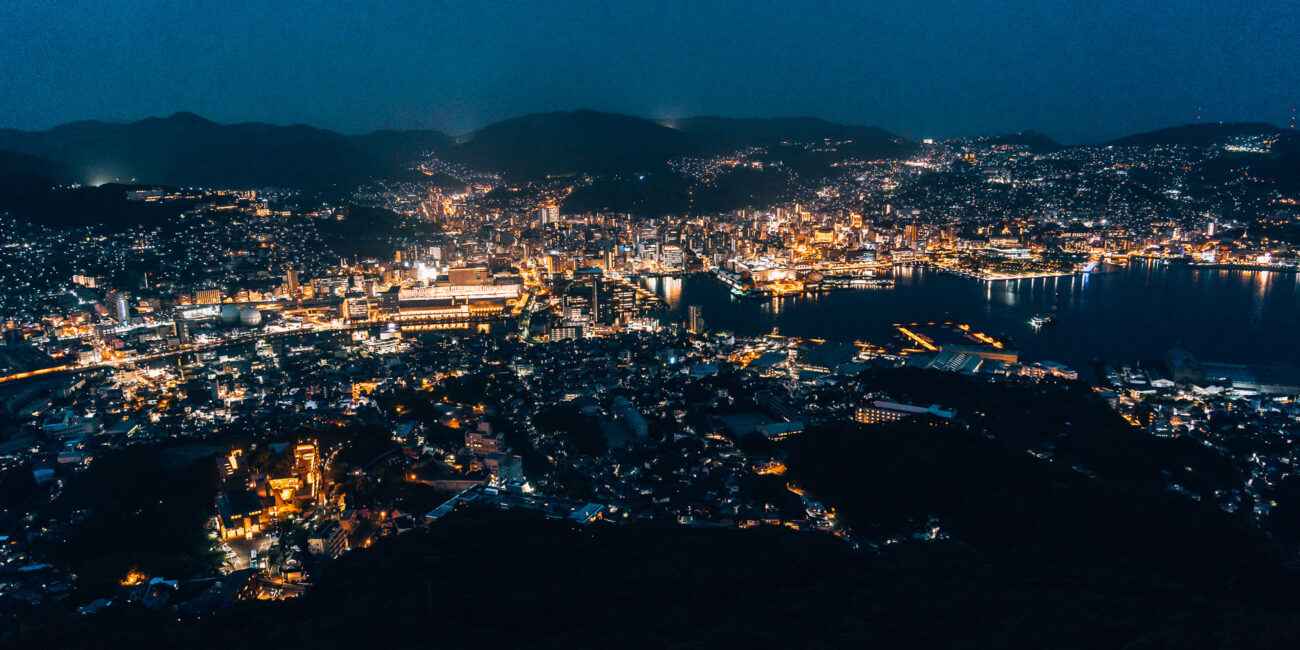
The perfect Nagasaki itinerary: things to do in Nagasaki in 3 days
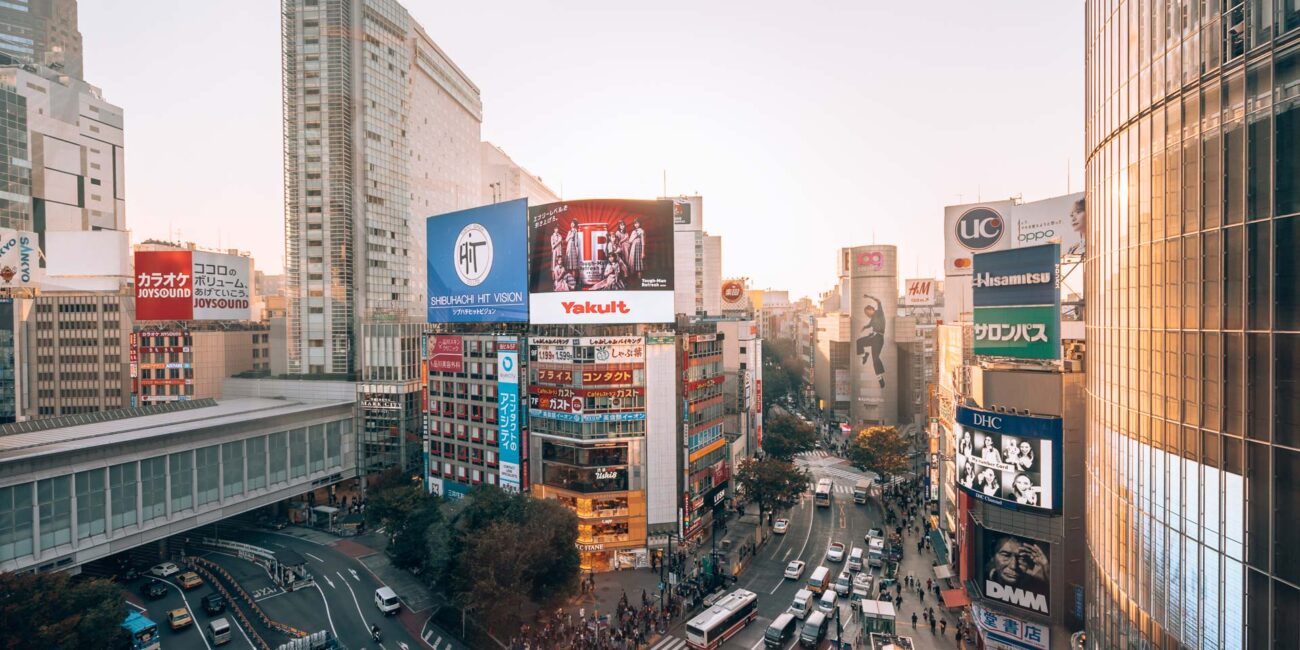
The best 5-day Tokyo itinerary – Tokyo guide
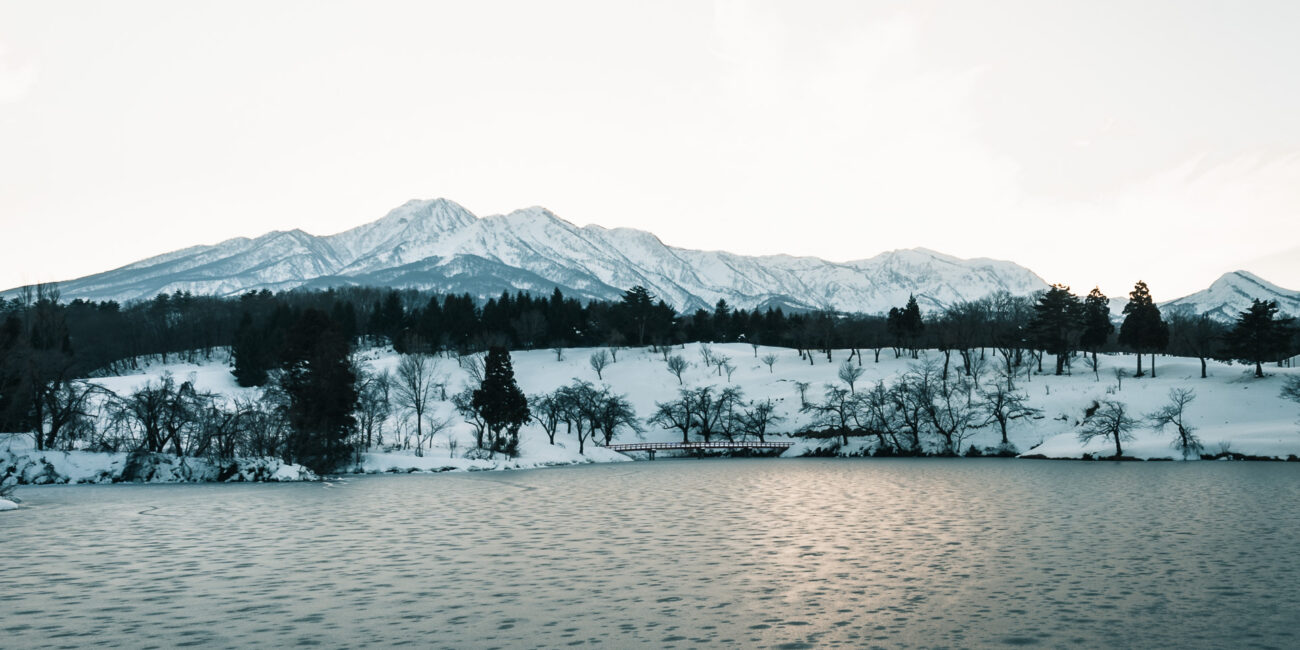
Winter in Japan road trip: the best of the Chubu region in 7 days
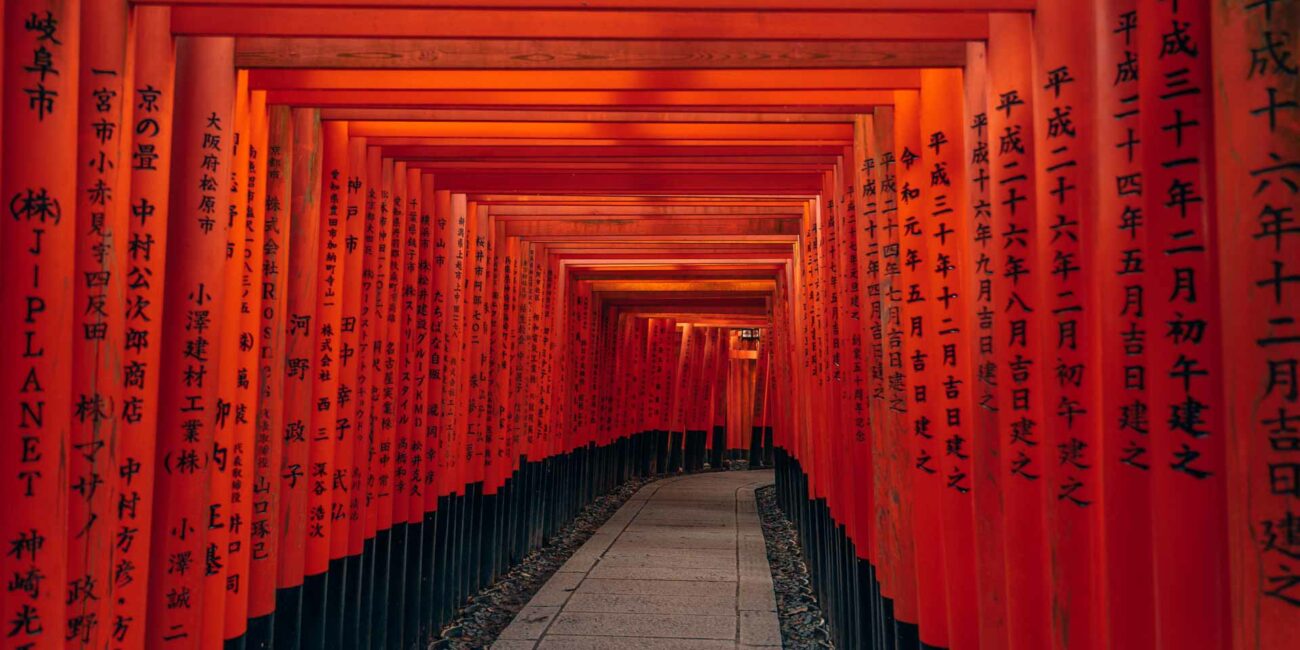
How much does a trip to Japan Cost? Japan on a budget
Plan your itinerary for japan with my favorite travel apps.
To plan my adventures, I use these FREE websites and apps as they provide the best information, the best deals, and they are user-friendly.
- Trip – Flight deals
- Booking.com – Hotels and accommodation
- TourRadar – Group trips
- TripAdvisor – Reviews and activities
- HostelWorld – Hostels
- GetYourGuide – Activities and excursions
- RentalCars – Car rental
- Omio – Transport
- iVisa – Travel documents
- Wise – Money transfer
- InsuredNomads – Travel Insurance
PICTURES AND EDITING
All the pictures on this page are made and owned by me. If you are interested in some pictures to use for your magazine, website, blog, or any other purpose, just send me an email and we’ll figure it out.
Do you like the edits? My Presets will be online soon so you can edit your pictures in just one click!
The camera gear I used for this trip
I never go out without my camera and many people ask me which gear I use. So to make it quite easy, I listed all the gear I used for this trip below.
Most of the time, I travel with the Sony A7III and the Sony 24-105mm/f4 as my primary lens but depending on the location, I change to another setup. However, I love the Tamron 17-28 to shoot in the big cities.
- SONY 24-105mm/f4
- TAMRON 17-28mm/f2.8
- TAMRON 70-180mm/f2.8
- SIGMA 24mm/1.4
- DJI MAVIC PRO 2
- WANDRD PRVKE TRAVEL BAG
Related Posts
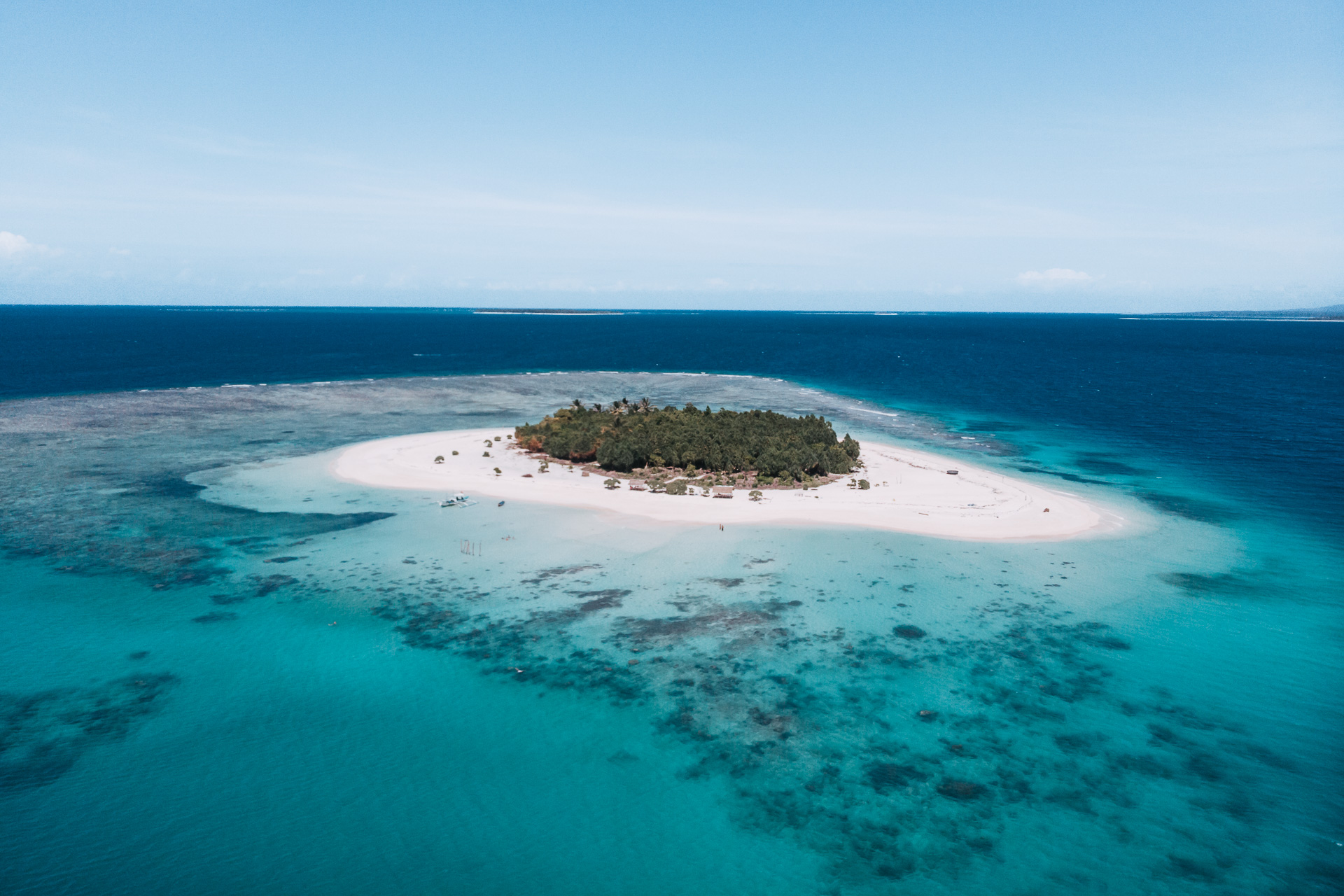
Balabac Palawan: The perfect 4-day adventure in the Philippines
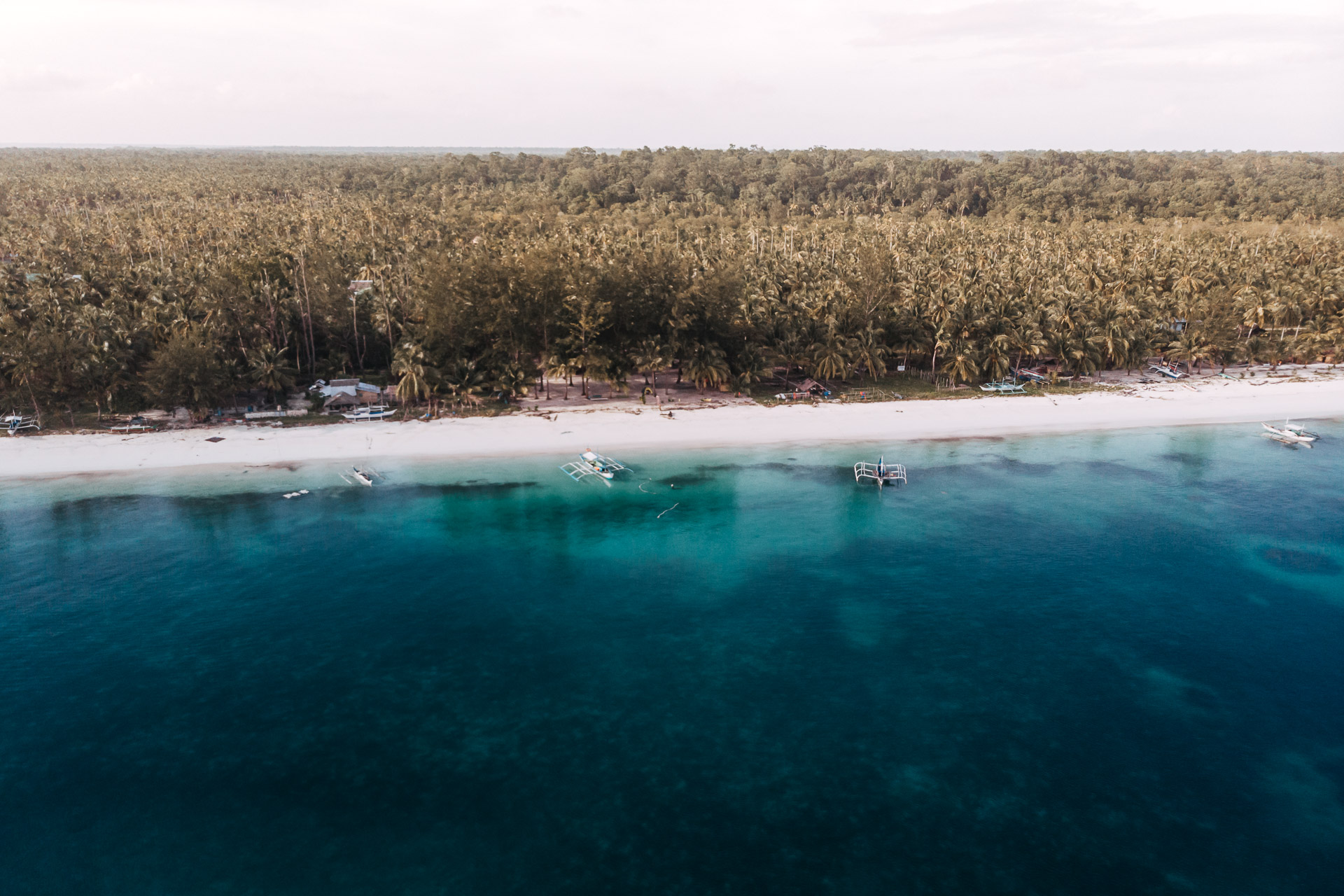
The perfect 3 week philippines itinerary
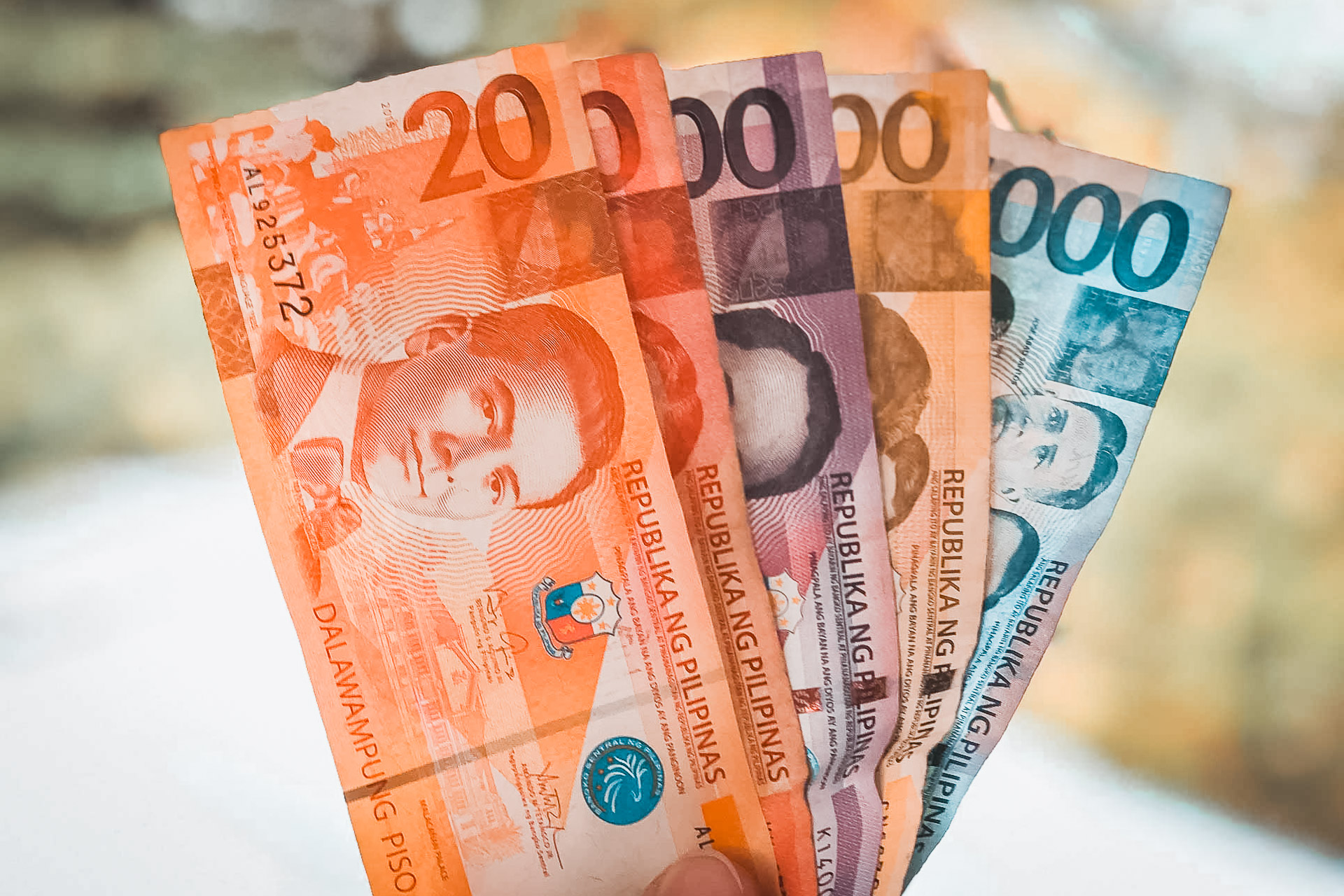
Travel the Philippines on a budget: Complete cost breakdown
Post a comment cancel reply.
Save my name, email, and website in this browser for the next time I comment.

Unforgettable 7 Day Japan Itinerary (2024)
R eady to dive into a whirlwind 7 day Japan itinerary that promises a blend of tradition, modernity, and breathtaking landscapes? From the electrifying streets of Tokyo to the serene temples of Kyoto and the gastronomic delights of Osaka, I have crafted a journey based on my personal experience that packs the essence of Japan into one unforgettable week.
*Disclosure: This post may contain affiliate links, which means we may receive a commission if you click a link and purchase something we have recommended. Please check out our disclosure policy for more details. Thank you for your support!
Your 7 Day Japan Itinerary
This itinerary isn’t just about ticking off the sights. It’s about immersing yourself in the rhythm of Japanese life. From samurai stories to the future of technology, and yes, lots of sushi, get ready for a truly unique adventure.
Day 1: Tokyo – Urban Exploration and Neon Lights
How to travel to tokyo.
Your 7 day Japan itinerary will likely start at Narita International Airport. From the airport, the quickest way to central Tokyo is the Narita Express train (N’EX), which takes about an hour. Just ask anyone at the airport train station for directions.
Another easy option is the Limousine Bus service that runs both to and from Narita and Haneda airports.
Best places to stay in Tokyo
Choosing where to stay in Tokyo offers a glimpse into the city’s diverse character. Shibuya and Shinjuku offer vibrant nightlife and bustling streets, making them perfect for those looking to dive into Tokyo’s dynamic energy.
For a more serene atmosphere with a touch of traditional charm, Asakusa hosts cozy stays near historical sites. Alternatively, Roppongi stands out for art lovers and night owls, offering upscale accommodations and a lively scene. Here are some of our favorite Tokyo hotels for families .
Things to do in Tokyo on Day 1
- Visit Senso-ji Temple in Asakusa: Start your exploration in the tranquil surroundings of Tokyo’s oldest temple, Senso-ji. Walking through the iconic Kaminarimon Gate and browsing the stalls of Nakamise Street is a wonderful introduction to Japanese culture.
- Cross Shibuya Crossing: Witness the organized chaos of Shibuya Crossing, one of the most photographed spots in Tokyo. The nearby statue of Hachiko, the loyal dog, adds a bit of nostalgia to this bustling area.
- Explore Harajuku: Dive into the heart of Tokyo’s youth and fashion culture in Harajuku. Takeshita Street is a kaleidoscope of trendy shops, cafes, and colorful street food. It reflects the vibrant and eccentric styles that define the area.
- Enjoy the Views from the Tokyo Metropolitan Government Building: Head to Shinjuku to visit the Tokyo Metropolitan Government Building. Its observation decks offer stunning panoramic views of the city. This is a perfect spot to watch the sunset over Tokyo. (This is a great option if you don’t want to pay for Shibuya Sky , Tokyo Tower, or Tokyo Skytree ).
- Dine in Omoide Yokocho: Conclude your day in the nostalgic alleys of Omoide Yokocho. This cozy corner of Shinjuku is famous for its tiny yakitori stalls and izakayas. These offer a taste of Tokyo’s culinary traditions in an intimate setting.
Day 2: Tokyo – Cultural Dive and Tech Wonders
On Day 2, we delve deeper into Tokyo’s fascinating blend of tradition and futuristic innovation. This day is about experiencing the culture and technology that defines this city.
Things to do in Tokyo on Day 2
- Meiji Shrine Morning Visit: Start with a peaceful visit to the Meiji Shrine, nestled in a lush forest. This shrine offers a tranquil contrast to Tokyo’s urban energy, perfect for a reflective morning.
- Harajuku’s Takeshita Street: After the shrine, head back to Harajuku to explore Takeshita Street more leisurely. This street buzzes with youthful fashion, unique shops, and colorful treats, showcasing Tokyo’s vibrant pop culture.
- Imperial Palace East Gardens: Midday, visit the Imperial Palace East Gardens . These gardens offer a quiet retreat with well-kept lawns, scenic paths, and historical sites, in the city center.
- Akihabara’s Tech and Anime Hub: Spend your afternoon in Akihabara, Tokyo’s electric town. Here you can immerse yourself in its world of electronics, anime, and manga. This is one of the best things to do in Tokyo with kids . It’s a must-visit for tech lovers and fans of Japanese pop culture.
- Evening in Odaiba: Conclude your day in Odaiba, enjoying its futuristic vibe, entertainment options, and bay views. The island is a perfect spot for an evening stroll, dining, and enjoying panoramic views of Tokyo’s skyline.
Day 3: Hakone and Mount Fuji – Nature’s Majesty
How to get to hakone.
No 7 day Japan itinerary is complete without seeing Mt Fuji! While it is a popular day trip from Tokyo , we recommend making time for an overnight in the area. Your gateway to Hakone begins aboard the Odakyu Limited Express “Romancecar” from Shinjuku Station in Tokyo. This comfortable and direct route takes you to Hakone-Yumoto in approximately 85 minutes, offering picturesque views along the way.
Investing in the Hakone Free Pass is recommended for those planning extensive exploration. This pass not only covers your round trip between Tokyo and Hakone but also grants unlimited access to various forms of transportation within Hakone. It includes buses, ropeways, and boats, making your travels within this scenic area both easy and cost-effective.
Best places to stay in Hakone
Choosing to stay in Hakone will allow you more time to explore this enchanting region. Hakone Yumoto, serving as the gateway to the area, is renowned for its welcoming hot spring hotels and ease of access. This makes it a popular choice for many visitors.
For a touch of luxury nestled in nature, Gora offers upscale ryokan with private onsen and breathtaking mountain vistas.
Alternatively, the area around Lake Ashi is a peaceful getaway. Some accommodations boast views of Mount Fuji, making for a picturesque retreat.
Things to do in Hakone and Mount Fuji
- Visit Owakudani Valley to see its active sulfur vents and enjoy the unique experience of eating eggs boiled in its naturally hot waters, said to extend one’s life.
- Take the Hakone Ropeway for stunning panoramic views of the surrounding mountains and a chance to see Mount Fuji on clear days.
- Enjoy a Lake Ashi Cruise aboard a pirate ship, offering a unique perspective of Hakone’s natural beauty and, weather permitting, views of Mount Fuji.
- Explore the Hakone Shrine, nestled on the shores of Lake Ashi. Its iconic torii gate offers one of Hakone’s most picturesque scenes, seemingly floating on the water.
- If time allows, visit the Hakone Open Air Museum, where art and nature merge beautifully, featuring impressive sculptures and artwork in an outdoor setting that highlights the area’s scenic landscapes.
Our Favorite
Mt fuji and hakone tours.
- Full Day Trip to Hakone with Lake Ashi Cruise via Context Travel
- Mt Fuji, Hakone, and Lake Ashi Private Day Tour via Viator
- Private Mt Fuji Charter with Driver via GetYourGuide
- Mt Fuji and Hakone Private Day Tour via Tours By Locals
Day 4: Kyoto – Time Travel to Ancient Japan
How to get to kyoto.
The journey from Hakone to Kyoto can be seamlessly made by Shinkansen (bullet train). First, take a train from Hakone-Yumoto to Odawara Station, and from there, board the Shinkansen to Kyoto.
The total travel time is approximately 2 to 3 hours, allowing you to transition smoothly from the natural landscapes of Hakone to the historic ambiance of Kyoto.
Best Places To Stay in Kyoto
Gion, the city’s geisha district, offers a stay right in the heart of traditional Japan, where the evening streets are lit by paper lanterns and wooden machiya houses.
For those who prefer the hustle and bustle of the city with a modern twist, the Downtown Kyoto area around Shijo-Kawaramachi is perfect, with its convenient access to shops, restaurants, and major sightseeing spots.
Alternatively, Arashiyama in the western part of the city is a haven for nature lovers. This area offers a more secluded stay close to the famous Bamboo Grove and other natural sites.
Things To Do in Kyoto on the First Day
- Visit Fushimi Inari Shrine, famous for its thousands of vermilion torii gates that trail through the mountain, creating a mesmerizing path that’s both spiritual and photogenic.
- Explore Kinkaku-ji (Golden Pavilion), a Zen Buddhist temple that is one of Kyoto’s most iconic sights, with its top two floors covered in gold leaf shining over a reflecting pond.
- Stroll through the Arashiyama Bamboo Grove, an otherworldly forest that offers a tranquil and awe-inspiring walking experience. (Arashiyama was one of our favorite places to visit in Kyoto with teens ).
- Experience the tranquility of Ryoan-ji, known for its karesansui (dry landscape) rock garden, which embodies the essence of Zen Buddhism.
- Wander around Gion, Kyoto’s famous geisha district, in the evening. The area’s traditional wooden machiya houses and exclusive ochaya (teahouses) provide a glimpse into the old Kyoto lifestyle.
Day 5: Kyoto – The Heart of Tradition
Things to do in kyoto on your second day.
- Kiyomizu-dera Temple: Start your day with a visit to this historic temple, famous for its wooden stage that offers stunning views of the cherry and maple trees below, as well as the city of Kyoto.
- Nijo Castle: Explore the opulent Nijo Castle, renowned for its beautiful architecture, intricate interiors, and the Nightingale Floors designed to sing at the slightest touch to warn of intruders.
- Philosopher’s Path: Take a stroll along the Philosopher’s Path, a cherry tree-lined canal that provides a peaceful setting for reflection and is especially beautiful during the cherry blossom season.
- Ginkaku-ji (Silver Pavilion): Visit Ginkaku-ji, a Zen temple that, despite its name, is not adorned in silver but is renowned for its beautiful sand gardens and moss-covered grounds.
- Pontocho Alley: Conclude your day with an evening wander through Pontocho Alley, one of Kyoto’s most atmospheric dining areas. This narrow lane is filled with traditional tea houses, restaurants, and bars offering a glimpse into Kyoto’s vibrant nightlife. A must do for any 7 day Japan itinerary.
Day 6: Nara – Amongst Deer and Temples
How to get to nara.
You can take the JR Nara Line from Kyoto Station directly to Nara Station, with the journey taking about 45 minutes to an hour.
Alternatively, the Kintetsu Kyoto Line offers a slightly faster route from Kyoto to Kintetsu Nara Station, taking about 35 to 50 minutes. Both options drop you near Nara’s main attractions.
Best Places To Stay in Nara
Nara’s accommodations provide traditional and modern options, primarily located around Nara Station and Naramachi, the old merchant district.
Staying near Nara Park offers easy access to many of the city’s historical sites and the chance to wake up close to the serene natural beauty and the deer that call it home.
Things To Do in Nara
- Todai-ji Temple: Visit this iconic temple, home to the Great Buddha (Daibutsu), one of the largest bronze statues in the world. The temple complex and its massive gate are impressive sights that showcase the grandeur of ancient Nara.
- Nara Park: Wander through Nara Park, famous for its hundreds of freely roaming deer. Considered messengers of the gods in Shinto religion, these deer have become a symbol of the city and a must-see for visitors.
- Kasuga-taisha Shrine: Explore the serene Kasuga-taisha Shrine, known for its thousands of stone lanterns that line the path to the shrine, as well as the hundreds of bronze lanterns within. The shrine is a beautiful example of Shinto architecture and tradition.
- Naramachi: Stroll through the historic Naramachi district, where you can explore traditional merchant houses, quaint shops, and cafes. This area provides a glimpse into old Nara’s daily life and culture.
- Isuien Garden: End your day with a visit to Isuien Garden, a beautiful example of Japanese landscape gardening. With its carefully designed ponds, bridges, and tea houses, Isuien offers a peaceful retreat and a perfect spot for contemplation and relaxation.
Day 7: Osaka – Culinary Adventure and Urban Excitement
How to get to osaka.
From Nara, you can take the JR Yamatoji Line directly from JR Nara Station to JR Osaka Station, with the journey taking about 50 minutes to an hour.
Alternatively, the Kintetsu Nara Line offers service from Kintetsu Nara Station to Osaka’s Namba Station, a trip that also takes around 40 minutes. Both routes provide a seamless transition to the lively atmosphere of Osaka.
Best Places To Stay in Osaka
- Namba/Dotonbori: For those looking to dive straight into the heart of Osaka’s renowned food scene and nightlife, staying in the Namba or Dotonbori area is ideal. This district is bustling with energy, offering easy access to street food, restaurants, and entertainment options.
- Umeda: Situated around Osaka Station, Umeda is another great area to stay, known for its shopping, dining, and modern architecture. It’s conveniently located for exploring the city and offers a range of accommodation options.
- Shin-Osaka: For travelers needing quick access to the Shinkansen for day trips or onward travel, Shin-Osaka is practical. It provides efficient connections without sacrificing the convenience of city amenities.
Things To Do in Osaka
- Osaka Castle: Start your day with a visit to Osaka Castle, one of Japan’s most famous landmarks. The castle park is especially beautiful during cherry blossom season, and it is sure to be a hit if you’re visiting Osaka with kids . The museum inside offers a deep dive into Osaka’s history.
- Dotonbori: This vibrant area is famous for its neon lights, extravagant signage, and diverse street food options, including takoyaki (octopus balls) and okonomiyaki (savory pancakes).
- Shinsaibashi Shopping Arcade: Explore the Shinsaibashi Shopping Arcade, a covered shopping street that stretches for several blocks and offers everything from high-end fashion to unique souvenirs.
- Umeda Sky Building: For panoramic views of Osaka, visit the Umeda Sky Building. The floating garden observatory on the 39th floor offers a 360-degree view of the city, making it a perfect spot for photography enthusiasts.
- Kuromon Ichiba Market: End your day at the Kuromon Ichiba Market, where you can sample fresh seafood, street food, and local specialties. It’s an ideal place to enjoy the flavors of Osaka and pick up some last-minute gifts or souvenirs.
The Quickest And Cheapest Way To Travel In Japan: The Bullet Train
Japan’s Shinkansen, or bullet train, is the epitome of fast and efficient travel, offering an unmatched combination of speed, economy, and comfort. It is even faster and more cost-effective than flying. The network stretches across the country, linking major cities and tourist destinations with speed.
With trains departing frequently and stations centrally located, the Shinkansen is an ideal choice for transportation during your 7 day Japan itinerary.
The JR Pass
The Japan Rail (JR) Pass is a powerful tool for tourists, offering unlimited travel on most Shinkansen trains and other JR services for a fixed period (7, 14, or 21 days). This pass not only simplifies travel across Japan but also significantly reduces costs for those looking to explore multiple regions.
Purchasable exclusively by foreign tourists BEFORE arriving in Japan, the JR Pass is an investment that pays dividends in both convenience and savings.
Its benefits extend beyond the Shinkansen, covering local trains, buses, and even some ferries, ensuring a comprehensive travel solution across Japan’s diverse landscapes.
Best Time Book Your 7 Day Japan Itinerary
The ideal times to embark on your 7 day Japan adventure are during the spring (March to May) for the cherry blossoms and autumn (September to November) for the vibrant fall colors. These seasons offer stunning natural backdrops and pleasant weather, enhancing your travel experience.
- Spring is famous for its cherry blossoms, creating picturesque scenes across cities like Tokyo and Kyoto. Due to its popularity, it’s wise to book accommodations and travel arrangements well in advance.
- Autumn impresses with its cool weather and colorful foliage, perfect for outdoor activities and temple visits.
For fewer crowds and potential savings, consider late spring or early autumn. Planning your trip 3-6 months ahead can secure better deals and ensure a smoother experience, regardless of the season you choose.
Tips For Traveling In Japan
- Public Transportation Mastery: Japan’s public transport system is world-class, punctual, and extensive. Familiarize yourself with local train and bus schedules, and consider purchasing a PASMO or SUICA card for convenient tap-and-go travel in major cities. You can find more information about this in our Japan travel tips .
- Respect Local Customs: Japanese culture values etiquette highly. Simple gestures like removing your shoes before entering someone’s home or a temple, bowing as a greeting, and being mindful of noise levels on trains can go a long way in showing respect.
- Language Barrier: While major cities often have English signs and speakers, venturing off the beaten path might present language challenges. Learning a few basic Japanese phrases or having a translation app can enhance your experience and interactions.
- Connectivity: Stay connected with a portable Wi-Fi router or a Japanese SIM card , especially useful for navigating, translating, and accessing timetables on the go.
- Mind the Seasons: Weather can significantly impact your travel experience. From the humid summers to the snowy winters, pack accordingly. Be aware of seasonal variations that might affect your plans, such as typhoon season in late summer and early autumn.
- Exploration Beyond the Cities: While cities like Tokyo, Kyoto, and Osaka are must-visits, Japan’s charm also lies in its rural landscapes, onsen towns, and mountain retreats. Allow time to explore beyond the urban environments.
- Cash is King: Despite its high-tech reputation, many places in Japan still prefer cash transactions. This is especially common in rural areas, smaller establishments, and temples. Always carry a sufficient amount of yen to cover your expenses.
Budget For Your 7 Day Japan Itinerary
Planning your budget for a 7-day trip to Japan will involve considering various expenses to ensure an enjoyable yet affordable experience. Here’s a brief overview:
Accommodation: Choose from a range of budget-friendly options, including hostels, guesthouses, and capsule hotels. Prices typically range from ¥3,000 to ¥8,000 per night.
Transportation: Consider investing in a Japan Rail Pass (JR Pass) for unlimited travel between cities. A JR Pass will cost about ¥50,000 for 7 days of unlimited travel.
Food: Enjoy affordable meals at local eateries like izakayas and noodle shops. We recommend budgeting around ¥3,000 to ¥6,000 per day for food.
Activities: Budget for additional expenses such as entrance fees to attractions and cultural experiences based on your interests.
Miscellaneous: Allocate funds for souvenirs, snacks, and unforeseen expenses to ensure a stress-free journey.
Total Spend:
Depending on your preferences and travel style, budgeting approximately ¥90,000 to ¥150,000 per person for the entire 7-day itinerary should cover accommodation, transportation, food, activities, and miscellaneous expenses. Adjustments may be needed based on individual preferences and priorities.
FAQs: 7 Day Japan Itinerary
Is 7 days enough for japan.
While 7 days may seem short, it’s sufficient to experience the highlights of Japan, especially if you focus on specific regions or cities. Consider prioritizing your must-see attractions to make the most of your time.
What is better, Osaka or Kyoto?
Both Osaka and Kyoto offer unique experiences. Osaka is known for its lively food scene, modern architecture, and vibrant nightlife. Kyoto is renowned for its historical temples, traditional tea houses, and serene gardens. Consider visiting both cities to enjoy the contrast between modernity and tradition.
Can I get around without speaking Japanese?
It is possible to navigate Japan without speaking Japanese, especially in major tourist areas and transportation hubs. Here you will find English signage and English-speaking staff are common.
Learning a few basic Japanese phrases such as greetings and polite expressions can enhance your travel experience and interactions with locals.
Is Japan very expensive to visit?
Japan can be relatively expensive, especially in major cities like Tokyo and Kyoto. However, there are plenty of budget-friendly options available, including affordable accommodations, inexpensive dining options like ramen shops and convenience stores, and economical transportation passes such as the Japan Rail Pass. With careful planning and budgeting, you can enjoy Japan without breaking the bank.
Do I need a visa to enter Japan?
Citizens of many countries can enter Japan for tourism purposes without a visa for short stays (usually up to 90 days). However, visa requirements vary depending on your nationality and the purpose of your visit.
Check the visa requirements for your country on the official website of the Ministry of Foreign Affairs of Japan before traveling to Japan.
What are the best seasons to visit Japan?
The best seasons to visit Japan are spring (March to May) and autumn (September to November). Spring offers cherry blossoms (sakura) in full bloom, mild temperatures, and vibrant festivals such as hanami (flower viewing) celebrations.
Autumn boasts stunning fall foliage (koyo), pleasant temperatures, and fewer crowds, making it ideal for outdoor activities and scenic hikes.
What are the top 5 things to do in Japan?
- Explore the historic temples, shrines, and gardens of Kyoto, including Kinkaku-ji (Golden Pavilion) and Fushimi Inari Taisha.
- Experience the bustling streets and lively markets of Tokyo, including Shibuya Crossing, Tsukiji Outer Market, and Senso-ji Temple in Asakusa.
- Visit Hiroshima’s Peace Memorial Park and Museum to learn about the city’s tragic history and promote peace and reconciliation.
- Discover the natural beauty of Hakone and soak in an onsen (hot spring) while enjoying views of Mount Fuji.
- Indulge in Osaka’s culinary delights, including okonomiyaki (Japanese savory pancake), takoyaki (octopus balls), and street food in Dotonbori.
Conclusion: 7 Day Japan Itinerary
Crafting this 7 day Japan itinerary reminded me of how amazing it was to experience the country’s rich culture, history, and natural beauty. Whether we were exploring Tokyo’s streets, immersing in Kyoto’s ancient traditions, or savoring Osaka’s culinary delights, each day brought new unbelievable adventures.
Embrace the serene moments in temples, marvel at Mount Fuji’s beauty, and indulge in urban energy. With 7 days, create lasting memories amid cherry blossoms in spring, fiery autumn foliage, or unique festivals.
As you bid farewell, carry Japan’s warmth, traditions, and unforgettable experiences with you. You will find yourself planning your second trip to Japan not long after, just like we did!
More Posts You Might Like from this author
17 Interesting F acts About Nicaragua
9 Best National Parks in Nicaragua
Cost of Living in Nicaragua
About the author: Warren Morelli is a seasoned traveler, digital nomad, and the creative mind behind The Nomad Hive . Together with his partner Natasha, they have been exploring the world for over 8 years, documenting their adventures and sharing valuable insights with their audience. With a passion for discovering hidden gems and off-the-beaten-path destinations, Warren and Natasha offer practical tips, honest advice, and captivating stories to inspire fellow travelers to embark on their own journeys.
The post Unforgettable 7 Day Japan Itinerary (2024) appeared first on Kids Are A Trip™ .

- Colorado Tourism
- Colorado Hotels
- Colorado Bed and Breakfast
- Colorado Vacation Rentals
- Flights to Colorado
- Colorado Restaurants
- Things to Do in Colorado
- Colorado Travel Forum
- Colorado Photos
- All Colorado Hotels
- Colorado Hotel Deals
- Last Minute Hotels in Colorado
- Things to Do
- Restaurants
- Vacation Rentals
- Travel Stories
- Rental Cars
- Add a Place
- Travel Forum
- Travelers' Choice
- Help Center
road trip for weeks - Colorado Forum
- United States
- Colorado (CO)
road trip for weeks
- United States Forums
- Europe Forums
- Canada Forums
- Asia Forums
- Central America Forums
- Africa Forums
- Caribbean Forums
- Mexico Forums
- South Pacific Forums
- South America Forums
- Middle East Forums
- Honeymoons and Romance
- Business Travel
- Train Travel
- Traveling With Disabilities
- Tripadvisor Support
- Solo Travel
- Bargain Travel
- Timeshares / Vacation Rentals
- United States forums
- Colorado forum

and another state in September. I will have my dad with us so maybe something that is good for all of us (he is 70 and can't walk to far). We like state parks, waterfalls, hot spring.
6 replies to this topic

What's your question?

Lora, are you wanting us to help plan an itinerary for you? Sorry, but we are volunteers who mainly respond to questions from people who have already done some of their own research.
And read through the many posts here from people planning trips similar to yours.
for some ideas
https://www.visitparkcity.com/
2) drive to Capitol Reef National Park - perhaps stay at Capitol Reef Resort
https://capitolreefresort.com/
3) Drive to Moab - see Canyonlands, Arches, Dead Horse Point - stay two nights
https://www.discovermoab.com/
4) Drive to Glenwood springs - enjoy the hot springs there
https://visitglenwood.com/
5) Drive to Estes Park - stay 2 to 3 days and see Rocky Mountain National Park
https://www.visitestespark.com/plan/visitor-guide/
6) Drive to Cheyenne
https://www.cheyenne.org/
7) Drive and see Devil's Tower
https://www.earthtrekkers.com/devils-tower/
https://www.devilstowerlodge.com/
8) Drive to Casper - see the Trails Museum
https://www.visitcasper.com/plan-your-trip/vacation-guide/
9) Drive to Cody, Wyoming
https://www.codychamber.org/visit-cody/
10) Gardiner, Montana
https://www.visitgardinermt.com/home
11) then three nights Yellowstone
12) One night Jackson - Grand Tetons
13) Drive back to Salt Lake City
just some ideas for now.
I saw another post on the road trips forum that said mid September can be a bit late for Yellowstone area because it starts snowing so you might put that bit first. You have to book lodging for the Wyoming parks and Glacier very far in advance. RMNP and Arches and a few other popular attractions require timed entry reservations.
The weather is usually fine in Colorado in September. The last two weeks are peak fall foliage so it’s actually one of the busiest times to visit. If you came during foliage, the recommendations might be different than early September to focus on places with lots of aspens.
This site lays out a fairly good road trip through Colorado. https://www.travelandleisure.com/trip-ideas/road-trips/colorado-road-trip-itinerary I would add Maroon Bells and Black Canyon to their list and remove Royal Gorge. While you probably couldn’t see everything on the list, it gives you an idea of some of the top places to see and an order.

Here's a link for the Road Trips Forum: https://www.tripadvisor.com/ShowForum-g1-i12567-Road_Trips.html
There will be plenty of sightseeing that won't require long walks.
One thing you need to consider is how far you want to drive in a day, and whether you like to do a little sightseeing and some driving each day. or whether you prefer a modified road trip where you choose some main destinations and spend two or three nights in each location, linked by scenic drives. The first option lets you cover lots of miles and see a little bit of a lot. The second option may have a few longer drives but lets you stay a full day or two (or three?) in each main location. We've done both.
- Early May in Vail? 11:39 pm
- side x side trips and mining 11:36 pm
- Taking the bus to the Maroon Bells shuttle 11:35 pm
- One day with no tours 10:27 pm
- Which rental car company denver with best lines? 10:25 pm
- Pikes Peak and Gardens of the Gods 6:21 pm
- Beginner ski areas for kids in town 6:05 pm
- Mid-Sept 10 day trip yesterday
- January lodging yesterday
- Itinerary question yesterday
- Which of these hikes to prioritize and in which order? Apr 03, 2024
- Estes Park similar to Moab? Apr 03, 2024
- Colorado Family Trip - July Apr 03, 2024
- Colorado Road trip help Apr 03, 2024
- best places to visit in colorado 30 replies
- Best place to ski for beginners? 10 replies
- Most romantic places to stay in Colorado 6 replies
- summer vacation for family 13 replies
- Denver to Mt rushmore distance 8 replies
- Best place to ski in Late January/ February? 9 replies
- Mountain towns near Denver 12 replies
- Looking for All Inclusive Family Friendly Ski Resort 7 replies
- Itinerary ideas for Colorado vacation in July 2011 17 replies
- Winter Park, Breckenridge, or Vail for March 2013 ski trip 9 replies
Colorado Hotels and Places to Stay
- What to do in Colorado? (updated 9/2023)
- What Craft Breweries to visit? (Updated 9/2023)
- What is the Colorado Traction & Chain Law?
- What about the altitude/Altitude sickness?
- Can you tell me about guest ranch vacations in Colorado?
- What about Mine Tours and Mining Museums?
- Autumn trip reports
- Are there guided tours around the state?
- Colorado Marijuana Information
- Trip Reports
- Can you please describe the San Juan Skyway/Million $ Hwy/Red Mtn. Pass in SW CO?
- What is the Peak to Peak Highway like?
- What kind of rental car do I need & are there places I should not drive a rental car?
- What are the roads like, and what do I need to know about driving in Colorado?
- Winter Driving Tips
- In Winter do I need a 4 Wheel Drive Vehicle in Colorado?
- How to Save On Rental Cars
- Can I get to Rocky Mountain National Park without a car?
- What is the I-70 toll lane?
- Traveling with pets
- How to drive in CO

I spent years considering van life and finally embarked on a 2-week trip last fall. 5 months later, I'm still dreaming of the lifestyle.
- The concept of van life has intriqued me for years.
- I've interviewed dozens of nomads who encouraged others to try van life with shorter trips.
- I did just that. After two weeks in a van, I still dream of living on the road.

Last summer, I stepped outside my dew-covered tent in Bryce Canyon National Park after a night of tossing and turning.
Before I could process the vibrant sunset, the first thought that crossed my mind was how the knots in my back wouldn't exist if I had slept on a mattress.
The spring before that, I woke up sweaty at the Coachella Valley Music and Arts Festival , craving a Glacier Freeze Gatorade that spent all night cooling in a fridge.
Sandwiched between those nights in tents are countless early-morning hikes and late nights stargazing, where I wished the comforts of my home were feet away instead of miles away.
Those desires could be answered with van life — especially since the version of van life I saw scrolling on Instagram and TikTok seemed to fit my outdoorsy lifestyle.
While not everyone who lives in their car does it by choice — vehicular homelessness is on the rise across the United States — there is a growing population of people who choose to live out of cars, vans, and RVs. Fueled by the pandemic and rising costs of living , more people are trading their houses and apartments for vehicles. In fact, Allied Market Research reported that the global RV market was valued at $57.3 billion in 2021 and could reach $117 billion by 2031.
Last October, it was my turn to test out the lifestyle.
Instead of diving head-first into the lifestyle, I gave it a test drive
Since becoming a reporter at Business Insider, I've profiled dozens of nomads living in RVs, vans, travel trailers, and tiny homes on wheels .
Interview after interview, conversation after conversion, one piece of advice constantly popped up.
"I would recommend trying to rent a van for at least a week or two," Maddy Garrett , a 25-year-old who moved into a Subaru Outback and recently upgraded to a Ram ProMaster, previously told BI. "After that, it's like, 'OK, I know I can do this.'"
The lifestyle has its downsides — bathrooms and campsites can be tough to find, people can struggle to find community, and not everyone is built to live in a state of flux.
For some, the positives outweigh the negatives. For others, the advantages don't come out on top.
As someone who has a habit of romanticizing everyday tasks like neighborhood walks and grocery shopping, a test run felt required before uprooting my life and emptying my bank account.
Last summer, I began planning a two-week trip in a campervan. Two weeks was enough time to test out camping in RV resorts, on public land, and in parking lots outside Cracker Barrel and Walmart .
I could grocery shop and cook meals while balancing long days driving with isolated days hiking.
Related stories
I knew two weeks wasn't enough to experience every aspect of van life. For example, my biggest hesitation is a fear of getting lonely on the road — which is something I knew I wouldn't face in a two-week period.
But I hoped two weeks could give me insight into whether it would be a lifestyle I could explore more in the future.
I rented a Ram ProMaster for two weeks and covered six states
As I eyed different campervan rental companies, Native Campervans caught my eye. The rental company has four locations, with a hub in Denver. This meant I wouldn't need to fly during my trip.
Plus, the company's vans were what I dreamed of when I pictured van life. I rented a Ram ProMaster, and at about 75 square feet , it was plenty of space for one person while still being small enough to fit in an everyday parking spot.
In October, the rental company handed over a set of keys. I was visiting an array of destinations — deserts, mountains, forests, and cities — and I packed for each place. Plus, I had my outdoor gear and grocery shopped at Costco days before. Simply put, I had overpacked.
Seeing my nearly dozen bags fit in the van with space to spare eliminated my first fear of van life — that there wouldn't be enough space to live. I decided I could manage full-time with 75 square feet.
After I unpacked, I climbed into the front seat and set off toward New Mexico.
For the next two weeks, I explored America's Southwest. I drove through small mountain towns, sat in traffic in major cities like Las Vegas, and discovered remote campsites on public land .
I fell in love with the freedom the van gave me. If I was hungry, I pulled over and made breakfast. If I was tired, I found a quiet place to nap. If I was itching for a hike, all I had to do was pull up a map and find a place to explore.
I saw striking landscapes that I could've never seen on a weekend trip from Denver. I met fascinating people who were eager to share their life stories. And I discovered more about myself.
I dropped off my van and left with more interest in the lifestyle
After romanticizing the lifestyle for so long, my biggest fear with the trip was that it'd extinguish my longing for van life.
If anything, it did the opposite.
I arrived back home exhausted and with some lessons learned. I never need to travel that fast again — six states in two weeks is about five states too many, in my opinion.
Cooking extravagant meals and baking will be hobbies I leave behind if I do live a nomadic life — I haven't seen many vans equipped with ovens.
And I still fear I'll get lonely after spending months bopping from location to location.
But beyond that, I experienced the appeal so many describe, and I'm eager to try it out again. This time, though, I might leave my apartment for a month or two.
Watch: How one couple turned their pickup truck into a DIY camper
- Main content

IMAGES
VIDEO
COMMENTS
It's a world on its own and spending three weeks in Japan is a perfect amount to get a good impression of what this country is all about. This 3 week Japan itinerary will hopefully help you plan a trip to Japan - or inspire you to finally book those flights! From Tokyo to Miyajima Island, let's dive in! In this guide.
Days 7-8: Nagano. Days 9-12: Kanazawa, Takayama and Shirakawa-go. Days 13-17: Kyoto (daytrips to Nara and Arashiyama) Days 18-19: Hiroshima. Days 20-21: Osaka, depart from Kansai International Airport. Tokyo is the top city for entering Japan as its international flights offer the most options.
Day 1-4 Tokyo: Visit Shibuya, the Imperial Palace, Yoyogi Park, the Sensoji temple, Harajuku, Asakusa, and the neighborhood around the Skytree. Day 5: Matsumoto: Visit the Samurai castle and explore the small streets. Day 6-7 Yudanaka: Go watch the snow monkeys and relax in one of the many local onsens.
23. Take a ferry ride to Miyajima. Before ending your 3-week itinerary in Japan, make sure to get in your tiny dose of the island of Miyajima, a 30-minute train ride from Hiroshima, a 5-minute walk to the ferry, and then a pleasant 15-minute ferry ride to the island.
This means spring in Japan for 3 weeks should be between the third week of March and the second week of April. Day 1-3: spend this time exploring Tokyo, getting a train/subway ticket or passing local money, and enjoying the capital, where you can visit many places such as Yayoi Kusama Museum and Senso-ji.
Complete Japan 3 week itinerary, day-by-day guide including costs, things to do, where to stay, where to eat and getting around for: DAYS 1-5: Tokyo. Options for day trips from Tokyo. DAY 6: Nagano. DAY 7: Matsumoto. DAYS 8-9: Takayama. Options for day trips from Takayama. DAYS 10-11: Kanazawa. DAYS 12-15: Kyoto.
3. Shared Private Transfer. Convenient & drop off directly to your hotel! Travel tip: Personally I think you should use your JR Pass when you are leaving Tokyo to the next city instead of activating it right away since there are many cheaper ways to get to the city from the airport. With that you can plan a Japan 3 weeks trip by getting a 14-day JR Pass instead of the 21-day Pass and keeping ...
Day 16: Miyajima & Momijidani Park. Dedicate a day on your Japan 3 week itinerary to the beauty of tradition after your emotionally gruelling day yesterday! Itsukushima Island, or Miyajima, is home to the vibrant Itsukushima Shrine. Take a ferry over and look for its giant floating torii gate - get your cameras ready.
1.4 How to get around in Japan. 2 Where to Go With 3 Weeks in Japan. 2.1 Greater Tokyo. 2.2 Kyoto, Osaka and the Kansai region. 2.3 Setouchi. 2.4 Hokuriku and the Japanese Alps. 2.5 Tohoku. 2.6 Hokkaido. 2.7 Kyushu.
Useful Resources. We put together a wealth of resources for your trip to Japan. Here's what you need to know. Start with this complete guide to planning a trip to Japan.; Learn what to pack for Japan, to have a comfortable trip.; I recommend purchasing a Japan Rail Pass for 21 days to make the most of your 3 weeks in Japan itinerary. It does save you money and hassle, so we believe it's a ...
Your budget for your 3 weeks in Japan will of course depend on what type of traveler you are. And we can only share our experience as two mid-range travelers. As you can see from the calculations above, transportation in Japan is pretty expensive. At time of publication, a 21-day JR Pass costs 60,450 JPY (~$557).
Last week: visiting Kyoto. I suggest completing your Japan 3 week itinerary through Hakone, returning to pick up your luggage, and then transferring in Odawara for the 3-hour Shinkansen bullet train to Kyoto. Bus to Nijo Castle, the Golden Pavilion, and the Kyoto Imperial Palace (on Sat. Sun. & national holidays, visit Higashi Honganji Temple ...
Entry to Kids Plaza is 1400 yen ($15.25 AUD) for adults, 800 yen ($8.70 AUD) for school kids and 500 yen ($5.45 AUD) for preschoolers. Kids under 3 are free. Travel to Hiroshima. We then said goodbye to Osaka and left for Hiroshima, the last destination of our 3 weeks in Japan itinerary.
The right Japan travel itinerary for 3 weeks will allow you to experience a bit of everything. WWB Writer Alea has created an epic 3 week Japan itinerary which includes the must-see highlights, while also exploring some off-the-beaten-track places: Day 1 - 4: Tokyo. Day 5 - 6: Lake Kawaguchiko at The Five Fuji Lakes.
6. The Noto Peninsula drive. Best road trip for dramatic coastal seascapes. Takaoka - Kanazawa; 236km (147 miles), 1-2 days. From the picture-perfect sunrise of Amaharashi Beach to the bracing coastline of Ishikawa Prefecture, this road trip will take you past some of Japan's finest coastal scenery.
The super SIM card to buy for your backpacking Japan trip. If you land at Tokyo's Haneda airport, like us, make sure you head to the Bic Camera store on the third floor of arrivals and buy a B-Mobile 21 Days Visitor SIM. This SIM card is perfect for a 3 week trip to Japan: mobile internet access done in one.
1. 3 weeks in Japan - MAP. Places included on this itinerary: Nagasaki -> Hiroshima -> Osaka -> Nara -> Kyoto -> Mount Fuji -> Tokyo -> Nagano -> Matsumoto -> Tokyo. 2. Budget. Let's face it - when planning a trip, the budget is very important. You need to know what to expect or else you'll end up breaking the bank.
Best 3 Week (21 Days) Japan Travel Itineraries 2024/2025 - TourRadar. Looking for the perfect three-week Japan itinerary? Whether you want to visit during cherry blossom season or explore the country by train, we've got plenty of ideas to help you plan your trip.
All our Japan itineraries, day trips and road trips. Curated itineraries and day trips we tried and tested in Japan. ... Japan 3 week itinerary. 07 Mar 2024 ... Day trip to Himeji Japan. 07 Mar 2024 ...
Tokyo - 3 Days. Tokyo is Japan's bustling capital city. It is a unique and startling mix of the ancient and the modern. It is the perfect place to begin your 3 Week itinerary Japan. Land at the Narita International Airport and begin your trip. Take the train to Shinjuku station.
Here are some of our top picks. Roller Coaster Road, Hokkaido. The breathtaking northernmost island in Japan is worth driving around for a few days. Sapporo, the capital, hosts an annual snow festival and has previously hosted the Winter Olympics. The best feature for drivers, however, is the undulating carriageway in Furano, which has earned ...
If you have a driver's license in Japan, taking a road trip is one of the best way to enjoy the beautiful scenery. Check out 10 of the best road trips you can take in Japan! ... When is Golden Week in Japan 2024?: Travel Tips for Long Weekends. 2021.04.13 2024.04.02. 15 Popular Japanese Clothing Stores.
In this itinerary for Japan, I will take you on my journey through this amazing country with the best tips and useful information. I visited the most awesome places like Tokyo, Mount Fuji, Kyoto, Osaka, and some traditional villages such as Takayama during these 3 weeks in Japan and it was just incredible! This Japan itinerary contains a map of ...
Asia - Japan 3 weeks April 2025 Itinerary - Hello Fodor's Friends. I am asking for your help with planning a 3 week itinerary to Japan beginning on April 5, 2025. We will be extending this Japan ...
How to travel to Tokyo. Your 7 day Japan itinerary will likely start at Narita International Airport. From the airport, the quickest way to central Tokyo is the Narita Express train (N'EX ...
Ask a question. Travel preparations for 3 weeks in August 10:52 am. Suica e-card to a UK Samsung/Android 10:43 am. Which apps are the best for planning routes in Kyoto? 10:04 am. Minor entering Japan with only one parent 9:54 am. Strict Vegetarian food in Tokyo and Kyoto 9:40 am. Norita vs Haneda 9:36 am.
2 reviews. road trip for weeks. Apr 2, 2024, 7:56 PM. Save. We would like to take a 2- or 3-week road trip to Colorado, Utah and Wyoming or maybe Wyoming, Montana. and another state in September. I will have my dad with us so maybe something that is good for all of us (he is 70 and can't walk to far). We like state parks, waterfalls, hot spring.
I spent years considering van life and finally embarked on a 2-week trip last fall. 5 months later, I'm still dreaming of the lifestyle. Monica Humphries 2024-03-21T19:25:43Z